
Financial reporting developments
A comprehensive guide
Revenue from
contracts with
customers
(ASC 606)
September 2023

To our clients and other friends
Accounting Standards Codification (ASC or Codification) 606 provides accounting guidance for all revenue
arising from contracts with customers to provide goods or services (unless the contracts are in the scope
of other US GAAP topics, such as those for leases). The standard, which is largely converged with the
revenue recognition guidance in IFRS, also provides a model for the measurement and recognition of
gains and losses on the sale of certain nonfinancial assets, such as property and equipment, including
real estate (see our Financial reporting developments (FRD) publication, Gains and losses from the
derecognition of nonfinancial assets (ASC 610-20)).
This FRD publication summarizes the US GAAP standard, including all amendments issued to date, as well
as the guidance in ASC 340-40 on accounting for costs an entity incurs to obtain and fulfill a contract to
provide goods and services to customers (see section 9.3). It addresses topics on which the members of
the Transition Resource Group for Revenue Recognition (TRG) reached general agreement and discusses
our views on certain topics, including those that are based on our understanding of the views of the
Financial Accounting Standards Board (FASB or Board) and/or its staff and the staff of the Securities and
Exchange Commission (SEC).
The FASB’s post-implementation review (PIR) of the standard is ongoing and includes evaluating the
standard’s effectiveness and identifying areas for improvement. As part of this process, the Board directed
its staff to perform research, outreach and education on certain key topics, including principal versus
agent considerations, consideration payable to a customer, licensing and variable consideration. At a
Board meeting in September 2022, the Board discussed the staff’s research and asked its staff to continue
to monitor the costs and benefits of ASC 606. We encourage readers to monitor developments.
Our Technical Lines, Effects of inflation and rising interest rates on financial reporting and Accounting
and reporting considerations for the war in Ukraine, discuss the potential accounting and financial
reporting implications of inflation, rising interest rates, the war in Ukraine, the sanctions on Russia and
any related effects. Revenue recognition areas that may be affected include variable consideration,
contract modifications and terminations, a measure of progress based on expected costs, collectibility
and any extended payment terms, changes to selling prices, and loss contracts.
Our industry-specific publications (listed in Appendix F) highlight key aspects of applying the standard.
We encourage preparers and users of financial statements to read this publication and the industry
supplements carefully and consider the effects of the standard.
We expect to periodically update our guidance. The views that we express in this publication may
continue evolving as application issues are identified for new and emerging transactions and discussed
among stakeholders. Appendix A summarizes significant changes since the previous edition.
September 2023

Financial reporting developments Revenue from contracts with customers (ASC 606) | i
Contents
1 Overview ................................................................................................................... 1
1.1 Overview ............................................................................................................................... 1
1.1.1 Core principle of the standard ........................................................................................ 2
1.1.2 Executive summary of the five-step revenue model (updated September 2022) .............. 2
1.1.3 Other recognition and measurement topics (updated September 2022) ........................... 7
2 Scope ........................................................................................................................ 9
2.1 Other scope considerations (updated September 2023)......................................................... 10
2.1.1 Nonmonetary exchanges ............................................................................................. 10
2.2 Definition of a customer ....................................................................................................... 11
2.3 Collaborative arrangements ................................................................................................. 12
2.4 Interaction with other guidance (updated September 2022) ................................................... 14
3 Identify the contract with the customer..................................................................... 21
3.1 Attributes of a contract ........................................................................................................ 22
3.1.1 Parties have approved the contract and are committed to perform their
respective obligations .................................................................................................. 26
3.1.2 Each party’s rights regarding the goods or services to be transferred can be identified ... 26
3.1.3 Payment terms can be identified for the goods or services to be transferred .................. 26
3.1.4 Commercial substance ................................................................................................ 27
3.1.5 Collectibility ................................................................................................................ 27
3.2 Contract enforceability and termination clauses (updated September 2023) ........................... 34
3.3 Combining contracts ............................................................................................................ 41
3.3.1 Portfolio approach practical expedient ......................................................................... 42
3.4 Contract modifications (updated September 2023) ............................................................... 43
3.4.1 Contract modification represents a separate contract ................................................... 51
3.4.2 Contract modification is not a separate contract ........................................................... 52
3.5 Arrangements that do not meet the definition of a contract under the standard ...................... 59
4 Identify the performance obligations in the contract .................................................. 63
4.1 Identifying the promised goods and services in the contract (updated September 2022) ...... 64
4.1.1 Promised goods or services that are immaterial in the context of a contract ................... 74
4.1.2 Shipping and handling activities (updated September 2023) .......................................... 75
4.2 Determining when promises are performance obligations..................................................... 77
4.2.1 Determination of distinct ............................................................................................. 79
4.2.1.1 Capable of being distinct .................................................................................... 80
4.2.1.2 Distinct within the context of the contract ........................................................... 81
4.2.2 Series of distinct goods or services that are substantially the same and
that have the same pattern of transfer ......................................................................... 91
4.2.3 Examples of identifying performance obligations .......................................................... 98
4.3 Promised goods and services that are not distinct................................................................ 107
4.4 Principal versus agent considerations (updated September 2022) ........................................ 107
4.4.1 Identifying the specified good or service (updated September 2022) ........................... 110
4.4.2 Control of the specified good or service (updated September 2022) ............................ 113
4.4.2.1 Principal indicators (updated September 2022)................................................. 116
Contents
Financial reporting developments Revenue from contracts with customers (ASC 606) | ii
4.4.3 Recognizing revenue as a principal or agent ............................................................... 120
4.4.4 Examples (updated September 2022) ........................................................................ 122
4.5 Consignment arrangements ............................................................................................... 133
4.6 Customer options for additional goods or services ............................................................... 133
4.7 Sale of products with a right of return ................................................................................. 148
5 Determine the transaction price.............................................................................. 150
5.1 Presentation of sales (and other similar) taxes (updated September 2022) ........................... 152
5.2 Variable consideration ....................................................................................................... 153
5.2.1 Forms of variable consideration ................................................................................. 154
5.2.1.1 Implicit price concessions ................................................................................. 158
5.2.2 Estimating variable consideration .............................................................................. 161
5.2.3 Constraining estimates of variable consideration ........................................................ 166
5.2.4 Reassessment of variable consideration ..................................................................... 175
5.3 Refund liabilities ................................................................................................................ 176
5.4 Rights of return ................................................................................................................. 176
5.5 Significant financing component ......................................................................................... 181
5.5.1 Examples .................................................................................................................. 186
5.5.2 Financial statement presentation of financing component ............................................... 194
5.6 Noncash consideration ....................................................................................................... 195
5.7 Consideration paid or payable to a customer (updated September 2022) ............................. 199
5.7.1 Forms of consideration paid or payable to a customer ................................................. 202
5.7.2 Classification and measurement of consideration paid or payable to a
customer (updated September 2023) ........................................................................ 203
5.7.3 Timing of recognition of consideration paid or payable to a customer
(updated September 2023) ....................................................................................... 207
5.8 Nonrefundable up-front fees .............................................................................................. 211
5.9 Changes in the transaction price ......................................................................................... 213
6 Allocate the transaction price to the performance obligations .................................. 214
6.1 Determining standalone selling prices (updated September 2023) ........................................ 215
6.1.1 Factors to consider when estimating the standalone selling price ................................. 217
6.1.2 Possible estimation approaches ................................................................................. 218
6.1.3 Updating estimated standalone selling prices (updated September 2023) .................... 222
6.1.4 Additional considerations for determining the standalone selling price ......................... 222
6.1.5 Measurement of options that are separate performance obligations ............................ 225
6.2 Applying the relative standalone selling price method ............................................................. 229
6.3 Allocating variable consideration ........................................................................................ 232
6.4 Allocating a discount .......................................................................................................... 240
6.5 Changes in transaction price after contract inception (updated September 2023) ................. 244
6.6 Allocation of transaction price to elements outside the scope of the standard ....................... 247
7 Satisfaction of performance obligations .................................................................. 249
7.1 Performance obligations satisfied over time (updated September 2023) .............................. 250
7.1.1 Customer simultaneously receives and consumes benefits as the entity performs ............ 252
7.1.2 Customer controls the asset as it is created or enhanced............................................. 255
7.1.3 Asset with no alternative use and right to payment ..................................................... 256
7.1.4 Measuring progress (updated September 2022) ......................................................... 269
7.1.4.1 Output methods ............................................................................................... 273
7.1.4.2 Input methods.................................................................................................. 275
Contents
Financial reporting developments Revenue from contracts with customers (ASC 606) | iii
7.1.4.3 Examples (updated September 2022) ............................................................... 278
7.2 Control transferred at a point in time (updated September 2022) ......................................... 283
7.2.1 Customer acceptance ................................................................................................ 288
7.3 Repurchase agreements .................................................................................................... 291
7.3.1 Forward or call option held by the entity ..................................................................... 292
7.3.2 Put option held by the customer ................................................................................ 295
7.3.3 Sales with residual value guarantees .......................................................................... 298
7.4 Consignment arrangements ............................................................................................... 299
7.5 Bill-and-hold arrangements ................................................................................................ 300
7.6 Recognizing revenue for licenses of intellectual property ..................................................... 303
7.7 Recognizing revenue when a right of return exists ............................................................... 303
7.8 Recognizing revenue for customer options for additional goods and services ........................ 304
7.9 Breakage and prepayments for future goods or services (updated September 2023) ............ 304
8 Licenses of intellectual property ............................................................................. 309
8.1 Identifying performance obligations in a licensing arrangement ............................................ 310
8.1.1 Licenses of intellectual property that are distinct ........................................................ 310
8.1.2 Licenses of intellectual property that are not distinct .................................................. 313
8.1.3 Contractual restrictions ............................................................................................. 314
8.1.4 Guarantees to defend or maintain a patent ................................................................. 317
8.2 Determining the nature of the entity’s promise in granting a license ..................................... 321
8.2.1 Functional intellectual property.................................................................................. 321
8.2.2 Symbolic intellectual property .................................................................................... 325
8.2.3 Evaluating functional versus symbolic intellectual property ......................................... 327
8.2.4 Applying the licenses guidance to a bundled performance obligation that
includes a license of intellectual property ................................................................... 329
8.3 Transfer of control of licensed intellectual property ............................................................. 331
8.3.1 Right to access.......................................................................................................... 332
8.3.2 Right to use .............................................................................................................. 333
8.3.3 Use and benefit requirement...................................................................................... 333
8.4 License renewals ............................................................................................................... 334
8.5 Sales- or usage-based royalties on licenses of intellectual property
(updated September 2023) ................................................................................................ 336
9 Other measurement and recognition topics ................................................................... 351
9.1 Warranties ........................................................................................................................ 351
9.1.1 Determining whether a warranty is a service- or assurance-type warranty ................... 351
9.1.2 Service-type warranties ............................................................................................. 355
9.1.3 Assurance-type warranties ........................................................................................ 356
9.1.4 Contracts that contain both assurance- and service-type warranties ............................ 357
9.2 Loss contracts ................................................................................................................... 359
9.3 Contract costs ................................................................................................................... 360
9.3.1 Costs to obtain a contract (updated September 2022) ................................................ 361
9.3.2 Costs to fulfill a contract (updated September 2022) .................................................. 368
9.3.3 Amortization of capitalized contract costs .................................................................. 378
9.3.4 Impairment of capitalized contract costs .................................................................... 386
Contents
Financial reporting developments Revenue from contracts with customers (ASC 606) | iv
10 Presentation and disclosure (updated September 2022) .......................................... 389
10.1 Presentation requirements for contract assets and contract liabilities
(updated September 2022) ................................................................................................ 390
10.2 Presentation requirements for revenue from contracts with customers
(updated September 2022) ................................................................................................ 399
10.3 Other presentation considerations ...................................................................................... 401
10.3.1 Regulation S-X presentation requirements ................................................................. 402
10.4 Annual disclosure requirements .......................................................................................... 402
10.5 Disclosures for public entities ............................................................................................. 403
10.5.1 Contracts with customers .......................................................................................... 405
10.5.1.1 Disaggregation of revenue ............................................................................... 405
10.5.1.2 Contract balances ............................................................................................ 409
10.5.1.3 Performance obligations .................................................................................. 411
10.5.2 Significant judgments ................................................................................................ 418
10.5.2.1 Determining the timing of satisfaction of performance obligations ..................... 419
10.5.2.2 Determining the transaction price and the amounts allocated to
performance obligations ................................................................................... 420
10.5.3 Assets recognized for the costs to obtain or fulfill a contract ....................................... 420
10.5.4 Practical expedients .................................................................................................. 421
10.6 Disclosures for nonpublic entities ........................................................................................ 422
10.6.1 Contracts with customers .......................................................................................... 423
10.6.1.1 Disaggregation of revenue ............................................................................... 423
10.6.1.2 Contract balances ............................................................................................ 425
10.6.1.3 Performance obligations .................................................................................. 426
10.6.2 Significant judgments ................................................................................................ 428
10.6.2.1 Determining the timing of satisfaction of performance obligations ..................... 429
10.6.2.2 Determining the transaction price and the amounts allocated to
performance obligations ................................................................................... 429
10.6.3 Assets recognized for the costs to obtain or fulfill a contract ....................................... 430
10.6.4 Practical expedients .................................................................................................. 431
10.7 Interim disclosure requirements (updated September 2022) ................................................ 432
A Summary of important changes ............................................................................... A-1
B Index of ASC references used in this publication ....................................................... B-1
C Guidance abbreviations used in this publication ........................................................ C-1
D List of examples included in ASC 606 and ASC 340-40, and references in
this publication ....................................................................................................... D-1
E TRG discussions and references in this publication .................................................... E-1
F Industry publications ............................................................................................... F-1
G Glossary ................................................................................................................. G-1
H Summary of differences from IFRS .......................................................................... H-1

Contents
Financial reporting developments Revenue from contracts with customers (ASC 606) | v
Notice to readers:
This publication includes excerpts from and references to the Financial Accounting Standards Board
(FASB or Board) Accounting Standards Codification (Codification or ASC). The Codification uses a
hierarchy that includes Topics, Subtopics, Sections and Paragraphs. Each Topic includes an Overall
Subtopic that generally includes pervasive guidance for the Topic and additional Subtopics, as needed,
with incremental or unique guidance. Each Subtopic includes Sections that in turn include numbered
Paragraphs. Thus, a Codification reference includes the Topic (XXX), Subtopic (YY), Section (ZZ) and
Paragraph (PP).
Throughout this publication references to guidance in the Codification are shown using these reference
numbers. References are also made to certain pre-Codification standards (and specific sections or
paragraphs of pre-Codification standards) in situations in which the content being discussed is excluded
from the Codification.
This publication has been carefully prepared, but it necessarily contains information in summary form
and is therefore intended for general guidance only; it is not intended to be a substitute for detailed
research or the exercise of professional judgment. The information presented in this publication should
not be construed as legal, tax, accounting, or any other professional advice or service. Ernst & Young LLP
can accept no responsibility for loss occasioned to any person acting or refraining from action as a result
of any material in this publication. You should consult with Ernst & Young LLP or other professional
advisors familiar with your particular factual situation for advice concerning specific audit, tax or other
matters before making any decisions.
Portions of FASB publications reprinted with permission. Copyright Financial Accounting Standards Board, 801 Main Avenue,
P.O. Box 5116, Norwalk, CT 06856-5116, USA. Portions of AICPA Statements of Position, Technical Practice Aids and other AICPA
publications reprinted with permission. Copyright American Institute of Certified Public Accountants, 1345 Avenue of the Americas,
27
th
Floor, New York, NY 10105, USA. Copies of complete documents are available from the FASB and the AICPA.

Financial reporting developments Revenue from contracts with customers (ASC 606) | 1
1 Overview
1.1 Overview
The revenue recognition standard
1
provides accounting guidance for all revenue arising from contracts with
customers and affects all entities that enter into contracts to provide goods or services to their customers
(unless the contracts are in the scope of other US GAAP requirements, such as those for leases). The FASB
included more than 60 examples in the standard to illustrate how an entity might apply the guidance. We list
them in Appendix D to this publication and provide references to where certain examples are included in
this publication. The standard also refers to guidance in ASC 340-40 for the accounting for costs an entity
incurs to obtain and fulfill a contract to provide goods and services to customers (see section 9.3) and
provides a model for the measurement and recognition of gains and losses on the sale of certain nonfinancial
assets, such as property and equipment, including real estate (see our FRD, Gains and losses from the
derecognition of nonfinancial assets (ASC 610-20)).
The TRG, which was formed to help determine whether more guidance was needed to address implementation
questions and to educate constituents, included financial statement preparers, auditors and other users from
a variety of industries, countries, and public and private entities. TRG members’ views are non-authoritative,
but entities should consider these views as they apply the standard. The SEC’s former Chief Accountant
encouraged entities to consult with the Office of the Chief Accountant (OCA) if they are considering
applying the guidance in a way that is different from what TRG members generally agreed on.
2
We have
incorporated our summaries of topics on which TRG members generally agreed throughout this publication
(also see Appendix E for a listing of all TRG discussions and where they are discussed in this publication).
The FASB staff has compiled publicly available TRG memos and other educational resources previously issued
on the implementation of ASC 606 into a document called Revenue Recognition Implementation Q&As
(FASB staff Q&As). The staff’s objective in compiling this material, which is organized by subject matter
(e.g., step of the revenue model), was to make the available educational resources easier to navigate and
not to issue any new implementation guidance. We refer to the Q&As throughout this publication.
We also continue to monitor discussions by the IFRS Interpretations Committee (IFRS IC) on the application
of IFRS 15 (the revenue recognition standard issued by the International Accounting Standards Board
(IASB) in May 2014, which was largely converged with ASC 606)
3
because we believe that decisions made
by the IFRS IC about the application of that standard may support the same interpretation of ASC 606.
Therefore, we refer to certain IFRS IC discussions throughout this publication. Also see Appendix H for a
summary of significant differences between IFRS 15 and ASC 606.
As part of the FASB’s PIR of ASC 606, the FASB staff performed research, outreach and education on
certain key topics, including principal versus agent considerations, consideration payable to a customer,
licensing and variable consideration. In September 2022, the Board discussed the staff’s research and
asked the staff to continue to monitor the costs and benefits of ASC 606. We encourage readers to
monitor developments.
4
1
ASC 606, Revenue from Contracts with Customers (created by Accounting Standards Update (ASU) 2014-09). Throughout this
publication, when we refer to the FASB’s standard, we mean ASC 606, as amended, unless otherwise noted.
2
Remarks by Wesley R. Bricker, SEC Office of the Chief Accountant, 5 May 2016.
3
For more information on the effect of IFRS 15 for IFRS preparers, refer to our revenue chapter in International GAAP® available
in EY Atlas.
4
Refer to the Post-Implementation Review Projects page on the FASB website.

1 Overview
Financial reporting developments Revenue from contracts with customers (ASC 606) | 2
We also continue to monitor comment letters issued by the SEC staff on how registrants are applying the
revenue guidance and summarize certain of these comments throughout this publication. However, the
frequency of comments on revenue recognition peaked when registrants were adopting ASC 606 and
has continued to decline.
1.1.1 Core principle of the standard
The standard describes the principles an entity must apply to measure and recognize revenue and the
related cash flows. The core principle, as stated below, is that an entity recognizes revenue at an amount
that reflects the consideration to which the entity expects to be entitled in exchange for transferring
goods or services to a customer:
Excerpt from Accounting Standards Codification
Revenue from Contracts with Customers — Overall
Objectives
606-10-10-1
The objective of the guidance in this Topic is to establish the principles that an entity shall apply to
report useful information to users of financial statements about the nature, amount, timing, and
uncertainty of revenue and cash flows arising from a contract with a customer.
Meeting the Objective
606-10-10-2
To meet the objective in paragraph 606-10-10-1, the core principle of the guidance in this Topic is that
an entity shall recognize revenue to depict the transfer of promised goods or services to customers in
an amount that reflects the consideration to which the entity expects to be entitled in exchange for
those goods or services.
606-10-10-3
An entity shall consider the terms of the contract and all relevant facts and circumstances when
applying this guidance. An entity shall apply this guidance, including the use of any practical
expedients, consistently to contracts with similar characteristics and in similar circumstances.
Entities need to exercise judgment when considering the terms of the contract(s) and all of the facts and
circumstances, including implied contract terms. Entities have to apply the requirements of the standard
consistently to contracts with similar characteristics and in similar circumstances.
1.1.2 Executive summary of the five-step revenue model (updated September 2022)
The standard’s core revenue principle is applied using the following five steps, which are summarized below:
Step 1
Identify the contract(s) with a customer
Step 2
Identify the performance obligations in the contract
Step 3
Determine the transaction price
Step 4
Allocate the transaction price to the performance obligations in the contract
Step 5
Recognize revenue when (or as) the entity satisfies a performance obligation

1 Overview
Financial reporting developments Revenue from contracts with customers (ASC 606) | 3
Step 1
Identify the contract(s) with a customer (see section 3)
Definition of a contract
An entity must first identify the contract, or contracts, to provide goods and services to customers. A
contract must create enforceable rights and obligations to fall within the scope of the model in the
standard. Such contracts may be written, oral or implied by an entity’s customary business practices but
must also meet the following criteria:
• The parties to the contract have approved the contract (in writing, orally or based on their customary
business practices) and are committed to perform their respective obligations
• The entity can identify each party’s rights regarding the goods or services to be transferred
• The entity can identify the payment terms for the goods or services to be transferred
• The contract has commercial substance (i.e., the risk, timing or amount of the entity’s future cash
flows is expected to change as a result of the contract)
• It is probable that the entity will collect substantially all of the consideration to which it will be
entitled in exchange for the goods or services that will be transferred to the customer
If these criteria are not met, an entity would not account for the arrangement using the model in the
standard and would recognize any nonrefundable consideration received as revenue only when certain
events have occurred.
Contract combination
The standard requires entities to combine contracts entered into at or near the same time with the same
customer (or related parties of the customer) if they meet any of the following criteria:
• The contracts are negotiated as a package with a single commercial objective
• The amount of consideration to be paid in one contract depends on the price or performance of
another contract
• The goods or services promised in the contracts (or some goods or services promised in each of the
contracts) are a single performance obligation
Contract modifications
A contract modification is a change in the scope and/or price of a contract that either creates new or
changes existing enforceable rights and obligations of the parties to the contract. A contract modification
is accounted for as a new contract separate from the original contract if the modification adds distinct
goods or services at a price that reflects the standalone selling prices of those goods or services.
Contract modifications that are not accounted for as separate contracts are considered changes to the
original contract and are accounted for as follows:
• If the goods and services to be transferred after the contract modification are distinct from the
goods or services transferred on or before the contract modification, the entity should account for
the modification as if it were the termination of the old contract and the creation of a new contract.
• If the goods and services to be transferred after the contract modification are not distinct from the
goods and services already provided and, therefore, form part of a single performance obligation
that is partially satisfied at the date of modification, the entity should account for the contract
modification as if it were part of the original contract.
• A combination of the two approaches above: a modification of the existing contract for the partially
satisfied performance obligations and the creation of a new contract for the distinct goods and services.

1 Overview
Financial reporting developments Revenue from contracts with customers (ASC 606) | 4
Step 2
Identify the performance obligations in the contract (see section 4)
An entity must identify the promised goods and services within the contract and determine which of those
goods and services (or bundles of goods and services) are separate performance obligations (i.e., the unit
of accounting for purposes of applying the standard). An entity is not required to assess whether promised
goods or services are performance obligations if they are immaterial in the context of the contract.
A promised good or service represents a performance obligation if (1) the good or service is distinct (by
itself or as part of a bundle of goods or services) or (2) the good or service is part of a series of distinct
goods or services that are substantially the same and have the same pattern of transfer to the customer.
A good or service (or bundle of goods or services) is distinct if both of the following criteria are met:
• The customer can benefit from the good or service either on its own or together with other resources
that are readily available to the customer (i.e., the good or service is capable of being distinct).
• The entity’s promise to transfer the good or service to the customer is separately identifiable from
other promises in the contract (i.e., the promise to transfer the good or service is distinct within the
context of the contract).
In assessing whether an entity’s promise to transfer a good or service is separately identifiable from other
promises in the contract, entities need to consider whether the nature of the promise is to transfer each of
those goods or services individually or to transfer a combined item or items to which the promised goods or
services are inputs. Factors that indicate that two or more promises to transfer goods or services are not
separately identifiable include, but are not limited to, the following:
• The entity provides a significant service of integrating the goods or services with other goods or
services promised in the contract into a bundle of goods or services that represent the combined
output or outputs for which the customer has contracted.
• One or more of the goods or services significantly modify or customize, or are significantly modified
or customized by, one or more of the other goods or services promised in the contract.
• The goods or services are highly interdependent or highly interrelated. In other words, each of the
goods or services is significantly affected by one or more of the other goods or services in the
contract (i.e., there is a significant two-way dependency).
If a promised good or service is not distinct, an entity is required to combine that good or service with
other promised goods or services until it identifies a bundle of goods or services that is distinct.
Series guidance
Goods or services that are part of a series of distinct goods or services that are substantially the same
and have the same pattern of transfer to the customer must be combined into one performance
obligation. To meet the same pattern of transfer criterion, each distinct good or service in the series
must represent a performance obligation that would be satisfied over time and would have the same
measure of progress toward satisfaction of the performance obligation (both discussed in Step 5), if
accounted for separately.
Principal versus agent considerations
When more than one party is involved in providing goods or services to a customer, an entity must
determine whether it is a principal or an agent in these transactions by evaluating the nature of its
promise to the customer. An entity is a principal and, therefore, records revenue on a gross basis if it
controls the specified good or service before transferring that good or service to the customer. An entity
is an agent and records as revenue the net amount it retains for its agency services if its role is to

1 Overview
Financial reporting developments Revenue from contracts with customers (ASC 606) | 5
arrange for another entity to provide the specified goods or services. Because it is not always clear
whether an entity controls a specified good or service in some contracts (e.g., those involving intangible
goods and/or services), the standard also provides indicators of when an entity may control the specified
good or service as follows:
• The entity is primarily responsible for fulfilling the promise to provide the specified good or service.
• The entity has inventory risk before the specified good or service has been transferred to a customer
or after transfer of control to the customer (e.g., if the customer has a right of return).
• The entity has discretion in establishing the price for the specified good or service.
Customer options for additional goods or services
A customer’s option to acquire additional goods or services (e.g., an option for free or discounted goods
or services) is accounted for as a separate performance obligation if it provides a material right to the
customer that the customer would not receive without entering into the contract (e.g., a discount that
exceeds the range of discounts typically given for those goods or services to that class of customer in
that geographical area or market).
Step 3
Determine the transaction price (see section 5)
The transaction price is the amount of consideration to which an entity expects to be entitled in exchange
for transferring promised goods or services to a customer. When determining the transaction price,
entities need to consider the effects of all of the following:
Variable consideration
An entity needs to estimate any variable consideration (e.g., amounts that vary due to discounts, rebates,
refunds, price concessions or bonuses) using either the expected value method (i.e., a probability-weighted
amount method) or the most likely amount method (i.e., a method to choose the single most likely
amount in a range of possible amounts). An entity’s method selection is not a “free choice” and must be
based on which method better predicts the amount of consideration to which the entity will be entitled.
To include variable consideration in the estimated transaction price, the entity has to conclude that it is
probable that a significant revenue reversal will not occur in future periods. This “constraint” on variable
consideration is based on the probability of a reversal of an amount that is significant relative to cumulative
revenue recognized for the contract. The standard provides factors that increase the likelihood or
magnitude of a revenue reversal, including the following: the amount of consideration is highly susceptible
to factors outside the entity’s influence, the entity’s experience with similar types of contracts is limited or
that experience has limited predictive value, or the contract has a large number and broad range of possible
outcomes. The standard generally requires an entity to estimate variable consideration, including the
application of the constraint, at contract inception and update that estimate at each reporting date.
There are limited situations in which estimation of variable consideration may not be required.
Significant financing component
An entity needs to adjust the transaction price for the effects of the time value of money if the timing of
payments agreed to by the parties to the contract provides the customer or the entity with a significant
financing benefit. As a practical expedient, an entity can elect not to adjust the transaction price for the
effects of a significant financing component if the entity expects at contract inception that the period
between payment and performance will be one year or less.

1 Overview
Financial reporting developments Revenue from contracts with customers (ASC 606) | 6
Noncash consideration
When an entity receives, or expects to receive, noncash consideration (e.g., property, plant, and
equipment (PP&E), a financial instrument), the fair value of the noncash consideration at contract
inception is included in the transaction price.
Consideration paid or payable to the customer
Consideration payable to the customer includes cash amounts that an entity pays, or expects to pay, to
the customer, credits or other items (vouchers or coupons) that can be applied against amounts owed to
the entity or equity instruments granted in conjunction with selling goods or services. An entity should
account for consideration paid or payable to the customer as a reduction of the transaction price and,
therefore, of revenue unless the payment to the customer is in exchange for a distinct good or service.
However, if the payment to the customer exceeds the fair value of the distinct good or service received,
the entity should account for the excess amount as a reduction of the transaction price.
Step 4
Allocate the transaction price to the performance obligations in the contract (see section 6)
For contracts that have multiple performance obligations, the standard generally requires an entity to
allocate the transaction price to the performance obligations in proportion to their standalone selling prices
(i.e., on a relative standalone selling price basis). When allocating on a relative standalone selling price
basis, any discount within the contract generally is allocated proportionately to all of the performance
obligations in the contract. However, there are two exceptions.
One exception requires variable consideration to be allocated entirely to a specific part of a contract,
such as one or more (but not all) performance obligations or one or more (but not all) distinct goods or
services promised in a series of distinct goods or services that forms part of a single performance
obligation, if both of the following criteria are met:
• The terms of a variable payment relate specifically to the entity’s efforts to satisfy the performance
obligation or transfer the distinct good or service (or to a specific outcome from satisfying the
performance obligation or transferring the distinct good or service).
• Allocating the variable consideration entirely to the performance obligation or the distinct good or
service is consistent with the objective of allocating consideration in an amount that depicts the
consideration to which the entity expects to be entitled in exchange for transferring the promised
goods or services to the customer.
The other exception requires an entity to allocate a contract’s entire discount to only those goods or
services to which it relates if certain criteria are met.
To allocate the transaction price on a relative standalone selling price basis, an entity must first determine
the standalone selling price of the distinct good or service underlying each performance obligation. The
standalone selling price is the price at which an entity would sell a good or service on a standalone (or
separate) basis at contract inception. Under the model, the observable price of a good or service sold
separately in similar circumstances to similar customers provides the best evidence of the standalone
selling price. However, in many situations, standalone selling prices will not be readily observable. In
those cases, the entity must estimate the standalone selling price by considering all information that is
reasonably available to it, maximizing the use of observable inputs and applying estimation methods
consistently in similar circumstances. The standard states that suitable estimation methods include, but
are not limited to, an adjusted market assessment approach, an expected cost plus a margin approach or a
residual approach (if certain conditions are met).

1 Overview
Financial reporting developments Revenue from contracts with customers (ASC 606) | 7
Step 5
Recognize revenue when (or as) the entity satisfies a performance obligation (see section 7)
An entity recognizes revenue only when (or as) it satisfies a performance obligation by transferring
control of the promised good(s) or service(s) to a customer. The transfer of control can occur over time
or at a point in time.
A performance obligation is satisfied at a point in time unless it meets one of the following criteria, in
which case it is satisfied over time:
• The customer simultaneously receives and consumes the benefits provided by the entity’s
performance as the entity performs
• The entity’s performance creates or enhances an asset that the customer controls as the asset is
created or enhanced
• The entity’s performance does not create an asset with an alternative use to the entity, and the
entity has an enforceable right to payment for performance completed to date
The transaction price allocated to performance obligations satisfied at a point in time is recognized as
revenue when control of the goods or services transfers to the customer. If the performance obligation is
satisfied over time, the transaction price allocated to that performance obligation is recognized as
revenue as the performance obligation is satisfied. To do this, the standard requires an entity to select a
single revenue recognition method (i.e., measure of progress) that faithfully depicts the pattern of the
transfer of control over time (i.e., an input method or an output method).
1.1.3 Other recognition and measurement topics (updated September 2022)
Licenses of intellectual property (see section 8)
The standard provides guidance on the recognition of revenue for licenses of intellectual property that
differs from the model for other promised goods and services. The nature of the promise in granting a
license of intellectual property to a customer is either:
• A right to access the entity’s intellectual property throughout the license period (a right to access)
• A right to use the entity’s intellectual property as it exists at the point in time in which the license is
granted (a right to use)
To determine whether the entity’s promise is to provide a right to access its intellectual property or a
right to use its intellectual property, the entity should consider the nature of the intellectual property to
which the customer will have rights. The standard requires entities to classify intellectual property in one
of two categories:
• Functional: This intellectual property has significant standalone functionality (e.g., many types of
software; completed media content, such as films, television shows and music). Licenses of functional
intellectual property generally grant a right to use the entity’s intellectual property, and revenue for
these licenses generally is recognized at the point in time when the intellectual property is made
available for the customer’s use and benefit. This is the case if the functionality is not expected to
change substantially as a result of the licensor’s ongoing activities that do not transfer an additional
promised good or service to the customer. If the functionality of the intellectual property is expected to
substantively change because of activities of the licensor that do not transfer additional promised goods
or services, and the customer is contractually or practically required to use the latest version of the
intellectual property, revenue for the license is recognized over time. However, we expect licenses of
functional intellectual property to meet the criteria to be recognized over time infrequently, if at all.

1 Overview
Financial reporting developments Revenue from contracts with customers (ASC 606) | 8
• Symbolic: This intellectual property does not have significant standalone functionality (e.g., brands, team
and trade names, character images). The utility (i.e., the ability to provide benefit or value) of symbolic
intellectual property is largely derived from the licensor’s ongoing or past activities (e.g., activities that
support the value of character images). Licenses of symbolic intellectual property grant a right to access
an entity’s intellectual property, and revenue from these licenses is recognized over time as the
performance obligation is satisfied (e.g., over the license period).
Revenue cannot be recognized from a license of intellectual property before both (1) an entity provides
(or otherwise makes available) a copy of the intellectual property to the customer and (2) the beginning
of the period during which the customer is able to use and benefit from its right to access or its right to
use the intellectual property.
The standard specifies that sales and usage-based royalties on licenses of intellectual property are recognized
when the later of the following events occurs: (1) the subsequent sales or usage occurs or (2) the
performance obligation to which some or all of the sales-based or usage-based royalty has been allocated
has been satisfied (or partially satisfied). This guidance must be applied to the overall royalty stream when
the sole or predominant item to which the royalty relates is a license of intellectual property (i.e., these types
of arrangements are either entirely in the scope of this guidance or entirely in the scope of the general
variable consideration constraint guidance).
Contract costs (see section 9)
ASC 340-40 specifies the accounting for costs an entity incurs to obtain and fulfill a contract to provide
goods and services to customers. The incremental costs of obtaining a contract (i.e., costs that would not
have been incurred if the contract had not been obtained) are recognized as an asset if the entity expects
to recover them. ASC 340-40 cites commissions as a type of incremental cost that may require
capitalization. Further, ASC 340-40 provides a practical expedient that permits an entity to immediately
expense contract acquisition costs when the asset that would have resulted from capitalizing these costs
would have been amortized in one year or less.
An entity accounts for costs incurred to fulfill a contract with a customer that are within the scope of
other authoritative guidance (e.g., inventory, PP&E, internal-use software) in accordance with that
guidance. If the costs are not in the scope of other accounting guidance, an entity recognizes an asset
from the costs incurred to fulfill a contract only if those costs meet all of the following criteria:
• The costs relate directly to a contract or to an anticipated contract that the entity can specifically identify.
• The costs generate or enhance resources of the entity that will be used in satisfying (or in continuing
to satisfy) performance obligations in the future.
• The costs are expected to be recovered.
Any capitalized contract costs are amortized, with the expense recognized as an entity transfers the related
goods or services to the customer. Any asset recorded by the entity is subject to an impairment assessment.

Financial reporting developments Revenue from contracts with customers (ASC 606) | 9
2 Scope
ASC 606 applies to all entities and all contracts with customers to provide goods or services in the ordinary
course of business, except for contracts or transactions that are excluded from its scope, as described below.
Excerpt from Accounting Standards Codification
Revenue from Contracts with Customers — Overall
Scope and Scope Exceptions
Entities
606-10-15-1
The guidance in this Subtopic applies to all entities.
Transactions
606-10-15-2
An entity shall apply the guidance in this Topic to all contracts with customers, except the following:
a. Lease contracts within the scope of Topic 842, Leases.
b. Contracts within the scope of Topic 944, Financial Services—Insurance.
c. Financial instruments and other contractual rights or obligations within the scope of the following Topics:
1. Topic 310, Receivables
2. Topic 320, Investments—Debt Securities
2a. Topic 321, Investments—Equity Securities
3. Topic 323, Investments—Equity Method and Joint Ventures
4. Topic 325, Investments—Other
5. Topic 405, Liabilities
6. Topic 470, Debt
7. Topic 815, Derivatives and Hedging
8. Topic 825, Financial Instruments
9. Topic 860, Transfers and Servicing.
d. Guarantees (other than product or service warranties) within the scope of Topic 460, Guarantees.
e. Nonmonetary exchanges between entities in the same line of business to facilitate sales to
customers or potential customers. For example, this Topic would not apply to a contract between
two oil companies that agree to an exchange of oil to fulfill demand from their customers in
different specified locations on a timely basis. Topic 845 on nonmonetary transactions may apply
to nonmonetary exchanges that are not within the scope of this Topic.
606-10-15-2A
An entity shall consider the guidance in Subtopic 958-605 on not-for-profit entities — revenue
recognition — contributions when determining whether a transaction is a contribution within the scope
of Subtopic 958-605 or a transaction within the scope of this Topic.

2 Scope
Financial reporting developments Revenue from contracts with customers (ASC 606) | 10
606-10-15-3
An entity shall apply the guidance in this Topic to a contract (other than a contract listed in paragraph
606-10-15-2) only if the counterparty to the contract is a customer. A customer is a party that has
contracted with an entity to obtain goods or services that are an output of the entity’s ordinary activities in
exchange for consideration.
2.1 Other scope considerations (updated September 2023)
Certain agreements executed by entities include repurchase provisions, either as a component of a sales
contract or as a separate contract that relates to the same or similar goods in the original agreement.
The form of the repurchase agreement and whether the customer obtains control of the asset subject to
the agreement will determine whether the agreement is within the scope of the standard. See section 7.3
for a discussion on repurchase agreements.
Entities may enter into transactions that are partially within the scope of ASC 606 and partially within the
scope of other guidance. In these situations, the standard requires an entity to first apply any separation
and/or measurement principles in the other guidance before applying the revenue standard. See section 2.4
for further discussion. For example, if a contract is a lease or contains a lease, entities would first
consider the separation and measurement principles in ASC 842 and the modification guidance in
ASC 842, if the contract is modified, before applying the revenue standard. We further discuss the
interaction of ASC 606 and ASC 842 in Question 3-22 in section 3.4 and Question 6-12 in section 6.5.
The standard also refers to the guidance in ASC 340-40 for the accounting for certain costs, such as the
incremental costs of obtaining a contract and the costs of fulfilling a contract. However, ASC 340-40
requires that the guidance on costs of fulfilling a contract be applied only if there is no other guidance for
accounting for these costs. See section 9.3 for further discussion of the cost guidance in the standard.
In addition, the standard provides a model for the measurement and recognition of a gain or loss on the
transfer of certain nonfinancial assets (e.g., assets within the scope of ASC 360 and intangible assets
within the scope of ASC 350). See our FRD, Gains and losses from the derecognition of nonfinancial assets
(ASC 610-20), for further details.
2.1.1 Nonmonetary exchanges
ASC 606 provides guidance for contracts with customers involving noncash consideration in exchange for
goods or services (see section 5.6). As a result, the FASB excluded contracts with customers that are in
the scope of ASC 606 from the scope of ASC 845 on nonmonetary transactions. The FASB also included a
scope exception in ASC 606-10-15-2(e) that excludes nonmonetary exchanges between entities in the same
line of business to facilitate sales to customers or potential customers from the scope of ASC 606.
Accordingly, the scope of ASC 845 includes exchanges of products that are held for sale in the ordinary
course of business to facilitate sales to customers (i.e., parties outside of the exchange), while the scope
of ASC 606 includes transfers to customers of goods or services that are an output of an entity’s
ordinary activities in exchange for noncash consideration.
For example, if an entity transfers its finished goods to a customer in exchange for noncash consideration,
that transaction would generally be in the scope of ASC 606 because finished goods are typically an output
of the entity’s ordinary activities. Conversely, ASC 606-10-15-2(e) states that ASC 606 “would not apply to
a contract between two oil companies that agree to an exchange of oil to fulfill demand from their customers
in different specified locations on a timely basis.” ASC 845 may apply to nonmonetary exchanges that are
not within the scope of ASC 606, if they are not within the scope of other guidance (e.g., ASC 610-20).

2 Scope
Financial reporting developments Revenue from contracts with customers (ASC 606) | 11
Entities in the same line of business would likely account for an exchange of finished goods for raw materials
or work-in-process inventory under the noncash consideration guidance in ASC 606 because we believe
the scope exception in ASC 606-10-15-2(e) would not apply. In addition, ASC 845-10-30-15 states, “A
nonmonetary exchange whereby an entity transfers finished goods inventory in exchange for the receipt
of raw materials or work-in-process inventory within the same line of business is not an exchange transaction
to facilitate sales to customers.” See sections N1.2.2 and N1.2.3 of our Accounting Manual, Nonmonetary
transactions, for further discussion on ASC 845 scoping, and recognition and measurement, respectively.
The following examples illustrate the scoping considerations for ASC 606 and ASC 845:
Illustration 2-1: Transaction in the scope of ASC 845
An automobile dealer exchanges new models with another dealer to obtain the color ordered by a
customer. This exchange is intended to facilitate a sale to a customer who is not a party to the exchange
and involves inventory held for sale in the ordinary course of business, and the automobile dealers are
in the same line of business. Accordingly, this transaction is in the scope of ASC 845.
Illustration 2-2: Transaction in the scope of ASC 606
An office supply retailer provides office equipment and supplies to an automobile dealer in exchange
for an automobile. The automobile dealer will use the office equipment and supplies in its financing
department. The new equipment is an upgrade from the automobile dealer’s old equipment and will
allow the automobile dealer to reduce administrative expenses. The office supply retailer will use the
car received in its repair department, allowing the department to reduce response times and meet
service level commitments. Although the exchange involves products held for sale by each entity, the
transaction is not an exchange of a product held for sale in the ordinary course of business for a
product to be sold in the same line of business to facilitate sales to customers.
Because each entity is selling its products to a customer (i.e., the sales are outputs of each entity’s
ordinary activities), the transaction is in the scope of ASC 606 for each entity.
2.2 Definition of a customer
The standard defines a customer as “a party that has contracted with an entity to obtain goods or services
that are an output of the entity’s ordinary activities in exchange for consideration.” The standard does not
define the term “ordinary activities” because it was derived from the definitions of revenue in the respective
conceptual frameworks of the IASB and the FASB in effect when the standards were developed.
5
In particular,
the IASB’s 2010 Conceptual Framework for Financial Reporting referred specifically to the “ordinary
activities of an entity” and the definition of revenue in the FASB’s superseded CON 6
6
referred to the
notion of an entity’s “ongoing major or central operations.” In many transactions, a customer is easily
identifiable. However, in transactions involving multiple parties, it may be less clear which counterparties
are customers of an entity. For some arrangements, multiple parties could be considered customers of
the entity. For other arrangements, only one of the parties involved is considered a customer.
5
Paragraph BC53 of ASU 2014-09.
6
In December 2021, the FASB superseded CON 6 with CON 8, which defines revenue as “inflows or other enhancements of assets
of an entity or settlements of its liabilities (or a combination of both) from delivering or producing goods, rendering services, or
carrying out other activities.” However, the definition of revenue in ASC 606 did not change.

2 Scope
Financial reporting developments Revenue from contracts with customers (ASC 606) | 12
The illustration below shows how the party considered to be the customer may differ, depending
on the arrangement:
Illustration 2-3: Identification of a customer
An entity provides internet-based advertising services to companies. As part of that service, the entity
obtains banner space on various websites from a selection of publishers. For certain contracts, the
entity provides a sophisticated service of matching the ad placement with the pre-identified criteria of
the advertising party. In addition, the entity purchases the advertising space from the publishers before it
finds advertisers for that space. Assume that the entity appropriately concludes it is acting as the principal in
these contracts (see section 4.4 for further discussion of principal versus agent considerations). Accordingly,
the entity identifies its customer in this transaction as the advertiser to whom it is providing services.
In other contracts, the entity simply matches advertisers with the publishers in its portfolio, but the entity does
not provide any ad-targeting services or purchase the advertising space from the publishers before it finds
advertisers for that space. Assume that the entity appropriately concludes it is acting as the agent in these
contracts. Accordingly, the entity identifies its customer as the publisher to whom it is providing services.
In addition, the identification of the performance obligations in a contract (discussed further in section 4)
can have a significant effect on the determination of which party is the entity’s customer.
Also see the discussion of the identification of an entity’s customer when applying the guidance on
consideration paid or payable to a customer in section 5.7.
2.3 Collaborative arrangements
Entities often enter into collaborative arrangements to, for example, jointly develop and commercialize
intellectual property, such as a drug candidate in the life sciences industry or a motion picture in the
entertainment industry. In such arrangements, the counterparty may not be a “customer” of the entity.
Instead, the counterparty may be a collaborator or partner that shares in the risks and benefits of developing
a product to be marketed. These transactions, which are common in the pharmaceutical, biotechnology, oil
and gas, and health care industries, generally are in the scope of ASC 808 on collaborative arrangements.
However, depending on the facts and circumstances, these arrangements may also contain a vendor-
customer aspect. Such arrangements could still be within the scope of ASC 606, at least partially, if that
collaborator or partner meets the definition of a customer for some or all aspects of the arrangement.
Therefore, the parties to such arrangements need to consider all facts and circumstances to determine
whether a vendor-customer relationship exists that is subject to the guidance in ASC 606.
Transactions in a collaborative arrangement should be accounted for under ASC 606 when the counterparty
is a customer for a good or service that is a distinct unit of account. However, a unit of account comprising
multiple goods and/or services (i.e., a distinct bundle of goods or services) would be outside the scope of
ASC 606 if it includes both transactions with a customer and transactions that are not with a customer.
For example, a combined unit of account that includes a license of intellectual property and research and
development activities is outside the scope of ASC 606 if the entity considers the license to be a vendor-
customer transaction and the research and development activities to be collaborative and not part of the
vendor-customer transaction. ASC 808 references the unit-of-account guidance in ASC 606 (i.e., Step 2
discussed in section 4) and requires it to be used only when assessing whether transactions in a
collaborative arrangement are in the scope of ASC 606.

2 Scope
Financial reporting developments Revenue from contracts with customers (ASC 606) | 13
For units of account in the scope of ASC 606, all guidance in ASC 606 applies, including the guidance on
recognition, measurement, presentation and disclosure. However, ASC 808 permits entities to apply some
or all of the principles in ASC 606 by analogy or as a policy election to transactions in the scope of ASC 808
if more relevant authoritative guidance doesn’t exist. An entity in this situation is not permitted to present
amounts related to transactions in the scope of ASC 808 as revenue from contracts with customers.
The following flowchart illustrates the guidance for identifying applicable accounting guidance for
collaborative arrangements:
* This includes units of account that are partially but not entirely with a customer. (ASC 808-10-15-5B)
No
Yes
No
No
No
Yes
Apply ASC 606 if the contract is with a
customer or another Topic if the contract
is not with a customer.
Yes
Does the arrangement meet the definition of a
collaborative arrangement as defined in
ASC 808-10-20? (ASC 808-10-15-2)
Apply other Topics, including ASC 606 to any
part (or parts) of the contract in its scope.
Account for transactions in collaborative
arrangements that are outside the scope of other
Topics, including ASC 606, based on an analogy
to authoritative accounting literature or, if there
is no appropriate analogy, a reasonable,
rational and consistently applied accounting
policy election. (ASC 808-10-15-5C)
Does the arrangement have a unit of account,
identified as a promised good or service (or
bundle of goods or services) that is distinct
using the guidance in ASC 606-10-25-19
through 25-22, that is at least partially with
a customer? (ASC 808-10-15-5B)
Yes
Apply ASC 606 to the unit of account
(i.e., including recognition, measurement,
presentation and disclosure guidance).
(ASC 808-10-15-5B)
Is the counterparty a customer for any units of
account in their entirety? (ASC 808-10-15-5B)
Account for transactions in collaborative
arrangements that are outside the scope of
other guidance,* including ASC 606, based on an
analogy to authoritative accounting literature or,
if there is no appropriate analogy, a reasonable,
rational and consistently applied accounting
policy election. (ASC 808-10-15-5C)
Yes
Is the arrangement entirely in the scope of ASC 606 or another Topic (i.e., other than ASC 808)? (ASC 808-10-15-3)

2 Scope
Financial reporting developments Revenue from contracts with customers (ASC 606) | 14
Consider the following example:
Illustration 2-4: Collaborative arrangements in the scope of ASC 606
Biotech and Pharma enter into an arrangement to jointly develop a drug candidate. Biotech agrees to
provide a license of intellectual property to the drug molecule and to develop the drug candidate in
exchange for a fee from Pharma. Both parties will participate in and share the costs of the research
and development (R&D) activities.
Analysis
Biotech determines that the arrangement is in the scope of ASC 808. To determine whether any of the
transactions in the arrangement are in the scope of ASC 606, it evaluates whether Pharma is a customer
for any aspect of the arrangement. Biotech determines that providing a license of intellectual property
is part of its ordinary activities but providing R&D activities in the context of this collaboration is not.
Therefore, Pharma is its customer only for the license transaction.
Biotech then applies the unit-of-account guidance (i.e., Step 2) in ASC 606-10-25-19 through 25-22 (see
section 4.2) and determines that the license of intellectual property is distinct from the R&D activities. Because
the license is a distinct unit of account in a transaction with a customer, Biotech accounts for the license of
intellectual property under ASC 606. Consistent with its past practices, Biotech accounts for amounts received
from Pharma for the R&D activities as contra-R&D expense (i.e., outside of ASC 606 revenue).
If Biotech had determined that the license of intellectual property and the R&D activities were a
combined unit of account, that entire unit of account would be outside the scope of ASC 606 because
it would include transactions that are with a customer and others that are not with a customer.
How we see it
Determining whether the counterparty to a collaborative arrangement is a customer for one or more
components of the arrangement may require significant judgment, and neither ASC 606 nor ASC 808
provide any additional considerations for how to make this evaluation.
2.4 Interaction with other guidance (updated September 2022)
The standard provides guidance for arrangements partially in its scope and partially in the scope of other
standards as follows.
Excerpt from Accounting Standards Codification
Revenue from Contracts with Customers — Overall
Scope and Scope Exceptions
Transactions
606-10-15-4
A contract with a customer may be partially within the scope of this Topic and partially within the
scope of other Topics listed in paragraph 606-10-15-2.
a. If the other Topics specify how to separate and/or initially measure one or more parts of the
contract, then an entity shall first apply the separation and/or measurement guidance in those
Topics. An entity shall exclude from the transaction price the amount of the part (or parts) of the
contract that are initially measured in accordance with other Topics and shall apply paragraphs
606-10-32-28 through 32-41 to allocate the amount of the transaction price that remains (if
any) to each performance obligation within the scope of this Topic and to any other parts of the
contract identified by paragraph 606-10-15-4(b).
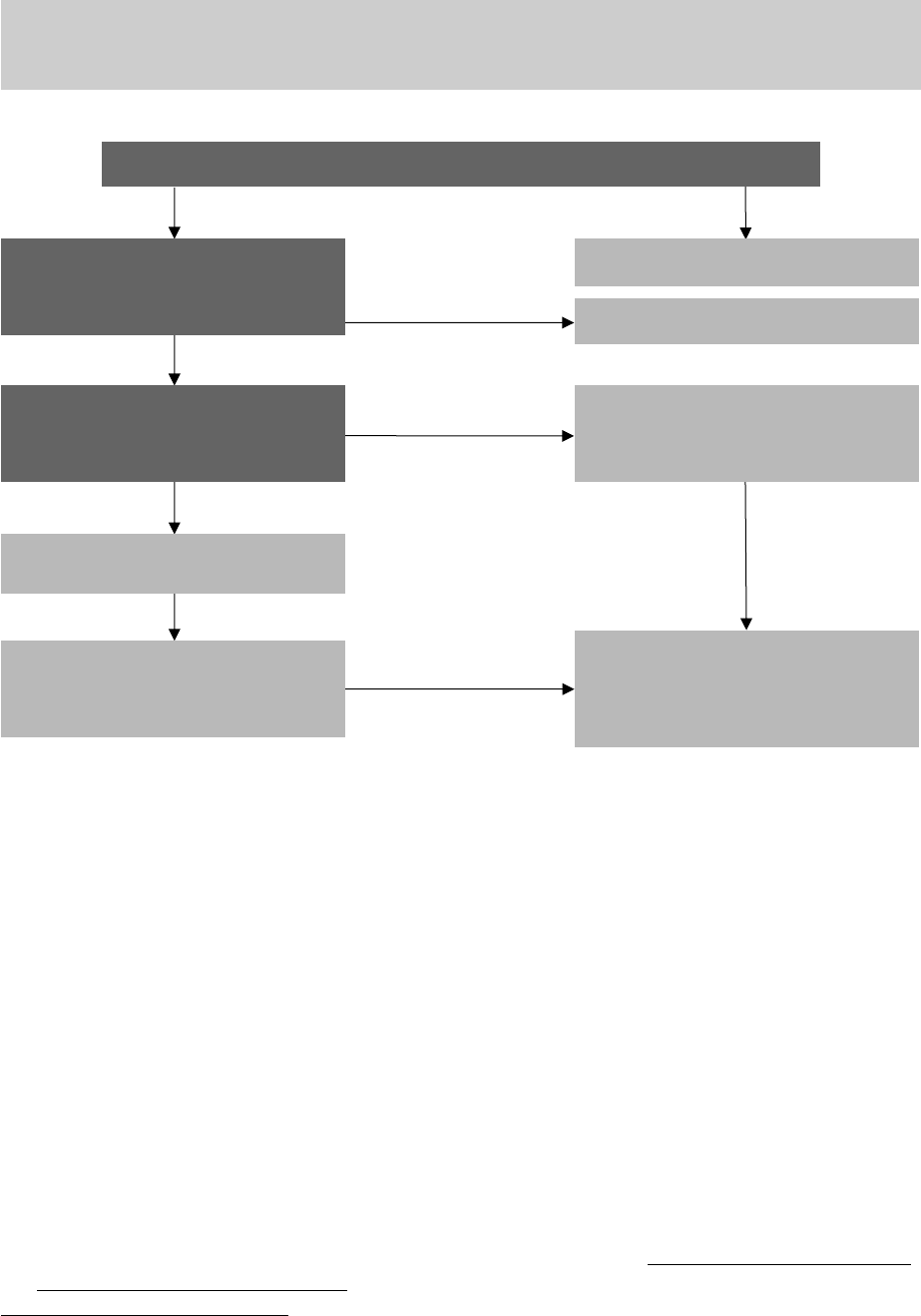
2 Scope
Financial reporting developments Revenue from contracts with customers (ASC 606) | 15
b. If the other Topics do not specify how to separate and/or initially measure one or more parts of
the contract, then the entity shall apply the guidance in this Topic to separate and/or initially
measure the part (or parts) of the contract.
The flowchart illustrates this guidance:
If an element of the arrangement is covered by another ASC topic and that topic specifies how to separate
and/or initially measure that element, an entity should first apply that topic. The Board noted in the
Background Information and Basis for Conclusions of ASU 2014-09
7
that “the more specific Topic would
take precedence in accounting for a part of a contract.” An entity then applies ASC 606 to the remaining
elements of the arrangement.
Some examples of where separation and/or initial measurement are addressed in other literature include
the following:
• ASC 460 provides that a liability should be recognized, based on the guarantee’s estimated fair
value, when a guarantee is issued as part of a multiple-element arrangement. Therefore, for
contracts that include a guarantee and revenue elements in the scope of ASC 606, the fair value of
the guarantee is deducted from the estimated contract consideration, and the remaining contract
consideration is allocated among the other elements in the contract in accordance with ASC 606.
• ASC 842 provides guidance for how lessors allocate arrangement consideration between lease and
non-lease components using the allocation principles in ASC 606. However, ASC 842 provides lessors
with an option to not separate non-lease components from the associated lease components when
certain criteria are met and requires them to account for the combined component in accordance with
ASC 606 if the associated non-lease components are the predominant components. For additional
information on this practical expedient, see section 1.4.2.4 of our FRD, Lease accounting: Accounting
Standards Codification 842, Leases.
7
Paragraph BC66 of ASU 2014-09.
No
No
No
Yes
Is the contract entirely in the scope of other Topics?
Apply the guidance in the other Topics.
No
Yes
Is the contract with a customer partially
within the scope of other Topics, including
those listed in ASC 606-10-15-2?
Yes
No
Apply ASC 606 to the part (or parts)
of the contract in its scope.
Apply other Topics to the part (or parts)
of the contract within their scope.
Exclude from the transaction price the
amount of the part (or parts) of the
contract that are initially measured
in accordance with other Topics.
Apply the separation and/or measurement
guidance in those Topics.
Apply ASC 606 to the entire contract.
Do the other Topics specify how to
separate and/or initially measure one
or more parts of the contract?
Apply the guidance in ASC 606 to
separate and/or initially measure the
part (or parts) of the contract.

2 Scope
Financial reporting developments Revenue from contracts with customers (ASC 606) | 16
Conversely, if an element of the arrangement is covered by another ASC topic but that topic does not
specify how to separate and/or initially measure that element, the entity needs to apply ASC 606 for
purposes of separation and/or initial measurement. For example, specific guidance does not exist on the
separation and measurement of the different parts of an arrangement when an entity sells a business and
also enters into a long-term supply agreement with the other party. See section 6.6 for further discussion
of the effect on the allocation of arrangement consideration when an arrangement includes both revenue
and non-revenue elements.
Question 2-1 Should contracts that guarantee an entity’s own future performance (e.g., when a contract contains a
service level agreement (SLA)) be accounted for under ASC 460 or ASC 606 (as variable
consideration)?
Consider an example in which an entity has a contract with a customer to operate a call center. The contract
includes an SLA guaranteeing that the average service call response time will be less than two minutes. If
the call center does not meet the two-minute wait time, the entity will have to pay the customer a penalty.
ASC 606 specifically excludes from its scope contracts with customers for guarantees (other than product
or service warranties discussed in section 9.1) that are within the scope of ASC 460. As discussed above,
ASC 606-10-15-4 also includes guidance on how to separate and initially measure a contract that is
partially within the scope of ASC 606 and partially within the scope of other topics. Therefore, an entity
must consider the scope of ASC 460 to determine whether a transaction falls within the scope of ASC 460,
ASC 606 or partially between them. ASC 460-10-15-7(i) states that a guarantee or indemnification of an
entity’s own future performance is not within the scope of ASC 460.
Accordingly, because of the ASC 460-10-15-7(i) scope exception, contracts that guarantee an entity’s
own future performance do not contain a guarantee within the scope of ASC 460 and the entity should
account for the contract under ASC 606. This contract provision is accounted for as variable consideration
(see section 5.2).
Question 2-2 Should contracts that include a profit margin guarantee be accounted for under ASC 460 or ASC 606
(as variable consideration)?
Consider an example in which a clothing manufacturer sells clothing to a retail store under a contract
offering a refund of a portion of its sales price at the end of each season if the retailer has not met a
minimum sales margin. The retail store takes title to the clothing and title remains with the retailer.
The profit margin guarantee is agreed to at the inception of the contract and is a fixed amount.
As discussed in Question 2-1 above, the entity (i.e., the clothing manufacturer) first considers whether the
contract is in the scope of ASC 460. In this scenario, an entity would likely determine that such an arrangement
would meet either (or both) of two scope exceptions in ASC 460. ASC 460-10-15-7(e) states that a contract that
“provides for payments that constitute a vendor rebate (by the guarantor) based on either the sales revenues of,
or the number of units sold by, the guaranteed party” is excluded from the scope of ASC 460. ASC 460-10-15-
7(g) states that “a guarantee or an indemnification whose existence prevents the guarantor from being
able to either account for a transaction as the sale of an asset that is related to the guarantee’s underlying
or recognize in earnings the profit from that sale transaction” also is excluded from the scope of ASC 460.
Accordingly, we believe contracts that include a profit margin guarantee do not contain a guarantee
within the scope of ASC 460 and the entity should account for the contract under ASC 606. This contract
provision is accounted for as variable consideration (see section 5.2).
2 Scope
Financial reporting developments Revenue from contracts with customers (ASC 606) | 17
Question 2-3 Should contracts that include a trade-in right be accounted for under ASC 460 or ASC 606?
In certain industries, vendors may offer trade-in rights whereby customers acquire a product along with a
right to exchange that product in the future. These arrangements may or may not require the customer
to pay additional consideration for a new or upgraded product at the time of trade-in. The trade-in right
may relate to currently available products or a product that is not yet available but is being developed.
Contracts that include trade-in rights should be carefully evaluated to determine whether the trade-in right
is in the scope of ASC 460. We believe judgment may be necessary when evaluating the ASC 460-10-15-7(k)
scope exception that excludes “a sales incentive program in which a manufacturer contractually guarantees
to reacquire the equipment at a guaranteed price or guaranteed prices at a specified time, or at specified
time periods (for example, the entity is obligated to reacquire the equipment or the entity is obligated to at the
customer’s request to reacquire the equipment).” ASC 460-10-15-7(k) further states that such a program
should be evaluated in accordance with the guidance on repurchase agreements in ASC 606-10-55-66
through 55-78.
We generally believe many trade-in rights will meet the scope exception in ASC 460-10-15-7(k). Because
the entity is obligated to repurchase an asset at the customer’s request, the trade-in right would be
considered a put option that is held by the customer. See section 7.3.2 for a discussion on the accounting
for a put option held by the customer.
However, when the trade-in right requires the customer to enter into a subsequent contract for goods or
services (e.g., the trade-in right is dependent upon the customer’s purchase of additional services in the
future), we believe it would be acceptable for an entity to conclude that the trade-in right is a guarantee
in the scope of ASC 460.
As discussed in section 2.4, an entity would apply the guidance in ASC 606-10-15-4 for a contract that is
partially in the scope of ASC 606 (i.e., the sale of the original good(s)) and partially in the scope of
another topic (i.e., ASC 460 for the trade-in right guarantee). That is, the guarantee should be measured
at fair value and excluded from the transaction price. The remaining transaction price should be allocated
to the sale of the original goods in the scope of ASC 606.
Question 2-4 Are certain fee-generating activities of financial institutions in the scope of ASC 606 (i.e., servicing and
sub-servicing financial assets, providing financial guarantees and providing deposit-related services)?
[18 April 2016 FASB TRG meeting, agenda paper no. 52; FASB staff Q&As, questions 4 and 5]
FASB TRG members generally agreed that the standard provides a framework for determining whether
certain contracts are in the scope of ASC 606 or other guidance. As discussed above, the standard’s
scope includes all contracts with customers to provide goods or services in the ordinary course of
business, except for contracts with customers that are within the scope of certain other ASC topics that
are listed in ASC 606-10-15-2. If the guidance in another ASC topic specifies the accounting for the
consideration (e.g., a fee) received in the arrangement, the consideration is outside the scope of
ASC 606. If the guidance in other ASC topics does not specify the accounting for the consideration and
there is a separate good or service provided, the consideration is in (or at least partially in) the scope of
ASC 606. The FASB staff applied this framework in the TRG agenda paper to arrangements to service
financial assets, provide financial guarantees and provide deposit-related services.
FASB TRG members generally agreed that income from servicing financial assets (e.g., loans) is not in
the scope of ASC 606. An asset servicer performs various services, such as communication with the
borrower and payment collection, in exchange for a fee. FASB TRG members generally agreed that an
entity should look to ASC 860 to determine the appropriate accounting for these fees. This is because
ASC 606 contains a scope exception for contracts that fall under ASC 860, which provides guidance on
the accounting for the fees (despite not providing explicit guidance on revenue accounting).
2 Scope
Financial reporting developments Revenue from contracts with customers (ASC 606) | 18
FASB TRG members generally agreed that fees from providing financial guarantees are not in the scope
of ASC 606. A financial institution may receive a fee for providing a guarantee of a loan. These types of
financial guarantees are generally within the scope of ASC 460 or ASC 815. FASB TRG members generally
agreed that an entity should look to ASC 460 or ASC 815 to determine the appropriate accounting for
these fees. This is because ASC 606 contains a scope exception for contracts that fall under those topics,
which provide principles an entity can follow to determine the appropriate accounting to reflect the
financial guarantor’s release from risk (and credit to earnings).
FASB TRG members generally agreed that fees from deposit-related services are in the scope of
ASC 606. In contrast to the decisions for servicing income and financial guarantees, the guidance in
ASC 405 that financial institutions apply to determine the appropriate liability accounting for customer
deposits, does not provide a model for recognizing fees related to customer deposits (e.g., ATM fees,
account maintenance or dormancy fees). Accordingly, FASB TRG members generally agreed that deposit
fees and charges are in the scope of ASC 606, even though ASC 405 is listed as a scope exception in the
standard, because of the lack of guidance on the accounting for these fees in ASC 405.
Question 2-5 Are credit card fees in the scope of ASC 606? [13 July 2015 TRG meeting, agenda paper no. 36; FASB
staff Q&As, question 1]
A bank that issues credit cards can have various income streams (e.g., annual fees) from a cardholder
under various credit card arrangements. Some of these fees may entitle cardholders to ancillary services
(e.g., concierge services, airport lounge access). The card issuer also may provide rewards to cardholders
based on their purchases. Stakeholders had questioned whether such fees and programs are within the
scope of ASC 606, particularly when a good or service is provided to a cardholder.
FASB TRG members generally agreed that credit card fees that are accounted for under ASC 310 are not
in the scope of ASC 606. This includes annual fees that may entitle cardholders to ancillary services.
FASB TRG members noted that this conclusion is consistent with legacy accounting for credit card fees.
However, the SEC Staff Observer noted and FASB TRG members agreed that the nature of the arrangement
must be truly that of a credit card lending arrangement in order to be in the scope of ASC 310, and
entities will need to continue to evaluate their arrangements as they develop new types of programs.
Question 2-6 Are credit card holder rewards programs in the scope of ASC 606? [13 July 2015 TRG meeting,
agenda paper no. 36; FASB staff Q&As, question 2]
FASB TRG members generally agreed that if all consideration (i.e., credit card fees discussed in Question 2-5
above) related to the rewards program are determined to be in the scope of ASC 310, the rewards program
is not in the scope of ASC 606. However, this determination has to be made based on the facts and
circumstances due to the wide variety of credit card reward programs offered.
Question 2-7 Are contributions in the scope of ASC 606? [30 March 2015 TRG meeting, agenda paper no. 26; FASB
staff Q&As, question 6]
The FASB issued ASU 2018-08, which amended ASC 606 to clarify that an entity should consider the
guidance in ASC 958-605 when determining whether a transaction is a contribution within the scope of
that guidance or a transaction within the scope of ASC 606. The guidance for contributions received in
ASC 958-605 generally applies to all entities that receive contributions (i.e., not just NFP entities), unless
otherwise indicated.
Before ASU 2018-08 was issued, FASB TRG members discussed this issue and generally agreed that
contributions are not within the scope of ASC 606 because they are nonreciprocal transfers. That is,
contributions generally do not represent consideration given in exchange for goods or services that are
an output of the entity’s ordinary activities.
2 Scope
Financial reporting developments Revenue from contracts with customers (ASC 606) | 19
Question 2-8 Are fixed-odds wagering contracts in the scope of ASC 606?
Yes. In fixed-odds wagering contracts, the payout for wagers placed on gaming activities (e.g., table games,
slot machines, sports betting) is known at the time the wager is placed. As part of ASU 2016-20 that was
issued in December 2016, the FASB added scope exceptions in ASC 815 and ASC 924 to clarify that these
arrangements are within the scope of ASC 606.
Question 2-9 Are pre-production activities in the scope of ASC 606?
Manufacturing and production entities in various industries may perform activities and incur costs before
they produce goods. In some arrangements (including long-term supply arrangements), entities perform
up-front engineering and design activities and/or incur costs related to setup activities to create new
technology or adapt existing technology to the needs of the customer. These pre-production activities
are often a prerequisite to delivering any units under a production contract.
When assessing whether pre-production activities are in the scope of ASC 606, entities need to determine
whether the activity transfers a good or service to a customer. If an entity determines that these activities
are promised goods or services, it will apply the guidance in ASC 606 to those goods or services. Refer to
Question 4-1 in section 4.1 for discussion on determining whether pre-production activities are promised
goods or services. Also see Questions 9-13 and 9-17 in section 9.3.2 for a discussion of scope and accounting
considerations for costs related to pre-production activities and pre-contract or setup activities, respectively.
Question 2-10 Are sales of byproducts or scrap materials in the scope of ASC 606?
Consider an example in which a consumer products entity sells byproducts or accumulated scrap materials
that are produced as a result of its manufacturing process. In determining whether the sale of byproducts
or scrap materials to third parties is in the scope of ASC 606, an entity first determines whether the sale
represents a contract with a customer, including whether such items are an output of the entity’s
“ongoing or major operations.” This is because ASC 606 defines revenue as “inflows … from delivering or
producing goods, rendering services, or other activities that constitute the entity’s ongoing major or
central operations.” If an entity determines the sale of such items represents revenue from a contract
with a customer, it would recognize the sale under ASC 606.
If an entity determines that the sale is not a recurring part of its ongoing major or central operations, the
entity would present the sale separately from revenue from contracts with customers because it
represents a sale of nonfinancial assets under ASC 610-20.
We do not believe that it would be appropriate for an entity to recognize the sale of byproducts or scrap
materials as a reduction of costs of goods sold because such recognition would inappropriately reflect the
cost of raw materials used in the manufacturing process. However, this interpretation would not apply when
other accounting topics allow for recognition as a reduction of costs. For example, ASC 970-340-25-12
requires that revenue from “incidental operations” be recognized as a reduction of the total capitalized
project costs.
Question 2-11 How should an entity account for the transfer to a third party of its rights to future cash receipts
arising from a sales transaction?
An entity may enter into a transaction to transfer to a third party its rights to future cash receipts arising
from a sales transaction. The form of such a transaction may vary. For example, an entity may decide to
transfer its rights to future cash receipts (e.g., accounts receivable) through a factoring arrangement
with a third party to raise capital to fund its operations and improve its credit position with its lenders.
The accounts receivable would generally be sold at a discount to face value, and the third party would
assume the full risk of collection, without recourse to the entity in the event of a loss.

2 Scope
Financial reporting developments Revenue from contracts with customers (ASC 606) | 20
If an entity has satisfied the criteria to recognize revenue under ASC 606 (see section 3.1) for the underlying
sales transaction, the subsequent transfer of any related accounts receivable should be accounted for under
ASC 860. See section 1.11 of our FRD, Transfers and servicing of financial assets, for further details.
If an entity has not yet satisfied the criteria to recognize revenue under ASC 606 for the underlying sales
transaction, we generally believe the transfer to a third party of the rights to future cash receipts arising
from that transaction should not be accounted under ASC 860. This is because, before revenue is
recognized for a sale, the rights to future cash receipts associated with the underlying sales transaction
are not considered a financial asset. This is the case even if the entity has a history of recording accounts
receivable because it believes it has a contractual right to bill and collect amounts from the customer
relating to the underlying sales transaction (refer to Question 10-6 in section 10.1 for further discussion).
Such rights represent future revenues yet to be earned and recognized by the entity and, thus, do not
meet the definition of a financial asset under ASC 860. Rather, the transfer should be accounted for as a
sale of future revenues under ASC 470-10. See section 2.2.6.8 of our FRD, Issuer’s accounting for debt
and equity financings (before the adoption of ASU 2020-06), and section 2.2.6.8 of our FRD, Issuer’s
accounting for debt and equity financings (after the adoption of ASU 2020-06), for further detail.
Question 2-12 Are the sales of prepaid gift cards in the scope of ASC 606?
Refer to Question 7-29 in section 7.9.

Financial reporting developments Revenue from contracts with customers (ASC 606) | 21
3 Identify the contract with the customer
To apply the five-step model in ASC 606, an entity must first identify the contract, or contracts, to
provide goods and services to customers as follows:
Excerpt from Accounting Standards Codification
Revenue from Contracts with Customers — Overall
Recognition
Identifying the Contract
606-10-25-2
A contract is an agreement between two or more parties that creates enforceable rights and obligations.
Enforceability of the rights and obligations in a contract is a matter of law. Contracts can be written, oral,
or implied by an entity’s customary business practices. The practices and processes for establishing
contracts with customers vary across legal jurisdictions, industries, and entities. In addition, they may
vary within an entity (for example, they may depend on the class of customer or the nature of the
promised goods or services). An entity shall consider those practices and processes in determining
whether and when an agreement with a customer creates enforceable rights and obligations.
A contract must create enforceable rights and obligations to fall within the scope of the model in the
standard. Such contracts may be written, oral or implied by an entity’s customary business practices. For
example, if an entity has an established practice of starting performance based on oral agreements with
its customers, it may determine that such oral agreements meet the definition of a contract.
In the Basis for Conclusions of ASU 2014-09,
8
the FASB acknowledged that entities need to look at the
relevant legal framework to determine whether the contract is enforceable because factors that determine
enforceability may differ by jurisdiction. As a result, an entity may have to account for an arrangement as
soon as performance begins rather than delay revenue recognition until the arrangement is documented in
a signed contract. However, certain arrangements may require a written contract to comply with laws or
regulations in a particular jurisdiction, and these requirements should be considered in determining
whether a contract exists. The Board also clarified that while the contract must be legally enforceable to
be within the scope of the model in the standard, all of the promises don’t have to be enforceable to be
considered performance obligations (see section 4.1). That is, a performance obligation can be based on
the customer’s reasonable expectations (e.g., due to the entity’s business practice of providing an additional
good or service that isn’t specified in the contract).
Illustration 3-1: Oral contract
IT Support Co. provides online technology support for consumers remotely via the internet. For a flat
fee, IT Support Co. will scan a customer’s personal computer (PC) for viruses, optimize the PC’s
performance and solve any connectivity problems. When a customer calls to obtain the scan services,
IT Support Co. describes the services it can provide and states the price for those services. When the
customer agrees to the terms stated by the representative, payment is made over the telephone.
IT Support Co. then gives the customer the information needed to obtain the scan services (e.g., an
access code for the website) and provides the services when the customer connects to the internet and
logs on to the entity’s website (which may be that day or a future date).
8
Paragraph BC32 of ASU 2014-09.

3 Identify the contract with the customer
Financial reporting developments Revenue from contracts with customers (ASC 606) | 22
In this example, IT Support Co. and its customer are entering into an oral agreement, which is legally
enforceable in this jurisdiction, for IT Support Co. to repair the customer’s PC and for the customer to
provide consideration by transmitting a valid credit card number and authorization over the telephone.
The required criteria (discussed further in ASC 606-10-25-1 below) are all met, and this agreement will be
within the scope of the model in the standard, even if the entity has not yet performed the scan services.
3.1 Attributes of a contract
To help entities determine whether (and when) their arrangements with customers are contracts within
the scope of the model in the standard, the Board identified certain criteria that must be met. The FASB
noted in the Basis for Conclusions of ASU 2014-09
9
that it added the criteria because when some or all of the
criteria are not met, it is questionable whether the arrangement contains enforceable rights and obligations.
The criteria are as follows:
Excerpt from Accounting Standards Codification
Revenue from Contracts with Customers — Overall
Recognition
Identifying the Contract
606-10-25-1
An entity shall account for a contract with a customer that is within the scope of this Topic only
when all of the following criteria are met:
a. The parties to the contract have approved the contract (in writing, orally, or in accordance
with other customary business practices) and are committed to perform their respective
obligations.
b. The entity can identify each party’s rights regarding the goods or services to be transferred.
c. The entity can identify the payment terms for the goods or services to be transferred.
d. The contract has commercial substance (that is, the risk, timing, or amount of the entity’s
future cash flows is expected to change as a result of the contract).
e. It is probable that the entity will collect substantially all of the consideration to which it will be
entitled in exchange for the goods or services that will be transferred to the customer (see
paragraphs 606-10-55-3A through 55-3C). In evaluating whether collectibility of an amount of
consideration is probable, an entity shall consider only the customer’s ability and intention to pay
that amount of consideration when it is due. The amount of consideration to which the entity will
be entitled may be less than the price stated in the contract if the consideration is variable
because the entity may offer the customer a price concession (see paragraph 606-10-32-7).
606-10-25-5
If a contract with a customer meets the criteria in paragraph 606-10-25-1 at contract inception, an
entity shall not reassess those criteria unless there is an indication of a significant change in facts and
circumstances. For example, if a customer’s ability to pay the consideration deteriorates significantly,
an entity would reassess whether it is probable that the entity will collect the consideration to which
the entity will be entitled in exchange for the remaining goods or services that will be transferred to
the customer (see paragraphs 606-10-55-3A through 55-3C).
9
Paragraph BC33 of ASU 2014-09.

3 Identify the contract with the customer
Financial reporting developments Revenue from contracts with customers (ASC 606) | 23
These criteria are assessed at the inception of the arrangement. If the criteria are met at that time, an
entity does not reassess the criteria unless there is an indication of a significant change in facts and
circumstances. For example, as noted in ASC 606-10-25-5, if the customer’s ability to pay significantly
deteriorates, an entity would have to reassess whether it is probable that the entity will collect the
consideration to which it is entitled in exchange for transferring the remaining goods and services under
the contract. The updated assessment is prospective in nature and would not change the conclusions
associated with goods and services already transferred. That is, an entity would not reverse any
receivables, revenue or contract assets already recognized under the contract.
10
If the criteria in ASC 606-10-25-1 are not met (and continue to not be met), the arrangement should not
be considered a revenue contract under the standard, and the guidance discussed in section 3.5 should
be applied.
The standard provides the following example of a significant change in facts and circumstances that
results in the reassessment of the contract criteria in ASC 606-10-25-1:
Excerpt from Accounting Standards Codification
Revenue from Contracts with Customers — Overall
Implementation Guidance and Illustrations
Example 4 — Reassessing the Criteria for Identifying a Contract
606-10-55-106
An entity licenses a patent to a customer in exchange for a usage-based royalty. At contract inception,
the contract meets all the criteria in paragraph 606-10-25-1, and the entity accounts for the contract
with the customer in accordance with the guidance in this Topic. The entity recognizes revenue when
the customer’s subsequent usage occurs in accordance with paragraph 606-10-55-65.
606-10-55-107
Throughout the first year of the contract, the customer provides quarterly reports of usage and pays
within the agreed-upon period.
606-10-55-108
During the second year of the contract, the customer continues to use the entity’s patent, but the
customer’s financial condition declines. The customer’s current access to credit and available cash on
hand are limited. The entity continues to recognize revenue on the basis of the customer’s usage
throughout the second year. The customer pays the first quarter’s royalties but makes nominal
payments for the usage of the patent in quarters 2–4. The entity accounts for any impairment of the
existing receivable in accordance with Topic 310 on receivables.
Pending content:
Transition Date: (P) December 16, 2019; (N) December 16, 2022 | Transition Guidance: 326-10-65-1
606-10-55-108
During the second year of the contract, the customer continues to use the entity’s patent, but the
customer’s financial condition declines. The customer’s current access to credit and available cash
on hand are limited. The entity continues to recognize revenue on the basis of the customer’s usage
throughout the second year. The customer pays the first quarter’s royalties but makes nominal
payments for the usage of the patent in quarters 2–4. The entity accounts for any credit losses on
the existing receivable in accordance with Subtopic 326-20 on financial instruments measured at
amortized cost.
10
Paragraph BC34 of ASU 2014-09.

3 Identify the contract with the customer
Financial reporting developments Revenue from contracts with customers (ASC 606) | 24
606-10-55-109
During the third year of the contract, the customer continues to use the entity’s patent. However, the
entity learns that the customer has lost access to credit and its major customers and thus the
customer’s ability to pay significantly deteriorates. The entity therefore concludes that it is unlikely
that the customer will be able to make any further royalty payments for ongoing usage of the entity’s
patent. As a result of this significant change in facts and circumstances, in accordance with paragraph
606-10-25-5, the entity reassesses the criteria in paragraph 606-10-25-1 and determines that they
are not met because it is no longer probable that the entity will collect the consideration to which it will
be entitled. Accordingly, the entity does not recognize any further revenue associated with the
customer’s future usage of its patent. The entity accounts for any impairment of the existing
receivable in accordance with Topic 310 on receivables.
Pending content:
Transition Date: (P) December 16, 2019; (N) December 16, 2022 | Transition Guidance: 326-10-65-1
606-10-55-109
During the third year of the contract, the customer continues to use the entity’s patent. However,
the entity learns that the customer has lost access to credit and its major customers and thus the
customer’s ability to pay significantly deteriorates. The entity therefore concludes that it is unlikely
that the customer will be able to make any further royalty payments for ongoing usage of the
entity’s patent. As a result of this significant change in facts and circumstances, in accordance with
paragraph 606-10-25-5, the entity reassesses the criteria in paragraph 606-10-25-1 and
determines that they are not met because it is no longer probable that the entity will collect the
consideration to which it will be entitled. Accordingly, the entity does not recognize any further
revenue associated with the customer’s future usage of its patent. The entity accounts for
additional credit losses on the existing receivable in accordance with Subtopic 326-20.
Question 3-1 Does a master supply arrangement (MSA) create enforceable rights and obligations to be considered a
contract within the scope of the model in ASC 606?
An entity may use an MSA to govern the overall terms and conditions of the business arrangement between
itself and a customer (e.g., scope of services, pricing, payment terms, warranties and other rights and
obligations). Typically, when an entity and a customer enter into an MSA, purchases are subsequently
made by the customer issuing a noncancellable purchase order or an approved online authorization that
explicitly references the MSA and specifies the products, services and quantities to be delivered.
In such cases, the MSA will likely not create enforceable rights and obligations to be considered a
contract within the scope of the model in ASC 606 because each party’s rights and obligations regarding
the goods or services to be transferred are not identifiable. This is because, while the MSA may specify
the pricing or payment terms, it usually does not specify the specific goods and services, or quantities
thereof, to be transferred. However, it is likely that the MSA and the customer order, taken together,
would constitute an ASC 606 contract. Therefore, entities need to evaluate both the MSA and the subsequent
customer order(s) together to determine whether and when the criteria in ASC 606-10-25-1 are met.
If an MSA includes an enforceable clause requiring the customer to purchase a minimum quantity of
goods or services, the MSA alone may constitute a contract under the standard because enforceable
rights and obligations exist for this minimum amount of goods or services.

3 Identify the contract with the customer
Financial reporting developments Revenue from contracts with customers (ASC 606) | 25
Question 3-2 How should an entity determine whether a contract exists within the scope of the model during a free
trial period?
Free trial periods are common in certain subscription arrangements (e.g., magazines, streaming services).
A customer may receive a number of “free” months of goods or services at the inception of an arrangement,
before the paid subscription begins, or as a bonus period at the beginning or end of a paid subscription period.
Under ASC 606, revenue should not be recognized until an entity determines that a contract within the
scope of the model exists. Once an entity determines that an ASC 606 contract exists, it is required to
identify the promises in the contract. Therefore, if the entity has transferred goods or services prior to
the existence of an ASC 606 contract, we believe that the free goods or services provided during the trial
period would generally be accounted for as marketing incentives.
Consider an example in which an entity has a marketing program to provide a three-month free trial
period of its services to prospective customers. The entity’s customers are not required to pay for the
services provided during the free trial period, and the entity is under no obligation to provide the services
under the marketing program. If a customer enters into a contract with the entity at the end of the free
trial period, which obligates the entity to provide services in the future (e.g., signing up for a subsequent
12-month period) and obligates the customer to pay for the services, the services provided as part of the
marketing program may not be promises that are part of an enforceable contract with the customer.
However, if an entity, as part of a negotiation with a prospective customer, agrees to provide three free
months of services if the customer agrees to pay for 12 months of services (effectively providing the
customer a discount on 15 months), the entity would identify the free months as promises in the contract
because the contract requires it to provide them.
The above interpretation applies if the customer is not required to pay consideration for the additional
goods or services during the trial period (i.e., they are free). If the customer is required to pay
consideration in exchange for the goods or services received during the trial period (even if it is only a
nominal amount), a different accounting conclusion could be reached. Entities need to apply judgment to
evaluate whether a contract exists that falls within the scope of the model in the standard.
Question 3-3 Should entities consider side agreements when determining whether a contract exists within the
scope of the model?
Yes, all terms and conditions that create or negate enforceable rights and obligations must be considered
when determining whether a contract exists under the standard. Understanding the entire contract,
including any side agreements or other amendments, is critical to this determination.
Side agreements are amendments to a contract that can be either undocumented or documented
separately from the main contract. The potential for side agreements is greater for complex or material
transactions or when complex arrangements or relationships exist between an entity and its customers.
Side agreements may be communicated in many forms (e.g., oral agreements, email, letters, contract
amendments) and may be entered into for a variety of reasons.
Side agreements may provide an incentive to a customer to enter into a contract near the end of a
financial reporting period or to enter into a contract that it would not enter into in the normal course of
business. Side agreements may entice a customer to accept delivery of goods and services earlier than
required or may provide the customer rights in excess of those customarily provided by the entity. For
example, a side agreement may extend contractual payment terms, expand contractually stated rights,
provide a right of return or commit the entity to provide future products or functionality not contained in
the contract or to assist resellers in selling a product. Therefore, if the provisions in a side agreement
differ from those in the main contract, the entity should assess whether the side agreement establishes
new rights and obligations or changes existing rights and obligations. See section 3.3 for discussion of the
standard’s guidance on combining contracts and section 3.4 for contract modifications.

3 Identify the contract with the customer
Financial reporting developments Revenue from contracts with customers (ASC 606) | 26
3.1.1 Parties have approved the contract and are committed to perform their
respective obligations
As indicated in the Basis for Conclusions of ASU 2014-09,
11
the Board included this criterion because a
contract might not be legally enforceable without approval of both parties. Further, the Board decided
that the form of the contract (i.e., oral, written or implied) is not determinative in assessing whether the
parties have approved the contract. Instead, an entity must consider all relevant facts and circumstances
when assessing whether the parties intend to be bound by the terms and conditions of the contract. In
some cases, the parties to an oral or implied contract may have the intent to fulfill their respective
obligations while, in other cases, a written contract may be required before an entity can conclude that
the parties have approved the arrangement.
In addition to approving the contract, the entity must also be able to conclude that both parties are
committed to perform their respective obligations. That is, the entity must be committed to providing the
promised goods and services, and the customer must be committed to purchasing those promised goods
and services. In the Basis for Conclusions of ASU 2014-09,
12
the Board clarified that an entity and a
customer do not always have to be committed to fulfilling all of their respective rights and obligations for
a contract to meet this requirement. The Board cited as an example a supply agreement between two
parties with stated minimums under which the customer does not always buy the required minimum
amount and the entity does not always enforce its right to make the customer make those minimum
purchases. In this situation, the Board said that it may still be possible for the entity to demonstrate there
is sufficient evidence to conclude that the parties are substantially committed to the contract. This
criterion does not address a customer’s intent and ability to pay the consideration (i.e., collectibility).
Collectibility is a separate criterion and is discussed in section 3.1.5.
Termination clauses are also an important consideration when determining whether both parties are
committed to perform under a contract and, consequently, whether a contract within the scope of the
model in ASC 606 exists. See section 3.2 for further discussion of termination clauses and how they
affect contract duration.
3.1.2 Each party’s rights regarding the goods or services to be transferred can be
identified
This criterion is relatively straightforward. If the goods and services to be provided in the arrangement
cannot be identified, it is not possible to conclude that an entity has a contract within the scope of the
model in the standard. The Board indicated
13
that if the promised goods and services cannot be
identified, the entity can’t assess whether those goods and services have been transferred because the
entity would be unable to assess each party’s rights with respect to those goods and services.
3.1.3 Payment terms can be identified for the goods or services to be transferred
Identifying the payment terms does not require that the transaction price be fixed or stated in the contract
with the customer. Provided there will be an enforceable right to payment (i.e., enforceability as a matter of
law) and the contract contains sufficient information to enable the entity to estimate the transaction
price (see further discussion on estimating the transaction price in section 5), the contract would qualify
for accounting under the model (assuming the remaining criteria in ASC 606-10-25-1 have been met).
11
Paragraph BC35 of ASU 2014-09.
12
Paragraph BC36 of ASU 2014-09.
13
Paragraph BC37 of ASU 2014-09.

3 Identify the contract with the customer
Financial reporting developments Revenue from contracts with customers (ASC 606) | 27
3.1.4 Commercial substance
The Board explained in the Basis for Conclusions of ASU 2014-09
14
that it included a criterion requiring a
contract to have commercial substance (i.e., the risk, timing or amount of the entity’s future cash flows is
expected to change as a result of the contract) to prevent entities from artificially inflating revenue. An
arrangement that does not have commercial substance should not be accounted for under the standard.
Historically, some entities in high-growth industries engaged in round-tripping transactions in which goods
and services were transferred back and forth between the same entities in an attempt to show higher
transaction volume and higher gross revenue. This is also a risk in arrangements involving nonmonetary
consideration (e.g., barter transactions). Determining whether an arrangement has commercial substance
for purposes of the revenue standard is consistent with the commercial substance determination elsewhere
in US GAAP, such as in the nonmonetary transactions guidance in ASC 845. This determination may
require significant judgment. In all situations, the entity should be able to demonstrate a substantive
business purpose exists, considering the nature and structure of its transactions.
3.1.5 Collectibility
Under the revenue standard, collectibility refers to the customer’s ability and intent to pay substantially
all of the amount of consideration to which the entity will be entitled in exchange for the goods and
services that will be transferred to the customer. An entity should assess a customer’s ability to pay
based on the customer’s financial capacity and its intention to pay considering all relevant facts and
circumstances, including past experiences with that customer or customer class.
The standard describes the collectibility assessment as follows:
Excerpt from Accounting Standards Codification
Revenue from Contracts with Customers — Overall
Implementation Guidance and Illustrations
Assessing Collectibility
606-10-55-3A
Paragraph 606-10-25-1(e) requires an entity to assess whether it is probable that the entity will
collect substantially all of the consideration to which it will be entitled in exchange for the goods or
services that will be transferred to the customer. The assessment, which is part of identifying whether
there is a contract with a customer, is based on whether the customer has the ability and intention to
pay the consideration to which the entity will be entitled in exchange for the goods or services that will
be transferred to the customer. The objective of this assessment is to evaluate whether there is a
substantive transaction between the entity and the customer, which is a necessary condition for the
contract to be accounted for under the revenue model in this Topic.
As noted in the Basis for Conclusions of ASU 2014-09,
15
the purpose of the criteria in ASC 606-10-25-1 is
to require an entity to assess whether a contract, as defined by the standard, exists and represents a valid
transaction. The collectibility criterion (i.e., determining whether the customer has the ability and the
intention to pay substantially all of the promised consideration) is a key part of that assessment. As stated
in the Basis for Conclusions of ASU 2016-12,
16
if it is not probable that the customer will pay (i.e., fulfill its
obligations under the contract), there is a question about whether the contract is valid and the revenue-
generating transaction is substantive, regardless of whether a legal contract exists. However, the Board
14
Paragraph BC40 of ASU 2014-09.
15
Paragraph BC43 of ASU 2014-09.
16
Paragraphs BC12 and BC14 of ASU 2016-12.

3 Identify the contract with the customer
Financial reporting developments Revenue from contracts with customers (ASC 606) | 28
also noted
17
that entities generally only enter into contracts after concluding it is probable that they will
be fairly compensated for their performance. That is, in most instances, an entity would not enter into a
contract with a customer if there was significant credit risk associated with that customer without also
having adequate economic protection to ensure that it would collect the consideration. Therefore, the
Board expects many arrangements will not fail to meet the collectibility criterion.
The guidance (i.e., ASC 606-10-25-1(e) in section 3.1 and ASC 606-10-55-3A above) requires an entity
to evaluate at contract inception whether it is probable that it will collect substantially all of the
consideration to which it will be entitled in exchange for the goods or services that will be transferred to a
customer. An entity is also required to reassess collectibility after contract inception when significant
facts and circumstances change (see Question 3-5 below for further discussion). We discuss each of the
italicized concepts below.
Probable — For purposes of this analysis under ASC 606, the term “probable” is defined as “the future
event or events are likely to occur,” consistent with the existing definition in US GAAP. If it is not probable
that the entity will collect substantially all of the amounts to which it is entitled, the contract should not
be accounted for under the revenue model until the concerns about collectibility have been resolved (see
section 3.5 for further discussion).
Substantially all — As noted in the Basis for Conclusions of ASU 2016-12,
18
the Board used the term
“substantially all” because a contract may represent a substantive transaction, even if it is not probable the
entity will collect 100% of the consideration to which it will be entitled in exchange for the goods or services
that will be transferred to the customer. That is, the entity can determine that it is probable that it will collect
something short of 100% of the consideration, as long as that amount is substantially all of the consideration,
and still have a substantive transaction. Because the standard does not define “substantially all” (i.e., a
percentage is not specified), determining the appropriate threshold may require significant judgment.
Consideration to which it will be entitled in exchange for the goods or services that will be transferred to a
customer — The amount of consideration that is assessed for collectibility is the amount to which the
entity expects to be entitled for the goods or services that will be transferred to the customer. That is, the
amount of consideration assessed for collectibility is often the transaction price, but it may be a lesser
amount if the entity does not expect to transfer all the promised goods and services in the contract as
contemplated in ASC 606-10-55-3C and discussed further below.
It is important to note that the transaction price might be less than the stated contract price for the goods
or services in the contract. That is, entities need to first determine the transaction price in Step 3 of the
model (discussed in section 5) before assessing the collectibility of that amount. The contract price and
transaction price most often will differ because of variable consideration (e.g., rebates, discounts, explicit
or implicit price concessions) that reduces the amount of consideration stated in the contract. For example,
the transaction price for the items expected to be transferred may be less than the stated contract price for
those items if an entity concludes that it has offered or is willing to accept a price concession on products
sold to a customer. See section 5.2.1.1 for further discussion on price concessions.
An entity will deduct from the contract price any variable consideration that would reduce the amount of
consideration an entity expects to be entitled to (e.g., an estimated price concession) at contract
inception to derive the transaction price for those items. The collectibility assessment is then generally
performed on the determined transaction price.
17
Paragraph BC43 of ASU 2014-09 and paragraph BC10 of ASU 2016-12.
18
Paragraph BC12 of ASU 2016-12.

3 Identify the contract with the customer
Financial reporting developments Revenue from contracts with customers (ASC 606) | 29
The following table illustrates these concepts:
Stated contract price
$ 2,000,000
Price concession
1
(200,000)
Transaction price
2
$ 1,800,000
1
The amount the entity estimates it will offer or accept as a reduction to the contractual price.
2
The amount assessed for collectibility, which could be less than the transaction price calculated under Step 3 of the model if
the entity has credit mitigation practices in place resulting in the entity estimating that the goods or services that will be
transferred to the customer may be less than the total amount included in the contract, as discussed below.
As noted above, the amount of consideration that an entity assesses for collectibility may be less than the
total stated contract price because of anticipated reductions in the consideration (e.g., due to variable
consideration) or the amount of goods or services that will be transferred. The standard includes the
following implementation guidance on how an entity might determine which goods or services will be
transferred to the customer:
Excerpt from Accounting Standards Codification
Revenue from Contracts with Customers — Overall
Implementation Guidance and Illustrations
Assessing Collectibility
606-10-55-3B
The collectibility assessment in paragraph 606-10-25-1(e) is partly a forward-looking assessment. It
requires an entity to use judgment and consider all of the facts and circumstances, including the entity’s
customary business practices and its knowledge of the customer, in determining whether it is probable
that the entity will collect substantially all of the consideration to which it will be entitled in exchange
for the goods or services that the entity expects to transfer to the customer. The assessment is not
necessarily based on the customer’s ability and intention to pay the entire amount of promised
consideration for the entire duration of the contract.
606-10-55-3C
When assessing whether a contract meets the criterion in paragraph 606-10-25-1(e), an entity should
determine whether the contractual terms and its customary business practices indicate that the entity’s
exposure to credit risk is less than the entire consideration promised in the contract because the entity
has the ability to mitigate its credit risk. Examples of contractual terms or customary business
practices that might mitigate the entity’s credit risk include the following:
a. Payment terms — In some contracts, payment terms limit an entity’s exposure to credit risk.
For example, a customer may be required to pay a portion of the consideration promised in the
contract before the entity transfers promised goods or services to the customer. In those cases,
any consideration that will be received before the entity transfers promised goods or services to
the customer would not be subject to credit risk.
b. The ability to stop transferring promised goods or services — An entity may limit its exposure to
credit risk if it has the right to stop transferring additional goods or services to a customer in the
event that the customer fails to pay consideration when it is due. In those cases, an entity should
assess only the collectibility of the consideration to which it will be entitled in exchange for the
goods or services that will be transferred to the customer on the basis of the entity’s rights and
customary business practices. Therefore, if the customer fails to perform as promised and,
consequently, the entity would respond to the customer’s failure to perform by not transferring
additional goods or services to the customer, the entity would not consider the likelihood of
payment for the promised goods or services that will not be transferred under the contract.
An entity’s ability to repossess an asset transferred to a customer should not be considered for the
purpose of assessing the entity’s ability to mitigate its exposure to credit risk.

3 Identify the contract with the customer
Financial reporting developments Revenue from contracts with customers (ASC 606) | 30
ASC 606-10-55-3C explains that an entity should consider the probability of collecting substantially all of
the consideration to which it will be entitled in exchange for the goods or services that will be transferred
to the customer rather than the total amount promised for all goods or services in the contract. That is, if
the customer were to fail to perform as promised and the entity would stop transferring additional goods
or services to the customer, the entity would not consider the likelihood of payment for the goods or
services that would not be transferred. The entity in this case would need to have the right to stop
transferring goods or services when the customer fails to pay.
The Board noted in the Basis for Conclusions of ASU 2016-12
19
that an entity would evaluate the goods or
services that it expects will be transferred based on the customary business practices of the entity in dealing
with its exposure to the customer’s credit risk throughout the contract. This assessment requires the entity
to consider the relative position of the entity’s contractual rights to the consideration and the entity’s
performance obligations, in addition to evaluating a customer’s credit and payment history. For example, the
entity could stop providing goods or services to the customer (provided it has the right to do so) or could
require advance payments to mitigate its credit risk. When an entity stops providing goods or services to
the customer, it mitigates its credit risk on the consideration for those additional goods and services.
Nonrefundable consideration paid in advance of the goods and services being delivered is no longer subject
to credit risk. Example 1, Case B and Case C excerpted below illustrate these concepts.
The standard specifically precludes an entity from evaluating its ability to repossess an asset as part of the
collectibility assessment. The FASB noted in the Basis for Conclusions of ASU 2016-12
20
that the ability to
repossess an asset does not mitigate an entity’s exposure to credit risk for the consideration promised in the
contract. However, that ability may affect the entity’s assessment of whether it has transferred control of
the asset to the customer.
Variable consideration versus credit risk
In the Basis for Conclusions of ASU 2014-09,
21
the FASB acknowledged that in some cases, it may be
difficult to determine whether the entity has implicitly offered a price concession (i.e., variable
consideration) or whether the entity has chosen to accept the risk of default by the customer of the
contractually agreed-upon consideration (i.e., credit impairment under ASC 310 or ASC 326 (if
adopted)). The Board did not develop detailed guidance for distinguishing between price concessions
(recognized as variable consideration through revenue) and credit impairment (recognized as bad debt
(or credit loss) expense outside of revenue). Therefore, an entity should consider all relevant facts and
circumstances when analyzing situations in which, at contract inception, the entity is willing to accept a
lower price than the amount stated in the contract. In section 5.2.1.1, we discuss certain factors that
may suggest the entity has implicitly offered a price concession to the customer.
After the entity has determined the amount to assess for collectibility under ASC 606-10-25-1(e), an
entity also has to determine whether an allowance for credit losses is required under ASC 310 or
ASC 326 (if adopted) for the receivable (or contract asset) that is recorded (i.e., after consideration
of any variable consideration, such as an implicit price concession). If an allowance is required, the
entity should record the allowance separately on the balance sheet and present the loss as bad debt
(or credit loss) expense on the income statement (i.e., not as a reduction of the transaction price).
Examples 2 (excerpted in section 5.2.1.1), 3 and 23 (excerpted in 5.2.3) from the standard illustrate
situations where the transaction price evaluated for collectibility is not the amount stated in the contract
due to implicit price concessions that exist at contract inception. In contrast, the TRG discussed an
example (included in Question 3-4 below) in which an entity, at contract inception, believes it is probable
that its customers will pay amounts owed and the transaction price (i.e., revenue recorded) equals the
contract price, even though a 2% uncollectible amount is expected on a portfolio basis.
19
Paragraph BC11 of ASU 2016-12.
20
Paragraph BC15 of ASU 2016-12.
21
Paragraph BC194 of ASU 2014-09.

3 Identify the contract with the customer
Financial reporting developments Revenue from contracts with customers (ASC 606) | 31
How we see it
At contract inception, significant judgment is required to determine when an expected partial payment
indicates that (1) there is an implied price concession in the contract that affects the determination of
the transaction price and the amount that is assessed for collectibility under ASC 606-10-25-1(e),
(2) there is a credit impairment under ASC 310 or ASC 326 (if adopted) or (3) the arrangement lacks
sufficient substance to be considered a contract under the standard. See section 5.2.1.1 for further
discussion on implicit price concessions.
Examples
The following example from the standard illustrates when an entity may conclude that a contract meets
the collectibility criterion because the entity would respond to the customer’s failure to pay by not
transferring any additional goods or services to the customer:
Excerpt from Accounting Standards Codification
Revenue from Contracts with Customers — Overall
Implementation Guidance and Illustrations
Example 1 — Collectibility of the Consideration
Case B — Credit Risk is Mitigated
606-10-55-98A
An entity, a service provider, enters into a three-year service contract with a new customer of low
credit quality at the beginning of a calendar month.
606-10-55-98B
The transaction price of the contract is $720, and $20 is due at the end of each month. The
standalone selling price of the monthly service is $20. Both parties are subject to termination penalties
if the contract is cancelled.
606-10-55-98C
The entity’s history with this class of customer indicates that while the entity cannot conclude it is
probable the customer will pay the transaction price of $720, the customer is expected to make the
payments required under the contract for at least 9 months. If, during the contract term, the customer
stops making the required payments, the entity’s customary business practice is to limit its credit risk
by not transferring further services to the customer and to pursue collection for the unpaid services.
606-10-55-98D
In assessing whether the contract meets the criteria in paragraph 606-10-25-1, the entity assesses
whether it is probable that the entity will collect substantially all of the consideration to which it will be
entitled in exchange for the services that will be transferred to the customer. This includes assessing
the entity’s history with this class of customer in accordance with paragraph 606-10-55-3B and its
business practice of stopping service in response to customer nonpayment in accordance with
paragraph 606-10-55-3C. Consequently, as part of this analysis, the entity does not consider the
likelihood of payment for services that would not be provided in the event of the customer’s nonpayment
because the entity is not exposed to credit risk for those services.
606-10-55-98E
It is not probable that the entity will collect the entire transaction price ($720) because of the customer’s
low credit rating. However, the entity’s exposure to credit risk is mitigated because the entity has the ability
and intention (as evidenced by its customary business practice) to stop providing services if the customer
does not pay the promised consideration for services provided when it is due. Therefore, the entity
concludes that the contract meets the criterion in paragraph 606-10-25-1(e) because it is probable that the

3 Identify the contract with the customer
Financial reporting developments Revenue from contracts with customers (ASC 606) | 32
customer will pay substantially all of the consideration to which the entity is entitled for the services the
entity will transfer to the customer (that is, for the services the entity will provide for as long as the
customer continues to pay for the services provided). Consequently, assuming the criteria in paragraph
606-10-25-1(a) through (d) are met, the entity would apply the remaining guidance in this Topic to
recognize revenue and only reassess the criteria in paragraph 606-10-25-1 if there is an indication of a
significant change in facts or circumstances such as the customer not making its required payments.
In contrast to the previous example, the following example illustrates when an entity may conclude that a
contract does not meet the collectibility criterion because there is substantial risk that the entity would
not receive any payment for services provided, even when the entity would respond to the customer’s
failure to pay by not transferring any additional goods or services to the customer:
Excerpt from Accounting Standards Codification
Revenue from Contracts with Customers — Overall
Implementation Guidance and Illustrations
Example 1 — Collectibility of the Consideration
Case C — Credit Risk is Not Mitigated
606-10-55-98F
The same facts as in Case B apply to Case C, except that the entity’s history with this class of customer
indicates that there is a risk that the customer will not pay substantially all of the consideration for
services received from the entity, including the risk that the entity will never receive any payment for
any services provided.
606-10-55-98G
In assessing whether the contract with the customer meets the criteria in paragraph 606-10-25-1, the
entity assesses whether it is probable that it will collect substantially all of the consideration to which it
will be entitled in exchange for the goods or services that will be transferred to the customer. This
includes assessing the entity’s history with this class of customer and its business practice of stopping
service in response to the customer’s nonpayment in accordance with paragraph 606-10-55-3C.
606-10-55-98H
At contract inception, the entity concludes that the criterion in paragraph 606-10-25-1(e) is not met
because it is not probable that the customer will pay substantially all of the consideration to which the
entity will be entitled under the contract for the services that will be transferred to the customer. The
entity concludes that not only is there a risk that the customer will not pay for services received from
the entity, but also there is a risk that the entity will never receive any payment for any services
provided. Subsequently, when the customer initially pays for one month of service, the entity accounts
for the consideration received in accordance with paragraphs 606-10-25-7 through 25-8. The entity
concludes that none of the events in paragraph 606-10-25-7 have occurred because the contract has
not been terminated, the entity has not received substantially all of the consideration promised in the
contract, and the entity is continuing to provide services to the customer.
606-10-55-98I
Assume that the customer has made timely payments for several months. In accordance with
paragraph 606-10-25-6, the entity assesses the contract to determine whether the criteria in
paragraph 606-10-25-1 are subsequently met. In making that evaluation, the entity considers, among
other things, its experience with this specific customer. On the basis of the customer’s performance
under the contract, the entity concludes that the criteria in 606-10-25-1 have been met, including the
collectibility criterion in paragraph 606-10-25-1(e). Once the criteria in paragraph 606-10-25-1 are
met, the entity applies the remaining guidance in this Topic to recognize revenue.

3 Identify the contract with the customer
Financial reporting developments Revenue from contracts with customers (ASC 606) | 33
Question 3-4 How should an entity assess collectibility for a portfolio of contracts? [26 January 2015 TRG meeting,
agenda paper no. 13; FASB staff Q&As, question 9]
TRG members generally agreed that if an entity has determined it is probable that a customer will pay
amounts owed under a contract, but the entity has historical experience that it will not collect consideration
from some customers within a portfolio of contracts (see section 3.3.1), it would be appropriate for the
entity to record revenue for the contract in full and separately evaluate the corresponding contract asset
or receivable for impairment. That is, the entity would not conclude the arrangement contains an implicit
price concession and would not reduce revenue for the uncollectible amounts. See section 5.2.1.1 for a
discussion of evaluating whether an entity has offered an implicit price concession.
Consider the following example included in the TRG agenda paper:
Example of assessing collectibility for a portfolio of contracts
An entity has a large volume of similar customer contracts for which billings are done in arrears on a
monthly basis. Before accepting a customer, the entity performs procedures designed to determine
that it is probable that the customer will pay the amounts owed and it does not accept customers if it is
not probable that the customer will pay the amounts owed. Because these procedures are only designed
to determine whether collection is probable (and thus not a certainty), the entity anticipates that it will
have some customers that will not pay all amounts owed. While the entity collects the entire amount due
from the vast majority of its customers, on average, the entity’s historical evidence (which is representative
of its expectations for the future) indicates that the entity will only collect 98% of the amounts billed.
In this case, the entity would recognize revenue for the full amount due. That is, when the entity
satisfies the performance obligations in the contracts, it would recognize revenue of 100% of the
amount due and a corresponding receivable of the same amount representing its unconditional right to
the full consideration. It would then recognize bad debt expense for the 2% of the amount due that the
entity does not expect to collect (assuming the conditions in ASC 310 or ASC 326 (if adopted) for
recognition of a credit impairment have been met).
In this example, the entity concludes that collectibility is probable for each customer based on its procedures
performed prior to accepting each customer and on its historical experience with this customer class
while also accepting that there is some credit risk inherent with this customer class. Further, the entity
concludes that any amounts not collected do not represent implied price concessions and instead are due
to general credit risk that was present in a limited number of customer contracts.
Some TRG members cautioned that the analysis to determine when to record bad debt (or credit loss)
expense for a contract in the same period when revenue is recognized (instead of reducing revenue for an
anticipated price concession) will require judgment.
Question 3-5 When should an entity reassess collectibility? [26 January 2015 TRG meeting, agenda paper no. 13;
FASB staff Q&As, question 10]
ASC 606-10-25-5 requires an entity to reassess whether it is probable that it will collect the consideration
to which it will be entitled when significant facts and circumstances change. Example 4 in the standard
(excerpted in section 3.1) illustrates a situation in which a customer’s financial condition declines and its
current access to credit and available cash on hand is limited. In this case, the entity does not reassess the
collectibility criterion. However, in a subsequent year, the customer’s financial condition further declines
after losing access to credit and its major customers. The example illustrates that this subsequent change in
the customer’s financial condition is so significant that a reassessment of the criteria for identifying a
contract is required, resulting in the collectibility criterion not being met. The TRG agenda paper says that
this example illustrates that it was not the Board’s intent to require an entity to reassess collectibility when

3 Identify the contract with the customer
Financial reporting developments Revenue from contracts with customers (ASC 606) | 34
changes occur that are relatively minor in nature (i.e., those that do not call into question the validity of the
contract). TRG members generally agreed that entities need to exercise judgment to determine whether
changes in the facts and circumstances are significant enough to indicate that a contract no longer exists.
Example 4 in the standard also notes that the entity accounts for any credit impairment on the existing
receivable in accordance with ASC 310 or ASC 326-20 (if adopted).
3.2 Contract enforceability and termination clauses (updated September 2023)
An entity will have to first determine the duration of the contract to apply certain aspects of the revenue
model (e.g., identifying performance obligations, determining the transaction price). The contract
duration under ASC 606 is the period in which parties to the contract have present enforceable rights
and obligations. An entity cannot assume that there are presently enforceable rights and obligations for
the entire term stated in the contract and will likely have to consider enforceable rights and obligations in
individual contracts, as described in the standard:
Excerpt from Accounting Standards Codification
Revenue from Contracts with Customers — Overall
Recognition
Identifying the Contract
606-10-25-3
Some contracts with customers may have no fixed duration and can be terminated or modified by either
party at any time. Other contracts may automatically renew on a periodic basis that is specified in the
contract. An entity shall apply the guidance in this Topic to the duration of the contract (that is, the
contractual period) in which the parties to the contract have present enforceable rights and obligations.
In evaluating the criterion in paragraph 606-10-25-1(e), an entity shall assess the collectibility of the
consideration promised in a contract for the goods or services that will be transferred to the customer
rather than assessing the collectibility of the consideration promised in the contract for all of the
promised goods or services (see paragraphs 606-10-55-3A through 55-3C). However, if an entity
determines that all of the criteria in paragraph 606-10-25-1 are met, the remainder of the guidance in
this Topic shall be applied to all of the promised goods or services in the contract.
606-10-25-4
For the purpose of applying the guidance in this Topic, a contract does not exist if each party to the
contract has the unilateral enforceable right to terminate a wholly unperformed contract without
compensating the other party (or parties). A contract is wholly unperformed if both of the following
criteria are met:
a. The entity has not yet transferred any promised goods or services to the customer.
b. The entity has not yet received, and is not yet entitled to receive, any consideration in exchange
for promised goods or services.
The period in which enforceable rights and obligations exist may be affected by termination provisions in
the contract. Significant judgment will be required to determine the effect of termination provisions on
the contract duration. Entities should review the overall contractual arrangements, including any master
service arrangements, wind-down provisions and business practices to identify terms or conditions that
might affect the enforceable rights and obligations in their contracts.

3 Identify the contract with the customer
Financial reporting developments Revenue from contracts with customers (ASC 606) | 35
Under the standard, this determination is critical because the contract duration to which the standard is
applied may affect the number of performance obligations identified and the determination of the transaction
price. It may also affect the amounts disclosed in some of the required disclosures. See Questions 3-6 through
3-8 below for further discussion on how termination provisions may affect the contract duration.
When an entity evaluates collectibility and whether a valid contract exists, ASC 606-10-25-3 states that it
should apply the guidance to the portion of the goods or services that will be transferred to the customer (as
discussed in section 3.1.5). This collectibility guidance should not affect the contract duration an entity
considers when applying the rest of the model (e.g., when determining or allocating the transaction price).
If each party has the unilateral right to terminate a “wholly unperformed” contract without compensating
the counterparty, ASC 606-10-25-4 states that, for purposes of the standard, a contract does not exist,
and its accounting and disclosure requirements would not apply. This is because the contracts would not
affect an entity’s financial position or performance until either party performs. Any arrangement in which
the entity has not provided any of the contracted goods or services and has not received or is not entitled
to receive any of the contracted consideration is considered to be a “wholly unperformed” contract.
The guidance on “wholly unperformed” contracts does not apply if the parties to the contract have to
compensate the other party if either of them exercises their right to terminate the contract and the
termination payment is considered substantive. Significant judgment will be required to determine
whether a termination payment is substantive, and all facts and circumstances related to the contract
should be considered.
Because the contract duration is determined on the basis of the period over which the parties to the
contract have present enforceable rights and obligations, certain economic factors (e.g., economic
compulsion) should not be considered in this assessment because they do not create or modify the
present enforceable rights and obligations of either party in the contract.
For example, consider a long-term contract between an entity and a customer that permits the customer
to terminate the contract at any time without paying a substantive termination penalty. The entity believes
that it is virtually certain that the customer will not terminate the contract because the customer’s
business relies on a good or service that only the entity can provide. However, when determining the
duration of the contract, the entity would not consider the perceived economic compulsion on the
customer’s part because it does not create or modify any present enforceable rights and obligations. As a
result, the contract would have a shorter duration than the stated term because the terminating party is
not required to compensate the other party.
Similarly, if there are no contractual penalties (e.g., termination fees, monetary penalties for not meeting
contractual minimums), an entity would not determine that the contract duration extends beyond the
period in which both parties have present enforceable rights and obligations when a customer is
expected to be economically compelled to exercise its option for additional goods and services (e.g., the
customer would forgo a substantial discount on the optional purchases if it cancels the contract). Rather,
the discount on optional purchases should be assessed to determine whether it conveys a material right.
See Question 4-23 in section 4.6 for further discussion.
How we see it
Under the standard, entities are required to account for contracts with longer stated terms as month-
to-month (or possibly shorter duration) contracts if the parties to the contracts can terminate them
without penalty. When determining a contract’s duration, entities need to carefully evaluate the
contractual terms (including any substantive termination provisions) and the present enforceable rights
and obligations of both parties. Certain economic factors (e.g., economic compulsion) would not be
relevant because they do not create or modify present enforceable rights and obligations of either party.

3 Identify the contract with the customer
Financial reporting developments Revenue from contracts with customers (ASC 606) | 36
Question 3-6 How do termination clauses and termination payments affect the duration of a contract (i.e., the
contractual period)? [31 October 2014 TRG meeting, agenda paper no. 10; FASB staff Q&As, question 7]
Entities will need to carefully evaluate termination clauses and any related termination payments to
determine how they affect contract duration (i.e., the period in which there are enforceable rights and
obligations). TRG members generally agreed that enforceable rights and obligations exist throughout the
term in which each party has the unilateral enforceable right to terminate the contract by compensating
the other party. For example, if a contract includes a substantive termination payment, the duration of
the contract should equal the period through which a termination penalty would be due. This could be the
stated contractual term or a shorter duration if the termination penalty did not extend to the end of the
contract. However, TRG members observed that the determination of whether a termination penalty is
substantive, and what the enforceable rights and obligations are under a contract, will require judgment
and consideration of the facts and circumstances. The TRG agenda paper also noted that if an entity
concludes that the duration of the contract is less than the stated term because of a termination clause,
any termination penalty should be included in the transaction price. If the termination penalty is variable,
the guidance on variable consideration, including the constraint (see section 5.2.3), would be applied.
Conversely, TRG members also agreed that if a contract with a stated contractual term can be terminated
by either party for no consideration at any time, the contract duration ends when control of the goods or
services already provided transfers to the customer (e.g., a month-to-month service contract), regardless
of the contract’s stated contractual term. In these cases, entities also need to consider whether a contract
includes a notification or cancellation period (e.g., the contract can be terminated with 90 days’ notice)
that would cause the contract duration to extend beyond the date when control of the goods or services
already provided transferred to the customer. If such a period exists, the contract duration would be
shorter than the stated contractual term but would extend beyond the date when control of the goods or
services already provided transferred to the customer. Consider the following examples that illustrate
how termination provisions affect the duration of a contract:
Illustration 3-2: Determining the duration of the contract
Entity A enters into a four-year service contract with a customer. The customer is required to pay a
nonrefundable annual fee of $100,000, which is the standalone selling price for each year of service.
To determine the duration of the contract in each of the scenarios below, the entity considers these
facts and whether the contract provides cancellation rights and termination penalties.
Scenario A: Assume no cancellation rights are provided to either party. In this case, the enforceable
rights and obligations exist for the entire stated contractual term, and the contract duration is four years.
Scenario B: Assume the contract provides the customer with a right to cancel the contract at the end
of each year without cause but with a termination penalty. The penalty decreases annually throughout
the contract term at the end of each year. The following illustrates the payments under the contract
Year 1 Year 2 Year 3 Year 4
Annual fee ($) 100,000 100,000 100,000 100,000
Termination penalty ($) 225,000 150,000 75,000 0
If Entity A determines that the penalty is substantive in each period, enforceable rights and obligations
exist for the stated contractual term of four years.

3 Identify the contract with the customer
Financial reporting developments Revenue from contracts with customers (ASC 606) | 37
Scenario C: Assume the contract provides the customer with a right to cancel at the end of each year
with no termination penalty. In this case, Entity A determines that the contract duration is one year,
with options to renew for each of the following three years because the customer can choose whether
to receive the service during those years. That is, Entity A determines that enforceable rights and
obligations do not exist throughout the entire stated contractual term because there is no substantive
termination penalty. The options to renew are not material rights because they are offered at the
standalone selling price of $100,000.
Illustration 3-3: Duration of a contract without a termination penalty
Entity A enters into a three-year contract with a customer to provide maintenance services. Entity A
begins providing the services immediately. Consideration is payable in equal monthly installments, and
each party has the unilateral right to terminate the contract without compensating the other party if it
provides 30 days’ notice.
While the stated contractual term is three years, Entity A’s rights and obligations are enforceable only
for 30 days. Under ASC 606, the contract would be accounted for as a one-month contract with a
renewal option for additional months of maintenance services because the customer or Entity A could
cancel the agreement upon 30 days’ notice without paying a substantive termination payment.
Entity A also would need to evaluate the accounting for the renewal option to determine whether it is a
material right (see section 4.6).
Question 3-7 How do termination clauses that provide only the customer with the right to cancel the contract affect
the duration of the contract, and how do termination penalties affect this conclusion? [9 November 2015
TRG meeting, agenda paper no. 48; FASB staff Q&As, question 8]
Enforceable rights and obligations exist throughout the term in which each party has the unilateral
enforceable right to terminate the contract by compensating the other party. Members of the TRG do not
view a customer-only right to terminate sufficient to warrant a different conclusion than one in which
both parties have the right to terminate, as discussed in Question 3-6.
TRG members generally agreed that a substantive termination penalty payable by a customer to the
entity is evidence of enforceable rights and obligations of both parties throughout the period covered by
the termination penalty. For example, in a four-year service contract in which the customer has the right
to cancel without cause at the end of each year but would incur a termination penalty that decreases
each year (and is determined to be substantive), TRG members generally agreed that the arrangement
should be treated as a four-year contract. Refer to Illustration 3-2 Scenario B in Question 3-6.
TRG members also discussed situations when a contractual penalty for not meeting contractual
minimums would result in including optional goods or services in the accounting for the original contract
(see Question 4-23 in section 4.6).
TRG members observed that the determination of whether a termination penalty is substantive and what
the enforceable rights and obligations are under a contract will require judgment and consideration of
the facts and circumstances. In addition, it is possible that payments that effectively act as a termination
penalty and create or negate enforceable rights and obligations may not be labeled as such in a contract.
The TRG agenda paper included an illustration in which an entity sells equipment and consumables. The
equipment is sold at a discount, but the customer is required to repay some or all of the discount if it does
not purchase a minimum number of consumables. The TRG paper concludes that the penalty (i.e., the
required repayment of the up-front discount) is substantive and would be evidence of enforceable rights and
obligations up to the minimum quantity. This example is discussed further in Question 4-23 in section 4.6.

3 Identify the contract with the customer
Financial reporting developments Revenue from contracts with customers (ASC 606) | 38
If enforceable rights and obligations do not exist throughout the entire term stated in the contract (e.g., if
there are no (or non-substantive) contractual penalties that compensate the entity upon cancellation, when
the customer has the unilateral right to terminate the contract for reasons other than cause or contingent
events outside the customer’s control), TRG members generally agreed that customer cancellation rights
would be treated as customer options. The Board noted in the Basis for Conclusions of ASU 2014-09
22
that
a cancellation option or termination right can be similar to a renewal option. An entity would then need to
determine whether the cancellation option indicates that the customer has a material right that would need
to be accounted for as a performance obligation (e.g., there is a discount for goods or services provided
during the cancellable period that provides the customer with a material right). See section 4.6 for further
discussion of customer options and the determination of whether an option represents a material right.
Question 3-8 Do termination payments that an entity has a past practice of not enforcing affect the duration of the
contract? [31 October 2014 TRG meeting, agenda paper no. 10; FASB staff Q&As, question 7]
The TRG agenda paper noted that the evaluation of the termination payment in determining the duration
of a contract depends on whether the past practice is considered by law (which may vary by jurisdiction)
to limit the parties’ enforceable rights and obligations. An entity’s past practice of allowing customers to
terminate the contract early without enforcing collection of the termination payment affects the contract
duration only in cases in which the parties’ legally enforceable rights and obligations are limited because
of the lack of enforcement by the entity. If that past practice does not change the parties’ legally enforceable
rights and obligations, the contract duration should equal the period through which a substantive termination
penalty would be due (which could be the stated contractual term or a shorter duration if the termination
penalty did not extend to the end of the contract).
Question 3-9 How should an entity account for a partial termination of a contract (e.g., a change in the contract
term from three years to two years prior to the beginning of year two)?
We believe an entity should account for the partial termination of a contract as a contract modification
(see section 3.4) because it results in a change in the scope of the contract. ASC 606-10-25-10 states
that “a contract modification exists when the parties to a contract approve a modification that either
creates new or changes existing enforceable rights and obligations of the parties to the contract.” A partial
termination of a contract results in a change to the enforceable rights and obligations in the existing
contract. This conclusion is consistent with a TRG agenda paper
23
which stated, “a substantive termination
penalty is evidence of enforceable rights and obligations throughout the contract term. The termination
penalty is ignored until the contract is terminated at which point it will be accounted for as a modification.”
Consider the following example:
Illustration 3-4: Partial termination of a contract
An entity enters into a contract with a customer to provide monthly maintenance services for three
years at a fixed price of $500 per month (i.e., total consideration of $18,000). The contract includes a
termination clause that allows the customer to cancel the third year of the contract by paying a
termination penalty of $1,000 (which is considered substantive for purposes of this example). That is,
the entity determines the contract duration is three years. However, at the end of the first year, the
customer decides to cancel the third year of the contract and pays the $1,000 termination penalty
specified in the contract.
22
Paragraph BC391 of ASU 2014-09.
23
9 November 2015 TRG meeting, agenda paper no. 48; FASB staff Q&As, question 8.

3 Identify the contract with the customer
Financial reporting developments Revenue from contracts with customers (ASC 606) | 39
In this example, the modification would not be accounted for as a separate contract because it does not
result in the addition of distinct goods or services (see section 3.4.2). Since the remaining services are
distinct, the entity would apply the guidance in ASC 606-10-25-13(a) and account for the modification
prospectively. The remaining consideration of $7,000 ($6,000 under the original contract for the second
year, plus the $1,000 payment upon modification) would be recognized over the remaining revised
contract period of one year. That is, the entity would recognize the $1,000 termination penalty over the
remaining performance period.
In contrast, if the entity determined that the termination penalty was not substantive, the contract
duration would be two years (not the three-year stated term). As discussed in Question 3-6, because the
entity concluded that the contract duration was less than the stated term due to a termination clause,
the termination penalty would need to be included in the transaction price at contract inception. The
penalty would effectively result in an adjusted price per month of $542 for two years (i.e., total
consideration of $13,000). Determination of whether a termination penalty is substantive will require
judgment and consideration of the facts and circumstances.
Question 3-10 How is consideration that was received from a customer, but not yet recognized as revenue,
accounted for when the contract is cancelled?
When a contract is cancelled (by either the customer or the entity), it is a contract modification that reduces
the scope of the contract. As discussed in Questions 3-9 and 3-22, such a modification would not be
accounted for as a separate contract because it does not result in the addition of distinct goods or services.
Rather, the accounting will depend on whether there are any remaining goods and services to be provided
after the cancellation and, if so, whether they are distinct from the goods and services already provided as
discussed in section 3.4. That is, if a contract is cancelled but there are remaining goods and services to be
provided, the entity will follow the standard’s contract modification guidance.
If there are no remaining goods and services to be provided after the cancellation, the accounting depends
on whether the consideration is refundable or nonrefundable. To determine whether consideration is
refundable or nonrefundable, entities may need to consider termination penalties, legal requirements for
refund, customary business practices of providing refunds or statements made to customers that create
a constructive or legal obligation to provide a refund.
If the consideration received from the customer is refundable and there are no remaining goods and
services to be provided after the cancellation, the entity has a refund liability. This might require the
entity to reclassify any existing contract liability to a refund liability. In some cases, the entity might ask
the customer to waive their right to a refund of the consideration in exchange for vouchers, for example,
or provide discounts on future goods or services. The accounting for such offers (including the accounting
for the liability) depends on the specific facts and circumstances and may require judgment.
If the consideration received from the customer is nonrefundable and there are no remaining goods and
services to be provided after the cancellation, we believe that the entity can recognize revenue for the
consideration received when the contract is cancelled, and the related contract liability would also be
derecognized. This accounting treatment is similar to the application guidance for breakage (e.g., for gift
cards, see section 7.9) and the recognition of revenue for arrangements that do not meet the contract
criteria in accordance with ASC 606-10-25-7 (see section 3.5). In both of those situations, ASC 606
provides guidance that permits an entity to derecognize a liability and recognize revenue, provided the
relevant criteria are met, when (1) the entity expects the customer will not exercise its contractual rights
(for breakage) or (2) the contract is effectively completed or cancelled (for contracts that do not meet
the contract criteria in ASC 606-10-25-1).
In some cases, an entity may be entitled to termination fees in the event of cancellation. The accounting
for termination fees is also discussed in Question 3-9.

3 Identify the contract with the customer
Financial reporting developments Revenue from contracts with customers (ASC 606) | 40
Question 3-11 How does an entity account for services provided during a period after contract expiration in which
enforceable rights and obligations do not exist until the contract is renewed?
If an entity continues to provide services to a customer during a period when a contract doesn’t exist
because a previous contract has expired and the contract has not yet been renewed, we believe that the
entity should recognize revenue for providing those services on a cumulative catch-up basis at the time
the contract is renewed (i.e., when enforceable rights and obligations exist between the entity and its
customer). As discussed in section 3, determining whether an enforceable contract exists under the
model may require judgment and an evaluation of the relevant legal framework.
This approach to record revenue on a cumulative catch-up basis reflects the performance obligations
that are partially satisfied at the time enforceable rights and obligations exist and is consistent with the
overall principle of the standard that requires revenue to be recognized when (or as) an entity transfers
control of goods or services to a customer under an enforceable contract. This conclusion is also
consistent with the discussion in Question 7-17 in section 7.1.4.3 on the accounting for goods or
services provided to a customer before the contract establishment date.
Consider the following example:
Illustration 3-5: Services provided during a period after contract exipiration
Entity A enters into a noncancellable one-year contract with a customer on 1 January 20X1 to provide
web hosting services that are transferred to the customer over time. The total consideration of
$1,200 is payable up front and is nonrefundable. After the expiration of the contract, at its discretion,
Entity A continues to provide web hosting services to the customer for a limited time to allow the
customer to contemplate renewing the contract. If the customer renews the contract, the pricing
would include the web hosting services provided during the period between the original contract
expiration and the contract renewal.
The customer agrees to renew the contract on 1 February 20X2. Entity A agrees to provide web
hosting services from 1 January 20X2 to 31 December 20X2 for total consideration of $1,200 that is
payable on the renewal date. Entity A determines that enforceable rights and obligations exist on 1
February 20X2 and recognizes revenue on a cumulative catch-up basis to reflect the entity’s transfer
of control of the web hosting services for one month (i.e., January 20X2). Accordingly, Entity A
recognizes $100 on 1 February 20X2 for the web hosting services provided to the customer before
the renewal date. The remaining consideration of $1,100 is recognized from 1 February 20X2 to 31
December 20X2 as the entity performs.
An entity might receive consideration from the customer for the goods or services transferred before the
existence of an enforceable contract. If so, the entity would need to follow the guidance in ASC 606-10-25-6
through 25-8 discussed in section 3.5. This guidance states that in cases when the arrangement does not
meet the criteria to be a contract under the standard, an entity would recognize nonrefundable consideration
received as revenue only when one of three events has occurred (e.g., the entity has stopped transferring
goods or services to the customer and has no obligation to transfer additional goods or services).

3 Identify the contract with the customer
Financial reporting developments Revenue from contracts with customers (ASC 606) | 41
Question 3-12 How might fiscal funding clauses in an arrangement with a US federal governmental entity affect
whether the arrangement is in the scope of the model in the standard and, if so, its contract duration?
It is common for arrangements with a US federal governmental entity to contain a fiscal funding clause.
For example, an entity could be awarded a long-term contract that is only partially funded at inception.
Such a clause may render an arrangement cancellable if the US federal government does not appropriate
the funds necessary for the governmental entity to fulfill its obligations under the arrangement.
For these types of arrangements, we believe that the criteria in ASC 606-10-25-1 (see section 3.1) for a
contract to be considered in the scope of the model in the standard would be met for both the funded and
unfunded portions if the entity has an approved enforceable contract with a US federal governmental
entity that clearly states the contractual terms, including the parties’ rights and the payment terms
related to the goods and services to be transferred, and the US federal government has the ability and
intention to pay the entity for the promised goods and services.
If an entity determines that a contract with a US federal governmental entity meets the criteria to be a
contract in the scope of the model, we believe that the unfunded portion of the contract should be
considered variable consideration (see section 5.2). If an entity concludes that it is probable that the
unfunded portion of the contract will become funded, the entity would include the unfunded amount in
the transaction price prior to the funding being appropriated and continue to recognize revenue in excess
of funding as long as the conditions for recognizing variable consideration have been met, including
consideration of the constraint (see section 5.2.3). In making this assessment about the probability of
future funding, an entity should consider the US federal governmental entity’s past practices and its
financial condition. The AICPA Audit and Accounting Guide, Revenue Recognition,
24
also includes factors
that entities should consider when assessing the probability of future funding.
This assessment will also inform the contract duration. That is, the existence of fiscal funding clauses
would not limit the enforceable rights and obligations in the contract (and, therefore, the contract
duration) to only the funded years as long as the entity concludes that it is probable that the unfunded
portion of the contract will become funded. However, the contract duration could be deemed to be less
than the stated contractual term if the entity concludes that it is not probable that some or all of the
unfunded years will be funded.
This interpretation is similar to the guidance in ASC 842-10-55-27 related to fiscal funding clauses in
leases. This guidance requires assessing the likelihood that the fiscal funding clause will be exercised and
result in cancellation of the contract.
3.3 Combining contracts
In most cases, entities apply the model to individual contracts with a customer. However, the standard
requires entities to combine contracts entered into at or near the same time with the same customer (or
related parties of the customer as defined by the related party guidance in ASC 850)
25
if they meet one or
more of the criteria indicated below.
24
Paragraphs 3.1.10 through 3.1.16 of Chapter 3, Aerospace and Defense Entities.
25
Paragraph BC74 of ASU 2014-09.

3 Identify the contract with the customer
Financial reporting developments Revenue from contracts with customers (ASC 606) | 42
Excerpt from Accounting Standards Codification
Revenue from Contracts with Customers — Overall
Recognition
Combination of Contracts
606-10-25-9
An entity shall combine two or more contracts entered into at or near the same time with the same
customer (or related parties of the customer) and account for the contracts as a single contract if one
or more of the following criteria are met:
a. The contracts are negotiated as a package with a single commercial objective.
b. The amount of consideration to be paid in one contract depends on the price or performance of
the other contract.
c. The goods or services promised in the contracts (or some goods or services promised in each of
the contracts) are a single performance obligation in accordance with paragraphs 606-10-25-14
through 25-22.
The Board explained in the Basis for Conclusions of ASU 2014-09
26
that it included the guidance on
combining contracts in the standard because in some cases, the amount and timing of revenue might
differ depending on whether an entity accounts for contracts as a single contract or separately.
Entities will need to apply judgment to determine whether contracts are entered into at or near the same time
because the standard does not provide a bright line for making this assessment. The Board noted in the Basis
for Conclusions of ASU 2014-09
27
that the longer the period between entering into different contracts, the
more likely it is that the economic circumstances affecting the negotiations of those contracts will have changed.
Negotiating multiple contracts at the same time is not sufficient evidence to demonstrate that the contracts
represent a single arrangement for accounting purposes. In the Basis for Conclusions of ASU 2014-09,
28
the Board noted that there are pricing interdependencies between two or more contracts when either of
the first two criteria (i.e., the contracts are negotiated with a single commercial objective or the price in
one contract depends on the price or performance of the other contract) are met, so the amount of
consideration allocated to the performance obligations in each contract might not faithfully depict the
value of the goods or services transferred to the customer if those contracts were not combined.
The Board also explained
29
that it decided to include the third criterion (i.e., the goods or services in the
contracts are a single performance obligation) to avoid any structuring opportunities that would
effectively allow entities to bypass the guidance for identifying performance obligations. That is, an
entity cannot avoid determining whether multiple promises made to a customer at or near the same time
should be bundled into one or more performance obligations in accordance with Step 2 of the model (see
section 4) just by including the promises in separate contracts.
3.3.1 Portfolio approach practical expedient
Under the standard, the five-step model is applied to individual contracts with customers unless the
contract combination guidance discussed in section 3.3 is met. However, the FASB recognized that there
may be situations in which it may be more practical for an entity to group contracts for purposes of revenue
recognition rather than attempt to account for each contract separately. Specifically, the standard includes
the following practical expedient:
26
Paragraph BC71 of ASU 2014-09.
27
Paragraph BC75 of ASU 2014-09.
28
Paragraph BC73 of ASU 2014-09.
29
Paragraph BC73 of ASU 2014-09.

3 Identify the contract with the customer
Financial reporting developments Revenue from contracts with customers (ASC 606) | 43
Excerpt from Accounting Standards Codification
Revenue from Contracts with Customers — Overall
Objectives
606-10-10-4
This guidance specifies the accounting for an individual contract with a customer. However, as a
practical expedient, an entity may apply this guidance to a portfolio of contracts (or performance
obligations) with similar characteristics if the entity reasonably expects that the effects on the
financial statements of applying this guidance to the portfolio would not differ materially from applying
this guidance to the individual contracts (or performance obligations) within that portfolio. When
accounting for a portfolio, an entity shall use estimates and assumptions that reflect the size and
composition of the portfolio.
In order to use the portfolio approach, an entity must reasonably expect the accounting result will not be
materially different from the result of applying the guidance to the individual contracts. However, the FASB
said in the Basis for Conclusions of ASU 2014-09
30
that it does not intend for an entity to quantitatively
evaluate every possible outcome when concluding that the portfolio approach is not materially different.
Instead, it indicated that an entity should be able to take a reasonable approach to determine the
portfolios that would be representative of its types of customers, and that an entity should use judgment
in selecting the size and composition of these portfolios.
How we see it
The application of the portfolio approach likely will vary based on the facts and circumstances of each
entity. An entity may choose to apply the portfolio approach to only certain aspects of the model
(e.g., determining the transaction price in Step 3).
Question 3-13 How should an entity assess collectibility for a portfolio of contracts? [26 January 2015 TRG meeting,
agenda paper no. 13; FASB staff Q&As, question 9]
See response to Question 3-4 in section 3.1.5.
Question 3-14 Can entities apply the portfolio approach practical expedient for the evaluation of and/or accounting
for contract costs under ASC 340-40?
See response to Question 9-6 in section 9.3.
3.4 Contract modifications (updated September 2023)
Parties to an arrangement frequently agree to modify the scope or price (or both) of their contract. If
that happens, an entity must determine whether the modification should be accounted for as a new
contract or as part of the existing contract. Generally, it is clear when a contract modification has taken
place, but in some circumstances, that determination is more difficult. To assist entities with making this
determination, the standard contains the following guidance:
30
Paragraph BC69 of ASU 2014-09.

3 Identify the contract with the customer
Financial reporting developments Revenue from contracts with customers (ASC 606) | 44
Excerpt from Accounting Standards Codification
Revenue from Contracts with Customers — Overall
Recognition
Contract Modifications
606-10-25-10
A contract modification is a change in the scope or price (or both) of a contract that is approved by the
parties to the contract. In some industries and jurisdictions, a contract modification may be described
as a change order, a variation, or an amendment. A contract modification exists when the parties to a
contract approve a modification that either creates new or changes existing enforceable rights and
obligations of the parties to the contract. A contract modification could be approved in writing, by oral
agreement, or implied by customary business practices. If the parties to the contract have not approved
a contract modification, an entity shall continue to apply the guidance in this Topic to the existing
contract until the contract modification is approved.
606-10-25-11
A contract modification may exist even though the parties to the contract have a dispute about the scope or
price (or both) of the modification or the parties have approved a change in the scope of the contract
but have not yet determined the corresponding change in price. In determining whether the rights and
obligations that are created or changed by a modification are enforceable, an entity shall consider all
relevant facts and circumstances including the terms of the contract and other evidence. If the parties
to a contract have approved a change in the scope of the contract but have not yet determined the
corresponding change in price, an entity shall estimate the change to the transaction price arising from the
modification in accordance with paragraphs 606-10-32-5 through 32-9 on estimating variable consideration
and paragraphs 606-10-32-11 through 32-13 on constraining estimates of variable consideration.
The guidance above illustrates that the Board intended it to apply more broadly than to only finalized
modifications. That is, this guidance says that an entity may have to account for a contract modification
prior to the parties reaching final agreement on changes in scope or pricing (or both). Instead of focusing
on the finalization of a modified agreement, the guidance focuses on the enforceability of the changes to
the rights and obligations in the contract. Once the entity determines the revised rights and obligations
are enforceable, the entity should account for the contract modification. Contract terminations (either
partial or full) are also considered a form of contract modification under ASC 606. The standard provides
the following example to illustrate the accounting for an unapproved modification:
Excerpt from Accounting Standards Codification
Revenue from Contracts with Customers — Overall
Implementation Guidance and Illustrations
Example 9 — Unapproved Change in Scope and Price
606-10-55-134
An entity enters into a contract with a customer to construct a building on customer-owned land. The contract
states that the customer will provide the entity with access to the land within 30 days of contract
inception. However, the entity was not provided access until 120 days after contract inception because of
storm damage to the site that occurred after contract inception. The contract specifically identifies any
delay (including force majeure) in the entity’s access to customer-owned land as an event that entitles
the entity to compensation that is equal to actual costs incurred as a direct result of the delay. The entity is
able to demonstrate that the specific direct costs were incurred as a result of the delay in accordance with the
terms of the contract and prepares a claim. The customer initially disagreed with the entity’s claim.

3 Identify the contract with the customer
Financial reporting developments Revenue from contracts with customers (ASC 606) | 45
606-10-55-135
The entity assesses the legal basis of the claim and determines, on the basis of the underlying contractual
terms, that it has enforceable rights. Consequently, it accounts for the claim as a contract modification
in accordance with paragraphs 606-10-25-10 through 25-13. The modification does not result in any
additional goods and services being provided to the customer. In addition, all of the remaining goods
and services after the modification are not distinct and form part of a single performance obligation.
Consequently, the entity accounts for the modification in accordance with paragraph 606-10-25-13(b)
by updating the transaction price and the measure of progress toward complete satisfaction of the
performance obligation. The entity considers the constraint on estimates of variable consideration in
paragraphs 606-10-32-11 through 32-13 when estimating the transaction price.
Once an entity has determined that a contract has been modified, the entity has to determine the
appropriate accounting for the modification. Certain modifications are treated as separate, standalone
contracts, while others are combined with the original contract and accounted for in that manner. In
addition, some modifications are accounted for on a prospective basis and others on a cumulative catch-up
basis. The Board developed different approaches to account for different types of modifications with an
overall objective of faithfully depicting an entity’s rights and obligations in each modified contract.
31
The
standard includes the following guidance for determining the appropriate accounting approach:
Excerpt from Accounting Standards Codification
Revenue from Contracts with Customers — Overall
Recognition
Contract Modifications
606-10-25-12
An entity shall account for a contract modification as a separate contract if both of the following
conditions are present:
a. The scope of the contract increases because of the addition of promised goods or services that
are distinct (in accordance with paragraphs 606-10-25-18 through 25-22).
b. The price of the contract increases by an amount of consideration that reflects the entity’s
standalone selling prices of the additional promised goods or services and any appropriate
adjustments to that price to reflect the circumstances of the particular contract. For example, an
entity may adjust the standalone selling price of an additional good or service for a discount that
the customer receives, because it is not necessary for the entity to incur the selling-related costs
that it would incur when selling a similar good or service to a new customer.
606-10-25-13
If a contract modification is not accounted for as a separate contract in accordance with paragraph
606-10-25-12, an entity shall account for the promised goods or services not yet transferred at the
date of the contract modification (that is, the remaining promised goods or services) in whichever of
the following ways is applicable:
a. An entity shall account for the contract modification as if it were a termination of the existing contract,
and the creation of a new contract, if the remaining goods or services are distinct from the goods or
services transferred on or before the date of the contract modification. The amount of consideration to
be allocated to the remaining performance obligations (or to the remaining distinct goods or services in
a single performance obligation identified in accordance with paragraph 606-10-25-14(b)) is the sum of:
1. The consideration promised by the customer (including amounts already received from the
customer) that was included in the estimate of the transaction price and that had not been
recognized as revenue and
31
Paragraph BC76 of ASU 2014-09.

3 Identify the contract with the customer
Financial reporting developments Revenue from contracts with customers (ASC 606) | 46
2. The consideration promised as part of the contract modification.
b. An entity shall account for the contract modification as if it were a part of the existing contract if
the remaining goods or services are not distinct and, therefore, form part of a single performance
obligation that is partially satisfied at the date of the contract modification. The effect that the
contract modification has on the transaction price, and on the entity’s measure of progress
toward complete satisfaction of the performance obligation, is recognized as an adjustment to
revenue (either as an increase in or a reduction of revenue) at the date of the contract
modification (that is, the adjustment to revenue is made on a cumulative catch-up basis).
c. If the remaining goods or services are a combination of items (a) and (b), then the entity shall account
for the effects of the modification on the unsatisfied (including partially unsatisfied) performance
obligations in the modified contract in a manner that is consistent with the objectives of this paragraph.
The following flowchart illustrates this guidance:
* Under ASC 606-10-25-10, a contract modification can be approved in writing, by oral agreement or implied by customary business practices.
ASC 606-10-25-11 states that an entity may have to account for a contract modification prior to the parties reaching final agreement on
changes in scope or pricing (or both), provided that the rights and obligations that are created or changed by a modification are enforceable.
** Under ASC 606-10-25-12, an entity may make appropriate adjustments to the standalone selling price to reflect the
circumstances of the contract and still meet the criteria to account for the modification as a separate contract.
When assessing how to account for a contract modification, an entity must consider whether any
additional goods or services are distinct, often giving careful consideration to whether those goods or
services are distinct within the context of the modified contract (see section 4.2.1 for further discussion
on evaluating whether goods or services are distinct). That is, although a contract modification may add
a new good or service that would be distinct in a standalone transaction, that new good or service may
not be distinct when considered in the context of the contract, as modified. For example, in a building
renovation project, a customer may request a contract modification to add a new room. The construction
firm may commonly sell the construction of a room addition on a standalone basis, which would indicate
that the service is capable of being distinct. However, when that service is added to an existing contract
and the entity has already determined that the entire project is a single performance obligation, the
added goods and services normally would be combined with the existing bundle of goods and services.
Continue to account for the
existing contract, and do not
account for the contract
modification until approved.
(ASC 606-10-25-10)
Have the parties approved* a
modification that changes the scope
or price (or both) of the contract?
Is the contract modification for additional goods and services
that are distinct AND at their standalone selling price?**
Account for the new goods and services
as a separate contract.
(ASC 606-10-25-12)
Update the transaction price and measure of
progress for the single performance obligation
(i.e., recognize change as a cumulative catch-up to revenue).
(ASC 606-10-25-13(b))
Are the remaining goods and services
distinct from those already provided?
Update the transaction price and allocate it to the remaining
performance obligations (both from the existing contract and
the modification). Adjust revenue previously recognized based
on an updated measure of progress for the partially satisfied
performance obligations. Do not adjust the accounting for
completed performance obligations that are distinct from the
modified goods or services.
(ASC 606-10-25-13(c))
No
No
Yes
Yes
Both yes and no
Treat the modification as a termination of the existing contract
and the creation of a new contract (i.e., prospectively). Allocate
the total remaining transaction price (unrecognized transaction
price from the existing contract + additional transaction price
from the modification) to the remaining goods and services (both
from the existing contract and the modification).
(ASC 606-10-25-13(a))
No
Yes

3 Identify the contract with the customer
Financial reporting developments Revenue from contracts with customers (ASC 606) | 47
In contrast to the construction example for which the addition of otherwise distinct goods or services are
combined with the existing single performance obligation and accounted for in that manner, a contract
modification that adds distinct goods or services to a single performance obligation that is a series of
distinct goods or services (see section 4.2.2) is accounted for either as a separate contract or as the
termination of the old contract and the creation of a new contract (i.e., prospectively). The Board explained
in the Basis for Conclusions of ASU 2014-09
32
that it clarified the accounting for modifications that affect a
single performance obligation that is made up of a series of distinct goods or services (e.g., repetitive
service contracts) to address some stakeholders’ concerns that an entity otherwise would have been
required to account for these modifications on a cumulative catch-up basis.
In addition to determining whether any additional goods or services are distinct, an entity also needs to
determine whether the additional goods or services are added at the standalone selling price that exists
at the contract modification date. As stated in ASC 606-10-25-12, an entity may make appropriate
adjustments to the standalone selling price to reflect the circumstances of the contract and still meet the
criteria to account for the modification as a separate contract. See further discussion in section 3.4.1.
Further, as illustrated in Example 5, Case B (see section 3.4.2), a contract modification may include
compensation to a customer for performance issues (e.g., poor service by the entity, defects present in
transferred goods). An entity may need to account for the compensation to the customer as a change in
the transaction price (see section 6.5) separate from other modifications to the contract.
Question 3-15 When would an entity evaluate a contract under the contract modification requirements?
An entity typically enters into a separate contract with a customer to provide additional goods or services.
Stakeholders had questioned whether a new contract with an existing customer needs to be evaluated
under the contract modification guidance.
A new contract with an existing customer needs to be evaluated under the contract modification requirements
if the new contract results in a change in the scope or price of the original contract. ASC 606-10-25-10
states that “a contract modification exists when the parties to a contract approve a modification that
either creates new or changes existing enforceable rights and obligations of the parties to the contract.”
Therefore, an entity needs to evaluate whether a new contract with an existing customer represents a
legally enforceable change in scope or price to an existing contract. A legally enforceable change in scope
or price to an existing contract could also be accomplished by terminating the existing contract and
entering into a new contract with the same customer. In those situations, entities also need to consider
the contract modification guidance in ASC 606.
In some cases, the determination of whether a new contract with an existing customer creates new or
changes existing enforceable rights and obligations will be straightforward because the new contract does
not contemplate goods or services in the existing contract, including the pricing of those goods or
services. Purchases of additional goods or services under a separate contract that do not modify the
scope or price of an existing contract would not need to be evaluated under the contract modification
requirements. Rather, they would be accounted for as a new (or separate) contract.
In other cases, the determination of whether a new contract is a modification of an existing contract will
require judgment. In such circumstances, we believe an entity should consider the specific facts and
circumstances surrounding the new contract in order to determine whether it represents a contract
modification. This could include considering factors such as those included in the contract combination
requirements (see section 3.3):
32
Paragraph BC79 of ASU 2014-09.
3 Identify the contract with the customer
Financial reporting developments Revenue from contracts with customers (ASC 606) | 48
• Whether the contracts were negotiated as a package with a single commercial objective. This might
be the case in situations where the existing contract contemplates future modifications.
• Whether the amount of consideration to be paid in one contract depends on the price or performance
of the other contract.
• Whether the goods or services promised in the contracts (or some goods or services promised in
each of the contracts) are a single performance obligation.
If the pricing in the new contract is dependent on the original contract, or if the terms of the new contract
are in some other way negotiated based on the original contract, it is likely that the new contract needs to
be evaluated under the contract modification requirements.
Question 3-16 When an arrangement that has already been determined to meet the standard’s contract criteria is
modified, should an entity reassess whether that arrangement still meets the criteria to be considered
a contract within the scope of the model in the standard and/or the standalone selling prices of the
underlying goods and services?
Whether an entity should make these reassessments depends on the nature of the modification. For a contract
modification that is accounted for by updating the transaction price and measure of progress for the single
performance obligation in the modified contract (in accordance with 606-10-25-13(b) — see section 3.4.2), an
entity will need to apply judgment to determine whether to reassess the modified contract and determine
whether it still meets the criteria to be considered a contract in the scope of the model. If a contract is modified,
we believe that may indicate that “a significant change in facts and circumstances” has occurred (see
section 3.1) and that the entity should reassess the criteria in ASC 606-10-25-1 for the modified contract.
Any reassessment is prospective in nature and would not change the conclusions associated with goods and
services already transferred. That is, an entity would not reverse any receivables, revenue or contract assets
already recognized under the contract because of the reassessment. However, due to the contract
modification accounting, the entity may need to adjust contract assets or cumulative revenue recognized in
the period of the contract modification, but it would not update the standalone selling prices of the goods
and services underlying the existing, modified contract.
For a contract modification that is accounted for as a separate contract (in accordance with ASC 606-10-25-12
— see section 3.4.1), an entity should assess whether that separate contract meets the criteria to be considered
a contract within the scope of the model in the standard. If the separate contract meets the criteria to be
considered a contract, entities will apply the guidance in ASC 606 to account for the separate contract,
including assessing the standalone selling price of the underlying goods and services as of the separate
contract’s inception date (i.e., the modification date). The accounting for the original contract would not be
affected. That is, an entity would not need to reassess whether the original contract still meets the criteria to be
considered a contract within the scope of the model in the standard and the standalone selling prices of the
underlying goods and services in the original contract would also not be updated.
For a modification that is accounted for as a termination of the old contract and the creation of a new contract
(in accordance with ASC 606-10-25-13(a) — see section 3.4.2), entities should assess whether the new
contract meets the criteria to be considered a contract within the scope of the model. If the new contract meets
the criteria to be considered a contract, entities will apply the guidance in ASC 606 to account for the new
contract, including assessing the standalone selling price of the remaining underlying goods and services as of
the new contract’s inception date (i.e., the modification date).
For a modification that is accounted for as a combination of a modification of the existing contract and the
creation of a new contract (in accordance with ASC 606-10-25-13(c) — see section 3.4.2), many of the
considerations noted above are also relevant. Entities should apply judgment to appropriately reassess the
related contracts and standalone selling prices for these types of modifications.
For further discussion on updating standalone selling prices, refer to section 6.1.3.
3 Identify the contract with the customer
Financial reporting developments Revenue from contracts with customers (ASC 606) | 49
Question 3-17 How should an entity distinguish between a contract modification and a change in the estimated
transaction price due to variable consideration after contract inception?
An entity may need to apply judgment to determine whether a change in the transaction price is the
result of a contract modification due to a change in the parties’ enforceable rights and obligations after
contract inception or the result of new information obtained about variable consideration that existed
and was estimated at contract inception. While a contract modification may result in a change in the
transaction price, not all changes in the transaction price are due to contract modifications.
When a contract with a customer includes variable consideration (see section 5.2), the entity is generally
required to estimate, at contract inception and throughout the contract term, the amount of consideration
to which it will be entitled in exchange for transferring promised goods or services. Changes to the
transaction price that are related to a change in estimates of variable consideration (e.g., because they
result in the resolution of variability that existed at contract inception) should be allocated to the
performance obligations in the contract on the same basis as at contract inception (in accordance with
ASC 606-10-32-43 and 32-44, as discussed in section 6.5). In contrast, changes in the transaction price
that are related to a contract modification are accounted for in accordance with the contract
modification guidance (as described above in ASC 606-10-25-10 through 25-13).
Question 3-18 How should an entity distinguish between a contract modification and a marketing offer when an
entity provides customer incentives?
An entity may provide incentives to customers to encourage demand. Customer incentives may include
free goods or services, options for additional goods and services at a discount (e.g., additional loyalty
points, prospective coupons or discounts) or cash payments to customers. The accounting for these
incentives will depend on the facts and circumstances of the offer. An offer to a current customer that
creates new enforceable rights and obligations or changes the enforceable rights and obligations of the
parties to an existing contract is accounted for as a contract modification. In some cases, an offer may
not result in a contract modification and would be accounted for as a marketing offer (i.e., expense).
An offer that is the result of negotiations with a specific customer or group of customers may indicate
the addition of new enforceable rights and obligations to an existing contract or changes to existing ones.
However, the following circumstances may indicate that the entity has made a marketing offer:
• The same offer is available to both existing customers and counterparties that do not meet the
definition of a customer.
• The offer is available to a broad group of (or all) current customers and is not the result of
negotiations with individual customers.
• The entity has the right to rescind the offer.
Entities need to carefully consider the terms and conditions of any customer incentive to determine
whether the offer should be accounted for as a contract modification or a marketing offer.
In addition, as discussed in Question 3-15, we believe that the accounting principles for determining
when contracts should be combined in ASC 606-10-25-9 may be helpful when determining whether an
offer for free goods or services to an existing customer is a contract modification.
For any payments to customers, entities will need to consider the guidance on consideration paid or
payable to a customer (see section 5.7) and account for such payments as a reduction of the transaction
price (and, therefore, revenue) unless the payment to the customer is in exchange for a distinct good or
service that the customer transfers to the entity.

3 Identify the contract with the customer
Financial reporting developments Revenue from contracts with customers (ASC 606) | 50
Question 3-19 How should an entity account for a contract modification to replace the London Interbank Offered
Rate (LIBOR) or another rate that is expected to be discontinued due to reference rate reform?
Entities may need to modify contracts with customers that refer to LIBOR and other interbank offered
rates. Regulators in various jurisdictions have been working to replace these rates with reference interest
rates that are supported by transactions in liquid and observable markets and are, therefore, less
susceptible to manipulation.
The FASB issued ASC 848 to provide temporary optional expedients and exceptions to US GAAP
guidance on contract modifications in ASC 606 (and other ASC topics) to ease the financial reporting
burdens of the expected market transition from LIBOR and other rates to alternative reference rates,
such as the Secured Overnight Financing Rate (SOFR).
ASC 848 does not amend the contract modification guidance in ASC 606; rather, it clarifies that,
assuming the modified contract meets certain conditions (e.g., the modified terms directly replace a
reference rate that is expected to be discontinued), an entity should not assess the modified contract in
accordance with the contract modification guidance in ASC 606-10-25-10 through 25-13. Instead, cash
flow changes resulting from variability in the replacement reference rate should be accounted for in the
same manner as cash flow changes that resulted from variability in the replaced reference rate before
the modification. That is, changes in cash flows as a result of the new reference rate are recognized as
changes in variable consideration.
See section 5.2.4 for additional guidance on the reassessment of variable consideration and section 6.5
for additional guidance on accounting for a change in transaction price.
ASC 848 was effective upon issuance and can be adopted on any date on or after 12 March 2020. However,
the relief generally cannot be applied to contract modifications that occur after 31 December 2024.
33
Question 3-20 How should an entity account for the exercise of a material right? That is, should it be accounted for
as a contract modification, a continuation of the existing contract or as variable consideration? [30
March 2015 TRG meeting, agenda paper no. 32; FASB staff Q&As, question 15]
See response to Question 4-29 in section 4.6.
Question 3-21 How should entities account for modifications and other changes to licenses of intellectual property?
See response to Question 8-1 in section 8.1.4.
Question 3-22 How should entities account for a modification when part of the contract is in the scope of ASC 842?
Entities may have contracts that contain both lease components accounted for under ASC 842 and non-
lease components accounted for under ASC 606. Additionally, ASC 842-10-15-42A provides lessors with an
option to not separate non-lease components from the associated lease components when certain criteria
are met and requires them to account for the combined component in accordance with ASC 606 if the
associated non-lease components are the predominant components. When an entity modifies either of these
types of contracts, it must consider the contract modification guidance in ASC 842 (rather than the contract
modification guidance in ASC 606). For information on the contract modification guidance in ASC 842,
refer to section 5.6 in our FRD, Lease accounting: Accounting Standards Codification 842, Leases.
33
ASU 2022-06 deferred the sunset date of ASC 848 from 31 December 2022 to 31 December2024, after which entities will no
longer be permitted to apply the relief in ASC 848.

3 Identify the contract with the customer
Financial reporting developments Revenue from contracts with customers (ASC 606) | 51
3.4.1 Contract modification represents a separate contract
Certain contract modifications are treated as separate, new contracts. For these modifications, the accounting
for the original contract is not affected by the modification, and the revenue recognized to date on the original
contract is not adjusted. Further, any performance obligations remaining under the original contract continue to
be accounted for under the original contract. The accounting for this modification approach reflects the fact that
there is no economic difference between a separate contract for additional goods and services and a modified
contract for those same items, provided the two criteria required for this modification approach are met.
The first criterion that must be met for a modification to be treated as a separate contract is that the
additional goods and services included in the modification must be distinct from the goods and services in
the original contract. This assessment should be done in accordance with the standard’s general
requirements for determining whether promised goods and services are distinct (see section 4.2.1). Only
modifications that add distinct goods and services to the arrangement can be treated as separate
contracts. Arrangements that reduce the amount of promised goods or services or change the scope of
the original promised goods and services, by their very nature, cannot be considered separate contracts
and have to be considered modifications of the original contracts (see section 3.4.2).
The second criterion is that the amount of consideration expected for the added goods and services
reflects the standalone selling price of those goods or services at the contract modification date. In
determining the standalone selling price, however, entities have some flexibility to adjust the selling
price, depending on the facts and circumstances. For example, an entity may give a current customer a
discount on additional goods because the entity would not incur selling-related costs that it typically incurs
for new customers. In this example, the entity may determine that the additional transaction consideration
meets this criterion, even though the discounted price is less than the standalone selling price of that
good or service for a new customer. In another example, an entity may conclude that, with the additional
purchases, the customer qualifies for a volume-based discount (see Questions 4-25 and 4-26 in section
4.6 on volume discounts). The following example illustrates considerations for determining whether the
amount of consideration expected for the added goods and services reflects the standalone selling price:
Illustration 3-6: Determining whether the amount of consideration reflects the standalone
selling price of added goods or services
Entity E agrees to construct a manufacturing facility on a customer’s land for $10 million. During
construction, the customer determines that a separate storage facility is needed at the location. The
parties agree to modify the contract to include the construction of the storage facility, which is to be
completed within three months of completion of the manufacturing facility, for a total price of $11 million
(i.e., when the contract is modified, an additional $1 million is added to the consideration Entity E will
receive). Assume that Entity E determines that the construction of the separate storage facility is distinct
(i.e., a performance obligation) and that it transfers control of each facility over time. Entity E must
determine whether the $1 million represents the standalone selling price of the separate storage facility.
Scenario A
Entity E determines that $1.1 million is the standalone selling price at the contract modification date
for the construction of a similar facility. However, much of the equipment and labor force necessary to
complete construction of the storage facility is already on-site and available for use by Entity E. Thus,
Entity E concludes that the additional $1 million reflects the standalone selling price at contract
modification, adjusted for the circumstances of the contract.
Scenario B
Entity E determines that $1.5 million is the standalone selling price at the contract modification date
for the construction of a similar facility. While Entity E can attribute some of the discount to its ability
to use equipment and labor that are already on-site, the price reduction was primarily driven by other
factors (e.g., a desire to maintain the customer relationship). Therefore, the additional $1 million does
not reflect the standalone selling price at contract modification.

3 Identify the contract with the customer
Financial reporting developments Revenue from contracts with customers (ASC 606) | 52
In situations with highly variable pricing, determining whether the additional consideration in a modified
contract reflects the standalone selling price for the additional goods or services may not be
straightforward. Entities need to apply judgment when making this assessment. Evaluating whether the
price in the modified contract is within a range of prices for which the good or service is typically sold to
similar customers may be an acceptable approach.
The following example illustrates a contract modification that represents a separate contract:
Excerpt from Accounting Standards Codification
Revenue from Contracts with Customers — Overall
Implementation Guidance and Illustrations
Example 5 — Modification of a Contract for Goods
606-10-55-111
An entity promises to sell 120 products to a customer for $12,000 ($100 per product). The products
are transferred to the customer over a six-month period. The entity transfers control of each product
at a point in time. After the entity has transferred control of 60 products to the customer, the contract
is modified to require the delivery of an additional 30 products (a total of 150 identical products) to
the customer. The additional 30 products were not included in the initial contract.
Case A — Additional Products for a Price That Reflects the Standalone Selling Price
606-10-55-112
When the contract is modified, the price of the contract modification for the additional 30 products is
an additional $2,850 or $95 per product. The pricing for the additional products reflects the
standalone selling price of the products at the time of the contract modification, and the additional
products are distinct (in accordance with paragraph 606-10-25-19) from the original products.
606-10-55-113
In accordance with paragraph 606-10-25-12, the contract modification for the additional 30 products
is, in effect, a new and separate contract for future products that does not affect the accounting for
the existing contract. The entity recognizes revenue of $100 per product for the 120 products in the
original contract and $95 per product for the 30 products in the new contract.
3.4.2 Contract modification is not a separate contract
In instances in which one or both of the criteria discussed in section 3.4.1 are not met (i.e., distinct goods
or services are not added or the distinct goods or services are not priced at their standalone selling
price), contract modifications should be accounted for as changes to the original contract and not
as separate contracts. This includes contract modifications that modify or remove previously agreed-
upon goods and services or reduce the price of the contract. An entity would account for the effects of
these modifications differently, depending on which one of the three scenarios described in ASC 606-10-
25-13 most closely aligns with the facts and circumstances of the modification.
Modification is accounted for as a termination of the existing contract and the creation of a new contract
If the remaining goods and services after the contract modification are distinct from the goods or services
transferred on or before the contract modification (but the distinct goods or services added in the
modification were not added at their standalone selling prices as of the date of the contract modification), the
entity should account for the modification as if it were the termination of the old contract and the creation of a
new contract. For these modifications, the revenue recognized to date on the original contract (i.e., the
amount associated with the completed performance obligations) is not adjusted. Instead, the remaining

3 Identify the contract with the customer
Financial reporting developments Revenue from contracts with customers (ASC 606) | 53
portion of the original contract and the modification are accounted for together on a prospective basis by
allocating the remaining consideration (i.e., the unrecognized transaction price from the existing contract
plus the additional transaction price from the modification) to the remaining performance obligations (or
to the remaining distinct goods or services in a single performance obligation identified as a series (see
section 4.2.2)), including those added in the modification.
Example 7 from the standard illustrates the accounting for a contract modification of a services contract
that is determined to be a series of distinct goods or services (see section 4.2.2) and meets the criteria in
ASC 606-10-25-13(a) to be accounted for as a termination of the existing contract and the creation of a
new contract. Because the performance obligation is a series, the services provided after the contract
modification are distinct from those provided before the contract modification:
Excerpt from Accounting Standards Codification
Revenue from Contracts with Customers — Overall
Implementation Guidance and Illustrations
Example 7 — Modification of a Services Contract
606-10-55-125
An entity enters into a three-year contract to clean a customer’s offices on a weekly basis. The
customer promises to pay $100,000 per year. The standalone selling price of the services at contract
inception is $100,000 per year. The entity recognizes revenue of $100,000 per year during the first 2
years of providing services. At the end of the second year, the contract is modified and the fee for the
third year is reduced to $80,000. In addition, the customer agrees to extend the contract for 3
additional years for consideration of $200,000 payable in 3 equal annual installments of $66,667 at
the beginning of years 4, 5, and 6. The standalone selling price of the services for years 4 through 6 at
the beginning of the third year is $80,000 per year. The entity’s standalone selling price at the
beginning of the third year, multiplied by the additional 3 years of services, is $240,000, which is
deemed to be an appropriate estimate of the standalone selling price of the multiyear contract.
606-10-55-126
At contract inception, the entity assesses that each week of cleaning service is distinct in accordance with
paragraph 606-10-25-19. Notwithstanding that each week of cleaning service is distinct, the entity accounts
for the cleaning contract as a single performance obligation in accordance with paragraph 606-10-25-14(b).
This is because the weekly cleaning services are a series of distinct services that are substantially the
same and have the same pattern of transfer to the customer (the services transfer to the customer
over time and use the same method to measure progress—that is, a time-based measure of progress).
606-10-55-127
At the date of the modification, the entity assesses the additional services to be provided and concludes
that they are distinct. However, the price change does not reflect the standalone selling price.
606-10-55-128
Consequently, the entity accounts for the modification in accordance with paragraph 606-10-25-13(a)
as if it were a termination of the original contract and the creation of a new contract with
consideration of $280,000 for 4 years of cleaning service. The entity recognizes revenue of $70,000
per year ($280,000 ÷ 4 years) as the services are provided over the remaining 4 years.

3 Identify the contract with the customer
Financial reporting developments Revenue from contracts with customers (ASC 606) | 54
The following example from the standard also illustrates a modification that is treated as a termination of
an existing contract and the creation of a new contract:
Excerpt from Accounting Standards Codification
Revenue from Contracts with Customers — Overall
Implementation Guidance and Illustrations
Example 5 — Modification of a Contract for Goods
606-10-55-111
An entity promises to sell 120 products to a customer for $12,000 ($100 per product). The products
are transferred to the customer over a six-month period. The entity transfers control of each product
at a point in time. After the entity has transferred control of 60 products to the customer, the contract
is modified to require the delivery of an additional 30 products (a total of 150 identical products) to
the customer. The additional 30 products were not included in the initial contract.
Case B — Additional Products for a Price That Does Not Reflect the Standalone Selling Price
606-10-55-114
During the process of negotiating the purchase of an additional 30 products, the parties initially agree on a
price of $80 per product. However, the customer discovers that the initial 60 products transferred to the
customer contained minor defects that were unique to those delivered products. The entity promises a
partial credit of $15 per product to compensate the customer for the poor quality of those products. The
entity and the customer agree to incorporate the credit of $900 ($15 credit × 60 products) into the price
that the entity charges for the additional 30 products. Consequently, the contract modification specifies
that the price of the additional 30 products is $1,500 or $50 per product. That price comprises the agreed-
upon price for the additional 30 products of $2,400, or $80 per product, less the credit of $900.
606-10-55-115
At the time of modification, the entity recognizes the $900 as a reduction of the transaction price and,
therefore, as a reduction of revenue for the initial 60 products transferred. In accounting for the sale
of the additional 30 products, the entity determines that the negotiated price of $80 per product does
not reflect the standalone selling price of the additional products. Consequently, the contract
modification does not meet the conditions in paragraph 606-10-25-12 to be accounted for as a
separate contract. Because the remaining products to be delivered are distinct from those already
transferred, the entity applies the guidance in paragraph 606-10-25-13(a) and accounts for the
modification as a termination of the original contract and the creation of a new contract.
606-10-55-116
Consequently, the amount recognized as revenue for each of the remaining products is a blended price
of $93.33 {[($100 × 60 products not yet transferred under the original contract) + ($80 × 30 products
to be transferred under the contract modification)] ÷ 90 remaining products}.
In Example 5, Case B, the entity attributed a portion of the discount provided on the additional products to
the previously delivered products because they contained defects. This is because the compensation
provided to the customer for those previously delivered products is a discount on those products, which
results in variable consideration (a price concession) for those products. The new discount on the
previously delivered products was recognized as a reduction of the transaction price (and therefore
revenue) on the date of the modification. Changes in the transaction price after contract inception are
accounted for in accordance with ASC 606-10-32-43 through 32-45 (see section 6.5).

3 Identify the contract with the customer
Financial reporting developments Revenue from contracts with customers (ASC 606) | 55
In similar situations, it may not be clear from the change in the contract terms whether an entity has
offered a price concession on previously transferred goods or services to compensate the customer for
performance issues related to those items that would be accounted for as a reduction of the transaction
price or offered a discount on future goods or services that should be included in the accounting for the
contract modification. An entity needs to apply judgment when performance issues exist for previously
transferred goods or services to determine whether to account for any compensation to the customer as
a change in the transaction price for those previously transferred goods or services.
Modification is accounted for as part of the existing contract
If the remaining goods and services to be provided after the contract modification are not distinct from
those goods and services already provided and, therefore, form part of a single performance obligation
that is partially satisfied at the date of modification, the entity should account for the contract modification
as if it were part of the original contract. This would be the case regardless of whether the additional
goods or services were added at their standalone selling prices at the contract modification date. For these
modifications, the entity adjusts revenue previously recognized, either up or down, to reflect the effect
that the contract modification has on the transaction price and updates the measure of progress (i.e., the
revenue adjustment is made on a cumulative catch-up basis). This scenario is illustrated as follows:
Excerpt from Accounting Standards Codification
Revenue from Contracts with Customers — Overall
Implementation Guidance and Illustrations
Example 8 — Modification Resulting in a Cumulative Catch-Up Adjustment to Revenue
606-10-55-129
An entity, a construction company, enters into a contract to construct a commercial building for a
customer on customer-owned land for promised consideration of $1 million and a bonus of $200,000
if the building is completed within 24 months. The entity accounts for the promised bundle of goods
and services as a single performance obligation satisfied over time in accordance with paragraph 606-
10-25-27(b) because the customer controls the building during construction. At the inception of the
contract, the entity expects the following:
Transaction price $ 1,000,000
Expected costs $ 700,000
Expected profit (30%) $ 300,000
606-10-55-130
At contract inception, the entity excludes the $200,000 bonus from the transaction price because it
cannot conclude that it is probable that a significant reversal in the amount of cumulative revenue
recognized will not occur. Completion of the building is highly susceptible to factors outside the
entity’s influence, including weather and regulatory approvals. In addition, the entity has limited
experience with similar types of contracts.
606-10-55-131
The entity determines that the input measure, on the basis of costs incurred, provides an appropriate
measure of progress toward complete satisfaction of the performance obligation. By the end of the first
year, the entity has satisfied 60 percent of its performance obligation on the basis of costs incurred to date
($420,000) relative to total expected costs ($700,000). The entity reassesses the variable consideration
and concludes that the amount is still constrained in accordance with paragraphs 606-10-32-11 through
32-13. Consequently, the cumulative revenue and costs recognized for the first year are as follows:
Revenue $ 600,000
Costs $ 420,000
Gross profit $ 180,000

3 Identify the contract with the customer
Financial reporting developments Revenue from contracts with customers (ASC 606) | 56
606-10-55-132
In the first quarter of the second year, the parties to the contract agree to modify the contract by
changing the floor plan of the building. As a result, the fixed consideration and expected costs increase
by $150,000 and $120,000, respectively. Total potential consideration after the modification is
$1,350,000 ($1,150,000 fixed consideration + $200,000 completion bonus). In addition, the
allowable time for achieving the $200,000 bonus is extended by 6 months to 30 months from the
original contract inception date. At the date of the modification, on the basis of its experience and the
remaining work to be performed, which is primarily inside the building and not subject to weather
conditions, the entity concludes that it is probable that including the bonus in the transaction price will
not result in a significant reversal in the amount of cumulative revenue recognized in accordance with
paragraph 606-10-32-11 and includes the $200,000 in the transaction price. In assessing the
contract modification, the entity evaluates paragraph 606-10-25-19(b) and concludes (on the basis of
the factors in paragraph 606-10-25-21) that the remaining goods and services to be provided using
the modified contract are not distinct from the goods and services transferred on or before the date of
contract modification; that is, the contract remains a single performance obligation.
606-10-55-133
Consequently, the entity accounts for the contract modification as if it were part of the original
contract (in accordance with paragraph 606-10-25-13(b)). The entity updates its measure of progress
and estimates that it has satisfied 51.2 percent of its performance obligation ($420,000 actual costs
incurred ÷ $820,000 total expected costs). The entity recognizes additional revenue of $91,200
[(51.2 percent complete × $1,350,000 modified transaction price) — $600,000 revenue recognized to
date] at the date of the modification as a cumulative catch-up adjustment.
Modification is accounted for as part of the existing contract and the creation of a new contract
Finally, a change in a contract also may be treated as a combination of the two: a modification of the
existing contract and the creation of a new contract. This would be the case when some, but not all, of
the goods and services added in the modification are distinct from those already provided as of the date
of the modification. In this case, an entity would not adjust the accounting for completed performance
obligations that are distinct from the modified goods or services. However, the entity would adjust
revenue previously recognized, either up or down, to reflect the effect of the contract modification on the
estimated transaction price allocated to performance obligations that are not distinct from the modified
portion of the contract and update the measure of progress.
Question 3-23 How should an entity account for a partial termination of a contract (e.g., a change in the contract
term from three years to two years prior to the beginning of year two)?
See response to Question 3-9 in section 3.2.
Question 3-24 How should an entity account for a contract modification that decreases the scope of a contract?
A modification that decreases the scope of a contract is not accounted for as a separate contract because
it does not result in the addition of distinct goods or services. The accounting will depend on whether the
remaining goods and services to be provided after the contract modification are distinct from the goods
and services already provided. If the remaining goods and services are distinct (including goods or
services that are part of a single performance obligation that is a series of distinct goods or services), the
contract modification is accounted for as a termination of the old contract and the creation of a new
contract (i.e., prospectively). If the remaining goods and services are not distinct, the contract
modification is accounted for as if it were part of the original contract (i.e., cumulative catch-up).

3 Identify the contract with the customer
Financial reporting developments Revenue from contracts with customers (ASC 606) | 57
In addition, to modify a contract, a customer may agree to pay a fee. We believe that such a fee is
additional consideration that should be included in the modified transaction price and allocated to the
remaining goods and services to be provided to the customer.
Consider the following example:
Illustration 3-7: Contract modification that decreases the scope of the promised goods or
services in a contract
Entity X enters into a noncancellable contract with a customer to provide information technology (IT)
outsourcing services continuously for a three-year period. Entity X determines that the arrangement
contains a single performance obligation comprising a series of distinct services that is transferred to
the customer over time. Entity X bills the customer a fixed price of $500 per month (i.e., the total
consideration is $18,000).
At the end of the second year, Entity X and the customer modify the contract to remove certain discrete
services from the overall outsourcing service. As part of the modification, the customer agrees to pay a
contract modification fee of $500 and reduce the monthly payments to $400 per month.
Because the performance obligation is a series of distinct services, the services provided after the contract
modification are distinct from those provided before the contract modification. Accordingly, Entity X
applies the guidance in ASC 606-10-25-13(a) and accounts for the modification prospectively. The
remaining consideration of $5,300 ($4,800 for the services to be provided in the third year, plus the $500
payment upon modification) is recognized over the remaining contract period of one year. That is, Entity
X recognizes the $500 contract modification fee over the remaining performance period.
Question 3-25 How should an entity account for a “blend-and-extend” contract modification?
A “blend-and-extend” contract modification typically is one in which an entity, in exchange for a
customer extending the term of the contract and, therefore, purchasing additional units of a good or
service, agrees to decrease the price per unit for all units to be provided (i.e., the new units, as well as
the remaining units on the existing contract), resulting in a new blended price per unit. These types of
contracts often occur in the power and utilities industry when market prices for the good or service
decline after contract inception.
These arrangements are subject to the contract modification guidance in ASC 606. Because these
arrangements typically include the addition of distinct goods or services, entities then have to evaluate
whether the additional distinct goods or services are added at their standalone selling price to determine
the accounting for the contract modification (i.e., as a separate contract or as a termination of the
existing contract and the creation of a new contract).
When making this evaluation, stakeholders have questioned whether an entity should compare the
blended contractual cash selling price or the overall contract price increase to the standalone selling
price of the additional promised goods or services. We believe either approach would be acceptable and
that entities should establish an approach based on the facts and circumstances of their modifications
and apply that approach consistently to similar fact patterns.

3 Identify the contract with the customer
Financial reporting developments Revenue from contracts with customers (ASC 606) | 58
Consider the following example:
Illustration 3-8: Blend-and-extend contract modification
Entity N enters into a four-year noncancellable contract with Customer A to provide 100,000 widgets
per year at a fixed price of $10 per widget. Each widget is a distinct good transferred at a point in time.
At the end of the second year, Entity N and Customer A modify the contract to extend the term of the
contract by another two years (i.e., Entity N will continue to provide 100,000 widgets in years 5 and 6).
The standalone selling price of the widget has declined and is now $8 per widget. As part of the
modification, Entity N agrees to reduce the price to a blended rate of $9 per widget ($10 in years 3
and 4, and $8 in years 5 and 6) in exchange for Customer A extending the contract term.
Entity N determines that each widget provided after the modification date is distinct from the widgets
provided before the modification date.
Approach A – Compare the overall contract price increase to the standalone selling price of the
additional promised goods or services.
Because the price of the contract increases by an amount of consideration that reflects the standalone
selling prices of the additional widgets (i.e., $8 per widget in years 5 and 6), Entity N determines that the
contract modification is accounted for as a separate contract in accordance with ASC 606-10-25-12.
Entity N will continue to recognize revenue of $10 per widget for the remaining period in the initial contract
(i.e., years 3 and 4) and recognize revenue of $8 per widget in years 5 and 6.
Approach B – Compare the blended contractual cash selling price to the standalone selling price of
the additional promised goods or services.
Because the blended price of $9 per widget does not reflect the standalone selling price of widgets at
the modification date (i.e., $8 per widget), Entity N applies the guidance in ASC 606-10-25-13(a) and
accounts for the modification as if it were a termination of the original contract and the creation of a
new contract. Total consideration of $3,600,000 ($2,000,000 for the widgets to be provided the years 3
and 4, plus $1,600,000 for the widgets to be provided in years 5 and 6) is allocated to each of the
remaining widgets to be provided (400,000 widgets), and Entity N will recognize revenue for each
widget at a blended rate of $9 per widget ($3,600,000 ÷ 400,000 widgets).
The accounting will be different in contract modifications where an entity determines that the remaining
goods or services to be provided after the modification date are not distinct from those goods or services
provided before the modification date.
There is no presumption that such contract modifications contain a financing component that would be
required to be accounted for separately. That is, the mere act of blending the rate in connection with a
contract extension in which the customer pays more cash consideration for the same amount of goods or
services at the beginning of the contract than the end of the contract does not automatically create a
financing. However, each contract’s facts and circumstances would need to be evaluated to determine
whether a significant financing component exists (see section 5.5 for further discussion on significant
financing components).
Question 3-26 How should an entity account for a contract asset that exists when a contract is modified if the
modification is treated as the termination of an existing contract and the creation of a new contract?
[18 April 2016 FASB TRG meeting, agenda paper no. 51; FASB staff Q&As, question 81]
See response to Question 10-5 in section 10.1.

3 Identify the contract with the customer
Financial reporting developments Revenue from contracts with customers (ASC 606) | 59
3.5 Arrangements that do not meet the definition of a contract under the standard
An arrangement that does not meet the criteria of a contract under the standard must be accounted for
as follows:
Excerpt from Accounting Standards Codification
Revenue from Contracts with Customers — Overall
Recognition
Identifying the Contract
606-10-25-6
If a contract with a customer does not meet the criteria in paragraph 606-10-25-1, an entity shall
continue to assess the contract to determine whether the criteria in paragraph 606-10-25-1 are
subsequently met.
606-10-25-7
When a contract with a customer does not meet the criteria in paragraph 606-10-25-1 and an entity
receives consideration from the customer, the entity shall recognize the consideration received as
revenue only when one or more of the following events have occurred:
a. The entity has no remaining obligations to transfer goods or services to the customer, and all, or
substantially all, of the consideration promised by the customer has been received by the entity
and is nonrefundable.
b. The contract has been terminated, and the consideration received from the customer is
nonrefundable.
c. The entity has transferred control of the goods or services to which the consideration that has
been received relates, the entity has stopped transferring goods or services to the customer (if
applicable) and has no obligation under the contract to transfer additional goods or services, and
the consideration received from the customer is nonrefundable.
606-10-25-8
An entity shall recognize the consideration received from a customer as a liability until one of the events
in paragraph 606-10-25-7 occurs or until the criteria in paragraph 606-10-25-1 are subsequently met
(see paragraph 606-10-25-6). Depending on the facts and circumstances relating to the contract, the
liability recognized represents the entity’s obligation to either transfer goods or services in the future
or refund the consideration received. In either case, the liability shall be measured at the amount of
consideration received from the customer.
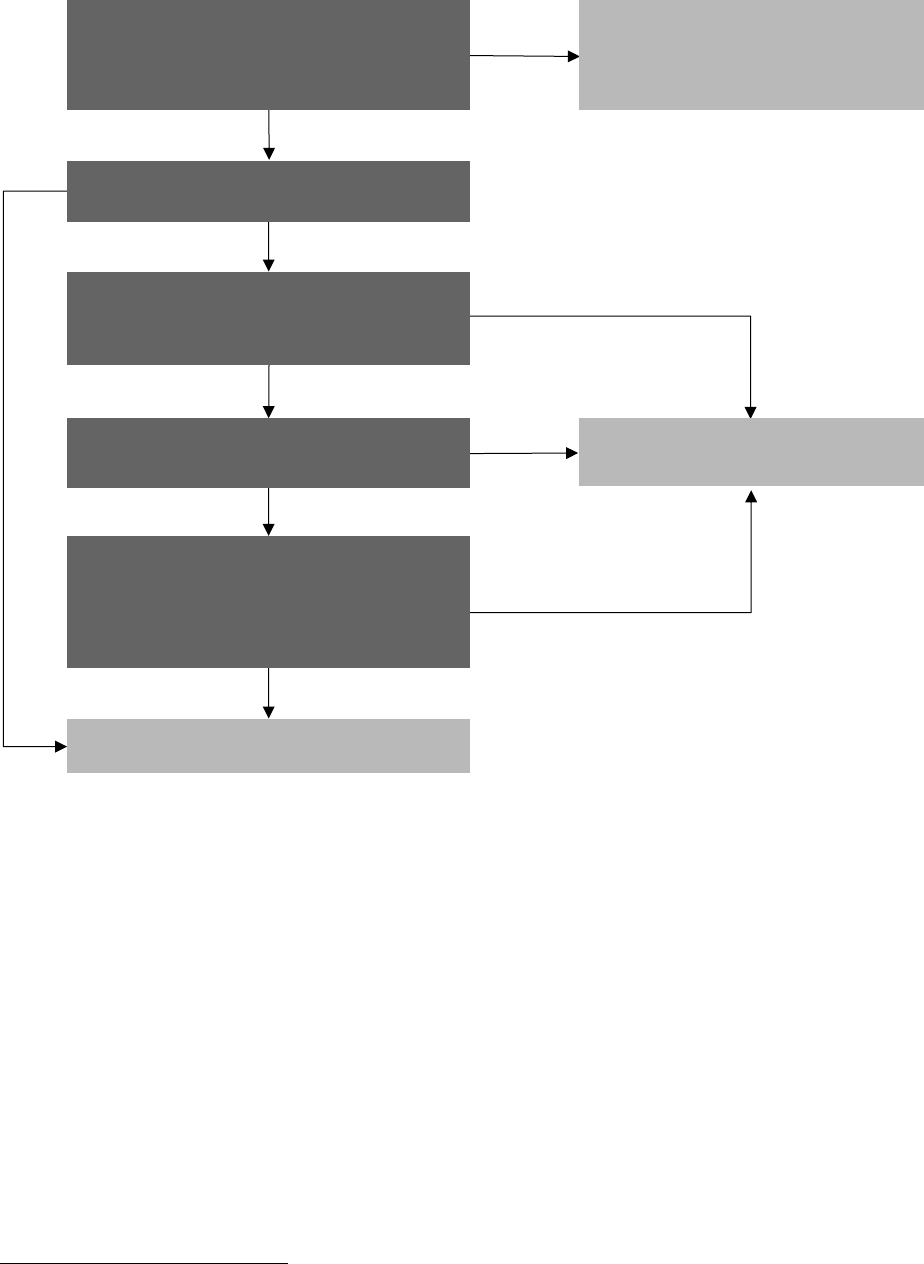
3 Identify the contract with the customer
Financial reporting developments Revenue from contracts with customers (ASC 606) | 60
The following flowchart illustrates this guidance:
* Entities should continue to assess the criteria throughout the term of the arrangement to determine whether they are subsequently met.
If a contract does not initially meet the criteria in ASC 606-10-25-1 (as discussed in section 3.1), an entity
should continue to assess the criteria throughout the term of the arrangement to determine whether they
are subsequently met. Once the criteria are met, the model in the standard would then apply, rather than
the guidance discussed below. If an entity determines that the criteria in ASC 606-10-25-1 are
subsequently met, revenue should be recognized on a cumulative catch-up basis as of the date a contract
exists within the scope of the model (i.e., the “contract establishment date”) reflecting the performance
obligations that are partially or fully satisfied at that time. This accounting is consistent with the
discussion in a TRG agenda paper,
34
which states that the cumulative catch-up method “best satisfies the
core principle” in ASC 606-10-10-2. See Question 7-17 in section 7.1.4.3 for further discussion of this
TRG agenda paper.
34
30 March 2015 TRG meeting, agenda paper no. 33; FASB staff Q&As, question 53.
Yes
Apply the remaining steps of the model
to the contract (Steps 2 through 5).
Does the arrangement meet the criteria in
ASC 606-10-25-1 to be considered a contract
within the scope of the model in ASC 606?*
Is the consideration received from the customer
nonrefundable?
Recognize consideration received as revenue.
Has the entity fully performed and received
substantially all of the consideration?
No
Recognize consideration received as a liability.
Has the entity transferred control of the goods
or services and stopped transferring (and has
no obligation under the contract to transfer)
additional goods or services to the customer?
Has the contract been terminated?
Yes
Yes
Yes
No
No
No
Yes
No

3 Identify the contract with the customer
Financial reporting developments Revenue from contracts with customers (ASC 606) | 61
In cases in which the contract does not meet those criteria (and continues not to meet them), an entity
should recognize nonrefundable consideration received as revenue only when one of the following events
has occurred:
• The entity has fully performed and substantially all of the consideration has been received.
• The contract has been terminated.
• The entity has transferred control of the goods or services and has stopped transferring (and has no
obligation under the contract to transfer) additional goods or services to the customer, if applicable.
Until one of these events happens, any consideration received from the customer is initially accounted
for as a liability (not revenue), and the liability is measured at the amount of consideration received from
the customer.
The existing derecognition guidance in US GAAP should be applied to assets related to contracts that do not
meet the criteria in ASC 606-10-25-1. The Board noted
35
that whether these events have occurred does
not have any effect on determining whether control of an asset has been transferred to a customer and,
therefore, should not affect conclusions about when an asset should be derecognized. Once the buyer
controls the asset (i.e., it has obtained control of the asset from the entity), the entity no longer controls
that asset and should no longer recognize the asset. The Board decided
36
to include the guidance in
ASC 606-10-25-7 to 25-8 to prevent entities from seeking alternative guidance or improperly analogizing
to the five-step revenue recognition model in circumstances in which an executed contract does not meet
the criteria in ASC 606-10-25-1.
In the Basis for Conclusions of ASU 2016-12,
37
the Board noted that while some stakeholders did not
support some of the accounting outcomes that result from the alternative recognition model described in
ASC 606-10-25-7 to 25-8, it is the logical extension of the conclusion that a valid contract does not exist.
That is, any cash received by the entity is deferred until either a contract exists under the standard or
one of the events in ASC 606-10-25-7 occurs because if there is not a valid contract between the parties,
there can be no assurance that consideration received from the customer is solely for past performance.
The FASB further explained
38
that the third event is not the equivalent of legacy GAAP’s “cash basis”
of accounting under which an entity recognized revenue as cash was received from the customer if
collectibility was not considered reasonably assured at contract inception but the other three basic
revenue recognition criteria were met.
39
Under the standard, an entity would only meet the requirements
of this event if it has transferred control of the goods or services and has stopped transferring (and has
no obligation under the contract to transfer) additional goods or services to the customer (which was not
a requirement of legacy GAAP’s “cash basis” accounting). This assessment requires judgment about the
specific facts and circumstances (e.g., an entity’s right to stop transferring goods or services may vary
by arrangement or jurisdiction).
35
Paragraph BC28 of ASU 2016-12.
36
Paragraph BC47 of ASU 2014-09.
37
Paragraph BC22 of ASU 2016-12.
38
Paragraph BC24 of ASU 2016-12.
39
Staff Accounting Bulletin (SAB) Topic 13 required that the following four basic criteria be met before revenue can be considered
realized or earned: (1) persuasive evidence of the arrangement exists, (2) delivery has occurred or services have been rendered,
(3) the seller’s price to the buyer is fixed or determinable and (4) collectibility is reasonably assured.

3 Identify the contract with the customer
Financial reporting developments Revenue from contracts with customers (ASC 606) | 62
Question 3-27 When is a contract considered terminated for purposes of applying ASC 606-10-25-7(b)?
Determining whether a contract is terminated may require significant judgment and may require a legal
assessment. The FASB noted in the Basis for Conclusions of ASU 2016-12
40
that an entity may pursue
collection for a significant period of time after control of goods or services has transferred to the
customer and not legally terminate the contract to maintain its legal rights to continue to pursue
collection or its other legal rights under the contract. In these situations, nonrefundable consideration
received from the customer could be recognized as a liability for a significant period of time during the
period that an entity pursues collection, even though the entity may have stopped transferring goods or
services to the customer and has no further obligations to transfer goods or services to the customer.
The FASB included the event in ASC 606-10-25-7(c) to address these situations.
40
Paragraph BC23 of ASU 2016-12.

Financial reporting developments Revenue from contracts with customers (ASC 606) | 63
4 Identify the performance obligations in
the contract
To apply the standard, an entity must identify the promised goods and services within the contract and
determine which of those goods and services are separate performance obligations. The Board noted in
the Basis for Conclusions of ASU 2014-09
41
that it developed the notion of a “performance obligation” to
assist entities with appropriately identifying the unit of accounting for purposes of applying the standard.
Because the standard requires entities to allocate the transaction price to performance obligations,
identifying the correct unit of accounting is fundamental to recognizing revenue on a basis that faithfully
depicts the entity’s performance in transferring the promised goods or services to the customer.
The standard provides the following guidance with respect to identifying the performance obligations in
a contract:
Excerpt from Accounting Standards Codification
Revenue from Contracts with Customers — Overall
Recognition
Identifying Performance Obligations
606-10-25-14
At contract inception, an entity shall assess the goods or services promised in a contract with a
customer and shall identify as a performance obligation each promise to transfer to the customer either:
a. A good or service (or a bundle of goods or services) that is distinct
b. A series of distinct goods or services that are substantially the same and that have the same
pattern of transfer to the customer (see paragraph 606-10-25-15).
606-10-25-15
A series of distinct goods or services has the same pattern of transfer to the customer if both of the
following criteria are met:
a. Each distinct good or service in the series that the entity promises to transfer to the customer would
meet the criteria in paragraph 606-10-25-27 to be a performance obligation satisfied over time.
b. In accordance with paragraphs 606-10-25-31 through 25-32, the same method would be used to
measure the entity’s progress toward complete satisfaction of the performance obligation to transfer
each distinct good or service in the series to the customer.
41
Paragraph BC85 of ASU 2014-09.

4 Identify the performance obligations in the contract
Financial reporting developments Revenue from contracts with customers (ASC 606) | 64
4.1 Identifying the promised goods and services in the contract
(updated September 2022)
As a first step in identifying the performance obligation(s) in the contract, the standard requires an entity
to identify, at contract inception, the promised goods and services in the contract. The standard provides
guidance on the types of items that may be goods or services promised in the contract as follows:
Excerpt from Accounting Standards Codification
Revenue from Contracts with Customers — Overall
Identifying Performance Obligations
Promises in Contracts with Customers
606-10-25-16
A contract with a customer generally explicitly states the goods or services that an entity promises to
transfer to a customer. However, the promised goods and services identified in a contract with a
customer may not be limited to the goods or services that are explicitly stated in that contract. This is
because a contract with a customer also may include promises that are implied by an entity’s
customary business practices, published policies, or specific statements if, at the time of entering into
the contract, those promises create a reasonable expectation of the customer that the entity will
transfer a good or service to the customer.
606-10-25-16A
An entity is not required to assess whether promised goods or services are performance obligations if
they are immaterial in the context of the contract with the customer. If the revenue related to a
performance obligation that includes goods or services that are immaterial in the context of the
contract is recognized before those immaterial goods or services are transferred to the customer,
then the related costs to transfer those goods or services shall be accrued.
606-10-25-16B
An entity shall not apply the guidance in paragraph 606-10-25-16A to a customer option to acquire
additional goods or services that provides the customer with a material right, in accordance with
paragraphs 606-10-55-41 through 55-45.
606-10-25-17
Promised goods or services do not include activities that an entity must undertake to fulfill a contract
unless those activities transfer a good or service to a customer. For example, a services provider may
need to perform various administrative tasks to set up a contract. The performance of those tasks
does not transfer a service to the customer as the tasks are performed. Therefore, those setup
activities are not promised goods or services in the contract with the customer.
606-10-25-18
Depending on the contract, promised goods or services may include, but are not limited to, the following:
a. Sale of goods produced by an entity (for example, inventory of a manufacturer)
b. Resale of goods purchased by an entity (for example, merchandise of a retailer)
c. Resale of rights to goods or services purchased by an entity (for example, a ticket resold by an
entity acting as a principal, as described in paragraphs 606-10-55-36 through 55-40)

4 Identify the performance obligations in the contract
Financial reporting developments Revenue from contracts with customers (ASC 606) | 65
d. Performing a contractually agreed-upon task (or tasks) for a customer
e. Providing a service of standing ready to provide goods or services (for example, unspecified
updates to software that are provided on a when-and-if-available basis) or of making goods or
services available for a customer to use as and when the customer decides
f. Providing a service of arranging for another party to transfer goods or services to a customer
(for example, acting as an agent of another party, as described in paragraphs 606-10-55-36
through 55-40)
g. Granting rights to goods or services to be provided in the future that a customer can resell or
provide to its customer (for example, an entity selling a product to a retailer promises to transfer
an additional good or service to an individual who purchases the product from the retailer)
h. Constructing, manufacturing, or developing an asset on behalf of a customer
i. Granting licenses (see paragraphs 606-10-55-54 through 55-60 and paragraphs 606-10-55-62
through 55-65B)
j. Granting options to purchase additional goods or services (when those options provide a customer
with a material right, as described in paragraphs 606-10-55-41 through 55-45).
In order for an entity to identify the promised goods and services in a contract, ASC 606-10-25-16 says
that an entity should consider whether the customer has a reasonable expectation that the entity will
provide those goods or services. If the customer has a reasonable expectation that it will receive certain
goods or services, it would likely view those promises as part of the negotiated exchange. This expectation
is most commonly created from an entity’s explicit promises in a contract to transfer goods or services to
the customer.
However, in other cases, promises to provide goods or services might be implied by the entity’s customary
business practices or standard industry norms (i.e., outside of the written contract). As discussed in
section 3, the Board clarified
42
that while the contract must be legally enforceable to be within the scope
of the revenue model, all of the promises (explicit or implicit) don’t have to be legally enforceable to be
considered when determining the entity’s performance obligations. That is, a performance obligation can
be based on a customer’s reasonable expectations (e.g., due to the entity’s business practice of providing
an additional good or service that isn’t specified in the contract).
Promised goods or services may include items such as “free” handsets provided by telecommunication
entities, “free” maintenance provided by automotive manufacturers, and customer loyalty points awarded
by supermarkets, airlines and hotels.
43
The FASB concluded that,
44
while an entity might not consider
those goods or services to be the “main” items the customer contracts to receive, they are goods or
services the customer pays for, and the entity should allocate consideration to them for purposes of
revenue recognition.
42
Paragraphs BC32 and BC87 of ASU 2014-09.
43
Paragraph BC88 of ASU 2014-09.
44
Paragraph BC89 of ASU 2014-09.

4 Identify the performance obligations in the contract
Financial reporting developments Revenue from contracts with customers (ASC 606) | 66
ASC 606-10-25-17 states that promised goods or services do not include activities that an entity must
undertake to fulfill a contract if those activities do not transfer control of a good or service to a customer.
For example, internal administrative activities that an entity must perform to satisfy its obligation to
deliver the promised goods and services, but do not transfer control of a good or service to a customer,
would not be promised goods or services.
Consider the following example:
45
Identification of promised goods or services in a contract
A stock exchange entity provides its customers with access to the capital markets by admitting them
for listing on the stock exchange. The entity charges its customers a nonrefundable up-front admission
fee and an ongoing listing fee. The nonrefundable up-front fee relates to various activities that are
undertaken by the entity at or near contract inception to enable admission to the exchange, including:
• Performing due diligence for new applications
• Reviewing the customer’s listing application forms, including determining whether the application
should be accepted
• Issuing tickers and reference numbers for the new security
• Processing of the listing on, and admission to, the exchange
• Publishing the security on the order book
• Issuing the dealing notice on the applicable admission date
Once the customer has been admitted, the entity provides ongoing market access and maintains the
listing. The listing service transferred to the customer is the same on initial listing and on all
subsequent days for which the customer remains listed.
As part of identifying the goods and services promised to the customer in the contract, the stock
exchange considers whether the above activities undertaken at or near contract inception transfer a
service to the customer as the activities are performed. This assessment depends on the facts and
circumstances of the contract.
In this fact pattern, we believe that, while the activities undertaken at or near contract inception are
required to fulfill the contract with the customer (which promises to provide the customer with the
service of being listed on the exchange), the stock exchange would likely conclude that the activities
do not transfer separate services to the customer as they are performed. Accordingly, they are not
promised goods or services to be identified under Step 2 of the model.
45
The IFRS IC discussed this example and reached similar conclusions. See the January 2019 IFRIC Update.

4 Identify the performance obligations in the contract
Financial reporting developments Revenue from contracts with customers (ASC 606) | 67
An entity may have to apply judgment when determining whether an activity it will perform is a promised
good or service that will be transferred to a customer. The following may be relevant for an entity to
consider when making this judgment:
• Is the activity identified as a good or service to be provided in the contractual arrangement with the
customer? Activities not specifically identified could relate to an internal process of the entity, but
they could also relate to implicit promises to the customer.
• Does the activity relate to the entity putting in place processes and procedures, or training its employees,
so that it may render the contracted goods or services to the customer (e.g., setup activities)?
• Is the activity administrative in nature (e.g., tasks performed to determine whether to accept or
reject a customer, establishing the customer’s account, billing the customer)?
• Is the customer aware of when the activity is performed?
ASC 606-10-25-18 provides examples of promised goods or services that may be included in a contract
with a customer, such as a good produced by an entity or a contractually agreed-upon task (or service)
performed for a customer. ASC 606-10-25-18(e) describes a stand-ready obligation as a promised
service that consists of standing ready to provide goods or services or making goods or services available
for a customer to use as and when it decides to use it. That is, a stand-ready obligation is the promise
that the customer has access to a good or service rather than a promise to transfer the underlying good
or service itself. Stand-ready obligations are common in the software industry (e.g., unspecified updates
to software on a when-and-if-available basis) and may be present in other industries. See Questions 4-2
and 4-3 below for further discussion on stand-ready obligations.
ASC 606-10-25-18(g) also notes that a promise to a customer may include granting rights to goods or
services to be provided in the future that the customer can resell or provide to its customer if those
rights existed at the time that the parties agreed to the contract. The FASB indicated
46
that a
performance obligation may exist for a promise to provide a good or service in the future (e.g., when an
entity makes a promise to provide goods or services to its customer’s customer). These types of
promises exist in distribution networks in various industries and are common in the automotive industry.
After identifying the promised goods or services in the contract, an entity determines which of these
promised goods or services (or bundle of goods and services) represent separate performance obligations.
46
Paragraph BC92 of ASU 2014-09.
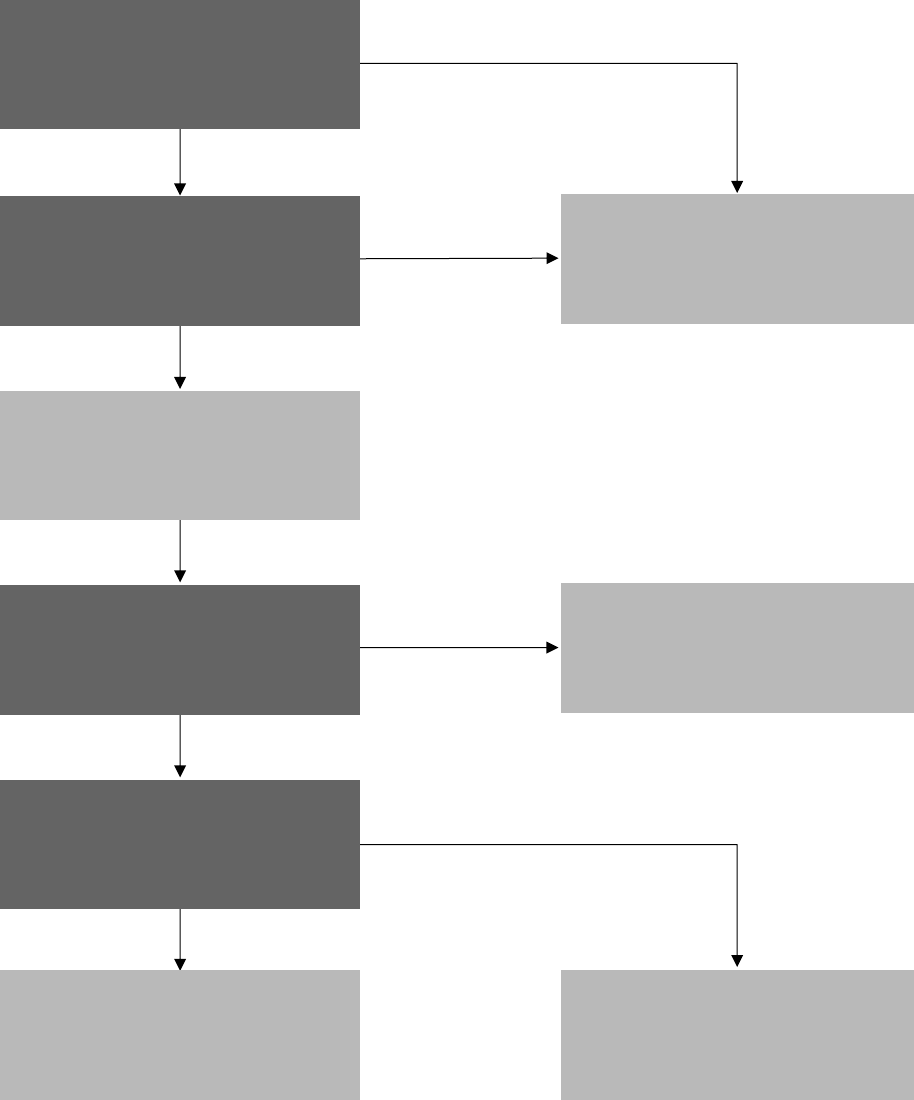
4 Identify the performance obligations in the contract
Financial reporting developments Revenue from contracts with customers (ASC 606) | 68
The following flowchart illustrates the guidance an entity uses to assess whether the activities it will
perform are promised goods or services and whether they should be accounted for as performance
obligations under Step 2 of the ASC 606 model:
The standard includes the following example to illustrate how an entity should identify the promised
goods and services in a contract (including both explicit and implicit promises). The example also
evaluates whether the identified promises are performance obligations, which we discuss in section 4.2:
No
The activity is not a promised
good or service.
Does the activity that the entity must
undertake to fulfill the contract transfer
control of a good or service to a customer?
No
The activity is a promised good or service.
Is the promised good or service immaterial
in the context of the contract with the
customer (see section 4.1.1)?
The entity is not required to assess
whether the promised good or service
is a performance obligation.
Is the promised good or service either
distinct or a series of distinct goods or
services that are substantially the same and
that have the same pattern of transfer to
the customer (see section 4.2 below)?
The promised good or service should
be accounted for as a separate
performance obligation.
The promised good or service is not a
separate performance obligation and
should be combined with other promised
goods or services (see section 4.3).
No
Yes
Yes
Yes
Yes
No
Does the customer have a reasonable
expectation (either through explicit or
implicit promises) that the activity
will be performed by the entity
to fulfill the contract?

4 Identify the performance obligations in the contract
Financial reporting developments Revenue from contracts with customers (ASC 606) | 69
Excerpt from Accounting Standards Codification
Revenue from Contracts with Customers — Overall
Implementation Guidance and Illustrations
Example 12 — Explicit and Implicit Promises in a Contract
606-10-55-151
An entity, a manufacturer, sells a product to a distributor (that is, its customer), who will then resell it
to an end customer.
Case A — Explicit Promise of Service
606-10-55-152
In the contract with the distributor, the entity promises to provide maintenance services for no
additional consideration (that is, “free”) to any party (that is, the end customer) that purchases the
product from the distributor. The entity outsources the performance of the maintenance services to
the distributor and pays the distributor an agreed-upon amount for providing those services on the
entity’s behalf. If the end customer does not use the maintenance services, the entity is not obliged to
pay the distributor.
606-10-55-153
The contract with the customer includes two promised goods or services—(a) the product and (b) the
maintenance services (because the promise of maintenance services is a promise to transfer goods or
services in the future and is part of the negotiated exchange between the entity and the distributor).
The entity assesses whether each good or service is distinct in accordance with paragraph 606-10-25-
19. The entity determines that both the product and the maintenance services meet the criterion in
paragraph 606-10-25-19(a). The entity regularly sells the product on a standalone basis, which
indicates that the customer can benefit from the product on its own. The customer can benefit from
the maintenance services together with a resource the customer already has obtained from the entity
(that is, the product).
606-10-55-153A
The entity further determines that its promises to transfer the product and to provide the maintenance
services are separately identifiable (in accordance with paragraph 606-10-25-19(b)) on the basis of
the principle and the factors in paragraph 606-10-25-21. The product and the maintenance services
are not inputs to a combined item in this contract. The entity is not providing a significant integration
service because the presence of the product and the services together in this contract do not result in
any additional or combined functionality. In addition, neither the product nor the services modify or
customize the other. Lastly, the product and the maintenance services are not highly interdependent
or highly interrelated because the entity would be able to satisfy each of the promises in the contract
independent of its efforts to satisfy the other (that is, the entity would be able to transfer the product
even if the customer declined maintenance services and would be able to provide maintenance
services in relation to products sold previously through other distributors). The entity also observes, in
applying the principle in paragraph 606-10-25-21, that the entity’s promise to provide maintenance is
not necessary for the product to continue to provide significant benefit to the customer. Consequently,
the entity allocates a portion of the transaction price to each of the two performance obligations (that
is, the product and the maintenance services) in the contract.

4 Identify the performance obligations in the contract
Financial reporting developments Revenue from contracts with customers (ASC 606) | 70
Case B — Implicit Promise of Service
606-10-55-154
The entity has historically provided maintenance services for no additional consideration (that is,
“free”) to end customers that purchase the entity’s product from the distributor. The entity does not
explicitly promise maintenance services during negotiations with the distributor, and the final contract
between the entity and the distributor does not specify terms or conditions for those services.
606-10-55-155
However, on the basis of its customary business practice, the entity determines at contract inception
that it has made an implicit promise to provide maintenance services as part of the negotiated
exchange with the distributor. That is, the entity’s past practices of providing these services create
reasonable expectations of the entity’s customers (that is, the distributor and end customers) in
accordance with paragraph 606-10-25-16. Consequently, the entity assesses whether the promise of
maintenance services is a performance obligation. For the same reasons as in Case A, the entity
determines that the product and maintenance services are separate performance obligations.
Case C — Services Are Not a Promised Service
606-10-55-156
In the contract with the distributor, the entity does not promise to provide any maintenance services.
In addition, the entity typically does not provide maintenance services, and, therefore, the entity’s
customary business practices, published policies, and specific statements at the time of entering into the
contract have not created an implicit promise to provide goods or services to its customers. The entity
transfers control of the product to the distributor and, therefore, the contract is completed. However,
before the sale to the end customer, the entity makes an offer to provide maintenance services to any
party that purchases the product from the distributor for no additional promised consideration.
606-10-55-157
The promise of maintenance is not included in the contract between the entity and the distributor at
contract inception. That is, in accordance with paragraph 606-10-25-16, the entity does not explicitly
or implicitly promise to provide maintenance services to the distributor or the end customers.
Consequently, the entity does not identify the promise to provide maintenance services as a
performance obligation. Instead, the obligation to provide maintenance services is accounted for in
accordance with Topic 450 on contingencies.
606-10-55-157A
Although the maintenance services are not a promised service in the current contract, in future
contracts with customers the entity would assess whether it has created a business practice resulting in
an implied promise to provide maintenance services.
Question 4-1 How should an entity assess whether pre-production activities are a promised good or service?
[9 November 2015 TRG meeting, agenda paper no. 46; FASB staff Q&As, question 16]
Manufacturing and production entities in various industries may perform activities and incur costs before
they produce goods. Some arrangements (including long-term supply arrangements) require an entity to
incur up-front costs, such as nonrecurring engineering and design costs or costs related to setup
activities, to create new technology or adapt existing technology to the needs of the customer. These
pre-production activities are often a prerequisite to delivering any units under a production contract.
4 Identify the performance obligations in the contract
Financial reporting developments Revenue from contracts with customers (ASC 606) | 71
For example, a manufacturer may incur costs to perform certain services related to the design and
development of products it will sell under long-term supply arrangements and may incur costs to design
and develop molds, dies and other tools that will be used to produce those products. A contract may call
for the customer to reimburse the manufacturer for these costs, or reimbursement may be implicitly
guaranteed as part of the price of the product or by other means.
When assessing whether pre-production activities are promises in a contract with a customer (and
potentially performance obligations under ASC 606), entities need to determine whether the activities
transfer a good or service to a customer. If an entity determines that these activities are promised goods
or services, it applies the guidance in ASC 606 to those goods or services. Also see Questions 9-13 and
9-17 in section 9.3.2 for a discussion of how an entity should account for costs related to pre-production
activities and pre-contract or setup activities, respectively.
TRG members generally agreed that if an entity is having difficulty determining whether a pre-production
activity is a promised good or service in a contract, the entity should consider whether control of that
good or service is transferred to the customer. For example, if an entity is performing engineering and
development as part of developing a new product for a customer and the customer will own the
intellectual property (e.g., patents) that results, the entity will likely conclude that it is transferring
control of the intellectual property and that the engineering and development activities are a promised
good or service in the contract.
However, TRG members noted that assessing whether control transfers in such arrangements may be
challenging. In some arrangements, legal title of the good or service created from the pre-production
activity is transferred to the customer. However, TRG members generally agreed that an entity has to
consider all indicators of control transfer under the standard, and the transfer of legal title is not a
presumptive indicator.
The FASB staff noted in the TRG agenda paper that when an entity is determining whether control
transfers to a customer in such arrangements, one of the three over-time revenue recognition criteria
may be applicable to pre-production activities. That criterion is whether the customer simultaneously
receives and consumes the benefits provided by the entity’s performance as the entity performs. As
further discussed in section 7.1.1, ASC 606-10-55-6 notes that if an entity cannot readily identify
whether this criterion is met, it should consider whether another entity would need to reperform the
work the entity had completed to date if that other entity were required to fulfill the remaining
performance obligation.
For example, assume an entity is performing engineering and development as part of developing a new
product for a customer. If the entity provided the customer with periodic progress reports in a level of
detail that would not require the customer to contract with another entity to reperform the work, or if
the entity is required to provide the customer with the design information completed to date in the case
of a termination, the entity likely would conclude that control of that service transfers to the customer as
the entity performs.
If an entity determines that a pre-production activity is a promised good or service under ASC 606, the
entity allocates a portion of the transaction price to that good or service (as a single performance
obligation or as part of combined performance obligation that includes the pre-production activities along
with other goods and services). If the pre-production activities are included in a performance obligation
satisfied over time, they are considered when measuring progress toward satisfaction of that
performance obligation (see section 7.1.4).
If a pre-production activity does not result in the transfer of control of a good or service to a customer, an
entity should consider other guidance that may be applicable (e.g., ASC 360 on PP&E, ASC 340-40 on costs
to fulfill a contract with a customer, ASC 730 on research and development).

4 Identify the performance obligations in the contract
Financial reporting developments Revenue from contracts with customers (ASC 606) | 72
Question 4-2 What is the nature of the promise in a “typical” stand-ready obligation? [26 January 2015 TRG meeting,
agenda paper no. 16; FASB staff Q&As, question 22]
TRG members discussed numerous examples of stand-ready obligations and generally agreed that the
nature of the promise in a stand-ready obligation is the promise that the customer will have access to a
good or service, not the delivery of the underlying good or service. The standard describes a stand-ready
obligation as a promised service that consists of standing ready to provide goods or services or making
goods or services available for a customer to use as and when it decides to do so.
The TRG agenda paper included the following types of promises to a customer that could be
considered stand-ready obligations, depending on the facts and circumstances:
• Obligations for which the delivery of the good, service or intellectual property is within the control of
the entity but is still being developed (e.g., a software vendor’s promise to transfer unspecified
software upgrades at its discretion)
• Obligations for which the delivery of the underlying good or service is outside the control of the
entity and the customer (e.g., an entity’s promise to remove snow from an airport runway in
exchange for a fixed fee for the year)
• Obligations for which the delivery of the underlying good or service is within the control of the
customer (e.g., an entity’s promise to provide periodic maintenance on a when-and-if needed basis
on a customer’s equipment after a pre-established amount of usage by the customer)
• Obligations to make a good or service available to a customer continuously (e.g., a gym membership
that provides unlimited access to a customer for a specified period of time)
An entity needs to carefully evaluate the facts and circumstances of its contracts to appropriately identify
whether the nature of a promise to a customer is the delivery of the underlying good(s) or service(s) or
the service of standing ready to provide goods or services. Entities also have to consider other promises
in a contract that includes a stand-ready obligation to appropriately identify the performance obligations
in the contract. TRG members generally agreed
47
that all contracts with a stand-ready element do not
necessarily include a single performance obligation (refer to Question 4-3 below).
Refer to Question 4-14 in section 4.2.2 for discussion on whether stand-ready obligations are generally
considered to be a series of distinct goods or services.
How we see it
Stand-ready obligations are common in the software industry and may be present in other industries.
For example, a software entity’s promise to provide an unspecified number of software updates on a
when-and-if-available basis generally represents a stand-ready obligation. In contrast, a promise to
provide certain specified software updates would typically not be a stand-ready obligation.
Further, an arrangement that requires the customer to make additional purchasing decisions (e.g.,
through the submission of a purchase order) is generally not a stand-ready obligation. This is because
the entity is not obligated to fulfill the purchase order until it is submitted. Therefore, the nature of the
promise to the customer is the delivery of the underlying goods or service and not a promise to stand
ready to provide goods or services.
47
9 November 2015 TRG meeting, agenda paper no. 48; FASB staff Q&As, question 23.

4 Identify the performance obligations in the contract
Financial reporting developments Revenue from contracts with customers (ASC 606) | 73
Question 4-3 Do all contracts with a stand-ready element include a single performance obligation that is satisfied
over time? [9 November 2015 TRG meeting, agenda paper no. 48; FASB staff Q&As, question 23]
TRG members generally agreed that the stand-ready element in a contract does not always represent a
single performance obligation satisfied over time. This conclusion is consistent with the discussion in
Question 4-2 that, when identifying the nature of a promise to a customer, an entity may determine that
a stand-ready element exists but is not the promised good or service for revenue recognition purposes.
Instead, the underlying goods or services are the goods or services promised to the customer and
accounted for by the entity.
Consider the following example in the TRG agenda paper:
Example of determining the nature of the promise in a contract with a stand-ready element
An entity is required to stand ready to produce a part for a customer under an MSA. The customer is
not obligated to purchase any parts (i.e., there is no minimum guaranteed volume); however, it is
highly likely the customer will purchase parts because the part is required to manufacture the
customer’s product, and it is not practical for the customer to buy parts from multiple suppliers.
TRG members generally agreed that the nature of the promise in this example is the delivery of the
parts rather than a service of standing ready. When the customer submits a purchase order under the
MSA, it is contracting for a specific number of distinct goods, and the purchase order creates new
performance obligations for the entity. However, if the entity determined that the nature of the promise
was a service of standing ready, the contract would be accounted for as a single performance obligation
satisfied over time, and the entity may be required to estimate the number of purchases to be made
throughout the contract term (i.e., make an estimate of variable consideration and apply the constraint
on variable consideration) and continually update the transaction price and its allocation among the
transferred goods and services.
The TRG agenda paper also noted that in this example, the entity is not obligated to transfer any parts
until the customer submits a purchase order (i.e., the customer makes a separate purchasing decision).
This contrasts with a stand-ready obligation, which requires the entity to make a promised service
available to the customer and doesn’t require the customer to make any additional purchasing decisions.
See Question 4-22 in section 4.6 for further discussion on determining whether a contract involving
variable quantities of goods or services should be accounted for as variable consideration (i.e., if the
nature of the promise is to transfer one overall service to the customer, such as a stand-ready obligation)
or a contract containing customer options (i.e., if the nature of the promise is to transfer the underlying
distinct goods or services).
Question 4-4 How should an entity evaluate whether an exclusivity provision in a contract with a customer
represents a promised good or service?
We generally believe that an exclusivity provision does not represent a promised good or service.
Contracts with customers involving the sale of products or services may contain exclusivity clauses
whereby the entity agrees that it will not provide the products or services to others or will do so only on a
limited basis. Such provisions may restrict the distribution of the products or services in certain
geographical areas and/or prohibit the sale of the products or services to a customer’s competitors. For
example, an entity that provides advertising on its website may agree to run a banner advertisement for
one customer for a specified period of time and exclude advertisements for similar products or services
from the advertiser’s competitors.

4 Identify the performance obligations in the contract
Financial reporting developments Revenue from contracts with customers (ASC 606) | 74
In the Basis for Conclusions of ASU 2014-09,
48
the FASB discussed exclusivity in relation to licenses of
intellectual property and concluded that exclusivity is a restriction that represents an attribute of the
license rather than the nature of the underlying intellectual property or the entity’s promise in granting
the license. That is, exclusivity provisions define the scope of the customer’s rights to intellectual
property and should not be accounted for separately (see section 8.1.3 for further discussion).
We believe that the same principles would apply when evaluating exclusivity provisions in contracts that
do not contain a license of intellectual property. That is, exclusivity is an attribute of the promise to the
customer rather than a separate promised good or service because it does not change the nature of the
entity’s performance to provide the underlying goods or services to the customer.
Any up-front payment received from a customer related to an exclusivity provision would need to be
evaluated to determine whether it represents a material right (see further discussion in section 5.8).
Conversely, any payment made by the entity to the customer would need to be evaluated as
consideration paid or payable to a customer (see further discussion in section 5.7).
Question 4-5 Does a guarantee to defend or maintain a patent represent a promised good or service?
No. This is consistent with ASC 606-10-55-64A (discussed in section 8.1.4).
4.1.1 Promised goods or services that are immaterial in the context of a contract
As entities assess whether promised goods or services are performance obligations, ASC 606-10-25-16A
permits them to disregard goods and services that are deemed to be immaterial in the context of a
contract. Because of this guidance, entities are not required to aggregate and assess immaterial items at
the entity level. That is, when determining whether a good or service is immaterial in the context of a
contract, the assessment is made based on the application of ASC 606 at the contract level, not in
accordance with SAB Topic 1.M, which provides guidance on applying materiality thresholds to the
preparation of financial statements filed with the SEC.
The Board decided that an entity is required to consider whether a promised good or service is material
only at the contract level because it would be unduly burdensome to require an entity to aggregate and
determine the effect on its financial statements of those items or activities determined to be immaterial
at the contract level.
49
Further, the Board explained in the Basis for Conclusions of ASU 2016-10
50
that
assessing immaterial goods or services might obscure, rather than clarify, the entity’s performance
obligation(s) in a contract and that an entity is not required to allocate revenue to promised goods or
services that are immaterial in the context of a contract.
ASC 606-10-25-16B states that this guidance that allows entities to disregard promises that are
immaterial in the context of a contract may not be applied to customer options for additional goods or
services. That is, an entity still needs to evaluate whether customer options for additional goods or
services are material rights that should be accounted for as performance obligations in accordance with
ASC 606-10-55-41 through 55-45 (see section 4.6).
48
Paragraph BC412(b) of ASU 2014-09.
49
Paragraph BC12 of ASU 2016-10.
50
Paragraph BC13 of ASU 2016-10.

4 Identify the performance obligations in the contract
Financial reporting developments Revenue from contracts with customers (ASC 606) | 75
When evaluating whether a promised good or service is immaterial, an entity should consider the relative
significance or importance of the good or service in the context of a contract as a whole. In doing so, entities
need to consider both quantitative and qualitative factors, just as they do when considering materiality in
other areas of GAAP. If an entity determines that multiple goods or services are individually immaterial in the
context of a contract, it has to further assess the collective significance of those goods or services before
concluding it is appropriate to consider them all immaterial in the context of the contract. This is because
those individual immaterial items may be material in the aggregate to the contract. The Board explained in the
Basis for Conclusions of ASU 2016-10
51
that an entity may not disregard some or all of those immaterial
goods or services when identifying performance obligations if the disregarded goods or services are
material to the contract in the aggregate. That is, an entity must account for a material portion of its
promised goods or services in a contract and can’t avoid accounting for any material portion of the contract.
ASC 606-10-25-16A also requires entities to accrue for the costs of transferring immaterial goods or
services to the customer in instances in which the costs will be incurred after the performance obligation
(that includes those immaterial goods or services) has been satisfied. The FASB noted in the Basis for
Conclusions of ASU 2016-10
52
that this requirement will more appropriately align the recognition of
revenue and costs in the financial statements. The Board also observed that the cost accrual requirement
in the standard only applies to items that are deemed to be promises to a customer in a contract. For
example, an entity typically would not be required to accrue costs for operating a call desk to answer
general inquiries about a product because doing that does not fulfill a promise to a customer.
4.1.2 Shipping and handling activities (updated September 2023)
The standard allows entities to elect to account for shipping and handling activities performed after the
control of a good has been transferred to the customer as a fulfillment cost (i.e., not a promised good or
service), as follows:
Excerpt from Accounting Standards Codification
Revenue from Contracts with Customers — Overall
Identifying Performance Obligations
Promises in Contracts with Customers
606-10-25-18A
An entity that promises a good to a customer also might perform shipping and handling activities
related to that good. If the shipping and handling activities are performed before the customer obtains
control of the good (see paragraphs 606-10-25-23 through 25-30 for guidance on satisfying
performance obligations), then the shipping and handling activities are not a promised service to the
customer. Rather, shipping and handling are activities to fulfill the entity’s promise to transfer the good.
606-10-25-18B
If shipping and handling activities are performed after a customer obtains control of the good, then the
entity may elect to account for shipping and handling as activities to fulfill the promise to transfer the
good. The entity shall apply this accounting policy election consistently to similar types of
transactions. An entity that makes this election would not evaluate whether shipping and handling
activities are promised services to its customers. If revenue is recognized for the related good before
the shipping and handling activities occur, the related costs of those shipping and handling activities
shall be accrued. An entity that applies this accounting policy election shall comply with the accounting
policy disclosure requirements in paragraphs 235-10-50-1 through 50-6.
51
Paragraph BC14 of ASU 2016-10.
52
Paragraph BC16 of ASU 2016-10.

4 Identify the performance obligations in the contract
Financial reporting developments Revenue from contracts with customers (ASC 606) | 76
This election is intended to provide relief for entities that have free onboard shipping point arrangements
and might otherwise determine that the act of shipping is a performance obligation under the standard. If
that were the case, the entity would be required to allocate a portion of the transaction price to the
shipping service and recognize it when (or as) the shipping occurs.
Shipping and handling activities performed before the transfer of control of a good are fulfillment
activities rather than promised services because they relate to the entity’s asset and not the customer’s
asset, and the costs are incurred to facilitate the sale of the good to the customer. The Board decided
53
that an entity’s effort to deliver a good to a customer is no different from its efforts to procure raw
materials, manufacture a good or ship a finished product from its manufacturing facility to its warehouse.
Therefore, the question of whether shipping is a promised service in a contract is only relevant in
situations in which shipping is performed after the customer has obtained control of the good. The
accounting policy election may be applied when the entity performs the shipping and handling activities
itself or when it outsources the shipping and handling activities to a third party as long as the criterion to
make the election has been met (i.e., the activities are performed after control of the good has been
transferred to the customer).
The Board explained in the Basis for Conclusions of ASU 2016-10
54
that it provided a policy election, rather
than a requirement, because an entity should not be precluded from accounting for shipping and handling
as a promised service if doing so would be more consistent with the nature of its contract with a customer.
The accounting policy election should be applied consistently to similar types of transactions. The election is
not required to be made at an entity level because the Board recognized
55
that some entities sell multiple
classes of goods and contracts might vary significantly for different classes of goods. An entity that
makes this election should comply with the disclosure requirements of ASC 235-10-50-1 through 50-6.
The standard also contains guidance that requires entities to accrue for fulfillment costs when they apply
the policy election for shipping and handling activities. That is, entities are required to accrue for the
costs of shipping and handling activities if revenue is recognized before contractually agreed shipping and
handling activities occur. The FASB noted in the Basis for Conclusions of ASU 2016-10
56
that this
requirement will more appropriately align the recognition of revenue and costs in the financial statements.
Question 4-6 Can the shipping and handling election be applied to other types of activities (e.g., custodial or
storage services) that occur after an entity transfers control of a good or service?
The FASB explained in the Basis for Conclusions of ASU 2016-10
57
that the scope of the election is limited
only to shipping and handling activities performed after the transfer of control of a good. As a result, it is
inappropriate for an entity to apply the election by analogy to any other activities that are performed
after control transfer, such as custodial or storage services. An entity should consider whether these
other activities transfer a promised good or service to the customer under ASC 606-10-25-17. If the
other activities represent a promised good or service, it is possible that an entity could determine that
these activities are immaterial in the context of the contract in accordance with ASC 606-10-25-16A.
An entity needs to apply judgment when evaluating whether those other activities are immaterial in the
context of the contract.
53
Paragraph BC22 of ASU 2016-10.
54
Paragraph BC21 of ASU 2016-10.
55
Paragraph BC21 of ASU 2016-10.
56
Paragraphs BC16 and BC25 of ASU 2016-10.
57
Paragraph BC23 of ASU 2016-10.

4 Identify the performance obligations in the contract
Financial reporting developments Revenue from contracts with customers (ASC 606) | 77
Question 4-7 How should entities classify shipping and handling costs in the income statement?
It depends. Under ASC 606, and as discussed above, if the shipping and handling activities are performed
before the customer obtains control of the good, an entity accounts for the shipping and handling as activities
to fulfill the promise to transfer the good. If shipping and handling are performed after a customer obtains
control of the good, an entity may either account for shipping and handling as a promised service to the
customer or elect to account for shipping and handling as activities to fulfill the promise to transfer the good.
If an entity considers shipping and handling activities to be a promised service to the customer, we
believe the related costs should be classified as cost of sales because the costs would be incurred to fulfill
a revenue obligation.
We believe entities need to apply judgment to determine how to classify shipping and handling costs
when the related activities are not considered a promised service to the customer (e.g., when an entity
uses the accounting policy election discussed above in section 4.1.2), as discussed further below. This is
because ASC 606 does not address how entities should classify these costs.
We strongly encourage entities to disclose the amount of these costs and the line item or items on the income
statement that include them if they are significant and not included in cost of sales (even though this not a
requirement of ASC 606). This view is consistent with that of the SEC staff. In a speech,
58
a member of the
SEC staff noted that, given the absence of classification guidance in ASC 606, an entity needs to apply
judgment in determining the appropriate classification of expenses for shipping and handling activities it
accounts for as activities to fulfill the promise to transfer the good. The SEC staff member further noted the
staff would not object to the classification of these expenses in costs of sales. The SEC staff member said a
registrant that classifies significant shipping and handling costs outside of costs of sales should consider
disclosing the amount of such costs and the line item or items on the income statement that include them,
similar to disclosures required under legacy GAAP.
How we see it
We believe it would be difficult for an entity that historically has recorded shipping and handling costs
as costs of sales to change its policy to start classifying the costs as SG&A expenses. That’s because
the entity would have to apply the guidance in ASC 250 on voluntary changes in accounting principle
and conclude that the change in accounting principle is preferable. An SEC registrant would also be
required to obtain a preferability letter.
59
Refer to section 3 of our FRD, Accounting changes and error
corrections, for additional details regarding voluntary changes in accounting principle.
4.2 Determining when promises are performance obligations
After identifying the promised goods and services within a contract, an entity determines which of those
goods and services will be accounted for as separate performance obligations. That is, the entity decides
what will be the individual units of accounting.
Promised goods and services represent separate performance obligations if the goods or services are
distinct (by themselves or as part of a bundle of goods and services) (see section 4.2.1) or if the goods
and services are part of a series of distinct goods or services that are substantially the same and have the
same pattern of transfer to the customer (see section 4.2.2).
58
Remarks by Barry Kanczuker, Associate Chief Accountant, SEC Office of the Chief Accountant, 4 December 2017.
59
Item 601(b)(18) of Regulation S-K.

4 Identify the performance obligations in the contract
Financial reporting developments Revenue from contracts with customers (ASC 606) | 78
If a promised good or service is not distinct, an entity is required to combine that good or service with
other promised goods or services until it identifies a bundle of goods or services that is distinct. An entity
is required to account for all the goods or services promised in a contract as a single performance
obligation if the entire bundle of promised goods and services is the only performance obligation
identified. Refer to section 4.3 for further discussion.
The following flowchart illustrates this guidance:
A single performance obligation may include a license of intellectual property and other promised goods
or services. ASC 606-10-55-56 identifies two examples of licenses of intellectual property that are not
distinct from other promised goods or services in a contract: (1) a license that is a component of a
tangible good and that is integral to the functionality of the tangible good and (2) a license that the
customer can benefit from only in conjunction with a related service (e.g., an online hosting service that
enables a customer to access the content provided by the license of intellectual property). See section
8.1.2 for further discussion on these two examples.
The standard also specifies that the following items are performance obligations: (1) customer options for
additional goods or services that provide material rights to customers (see ASC 606-10-55-42 in section 4.6)
and (2) service-type warranties (see ASC 606-10-55-30 through 55-35 in section 9.1). Entities would not
apply the general model to determine whether these goods or services are performance obligations because
the Board deemed them to be performance obligations if they are identified as promises in a contract.
An entity is not precluded from accounting for distinct goods or services that are delivered concurrently
and have the same pattern of transfer as a single performance obligation, if the outcome will be the same
as accounting for the goods and services as individual performance obligations.
60
60
Paragraph BC116 of ASU 2014-09.
Yes
Combine with other promised goods or services
until a distinct bundle exists (see section 4.3).
No
Is the promised good or service capable
of being distinct (see section 4.2.1.1)?
No
Yes
Is the promised good or service distinct in the
context of the contract (see section 4.2.1.2)?
The promised good or service is a performance
obligation (i.e., separate unit of accounting)
(see section 4.2.1). Consider whether the
series provision applies (see section 4.2.2).

4 Identify the performance obligations in the contract
Financial reporting developments Revenue from contracts with customers (ASC 606) | 79
How we see it
How registrants determine which promised goods and services are performance obligations continues to be
an area of frequent comment by the SEC staff. The SEC staff has requested that registrants provide an
analysis supporting their determination that certain promised goods or services in a contract were not
separately identifiable from other promises in the contract and, therefore, were not distinct performance
obligations. Conversely, the SEC staff also has requested that registrants provide a similar analysis to
support their determination that certain promised goods or services in a contract were separately
identifiable from other promises in the contract and, therefore, were distinct performance obligations.
4.2.1 Determination of distinct
The standard outlines a two-step process for determining whether a promised good or service (or a
bundle of goods and services) is distinct: (1) consideration at the level of the individual good or service
(i.e., the good or service is capable of being distinct) and (2) consideration of whether the good or service
is separable from other promises in the contract (i.e., the good or service is distinct within the context of
the contract). Both of these criteria must be met to conclude that the good or service is distinct. If these
criteria are met, the individual good or service must be accounted for as a separate unit of accounting
(i.e., a performance obligation).
The Board concluded
61
that both steps are important to determine whether a promised good or service
should be accounted for separately. The first criterion (i.e., capable of being distinct) establishes the
minimum characteristics for a good or service to be accounted for separately. However, even if the
individual goods or services promised in a contract may be capable of being distinct, it may not be
appropriate to account for each of them separately because doing so would not result in a faithful depiction
of the entity’s performance in that contract or appropriately represent the nature of an entity’s promise
to the customer. Therefore, an entity also needs to consider the interrelationship of those goods or
services to apply the second criterion (i.e., distinct within the context of the contract) and determine the
performance obligations in a contract.
The standard provides the following guidance to determine whether a good or service is distinct:
Excerpt from Accounting Standards Codification
Revenue from Contracts with Customers — Overall
Identifying Performance Obligations
Distinct Goods or Services
606-10-25-19
A good or service that is promised to a customer is distinct if both of the following criteria are met:
a. The customer can benefit from the good or service either on its own or together with other resources
that are readily available to the customer (that is, the good or service is capable of being distinct).
b. The entity’s promise to transfer the good or service to the customer is separately identifiable
from other promises in the contract (that is, the promise to transfer the good or service is distinct
within the context of the contract).
61
Paragraph BC102 of ASU 2014-09.

4 Identify the performance obligations in the contract
Financial reporting developments Revenue from contracts with customers (ASC 606) | 80
4.2.1.1 Capable of being distinct
The first criterion requires that a promised good or service must be capable of being distinct by providing
a benefit to the customer either on its own or together with other resources that are readily available to
the customer. The Board explained in the Basis for Conclusions of ASU 2016-10
62
that this criterion
establishes a baseline level of economic substance that a promised good or service must have in order to
be distinct from other promises in a contract.
The standard provides the following guidance on how to determine whether a promised good or service is
capable of being distinct:
Excerpt from Accounting Standards Codification
Revenue from Contracts with Customers — Overall
Identifying Performance Obligations
Distinct Goods or Services
606-10-25-20
A customer can benefit from a good or service in accordance with paragraph 606-10-25-19(a) if the
good or service could be used, consumed, sold for an amount that is greater than scrap value, or
otherwise held in a way that generates economic benefits. For some goods or services, a customer
may be able to benefit from a good or service on its own. For other goods or services, a customer may
be able to benefit from the good or service only in conjunction with other readily available resources.
A readily available resource is a good or service that is sold separately (by the entity or another entity)
or a resource that the customer has already obtained from the entity (including goods or services that
the entity will have already transferred to the customer under the contract) or from other transactions
or events. Various factors may provide evidence that the customer can benefit from a good or service
either on its own or in conjunction with other readily available resources. For example, the fact that
the entity regularly sells a good or service separately would indicate that a customer can benefit from
the good or service on its own or with other readily available resources.
Determining whether a good or service is capable of being distinct will be straightforward in many
situations. For example, if an entity regularly sells a good or service separately, that would demonstrate
that the good or service provides benefit to a customer on its own or with other readily available resources.
The evaluation may require more judgment in other situations, particularly when the good or service can
only provide benefit to the customer with readily available resources provided by other entities. These
are resources that meet either of the following conditions:
• They are sold separately by the entity (or another entity).
• The customer has already obtained them from the entity (including goods or services that the entity
has already transferred to the customer under the contract) or from other transactions or events.
As noted in the Basis for Conclusions of ASU 2014-09,
63
the assessment of whether the customer can
benefit from the goods or services (either on its own or with other readily available resources) should be
based on the characteristics of the goods or services themselves instead of how the customer might use the
goods or services. Consistent with this notion, an entity should disregard any contractual limitations that
may prevent the customer from obtaining readily available resources from a party other than the entity
when making this assessment (as illustrated below in Example 11, Case D, excerpted in full in section 4.2.3).
62
Paragraph BC33(b) of ASU 2016-10.
63
Paragraph BC100 of ASU 2014-09.

4 Identify the performance obligations in the contract
Financial reporting developments Revenue from contracts with customers (ASC 606) | 81
The Board also explained in the Basis for Conclusions of ASU 2014-09
64
that it did not require that a
delivered item have value to the customer on a standalone basis for an entity to account for that item
separately. The Board said it wanted to avoid the implication that an entity must assess a customer’s
intended use for a promised good or service when identifying performance obligations because it observed
that it may be difficult, if not impossible, for an entity to know a customer’s intent.
4.2.1.2 Distinct within the context of the contract
Once an entity determines whether a promised good or service is capable of being distinct based on the
individual characteristics of the promise, the entity considers the second criterion of whether the good or
service is separately identifiable from other promises in the contract (i.e., whether the promise to transfer
the good or service is distinct in the context of the contract).
The standard provides the following guidance to make this determination:
Excerpt from Accounting Standards Codification
Revenue from Contracts with Customers — Overall
Identifying Performance Obligations
Distinct Goods or Services
606-10-25-21
In assessing whether an entity’s promises to transfer goods or services to the customer are separately
identifiable in accordance with paragraph 606-10-25-19(b), the objective is to determine whether the
nature of the promise, within the context of the contract, is to transfer each of those goods or services
individually or, instead, to transfer a combined item or items to which the promised goods or services
are inputs. Factors that indicate that two or more promises to transfer goods or services to a customer
are not separately identifiable include, but are not limited to, the following:
a. The entity provides a significant service of integrating goods or services with other goods or
services promised in the contract into a bundle of goods or services that represent the combined
output or outputs for which the customer has contracted. In other words, the entity is using the
goods or services as inputs to produce or deliver the combined output or outputs specified by the
customer. A combined output or outputs might include more than one phase, element, or unit.
b. One or more of the goods or services significantly modifies or customizes, or are significantly
modified or customized by, one or more of the other goods or services promised in the contract.
c. The goods or services are highly interdependent or highly interrelated. In other words, each of
the goods or services is significantly affected by one or more of the other goods or services in the
contract. For example, in some cases, two or more goods or services are significantly affected by
each other because the entity would not be able to fulfill its promise by transferring each of the
goods or services independently.
64
Paragraph BC101 of ASU 2014-09.

4 Identify the performance obligations in the contract
Financial reporting developments Revenue from contracts with customers (ASC 606) | 82
The following illustration depicts the above guidance:
Separately identifiable principle
To determine whether promised goods or services are separately identifiable (i.e., whether a promise to
transfer a good or service is distinct in the context of the contract), an entity needs to evaluate whether
the contract is to deliver (1) multiple promised goods or services or (2) a combined item that comprises
the individual goods or services promised in the contract. That is, an entity needs to evaluate whether
the multiple promised goods and services to be delivered to the customer are outputs or inputs to a
combined item. The Board noted in the Basis for Conclusions of ASU 2016-10
65
that, in many cases, a
combined item is greater than (or substantively different from) the sum of the underlying promised
goods and services. The standard includes several examples to help entities further understand the
separately identifiable principle. See section 4.2.3 for full excerpts of these examples.
The evaluation of the separately identifiable principle should also consider the utility of the promised
goods or services (i.e., the ability of each good or service to provide benefit or value). As discussed in the
Basis for Conclusions of ASU 2016-10,
66
an entity may be able to fulfill its promise to transfer each good
or service in a contract independently of the other goods or services, but if each good or service
significantly affects the other’s utility to the customer, the promises are not separately identifiable
because they are effectively inputs to a combined output. The Board also noted that the capable of being
distinct criterion also considers the utility of the promised good or service, but merely establishes a
baseline level of economic substance a good or service must have to be capable of being distinct. In
contrast, the separately identifiable criterion looks at the customer’s ability to derive its intended benefit
from the contract. For example, if two or more promises are capable of being distinct because the
customer can derive some measure of benefit from each one individually, but the customer’s ability to
derive the intended benefit from the contract significantly depends on the entity transferring all of those
goods or services, those promises would need to be combined into a single performance obligation
because they are not separately identifiable in the context of the contract.
The FASB also explained
67
that the separately identifiable principle is intended to consider the level of
integration, interrelation or interdependence among the multiple promised goods or services in a contract.
That is, the principle is intended to help an entity evaluate when its performance in transferring a bundle
of goods or services is, in substance, fulfilling a single promise to a customer. In evaluating how it fulfills its
promises in a contract, an entity may also consider the notion of “separable risks”
68
and the relationship
between the various goods or services in the contract. When considering the risks an entity undertakes in
65
Paragraph BC29 of ASU 2016-10.
66
Paragraph BC33(b) of ASU 2016-10.
67
Paragraph BC32 of ASU 2016-10.
68
Paragraph BC30 of ASU 2016-10.
Is the good or service distinct in the context of the contract?
Does the entity provide a
significant service of integrating
goods or services with other
goods or services in the
contract?
Do one or more goods or services
significantly modify or customize
other goods or services in the
contract?
Are the goods or services in the
contract highly interdependent or
highly interrelated?
Evaluate whether the good or service is separately identifiable from
other promises in the contract. Factors to consider include:

4 Identify the performance obligations in the contract
Financial reporting developments Revenue from contracts with customers (ASC 606) | 83
fulfilling its promises in a contract, it could conclude that individual goods or services in a bundle are not
distinct if the risk that it assumes in transferring one of the promised goods or services to the customer is
inseparable from the risk relating to the transfer of the other promised goods or services in the bundle.
Therefore, to apply the separately identifiable principle, an entity should evaluate how two or more
promised goods or services affect each other and not just evaluate whether one item, by its nature,
depends on the other (e.g., an undelivered item that would never be obtained by a customer who didn’t
purchase the delivered item in the contract). That is, the conclusion about whether the promised goods or
services are separately identifiable hinges on whether there is a significant two-way dependency between
the items. Determining whether a two-way dependency is significant such that the promises are separately
identifiable is a judgment that requires careful consideration and is discussed further below under the
“highly interdependent or highly interrelated” factor.
As an example of this evaluation, the FASB discussed in the Basis for Conclusions of ASU 2014-09
69
a
typical construction contract that involves transferring to the customer many goods and services that
are capable of being distinct (e.g., various building materials, labor, project management services). In
this example, the FASB concluded that identifying all of the individual goods and services as separate
performance obligations would be impractical and would not faithfully represent the nature of the
entity’s promise to the customer. That is, the entity would recognize revenue when the materials and
other inputs to the construction process are provided rather than when it performs (and uses those
inputs) in the construction of the item the customer has contracted to receive (e.g., a building, a house).
As such, when determining whether a promised good or service is distinct, an entity not only determines
whether the good or service is capable of being distinct but also whether the promise to transfer the
good or service is distinct within the context of the contract.
ASC 606-10-25-21 includes three factors (discussed individually below) that are intended to help entities
identify when the promises in a bundle of promised goods or services are not separately identifiable and,
therefore, should be combined into a single performance obligation. The FASB noted in the Basis for
Conclusions of ASU 2016-10
70
that these three factors are not an exhaustive list and that not all of the
factors need to be met in order to conclude that the entity’s promised goods or services are not distinct
and should be combined. The three factors also are not intended to be criteria that are evaluated
independently of the separately identifiable principle. Given the wide variety of contracts that are within
the scope of the standard, the Board concluded that there may be some instances in which the factors
are less relevant to the evaluation of the separately identifiable principle.
Entities may need to apply significant judgment to evaluate whether a promised good or service is
separately identifiable. The evaluation requires a thorough understanding of the facts and circumstances
present in each contract. We believe an entity should consider questions such as:
• Is the combined item greater than or substantively different from the sum of the promised goods
and services?
• Is an entity, in substance, fulfilling a single promise to the customer?
• Is the risk an entity assumes to fulfill its obligation to transfer a promised good or service inseparable
from the risk relating to the transfer of the other promised goods or services in the bundle?
• Do two or more promised goods or services each significantly affect the other?
• Does each promised good or service significantly affect the other promised good or service’s utility
to the customer?
69
Paragraph BC102 of ASU 2014-09.
70
Paragraph BC31 of ASU 2016-10.

4 Identify the performance obligations in the contract
Financial reporting developments Revenue from contracts with customers (ASC 606) | 84
How we see it
In a speech,
71
a member of the SEC staff focused on considerations for determining whether a promise
to transfer a good or service to a customer is separately identifiable from other promises in the contract,
which could require significant judgment, as noted above. The SEC staff member emphasized the
importance of supporting a registrant’s conclusions by providing a well-reasoned analysis of the
guidance in ASC 606, rather than just referring to the manner in which the goods and services are sold
to customers. The SEC staff member said that the SEC staff is not persuaded that promises should be
combined into a single performance obligation simply because they are provided as part of a
“solution.” Instead, the SEC staff expects registrants to provide a robust assessment of the
requirements in ASC 606 to support an assertion that the promises to transfer goods are not
separately identifiable.
To illustrate this, the SEC staff member described a consultation with OCA in which the staff did not
object to a registrant’s conclusion that software and software updates represent a combined
performance obligation. The registrant was able to demonstrate that the software updates were
integral to maintaining the utility of the software. That is, without the software updates, the
customer’s ability to benefit from the software would be significantly limited over the contract term.
Based on this point and other facts and circumstances, the registrant was able to demonstrate that
the combined output was greater than, or substantively different than, the individual promises of the
software and software updates.
Significant integration service
The first factor included in ASC 606-10-25-21(a) is the presence of a significant integration service. The
FASB determined
72
that, in circumstances in which an entity provides a significant service of integrating
a good or service with other goods or services in a contract, the bundle of integrated goods or services
represents a combined output or outputs. Said differently, in circumstances in which an entity provides a
significant integration service, the risk of transferring individual goods or services is inseparable from the
bundle of integrated goods or services because a substantial part of an entity’s promise to the customer
is to make sure the individual goods or services are incorporated into the combined output or outputs.
When evaluating this factor, entities should consider whether they are providing a significant integration
service that effectively transforms the individual promised goods and services (the inputs) into a
combined output as discussed in Example 11, Case E (included in section 4.2.3 below). This is consistent
with the notion discussed above that a combined item would be greater than (or substantively different
from) the sum of the underlying promised goods and services.
This factor applies even if there is more than one output. Further, as described in the standard, a
combined output or outputs may include more than one phase, element or unit.
In the Basis for Conclusions of ASU 2014-09,
73
the FASB noted that this factor may be relevant in many
construction contracts in which a contractor provides an integration (or contract management) service
to manage and coordinate the various construction tasks and to assume the risks associated with the
integration of those tasks. An integration service provided by the contractor often includes coordinating
the activities performed by any subcontractors and making sure the quality of the work performed is in
compliance with contract specifications and that the individual goods or services are appropriately
71
Remarks by Susan M. Mercier, Professional Accounting Fellow, SEC Office of the Chief Accountant, 9 December 2019.
72
Paragraph BC107 of ASU 2014-09.
73
Paragraph BC107 of ASU 2014-09.

4 Identify the performance obligations in the contract
Financial reporting developments Revenue from contracts with customers (ASC 606) | 85
integrated into the combined item the customer has contracted to receive. This type of construction
contract and the analysis on whether the contract contains a significant integration service is illustrated
in Example 10, Case A (included in section 4.2.3 below) and in the illustration below.
Illustration 4-1: Significant integration service
Contractor Q, a specialty construction firm, enters into a contract with a municipality to design and
construct a tunnel. The project has two phases, design and construction, and the contract provides
separate compensation for each phase.
For purposes of this example, assume that the individual goods and services provided in each phase
are capable of being distinct. Contractor Q must then determine whether each of the individual goods
and services in each phase are distinct in the context of the contract. Contractor Q provides a
significant service of (1) integrating the various design services to produce project plans in the design
phase and (2) integrating the various materials and construction services to build the tunnel in the
construction phase. Contractor Q then evaluates whether the aggregated goods and services in the
design phase (i.e., project plans) and aggregated goods and services in the construction phase
(i.e., tunnel) are distinct in the context of the contract and, therefore, are two performance obligations
or whether together they represent a single performance obligation.
In this illustration, the design and construction of a tunnel is necessary to satisfy Contractor Q’s
contract with the municipality. Given the complex nature of the project, assume Contractor Q will be
required to frequently alter the design of the tunnel during construction and to continually assess the
propriety of the materials to be used. These changes may cause Contractor Q to rework the
construction of the tunnel. Contractor Q determines it is providing a significant service of integrating
goods and services into the combined output for which the municipality has contracted (i.e., a
completed tunnel). Contractor Q concludes that the design services and construction services are not
distinct in the context of the contract and instead should be combined and accounted for as one
performance obligation.
The Board observed
74
that this factor could also apply to other industries. In a speech,
75
a member of the
SEC staff described a consultation with OCA in which an entity concluded that it was providing a significant
integration service that transformed equipment (e.g., cameras, sensors) and monitoring services into a
combined output (i.e., a “smart” security solution) that provided its customers with an overall service
offering that was greater than the customer could receive from each individual promise. In this consultation,
OCA did not object to the entity’s conclusion that its promises comprised a single performance obligation.
Significant modification or customization
The second factor in ASC 606-10-25-21(b) is the presence of significant modification or customization.
The FASB explained in the Basis for Conclusions of ASU 2014-09
76
that in some industries, the notion of
inseparable risks is more clearly illustrated by assessing whether one good or service significantly modifies
or customizes another. This is because if a good or service modifies or customizes another good or service
in a contract, each good or service is being assembled together (as an input) to produce a combined output.
74
Paragraph BC107 of ASU 2014-09.
75
Remarks by Sheri L. York, Professional Accounting Fellow, SEC Office of the Chief Accountant, 10 December 2018.
76
Paragraph BC109 of ASU 2014-09.

4 Identify the performance obligations in the contract
Financial reporting developments Revenue from contracts with customers (ASC 606) | 86
In the Basis for Conclusions of ASU 2014-09,
77
the Board provided the following example:
Example of significant customization service
Assume that an entity promises to provide a customer with software that it will significantly customize
to make the software function with the customer’s existing infrastructure. Based on its facts and
circumstances, the entity determines that it is providing the customer with a fully integrated system
and that the customization service requires it to significantly modify the software in such a way that
the risks of providing it and the customization service are inseparable (i.e., the software and
customization service are not separately identifiable).
The significance of modification or customization services can affect an entity’s conclusion about the
number of identified performance obligations for similar fact patterns. Consider Example 11, Case A, and
Example 11, Case B, in the standard (included in section 4.2.3 below). In Case A, each of the promised
goods and services are determined to be distinct because the installation services being provided to the
customer do not significantly modify the software. In Case B, two of the promised goods and services are
combined into one performance obligation because one promise (the installation) significantly
customizes another promise (the software).
Highly interdependent or highly interrelated
The third factor in ASC 606-10-25-21(c) is whether the promised goods or services are highly
interdependent or highly interrelated. This is often the most difficult distinct factor for entities to assess.
Promised goods or services are highly interdependent or highly interrelated if each of the promised
goods or services is significantly affected by one or more of the other goods or services in the contract.
As discussed above, the Board clarified that an entity should evaluate how two or more promised goods
or services affect each other and not just evaluate whether one item, by its nature, depends on the other.
That is, an entity needs to evaluate whether there is a significant two-way dependency between the
promised goods or services to determine whether the promises are highly interdependent or highly
interrelated. An SEC staff member reiterated these points in a speech.
78
Determining whether a two-way
dependency is significant such that the promises are highly interdependent or highly interrelated with
each other is a judgment that requires careful consideration.
In the Basis for Conclusions of ASU 2014-09,
79
the Board provided the following example:
Example of highly interdependent and highly interrelated
An entity promises to design an experimental new product for a customer and to manufacture
10 prototype units of that product. Because the product and manufacturing process is unproven, the
entity is required to continue to revise the design of the product during the construction and testing of
the prototypes and make any necessary modifications to in-progress or completed prototypes. The
entity expects that most or all of the units to be produced may require some rework because of design
changes made during the production process. That is, the customer likely is not able to choose whether
to purchase only the design service or the manufacturing service without significantly affecting one or
the other. The entity determines that the design and manufacturing promises are highly interdependent
on, and highly interrelated with, the other promises in the contract. Consequently, although each
promise may provide a benefit on its own, the promises are not separately identifiable within the
context of the contract.
77
Paragraph BC110 of ASU 2014-09.
78
Remarks by Joseph R. Epstein, Professional Accounting Fellow, SEC Office of the Chief Accountant, 4 December 2017.
79
Paragraph BC112 of ASU 2014-09.

4 Identify the performance obligations in the contract
Financial reporting developments Revenue from contracts with customers (ASC 606) | 87
Conversely, if the design was similar to that of a previous product and/or the entity did not expect to
have to rework the prototypes due to design changes, the entity might determine that the two
promises are not highly interdependent or highly interrelated and might conclude the contract
contains multiple performance obligations.
Goods or services may not be separately identifiable if they are so highly interdependent on or highly
interrelated with other goods or services under the contract that the customer’s decision not to purchase
one promised good or service would significantly affect the other promised goods or services. In other
words, the promised goods or services are so highly interrelated or highly interdependent with each other
that the entity could not fulfill an individual promise independently from the other promises in the contract.
A focus of this evaluation should be on the specific utility that can only be delivered through the combination
of the goods or services. That is, it is important to establish that the utility each good or service can
provide on its own is significantly less than the utility of the combined goods or services. Often, gaining a
sufficient understanding of the specific utility of the individual goods or services, as well as the combined
offering, may involve discussion with employees from various departments (e.g., engineering, sales), in
addition to those in the accounting and finance departments. An entity should also consider how its
products and services are described in publicly available information (e.g., the entity’s website, investor
relations reports, financial statement filings). Those descriptions may indicate what functionalities are
critical to the overall offering and influence customer expectations and whether those functionalities
significantly affect the utility of other goods or services in the contract. This latter point was considered
significant in a consultation with OCA that was summarized in a speech
80
by a member of the SEC staff.
Overall, the specific facts and circumstances of each offering and contract have to be carefully considered.
The concept of an entity’s ability to separately fulfill a promise to a customer is highlighted in Example 11,
Case E (included in section 4.2.3 below) from the standard. This example includes a contract for the sale
of equipment and specialized consumables to be used with the equipment. The entity in this example
determines that the equipment and consumables are not highly interrelated or highly interdependent
because the two promises do not significantly affect the other. As part of its analysis, the entity concludes
that it would be able to fulfill each of its promises in the contract independently of the other promises.
Examples
The FASB included a number of examples in the standard that illustrate the application of the guidance
on identifying performance obligations. The examples include an analysis of how an entity may determine
whether the promises to transfer goods or services are distinct in the context of the contract. Refer to
section 4.2.3 below for full excerpts of several of these examples.
How we see it
It is important to note that the assessment of whether a good or service is distinct must consider the
specific contract with a customer. That is, an entity cannot assume that a particular good or service is
distinct (or not distinct) in all instances. The manner in which promised goods and services are bundled
in a contract can affect the conclusion of whether a good or service is distinct. As a result, entities may
account for the same goods and services differently, depending on how those goods and services are
bundled in a contract.
80
Remarks by Sarah N. Esquivel, Associate Chief Accountant, SEC Office of the Chief Accountant, 10 December 2018.

4 Identify the performance obligations in the contract
Financial reporting developments Revenue from contracts with customers (ASC 606) | 88
Question 4-8 How should an entity determine whether “connected” hardware sold with cloud services represent
one or more performance obligations?
To identify performance obligations in contracts containing connected hardware and cloud services,
entities must determine, as discussed in section 4.2.1 above, whether the hardware and cloud services
are each capable of being distinct and whether they are distinct within the context of the contract. An
increasing number of connected hardware devices are now available (e.g., security cameras, home
equipment). In contracts where a customer purchases hardware, the hardware may require the installation
of an app or the purchase of a cloud service subscription in order to be used, or the hardware may provide
additional functionalities when paired with the cloud service.
In evaluating the distinct criteria, entities should consider whether the hardware can be used without the
cloud service, how the hardware and cloud service affect each other (e.g., whether the cloud service
enables the hardware to “learn” or perform its intended function better over time), whether there are
additional functionalities that result from using the hardware with the cloud service, and other details of
how the hardware and cloud services function and are sold.
Consider the following example where an entity concludes that the connected hardware and cloud
services are separately identifiable:
Illustration 4-2: Hardware sold with cloud services
Entity L enters into a contract with a customer to provide a smart home security camera bundled with
cloud services, which enable the customer to view live images from the camera in an app on internet-
connected devices (e.g., tablets, phones). Entity L also provides the cloud services to customers who
purchase the camera through secondary markets.
Entity L concludes that the customer can benefit from each of the goods and services either on its own
or together with other goods or services that are readily available. That is, each good or service is
capable of being distinct under ASC 606-10-25-19(a).
The camera is capable of being distinct because the customer can benefit from it together with the
cloud services, which are a readily available resource since they can be obtained separately. Further,
the customer can benefit from the camera because it can be resold through secondary markets for
more than scrap value.
The cloud services are capable of being distinct because the customer can benefit from them together
with the camera transferred at the outset of the contract or the customer can purchase the camera
separately through the secondary markets and obtain the cloud services from the entity.
Entity L then considers the factors in ASC 606-10-25-21 and determines that the promise to transfer each
good and service is distinct within the context of the contract. In reaching this conclusion, the entity notes
that it does not provide a significant service of integrating the cloud services with the camera into a combined
output, and the cloud services and the camera do not significantly modify or customize one another.
Entity L also determines that the camera and the cloud services are not highly interdependent or
highly interrelated because it can fulfill its promise to transfer the cloud services independently from
its promise to provide the camera (i.e., since customers can purchase the camera in secondary
markets). Further, because the cloud services provide only the basic functionality of connecting the
camera to a personal device using Wi-Fi instead of a traditional electrical cord, the utility the customer
can derive from the camera and the cloud services, when transferred together, is not greater than or
substantially different from the utility the customer would receive if the camera and cloud services had
been transferred separately.
As a result, Entity L identifies two performance obligations: the camera and the cloud services.

4 Identify the performance obligations in the contract
Financial reporting developments Revenue from contracts with customers (ASC 606) | 89
Entities will need to evaluate the specific features and functionality of the cloud services in arrangements
that include connected hardware devices. Evaluating whether hardware and cloud services are separate
performance obligations in arrangements for connected devices may be complex and require significant
judgment when the cloud service has sophisticated features or functionality that the device cannot do
independently. In these cases, there may be a high degree of interdependency between the hardware
and the cloud service or a significant integration service may be present.
How we see it
To conclude that hardware and a cloud service are a single performance obligation, entities will need
to demonstrate that the functionality of both the hardware and the service is significantly elevated
when they are used together. Many technology entities have concluded that they have separate
performance obligations because the hardware and the cloud service do not significantly affect each
other and because the hardware can be sold separately from the cloud service.
Question 4-9 How should entities determine whether implementation services are distinct?
Entities will need to assess their implementation services and consider all relevant facts and circumstances
to determine whether they are separate performance obligations (i.e., they are capable of being distinct and
are distinct within the context of a contract, as discussed in section 4.2.1 above). Entities may include
promises to provide implementation services to customers as part of their product or service contracts
(i.e., the implementation activities have been determined to transfer a service to the customer as discussed in
section 4.1). For example, these services may include training of customer personnel and data conversion.
In assessing whether implementation services are capable of being distinct, an entity first considers whether
the customer can benefit from those services on their own. There is strong evidence to suggest that
implementation services are capable of being distinct if third-party vendors offer (or are capable of offering)
implementation services for the entity’s products or services, or if the customer could perform these services
on its own. This evidence would demonstrate that the implementation services provide benefit to the
customer on their own (i.e., apart from the other promised products or services purchased from the entity).
If an entity concludes that the customer is not able to benefit from the implementation services on their own,
the entity considers whether the customer can benefit from the services together with other readily available
resources. Readily available resources include the other promised products or services from the contract if
they are sold separately by the entity or they are transferred to the customer before the implementation
services. An entity should disregard any contractual limitations that prevent the customer from obtaining
readily available resources from a party other than the entity when making this assessment. That is,
contractually restricting a customer from using another vendor to perform the installation services would
not preclude an entity from determining that the implementation services are capable of being distinct.
In assessing whether the implementation services are distinct within the context of the contract, an
entity needs to consider whether the implementation services modify or customize the other promised
products or services, whether the entity is providing a significant service of integrating the promised
products or services with the implementation services into one combined output, or whether the entity
would be able to fulfill its promise to transfer the other promised products or services in the contract
independently from its promise to provide the implementation services (i.e., whether the implementation
services are highly interdependent or interrelated with the other products or services). This evaluation
may require judgment and is based on the facts and circumstances of the entity’s contracts.

4 Identify the performance obligations in the contract
Financial reporting developments Revenue from contracts with customers (ASC 606) | 90
The following illustrations depict implementation services that are distinct and are not distinct, respectively:
Illustration 4-3: Implementation services are distinct
Technology entity P enters into an arrangement with a customer to perform implementation services
and to provide software as a service (SaaS) for a three-year period. The entity sells the SaaS and
implementation services separately. The implementation services include changing the layout of the
main dashboard for each type of user (e.g., marketing, finance) and do not alter the source code of the
underlying software or add any new functionality. The implementation service is routinely performed
by third parties and does not significantly modify or customize the SaaS.
Technology entity P evaluates the promised goods and services to determine which promises should
be accounted for as separate performance obligations.
Technology entity P concludes that the implementation services are capable of being distinct because
they can be used with the SaaS, a readily available resource, and because they can be purchased from
third parties. Further, the implementation services are distinct within the context of the contract
because they are routine and do not significantly modify or customize the SaaS, are not integrated
with the SaaS into a combined output, and are not highly interdependent or interrelated with the SaaS
since the entity can fulfill its promise to transfer the SaaS independently from its promise to provide the
implementation services.
Based on this assessment, Technology entity P identifies two performance obligations: the SaaS and the
implementation services.
Illustration 4-4: Implementation services are not distinct
Consider the same promised goods or services as in Illustration 4-3, except that the nature of the
implementation services is to set up data feeds and interfaces with third-party applications and to connect
the customer’s SaaS account to Technology entity P’s infrastructure.
Technology entity P does not sell the SaaS without the implementation services, and the customer
cannot use the SaaS until the implementation services are complete, which may be up to nine months
after entering into a contract. The implementation services cannot be provided by other entities
because they require access to Technology entity P’s systems.
Technology entity P evaluates the promised goods and services to determine which promises should
be accounted for as separate performance obligations. The SaaS is capable of being distinct because it
can be used together with the implementation services that are provided at the outset of the contract.
However, the implementation services are not capable of being distinct because they are not sold
separately by the Technology entity P, cannot be provided by a third party and do not provide benefit to
the customer without SaaS (which is not a readily available resource).
Based on this assessment, Technology entity P identifies one performance obligation: the implemented
SaaS (comprised of the SaaS and implementation services).
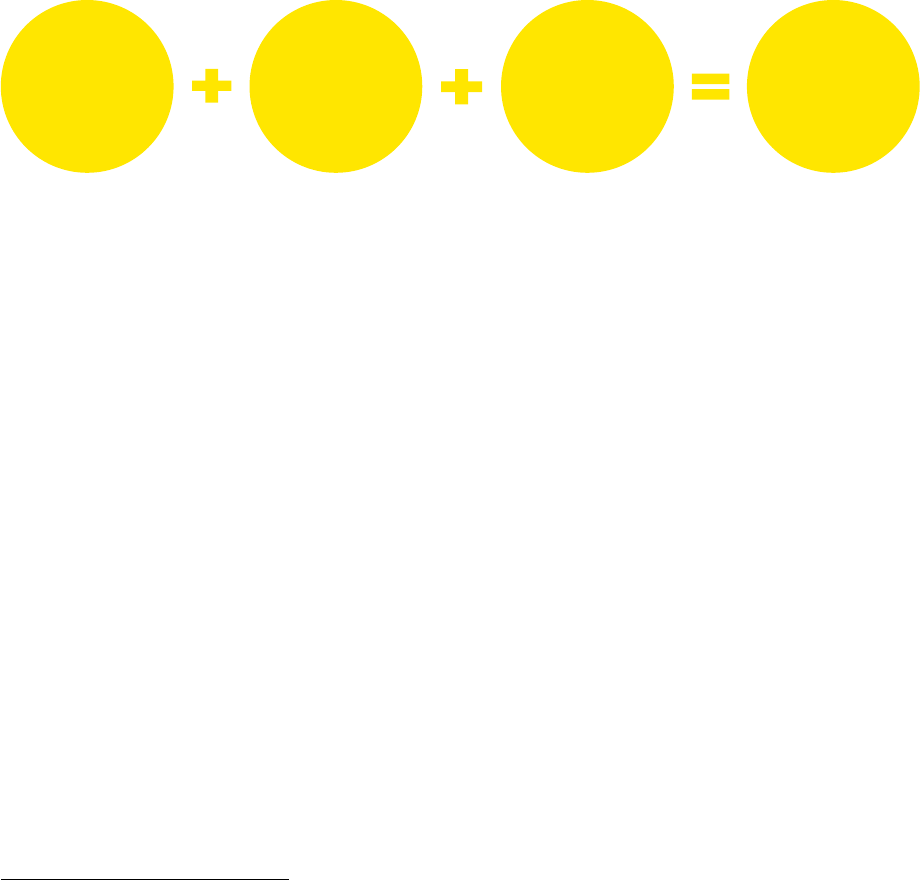
4 Identify the performance obligations in the contract
Financial reporting developments Revenue from contracts with customers (ASC 606) | 91
4.2.2 Series of distinct goods or services that are substantially the same and that
have the same pattern of transfer
As discussed above, ASC 606-10-25-14(b) defines as a second type of performance obligation — a promise to
transfer to the customer a series of distinct goods or services that are substantially the same and that have
the same pattern of transfer to the customer, if both of the following criteria from ASC 606-10-25-15 are met:
• Each distinct good or service in the series that the entity promises to transfer represents a performance
obligation that would be satisfied over time in accordance with ASC 606-10-25-27 (see section 7.1)
if it were accounted for separately.
• The entity would measure its progress toward satisfaction of the performance obligation using the
same measure of progress for each distinct good or service in the series (see section 7.1.4).
If a series of distinct goods or services meets the criteria in ASC 606-10-25-14(b) and 25-15 (i.e., the
series provision), an entity is required to treat that series as a single performance obligation (i.e., it is not
optional guidance). The Board incorporated this guidance
81
to simplify the model and promote consistent
identification of performance obligations in cases when an entity provides the same good or service over
a period of time. Without the series provision, the Board noted
82
that applying the revenue model might
present operational challenges because an entity would have to identify multiple distinct goods or
services, allocate the transaction price to each distinct good or service on a standalone selling price
basis, and then recognize revenue when those performance obligations are satisfied. The FASB
determined that this would not be cost effective. Instead, an entity identifies a single performance
obligation and allocates the transaction price to that performance obligation. It then recognizes revenue
by applying a single measure of progress to that performance obligation.
For distinct goods or services to be accounted for as a series, one of the criteria is that they must be
substantially the same. This is often the most difficult criterion for entities to assess. In the Basis for
Conclusions of ASU 2014-09,
83
the Board provided three examples of repetitive services (i.e., cleaning,
transaction processing and delivering electricity) that meet the series provision. In addition, TRG members
generally agreed
84
that when determining whether distinct goods or services are substantially the same,
entities need to first determine the nature of their promise. This is because a series could consist of either
specified quantities of the underlying good or service delivered (e.g., each unit of a good) or distinct time
increments (e.g., an hourly service), depending on the nature of the promise. That is, if the nature of the
promise is to deliver a specified quantity of service (e.g., monthly payroll services over a defined contract
period), the evaluation should consider whether each service is distinct and substantially the same. In
contrast, if the nature of the entity’s promise is to stand ready or provide a single service for a period of time
(i.e., because there is an unspecified quantity to be delivered), the evaluation should consider whether each
time increment (e.g., hour, day), rather than the underlying activities, is distinct and substantially the same.
81
Paragraph BC113 of ASU 2014-09.
82
Paragraph BC114 of ASU 2014-09.
83
Paragraph BC114 of ASU 2014-09.
84
13 July 2015 TRG meeting, agenda paper no. 39; FASB staff Q&As, question 18.
Distinct and
substantially
the same
Satisfied
over time
Same measure
of progress
One performance
obligation

4 Identify the performance obligations in the contract
Financial reporting developments Revenue from contracts with customers (ASC 606) | 92
The following flowchart illustrates how the determination of the nature of the promise might affect
whether the series provision applies:
It is important to highlight that even if the underlying activities an entity performs to satisfy a promise
vary significantly throughout the day and from day to day, that fact, by itself, does not mean the distinct
goods or services are not substantially the same. Consider Example 12A in the standard (excerpted in full
in section 4.2.3), where the nature of the promise is to provide a daily hotel management service. The
service is comprised of activities that may vary each day (e.g., cleaning services, reservation services,
property maintenance). However, the entity determines that the daily hotel management services are
substantially the same because the nature of the entity’s promise is the same each day, and the entity is
providing the same overall management service each day. See Question 4-12 below for further discussion
on determining the nature of an entity’s promise and evaluating the substantially the same criterion.
A TRG agenda paper
85
explained that when considering the nature of the entity’s promise and the
applicability of the series provision, including whether a good or service is distinct, it may be helpful to
consider which over-time criterion in ASC 606-10-25-27 was met (i.e., why the entity concluded that the
performance obligation is satisfied over time). As discussed further in section 7.1, a performance
obligation is satisfied over time if one of three criteria are met. For example, if a performance obligation
is satisfied over time because the customer simultaneously receives and consumes the benefits provided
as the entity performs (i.e., the first over-time criterion in ASC 606-10-25-27(a)), that might indicate
that each increment of service is capable of being distinct. If that’s the case, the entity would need to
evaluate whether each increment of service is separately identifiable (and substantially the same). If a
performance obligation is satisfied over time based on the other two criteria in ASC 606-10-25-27
(i.e., (1) the entity’s performance creates or enhances an asset that the customer controls as the asset is
created or enhanced or (2) the entity’s performance does not create an asset with an alternative use to
the entity and the entity has an enforceable right to payment for performance completed to date), the
nature of that promise might be to deliver a single specified good or service (e.g., a contract to construct
a single piece of equipment), which would not be considered a series because the individual goods or
services within that performance obligation are not distinct.
85
13 July 2015 TRG meeting, agenda paper no. 39; FASB staff Q&As, question 18.
Determine the nature of the promise.
Delivery of a specified quantity of a good
or service (e.g., monthly payroll processing
for one year) that is satisfied over time.
Delivery of an unspecified quantity of a service
(e.g., stand-ready obligation to provide an
IT outsourcing service for one year) that
is satisfied over time.
Is each good or service distinct and
substantially the same and do they have the
same measure of progress?
Is each time increment distinct and
substantially the same and do they have the
same measure of progress?
Not a series Not a series Series Series
No
Yes
No
Yes

4 Identify the performance obligations in the contract
Financial reporting developments Revenue from contracts with customers (ASC 606) | 93
An entity’s determination of whether a performance obligation is a single performance obligation comprising a
series of distinct goods or services or a single performance obligation comprising goods or services that are not
distinct from one another affects the accounting in the following areas: (1) allocation of variable consideration
(see section 6.3), (2) contract modifications (see section 3.4) and (3) changes in transaction price (see section
6.5). This is because, as the FASB discussed in the Basis for Conclusions in ASU 2014-09,
86
an entity should
consider the underlying distinct goods or services in the contract, rather than the single performance obligation
identified under the series provision, when applying the guidance for these three areas of the model.
The following example, included in a TRG agenda paper,
87
illustrates how the allocation of variable
consideration may differ for a single performance obligation identified under the series provision and a single
performance obligation comprising non-distinct goods and/or services:
Example of allocation of variable consideration for a series versus a single performance
obligation comprising non-distinct goods and/or serivces
Consider a five-year service contract that includes payment terms of a fixed annual fee plus a performance
bonus upon completion of a milestone at the end of year two. If the entire service period is determined to be
a single performance obligation comprising a series of distinct services, the entity may be able to conclude
that the variable consideration (i.e., the bonus amount) should be allocated directly to its efforts to perform
the distinct services up to the date that the milestone is achieved (e.g., the underlying distinct services in
years one and two). This could result in the entity recognizing the entire bonus amount at the end of year two
(when it is probable that a significant revenue reversal will not occur). See Question 4-12 below for several
examples of services for which it would be reasonable to conclude that they meet the series provision.
In contrast, if the entity determines that the entire service period is a single performance obligation that
is comprised of non-distinct services, the bonus would be included in the transaction price (subject to
the constraint on variable consideration — see section 5.2.3) and recognized based on the measure of
progress determined for the entire service period. For example, if the bonus becomes part of the
transaction price at the end of year two (when it is probable that a significant revenue reversal will not
occur), a portion of the bonus would be recognized at that date based on performance completed to
date and a portion would be recognized as the remainder of the performance obligation is satisfied. As
a result, the bonus amount would be recognized as revenue through the end of the five-year service period.
How we see it
Entities may need to apply significant judgment when determining whether a promised good or service
in a contract with a customer meets the criteria to be accounted for as a series of distinct goods or
services. As illustrated in Question 4-12 below, promised goods or services that meet the series criteria
are not limited to a particular industry and can encompass a wide array of promised goods and services.
Question 4-10 In order to apply the series provision, must the goods or services be consecutively transferred?
[30 March 2015 TRG meeting, agenda paper no. 27; FASB staff Q&As, question 19]
TRG members generally agreed that a series of distinct goods or services need not be consecutively
transferred. That is, the series provision must be applied when there is a gap or an overlap in an entity’s
transfer of goods or services, provided that the other criteria are met.
86
Paragraph BC115 of ASU 2014-09.
87
30 March 2015 TRG meeting; agenda paper no. 27.

4 Identify the performance obligations in the contract
Financial reporting developments Revenue from contracts with customers (ASC 606) | 94
The TRG agenda paper concluded that the Board did not intend for the series provision to only apply to
circumstances in which the entity provides the same good or service consecutively over a period of time.
Consider the following example from the TRG agenda paper:
Example of a series in which the goods or services need not be consecutively transferred
An entity has a contract with a customer to provide a manufacturing service for the production of
24,000 units of a product over a two-year period. The units produced under the arrangement are
distinct, substantially the same and manufactured in accordance with the customer’s specifications.
The entity determines that the service is satisfied over time (see section 7.1) because the
performance of the service does not create an asset with an alternative use to the entity (since the
units are manufactured in accordance with the customer’s specifications), and if the contract were
to be canceled, the entity would have an enforceable right to payment for performance completed
to date (cost plus a reasonable profit margin). Therefore, the criteria for the series provision in
paragraph 606-10-25-15 have been met.
This conclusion was not influenced by whether the entity would perform the service evenly over the
two-year period (e.g., produce 1,000 units per month). That is, the entity could produce 2,000 units in
some months and none in others, but this would not be a determining factor in concluding whether the
contract met the criteria to be accounted for as a series.
Question 4-11 In order to apply the series provision, does the accounting result need to be the same as if the
underlying distinct goods and services were accounted for as separate performance obligations?
[30 March 2015 TRG meeting, agenda paper no. 27; FASB staff Q&As, question 20]
TRG members generally agreed that the accounting result does not need to be the same and that an
entity is not required to prove that the result would be the same as if the goods and services were
accounted for as separate performance obligations.
Consider the following example from the TRG agenda paper to illustrate this point:
Example of a series for which the accounting result would be different if not treated as a series
An entity contracts with a customer to perform a manufacturing service that results in the production of
10 widgets. The manufacturing service will be performed over a three-year period. The contract price is
$100 million, and the standalone selling price for each widget is $10 million.
Total expected costs are $80 million. The service the entity will provide to the customer in producing each
widget is substantially the same. However, the design is new, so the entity expects a decline in production
costs over time. Production of the first five units is expected to cost $9 million per widget. The costs to
produce the other five widgets are expected to be $7 million per widget.
For purposes of this example, the entity determines that each service that it will provide to produce one of
the 10 widgets is distinct, meets the criteria to be satisfied over time, and that the same cost-based
measure of progress would be used (i.e., the series provision criteria in ASC 606-10-25-15 are met). The
following demonstrates the difference between the accounting that results from concluding that the
series provision applies and the accounting that would result if it was determined that the contract is for
10 separate performance obligations.

4 Identify the performance obligations in the contract
Financial reporting developments Revenue from contracts with customers (ASC 606) | 95
(in $ millions)
Total
contract
Series provision
(one performance obligation)
10 separate
performance obligations
Units 1-5
Units 6-10
Units 1-5
Units 6-10
Revenue
100
56
44
50
50
Cost
80
45
35
45
35
Margin
20
11
9
5
15
Although $20 million in margin is recognized for the contract under both scenarios, there is a timing
difference in terms of revenue recognition (and margin) because more revenue is recognized in
relation to the service to produce the first five widgets (and less in relation to its service to produce
the final five widgets) when the series is accounted for as a single performance obligation using a
single measure of progress toward complete satisfaction.
Also see Question 9-16 in section 9.3.2 on how the effect of learning curve costs are addressed in
ASC 606 and ASC 340-40.
Question 4-12 In order to apply the series provision, how should an entity consider whether a performance obligation
consists of distinct goods or services that are “substantially the same?” [13 July 2015 TRG meeting,
agenda paper no. 39; FASB staff Q&As, question 18]
As discussed above, TRG members generally agreed that the TRG agenda paper, which primarily focused
on the application of the series provision to service contracts, helps entities understand the standard’s
requirement to determine whether a performance obligation consists of goods or services that are
distinct and “substantially the same.”
The TRG agenda paper noted that when making the evaluation of whether goods or services are distinct
and substantially the same, an entity needs to first determine the nature of the entity’s promise in
providing services to the customer. That is, if the nature of the promise is to deliver a specified quantity
of service (e.g., monthly payroll services over a defined contract period), the evaluation should consider
whether each service is distinct and substantially the same. In contrast, if the nature of the entity’s
promise is to stand ready or provide a single service for a period of time (i.e., because there is an
unspecified quantity to be delivered), the evaluation should consider whether each time increment
(e.g., hour, day), rather than the underlying activities, is distinct and substantially the same. The TRG
agenda paper noted that the Board intended that a series could consist of either specified quantities of
the underlying good or service delivered (e.g., each unit of a good) or distinct time increments (e.g., an
hourly service), depending on the nature of the promise.
As discussed above in section 4.2.2, it is important to highlight that the underlying activities an entity
performs to satisfy a performance obligation could vary significantly throughout a day and from day to day,
but the TRG agenda paper noted that is not determinative to the conclusion of whether a performance
obligation consists of goods or services that are distinct and substantially the same. Consider Example 12A
(excerpted in full in section 4.2.3) of the standard for which the nature of the promise is to provide a daily
hotel management service. The hotel management service comprises various activities that may vary each
day (e.g., cleaning services, reservation services, property maintenance). However, the entity determines
that the daily hotel management services are substantially the same because the nature of the entity’s
promise is the same each day and the entity is providing the same overall management service each day.

4 Identify the performance obligations in the contract
Financial reporting developments Revenue from contracts with customers (ASC 606) | 96
The TRG agenda paper included several examples of promised goods and services that may meet the series
provision and the analysis that supports that conclusion. The evaluation of the nature of the promise for
each example is consistent with Example 13 (excerpted in full in section 7.1.1) and Example 12A (excerpted
in full in section 4.2.3) of the standard on monthly payroll processing and hotel management services,
respectively. Below we have summarized some of the examples and analysis in the TRG agenda paper:
Example of IT outsourcing
A vendor and customer execute a 10-year information technology (IT) outsourcing arrangement in
which the vendor continuously delivers the outsourced activities over the contract term (e.g., it
provides server capacity, manages the customer’s software portfolio, runs an IT help desk). The total
monthly invoice is calculated based on different units consumed for the respective activities, and the
vendor concludes that the customer simultaneously receives and consumes the benefits provided by
its services as it performs (meeting over-time criterion ASC 606-10-25-27(a)).
The vendor first considers the nature of its promise to the customer. Because the vendor has promised
to provide an unspecified quantity of activities, rather than a defined number of services, the TRG
agenda paper noted that the vendor could reasonably conclude that the nature of the promise is an
obligation to stand ready to provide the integrated outsourcing service each day. If the nature of the
promise is the overall IT outsourcing service, each day of service could be considered distinct because
the customer can benefit from each day of service on its own and each day is separately identifiable.
The TRG agenda paper also noted that the vendor could reasonably conclude that each day of service is
substantially the same. That is, even if the individual activities that comprise the performance obligation
vary from day to day, the nature of the overall promise is the same from day to day.
Accordingly, it would be reasonable for an entity to conclude that this contract meets the series provision.
Example of transaction processing
A vendor enters into a 10-year contract with a customer to provide continuous access to its system
and process all transactions on behalf of the customer. The customer is obligated to use the vendor’s
system, but the ultimate quantity of transactions is unknown. The vendor concludes that the customer
simultaneously receives and consumes the benefits as it performs.
If the vendor concludes that the nature of its promise is to provide continuous access to its system
rather than process a particular quantity of transactions, it might conclude that there is a single
performance obligation to stand ready to process as many transactions as the customer requires. If
that is the case, the TRG agenda paper noted that it would be reasonable to conclude that there are
multiple distinct time increments of the service. Each day of access to the service provided to the
customer could be considered substantially the same since the customer is deriving a consistent
benefit from the access each day, even if a different number of transactions are processed each day.
If the vendor concludes that the nature of the promise is the processing of each transaction, the TRG
agenda paper noted that each transaction processed could be considered substantially the same even
if there are multiple types of transactions that generate different payments. Further, the TRG agenda
paper noted that each transaction processed could be a distinct service because the customer could
benefit from each transaction on its own and each transaction could be separately identifiable.
Accordingly, it would be reasonable for an entity to conclude that this contract meets the series provision.

4 Identify the performance obligations in the contract
Financial reporting developments Revenue from contracts with customers (ASC 606) | 97
Example of hotel management
A hotel manager (HM) enters into a 20-year contract to manage properties on behalf of a customer.
HM receives monthly consideration of 1% of monthly rental revenue, plus reimbursement of labor
costs incurred to perform the service and an annual incentive payment. HM concludes that the
customer simultaneously receives and consumes the benefits of its services as it performs.
HM considers the nature of its promise to the customer. If the nature of its promise is the overall
management service (because the underlying activities are not distinct from each other), the TRG
agenda paper noted that each day of service could be considered distinct because the customer can
benefit from each day of service on its own and each day of service is separately identifiable.
Assuming the nature of the promise is the overall management service, the TRG agenda paper noted
that the service performed each day could be considered distinct and substantially the same,
consistent with Example 12A in the standard. That is because even if the individual activities that
comprise the performance obligation vary significantly throughout the day and from day to day, the
nature of the overall promise to provide the management service is the same from day to day.
Accordingly, it would be reasonable for an entity to conclude that this contract meets the series provision.
Below is another example of promised goods and services that may meet the series provision and the
analysis that supports that conclusion:
Illustration 4-5: Determining whether promised goods and services represent a series
A SaaS provider enters into a three-year contract with Customer X to provide access to its SaaS basic
customer relationship management (CRM) application for $300,000. The contract also includes
professional services that will personalize the user’s interface based on the user’s role. These services
are sold separately from the CRM application and can be provided by third-party vendors. The customer
can benefit from the CRM application without the professional services, which do not significantly
customize or modify the CRM application.
The SaaS provider determines that the CRM application and professional services are distinct (i.e., the CRM
application and the professional services should not be combined into a single performance obligation).
The two services are each capable of being distinct because Customer X can benefit from them on their
own. The services are distinct within the context of the contract because the services are not highly
interdependent or interrelated, and each service does not significantly modify or customize the other.
The SaaS provider first determines that the nature of the CRM application promise is providing continuous
access to its CRM application for the three-year period. Although the activities that Customer X may be
able to perform via the CRM application may vary from day to day, the overall promise is to provide
continuous access to the CRM application to Customer X for a period of three years.
The SaaS provider determines that access to the CRM application represents a series of distinct services
that are substantially the same and have the same pattern of transfer to Customer X. Each day of service
is capable of being distinct because Customer X benefits each day from access to the CRM application.
Each day is distinct within the context of the contract because there are no significant integration
services, each day does not modify or customize another day, and each day is not highly interdependent
or interrelated. Each day of service is substantially the same because Customer X derives a consistent
benefit from the access to the CRM application and has the same pattern of transfer over the term of the
contract. Each distinct service represents a performance obligation that is satisfied over time and has the
same measure of progress (e.g., time-elapsed). Therefore, the criteria to account for access to the CRM
application as a series of distinct services (i.e., a single performance obligation) are met.

4 Identify the performance obligations in the contract
Financial reporting developments Revenue from contracts with customers (ASC 606) | 98
The SaaS provider also considers whether the professional services meet the criteria to be accounted
for as a series. As part of this assessment, the entity considers whether each day of the professional
services is distinct from the other days or whether the nature of the promise for the professional services
is for a combined output from all of the days. The entity also considers the complexity of the professional
services and whether the activity of each day builds on one another or if each day is substantially the
same. This analysis requires judgment and is based on the facts and circumstances of the professional
services performed.
Question 4-13 Can an entity choose whether to apply the series provision?
No. As discussed above, if a series of distinct goods or services meets the criteria in ASC 606-10-25-14(b)
and 25-15, an entity is required to treat that series as a single performance obligation (i.e., it is not
optional guidance).
Question 4-14 Do all stand-ready obligations meet the criteria to be accounted for as a series?
We generally believe that stand-ready obligations will meet the criteria and, therefore, need to be
accounted for as a series of distinct goods or services. As discussed in Questions 4-2 and 4-3 in section
4.1, entities may need to apply judgment to determine whether the nature of a promise to a customer is
the service of standing ready to provide goods or services (i.e., a stand-ready obligation) or the delivery
of the underlying goods or services (i.e., not a stand-ready obligation).
4.2.3 Examples of identifying performance obligations
The standard includes several examples that illustrate the application of the guidance on identifying
performance obligations. The examples explain the judgments made to determine whether the promises
to transfer goods or services are capable of being distinct and distinct in the context of the contract. We
have excerpted these examples in full below.
In the Basis for Conclusions of ASU 2016-10,
88
the Board cautioned that the examples provided are not
intended to establish explicit boundaries, and that no single fact or circumstance should be viewed as
determinative. It further noted that some of the examples are based on fact patterns that entities
thought were challenging to assess under the standard.
The following example illustrates contracts with promised goods and services that, while capable of being
distinct, are not distinct in the context of the contract because of a significant integration service that
combines the inputs (the underlying goods and services) into a combined output:
Excerpt from Accounting Standards Codification
Revenue from Contracts with Customers — Overall
Implementation Guidance and Illustrations
Example 10 — Goods and Services Are Not Distinct
Case A — Significant Integration Service
606-10-55-137
An entity, a contractor, enters into a contract to build a hospital for a customer. The entity is
responsible for the overall management of the project and identifies various promised goods and
services, including engineering, site clearance, foundation, procurement, construction of the
structure, piping and wiring, installation of equipment, and finishing.
88
Paragraph BC34 of ASU 2016-10.

4 Identify the performance obligations in the contract
Financial reporting developments Revenue from contracts with customers (ASC 606) | 99
606-10-55-138
The promised goods and services are capable of being distinct in accordance with paragraph 606-10-
25-19(a). That is, the customer can benefit from the goods and services either on their own or
together with other readily available resources. This is evidenced by the fact that the entity, or
competitors of the entity, regularly sells many of these goods and services separately to other
customers. In addition, the customer could generate economic benefit from the individual goods and
services by using, consuming, selling, or holding those goods or services.
606-10-55-139
However, the promises to transfer the goods and services are not separately identifiable in accordance
with paragraph 606-10-25-19(b) (on the basis of the factors in paragraph 606-10-25-21). This is
evidenced by the fact that the entity provides a significant service of integrating the goods and
services (the inputs) into the hospital (the combined output) for which the customer has contracted.
606-10-55-140
Because both criteria in paragraph 606-10-25-19 are not met, the goods and services are not distinct.
The entity accounts for all of the goods and services in the contract as a single performance obligation.
Case B — Significant Integration Service
606-10-55-140A
An entity enters into a contract with a customer that will result in the delivery of multiple units of a highly
complex, specialized device. The terms of the contract require the entity to establish a manufacturing process
in order to produce the contracted units. The specifications are unique to the customer based on a custom
design that is owned by the customer and that were developed under the terms of a separate contract that is
not part of the current negotiated exchange. The entity is responsible for the overall management of the
contract, which requires the performance and integration of various activities including procurement of
materials; identifying and managing subcontractors; and performing manufacturing, assembly, and testing.
606-10-55-140B
The entity assesses the promises in the contract and determines that each of the promised devices is
capable of being distinct in accordance with paragraph 606-10-25-19(a) because the customer can benefit
from each device on its own. This is because each unit can function independently of the other units.
606-10-55-140C
The entity observes that the nature of its promise is to establish and provide a service of producing the
full complement of devices for which the customer has contracted in accordance with the customer’s
specifications. The entity considers that it is responsible for overall management of the contract and
for providing a significant service of integrating various goods and services (the inputs) into its overall
service and the resulting devices (the combined output) and, therefore, the devices and the various
promised goods and services inherent in producing those devices are not separately identifiable in
accordance with paragraphs 606-10-25-19(b) and 606-10-25-21. In this Case, the manufacturing
process provided by the entity is specific to its contract with the customer. In addition, the nature of
the entity’s performance and, in particular, the significant integration service of the various activities
mean that a change in one of the entity’s activities to produce the devices has a significant effect on
the other activities required to produce the highly complex specialized devices such that the entity’s
activities are highly interdependent and highly interrelated. Because the criterion in paragraph 606-
10-25-19(b) is not met, the goods and services that will be provided by the entity are not separately
identifiable, and, therefore, are not distinct. The entity accounts for all of the goods and services
promised in the contract as a single performance obligation.

4 Identify the performance obligations in the contract
Financial reporting developments Revenue from contracts with customers (ASC 606) | 100
The determination of whether a “significant integration service” exists within a contract, as illustrated in
Case A and Case B above, requires significant judgment and is heavily dependent on the unique facts and
circumstances for each individual contract with a customer.
The following example illustrates a contract for which the promised goods or services are combined into a
single performance obligation because of a promised service that significantly modifies the other promise
in the contract. The example also highlights, in applying the separately identifiable principle, the notion of
“utility” and how the promised service is critical to maintain the intended use and benefit of the other promise:
Excerpt from Accounting Standards Codification
Revenue from Contracts with Customers — Overall
Implementation Guidance and Illustrations
Example 10 — Goods and Services Are Not Distinct
Case C — Combined Item
606-10-55-140D
An entity grants a customer a three-year term license to anti-virus software and promises to provide
the customer with when-and-if available updates to that software during the license period. The entity
frequently provides updates that are critical to the continued utility of the software. Without the
updates, the customer’s ability to benefit from the software would decline significantly during the
three-year arrangement.
606-10-55-140E
The entity concludes that the software and the updates are each promised goods or services in the
contract and are each capable of being distinct in accordance with paragraph 606-10-25-19(a). The
software and the updates are capable of being distinct because the customer can derive economic
benefit from the software on its own throughout the license period (that is, without the updates the
software would still provide its original functionality to the customer), while the customer can benefit
from the updates together with the software license transferred at the outset of the contract.
606-10-55-140F
The entity concludes that its promises to transfer the software license and to provide the updates,
when-and-if available, are not separately identifiable (in accordance with paragraph 606-10-25-19(b))
because the license and the updates are, in effect, inputs to a combined item (anti-virus protection) in
the contract. The updates significantly modify the functionality of the software (that is, they permit the
software to protect the customer from a significant number of additional viruses that the software did
not protect against previously) and are integral to maintaining the utility of the software license to the
customer. Consequently, the license and updates fulfill a single promise to the customer in the contract
(a promise to provide protection from computer viruses for three years). Therefore, in this Example, the
entity accounts for the software license and the when-and-if available updates as a single performance
obligation. In accordance with paragraph 606-10-25-33, the entity concludes that the nature of the
combined good or service it promised to transfer to the customer in this Example is computer virus
protection for three years. The entity considers the nature of the combined good or service (that is, to
provide anti-virus protection for three years) in determining whether the performance obligation is
satisfied over time or at a point in time in accordance with paragraphs 606-10-25-23 through 25-30
and in determining the appropriate method for measuring progress toward complete satisfaction of the
performance obligation in accordance with paragraphs 606-10-25-31 through 25-37.

4 Identify the performance obligations in the contract
Financial reporting developments Revenue from contracts with customers (ASC 606) | 101
The following example illustrates how the significance of installation services can affect an entity’s
conclusion about the number of identified performance obligations for similar fact patterns. In Case A,
each of the promised goods and services are determined to be distinct. In Case B, two of the promised
goods and services are combined into a performance obligation because one promise (the installation)
significantly customizes another promise (the software).
Excerpt from Accounting Standards Codification
Revenue from Contracts with Customers — Overall
Implementation Guidance and Illustrations
Example 11 — Determining Whether Goods or Services Are Distinct
Case A — Distinct Goods or Services
606-10-55-141
An entity, a software developer, enters into a contract with a customer to transfer a software license,
perform an installation service, and provide unspecified software updates and technical support
(online and telephone) for a two-year period. The entity sells the license, installation service, and
technical support separately. The installation service includes changing the web screen for each type
of user (for example, marketing, inventory management, and information technology). The installation
service is routinely performed by other entities and does not significantly modify the software. The
software remains functional without the updates and the technical support.
606-10-55-142
The entity assesses the goods and services promised to the customer to determine which goods and
services are distinct in accordance with paragraph 606-10-25-19. The entity observes that the
software is delivered before the other goods and services and remains functional without the updates
and the technical support. The customer can benefit from the updates together with the software
license transferred at the outset of the contract. Thus, the entity concludes that the customer can
benefit from each of the goods and services either on their own or together with the other goods and
services that are readily available and the criterion in paragraph 606-10-25-19(a) is met.
606-10-55-143
The entity also considers the principle and the factors in paragraph 606-10-25-21 and determines that
the promise to transfer each good and service to the customer is separately identifiable from each of
the other promises (thus, the criterion in paragraph 606-10-25-19(b) is met). In reaching this
determination the entity considers that although it integrates the software into the customer’s system,
the installation services do not significantly affect the customer’s ability to use and benefit from the
software license because the installation services are routine and can be obtained from alternate
providers. The software updates do not significantly affect the customer’s ability to use and benefit
from the software license because, in contrast with Example 10 (Case C), the software updates in this
contract are not necessary to ensure that the software maintains a high level of utility to the customer
during the license period. The entity further observes that none of the promised goods or services
significantly modify or customize one another and the entity is not providing a significant service of
integrating the software and the services into a combined output. Lastly, the entity concludes that the
software and the services do not significantly affect each other and, therefore, are not highly
interdependent or highly interrelated because the entity would be able to fulfill its promise to transfer
the initial software license independent from its promise to subsequently provide the installation
service, software updates, or technical support.

4 Identify the performance obligations in the contract
Financial reporting developments Revenue from contracts with customers (ASC 606) | 102
606-10-55-144
On the basis of this assessment, the entity identifies four performance obligations in the contract for
the following goods or services:
a. The software license
b. An installation service
c. Software updates
d. Technical support.
606-10-55-145
The entity applies paragraphs 606-10-25-23 through 25-30 to determine whether each of the
performance obligations for the installation service, software updates, and technical support are
satisfied at a point in time or over time. The entity also assesses the nature of the entity’s promise to
transfer the software license in accordance with paragraphs 606-10-55-59 through 55-60 and 606-
10-55-62 through 55-64A (see Example 54 in paragraphs 606-10-55-362 through 55-363B).
Case B — Significant Customization
606-10-55-146
The promised goods and services are the same as in Case A, except that the contract specifies that, as
part of the installation service, the software is to be substantially customized to add significant new
functionality to enable the software to interface with other customized software applications used by
the customer. The customized installation service can be provided by other entities.
606-10-55-147
The entity assesses the goods and services promised to the customer to determine which goods and
services are distinct in accordance with paragraph 606-10-25-19. The entity first assesses whether
the criterion in paragraph 606-10-25-19(a) has been met. For the same reasons as in Case A, the
entity determines that the software license, installation, software updates, and technical support each
meet that criterion. The entity next assesses whether the criterion in paragraph 606-10-25-19(b) has
been met by evaluating the principle and the factors in paragraph 606-10-25-21. The entity observes
that the terms of the contract result in a promise to provide a significant service of integrating the
licensed software into the existing software system by performing a customized installation service as
specified in the contract. In other words, the entity is using the license and the customized installation
service as inputs to produce the combined output (that is, a functional and integrated software
system) specified in the contract (see paragraph 606-10-25-21(a)). The software is significantly
modified and customized by the service (see paragraph 606-10-25-21(b)). Consequently, the entity
determines that the promise to transfer the license is not separately identifiable from the customized
installation service and, therefore, the criterion in paragraph 606-10-25-19(b) is not met. Thus, the
software license and the customized installation service are not distinct.
606-10-55-148
On the basis of the same analysis as in Case A, the entity concludes that the software updates and
technical support are distinct from the other promises in the contract.

4 Identify the performance obligations in the contract
Financial reporting developments Revenue from contracts with customers (ASC 606) | 103
606-10-55-149
On the basis of this assessment, the entity identifies three performance obligations in the contract for
the following goods or services:
a. Software customization (which is comprised of the license to the software and the customized
installation service)
b. Software updates
c. Technical support.
606-10-55-150
The entity applies paragraphs 606-10-25-23 through 25-30 to determine whether each performance
obligation is satisfied at a point in time or over time and paragraphs 606-10-25-31 through 25-37 to
measure progress toward complete satisfaction of those performance obligations determined to be
satisfied over time. In applying those paragraphs to the software customization, the entity considers
that the customized software to which the customer will have rights is functional intellectual property
and that the functionality of that software will not change during the license period as a result of
activities that do not transfer a good or service to the customer. Therefore, the entity is providing a
right to use the customized software. Consequently, the software customization performance
obligation is completely satisfied upon completion of the customized installation service. The entity
considers the other specific facts and circumstances of the contract in the context of the guidance in
paragraphs 606-10-25-23 through 25-30 in determining whether it should recognize revenue related
to the single software customization performance obligation as it performs the customized installation
service or at the point in time the customized software is transferred to the customer.
The following example illustrates contracts that include multiple promised goods or services, all of which
are determined to be distinct. The example highlights the importance of considering both the separately
identifiable principle and the underlying factors in ASC 606-10-25-21.
Case C illustrates a contract that includes the sale of equipment and installation services. The equipment
can be operated without any customization or modification, and the installation is not complex and can
be performed by other vendors. The entity determines that the two promises in the contract are distinct.
Case D illustrates that certain types of contractual restrictions, including those that require a customer to use
only the entity’s services, should not affect the evaluation of whether a promised good or service is distinct.
Case E illustrates a contract that includes the sale of equipment and specialized consumables to be used
with the equipment. Even though the consumables can only be produced by the entity, they are sold
separately. The entity determines that the two promises in the contract are distinct and walks through
the analysis for determining whether the promises are capable of being distinct and distinct in the
context of the contract. As part of this analysis, the entity concludes that the equipment and
consumables are not highly interrelated or highly interdependent because the two promises do not
significantly affect the other. That is, the entity would be able to fulfill each of its promises in the contract
independently of the other promises.

4 Identify the performance obligations in the contract
Financial reporting developments Revenue from contracts with customers (ASC 606) | 104
Excerpt from Accounting Standards Codification
Revenue from Contracts with Customers — Overall
Implementation Guidance and Illustrations
Example 11 — Determining Whether Goods or Services Are Distinct
Case C — Promises Are Separately Identifiable (Installation)
606-10-55-150A
An entity contracts with a customer to sell a piece of equipment and installation services. The
equipment is operational without any customization or modification. The installation required is not
complex and is capable of being performed by several alternative service providers.
606-10-55-150B
The entity identifies two promised goods and services in the contract: (a) equipment and (b)
installation. The entity assesses the criteria in paragraph 606-10-25-19 to determine whether each
promised good or service is distinct. The entity determines that the equipment and the installation
each meet the criterion in paragraph 606-10-25-19(a). The customer can benefit from the equipment
on its own, by using it or reselling it for an amount greater than scrap value, or together with other
readily available resources (for example, installation services available from alternative providers).
The customer also can benefit from the installation services together with other resources that the
customer will already have obtained from the entity (that is, the equipment).
606-10-55-150C
The entity further determines that its promises to transfer the equipment and to provide the
installation services are each separately identifiable (in accordance with paragraph 606-10-25-19(b)).
The entity considers the principle and the factors in paragraph 606-10-25-21 in determining that the
equipment and the installation services are not inputs to a combined item in this contract. In this Case,
each of the factors in paragraph 606-10-25-21 contributes to, but is not individually determinative of,
the conclusion that the equipment and the installation services are separately identifiable as follows:
a. The entity is not providing a significant integration service. That is, the entity has promised to
deliver the equipment and then install it; the entity would be able to fulfill its promise to transfer
the equipment separately from its promise to subsequently install it. The entity has not promised
to combine the equipment and the installation services in a way that would transform them into a
combined output.
b. The entity’s installation services will not significantly customize or significantly modify the
equipment.
c. Although the customer can benefit from the installation services only after it has obtained control
of the equipment, the installation services do not significantly affect the equipment because the
entity would be able to fulfill its promise to transfer the equipment independently of its promise to
provide the installation services. Because the equipment and the installation services do not each
significantly affect the other, they are not highly interdependent or highly interrelated.
On the basis of this assessment, the entity identifies two performance obligations (the equipment and
installation services) in the contract.
606-10-55-150D
The entity applies paragraphs 606-10-25-23 through 25-30 to determine whether each performance
obligation is satisfied at a point in time or over time.

4 Identify the performance obligations in the contract
Financial reporting developments Revenue from contracts with customers (ASC 606) | 105
Case D — Promises Are Separately Identifiable (Contractual Restrictions)
606-10-55-150E
Assume the same facts as in Case C, except that the customer is contractually required to use the
entity’s installation services.
606-10-55-150F
The contractual requirement to use the entity’s installation services does not change the evaluation of
whether the promised goods and services are distinct in this Case. This is because the contractual
requirement to use the entity’s installation services does not change the characteristics of the goods
or services themselves, nor does it change the entity’s promises to the customer. Although the
customer is required to use the entity’s installation services, the equipment and the installation services
are capable of being distinct (that is, they each meet the criterion in paragraph 606-10-25-19(a)), and
the entity’s promises to provide the equipment and to provide the installation services are each
separately identifiable (that is, they each meet the criterion in paragraph 606-10-25-19(b)). The
entity’s analysis in this regard is consistent with Case C.
Case E — Promises Are Separately Identifiable (Consumables)
606-10-55-150G
An entity enters into a contract with a customer to provide a piece of off-the-shelf equipment (that is,
it is operational without any significant customization or modification) and to provide specialized
consumables for use in the equipment at predetermined intervals over the next three years. The
consumables are produced only by the entity, but are sold separately by the entity.
606-10-55-150H
The entity determines that the customer can benefit from the equipment together with the readily
available consumables. The consumables are readily available in accordance with paragraph 606-10-
25-20 because they are regularly sold separately by the entity (that is, through refill orders to
customers that previously purchased the equipment). The customer can benefit from the consumables
that will be delivered under the contract together with the delivered equipment that is transferred to
the customer initially under the contract. Therefore, the equipment and the consumables are each
capable of being distinct in accordance with paragraph 606-10-25-19(a).
606-10-55-150I
The entity determines that its promises to transfer the equipment and to provide consumables over a
three-year period are each separately identifiable in accordance with paragraph 606-10-25-19(b). In
determining that the equipment and the consumables are not inputs to a combined item in this
contract, the entity considers that it is not providing a significant integration service that transforms
the equipment and consumables into a combined output. Additionally, neither the equipment nor the
consumables are significantly customized or modified by the other. Lastly, the entity concludes that
the equipment and the consumables are not highly interdependent or highly interrelated because they
do not significantly affect each other. Although the customer can benefit from the consumables in this
contract only after it has obtained control of the equipment (that is, the consumables would have no
use without the equipment) and the consumables are required for the equipment to function, the
equipment and the consumables do not each significantly affect the other. This is because the entity
would be able to fulfill each of its promises in the contract independently of the other. That is, the
entity would be able to fulfill its promise to transfer the equipment even if the customer did not
purchase any consumables and would be able to fulfill its promise to provide the consumables even if
the customer acquired the equipment separately.

4 Identify the performance obligations in the contract
Financial reporting developments Revenue from contracts with customers (ASC 606) | 106
606-10-55-150J
On the basis of this assessment, the entity identifies two performance obligations in the contract for
the following goods or services:
a. The equipment
b. The consumables.
606-10-55-150K
The entity applies paragraphs 606-10-25-23 through 25-30 to determine whether each performance
obligation is satisfied at a point in time or over time.
The following example illustrates a series of distinct services that meet the criteria to be accounted for as
a single performance obligation under the series provision (as discussed in section 4.2.2 above):
Excerpt from Accounting Standards Codification
Revenue from Contracts with Customers — Overall
Implementation Guidance and Illustrations
Example 12A — Series of Distinct Goods or Services
606-10-55-157B
An entity, a hotel manager, enters into a contract with a customer to manage a customer-owned
property for 20 years. The entity receives consideration monthly that is equal to 1 percent of the
revenue from the customer-owned property.
606-10-55-157C
The entity evaluates the nature of its promise to the customer in this contract and determines that its
promise is to provide a hotel management service. The service comprises various activities that may
vary each day (for example, cleaning services, reservation services, and property maintenance).
However, those tasks are activities to fulfill the hotel management service and are not separate
promises in the contract. The entity determines that each increment of the promised service (for
example, each day of the management service) is distinct in accordance with paragraph 606-10-25-19.
This is because the customer can benefit from each increment of service on its own (that is, it is capable
of being distinct) and each increment of service is separately identifiable because no day of service
significantly modifies or customizes another and no day of service significantly affects either the
entity’s ability to fulfill another day of service or the benefit to the customer of another day of service.
606-10-55-157D
The entity also evaluates whether it is providing a series of distinct goods or services in accordance
with paragraphs 606-10-25-14 through 25-15. First, the entity determines that the services provided
each day are substantially the same. This is because the nature of the entity’s promise is the same
each day and the entity is providing the same overall management service each day (although the
underlying tasks or activities the entity performs to provide that service may vary from day to day).
The entity then determines that the services have the same pattern of transfer to the customer
because both criteria in paragraph 606-10-25-15 are met. The entity determines that the criterion in
paragraph 606-10-25-15(a) is met because each distinct service meets the criteria in paragraph 606-
10-25-27 to be a performance obligation satisfied over time. The customer simultaneously receives
and consumes the benefits provided by the entity as it performs. The entity determines that the
criterion in paragraph 606-10-25-15(b) also is met because the same measure of progress (in this
case, a time-based output method) would be used to measure the entity’s progress toward satisfying
its promise to provide the hotel management service each day.

4 Identify the performance obligations in the contract
Financial reporting developments Revenue from contracts with customers (ASC 606) | 107
606-10-55-157E
After determining that the entity is providing a series of distinct daily hotel management services over
the 20-year management period, the entity next determines the transaction price. The entity
determines that the entire amount of the consideration is variable consideration. The entity considers
whether the variable consideration may be allocated to one or more, but not all, of the distinct days of
service in the series in accordance with paragraph 606-10-32-39(b). The entity evaluates the criteria
in paragraph 606-10-32-40 and determines that the terms of the variable consideration relate
specifically to the entity’s efforts to transfer each distinct daily service and that allocation of the
variable consideration earned based on the activities performed by the entity each day to the distinct
day in which those activities are performed is consistent with the overall allocation objective.
Therefore, as each distinct daily service is completed, the variable consideration allocated to that
period may be recognized, subject to the constraint on variable consideration.
4.3 Promised goods and services that are not distinct
If a promised good or service does not meet the criteria to be considered distinct, it is required to be
combined with other promised goods or services until a distinct bundle of goods or services exists. This
could result in an entity combining a good or service that is not considered distinct with another good or
service that, on its own, would have met the criteria to be considered distinct (see section 4.2.1).
The standard includes the following guidance on this topic:
Excerpt from Accounting Standards Codification
Revenue from Contracts with Customers — Overall
Identifying Performance Obligations
Distinct Goods or Services
606-10-25-22
If a promised good or service is not distinct, an entity shall combine that good or service with other
promised goods or services until it identifies a bundle of goods or services that is distinct. In some
cases, that would result in the entity accounting for all the goods or services promised in a contract as
a single performance obligation.
The standard provides two examples of contracts with promised goods and services that, while capable
of being distinct, are not distinct in the context of the contract because of a significant integration
service that combines the inputs (the underlying goods and services) into a combined output. Full excerpts
of these examples (Example 10, Case A, and Example 10, Case B) are included in section 4.2.3 above.
4.4 Principal versus agent considerations (updated September 2022)
When more than one party is involved in providing goods or services to a customer, the standard requires
an entity to determine whether it is a principal or an agent in these transactions by evaluating the nature
of its promise to the customer. For example, an entity that issues loyalty points to its customers that are
redeemable for another entity’s goods or services needs to assess whether it is a principal or an agent in
relation to the redemption of the points.
An entity is a principal and therefore records revenue on a gross basis if it controls a promised good or
service before transferring that good or service to the customer. An entity is an agent and records as
revenue the net amount it retains for its agency services if its role is to arrange for another entity to
provide the goods or services.

4 Identify the performance obligations in the contract
Financial reporting developments Revenue from contracts with customers (ASC 606) | 108
The FASB explained in the Basis for Conclusions of ASU 2016-08
89
that in order for an entity to conclude
that it is providing the good or service to the customer, it must first control that good or service. That is,
the entity cannot provide the good or service to a customer if the entity does not first control it. If an
entity controls the good or service, the entity is a principal in the transaction. If an entity does not control
the good or service before it is transferred to the customer, the entity is an agent in the transaction.
The Board noted in the Basis for Conclusions of ASU 2016-08
90
that an entity that itself manufactures a
good or performs a service is always a principal if it transfers control of that good or service to another
party. There is no need for such an entity to evaluate the principal versus agent guidance because it
transfers control of or provides its own good or service directly to its customer without the involvement
of another party. For example, if an entity transfers control of a good to an intermediary that is a
principal in providing that good to an end consumer, the entity records revenue as a principal in the sale
of the good to its customer (the intermediary).
How we see it
Evaluating whether a gross or net presentation is appropriate requires significant judgment, based on
the facts and circumstances for each contract with a customer. As a reminder, the guidance focuses
on control of the specified goods and services as the overarching principle for entities to consider in
determining whether they are acting as a principal or an agent. That is, an entity first evaluates
whether it controls the specified good or service before reviewing the standard’s principal indicators.
As part of understanding the relationships between the parties involved in the transaction, it may be
helpful to understand the flow of consideration between the parties. However, whether the entity
receives consideration from one or more parties involved in the transaction on a gross or net basis is
not determinative in the principal versus agent analysis.
The standard states the overall principle for the principal versus agent evaluation as follows:
Excerpt from Accounting Standards Codification
Revenue from Contracts with Customers — Overall
Implementation Guidance and Illustrations
Principal versus Agent Considerations
606-10-55-36
When another party is involved in providing goods or services to a customer, the entity should determine
whether the nature of its promise is a performance obligation to provide the specified goods or services
itself (that is, the entity is a principal) or to arrange for those goods or services to be provided by the
other party (that is, the entity is an agent). An entity determines whether it is a principal or an agent for
each specified good or service promised to the customer. A specified good or service is a distinct good
or service (or a distinct bundle of goods or services) to be provided to the customer (see paragraphs
606-10-25-19 through 25-22). If a contract with a customer includes more than one specified good or
service, an entity could be a principal for some specified goods or services and an agent for others.
606-10-55-36A
To determine the nature of its promise (as described in paragraph 606-10-55-36), the entity should:
a. Identify the specified goods or services to be provided to the customer (which, for example, could
be a right to a good or service to be provided by another party [see paragraph 606-10-25-18])
89
Paragraph BC12 of ASU 2016-08.
90
Paragraph BC13 of ASU 2016-08.

4 Identify the performance obligations in the contract
Financial reporting developments Revenue from contracts with customers (ASC 606) | 109
b. Assess whether it controls (as described in paragraph 606-10-25-25) each specified good or
service before that good or service is transferred to the customer.
606-10-55-37
An entity is a principal if it controls the specified good or service before that good or service is
transferred to a customer. However, an entity does not necessarily control a specified good if the
entity obtains legal title to that good only momentarily before legal title is transferred to a customer.
An entity that is a principal may satisfy its performance obligation to provide the specified good or
service itself or it may engage another party (for example, a subcontractor) to satisfy some or all of
the performance obligation on its behalf.
The following flowchart illustrates the process for performing a principal versus agent evaluation:
How we see it
The guidance on principal versus agent considerations applies regardless of the type of transaction
under evaluation or the industry in which the entity operates. Entities that do not stock inventory and
may employ independent warehouses or fulfillment houses to drop-ship merchandise to customers on
their behalf, or that offer services to be provided by an independent service provider (e.g., travel
agents, magazine subscription brokers, retailers that sell goods through catalogs or that sell goods on
consignment) may need to apply significant judgment when applying the guidance.
How registrants determine whether they are a principal or an agent has been an area of comment by
the SEC staff. The SEC staff has requested that registrants provide an analysis supporting their
determination, including details of the nature of the goods or services being provided to the customer.
No
Yes
Is more than one party involved in providing
goods or services to a customer?
No principal/agent evaluation.
Identify the specified goods or services to be
provided to the end consumer (see section
4.4.1).
For each specified good or service, does the
entity control it before it is transferred to the end
consumer (see section 4.4.2)? As part of this
analysis, entities are required to consider the
definition of control in ASC 606-10-25-25 and,
as additional support, may find it helpful to
consider the indicators in ASC 606-10-55-39.
If it is unclear whether the entity controls a
specified good or service after consideration of
the definition of control in ASC 606-10-25-25,
consider the following indicators from
ASC 606-10-55-39 (see section 4.4.2):
•
The entity is primarily responsible for
fulfillment and acceptability.
•
The entity has inventory risk before or after
transfer to the customer.
• The entity has discretion in setting the price.
Recognize revenue
gross as the principal
for the specified
good or service.
Recognize revenue
net as the agent for
the specified good
or service.
No
Yes
Indicators

4 Identify the performance obligations in the contract
Financial reporting developments Revenue from contracts with customers (ASC 606) | 110
Question 4-15 Can an entity make an accounting policy election to report revenue from contracts with customers on
a gross or net basis?
No, the principal versus agent assessment is not a policy election. Entities must carefully consider the
facts and circumstances of each contract to determine the appropriate presentation.
4.4.1 Identifying the specified good or service (updated September 2022)
Under ASC 606-10-55-36A, an entity must first identify the specified good or service (or unit of accounting
for the principal versus agent evaluation) to be provided to the customer in order to determine the
nature of its promise (i.e., whether it is to provide the specified goods or services to the end consumer as
a principal or to arrange for those goods or services to be provided by another party as an agent). A specified
good or service is defined in ASC 606-10-55-36 as each “distinct good or service (or distinct bundle of
goods or services) to be provided to the customer.” That is, specified goods or services are the distinct
goods or services (or a distinct bundle of goods or services) identified using the guidance in ASC 606-10-
25-19 through 25-22 (see section 4.2) that are transferred to the end consumer. Because the specified
goods or services are determined from the perspective of the end consumer, they will not always be the
same as the entity’s performance obligation – particularly when the entity is an agent.
The FASB noted in the Basis for Conclusions of ASU 2016-08
91
that while the definition of specified goods
or services is similar to that of a performance obligation, it created this new term because using
“performance obligation” would have been confusing in agency relationships. That is, because an agent’s
performance obligation is to arrange for goods or services to be provided by another party, providing the
specified goods or services to the end consumer is not the agent’s performance obligation. For example,
consider Example 45 from the standard (excerpted in full in section 4.4.4 below) in which an entity
operates a website that enables users to purchase goods from a range of suppliers who then deliver the
goods directly to the users. In this example, the entity concludes that the specified goods to be provided to
the users of the website (i.e., the end consumer) are the goods provided by the suppliers and no other
goods or services are promised to the end consumer by the entity. The entity further concludes that it does
not control the specified goods before they are transferred to the end consumer and it is an agent in the
transaction. Its performance obligation is to arrange for the provision of goods to the end consumer by the
supplier (i.e., not the provision of the specified goods themselves).
As discussed above, a specified good or service may be a distinct good or service or a distinct bundle of
goods and services. The Board noted in the Basis for Conclusions of ASU 2016-08
92
that if individual
goods or services are not distinct from one another, they may be inputs to a combined item and each
good or service may represent only a part of a single promise to the customer. For example, in a contract
in which goods or services provided by another party are inputs to a combined item(s), the entity should
assess whether it controls the combined item(s) before that item(s) is transferred to the customer. If yes,
in determining whether it is a principal or an agent, an entity should evaluate that single promise to the
customer rather than the individual inputs that make up that promise. However, in order to conclude that
it controls the combined item(s), ASC 606-10-55-37A(c) (further discussed in section 4.4.2) notes that
an entity will likely need to conclude it performs a significant service of integrating the individual goods
or services because it also controls the underlying inputs before integration.
91
Paragraph BC10 of ASU 2016-08.
92
Paragraph BC29 of ASU 2016-08.

4 Identify the performance obligations in the contract
Financial reporting developments Revenue from contracts with customers (ASC 606) | 111
Appropriately identifying the good or service to be provided is a critical step in determining whether
an entity is a principal or an agent in a transaction. In many situations, especially those involving
tangible goods, identifying the specified good or service is relatively straightforward. For example, if
an entity is reselling laptop computers, the specified good that will be transferred to the customer is a
laptop computer.
However, the assessment may require significant judgment in other situations, such as those involving
intangible goods or services. In accordance with ASC 606-10-55-36A(a), the specified good or service
may be the underlying good or service a customer ultimately wants to obtain (e.g., a flight, a meal) or a
right to obtain that good or service (e.g., in the form of a ticket or voucher). The Board noted in the Basis
for Conclusions of ASU 2016-08
93
that when the specified good or service is a right to a good or service
that will be provided by another party, the entity would determine whether its performance obligation is
a promise to provide that right (and it is therefore a principal) or whether it is arranging for the other
party to provide that right (and it is therefore an agent). The fact that the entity does not provide the
underlying goods or services itself is not determinative.
Because the Board acknowledged that it may be difficult in some cases to determine whether the
specified good or service is the underlying good or service or a right to obtain that good or service, it
provided examples in the standard. Example 47 (excerpted in full in section 4.4.4) involves an airline
ticket reseller. In this example, the entity pre-purchases airline tickets that it will sell later to customers.
While the customer ultimately wants airline travel, the conclusion in Example 47 is that the specified
good or service is the right to fly on a specified flight (in the form of a ticket), and not the underlying
flight itself. In reaching that conclusion, the Board noted
94
that the entity itself does not fly the plane,
and it cannot change the service (e.g., change the flight time or destination). However, the entity
obtained the ticket prior to identifying a specific customer to purchase the ticket. As such, the entity
holds an asset (in the form of a ticket) that represents a right to fly. The entity could then transfer that
right to a customer (as depicted in the example) or decide to use the right itself.
Example 46A (excerpted in full in section 4.4.4) involves an office maintenance service provider. In this
example, the entity concludes that the specified good or service is the underlying office maintenance
service (rather than a right to that service). In reaching that conclusion, the Board noted
95
that, while the
entity obtained the contract with the customer prior to engaging a third party to perform the requested
services, the right to the subcontractor’s services is never transferred to the customer. Instead, the
entity retains the right to direct the service provider. That is, the entity can direct the right to use the
subcontractor’s services as it chooses (e.g., to fulfill the customer contract, to fulfill another customer
contract, to service its own facilities). Further, the Board noted that the customer in Example 46A is
indifferent as to who carries out the office maintenance services. That is not the case in Example 47
where the customer wants the ticket reseller to sell one of its tickets on a specific flight.
93
Paragraph BC25 of ASU 2016-08.
94
Paragraph BC27 of ASU 2016-08.
95
Paragraph BC28 of ASU 2016-08.

4 Identify the performance obligations in the contract
Financial reporting developments Revenue from contracts with customers (ASC 606) | 112
If a contract with a customer includes more than one specified good or service, ASC 606-10-55-36 clarifies
that an entity may be a principal for some specified goods or services and an agent for others. Example 48A
(excerpted in full in section 4.4.4) provides an illustration of this. Also consider the following example:
Illustration 4-6: Entity is both a principal and an agent
A software reseller sells software licenses bundled with PCS and other IT solutions to end users. The
reseller has entered into contracts with several software manufacturers that provide the reseller with
the right to sell licenses to the software with PCS to end users during noncancellable periods of time in
exchange for fixed fees per license sold. The reseller can set the prices it charges end users but is
contractually required to pay the software manufacturer the fixed fee, regardless of the price paid by
end users. The software reseller does not have a commitment to make a minimum number of
purchases from the software manufacturer and does not make purchases in advance.
The software reseller is responsible for identifying which software will address the customer’s needs
(including the feasibility of integrating it with the customer’s existing technology environment), ordering
the software from the manufacturer, assisting customers if they encounter issues downloading the
software (all software is provided electronically) and with other basic technical support. The software
reseller is also responsible for providing refunds or remedies to the customer if the software product is
not suitable for the customer’s needs. The software manufacturer provides the higher levels of
technical support and provides PCS directly to the customer.
As part of its principal versus agent evaluation for these contracts, the software reseller determines
that the software license and PCS are separate specified goods or services.
When assessing control for the software license, the reseller concludes that it controls the software
license before the license is provided to the end user. This is because the reseller has the right to
direct the software manufacturer to provide the software to the end user on the reseller’s behalf,
including the right to redirect the software to another end user. As part of this assessment, the
software reseller also considers the three indicators of control in the standard and makes the following
determinations that support its overall control evaluation:
• The software reseller is responsible for fulfilling the promise to the customer, and the entity takes
responsibility for much of the purchasing process as described above.
• There is no inventory risk associated with the software provided electronically.
• The software reseller has discretion to establish prices.
Conversely, the reseller concludes that it does not control the PCS before it is provided to the end user
because the software manufacturer creates the updates that it delivers electronically to end users of the
software directly through the internet and because all but the most basic level of technical support will
be provided by the software manufacturer. As part of this assessment, the software reseller also
considers the three indicators of control in the standard and makes the following determinations that
support its overall control evaluation:
• The software manufacturer is responsible for fulfilling the promise to the customer because it
provides the updates directly to the end users.
• There is no inventory risk associated with the PCS provided electronically.
• The software reseller has discretion to establish prices.
The software reseller believes that the first of the indicators is the most relevant to consider in this
assessment and that it supports its overall control assessment. Therefore, the software reseller
concludes that it is the principal for the software license but is an agent for the PCS because it does
not control the PCS before it is transferred to the end user.

4 Identify the performance obligations in the contract
Financial reporting developments Revenue from contracts with customers (ASC 606) | 113
How we see it
As discussed above, appropriately identifying the specified good or service to be provided to the
customer is a critical step in identifying whether the nature of an entity’s promise is to act as a
principal or an agent. Entities need to carefully examine their contract terms and may need to apply
significant judgment to determine whether the specified good or service is the underlying good or
service or a right to obtain that good or service.
4.4.2 Control of the specified good or service (updated September 2022)
Under ASC 606-10-55-36A, the second step in determining the nature of the entity’s promise
(i.e., whether it is to provide the specified goods or services or to arrange for those goods or services to
be provided by another party) is for the entity to determine whether the entity controls the specified
good or service before it is transferred to the customer. An entity cannot provide the specified good or
service to a customer (and therefore be a principal) unless it controls that good or service prior to its
transfer. That is, as the Board noted in the Basis for Conclusions of ASU 2016-08,
96
control is the
determining factor when assessing whether an entity is a principal or an agent.
In assessing whether an entity controls the specified good or service prior to transfer to the customer,
ASC 606-10-55-36A(b) requires the entity to consider the definition of control included in Step 5 of the
model under ASC 606-10-25-25 (included below and further discussed in section 7):
Excerpt from Accounting Standards Codification
Revenue from Contracts with Customers — Overall
Recognition
Satisfaction of Performance Obligations
606-10-25-25
Goods and services are assets, even if only momentarily, when they are received and used (as in the
case of many services). Control of an asset refers to the ability to direct the use of, and obtain
substantially all of the remaining benefits from, the asset. Control includes the ability to prevent other
entities from directing the use of, and obtaining the benefits from, an asset. The benefits of an asset
are the potential cash flows (inflows or savings in outflows) that can be obtained directly or indirectly
in many ways, such as by:
a. Using the asset to produce goods or provide services (including public services)
b. Using the asset to enhance the value of other assets
c. Using the asset to settle liabilities or reduce expenses
d. Selling or exchanging the asset
e. Pledging the asset to secure a loan
f. Holding the asset.
We also believe that when evaluating the definition of control in ASC 606-10-25-25, it could be helpful
for entities to consider the indicators in ASC 606-10-25-30 (see section 7.2) that the FASB included to
help determine the point in time when a customer obtains control of a particular good or service
(e.g., legal title, physical possession, risks and rewards of ownership). If, after evaluating the guidance in
96
Paragraph BC31 of ASU 2016-08.

4 Identify the performance obligations in the contract
Financial reporting developments Revenue from contracts with customers (ASC 606) | 114
ASC 606-10-25-25, an entity concludes that it controls the specified good or service before transfer to
the customer, the entity is a principal in the transaction. If the entity does not control that good or
service before transfer to the customer, it is an agent.
Stakeholder feedback indicated that the control principle was easier to apply to tangible goods than to
intangible goods and services because intangible goods and services generally exist only at the moment
they are delivered. To address this concern, the standard includes guidance on how the control principle
applies to certain types of arrangements (including service transactions) by explaining what a principal
controls before the specified good or service is transferred to the customer:
Excerpt from Accounting Standards Codification
Revenue from Contracts with Customers — Overall
Implementation Guidance and Illustrations
Principal versus Agent Considerations
606-10-55-37A
When another party is involved in providing goods or services to a customer, an entity that is a
principal obtains control of any one of the following:
a. A good or another asset from the other party that it then transfers to the customer.
b. A right to a service to be performed by the other party, which gives the entity the ability to direct
that party to provide the service to the customer on the entity’s behalf.
c. A good or service from the other party that it then combines with other goods or services in
providing the specified good or service to the customer. For example, if an entity provides a
significant service of integrating goods or services (see paragraph 606-10-25-21(a)) provided by
another party into the specified good or service for which the customer has contracted, the entity
controls the specified good or service before that good or service is transferred to the customer.
This is because the entity first obtains control of the inputs to the specified good or service (which
include goods or services from other parties) and directs their use to create the combined output
that is the specified good or service.
The Board observed in the Basis for Conclusions of ASU 2016-08
97
that an entity can control a service to
be provided by another party when it controls the right to the specified service that will be provided to the
customer. Generally, the entity then either transfers the right (in the form of an asset such as a ticket) to
its customer in accordance with ASC 606-10-55-37A(a) (as in Example 47 involving the airline ticket
reseller discussed in section 4.4.1) or uses its right to direct the other party to provide the specified
service to the customer on the entity’s behalf in accordance with ASC 606-10-55-37A(b) (as in Example
46A involving the office maintenance services discussed in section 4.4.1).
The condition described in ASC 606-10-55-37A(a) includes contracts in which an entity transfers to the
customer a right to a future service to be provided by another party. If the specified good or service is a
right to a good or service to be provided by another party, the entity evaluates whether it controls the
right to the goods or services before that right is transferred to the customer (rather than whether it
controls the underlying goods or services). In doing so, the Board noted in the Basis for Conclusions of
ASU 2016-08
98
that it is often relevant to assess whether the right is created only when it is obtained by
the customer or whether the right exists before the customer obtains it. If the right does not exist before
the customer obtains it, an entity would be unable to control it before its transfer to the customer.
97
Paragraph BC34 of ASU 2016-08.
98
Paragraph BC25 of ASU 2016-08.

4 Identify the performance obligations in the contract
Financial reporting developments Revenue from contracts with customers (ASC 606) | 115
The standard includes two examples to illustrate this point. In Example 47 (discussed above in section 4.4.1
and excerpted in full in section 4.4.4) involving an airline ticket reseller, the specified good or service is
determined to be the right to fly on a specified flight (in the form of a ticket). One of the determining
factors for the principal-agent evaluation in this example is that the entity pre-purchases the airline
tickets before a specific customer is identified. Accordingly, the right existed prior to a customer
obtaining it. The example concludes that the entity controls the right before it is transferred to the
customer (and is therefore a principal).
In Example 48 (excerpted in full in section 4.4.4), an entity sells vouchers that entitle customers to
future meals at specified restaurants selected by the customer, and the specified good or service is
determined to be the right to a meal (in the form of a voucher). One of the determining factors for the
principal-agent evaluation is that the entity does not control the voucher (right to a meal) at any time. It
does not pre-purchase or commit itself to purchase the vouchers from the restaurants before they are
sold to a customer. Instead, the entity waits to purchase the voucher until a voucher for a particular
restaurant is requested by a customer. In addition, vouchers are created only at the time that they are
transferred to a customer and do not exist before that transfer. Accordingly, the right does not exist
before the customer obtains it. Therefore, the entity does not at any time have the ability to direct the
use of the vouchers or obtain substantially all of the remaining benefits from the vouchers before they
are transferred to customers. The example concludes that the entity does not control the right before it
is transferred to the customer (and is therefore an agent).
In the Basis for Conclusions of ASU 2016-08,
99
the FASB acknowledged that determining whether an
entity is a principal or an agent may be more difficult when evaluating whether a contract falls under
ASC 606-10-55-37A(b). That is, it might be difficult to determine whether an entity has the ability to
direct another party to provide the service on its behalf (and is therefore a principal) or is only arranging
for the other party to provide the service (and is therefore an agent). As depicted in Example 46A (as
discussed in section 4.4.1 and excerpted in full in section 4.4.4), an entity could control the right to the
specified service and be a principal by entering into a contract with the subcontractor in which the entity
defines the scope of service to be performed by the subcontractor on its behalf. This situation is
equivalent to the entity fulfilling the contract using its own resources, and the entity remains responsible
for the satisfactory provision of the specified service in accordance with the contract with the customer.
In contrast, when the specified service is provided by another party and the entity does not have the
ability to direct those services, the entity typically is an agent because the entity is facilitating, rather
than controlling the rights to, the service.
In a speech,
100
a member of the SEC staff described a consultation with OCA regarding a registrant that
had performed some of the specified services for its customer but had fully relied on another service
provider for others due to certain regulatory restrictions. The SEC staff member noted it was critical to
evaluate whether the entity could control the specified services before transferring them to the
customer. In this case, the registrant was able to demonstrate that it had the contractual ability to
control the other service provider by determining when the service provider delivered the services
because the service provider could not contractually deny services to the customer, even though the
service provider had discretion in how it fulfilled its obligations. The registrant concluded, and the SEC
staff did not object, that the registrant was the principal in the arrangement based on this analysis and an
analysis of the other relevant indicators of control (e.g., the registrant was responsible for handling most
customer concerns that arose from the services provided by the other service provider).
99
Paragraph BC35 of ASU 2016-08.
100
Remarks by Lauren K. Alexander, Professional Accounting Fellow, SEC Office of the Chief Accountant, 9 December 2019.

4 Identify the performance obligations in the contract
Financial reporting developments Revenue from contracts with customers (ASC 606) | 116
In accordance with ASC 606-10-55-37A(c), if an entity provides a significant service of integrating two
or more goods or services into a combined item that is the specified good or service the customer
contracted to receive, the entity controls that specified good or service before it is transferred to the
customer. This is because the entity first obtains controls of the inputs to the specified good or service,
which can include goods or services from other parties, and directs their use to create the combined item
that is the specified good or service. The inputs would be a fulfillment cost to the entity. However, as
noted by the Board in the Basis for Conclusions of ASU 2016-08,
101
if a third party provides the
significant integration service, the entity’s customer for its good or services (which would be inputs to
the specified good or service) is likely to be the third party.
In a speech,
102
a member of the SEC staff discussed consultations in which entities have concluded that
they are a principal primarily because they integrate goods or services from a third party with their own
goods or services and sell the combined good or service to the end consumer. The SEC staff member said
that when an entity assesses whether it controls the combined good or service before transfer to the end
consumer, it is helpful to determine the nature and significance of the integration service and to evaluate
whether the entity first controls the inputs to the combined good or service. That is, it may be unclear
how an entity could conclude that it is a principal if the integration service is not significant or it does not
control the inputs to the combined good or service.
4.4.2.1 Principal indicators (updated September 2022)
Because it still may not be clear whether an entity controls the specified good or service after
considering the guidance discussed above, the standard provides three indicators of when an entity
controls the specified good or service and is therefore a principal:
Excerpt from Accounting Standards Codification
Revenue from Contracts with Customers — Overall
Implementation Guidance and Illustrations
Principal versus Agent Considerations
606-10-55-39
Indicators that an entity controls the specified good or service before it is transferred to the customer
(and is therefore a principal [see paragraph 606-10-55-37]) include, but are not limited to, the following:
a. The entity is primarily responsible for fulfilling the promise to provide the specified good or
service. This typically includes responsibility for the acceptability of the specified good or service
(for example, primary responsibility for the good or service meeting customer specifications). If
the entity is primarily responsible for fulfilling the promise to provide the specified good or
service, this may indicate that the other party involved in providing the specified good or service
is acting on the entity’s behalf.
b. The entity has inventory risk before the specified good or service has been transferred to a
customer or after transfer of control to the customer (for example, if the customer has a right of
return). For example, if the entity obtains, or commits to obtain, the specified good or service
before obtaining a contract with a customer, that may indicate that the entity has the ability to
direct the use of, and obtain substantially all of the remaining benefits from, the good or service
before it is transferred to the customer.
101
Paragraph BC30 of ASU 2016-08.
102
Remarks by Jonathan Wiggins, Senior Associate Chief Accountant, SEC Office of the Chief Accountant, 6 December 2021. Refer
to our publication, 2021 AICPA & CIMA Conference on Current SEC and PCAOB Developments — Compendium of significant
accounting and reporting issues.

4 Identify the performance obligations in the contract
Financial reporting developments Revenue from contracts with customers (ASC 606) | 117
c. The entity has discretion in establishing the price for the specified good or service. Establishing
the price that the customer pays for the specified good or service may indicate that the entity has
the ability to direct the use of that good or service and obtain substantially all of the remaining
benefits. However, an agent can have discretion in establishing prices in some cases. For example,
an agent may have some flexibility in setting prices in order to generate additional revenue from
its service of arranging for goods or services to be provided by other parties to customers.
606-10-55-39A
The indicators in paragraph 606-10-55-39 may be more or less relevant to the assessment of control
depending on the nature of the specified good or service and the terms and conditions of the contract.
In addition, different indicators may provide more persuasive evidence in different contracts.
The above indicators are meant to support an entity’s assessment of control, not to replace it, and each
indicator explains how it supports the assessment of control. As emphasized in the Basis for Conclusions
of ASU 2016-08,
103
the indicators do not override the assessment of control, should not be viewed in
isolation, do not constitute a separate or additional evaluation, and should not be considered a checklist
of criteria to be met in all scenarios. ASC 606-10-55-39A highlights that considering one or more of the
indicators often will be helpful, and, depending on the facts and circumstances, individual indicators will
be more or less relevant or persuasive to the assessment of control. If an entity reaches different
conclusions about whether it controls the specified good or service by applying the standard’s definition
of control versus the principal indicators, the entity should reevaluate its assessment, considering the
facts and circumstances of its contract. This is because an entity’s conclusions about control and the
principal indicators should align.
SEC staff members have reiterated in speeches
104
that the indicators should not be considered a
checklist and that certain indicators may be more or less relevant to the overall assessment of control,
depending on the nature of the specified good or service and the terms and conditions of the contract.
Primarily responsible for fulfilling the promise
The first indicator that an entity is a principal, in ASC 606-10-55-39(a), is that the entity is primarily
responsible for fulfilling the promise to provide the specified good or service to the customer, which
typically includes responsibility for the acceptability of the specified good or service. We believe one of
the ways that this indicator supports the assessment of control of the specified good or service is because
an entity generally controls a specified good or service that it is responsible for transferring to a customer.
The terms of the contract and representations (written or otherwise) made by an entity during marketing
generally provide evidence as to which party is responsible for fulfilling the promise to provide the
specified good or service and for the acceptability of that good or service.
It is possible that one entity may not be solely responsible for both providing the specified good or
service and for the acceptability of that same good or service. For example, a reseller may sell goods or
services that are provided to the customer by a supplier. However, if the customer is dissatisfied with the
goods or services it receives, the reseller may be solely responsible for providing a remedy to the
customer. The reseller may promote such a role during the marketing process or may agree to such a
role as claims arise to maintain its relationship with its customer. In this situation, both the reseller and
the supplier possess characteristics of this indicator and other indicators likely need to be considered to
103
Paragraph BC16 of ASU 2016-08.
104
Remarks by Barry Kanczuker, Associate Chief Accountant, SEC Office of the Chief Accountant, 4 December 2017, and Jonathan
Wiggins, Senior Associate Chief Accountant, SEC Office of the Chief Accountant, 6 December 2021 (refer to our publication, 2021
AICPA & CIMA Conference on Current SEC and PCAOB Developments — Compendium of significant accounting and reporting issues).

4 Identify the performance obligations in the contract
Financial reporting developments Revenue from contracts with customers (ASC 606) | 118
determine which entity is the principal. However, if the reseller is responsible for providing a remedy to a
dissatisfied customer but can then pursue a claim against the supplier to recoup any remedies it
provides, that may indicate that the reseller is not ultimately responsible for the acceptability of the
specified good or service.
Inventory risk
The second indicator that an entity is a principal, in ASC 606-10-55-39(b), is that the entity has inventory
risk (before the specified good or service is transferred to the customer or upon customer return).
Inventory risk is the risk normally taken by an entity that acquires inventory in hopes of reselling it at a
profit. Inventory risk exists if a reseller obtains (or commits to obtain) the specified good or service before
that specified good or service is ordered by a customer. Inventory risk also exists if a customer has a right
of return and the reseller will take back the specified good or service if the customer exercises this right.
This indicator supports the assessment of control of the specified good or service because when an entity
obtains (or commits to obtain) the specified good or service before it has contracted with a customer, it
likely has the ability to direct the use of, and obtain substantially all of the remaining benefits from, the
good or service. For example, inventory risk can exist in a customer arrangement involving the provision
of services if an entity is obligated to compensate the individual service provider(s) for work performed,
regardless of whether the customer accepts that work. However, this indicator often does not apply for
intangible goods and services.
Factors may exist that mitigate a reseller’s inventory risk. For example, a reseller’s inventory risk may be
significantly reduced or eliminated if it has the right to return to the supplier goods it cannot sell or goods
that are returned by customers or if it receives inventory price protection from the supplier. In these
cases, the inventory risk indicator may be less relevant or persuasive to the assessment of control.
Pricing discretion
The third principal indicator, in ASC 606-10-55-39(c), is that the entity has discretion in establishing the price
of the specified good or service. Reasonable latitude, within economic constraints, to establish the price
with a customer for the product or service may indicate that the entity has the ability to direct the use of
that good or service and obtain substantially all of the remaining benefits (i.e., the entity controls the
specified good or service). However, because an agent also may have discretion in establishing the price of
the specified good or service, the facts and circumstances of the transaction need to be carefully evaluated.
In a speech,
105
an SEC staff member described a consultation involving a registrant that produces and
sells a commodity, which it may source from its own production, a related party’s production or from a
third party. For sales sourced from the related party, the registrant took possession and legal title of the
product and had the right to redirect the product to other customers during shipment. The price of the
commodity generally was determined based on the market price at delivery, and payment was made by
the end consumer to the registrant. The registrant then remitted the payment, less a fixed percentage
fee, to the related party producer. The registrant evaluated the indicators of control and concluded it
was an agent because it did not receive substantially all the benefits of the sale due to the fixed
percentage commission. The staff objected to this conclusion based on the facts presented. That is, a
fixed commission structure alone does not provide conclusive evidence that an entity does not control
the specified good or service.
105
Remarks by Jillian Pearce, Professional Accounting Fellow, SEC Office of the Chief Accountant, 7 December 2020.

4 Identify the performance obligations in the contract
Financial reporting developments Revenue from contracts with customers (ASC 606) | 119
Examples
The illustration below, which is similar to Example 45 in the standard (excerpted in full in section 4.4.4),
shows how an entity might conclude that it is an agent:
Illustration 4-7: Entity is an agent
An entity operates a website that provides a marketplace for customers to purchase goods from a
variety of suppliers who deliver the goods directly to the customers. The entity’s website facilitates
customer payments to suppliers at prices that are set by the suppliers. The entity requires payment
from customers before orders are processed, and all orders are nonrefundable. The entity has no
further obligations to the customers after arranging for the products to be provided to the customers;
the entity is not responsible for the acceptability of goods provided to customers.
First, the entity evaluates the specified goods and concludes that there are no other goods or services
promised to the customer except those provided directly by the suppliers. Next, the entity considers
whether it controls the specified goods before they are transferred to the customers. Since the entity
does not at any time have the ability to direct the use of the goods transferred to the customers, the
entity concludes that it does not control the specified goods before they are transferred. As part of this
assessment, the entity considers the three indicators of control in the standard and makes the following
determinations that support its overall control evaluation:
• The suppliers are responsible for fulfilling the promise to the customer, and the entity does not
take responsibility for the acceptability of the goods.
• The entity does not have inventory risk because it does not obtain the goods at any time.
• The entity does not have discretion to establish prices because they are set by the suppliers.
The entity concludes that it is an agent for the goods sold through its website because the nature of its
performance obligation is to arrange for goods to be provided to the customers.
By contrast, consider the following example of an entity that concludes it is acting as a principal:
Illustration 4-8: Entity is a principal
An entity operates a website that provides a marketplace for customers to purchase digital content. The
entity has entered into contracts with suppliers that provide the entity with the right to sell the digital content
during a noncancellable period of time in exchange for a fixed fee per unit of content. The entity can set the
price for the content to be sold to customers on its website. The entity is contractually required to pay the
supplier a fixed price or rate for any digital content it sells to its customers, and that price or rate is unaffected
by the price paid by the end consumers. The entity is responsible for assisting customers if they encounter
issues downloading the content or with the user experience, and customers do not interact with the suppliers.
The entity first evaluates the specified goods and concludes that the digital content is the only specified
good or service. Next, the entity considers whether it controls the digital content before it is transferred
to the customer. The entity concludes that it controls the specified goods before they are transferred
because it has entered into a noncancellable distribution agreement that permits the entity to sell the
digital content to its customers. This conclusion differs from the entity’s conclusion in Illustration 4-7
because that entity provided a platform to connect suppliers to customers and did not have the ability to
sell the suppliers’ goods. As part of this assessment, the entity also considers the three indicators of
control in the standard and makes the following determinations that support its overall control evaluation:
• The entity is responsible for fulfilling the promise to the customer, and the entity takes
responsibility for the acceptability of the digital content.

4 Identify the performance obligations in the contract
Financial reporting developments Revenue from contracts with customers (ASC 606) | 120
• There is no inventory risk associated with digital content.
• The entity has discretion to establish prices.
The entity concludes that it is a principal for the digital content sold through its website because it
controls the content before it is transferred to the customer.
4.4.3 Recognizing revenue as a principal or agent
The determination of whether the entity is acting as a principal or an agent affects the amount of
revenue the entity recognizes as follows:
Excerpt from Accounting Standards Codification
Revenue from Contracts with Customers — Overall
Implementation Guidance and Illustrations
Principal versus Agent Considerations
606-10-55-37B
When (or as) an entity that is a principal satisfies a performance obligation, the entity recognizes
revenue in the gross amount of consideration to which it expects to be entitled in exchange for the
specified good or service transferred.
606-10-55-38
An entity is an agent if the entity’s performance obligation is to arrange for the provision of the
specified good or service by another party. An entity that is an agent does not control the specified
good or service provided by another party before that good or service is transferred to the customer.
When (or as) an entity that is an agent satisfies a performance obligation, the entity recognizes
revenue in the amount of any fee or commission to which it expects to be entitled in exchange for
arranging for the specified goods or services to be provided by the other party. An entity’s fee or
commission might be the net amount of consideration that the entity retains after paying the other
party the consideration received in exchange for the goods or services to be provided by that party.
That is, when the entity is the principal in the arrangement, the revenue recognized is the gross amount
to which the entity expects to be entitled. When the entity is the agent, the revenue recognized is the net
amount the entity is entitled to retain in return for its services as the agent. The entity’s fee or
commission may be the net amount of consideration that the entity retains after paying the other party
the consideration received in exchange for the goods or services to be provided by that party.
After an entity determines whether it is the principal or the agent and the amount of gross or net revenue
that should be recognized, the entity recognizes revenue when or as it satisfies its performance obligation.
An entity satisfies its performance obligation by transferring control of the specified good or service
underlying the performance obligation either at a point in time or over time (as discussed in section 7).
In some contracts in which the entity is the agent, the Board noted in the Basis for Conclusions of
ASU 2014-09
106
that control of specified goods or services promised by the agent might transfer before
the customer receives related goods or services from the principal. For example, an entity might satisfy
its promise to provide customers with loyalty points when those points are transferred to the customer if:
• The entity’s promise is to provide loyalty points to customers when the customer purchases goods or
services from the entity.
106
Paragraphs BC383 through BC385 of ASU 2014-09.

4 Identify the performance obligations in the contract
Financial reporting developments Revenue from contracts with customers (ASC 606) | 121
• The points entitle the customers to future discounted purchases with another party (i.e., the points
represent a material right to a future discount).
• The entity determines that it is an agent (i.e., its promise is to arrange for the customers to be
provided with points), and the entity does not control those points (i.e., the specified good or service)
before they are transferred to the customer.
In contrast, if the points entitle the customers to future goods or services to be provided by the entity,
the entity may conclude it is not an agent. This is because the entity’s promise is to provide those future
goods or services and, thus, the entity controls both the points and the future goods or services before
they are transferred to the customer. In these cases, the entity’s performance obligation may only be
satisfied when the future goods or services are provided.
In other cases, the points may entitle customers to choose between future goods or services provided by
either the entity or another party. For example, many airlines allow loyalty program members to redeem
mileage credits for goods or services provided by a partner (e.g., travel on another airline, hotel stays). In
this situation, the nature of the entity’s performance obligation may not be known until the customer
makes its choice. That is, until the customer has chosen the goods or services to be provided (and thus
whether the entity or the third party will provide those goods or services), the entity is obliged to stand
ready to deliver goods or services. Thus, the entity may not satisfy its performance obligation until it
either delivers the goods or services or is no longer obliged to stand ready. If the customer subsequently
chooses to receive the goods or services from another party, the entity would need to consider whether
it was acting as an agent and thus should recognize revenue for only a fee or commission that it received
for arranging the ultimate transaction between the customer and the third party.
How we see it
This discussion illustrates that control of specified goods or services promised by an agent might
transfer before the customer receives related goods or services from the principal. An entity needs to
assess each loyalty program in accordance with the principles of the principal versus agent guidance
to determine if revenue should be reported on a gross or net basis.
In addition, although an entity may be able to transfer its obligation to provide its customer specified goods
or services, the standard says that such a transfer may not always satisfy the performance obligation:
Excerpt from Accounting Standards Codification
Revenue from Contracts with Customers — Overall
Implementation Guidance and Illustrations
Principal versus Agent Considerations
606-10-55-40
If another entity assumes the entity’s performance obligations and contractual rights in the contract
so that the entity is no longer obliged to satisfy the performance obligation to transfer the specified
good or service to the customer (that is, the entity is no longer acting as the principal), the entity
should not recognize revenue for that performance obligation. Instead, the entity should evaluate
whether to recognize revenue for satisfying a performance obligation to obtain a contract for the
other party (that is, whether the entity is acting as an agent).

4 Identify the performance obligations in the contract
Financial reporting developments Revenue from contracts with customers (ASC 606) | 122
Lastly, public entities should consider the SEC reporting requirements in Rule 5-03(b)(1) of Regulation S-X,
which require registrants to separately present revenue from the sale of products and revenue from the
provision of services in the income statement. Because commissions and fees earned from activities
reported net generally are considered service revenue, this may require separate presentation of revenue
from transactions reported gross (e.g., product revenue) and transactions reported net (e.g., service
revenue). See section 10.3.1 for more information on Regulation S-X presentation requirements.
4.4.4 Examples (updated September 2022)
The standard includes six examples to illustrate the principal versus agent guidance discussed above. We
have excerpted them in full below.
The standard includes the following example in which the entity is determined to be an agent:
Excerpt from Accounting Standards Codification
Revenue from Contracts with Customers — Overall
Implementation Guidance and Illustrations
Example 45 – Arranging for the Provision of Goods or Services (Entity Is an Agent)
606-10-55-317
An entity operates a website that enables customers to purchase goods from a range of suppliers who
deliver the goods directly to the customers. Under the terms of the entity’s contracts with suppliers,
when a good is purchased via the website, the entity is entitled to a commission that is equal to 10
percent of the sales price. The entity’s website facilitates payment between the supplier and the
customer at prices that are set by the supplier. The entity requires payment from customers before
orders are processed, and all orders are nonrefundable. The entity has no further obligations to the
customer after arranging for the products to be provided to the customer.
606-10-55-318
To determine whether the entity’s performance obligation is to provide the specified goods itself (that is,
the entity is a principal) or to arrange for those goods to be provided by the supplier (that is, the entity is
an agent), the entity identifies the specified good or service to be provided to the customer and assesses
whether it controls that good or service before the good or service is transferred to the customer.
606-10-55-318A
The website operated by the entity is a marketplace in which suppliers offer their goods and customers
purchase the goods that are offered by the suppliers. Accordingly, the entity observes that the
specified goods to be provided to customers that use the website are the goods provided by the
suppliers, and no other goods or services are promised to customers by the entity.
606-10-55-318B
The entity concludes that it does not control the specified goods before they are transferred to
customers that order goods using the website. The entity does not at any time have the ability to
direct the use of the goods transferred to customers. For example, it cannot direct the goods to
parties other than the customer or prevent the supplier from transferring those goods to the
customer. The entity does not control the suppliers’ inventory of goods used to fulfill the orders placed
by customers using the website.

4 Identify the performance obligations in the contract
Financial reporting developments Revenue from contracts with customers (ASC 606) | 123
606-10-55-318C
As part of reaching that conclusion, the entity considers the following indicators in paragraph 606-10-
55-39. The entity concludes that these indicators provide further evidence that it does not control the
specified goods before they are transferred to the customers.
a. The supplier is primarily responsible for fulfilling the promise to provide the goods to the
customer. The entity is neither obliged to provide the goods if the supplier fails to transfer the
goods to the customer nor responsible for the acceptability of the goods.
b. The entity does not take inventory risk at any time before or after the goods are transferred to the
customer. The entity does not commit to obtain the goods from the supplier before the goods are
purchased by the customer and does not accept responsibility for any damaged or returned goods.
c. The entity does not have discretion in establishing prices for the supplier’s goods. The sales price
is set by the supplier.
606-10-55-319
Consequently, the entity concludes that it is an agent and its performance obligation is to arrange for
the provision of goods by the supplier. When the entity satisfies its promise to arrange for the goods to
be provided by the supplier to the customer (which, in this example, is when goods are purchased by
the customer), the entity recognizes revenue in the amount of the commission to which it is entitled.
The standard includes the following example in which the entity is determined to be a principal:
Excerpt from Accounting Standards Codification
Revenue from Contracts with Customers — Overall
Implementation Guidance and Illustrations
Example 46 – Promise to Provide Goods or Services (Entity Is a Principal)
606-10-55-320
An entity enters into a contract with a customer for equipment with unique specifications. The entity
and the customer develop the specifications for the equipment, which the entity communicates to a
supplier that the entity contracts with to manufacture the equipment. The entity also arranges to have
the supplier deliver the equipment directly to the customer. Upon delivery of the equipment to the
customer, the terms of the contract require the entity to pay the supplier the price agreed to by the
entity and the supplier for manufacturing the equipment.
606-10-55-321
The entity and the customer negotiate the selling price, and the entity invoices the customer for the
agreed-upon price with 30-day payment terms. The entity’s profit is based on the difference between
the sales price negotiated with the customer and the price charged by the supplier.
606-10-55-322
The contract between the entity and the customer requires the customer to seek remedies for defects
in the equipment from the supplier under the supplier’s warranty. However, the entity is responsible
for any corrections to the equipment required resulting from errors in specifications.
606-10-55-323
To determine whether the entity’s performance obligation is to provide the specified goods or services
itself (that is, the entity is a principal) or to arrange for those goods or services to be provided by
another party (that is, the entity is an agent), the entity identifies the specified good or service to be
provided to the customer and assesses whether it controls that good or service before the good or
service is transferred to the customer.

4 Identify the performance obligations in the contract
Financial reporting developments Revenue from contracts with customers (ASC 606) | 124
606-10-55-323A
The entity concludes that it has promised to provide the customer with specialized equipment
designed by the entity. Although the entity has subcontracted the manufacturing of the equipment to
the supplier, the entity concludes that the design and manufacturing of the equipment are not distinct
because they are not separately identifiable (that is, there is a single performance obligation). The
entity is responsible for the overall management of the contract (for example, by ensuring that the
manufacturing service conforms to the specifications) and thus provides a significant service of
integrating those items into the combined output—the specialized equipment—for which the customer
has contracted. In addition, those activities are highly interrelated. If necessary modifications to the
specifications are identified as the equipment is manufactured, the entity is responsible for developing
and communicating revisions to the supplier and for ensuring that any associated rework required
conforms with the revised specifications. Accordingly, the entity identifies the specified good to be
provided to the customer as the specialized equipment.
606-10-55-323B
The entity concludes that it controls the specialized equipment before that equipment is transferred to
the customer (see paragraph 606-10-55-37A(c)). The entity provides the significant integration
service necessary to produce the specialized equipment and, therefore, controls the specialized
equipment before it is transferred to the customer. The entity directs the use of the supplier’s
manufacturing service as an input in creating the combined output that is the specialized equipment.
In reaching the conclusion that it controls the specialized equipment before that equipment is
transferred to the customer, the entity also observes that even though the supplier delivers the
specialized equipment to the customer, the supplier has no ability to direct its use (that is, the terms of
the contract between the entity and the supplier preclude the supplier from using the specialized
equipment for another purpose or directing that equipment to another customer). The entity also
obtains the remaining benefits from the specialized equipment by being entitled to the consideration in
the contract from the customer.
606-10-55-324
Thus, the entity concludes that it is a principal in the transaction. The entity does not consider the
indicators in paragraph 606-10-55-39 because the evaluation above is conclusive without
consideration of the indicators. The entity recognizes revenue in the gross amount of consideration to
which it is entitled from the customer in exchange for the specialized equipment.
The standard includes the following example of when the specified good or service (see section 4.4.1) is
the underlying service, rather than the right to obtain that service. The entity in this example is
determined to be a principal:
Excerpt from Accounting Standards Codification
Revenue from Contracts with Customers — Overall
Implementation Guidance and Illustrations
Example 46A — Promise to Provide Goods or Services (Entity Is a Principal)
606-10-55-324A
An entity enters into a contract with a customer to provide office maintenance services. The entity
and the customer define and agree on the scope of the services and negotiate the price. The entity is
responsible for ensuring that the services are performed in accordance with the terms and conditions
in the contract. The entity invoices the customer for the agreed-upon price on a monthly basis with
10-day payment terms.

4 Identify the performance obligations in the contract
Financial reporting developments Revenue from contracts with customers (ASC 606) | 125
606-10-55-324B
The entity regularly engages third-party service providers to provide office maintenance services to its
customers. When the entity obtains a contract from a customer, the entity enters into a contract with
one of those service providers, directing the service provider to perform office maintenance services
for the customer. The payment terms in the contracts with the service providers generally are aligned
with the payment terms in the entity’s contracts with customers. However, the entity is obliged to pay
the service provider even if the customer fails to pay.
606-10-55-324C
To determine whether the entity is a principal or an agent, the entity identifies the specified good or
service to be provided to the customer and assesses whether it controls that good or service before
the good or service is transferred to the customer.
606-10-55-324D
The entity observes that the specified services to be provided to the customer are the office maintenance
services for which the customer contracted and that no other goods or services are promised to the
customer. While the entity obtains a right to office maintenance services from the service provider
after entering into the contract with the customer, that right is not transferred to the customer. That
is, the entity retains the ability to direct the use of, and obtain substantially all the remaining benefits
from, that right. For example, the entity can decide whether to direct the service provider to provide
the office maintenance services for that customer, or for another customer, or at its own facilities. The
customer does not have a right to direct the service provider to perform services that the entity has
not agreed to provide. Therefore, the right to office maintenance services obtained by the entity from
the service provider is not the specified good or service in its contract with the customer.
606-10-55-324E
The entity concludes that it controls the specified services before they are provided to the customer.
The entity obtains control of a right to office maintenance services after entering into the contract
with the customer but before those services are provided to the customer. The terms of the entity’s
contract with the service provider give the entity the ability to direct the service provider to provide
the specified services on the entity’s behalf (see paragraph 606-10-55-37A(b)). In addition, the entity
concludes that the following indicators in paragraph 606-10-55-39 provide further evidence that the
entity controls the office maintenance services before they are provided to the customer:
a. The entity is primarily responsible for fulfilling the promise to provide office maintenance
services. Although the entity has hired a service provider to perform the services promised to the
customer, it is the entity itself that is responsible for ensuring that the services are performed
and are acceptable to the customer (that is, the entity is responsible for fulfilment of the promise
in the contract, regardless of whether the entity performs the services itself or engages a third-
party service provider to perform the services).
b. The entity has discretion in setting the price for the services to the customer.
606-10-55-324F
The entity observes that it does not commit itself to obtain the services from the service provider
before obtaining the contract with the customer. Thus, the entity has mitigated its inventory risk with
respect to the office maintenance services. Nonetheless, the entity concludes that it controls the office
maintenance services before they are provided to the customer on the basis of the evidence in
paragraph 606-10-55-324E.
606-10-55-324G
Thus, the entity is a principal in the transaction and recognizes revenue in the amount of consideration
to which it is entitled from the customer in exchange for the office maintenance services.

4 Identify the performance obligations in the contract
Financial reporting developments Revenue from contracts with customers (ASC 606) | 126
The standard also includes the following example of when the specified good or service is the right to obtain
a service and not the underlying service itself. The entity in this example is determined to be a principal:
Excerpt from Accounting Standards Codification
Revenue from Contracts with Customers — Overall
Implementation Guidance and Illustrations
Example 47 — Promise to Provide Goods or Services (Entity is a Principal)
606-10-55-325
An entity negotiates with major airlines to purchase tickets at reduced rates compared with the price
of tickets sold directly by the airlines to the public. The entity agrees to buy a specific number of
tickets and must pay for those tickets regardless of whether it is able to resell them. The reduced rate
paid by the entity for each ticket purchased is negotiated and agreed in advance.
606-10-55-326
The entity determines the prices at which the airline tickets will be sold to its customers. The entity
sells the tickets and collects the consideration from customers when the tickets are purchased.
606-10-55-327
The entity also assists the customers in resolving complaints with the service provided by the airlines.
However, each airline is responsible for fulfilling obligations associated with the ticket, including
remedies to a customer for dissatisfaction with the service.
606-10-55-328
To determine whether the entity’s performance obligation is to provide the specified goods or services
itself (that is, the entity is a principal) or to arrange for those goods or services to be provided by
another party (that is, the entity is an agent), the entity identifies the specified good or service to be
provided to the customer and assesses whether it controls that good or service before the good or
service is transferred to the customer.
606-10-55-328A
The entity concludes that with each ticket that it commits itself to purchase from the airline, it obtains
control of a right to fly on a specified flight (in the form of a ticket) that the entity then transfers to one
of its customers (see paragraph 606-10-55-37A(a)). Consequently, the entity determines that the
specified good or service to be provided to its customer is that right (to a seat on a specific flight) that
the entity controls. The entity observes that no other goods or services are promised to the customer.
606-10-55-328B
The entity controls the right to each flight before it transfers that specified right to one of its
customers because the entity has the ability to direct the use of that right by deciding whether to use
the ticket to fulfill a contract with a customer and, if so, which contract it will fulfill. The entity also has
the ability to obtain the remaining benefits from that right by either reselling the ticket and obtaining
all of the proceeds from the sale or, alternatively, using the ticket itself.
606-10-55-328C
The indicators in paragraph 606-10-55-39(b) through (c) also provide relevant evidence that the
entity controls each specified right (ticket) before it is transferred to the customer. The entity has
inventory risk with respect to the ticket because the entity committed itself to obtain the ticket from
the airline before obtaining a contract with a customer to purchase the ticket. This is because the
entity is obliged to pay the airline for that right regardless of whether it is able to obtain a customer to
resell the ticket to or whether it can obtain a favorable price for the ticket. The entity also establishes
the price that the customer will pay for the specified ticket.

4 Identify the performance obligations in the contract
Financial reporting developments Revenue from contracts with customers (ASC 606) | 127
606-10-55-329
Thus, the entity concludes that it is a principal in the transactions with customers. The entity
recognizes revenue in the gross amount of consideration to which it is entitled in exchange for the
tickets transferred to the customers.
In the following example, the entity also determines that the specified good or service is the right to obtain a
service and not the underlying service itself. However, the entity in this example is determined to be an agent.
Excerpt from Accounting Standards Codification
Revenue from Contracts with Customers — Overall
Implementation Guidance and Illustrations
Example 48 — Arranging for the Provision of Goods or Services (Entity is an Agent)
606-10-55-330
An entity sells vouchers that entitle customers to future meals at specified restaurants, and the sales
price of the voucher provides the customer with a significant discount when compared with the normal
selling prices of the meals (for example, a customer pays $100 for a voucher that entitles the
customer to a meal at a restaurant that would otherwise cost $200). The entity does not purchase or
commit itself to purchase vouchers in advance of the sale of a voucher to a customer; instead, it
purchases vouchers only as they are requested by the customers. The entity sells the vouchers
through its website, and the vouchers are nonrefundable.
606-10-55-331
The entity and the restaurants jointly determine the prices at which the vouchers will be sold to
customers. Under the terms of its contracts with the restaurants, the entity is entitled to 30 percent of
the voucher price when it sells the voucher.
606-10-55-332
The entity also assists the customers in resolving complaints about the meals and has a buyer
satisfaction program. However, the restaurant is responsible for fulfilling obligations associated with
the voucher, including remedies to a customer for dissatisfaction with the service.
606-10-55-333
To determine whether the entity is a principal or an agent, the entity identifies the specified good or
service to be provided to the customer and assesses whether it controls the specified good or service
before that good or service is transferred to the customer.
606-10-55-333A
A customer obtains a voucher for the restaurant that it selects. The entity does not engage the
restaurants to provide meals to customers on the entity’s behalf as described in the indicator in
paragraph 606-10-55-39(a). Therefore, the entity observes that the specified good or service to be
provided to the customer is the right to a meal (in the form of a voucher) at a specified restaurant or
restaurants, which the customer purchases and then can use itself or transfer to another person. The entity
also observes that no other goods or services (other than the vouchers) are promised to the customers.
606-10-55-333B
The entity concludes that it does not control the voucher (right to a meal) at any time. In reaching this
conclusion, the entity principally considers the following:
a. The vouchers are created only at the time that they are transferred to the customers and, thus,
do not exist before that transfer. Therefore, the entity does not at any time have the ability to
direct the use of the vouchers or obtain substantially all of the remaining benefits from the
vouchers before they are transferred to customers.

4 Identify the performance obligations in the contract
Financial reporting developments Revenue from contracts with customers (ASC 606) | 128
b. The entity neither purchases nor commits itself to purchase vouchers before they are sold to
customers. The entity also has no responsibility to accept any returned vouchers. Therefore, the
entity does not have inventory risk with respect to the vouchers as described in the indicator in
paragraph 606-10-55-39(b).
606-10-55-334
Thus, the entity concludes that it is an agent in the arrangement with respect to the vouchers. The
entity recognizes revenue in the net amount of consideration to which the entity will be entitled in
exchange for arranging for the restaurants to provide vouchers to customers for the restaurants’
meals, which is the 30 percent commission it is entitled to upon the sale of each voucher.
ASC 606-10-55-36 clarifies that an entity may be a principal for some specified goods or services in a
contract and an agent for others. The standard includes the following example of a contract in which an
entity is determined to be both a principal and an agent:
Excerpt from Accounting Standards Codification
Revenue from Contracts with Customers — Overall
Implementation Guidance and Illustrations
Example 48A — Entity Is a Principal and an Agent in the Same Contract
606-10-55-334A
An entity sells services to assist its customers in more effectively targeting potential recruits for open
job positions. The entity performs several services itself, such as interviewing candidates and
performing background checks. As part of the contract with a customer, the customer agrees to
obtain a license to access a third party’s database of information on potential recruits. The entity
arranges for this license with the third party, but the customer contracts directly with the database
provider for the license. The entity collects payment on behalf of the third-party database provider as
part of its overall invoicing to the customer. The database provider sets the price charged to the
customer for the license and is responsible for providing technical support and credits to which the
customer may be entitled for service down-time or other technical issues.
606-10-55-334B
To determine whether the entity is a principal or an agent, the entity identifies the specified goods or
services to be provided to the customer and assesses whether it controls those goods or services
before they are transferred to the customer.
606-10-55-334C
For the purpose of this Example, it is assumed that the entity concludes that its recruitment services
and the database access license are each distinct on the basis of its assessment of the guidance in
paragraphs 606-10-25-19 through 25-22. Accordingly, there are two specified goods or services to be
provided to the customer—access to the third-party’s database and recruitment services.
606-10-55-334D
The entity concludes that it does not control the access to the database before it is provided to the
customer. The entity does not at any time have the ability to direct the use of the license because the
customer contracts for the license directly with the database provider. The entity does not control
access to the provider’s database—it cannot, for example, grant access to the database to a party
other than the customer or prevent the database provider from providing access to the customer.

4 Identify the performance obligations in the contract
Financial reporting developments Revenue from contracts with customers (ASC 606) | 129
606-10-55-334E
As part of reaching that conclusion, the entity also considers the indicators in paragraph 606-10-55-39.
The entity concludes that these indicators provide further evidence that it does not control access to
the database before that access is provided to the customer.
a. The entity is not responsible for fulfilling the promise to provide the database access service.
The customer contracts for the license directly with the third-party database provider, and the
database provider is responsible for the acceptability of the database access (for example, by
providing technical support or service credits).
b. The entity does not have inventory risk because it does not purchase or commit to purchase
the database access before the customer contracts for database access directly with the
database provider.
c. The entity does not have discretion in setting the price for the database access with the customer
because the database provider sets that price.
606-10-55-334F
Thus, the entity concludes that it is an agent in relation to the third-party’s database service. In contrast,
the entity concludes that it is the principal in relation to the recruitment services because the entity
performs those services itself and no other party is involved in providing those services to the customer.
Question 4-16 How should an entity determine whether it is a principal or an agent in a transaction for a specified
good for which it only takes title momentarily or never has physical possession?
An entity’s determination of whether it is a principal or an agent in this type of transaction requires significant
judgment and careful consideration of the facts and circumstances. Entities may enter into contracts with
third parties (referred to as “vendors”) to provide goods or services to be sold through their sales channels
to their customers. In these arrangements, the entity may take legal title to the good only momentarily
before the good is transferred to the customer, such as in scan-based trading or “flash title” contracts
(e.g., vendor is responsible for stocking, rotating and otherwise managing the product until the final point
of sale), or the entity never takes physical possession or legal title to the good (e.g., ”drop-ships,” when
goods are shipped directly from a vendor to the customer). In these situations, the entity needs to carefully
evaluate whether it obtains control of the specified good and therefore is the principal in the transaction
with the end consumer. When evaluating the control principle and the principal indicators provided in the
standard, we believe some questions an entity may consider when making this judgment could include:
• Does the entity take title to the goods at any point in the order-to-delivery process? If not, why?
• Is the vendor the party that the customer will hold responsible for the acceptability of the product
(e.g., handling of complaints and returns)? If so, why?
• Does the entity have a return-to-vendor agreement with the vendor or have a history of returning
goods to the vendor after a customer returns the good(s)? If so, why?
• Does the vendor have discretion in establishing the price for the goods (e.g., setting the floor or
ceiling)? If so, why?
• Is the vendor responsible for the risk of loss or damage (e.g., shrinkage) while the goods are in the
entity’s store? If so, why?

4 Identify the performance obligations in the contract
Financial reporting developments Revenue from contracts with customers (ASC 606) | 130
• Does the vendor have the contractual right to take back the goods delivered to the entity and, if so,
has the vendor exercised that right in situations other than when the goods were at the end of their
useful lives?
• Can the entity move goods between their stores or relocate goods within their stores without first
obtaining permission from the vendor? If not, why?
• Does the entity have any further obligation to the customer after remitting the customer’s order to
the vendor? If not, why?
• Once a customer order is placed, can the entity direct the product to another entity or prevent the
product from being transferred to the customer? If not, why?
An SEC staff member said in a speech
107
that the application of the principal versus agent guidance can
be especially challenging when an entity never obtains physical possession of a good. While noting that
the staff has seen these types of fact patterns with conclusions of both principal and agent, the staff
member further discussed certain facts and circumstances of a registrant consultation with OCA in which
the SEC staff did not object to a principal determination in a transaction in which certain specialized goods
were shipped directly to the end consumer by the vendor (not the registrant). In reaching this conclusion,
the SEC staff member reiterated that the determination requires consideration of the definition of control
in the standard, which often includes consideration of the indicators in ASC 606-10-55-39. However,
inventory risk is only one of these indicators, and it is possible that physical possession will not coincide
with control of a specified good. This conclusion is consistent with Example 46 in the standard (excerpted
in full in section 4.4.4 above) in which an entity is deemed to be the principal even though the supplier
delivers the specified good or service (i.e., a piece of specialized equipment) directly to the customer.
In another speech,
108
an SEC staff member shared observations from a consultation involving a registrant
that operated a platform that facilitated an advertiser’s purchase of digital advertising space from a publisher.
The registrant concluded that it was an agent in the transaction, despite the fact that it obtained momentary
title of the digital advertising space, because the registrant was unable to direct the use of the potential
advertising space to an ad other than the advertiser’s predetermined ad. The registrant further evaluated the
indicators of control and determined that it was not primarily responsible for fulfillment and did not have
inventory risk. The staff did not object to the registrant’s conclusion that it was an agent in the transaction.
Understanding the business purpose and rationale for the contractual terms between the vendor and the
entity may help the entity assess whether it controls the specified goods prior to the transfer to the end
consumer and is therefore the principal in the sale to the end consumer.
Question 4-17 How should entities determine the presentation of amounts billed to customers (e.g., shipping and
handling, expense or cost reimbursements, taxes or other assessments) under the standard (i.e., as
revenue or as a reduction of costs)? [18 July 2014 TRG meeting, agenda paper no. 2; FASB staff Q&As,
questions 27 and 64]
TRG members generally agreed that the standard is clear that any amounts collected on behalf of third
parties should not be included in the transaction price (i.e., revenue). As discussed in section 5, ASC 606-
10-32-2 says, “The transaction price is the amount of consideration to which an entity expects to be
entitled in exchange for transferring promised goods or services to a customer, excluding amounts
collected on behalf of third parties (for example, some sales taxes).” That is, if the amounts were
incurred by the entity in fulfilling its performance obligations, the amounts should be included in the
transaction price and recorded as revenue.
107
Remarks by Sheri L. York, Professional Accounting Fellow, SEC Office of the Chief Accountant, 10 December 2018.
108
Remarks by Geoff Griffin, Professional Accounting Fellow, SEC Office of the Chief Accountant, 7 December 2020.

4 Identify the performance obligations in the contract
Financial reporting developments Revenue from contracts with customers (ASC 606) | 131
Further, TRG members generally agreed that an entity should apply the principal versus agent guidance
when it is not clear whether the amounts are collected on behalf of third parties. This could result in
amounts billed to a customer being recorded as an offset to costs incurred.
Shipping and handling
The standard allows an entity to make a policy election to account for shipping and handling activities
performed after control of a good has been transferred to the customer as a fulfillment cost (see section 4.1.2
for discussion on this policy election). We believe that an entity that chooses to apply this election does not
need to perform a principal versus agent evaluation for those shipping and handling activities. Rather, entities
that make this election should include any amounts received for shipping and handling as part of the
transaction price and recognize revenue when control of the good transfers to the customer. However, as
stated above, if an entity chooses not to make this election, the appropriate presentation of amounts billed
to customers for shipping and handling activities would depend on whether the entity is a principal or an
agent in the shipping arrangement.
Expense or cost reimbursements
Many service providers routinely incur incidental expenses, commonly referred to as “out-of-pocket”
expenses, in the course of conducting their normal operations. Those expenses often include, but are not
limited to, airfare, other travel-related costs such as car rentals and hotel stays, and telecommunications
charges. The entity (i.e., the service provider) and the customer may agree that the customer will
reimburse the entity for the actual amount of such expenses incurred. Alternatively, the parties may
negotiate a single flat fee that is intended to compensate the service provider for both professional
services rendered and out-of-pocket expenses incurred.
Oftentimes, out-of-pocket expenses are costs incurred by an entity in fulfilling its performance
obligation(s) (i.e., the out-of-pocket expenses are fulfillment costs) and do not transfer a good or service
to the customer. In these situations, reimbursement for such costs generally should be included in the
entity’s estimate of the transaction price and recognized as revenue when the performance obligations
are satisfied, even if the entity is reimbursed at “cost” (i.e., at zero margin). Alternatively, if an entity
concludes that the costs do transfer a good or service to the customer, it should consider the principal
versus agent guidance when determining whether reimbursement amounts received from its customer
should be recorded on a gross or net basis.
In some cases, it may be appropriate to recognize the reimbursement as revenue when the applicable
expense is incurred. That is, an entity may not have to estimate out-of-pocket expenses in its
determination of the transaction price at contract inception. The FASB staff observed the following
situations in which this would be the case:
109
• The entity is an agent as it relates to the specified good or service identified (see section 4.4). That
is, in cases in which the entity is an agent and the reimbursement is equal to the cost, the net effect
on revenue would be zero and therefore no estimation would be required.
• The variable consideration is constrained (see section 5.2.3). That is, if a portion of the transaction
price related to reimbursements of out-of-pocket expenses is constrained, an entity would not
include an estimate in the transaction price for that amount until it becomes probable that a
significant revenue reversal will not occur, which may be when the underlying out-of-pocket
expenses are incurred in some cases. For example, an entity may not be able to make reliable
estimates of expenses and the related reimbursements that will not be subject to a significant
revenue reversal due to a lack of historical evidence.
109
FASB staff Private Company Council Memo, Reimbursement of Out-of-Pocket Expenses.

4 Identify the performance obligations in the contract
Financial reporting developments Revenue from contracts with customers (ASC 606) | 132
• The variable consideration relates specifically to a performance obligation or a distinct good or
service in a series and the entity meets the variable consideration exception (see section 6.3).
• The entity qualifies to apply the “right to invoice” practical expedient (see section 7.1.4.1).
• The entity applies a costs incurred measure of progress when recognizing revenue for over-time
performance obligations (see section 7.1.4). That is, if an entity selects a costs incurred method, the
timing of the costs being incurred and the revenue recognition associated with those costs would align.
Taxes or other assessments
Several TRG members noted that the TRG’s conclusion that an entity should apply the principal versus agent
guidance when it is not clear whether the amounts are collected on behalf of third parties would require
entities to evaluate taxes collected in all jurisdictions in which they operate to determine whether a tax is
levied on the entity or the customer. In response, as discussed in section 5.1, the FASB amended the standard
to allow an entity to make an accounting policy election to exclude from the transaction price (i.e., present
revenue net of) certain types of taxes collected from a customer, including sales, use, value-added and some
excise taxes. As a result, entities that use this election do not need to evaluate taxes they collect in all
jurisdictions in which they operate to determine whether a tax is levied on the entity or the customer.
Question 4-18 How should an entity allocate the transaction price in a contract with multiple performance
obligations in which the entity acts as both a principal and an agent? [18 July 2014 TRG meeting,
agenda paper no. 1; FASB staff Q&As, question 44]
See response to Question 6-7 in section 6.2.
Question 4-19 Should an entity that is a principal estimate its gross transaction price when it does not know (and
expects not to know) the price charged to its customer for its goods and services by an intermediary?
No, an entity that is a principal should not estimate its gross transaction price when it does not know (and
expects not to know) the price charged to its customer for its goods and services by an intermediary. The
Board stated in the Basis for Conclusions of ASU 2016-08
110
that if uncertainty related to the
transaction price is not ultimately expected to be resolved, it would not meet the definition of variable
consideration and, therefore, should not be included in the transaction price.
Consider the following example:
Illustration 4-9: Entity sells through a distributor
Hardware entity H manufactures computer hardware, including Hardware X, that is sold through a
distributor that operates an e-commerce site. Because Hardware entity H is the supplier of the goods,
it is the principal. Based on a careful evaluation of the facts and circumstances of the arrangement
with this distributor, Hardware entity H has determined that its customer is the end consumer rather
than the distributor. However, in certain cases, it may be difficult to determine whether the
distributor, the end consumer, or both, are the customer(s) in such arrangements.
The distributor sells Hardware X to end consumers, and consideration is due when the order is placed
on the website. As each purchase is made, the distributor places a purchase order with Hardware
entity H for the product and must pay $100, due within 30 days.
110
Paragraph BC38 of ASU 2016-08.
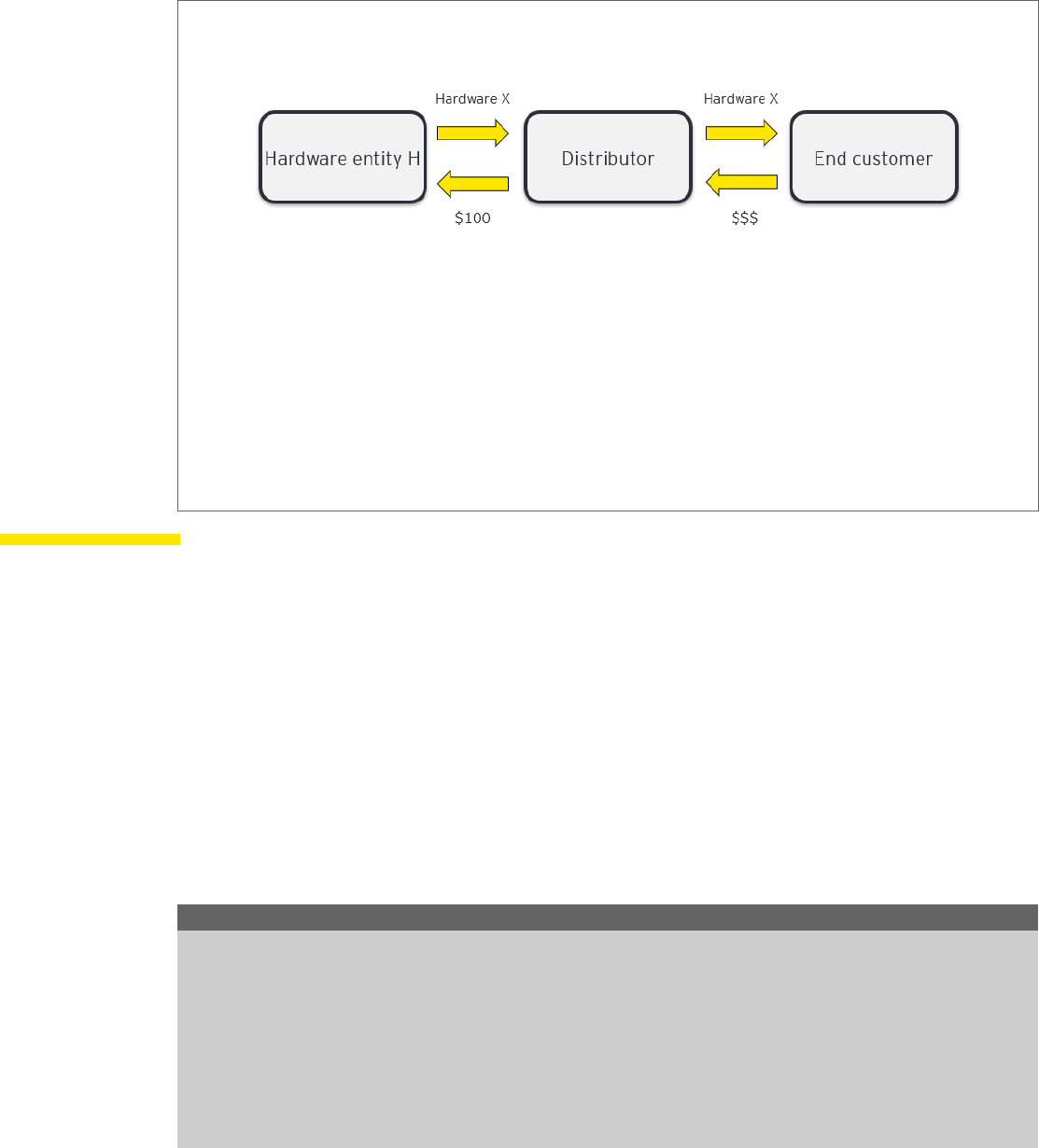
4 Identify the performance obligations in the contract
Financial reporting developments Revenue from contracts with customers (ASC 606) | 133
The diagram below illustrates the flow of consideration and Hardware X between the various parties in
the arrangements:
Scenario A: Hardware entity H is contractually entitled to receive a monthly report from the
distributor indicating the month’s sales, including prices. Because Hardware entity H knows that the
distributor charges customers $125 for Hardware X, it records revenue at the gross amount of $125
and records the $25 retained by the distributor as the cost of sales.
Scenario B: Hardware entity H does not have insight (and does not expect to have insight in the future)
into the price charged by the distributor to end consumers for sales of Hardware X. Although Hardware
entity H is the principal in the arrangement and records revenue at the gross amount, it should not
estimate the price charged to the end consumer. Therefore, revenue recorded by Hardware entity H is
$100, the consideration received from the distributor.
4.5 Consignment arrangements
The standard provides specific guidance for a promise to deliver goods on a consignment basis to other
parties. See section 7.4.
4.6 Customer options for additional goods or services
Many sales contracts give customers the option to acquire additional goods or services. These additional
goods and services may be priced at a discount or may even be free of charge. Options to acquire additional
goods or services at a discount can come in many forms, including sales incentives, volume-tiered pricing
structures, customer award credits (e.g., frequent flyer points) or contract renewal options (e.g., waiver
of certain fees, reduced future rates). See the questions that follow this section and discuss many of
these different types of customer options.
The standard provides the following guidance on customer options:
Excerpt from Accounting Standards Codification
Revenue from Contracts with Customers — Overall
Implementation Guidance
Customer Options for Additional Goods or Services
606-10-55-41
Customer options to acquire additional goods or services for free or at a discount come in many forms,
including sales incentives, customer award credits (or points), contract renewal options, or other
discounts on future goods or services.

4 Identify the performance obligations in the contract
Financial reporting developments Revenue from contracts with customers (ASC 606) | 134
606-10-55-42
If, in a contract, an entity grants a customer the option to acquire additional goods or services, that
option gives rise to a performance obligation in the contract only if the option provides a material right
to the customer that it would not receive without entering into that contract (for example, a discount
that is incremental to the range of discounts typically given for those goods or services to that class of
customer in that geographical area or market). If the option provides a material right to the customer,
the customer in effect pays the entity in advance for future goods or services, and the entity recognizes
revenue when those future goods or services are transferred or when the option expires.
606-10-55-43
If a customer has the option to acquire an additional good or service at a price that would reflect the
standalone selling price for that good or service, that option does not provide the customer with a
material right even if the option can be exercised only by entering into a previous contract. In those
cases, the entity has made a marketing offer that it should account for in accordance with the guidance
in this Topic only when the customer exercises the option to purchase the additional goods or services.
As stated above, when an entity grants a customer the option to acquire additional goods or services,
that option is a separate performance obligation only if it provides a material right to the customer that
the customer would not receive without entering into the contract (e.g., a discount that exceeds the range
of discounts typically given for those goods or services to that class of customer in that geographical area
or market). Refer to Question 4-24 below for further discussion on the evaluation of class of customer.
The Board indicated in the Basis for Conclusions of ASU 2014-09
111
that the purpose of this guidance is
to identify and account for options that customers are paying for (often implicitly) as part of the current
transaction. The FASB did not provide any bright lines about what constitutes a “material” right. However,
the guidance states that an option to purchase additional goods or services at their standalone selling
prices does not provide a material right and instead is a marketing offer. This is the case even if the
customer has obtained the option only as a result of entering into a previous contract. However, an option
to purchase additional goods or services in the future at the current standalone selling price could be a
material right if prices are highly likely to significantly increase or if a renewal option at the current
standalone selling price is offered for an extended period of time and the standalone selling price for the
product is highly likely to significantly increase, depending on the facts and circumstances of the
contract. This is because the customer is being offered a discount on future goods or services compared
to what others will have to pay in the future as a result of entering into the previous contract.
How we see it
Significant judgment may be required to determine whether a customer option represents a material
right. This determination is important because it will affect the accounting and disclosures for the
contract at inception and throughout the life of the contract.
The standard includes the following example to illustrate the determination of whether an option
represents a material right (see section 6.1.5 for a discussion of the measurement of options that are
separate performance obligations):
111
Paragraph BC386 of ASU 2014-09.

4 Identify the performance obligations in the contract
Financial reporting developments Revenue from contracts with customers (ASC 606) | 135
Excerpt from Accounting Standards Codification
Revenue from Contracts with Customers — Overall
Implementation Guidance and Illustrations
Example 49 — Option That Provides the Customer with a Material Right (Discount Voucher)
606-10-55-336
An entity enters into a contract for the sale of Product A for $100. As part of the contract, the entity
gives the customer a 40 percent discount voucher for any future purchases up to $100 in the next 30 days.
The entity intends to offer a 10 percent discount on all sales during the next 30 days as part of a seasonal
promotion. The 10 percent discount cannot be used in addition to the 40 percent discount voucher.
606-10-55-337
Because all customers will receive a 10 percent discount on purchases during the next 30 days, the
only discount that provides the customer with a material right is the discount that is incremental to
that 10 percent (that is, the additional 30 percent discount). The entity accounts for the promise to
provide the incremental discount as a performance obligation in the contract for the sale of Product A.
606-10-55-338
To estimate the standalone selling price of the discount voucher in accordance with paragraph 606-
10-55-44, the entity estimates an 80 percent likelihood that a customer will redeem the voucher and
that a customer will, on average, purchase $50 of additional products. Consequently, the entity’s
estimated standalone selling price of the discount voucher is $12 ($50 average purchase price of
additional products × 30 percent incremental discount × 80 percent likelihood of exercising the
option). The standalone selling prices of Product A and the discount voucher and the resulting
allocation of the $100 transaction price are as follows:
Performance
obligation
Standalone
selling price
Product A
$ 100
Discount voucher
12
Total
$ 112
Performance
obligation
Allocated
transaction price
Product A
$ 89
($100 ÷ $112 × $100)
Discount voucher
11
($12 ÷ $112 × $100)
Total
$ 100
606-10-55-339
The entity allocates $89 to Product A and recognizes revenue for Product A when control transfers.
The entity allocates $11 to the discount voucher and recognizes revenue for the voucher when the
customer redeems it for goods or services or when it expires.

4 Identify the performance obligations in the contract
Financial reporting developments Revenue from contracts with customers (ASC 606) | 136
Evaluating whether an option provides a material right may be more complex when the standalone selling
price of the good or service is highly variable, as illustrated below:
Illustration 4-10: Evaluating a customer option when the standalone selling price is highly variable
Technology entity Y enters into a contract with Customer Z for a perpetual license of software A with
one year of PCS. The contract also includes an option to purchase additional licenses of software A at
40% off list price.
The entity does not sell software A separately, but it sells PCS separately in the form of renewals that
are consistently priced at 20% of the net license fee. Assume that Technology entity Y uses the
residual method to estimate the standalone selling price of the perpetual license for software A (see
section 6.1.2). Also assume that the price Technology entity Y charges for the bundle of the perpetual
license with PCS is highly variable. That is because the price Technology entity Y charges ranges from
list price to a discount of up to 70% for the bundle to customers in the same class and same market as
Customer Z who have not made prior purchases. (Assume that the entity has appropriately stratified
its contracts/customers to evaluate the range of discounts and has a sufficient amount of transactions
to support that this is the range of discounts it offers.)
Because the 40% discount Technology entity Y offered to Customer Z is within the range of discounts
it typically offers to customers in the same class as Customer Z, Technology entity Y concludes that
this option does not represent a material right.
While the customer option is determined not to be a material right in this example, that might not always be
the case, and an entity would need to evaluate all customer options, even those for which the price of the
good or service that is subject to the option is highly variable and for which the residual approach was used.
Question 4-20 Should entities consider only the current transaction or should they consider past and future transactions
with the same customer when determining whether an option for additional goods and services
provides the customer with a material right? [31 October 2014 TRG meeting, agenda paper no. 6;
FASB staff Q&As, question 12]
TRG members generally agreed that entities should consider all relevant transactions with a customer
(i.e., current, past and future transactions), including those that provide accumulating incentives such as
loyalty programs, when determining whether an option represents a material right. That is, the evaluation
should not be performed only in relation to the current transaction.
Question 4-21 Is the material right evaluation solely a quantitative evaluation or should the evaluation also consider
qualitative factors? [31 October 2014 TRG meeting, agenda paper no. 6; FASB staff Q&As, question 13]
TRG members generally agreed that the evaluation should consider both quantitative and qualitative
factors that would be known to the entity (e.g., what a new customer would pay for the same service, the
availability and pricing of competitors’ service alternatives, whether the average customer life indicates
that the fee provides an incentive for customers to remain beyond the stated contract term, whether the
right accumulates) because a customer’s perspective on what constitutes a “material right” might
consider qualitative factors. This is consistent with the notion that when identifying promised goods or
services in Step 2, an entity should consider reasonable expectations of the customer that the entity will
transfer a good or service to it.
4 Identify the performance obligations in the contract
Financial reporting developments Revenue from contracts with customers (ASC 606) | 137
Question 4-22 How should an entity distinguish between a contract that contains an option to purchase additional
goods and services and a contract that includes variable consideration (see section 5.2) based on a
variable quantity (e.g., a usage-based fee)? [9 November 2015 TRG meeting, agenda paper no. 48;
FASB staff Q&As, question 23]
Entities have found it challenging to distinguish between a contract that includes customer options to
purchase additional goods and services and one that includes variable consideration based on a variable
quantity (e.g., a usage-based fee) because, under both types of contracts, the ultimate quantity of goods
or services to be transferred to the customer is often unknown at contract inception. TRG members
generally agreed that this determination requires judgment and consideration of the facts and
circumstances. They also generally agreed that the TRG agenda paper on this question provides a
framework that helps entities make this determination.
This determination is important because it affects the accounting for the contract at inception and
throughout the life of the contract as well as disclosures. If an entity concludes that a customer option for
additional goods or services provides a material right, the option itself is deemed to be a performance
obligation in the contract, but the underlying goods or services are not until the option is exercised (as
discussed below in Question 4-23). As a result, the entity is required to allocate a portion of the
transaction price to the material right at contract inception and to recognize that revenue when or as the
option is exercised or the option expires. If an entity instead concludes that an option for additional
goods or services is not a material right, there is no accounting for the option and no accounting for the
underlying optional goods or services until those subsequent purchases occur.
However, if the contract includes variable consideration (rather than a customer option), an entity has to
estimate at contract inception the variable consideration expected over the life of the contract and
update that estimate each reporting period (subject to a constraint) (see section 5.2). There are also
more disclosures required for variable consideration (e.g., the requirement to disclose the remaining
transaction price for unsatisfied performance obligations) (see section 10.5.1.3) than for options that
are not determined to be material rights.
The TRG agenda paper explained that the first step in determining whether a contract involving variable
quantities of goods or services should be accounted for as a contract containing customer options or
variable consideration is for the entity to determine the nature of its promise in providing goods or
services to the customer and the rights and obligations of the parties.
In a contract in which the variable quantity of goods or services results in variable consideration, the
nature of the entity’s promise is to transfer to the customer an overall service. In providing this overall
service, an entity may perform individual tasks or activities. At contract inception, the entity is presently
obligated by the terms and conditions of the contract to transfer all promised goods or services provided
under the contract, and the customer is obligated to pay for those promised goods or services. This is
because the customer entered into a contract that obligates the entity to transfer those goods or
services. The customer’s subsequent actions to utilize the service affect the measurement of revenue (in
the form of variable consideration) but do not obligate the entity to provide additional distinct goods or
services beyond those promised in the contract.
For example, consider a contract between a transaction processor and a customer in which the processor
will process all of the customer’s transactions in exchange for a fee paid for each transaction processed. The
ultimate quantity of transactions that will be processed is not known. The nature of the entity’s promise is to
provide the customer with continuous access to the processing platform so that submitted transactions are
processed. By entering into the contract, the customer has made a purchasing decision that obligates the
entity to provide continuous access to the transaction processing platform. The consideration paid by the
customer results from events (i.e., additional transactions being submitted for processing to the processor)

4 Identify the performance obligations in the contract
Financial reporting developments Revenue from contracts with customers (ASC 606) | 138
that occur after (or as) the entity transfers the payment processing service. The customer’s actions do not
obligate the processor to provide additional distinct goods or services because the processor is already
obligated (starting at contract inception) to process all transactions submitted to it.
Another example described in the TRG agenda paper of contracts that may include variable consideration
include certain IT outsourcing contracts. As illustrated below, under this type of contract (similar to the
transaction processing contract discussed above), the entity provides continuous delivery of a service
over the contract term and the amount of service provided is variable.
Example of variable consideration
An entity enters into a 10-year IT outsourcing arrangement with a customer in which it provides
continuous delivery of outsourced activities over the contract term. The entity provides server
capacity, manages the customer’s software portfolio and runs an IT help desk. The total monthly
invoice is calculated based on the units consumed for each activity. For example, the billings might be
based on millions of instructions per second of computing power, the number of software applications
used or the number of employees supported, and the price per unit differs for each type of activity.
At contract inception, it is unknown how many outsourced activities the entity will perform for the
customer throughout the life of the contract. The question that arises is whether the customer makes
optional purchases when it sends activities to the entity to be performed or whether its use of the
service affects the measurement of revenue (in the form of variable consideration).
The conclusion in the TRG agenda paper was that this contract likely contains variable consideration
because of the nature of the entity’s promise. That is, the customer is paying for the entity to stand
ready to perform in an outsourcing capacity on any given day. The customer does not make a separate
buying decision each time it sends a unit for processing. Instead, the customer made its buying
decision when it entered into the outsourcing contract with the entity. The customer’s actions to use
the service also do not obligate the entity to provide any additional distinct goods or services.
In contrast, when an entity provides a customer option, the nature of its promise is to provide the
quantity of goods or services specified in the contract, if any, and a right for the customer to choose the
amount of additional distinct goods or services the customer will purchase. That is, the entity is not
obligated to provide any additional distinct goods or services until the customer exercises the option.
The customer has a contractual right that allows it to choose the amount of additional distinct goods or
services to purchase, but the customer has to make a separate purchasing decision to obtain those
additional distinct goods or services. Prior to the customer’s exercise of that right, the entity is not
obligated to provide (nor does it have a right to consideration for transferring) those goods or services.
Because an option that is a marketing offer is considered a new contract if it is exercised, the FASB staff
noted in the TRG agenda paper that an analogy to the contract modification guidance in ASC 606-10-25-12
through 25-13 (see section 3.4) could be helpful when an entity is distinguishing between optional purchases
and variable consideration. For a modification to be considered a separate contract, one of the criteria is
that the modification results in the addition of promised goods or services that are distinct. Similarly, the
FASB staff noted that the exercise of a customer option would typically result in the addition of promised
goods or services that are distinct.

4 Identify the performance obligations in the contract
Financial reporting developments Revenue from contracts with customers (ASC 606) | 139
The TRG agenda paper included the following example of a contract that includes a customer option
(rather than variable consideration):
Example of customer option that is not a material right
Entity B enters into a contract to provide 100 widgets to Customer Y at $10 per widget. Each widget is
a distinct good transferred at a point in time. The contract also gives Customer Y the right to purchase
additional widgets at the standalone selling price of $10 per widget. Therefore, the quantity that may
be purchased by Customer Y is variable.
The conclusion in the TRG agenda paper was that, while the quantity of widgets that may be
purchased is variable, the transaction price for the existing contract is fixed at $1,000 [100 widgets x
$10 per widget]. That is, the transaction price only includes the consideration for the 100 widgets
specified in the contract, and the customer’s decision to purchase additional widgets is an option. While
Entity B may be required to deliver additional widgets in the future, Entity B is not legally obligated to
provide the additional widgets until Customer Y exercises the option. In this example, the option is
accounted for as a separate contract because there is no material right, given the pricing of the option at
the standalone selling price of the widget.
Contrast the above example with another in which the contract includes a customer option that is
determined to be a material right:
Illustration 4-11: Customer option that is a material right
Entity B enters into a contract to provide 100 widgets to Customer Y at $10 per widget (which is the
widget’s standalone selling price at contract inception). Each widget is a distinct good transferred at a
point in time. The contract also gives Customer Y the right to purchase additional widgets at $9 per
widget. Therefore, the quantity that may be purchased by Customer Y is variable.
While the quantity of widgets that may be purchased is variable, the transaction price for the existing
contract is fixed at $1,000 [100 widgets x $10 per widget]. That is, the transaction price only includes
the consideration for the 100 widgets specified in the contract, and the customer’s decision to purchase
additional widgets is an option. While Entity B may be required to deliver additional widgets in the future,
Entity B is not legally obligated to provide the additional widgets until Customer Y exercises the option.
Entity B determines that Customer Y obtained a discount on future widgets because $9 per widget is
lower than the standalone selling price of each widget at contract inception (i.e., $10 per widget), as well
as lower than the expected standalone selling price at renewal. In this example, the option is accounted for
as a material right.
The TRG agenda paper also included the following example of a contract in which the variable quantity of
goods or services includes a customer option:
Example of customer option
A supplier enters into a five-year MSA in which the supplier is obligated to produce and sell parts to a
customer at the customer’s request. That is, the supplier is not obligated to transfer any parts until the
customer submits a purchase order. In addition, the customer is not obligated to purchase any parts;
however, it is highly likely it will because the part is required to manufacture the customer’s product
and it is not practical to get parts from multiple suppliers. Each part is determined to a distinct good
that transfers to the customer at a point in time.

4 Identify the performance obligations in the contract
Financial reporting developments Revenue from contracts with customers (ASC 606) | 140
The conclusion in the TRG agenda paper is that the nature of the promise in this example is the
delivery of parts (and not a service of standing ready to produce and sell parts). That is, the contract
provides a right to the customer to choose the quantity of additional distinct goods (i.e., provides a
customer option) versus a right to use the services for which control to the customer has (or is
currently being) transferred (such as in the transaction processor example above). Similarly, the
supplier is not obligated to transfer any parts until the customer submits the purchase order (another
important factor in distinguishing a customer option from variable consideration), while in certain
other fact patterns the supplier is obligated to make the promised services available to the customer
without any additional decisions made by the customer.
The TRG agenda paper contrasted this example with other contracts that may include a stand-ready
obligation (e.g., a customer’s use of a health club). When the customer submits a purchase order
under the MSA, it is contracting for a specific number of distinct goods, which creates new
performance obligations for the supplier. In contrast, a customer using services in a health club is
using services that the health club is already obligated to provide under the present contract. That is,
there are no new obligations arising from the customer’s usage.
The TRG agenda paper also included the following example of a contract in which the variable quantity of
goods or services results in variable consideration:
Example of variable consideration
Entity A enters into a contract to provide equipment to Customer X. The equipment is a single
performance obligation transferred at a point in time. Entity A charges Customer X based on its usage
of the equipment at a fixed rate per unit of consumption. The contract has no minimum payment
guarantees. Customer X is not contractually obligated to use the equipment; however, Entity A is
contractually obligated to transfer the equipment to Customer X.
The conclusion in the TRG agenda paper was that the usage of the equipment by Customer X is a
variable quantity that affects the amount of consideration owed to Entity A. It does not affect Entity
A’s performance obligation, which is to transfer the piece of equipment. That is, Entity A has
performed by transferring the distinct good, and Customer X’s actions that result in payment to Entity
A occur after the equipment has been transferred and do not require Entity A to provide additional
goods or services.
Question 4-23 When, if ever, should an entity consider the goods or services underlying a customer option as a
separate performance obligation? [9 November 2015 TRG meeting, agenda paper no. 48; FASB staff
Q&As, questions 8 and 21]
If there are no contractual penalties (e.g., termination fees, monetary penalties for not meeting contractual
minimums), TRG members generally agreed that the entity should not identify the additional goods and
services underlying the option as promised goods or services (or performance obligations) at contract
inception, even if the entity may think that it is virtually certain (e.g., the customer is economically compelled)
that a customer will exercise its option for additional goods and services. Only the option should be
assessed to determine whether it represents a material right to be accounted for as a performance
obligation. As a result, consideration that would be received for optional goods or services should not
be included in the transaction price at contract inception.

4 Identify the performance obligations in the contract
Financial reporting developments Revenue from contracts with customers (ASC 606) | 141
The TRG agenda paper included the following example of a contract in which it is virtually certain that a
customer will exercise its option for additional goods and services:
Example of customer option with no contractual penalties
An entity sells equipment and consumables, both of which are determined to be distinct goods that are
recognized at a point in time. The standalone selling price of the equipment and each consumable is
$10,000 and $100, respectively. The equipment costs $8,000, and each consumable costs $60. The
entity sells the equipment for $6,000 (40% discount from its standalone selling price) with a customer
option to purchase each consumable for $100 (equal to its standalone selling price). There are no
contractual minimums, but the entity estimates the customer will purchase 200 consumables over the
next two years. This is an exclusive contract, and the customer cannot purchase the consumables
from any other vendors during the contract term.
TRG members generally agreed that the consumables underlying each option would not be considered
a part of the initial contract, and the option itself does not represent a material right because it is
priced at the standalone selling price for the consumable. This is the case even though the customer is
compelled to exercise its option for the consumables because the equipment cannot function without
the consumables and the contract includes an exclusivity clause that requires the customer to acquire
the consumables only from the entity. Accordingly, the transaction price is $6,000, and it is entirely
attributable to the equipment resulting in a loss for the entity of $2,000 when the entity transfers
control of the equipment to the customer.
However, contractual minimums may represent fixed consideration in a contract, even if the contract
also contains optional purchases. For example, an MSA may set minimum purchase quantities that the
entity is obligated to provide, but any quantities above the minimum may require the customer to make a
separate purchasing decision (i.e., exercise a customer option). If contractual penalties exist
(e.g., termination fees, monetary penalties assessed) for not meeting contractual minimums, it may be
appropriate to include some or all of the goods or services underlying customer options as part of the
contract at inception because the penalty effectively creates a minimum purchase obligation for the
goods or services that would be purchased if the penalty were enforced.
Example of customer option with contractual penalties
Consider the same facts as in the example above except that the customer will incur a penalty if it does
not purchase at least 200 consumables. That is, the customer will be required to repay some or all of
the $4,000 discount provided on the equipment. Per the contract terms, the penalty decreases as
each consumable is purchased at a rate of $20 per consumable.
The conclusion in the TRG agenda paper was that the penalty is substantive, and it effectively creates
a minimum purchase obligation. As a result, the entity concludes that the minimum number of
consumables required to avoid the penalty would be evidence of enforceable rights and obligations. The
entity would then calculate the transaction price as $26,000 [(200 consumables x $100/consumable) +
$6,000 (the selling price of the equipment)]. Further, the conclusion in the TRG agenda paper was
that, if the customer failed to purchase 200 consumables, the entity accounts for the resulting penalty
as a contract modification.

4 Identify the performance obligations in the contract
Financial reporting developments Revenue from contracts with customers (ASC 606) | 142
Question 4-24 How should an entity consider the class of customer when evaluating whether a customer option is a
material right? [18 April 2016 FASB TRG meeting, agenda paper no. 54; FASB staff Q&As, question 14]
FASB TRG members generally agreed that an entity should consider “class of customer” when
determining whether a customer option to acquire additional goods or services represents a material
right. In addition, in making this evaluation, they agreed that an entity should first determine whether the
customer option exists independently of the existing contract. That is, would the entity offer the same
pricing to a similar customer independent of a prior contract with the entity? If the pricing is
independent, the option is considered a marketing offer, and there is no material right. FASB TRG
members also generally agreed that the determination likely requires an entity to exercise significant
judgment and consider all facts and circumstances.
As discussed above, ASC 606-10-55-42 states that when an entity grants a customer the option to
acquire additional goods or services, that option is a separate performance obligation if it provides a
material right that the customer would not receive without entering into the contract (e.g., a discount
that exceeds the range of discounts typically given for those goods or services to that class of customer
in that region or market). Further, ASC 606-10-55-43 states that an option to purchase additional goods
or services at their standalone selling prices does not provide a material right and instead is a marketing
offer. The FASB staff noted in the TRG agenda paper that this guidance is intended to make clear that a
customer option to acquire additional goods or services would not give rise to a material right if a
customer could execute a separate contract to obtain the goods or services at the same price. That is,
customer options that would exist independently of an existing contract with a customer do not
constitute performance obligations in that existing contract.
The TRG agenda paper provided several examples of the FASB staff’s views on this topic, including the following:
Example of class of customer evaluation
Retailer owns and operates several electronic stores and currently provides customers who purchase
a 50-inch television with a coupon for 50% off the purchase of a stereo system. The coupon must be
redeemed at one of Retailer’s stores and is valid for one year. Retailer has never offered a discount of
this magnitude to a customer that doesn’t purchase a television (or another item of similar value).
Customer A purchases a 50-inch television from Retailer. At the time of purchase, Customer A receives a
coupon for 50% off a stereo system. In evaluating whether the 50% discount provided to Customer A
exists independently of its existing contract to purchase a television, Retailer should compare the
discount offered to Customer A (50%) with the discount typically offered to other customers independent
of a prior contract (purchase) with Retailer. For customers that do not purchase a 50-inch television, the
only promotion Retailer is running on the stereo system is offering a 5% off coupon to all customers
walking into the store. It would not be appropriate for Retailer to compare the discount offered to
Customer A with a discount offered to another customer that also purchased a 50-inch television.
This is because the objective of the guidance in paragraphs 606-10-55-42 through 55-43 is to
determine whether a customer option exists independently of an existing contract with a customer.
Retailer determines that the discount offered to Customer A is not comparable to the discount
typically offered to customers without a prior contract (purchase). Rather, Customer A is receiving an
incremental discount that it would not have received had it not entered into a contract to purchase a
50-inch television. The incremental discount provided to Customer A represents a material right.

4 Identify the performance obligations in the contract
Financial reporting developments Revenue from contracts with customers (ASC 606) | 143
Question 4-25 Should volume rebates and/or discounts on goods or services be accounted for as variable
consideration or as customer options to acquire additional goods or services at a discount?
It will depend on whether rebate or discount program is applied retrospectively or prospectively.
Generally, if a volume rebate or discount is applied prospectively, we believe the rebate or discount
would be accounted for as a customer option (not variable consideration). This is because the
consideration for the goods or services in the present contract is not contingent upon or affected by any
future purchases. Rather, the discounts available from the rebate program affect the price of future
purchases. Entities need to evaluate whether the volume rebate or discount provides the customer with
an option to purchase goods or services in the future at a discount that represents a material right (and is
therefore accounted for as a performance obligation) (see Question 4-26 below).
However, we believe a volume rebate or discount that is applied retrospectively should be accounted for
as variable consideration (see section 5.2). This is because the final price of each good or service sold
depends on the customer’s total purchases subject to the rebate program. That is, the consideration is
contingent upon the occurrence or nonoccurrence of future events. This view is consistent with Example
24 in the standard (which is excerpted in full in section 5.2.1).
Entities should keep in mind that they need to evaluate whether contract terms other than those specific
to the rebate or discount program create variable consideration that need to be separately evaluated
(e.g., if the goods subject to the rebate program are also sold with a right of return).
Question 4-26 How should an entity consider whether prospective volume discounts determined to be customer
options are material rights? [18 April 2016 FASB TRG meeting, agenda paper no. 54; FASB staff Q&As,
question 14]
FASB TRG members generally agreed that in making this evaluation, similar to the discussion above in
Question 4-24, an entity should first evaluate whether the option exists independently of the existing
contract. That is, would the entity offer the same pricing to a similar high-volume customer independent
of a prior contract with the entity? If yes, that indicates that the volume discount is not a material right
as it is not incremental to the discount typically offered to a similar high-volume customer. If the entity
would typically charge a higher price to a similar customer that might indicate that the volume discount is
a material right as the discount is incremental.
The TRG agenda paper included the following example:
Example of volume discounts
Entity enters into a long-term MSA with Customer A to provide an unspecified volume of non-
customized parts. The price of the parts in subsequent years is dependent on Customer A’s purchases
in the current year. That is, Entity charges Customer A $1.00 per part in year one and if Customer A
purchases more than 100,000 parts, its year two price will be $.90 per part.
When making the determination whether the contract between Entity and Customer A includes a
material right, Entity first evaluates whether the option provided to Customer A exists independently
of the existing contract. To do this, Entity should compare the discount offered to Customer A with
the discount typically offered to a similar high-volume customer that receives a discount independent
of a prior contract with Entity. Such a similar customer could be Customer B who places a single order
with Entity for 105,000 parts. Comparing the price offered to Customer A in year two with offers to
other customers that also receive pricing that is contingent on prior purchases does not help Entity
determine whether Customer A would have been offered the year two price had it not entered into the
original contract.

4 Identify the performance obligations in the contract
Financial reporting developments Revenue from contracts with customers (ASC 606) | 144
Volume discounts or tiered pricing can make an entity’s assessment of whether a customer option to
purchase additional goods or services is a material right more complex. This assessment likely requires
significant judgment, as illustrated below:
Question 4-27 How should an entity consider whether a renewal option is a material right?
An entity should assess whether a renewal option represents a material right in the same manner as
other customer options discussed above. That is, an entity should determine whether the customer
renewal option would be offered at the same price to a similar class of customer independent of a prior
contract with the entity. Customer renewal options may be explicitly included in the original contract or,
as discussed in section 5.8, the existence of a non-refundable up-front fee may indicate that the contract
includes a renewal option for future goods and services (e.g., if the customer renews the contract
without the payment of an additional up-front fee).
Illustration 4-12: Evaluating a customer option with volume discounts
Semiconductor Entity S sells microchips for use in cell phones. The entity executes a contract with a
customer to sell 1 million units of microchip M for $0.50 each, or $500,000. The contract provides the
right for the customer to purchase an additional 200,000 microchips for $0.40 each.
The entity concludes that it has provided the customer with an option to purchase the additional
microchips since the entity is not obligated to provide the additional goods until the customer makes a
purchasing decision. Further, the volume discount is applied prospectively and does not affect the
transaction price in the original contract.
Scenario A: For microchip M, Semiconductor Entity S provides volume discounts as part of its
standard pricing practices and typically prices the first 1 million microchips at $0.50 each, the second
million at $0.40 each and any additional amounts at $0.35 each.
Semiconductor Entity S considers whether the option provides the customer with a material right.
To make this evaluation, the entity compares the discount offered in this option with the discount it
typically offers to a similar high-volume customer that receives a discount without having had a prior
contract. In other words, the entity compares the pricing in this contract to the pricing it typically
offers to customers that purchase between 1 million and 2 million units of microchip M without having
made any prior purchases.
The entity has sold and continues to sell the same volume of microchip M at the same price to other
customers in the same class of customer who have not made prior purchases (i.e., similar customers
pay $0.50 each for the first 1 million microchips and $0.40 each for the second million). That is, the
price offered to the customer in the option exists independently of the existing contract. Therefore,
Semiconductor Entity S concludes that it has not provided the customer with a material right.
Scenario B: For microchip M, Semiconductor Entity S provides volume discounts as part of its
standard pricing practices and typically prices the first 3 million microchips at $0.50 each and any
additional amounts at $0.30 each.
Semiconductor Entity S considers whether the option provides the customer with a material right. To make
this evaluation, the entity compares the discount offered in this option with the discount it typically offers
to a similar high-volume customer that receives a discount without having had a prior contract.
For similar high-volume customers of the same customer class who have not made prior purchases,
the entity typically does not provide this pricing (e.g., similar customers would pay $0.50 per
microchip for all 1.2 million microchips). Therefore, the entity concludes that it has provided the
customer with a material right.

4 Identify the performance obligations in the contract
Financial reporting developments Revenue from contracts with customers (ASC 606) | 145
As discussed above in section 4.6, ASC 606-10—55-43 states that if a customer has the option to
purchase additional goods or services (e.g., by exercising a renewal option) at a price that would reflect
the standalone selling prices of those goods or services, the renewal option would not provide a material
right and instead is a marketing offer. Determining the standalone selling price of a renewal option may
require significant judgment. For example, a renewal option offered at the current standalone selling
price may or may not be determined to be a material right. That is, if the pricing for the goods and
services are expected to remain stable, it would be appropriate for a renewal option offered at a current
standalone selling price to be considered a marketing offer. In contrast, a renewal option at the current
standalone selling price could be a material right if, for example, prices are highly likely to significantly
increase or the renewal option is offered for an extended period of time.
Consider the example below from the standard that describes the accounting for a renewal option that is
a material right. The example also includes guidance on how to allocate a portion of the transaction price
to the material right, which is further discussed in section 6.1.5.
Excerpt from Accounting Standards Codification
Revenue from Contracts with Customers — Overall
Implementation Guidance and Illustrations
Example 51 — Option That Provides the Customer with a Material Right (Renewal Option)
606-10-55-343
An entity enters into 100 separate contracts with customers to provide 1 year of maintenance
services for $1,000 per contract. The terms of the contracts specify that at the end of the year, each
customer has the option to renew the maintenance contract for a second year by paying an additional
$1,000. Customers who renew for a second year also are granted the option to renew for a third year
for $1,000. The entity charges significantly higher prices for maintenance services to customers that
do not sign up for the maintenance services initially (that is, when the products are new). That is, the
entity charges $3,000 in Year 2 and $5,000 in Year 3 for annual maintenance services if a customer
does not initially purchase the service or allows the service to lapse.
606-10-55-344
The entity concludes that the renewal option provides a material right to the customer that it would
not receive without entering into the contract because the price for maintenance services are
significantly higher if the customer elects to purchase the services only in Year 2 or 3. Part of each
customer’s payment of $1,000 in the first year is, in effect, a nonrefundable prepayment of the
services to be provided in a subsequent year. Consequently, the entity concludes that the promise to
provide the option is a performance obligation.
606-10-55-345
The renewal option is for a continuation of maintenance services, and those services are provided in
accordance with the terms of the existing contract. Instead of determining the standalone selling prices
for the renewal options directly, the entity allocates the transaction price by determining the
consideration that it expects to receive in exchange for all the services that it expects to provide in
accordance with paragraph 606-10-55-45.
606-10-55-346
The entity expects 90 customers to renew at the end of Year 1 (90 percent of contracts sold) and 81
customers to renew at the end of Year 2 (90 percent of the 90 customers that renewed at the end of
Year 1 will also renew at the end of Year 2, that is 81 percent of contracts sold).

4 Identify the performance obligations in the contract
Financial reporting developments Revenue from contracts with customers (ASC 606) | 146
606-10-55-347
At contract inception, the entity determines the expected consideration for each contract is $2,710
[$1,000 + (90 percent × $1,000) + (81 percent × $1,000)]. The entity also determines that
recognizing revenue on the basis of costs incurred relative to the total expected costs depicts the
transfer of services to the customer. Estimated costs for a three-year contract are as follows:
Year 1 $ 600
Year 2 $ 750
Year 3 $ 1,000
606-10-55-348
Accordingly, the pattern of revenue recognition expected at contract inception for each contract is
as follows:
Expected Costs Adjusted for
Likelihood of Contract Renewal
Allocation of Consideration Expected
Year 1
$ 600 ($600 × 100%)
$ 780 [($600 ÷ $2,085) × $2,710]
Year 2
675 ($750 × 90%)
877 [($675 ÷ $2,085) × $2,710]
Year 3
810 ($1,000 × 81%)
1,053 [($810 ÷ $2,085) × $2,710]
Total
$ 2,085
$ 2,710
606-10-55-349
Consequently, at contract inception, the entity allocates to the option to renew at the end of Year 1
$22,000 of the consideration received to date [cash of $100,000 – revenue to be recognized in Year 1
of $78,000 ($780 × 100)].
606-10-55-350
Assuming there is no change in the entity’s expectations and the 90 customers renew as expected, at
the end of the first year, the entity has collected cash of $190,000 [(100 × $1,000) + (90 × $1,000)],
has recognized revenue of $78,000 ($780 × 100), and has recognized a contract liability of $112,000.
606-10-55-351
Consequently, upon renewal at the end of the first year, the entity allocates $24,300 to the option to
renew at the end of Year 2 [cumulative cash of $190,000 – cumulative revenue recognized in Year 1
and to be recognized in Year 2 of $165,700 ($78,000 + $877 × 100)].
606-10-55-352
If the actual number of contract renewals was different than what the entity expected, the entity
would update the transaction price and the revenue recognized accordingly.
Question 4-28 How should an entity consider whether a loyalty or reward program is a material right?
Entities frequently offer loyalty or reward programs under which customers accumulate points that they can
redeem for “free” or discounted products or services. Under ASC 606-10-55-42, an entity typically concludes
that such a loyalty or reward program provides a material right to customers that they would not receive
without entering into a contract. This is because the customer effectively pays in advance for the right to
obtain a future good or service (e.g., travel, upgrades, products) or a discount on that good or service.
This is also consistent with the discussion of the TRG members, as noted above in Questions 4-20 and 4-21,
that entities should consider all relevant transactions with a customer (i.e., current, past and future
transactions) and both quantitative and qualitative factors, including those that provide accumulating
incentives, when determining whether an option represents a material right. Example 52 in the standard
(excerpted in full in section 7.9) illustrates the accounting for a loyalty program.

4 Identify the performance obligations in the contract
Financial reporting developments Revenue from contracts with customers (ASC 606) | 147
Question 4-29 How should an entity account for the exercise of a material right? That is, should it be accounted for
as a contract modification, a continuation of the existing contract or as variable consideration?
[30 March 2015 TRG meeting, agenda paper no. 32; FASB staff Q&As, question 15]
TRG members generally agreed that it is reasonable for an entity to account for the exercise of a material
right as either a contract modification or as a continuation of the existing contract (i.e., a change in the
transaction price). TRG members also generally agreed it is not appropriate to account for the exercise of
a material right as variable consideration.
Under the approach that treats the exercise of a material right as a continuation of the existing contract
(i.e., because the customer decided to purchase additional goods or services contemplated in the original
contract), an entity would update the transaction price of the contract to include any consideration to
which the entity expects to be entitled as a result of the exercise in accordance with the guidance on
changes in the transaction price included in ASC 606-10-32-42 through 32-45 (see section 6.5).
Under this guidance, changes in the total transaction price generally are allocated to the separate
performance obligations on the same basis as the initial allocation. However, ASC 606-10-32-44 requires
an entity to allocate a change in the transaction price entirely to one or more, but not all, performance
obligations if the criteria of ASC 606-10-32-40 are met. These criteria (discussed further in section 6.3)
are that the additional consideration specifically relates to the entity’s efforts to satisfy the performance
obligation(s), and allocating the additional consideration entirely to one or more, but not all, performance
obligation(s) is consistent with the standard’s allocation objective (see section 6). The additional
consideration received for the exercise of the option likely meets the criteria to be allocated directly to
the performance obligation(s) underlying the material right and recognized when or as the performance
obligation(s) is (are) satisfied.
The TRG agenda paper included the following example:
Example of material right exercise under the guidance on changes in the transaction price
Entity enters into a contract with Customer to provide two years of Service A for $100 that also
includes an option for Customer to purchase two years of Service B for $300. The standalone selling
prices of Services A and B are $100 and $400, respectively. Entity concludes the option represents a
material right and its estimate of the standalone selling price of the option is $33. Entity allocates the
$100 transaction price to each performance obligation as follows:
Transaction Price Standalone selling price % Allocation
Service A $ 100 75% $ 75
Option $ 33 25% $ 25
Totals $ 100 $ 133 100% $ 100
Upon executing the contract, Customer pays $100 and Entity begins transferring Service A to
Customer. The $75 allocated to Service A is recognized over the two-year service period. The $25
allocated to the option is deferred until Service B is transferred to the customer or the option expires.
Six months after executing the contract, Customer exercises the option to purchase two years of
Service B for $300. Following the guidance on changes in the transaction price, the $300 of
consideration related to Service B is added to the amount previously allocated to the option to
purchase Service B (i.e., $300 + 25 = $325) and is recognized as revenue over the two-year period in
which Service B is transferred. Entity is able to allocate the additional consideration received for the
exercise of the option as it specifically relates to Entity’s efforts to satisfy the performance obligation
and the allocation in this manner is consistent with the standard’s allocation objective.

4 Identify the performance obligations in the contract
Financial reporting developments Revenue from contracts with customers (ASC 606) | 148
Under the second approach that treats the exercise of a material right as a contract modification
(i.e., because there is a change in the scope and/or price of a contract), an entity follows the contract
modification guidance in ASC 606-10-25-10 through 25-13 (see section 3.4).
Because more than one approach would be acceptable, TRG members generally agreed that an entity
needs to consider which approach is most appropriate based on the facts and circumstances and
consistently apply that approach to similar contracts.
Question 4-30 Is an entity required to evaluate whether a customer option that provides a material right includes a
significant financing component? If so, are there any key factors an entity should consider when
performing this evaluation? [30 March 2015 TRG meeting, agenda paper no. 32; FASB staff Q&As,
question 35]
TRG members generally agreed that an entity has to evaluate whether a material right includes a
significant financing component (see section 5.5), as it needs to do for any other performance obligation.
This requires judgment and consideration of the facts and circumstances.
However, as discussed in the TRG agenda paper on this question, a factor often present in customer
options could be determinative in this evaluation. ASC 606-10-32-17(a) states that if a customer
provides an advance payment for a good or service but the customer can choose when the good or
service will be transferred, no significant financing component exists. As a result, if the customer can
choose when to exercise the option, there likely is not a significant financing component.
Question 4-31 How should revenue be recognized for customer options for additional goods or services that represent a
material right but do not have an expiration date (i.e., can an entity recognize breakage for these options)?
Stakeholders have asked this question because ASC 606-10-55-42 states that an entity should recognize
revenue allocated to options that are material rights when the future goods or services resulting from the
option are transferred or when the option expires. However, in some cases, options may be perpetual
and not have an expiration date. For example, loyalty points likely provide a material right to a customer
and, sometimes, these points do not expire. We believe an entity may apply the guidance in ASC 606 on
customers’ unexercised rights (or breakage) as discussed in section 7.9 (i.e., ASC 606-10-55-46 through
55-49). That is, we believe it is appropriate for revenue allocated to a customer option that does not
expire to be recognized at the earlier of when the future goods or services resulting from the option are
transferred or, if the goods or services are not transferred, when the likelihood of the customer
exercising the option becomes remote.
4.7 Sale of products with a right of return
An entity may provide its customers with a right to return a transferred product. A right of return may be
contractual, an implicit right that exists due to the entity’s customary business practice or a combination
of both (e.g., an entity has a stated return period but generally accepts returns over a longer period).
A customer exercising its right to return a product may receive a full or partial refund, a credit applied to
amounts owed, a different product in exchange or any combination of these items.
Offering a right of return in a sales agreement obliges the selling entity to stand ready to accept a returned
product. ASC 606-10-55-24 states that such an obligation does not represent a performance obligation.
Instead, the Board concluded
112
that an entity makes an uncertain number of sales when it provides goods
with a return right. That is, until the right of return expires, the entity is not certain how many sales will fail.
112
Paragraph BC364 of ASU 2014-09.
4 Identify the performance obligations in the contract
Financial reporting developments Revenue from contracts with customers (ASC 606) | 149
Therefore, the Board concluded that an entity should not recognize revenue for sales that are expected to
fail as a result of the customer exercising its right to return the goods. Instead, the potential for customer
returns should be considered when an entity estimates the transaction price because potential returns are
a component of variable consideration. This concept is discussed further in section 5.4.
ASC 606-10-55-28 states that exchanges by customers of one product for another of the same type,
quality, condition and price (e.g., one color or size for another) are not considered returns for the
purposes of applying the standard. Generally, this would be a nonmonetary transaction within the scope
of ASC 845. Further, contracts in which a customer may return a defective product in exchange for a
functioning product should be evaluated in accordance with the guidance on warranties included in the
standard (see section 9.1).

Financial reporting developments Revenue from contracts with customers (ASC 606) | 150
5 Determine the transaction price
The standard provides the following guidance on determining the transaction price:
Excerpt from Accounting Standards Codification
Revenue from Contracts with Customers — Overall
Measurement
606-10-32-1
When (or as) a performance obligation is satisfied, an entity shall recognize as revenue the amount of the
transaction price (which excludes estimates of variable consideration that are constrained in accordance
with paragraphs 606-10-32-11 through 32-13) that is allocated to that performance obligation.
Determining the Transaction Price
606-10-32-2
An entity shall consider the terms of the contract and its customary business practices to determine
the transaction price. The transaction price is the amount of consideration to which an entity expects
to be entitled in exchange for transferring promised goods or services to a customer, excluding
amounts collected on behalf of third parties (for example, some sales taxes). The consideration
promised in a contract with a customer may include fixed amounts, variable amounts, or both.
606-10-32-2A
An entity may make an accounting policy election to exclude from the measurement of the transaction
price all taxes assessed by a governmental authority that are both imposed on and concurrent with a
specific revenue-producing transaction and collected by the entity from a customer (for example,
sales, use, value added, and some excise taxes). Taxes assessed on an entity’s total gross receipts or
imposed during the inventory procurement process shall be excluded from the scope of the election.
An entity that makes this election shall exclude from the transaction price all taxes in the scope of the
election and shall comply with the applicable accounting policy guidance, including the disclosure
requirements in paragraphs 235-10-50-1 through 50-6.
606-10-32-3
The nature, timing, and amount of consideration promised by a customer affect the estimate of the
transaction price. When determining the transaction price, an entity shall consider the effects of all of
the following:
a. Variable consideration (see paragraphs 606-10-32-5 through 32-10 and 606-10-32-14)
b. Constraining estimates of variable consideration (see paragraphs 606-10-32-11 through 32-13)
c. The existence of a significant financing component in the contract (see paragraphs 606-10-32-15
through 32-20)
d. Noncash consideration (see paragraphs 606-10-32-21 through 32-24)
e. Consideration payable to a customer (see paragraphs 606-10-32-25 through 32-27).
606-10-32-4
For the purpose of determining the transaction price, an entity shall assume that the goods or services
will be transferred to the customer as promised in accordance with the existing contract and that the
contract will not be cancelled, renewed, or modified.
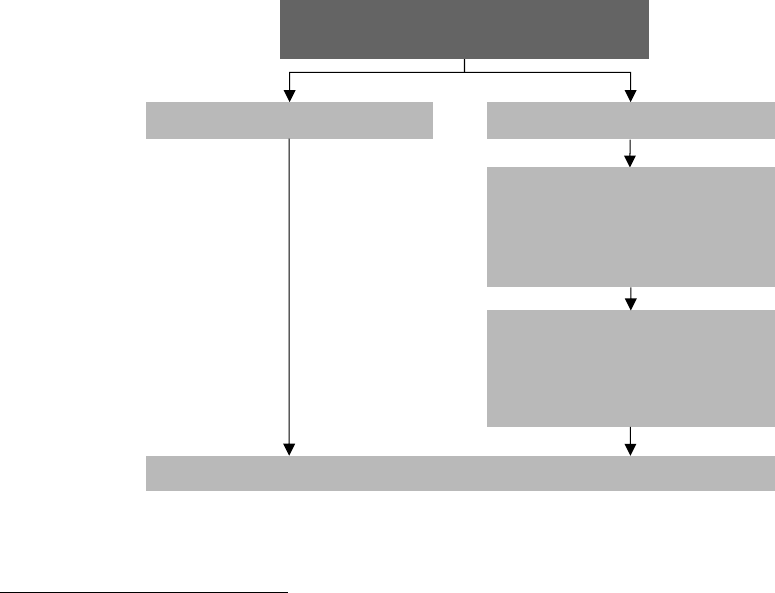
5 Determine the transaction price
Financial reporting developments Revenue from contracts with customers (ASC 606) | 151
The transaction price is based on the amount to which the entity expects to be “entitled.” This is meant
to reflect the amount that the entity has rights to under the present contract (see section 3.2 on contract
enforceability and termination clauses). That is, the transaction price does not include estimates of
consideration from future change orders for additional goods and services. The amount to which the entity
expects to be entitled also excludes amounts collected on behalf of another party, such as sales taxes. As
noted in the Basis for Conclusions of ASU 2014-09,
113
the Board decided that the transaction price
should not include the effects of the customer’s credit risk unless the contract includes a significant
financing component (see section 5.5).
The FASB also clarified in the Basis for Conclusions of ASU 2014-09
114
that if an entity has rights under
the present contract to amounts that are to be paid by parties other than the customer, these amounts
should be included in the transaction price. For example, in the health care industry, an entity may be
entitled under the present contract to payments from a patient, insurance companies and/or governmental
organizations. If that’s the case, the total to which the entity expects to be entitled should be included in
the transaction price, regardless of the source.
Determining the transaction price is an important step in applying the standard because this amount is
allocated to the identified performance obligations and is recognized as revenue as those performance
obligations are satisfied. In many cases, the transaction price is readily determinable because the entity
receives payment when it transfers promised goods or services, and the price is fixed (e.g., a restaurant’s
sale of food with a no refund policy). Determining the transaction price is more challenging when the
consideration is variable, when payment is received at a different time from when the entity provides the
promised goods or services or when payment is in a form other than cash. Consideration paid or payable by
the entity to the customer also may affect the determination of the transaction price.
The following flowchart illustrates how an entity would determine the transaction price if the consideration
to be received is fixed or variable:
* Consideration expected to be received under the contract can be variable even when the stated price in the contract is fixed. This is
because the entity may be entitled to consideration only upon the occurrence or nonoccurrence of a future event (see section 5.2.1).
113
Paragraph BC185 of ASU 2014-09.
114
Paragraph BC187 of ASU 2014-09.
Fixed
Variable
Estimate the amount using either
the expected value or most likely
amount method for each type
of variable consideration
(see section 5.2.2).
Include the amount in the transaction price.
Constrain the estimate to an
amount for which a significant
revenue reversal is not probable
(see section 5.2.3).
Is the consideration expected to be received
under the present contract fixed or variable?*

5 Determine the transaction price
Financial reporting developments Revenue from contracts with customers (ASC 606) | 152
Question 5-1 How should entities determine the presentation of amounts billed to customers (e.g., shipping and
handling, expense or cost reimbursements, taxes or other assessments) under the standard (i.e., as
revenue or as a reduction of costs)? [18 July 2014 TRG meeting, agenda paper no. 2; FASB staff Q&As,
questions 27 and 64]
See response to Question 4-17 in section 4.4.4.
5.1 Presentation of sales (and other similar) taxes (updated September 2022)
Sales and excise taxes are levied by taxing authorities on the sales of goods and/or services. Although
various names are used for these taxes, sales taxes generally refer to taxes levied on the purchasers of
goods or services, and excise taxes refer to those levied on the sellers of goods and services.
The standard includes a general principle that an entity should determine the transaction price excluding
amounts collected on behalf of third parties (e.g., some sales taxes). Constituents raised concerns that
compliance with this aspect of the standard could be complex and costly for many entities because they
would need to evaluate taxes they collect in each jurisdiction in which they operate to determine whether
a tax is levied on the entity (and thus, the entity would include that amount in revenue and expenses) or
the customer (and thus, the entity would exclude that amount from revenue and expenses because it is
acting as a pass-through agent).
To alleviate these concerns, ASC 606-10-32-2A allows entities to make an accounting policy election to
exclude sales taxes and other similar taxes from the measurement of the transaction price. An entity that
makes this election should comply with the disclosure requirements of ASC 235-10-50-1 through 50-6.
The scope of the accounting policy election includes “all taxes assessed by a governmental authority that
are both imposed on and concurrent with a specific revenue-producing transaction and collected by the
entity from a customer (for example, sales, use, value added, and some excise taxes)” but not taxes
imposed on an entity’s gross receipts or the inventory procurement process.
As the FASB noted in the Basis for Conclusions of ASU 2016-12,
115
if an entity elects to exclude sales
taxes and other similar taxes from the measurement of the transaction price, the entity would make that
election for all sales taxes and other similar taxes in the scope of the policy election. When applying this
policy election, we believe the entity would present revenue net of the sales tax amount that it will (or
expects to) remit to the taxing authority, even if it did not explicitly charge its customers some or all of
the required sales tax amount as an incremental fee (e.g., the entity did not separately list the sales tax
amount on the customer’s invoice).
If an entity elects not to present all taxes within the scope of the policy election on a net basis, the entity
would apply the guidance on determining the transaction price and would consider the principal versus
agent guidance (see section 4.4) to determine whether amounts collected from customers for those
taxes should be included in the transaction price. Therefore, an entity should only present sales and
other similar taxes as an expense when it is the principal for the tax (i.e., when the tax is levied on the
entity rather than its customer).
115
Paragraph BC32 of ASU 2016-12.

5 Determine the transaction price
Financial reporting developments Revenue from contracts with customers (ASC 606) | 153
SEC registrants also have to consider the presentation requirements for excise taxes under Rule 5-03(b)(1)
of Regulation S-X. If the amount of revenue reported includes excise taxes that are equal to or greater
than 1% of the amount reported, the amount of the excise taxes must be shown on the face of the income
statement, parenthetically or otherwise. See section 10.3.1 for more information on Regulation S-X
presentation requirements.
How we see it
The accounting for penalties, interest or changes in amounts due to a taxing authority, including
whether those amounts would affect the transaction price or be recorded elsewhere in the financial
statements, will depend on an entity’s specific facts and circumstances.
5.2 Variable consideration
The transaction price reflects an entity’s expectations about the consideration it will be entitled to receive
from the customer. The standard provides the following guidance to determine whether consideration is
variable and, if so, how it should be treated under the model:
Excerpt from Accounting Standards Codification
Revenue from Contracts with Customers — Overall
Measurement
Variable Consideration
606-10-32-5
If the consideration promised in a contract includes a variable amount, an entity shall estimate the
amount of consideration to which the entity will be entitled in exchange for transferring the promised
goods or services to a customer.
606-10-32-6
An amount of consideration can vary because of discounts, rebates, refunds, credits, price
concessions, incentives, performance bonuses, penalties, or other similar items. The promised
consideration also can vary if an entity’s entitlement to the consideration is contingent on the
occurrence or nonoccurrence of a future event. For example, an amount of consideration would be
variable if either a product was sold with a right of return or a fixed amount is promised as a
performance bonus on achievement of a specified milestone.
606-10-32-7
The variability relating to the consideration promised by a customer may be explicitly stated in the
contract. In addition to the terms of the contract, the promised consideration is variable if either of the
following circumstances exists:
a. The customer has a valid expectation arising from an entity’s customary business practices,
published policies, or specific statements that the entity will accept an amount of consideration that
is less than the price stated in the contract. That is, it is expected that the entity will offer a price
concession. Depending on the jurisdiction, industry, or customer this offer may be referred to as a
discount, rebate, refund, or credit.
b. Other facts and circumstances indicate that the entity’s intention, when entering into the contract
with the customer, is to offer a price concession to the customer.
These concepts are discussed in more detail below.

5 Determine the transaction price
Financial reporting developments Revenue from contracts with customers (ASC 606) | 154
5.2.1 Forms of variable consideration
ASC 606-10-32-6 describes “variable consideration” broadly to include discounts, rebates, refunds,
credits, price concessions, incentives, performance bonuses and penalties. Variable consideration can
result from explicit terms in a contract that the parties to the contract agreed on or can be implied by an
entity’s past business practices or intentions under the contract. It is important for entities to appropriately
identify the different instances of variable consideration included in a contract because the second step
of estimating variable consideration requires entities to apply a constraint (as discussed further in
section 5.2.3) to all variable consideration.
The FASB noted in the Basis for Conclusions of ASU 2014-09
116
that consideration can be variable even
when the stated price in the contract is fixed. This is because the entity may be entitled to consideration
only upon the occurrence or nonoccurrence of a future event. For example, the standard’s description of
variable consideration includes amounts resulting from variability due to customer refunds or returns. As a
result, a contract to provide a customer with 100 widgets at a fixed price per widget would be considered to
include a variable component if the customer has the right to return the widgets (see section 5.4).
In many transactions, entities have variable consideration as a result of rebates and/or discounts on the
price of products or services they provide to customers once the customers meet specific volume
thresholds. The standard contains the following example relating to volume discounts:
Excerpt from Accounting Standards Codification
Revenue from Contracts with Customers — Overall
Implementation Guidance and Illustrations
Example 24 — Volume Discount Incentive
606-10-55-216
An entity enters into a contract with a customer on January 1, 20X8, to sell Product A for $100 per
unit. If the customer purchases more than 1,000 units of Product A in a calendar year, the contract
specifies that the price per unit is retrospectively reduced to $90 per unit. Consequently, the
consideration in the contract is variable.
606-10-55-217
For the first quarter ended March 31, 20X8, the entity sells 75 units of Product A to the customer. The
entity estimates that the customer’s purchases will not exceed the 1,000-unit threshold required for
the volume discount in the calendar year.
606-10-55-218
The entity considers the guidance in paragraphs 606-10-32-11 through 32-13 on constraining
estimates of variable consideration, including the factors in paragraph 606-10-32-12. The entity
determines that it has significant experience with this product and with the purchasing pattern of the
entity. Thus, the entity concludes that it is probable that a significant reversal in the cumulative
amount of revenue recognized (that is, $100 per unit) will not occur when the uncertainty is resolved
(that is, when the total amount of purchases is known). Consequently, the entity recognizes revenue of
$7,500 (75 units × $100 per unit) for the quarter ended March 31, 20X8.
606-10-55-219
In May 20X8, the entity’s customer acquires another company and in the second quarter ended June 30,
20X8, the entity sells an additional 500 units of Product A to the customer. In light of the new fact, the
entity estimates that the customer’s purchases will exceed the 1,000-unit threshold for the calendar
year and, therefore, it will be required to retrospectively reduce the price per unit to $90.
116
Paragraph BC191 of ASU 2014-09.

5 Determine the transaction price
Financial reporting developments Revenue from contracts with customers (ASC 606) | 155
606-10-55-220
Consequently, the entity recognizes revenue of $44,250 for the quarter ended June 30, 20X8. That
amount is calculated from $45,000 for the sale of 500 units (500 units × $90 per unit) less the change
in transaction price of $750 (75 units × $10 price reduction) for the reduction of revenue relating to
units sold for the quarter ended March 31, 20X8 (see paragraphs 606-10-32-42 through 32-43).
How we see it
The SEC staff has asked registrants how they estimate variable consideration when determining the
transaction price in contracts with customers. In particular, the SEC staff has requested that registrants
explain the different forms of variable consideration included in their contracts with customers, how they
estimated the variable consideration and whether the estimates were constrained.
Registrants should carefully consider and identify all forms of variable consideration when they
determine the transaction price for their customer contracts and review their disclosures to verify that
they meet the requirements of ASC 606-10-50-12(b), 50-12(d), 50-17 and 50-20 (refer to section 10.5
for further details on the disclosure requirements).
Question 5-2 Should contracts that guarantee an entity’s own future performance (e.g., when a contract contains
an SLA) be accounted for under ASC 460 or ASC 606 (as variable consideration)?
See response to Question 2-1 in section 2.4.
Question 5-3 Should contracts that include a profit margin guarantee be accounted for under ASC 460 or ASC 606
(as variable consideration)?
See response to Question 2-2 in section 2.4.
Question 5-4 Should volume rebates and/or discounts on goods or services be accounted for as variable
consideration or as customer options to acquire additional goods or services at a discount?
See response to Question 4-25 in section 4.6.
Question 5-5 How should an entity distinguish between a contract that contains an option to purchase additional goods
and services and a contract that includes variable consideration based on a variable quantity (e.g., a
usage-based fee)? [9 November 2015 TRG meeting, agenda paper no. 48; FASB staff Q&As, question 23]
See response to Question 4-22 in section 4.6.
Question 5-6 Should liquidated damages, penalties or compensation from other similar clauses be accounted for as
variable consideration or warranty provisions under the standard?
Most liquidated damages, penalties and similar payments should be accounted for as variable consideration.
However, in limited situations, we believe that amounts that are based on the actual performance of a
delivered good or service may be considered similar to warranty payments (e.g., in situations in which an
entity pays the customer’s direct costs to remedy a defect).
Some contracts provide for liquidated damages, penalties or other damages if an entity fails to deliver
future goods or services or if the goods or services fail to meet certain specifications. ASC 606-10-32-6
includes “penalties” as an example of variable consideration and describes how promised consideration
in a contract can be variable if the right to receive the consideration is contingent on the occurrence or

5 Determine the transaction price
Financial reporting developments Revenue from contracts with customers (ASC 606) | 156
nonoccurrence of a future event (e.g., the contract specifies that an entity pays a penalty if it fails to
perform according to the agreed-upon terms). This interpretation is consistent with an IFRS IC agenda
decision that compensation paid by airlines to customers for delays and cancellations is considered
variable consideration.
117
Penalties and other clauses that are considered similar to warranty provisions would be accounted for
as (1) consideration paid or payable to a customer (which may be treated as variable consideration, see
section 5.7) or (2) an assurance- or service-type warranty (see section 9.1 on warranties). Cash fines or
penalties paid to a customer generally should be accounted for under the guidance on consideration
payable to a customer. However, we believe there may be situations in which it is appropriate to account
for cash payments to a customer as an assurance-type warranty (e.g., an entity’s direct reimbursement
to the customer for costs paid by the customer to a third party for repair of a product).
Example 20 in the standard illustrates a performance penalty that is a form of variable consideration.
Excerpt from Accounting Standards Codification
Revenue from Contracts with Customers — Overall
Implementation Guidance and Illustrations
Example 20 — Penalty Gives Rise to Variable Consideration
606-10-55-194
An entity enters into a contract with a customer to build an asset for $1 million. In addition, the terms of
the contract include a penalty of $100,000 if the construction is not completed within 3 months of a
date specified in the contract.
606-10-55-195
The entity concludes that the consideration promised in the contract includes a fixed amount of
$900,000 and a variable amount of $100,000 (arising from the penalty).
606-10-55-196
The entity estimates the variable consideration in accordance with paragraphs 606-10-32-5 through
32-9 and considers the guidance in paragraphs 606-10-32-11 through 32-13 on constraining estimates
of variable consideration.
Question 5-7 If a contract includes an undefined quantity of outputs but the contractual rate per unit is fixed, is the
consideration variable? [13 July 2015 TRG meeting, agenda paper no. 39; FASB staff Q&As, question 41]
Yes. TRG members generally agreed that if a contract includes an unknown quantity of tasks throughout
the contract period for which the entity has enforceable rights and obligations (i.e., the unknown quantity
of tasks is not an option to purchase additional goods and services, as described in Question 4-22 in
section 4.6) and the consideration received is contingent upon the quantity completed, the total
transaction price would be variable. That’s because the contract has a range of possible transaction
prices, and the ultimate consideration will depend on the occurrence or nonoccurrence of a future event
(e.g., customer usage), even though the rate per unit is fixed.
The TRG agenda paper noted that an entity would need to consider contractual minimums (or other
clauses) that would make some or all of the consideration fixed.
117
The IFRS IC discussed this example. See the September 2019 IFRIC Update.
5 Determine the transaction price
Financial reporting developments Revenue from contracts with customers (ASC 606) | 157
Question 5-8 If a contract is denominated in a currency other than that of the entity’s functional currency, should
changes in the contract price due to exchange rate fluctuations be accounted for as variable consideration?
We believe that changes to the contract price due to exchange rate fluctuations do not result in variable
consideration. These price fluctuations are a consequence of entering into a contract that is
denominated in a foreign currency rather than a result of a contract term like a discount or rebate or one
that depends on the occurrence or nonoccurrence of a future event, as described in ASC 606-10-32-6.
This answer is consistent with the guidance on noncash consideration in ASC 606-10-32-23 that says that
variability due to the form of noncash consideration should not be considered variable consideration. The
variability resulting from changes in foreign exchange rates relates to the form of the consideration (i.e., it
is in a currency other than the entity’s functional currency) so, under the noncash consideration principles,
it would not be considered variable consideration when determining the transaction price. This variability
would be accounted for under ASC 830-20 on foreign currency transactions.
Question 5-9 How should an entity account for price protection or price matching clauses included in a contract
with a customer?
Consideration subject to price protection or price matching clauses that require an entity to refund a
portion of the consideration to the customer in certain situations should be accounted for as variable
consideration under ASC 606. That is, we believe that if an entity is required to retroactively apply lower
prices to previous purchases made by a customer (or has a past business practice of doing so even if the
contractual terms would only require prospective application), the consideration would be accounted for
as variable consideration.
Examples include contracts between an entity and a customer that provide, either as a matter of formal
agreement or due to an entity’s business practices, that the entity will refund or provide a credit equal to a
portion of the original purchase price toward future purchases if the entity later reduces its price for a
previously delivered product and the customer still has inventory of that product on hand. An entity may
also offer to match a competitor’s price and provide a refund of the difference if the customer finds the
same product offered by one of the entity’s competitors for a lower price during a specified period of time
following the sale.
Contracts with customers also may contain “most favored nation” or “most favored customer” clauses
under which the entity guarantees that the price of any products sold to the customer after contract
inception will be the lowest price the entity offers to any other customer. How consideration from such
contracts should be accounted for under ASC 606 depends on the terms of the clause (i.e., whether the
price protection is offered prospectively or retrospectively).
We believe that clauses that require an entity to prospectively provide a customer with its best prices on
any purchases of products after the execution of a contract have no effect on the revenue recognized for
goods or services already transferred to the customer (i.e., the consideration would not be accounted for
as variable consideration).
However, if an entity is required to retroactively apply lower prices to previous purchases made by a
customer (or has a past business practice of doing so even if the written contractual terms would only
require prospective application), we believe the contract includes a form of price protection and the
consideration subject to this provision would be accounted for as variable consideration as discussed
above. We note that these clauses may be present in arrangements with governmental agencies. For
example, an entity may be required to monitor discounts given to comparable customers during the
contract period and to refund the difference between what was paid by the government and the price
granted to comparable commercial customers.

5 Determine the transaction price
Financial reporting developments Revenue from contracts with customers (ASC 606) | 158
Question 5-10 Do early payment (or prompt pay) discounts represent a form of variable consideration?
Yes. Contracts with customers may include a discount for early payment (sometimes called a “prompt
pay” discount) under which the customer can pay less than an invoice’s stated amount if the payment is
made within a certain period of time. For example, a customer might receive a 2% discount if the payment
is made within 15 days of receipt (if payment is otherwise due within 45 days of receipt). Because the
amount of consideration to be received by the entity would vary depending on whether the customer
takes advantage of the discount, the transaction price should be accounted for as variable consideration.
5.2.1.1 Implicit price concessions
For some contracts, the stated price has easily identifiable variable components. However, for other
contracts, the consideration may be variable because the facts and circumstances indicate that the entity
may accept a lower price than the amount stated in the contract (i.e., it expects to provide an implicit
price concession). This could be a result of the customer having a valid expectation that the entity will
reduce its price based on the entity’s customary business practices, published policies or statements
made by the entity.
An implicit price concession also could result from other facts and circumstances indicating that the
entity intended to offer a price concession to the customer when it entered into the contract. For
example, an entity may accept a lower price than the amount stated in the contract to develop or
enhance a customer relationship or because the incremental cost of providing the service to the
customer is not significant and the consideration it expects to collect provides a sufficient margin.
The standard provides the following example of when an implicit price concession exists and, therefore,
the transaction price is not the amount stated in the contract:
Excerpt from Accounting Standards Codification
Revenue from Contracts with Customers — Overall
Implementation Guidance and Illustrations
Example 2 — Consideration Is Not the Stated Price — Implicit Price Concession
606-10-55-99
An entity sells 1,000 units of a prescription drug to a customer for promised consideration of $1 million.
This is the entity’s first sale to a customer in a new region, which is experiencing significant economic
difficulty. Thus, the entity expects that it will not be able to collect from the customer the full amount of
the promised consideration. Despite the possibility of not collecting the full amount, the entity expects
the region’s economy to recover over the next two to three years and determines that a relationship
with the customer could help it to forge relationships with other potential customers in the region.
606-10-55-100
When assessing whether the criterion in paragraph 606-10-25-1(e) is met, the entity also considers
paragraphs 606-10-32-2 and 606-10-32-7(b). Based on the assessment of the facts and
circumstances, the entity determines that it expects to provide a price concession and accept a lower
amount of consideration from the customer. Accordingly, the entity concludes that the transaction
price is not $1 million and, therefore, the promised consideration is variable. The entity estimates the
variable consideration and determines that it expects to be entitled to $400,000.
606-10-55-101
The entity considers the customer’s ability and intention to pay the consideration and concludes that
even though the region is experiencing economic difficulty it is probable that it will collect $400,000
from the customer. Consequently, the entity concludes that the criterion in paragraph 606-10-25-1(e)

5 Determine the transaction price
Financial reporting developments Revenue from contracts with customers (ASC 606) | 159
is met based on an estimate of variable consideration of $400,000. In addition, based on an evaluation
of the contract terms and other facts and circumstances, the entity concludes that the other criteria in
paragraph 606-10-25-1 are also met. Consequently, the entity accounts for the contract with the
customer in accordance with the guidance in this Topic.
Examples 3 and 23 (excerpted in 5.2.3) from the standard also illustrate situations where the transaction
price evaluated for collectibility is not the amount stated in the contract due to implicit price concessions
that exist at contract inception.
Variable consideration also may result from extended payment terms in a contract and any resulting
uncertainty about whether the entity will be willing to accept a lower payment amount in the future.
That is, an entity has to evaluate whether the extended payment terms represent an implied price
concession because the entity does not intend to collect all amounts due in future periods. In addition,
offering extended payment terms may also indicate that the contract includes a significant financing
component (see section 5.5).
Variable consideration versus credit risk
As also discussed in section 3.1.5, entities need to determine at contract inception whether they expect to
collect a lower amount of consideration than the amount stated in the contract. In the Basis for
Conclusions of ASU 2014-09,
118
the FASB acknowledged that in some cases, it may be difficult to
determine whether the entity has implicitly offered a price concession (i.e., variable consideration) or
whether the entity has chosen to accept the risk of default by the customer of the contractually agreed-
upon consideration (i.e., credit impairment under ASC 310 or ASC 326 (if adopted)). The Board did not
develop detailed guidance for distinguishing between price concessions (recognized as variable consideration
through revenue) and credit impairment (recognized as bad debt or credit loss expense outside of revenue).
Therefore, entities should consider all relevant facts and circumstances when analyzing situations in
which an entity is willing to accept a lower price than the amount stated in the contract.
We believe the following factors may suggest the entity has implicitly offered a price concession to the
customer:
• The entity has an established business practice that indicates it is willing to accept consideration less
than contractually stated prices. For example, an entity routinely accepts reduced payments on
services for which it earns high margins, indicating that it is willing to accept an amount of
consideration that is less than the contract price.
• The entity has a history of not enforcing its contractual rights to promised consideration in similar
contracts under similar circumstances such that customers expect the entity to offer price concessions.
For example, the customer has a valid expectation that the entity is willing to accept a lower amount
of consideration than the contractually stated price based on its past experiences with the entity.
• The entity is willing to enter into a contract with a customer even though facts and circumstances
indicate that the customer intends to pay an amount of consideration that is less than the
contractually stated price. For example, the entity willingly enters into a contract expecting that it
will receive less than the stated contract price, implicitly reducing the transaction price to the
expected lesser consideration.
Appropriately distinguishing between price concessions (i.e., reductions of revenue) and customer credit
risk (i.e., bad debt or credit loss expense) for collectibility concerns that were known at contract inception
is important because it affects whether a valid contract exists (see section 3.1). If an entity determines at
contract inception that a contract includes a price concession (i.e., variable consideration), the estimated
118
Paragraph BC194 of ASU 2014-09.

5 Determine the transaction price
Financial reporting developments Revenue from contracts with customers (ASC 606) | 160
amount of the concession is reflected in the transaction price (i.e., as a reduction to the stated contract
price). As illustrated in Example 2 from the standard above (and also in Examples 3 and 23 (excerpted in
section 5.2.3)), entities may estimate a transaction price that is significantly lower than the stated invoice
or contractual amount but still consider the difference between those amounts to be variable consideration
(e.g., a price concession) rather than a collectibility issue that would result in credit impairment.
After the entity has determined the amount to assess for collectibility under ASC 606-10-25-1(e), an
entity also has to determine whether an allowance for credit losses is required under ASC 310 or
ASC 326 (if adopted) for the receivable (or contract asset) that is recorded (i.e., after consideration
of any variable consideration, such as an implicit price concession). If an allowance is required, the
entity should record the allowance separately on the balance sheet and present the loss as bad debt
(or credit loss) expense on the income statement (i.e., not as a reduction of the transaction price).
Consider the following example included in a TRG agenda paper,
119
which is also discussed in section 3.1.5:
Example of assessing collectibility for a portfolio of contracts
An entity has a large volume of similar customer contracts for which billings are done in arrears on a
monthly basis. Before accepting a customer, the entity performs procedures designed to determine that it
is probable that the customer will pay the amounts owed and it does not accept customers if it is not
probable that the customer will pay the amounts owed. Because these procedures are only designed to
determine whether collection is probable (and thus not a certainty), the entity anticipates that it will have
some customers that will not pay all amounts owed. While the entity collects the entire amount due from
the vast majority of its customers, on average, the entity’s historical evidence (which is representative of
its expectations for the future) indicates that the entity will only collect 98% of the amounts billed.
In this case, the entity would recognize revenue for the full amount due. That is, when the entity satisfies
the performance obligations in the contracts, it would recognize revenue of 100% of the amount due and
a corresponding receivable of the same amount representing its unconditional right to the full
consideration. It would then recognize bad debt expense for the 2% of the amount due that the entity does
not expect to collect (assuming the conditions in ASC 310 or ASC 326 (if adopted) for recognition of a
credit impairment have been met).
In this example, the entity concludes that collectibility is probable for each customer based on its procedures
performed prior to accepting each customer and on its historical experience with this customer class while
also accepting that there is some credit risk inherent with this customer class. Further, the entity concludes
that any amounts not collected do not represent implied price concessions and instead are due to general
credit risk that was present in a limited number of customer contracts.
After contract inception, entities need to update both their estimate of variable consideration under
ASC 606 (see section 5.2.4) and their assessment of credit loss under ASC 310 or ASC 326 (if adopted),
at each reporting date. When the amount an entity expects to collect changes after contract inception,
the entity may need to exercise significant judgment to determine whether that change is due to (1) a
change in estimate of the variable consideration identified at contract inception (and, therefore, should
be accounted for as a change in the transaction price as discussed in section 6.5) or (2) a credit issue,
such as a known decline in a customer’s operations, that should be accounted for as bad debt or credit
loss expense (i.e., outside of revenue). This determination will likely require entities to establish policies
to differentiate between price concessions and customer credit events, both at contract inception and as
facts and circumstances change over the life of the contract.
119
26 January 2015 TRG meeting, agenda paper no. 13; FASB staff Q&As, question 9.

5 Determine the transaction price
Financial reporting developments Revenue from contracts with customers (ASC 606) | 161
When making this evaluation, the entity needs to consider the facts and circumstances that led to its
change in expectation about the amount it expects to collect. For example, if an entity that had
contemplated an implicit price concession at contract inception decides to increase the amount of the
concession it is willing to provide to further enhance the relationship with its customer, it may conclude
that this is variable consideration and, therefore, a reduction of the transaction price (i.e., revenue). In
contrast, if the entity determines it will collect less consideration than it originally estimated due to its
customer filing for bankruptcy, it likely would conclude that this is a credit loss to be accounted for
outside of ASC 606 (i.e., there would be no adjustment to revenue).
An entity also may need to make the following assessments when evaluating changes in expectations
about the amount it expects to collect after contract inception:
• Reassess collectibility of the remaining contract consideration if the entity concludes that the change in
expectation is due to a significant change in facts and circumstances (see Question 3-5 in section 3.1.5).
• Consider whether the change in expectation is due to a contract modification. A contract modification
is defined in ASC 606 as “a change in scope or price (or both) of a contract that is approved by the
parties to a contract.” See section 3.4 for further discussion on contract modifications.
• Consider whether the change in expectation indicates that the entity needs to assess related
capitalized costs to obtain or fulfill a contract for impairment (see section 9.3).
How we see it
Determining at contract inception whether an entity has implicitly offered a price concession
(i.e., variable consideration) or whether the entity has chosen to accept the risk that a customer may
default on the contractually agreed-upon consideration (i.e., a credit loss) may require significant
judgment. The entity needs to consider its specific facts and circumstances, including its customary
business practices and any other indicators about whether it intended at contract inception to offer a
price concession to the customer.
Entities may also need to apply judgment when determining whether a change in the amount it
expects to collect after contract inception is due to a change in an estimate of variable consideration
(and, therefore, should be accounted for as change in transaction price) or due to a change in
estimated credit losses that would be accounted for as bad debt (or credit loss) expense.
5.2.2 Estimating variable consideration
If a contract with a customer includes variable consideration, ASC 606-10-32-5 (see section 5.2) states
that “an entity shall estimate the amount of consideration to which the entity will be entitled in exchange
for transferring the promised goods or services to a customer.” Entities are generally required to
estimate variable consideration at contract inception and at the end of each reporting period (see section
5.2.4 for reassessment requirements). In Question 5-11, we discuss limited situations in which
estimation of variable consideration may not be required.

5 Determine the transaction price
Financial reporting developments Revenue from contracts with customers (ASC 606) | 162
An entity is required to estimate variable consideration using either an “expected value” or the “most
likely amount” method, as described in the standard:
Excerpt from Accounting Standards Codification
Revenue from Contracts with Customers — Overall
Measurement
Variable Consideration
606-10-32-8
An entity shall estimate an amount of variable consideration by using either of the following methods,
depending on which method the entity expects to better predict the amount of consideration to which
it will be entitled:
a. The expected value — The expected value is the sum of probability-weighted amounts in a range of
possible consideration amounts. An expected value may be an appropriate estimate of the amount
of variable consideration if an entity has a large number of contracts with similar characteristics.
b. The most likely amount — The most likely amount is the single most likely amount in a range of possible
consideration amounts (that is, the single most likely outcome of the contract). The most likely
amount may be an appropriate estimate of the amount of variable consideration if the contract has
only two possible outcomes (for example, an entity either achieves a performance bonus or does not).
606-10-32-9
An entity shall apply one method consistently throughout the contract when estimating the effect of
an uncertainty on an amount of variable consideration to which the entity will be entitled. In addition,
an entity shall consider all the information (historical, current, and forecast) that is reasonably
available to the entity and shall identify a reasonable number of possible consideration amounts. The
information that an entity uses to estimate the amount of variable consideration typically would be
similar to the information that the entity’s management uses during the bid-and-proposal process and
in establishing prices for promised goods or services.
An entity should choose the expected value method or the most likely amount method based on which
method better predicts the amount of consideration to which it will be entitled. That is, the method
selected is not meant to be a “free choice.” Rather, an entity selects the method based on the specific
facts and circumstances of the contract.
The entity should apply the selected method consistently to each type of variable consideration throughout
the contract term and update the estimated variable consideration at each reporting date. The entity also
should apply that method consistently for similar types of variable consideration in similar contracts. In the
Basis for Conclusions of ASU 2014-09,
120
the FASB noted that a contract may contain different types of
variable consideration and that it may be appropriate for an entity to use different methods (i.e., expected
value or most likely amount) for estimating different types of variable consideration within a single contract.
Example 21 of the standard illustrates this:
120
Paragraph BC202 of ASU 2014-09.

5 Determine the transaction price
Financial reporting developments Revenue from contracts with customers (ASC 606) | 163
Excerpt from Accounting Standards Codification
Revenue from Contracts with Customers — Overall
Implementation Guidance
Example 21 – Estimating Variable Consideration
606-10-55-197
An entity enters into a contract with a customer to build a customized asset. The promise to transfer
the asset is a performance obligation that is satisfied over time. The promised consideration is $2.5
million, but that amount will be reduced or increased depending on the timing of completion of the
asset. Specifically, for each day after March 31, 20X7 that the asset is incomplete, the promised
consideration is reduced by $10,000. For each day before March 31, 20X7 that the asset is complete,
the promised consideration increases by $10,000.
606-10-55-198
In addition, upon completion of the asset, a third party will inspect the asset and assign a rating based
on metrics that are defined in the contract. If the asset receives a specified rating, the entity will be
entitled to an incentive bonus of $150,000.
606-10-55-199
In determining the transaction price, the entity prepares a separate estimate for each element of
variable consideration to which the entity will be entitled using the estimation methods described in
paragraph 606-10-32-8:
a. The entity decides to use the expected value method to estimate the variable consideration
associated with the daily penalty or incentive (that is, $2.5 million, plus or minus $10,000 per
day). This is because it is the method that the entity expects to better predict the amount of
consideration to which it will be entitled.
b. The entity decides to use the most likely amount to estimate the variable consideration associated
with the incentive bonus. This is because there are only 2 possible outcomes ($150,000 or $0)
and it is the method that the entity expects to better predict the amount of consideration to which
it will be entitled.
606-10-55-200
The entity considers the guidance in paragraphs 606-10-32-11 through 32-13 on constraining
estimates of variable consideration to determine whether the entity should include some or all of its
estimate of variable consideration in the transaction price.
Entities determine the expected value of variable consideration using the sum of probability-weighted
amounts in a range of possible amounts under the contract. To do this, an entity needs to identify the
possible outcomes of a contract and the probabilities of those outcomes. The FASB indicated in the Basis
for Conclusions of ASU 2014-09
121
that the expected value method may better predict expected
consideration when an entity has a large number of contracts with similar characteristics. This method
also may better predict consideration when an entity has a single contract with a large number of possible
outcomes. The FASB clarified in the Basis for Conclusions of ASU 2014-09
122
that an entity preparing an
expected value calculation is not required to consider all possible outcomes, even if it has extensive data
and can identify many possible outcomes. Instead, the FASB indicated that, in many cases, a limited
number of discrete outcomes and probabilities can provide a reasonable estimate of the expected value.
121
Paragraph BC200 of ASU 2014-09.
122
Paragraph BC201 of ASU 2014-09.

5 Determine the transaction price
Financial reporting developments Revenue from contracts with customers (ASC 606) | 164
Illustration 5-1: Estimating the transaction price using the expected value method
Entity A enters into contracts with customers to construct commercial buildings. The contracts include
similar terms and conditions and contain a fixed fee plus variable consideration for a performance bonus
related to the timing of Entity A’s completion of the construction. Based on Entity A’s historical experience,
the expected bonus amounts and associated probabilities for achieving each bonus are as follows:
Bonus amount
Probability of outcome
$ —
25%
$ 100,000
50%
$ 150,000
25%
Entity A determines that using the expected value method would better predict the amount of
consideration to which it will be entitled because it has a large number of contracts that have
characteristics that are similar to the new contract. Under the expected value method, Entity A
estimates variable consideration of $87,500 as follows:
Bonus amount (a)
Probability of outcome (b)
Expected value amount (a * b)
$ —
25%
$ —
$ 100,000
50%
$ 50,000
$ 150,000
25%
$ 37,500
Total
$ 87,500
Entity A needs to consider the effect of applying the constraint on variable consideration (see section 5.2.3).
Entities determine the most likely amount of variable consideration using the single most likely amount in a
range of possible consideration amounts. The FASB indicated in the Basis for Conclusions of ASU 2014-09
123
that the most likely amount method may be the better predictor when the entity expects to be entitled to
only one of two possible amounts (e.g., a contract in which an entity is entitled to receive all or none of a
specified performance bonus, but not a portion of that bonus).
Illustration 5-2: Estimating the transaction price using the most likely amount method
Entity A enters into a six-month advertising campaign agreement ($500,000 fixed fee) that also
includes a potential $100,000 performance bonus linked to certain goals. Entity A estimates it is 90%
likely to receive the entire performance bonus and 10% likely to receive none of the bonus.
Because of the binary nature of the outcome (the entity will either receive the performance bonus or
not receive it), Entity A determines that the most likely amount method is the better predictor of the
amount to which it expects to be entitled. Further, because it is 90% probable that Entity A will receive
the $100,000 performance bonus, Entity A estimates the most likely amount it will receive is $600,000
(i.e., $500,000 fixed fee plus the entire $100,000 bonus).
However, Entity A also needs to consider the effect of applying the constraint on variable
consideration (see section 5.2.3) and determine whether it is probable that a significant reversal will
not occur if it includes the entire $100,000 performance bonus in the transaction price.
The standard states that when applying either of these methods, an entity should consider all information
(historical, current and forecast) that is reasonably available to the entity. Some constituents questioned
whether an entity would be applying the portfolio approach practical expedient in ASC 606-10-10-4 (see
section 3.3.1) when considering evidence from other, similar contracts to develop an estimate of variable
consideration using an expected value method. TRG members discussed
124
this question and generally
123
Paragraph BC200 of ASU 2014-09.
124
13 July 2015 TRG meeting, agenda paper no. 38; FASB staff Q&As, question 39.

5 Determine the transaction price
Financial reporting developments Revenue from contracts with customers (ASC 606) | 165
agreed that an entity would not be applying the portfolio approach practical expedient if it used a portfolio of
data from its historical experience with similar customers and/or contracts. TRG members noted that an
entity could choose to apply the portfolio approach practical expedient but would not be required to do so.
Use of this practical expedient requires an entity to assert that it does not expect the use of the expedient to
differ materially from applying the guidance to an individual contract. The TRG agenda paper noted that
using a portfolio of data is not equivalent to using the portfolio approach practical expedient, so entities that
use the expected value method to estimate variable consideration would not be required to assert that the
outcome from the portfolio is not expected to materially differ from an assessment of individual contracts.
How we see it
Entities that sell their products through distributors or resellers may not know the final sales price until the
product is sold to the end consumer. Under the standard, it would not be appropriate for an entity to
wait until the product is sold to the end consumer to recognize any revenue (formerly known as the
“sell-through” method) if control of the product has transferred to the distributor or reseller and the
only uncertainty is the variability in the pricing. This is because the standard requires an entity to
estimate the variable consideration (i.e., the end sales price) based on the information available,
taking into consideration the effect of the constraint on variable consideration (unless one of the
limited situations discussed in Question 5-11 occurs).
However, in some cases, the entity may not recognize revenue until the product is sold to the end
consumer if a significant portion of the estimated revenue is constrained or it is determined that
control of the product has not transferred to the distributor or reseller before the product has been
sold to the end consumer (e.g., some consignment sales).
Question 5-11 Are there any situations in which an entity would not have to estimate variable consideration at
contract inception under ASC 606?
An entity may not have to estimate variable consideration at the inception of a contract in the following
situations:
Variable consideration allocation exception — When the terms of a variable payment relate to an entity’s
efforts to satisfy a specific part of a contract (i.e., one or more (but not all) performance obligations or
distinct goods or services promised in a series) and allocating the consideration to this specific part is
consistent with the overall allocation objectives of the standard, the standard requires variable
consideration to be allocated entirely to that specific part of a contract. That is, variable consideration
would not be estimated for purposes of recognizing revenue. For example, an entity that provides a
series of distinct hotel management services and receives a variable fee based on a fixed percentage of
rental revenue would need to allocate the percentage of monthly rental revenue entirely to the period in
which the consideration is earned if the criteria to use this allocation exception are met. See section 6.3
for further discussion of the variable consideration allocation exception.
The “right to invoice” practical expedient — The right to invoice practical expedient allows an entity that
recognizes revenue over time to recognize revenue as invoiced if the entity’s right to payment is for an
amount that corresponds directly with the value to the customer of the entity’s performance to date. For
example, an entity may not be required to estimate the variable consideration for a three-year service
contract under which it has a right to invoice the customer a fixed amount for each hour of service rendered,
provided that fixed amount reflects the value to the customer. See section 7.1.4.1 for further discussion
of the right to invoice practical expedient.

5 Determine the transaction price
Financial reporting developments Revenue from contracts with customers (ASC 606) | 166
Sales- and usage-based royalties on licenses of intellectual property recognition constraint — The
standard provides explicit guidance for recognizing consideration from sales- and usage-based royalties
provided in exchange for licenses of intellectual property. The standard states that an entity should
recognize sales- and usage-based royalties as revenue only when the later of the following events occurs:
(1) the subsequent sales or usage occurs or (2) the performance obligation to which some or all of the
sales-based or usage-based royalty has been allocated has been satisfied (or partially satisfied). In many
cases, the application of this guidance will result in the same pattern of revenue recognition as fully
constraining the estimate of variable consideration associated with the future royalty stream. However,
if an entity is required to allocate sales- or usage-based royalties to separate performance obligations in
a contract, it may need to include expected royalties in its estimate of the standalone selling price of one
or more of the performance obligations. See section 8.5 for further discussion about the sales- and
usage-based royalties on licenses of intellectual property recognition constraint.
In addition, as discussed in section 10.5.1, the standard (i.e., ASC 606-10-50-14 and 50-14A) includes
optional exemptions from the requirements to disclose the transaction price allocated to remaining
performance obligations in the above situations. That is, these exemptions are intended to eliminate the
need for entities to estimate the total transaction price solely for disclosure purposes.
5.2.3 Constraining estimates of variable consideration
Before it can include any amount of variable consideration in the transaction price, an entity must consider
whether the amount of variable consideration is required to be constrained. The Board explained in the
Basis for Conclusions of ASU 2014-09
125
that it created this constraint on variable consideration to address
concerns raised by many constituents that the standard otherwise could require recognition of revenue
before there is sufficient certainty that the amounts recognized would faithfully depict the consideration
to which an entity expects to be entitled in exchange for the goods or services transferred to a customer.
The FASB said in the Basis for Conclusions of ASU 2014-09
126
that it did not intend to eliminate the use
of estimates from the revenue recognition guidance. Instead, it wanted to make sure estimates are
robust and result in useful information. Following this objective, the FASB concluded it was appropriate
to include estimates of variable consideration in revenue only when an entity has “a high degree of
confidence” that revenue will not be reversed in a subsequent reporting period. Therefore, as the
following excerpt from the standard states, the constraint is aimed at preventing the over-recognition of
revenue (i.e., the language focuses on potential significant reversals of revenue):
Excerpt from Accounting Standards Codification
Revenue from Contracts with Customers — Overall
Measurement
Constraining Estimates of Variable Consideration
606-10-32-11
An entity shall include in the transaction price some or all of an amount of variable consideration
estimated in accordance with paragraph 606-10-32-8 only to the extent that it is probable that a
significant reversal in the amount of cumulative revenue recognized will not occur when the
uncertainty associated with the variable consideration is subsequently resolved.
125
Paragraph BC203 of ASU 2014-09.
126
Paragraph BC204 of ASU 2014-09.

5 Determine the transaction price
Financial reporting developments Revenue from contracts with customers (ASC 606) | 167
606-10-32-12
In assessing whether it is probable that a significant reversal in the amount of cumulative revenue
recognized will not occur once the uncertainty related to the variable consideration is subsequently
resolved, an entity shall consider both the likelihood and the magnitude of the revenue reversal.
Factors that could increase the likelihood or the magnitude of a revenue reversal include, but are not
limited to, any of the following:
a. The amount of consideration is highly susceptible to factors outside the entity’s influence. Those
factors may include volatility in a market, the judgment or actions of third parties, weather
conditions, and a high risk of obsolescence of the promised good or service.
b. The uncertainty about the amount of consideration is not expected to be resolved for a long
period of time.
c. The entity’s experience (or other evidence) with similar types of contracts is limited, or that
experience (or other evidence) has limited predictive value.
d. The entity has a practice of either offering a broad range of price concessions or changing the
payment terms and conditions of similar contracts in similar circumstances.
e. The contract has a large number and broad range of possible consideration amounts.
606-10-32-13
An entity shall apply paragraph 606-10-55-65 to account for consideration in the form of a sales-
based or usage-based royalty that is promised in exchange for a license of intellectual property.
To include variable consideration in the estimated transaction price, the entity has to conclude that it is
probable that a significant revenue reversal will not occur in future periods once the uncertainty related to
the variable consideration is resolved. For purposes of this analysis, the meaning of the term “probable” is
consistent with the existing definition in US GAAP and is defined as “the future event or events are likely
to occur.” Further, the FASB noted
127
that an entity’s analysis to determine whether its estimate of
variable consideration should (or should not) be constrained largely will be qualitative. That is, an entity
will need to use judgment to evaluate whether it has met the objective of the constraint (i.e., it is probable
that a significant revenue reversal will not occur in future periods) considering the factors provided in the
standard that increase the probability of a significant revenue reversal (which are discussed further
below). In addition, conclusions about amounts that may result in a significant revenue reversal may
change as an entity satisfies a performance obligation.
An entity will need to consider both the likelihood and magnitude of a revenue reversal to apply the constraint.
• Likelihood — Assessing the likelihood of a future reversal of revenue requires significant judgment,
and entities need to make sure they adequately document the basis for their conclusions. The
presence of any one of the indicators cited in the excerpt above does not necessarily mean that a
reversal will occur if the variable consideration is included in the transaction price. The standard
includes “factors” rather than “criteria” to signal that the list of items to consider is not a checklist for
which all items have to be met. In addition, the indicators provided are not meant to be an all-inclusive
list, and entities may consider additional factors that are relevant to their facts and circumstances.
127
Paragraph BC212 of ASU 2014-09.

5 Determine the transaction price
Financial reporting developments Revenue from contracts with customers (ASC 606) | 168
• Magnitude — When assessing the probability of a significant revenue reversal, an entity also is
required to assess the magnitude of that reversal. The constraint is based on the probability of a
reversal of an amount that is “significant” relative to cumulative revenue recognized for the
contract. When assessing the significance of the potential revenue reversal, the cumulative revenue
recognized at the date of the potential reversal should include both fixed and variable consideration
and should include revenue recognized from the entire contract, not only the transaction price
allocated to a single performance obligation.
An entity should carefully evaluate the factors that could increase the likelihood or the magnitude of a
revenue reversal, including these listed in the standard:
• The amount of consideration is highly susceptible to factors outside the entity’s influence
(e.g., volatility in a market, judgment or actions of third parties, weather conditions, high risk of
obsolescence of the promised good or service).
• The uncertainty about the amount of consideration is not expected to be resolved for a long period
of time.
• The entity’s experience (or other evidence) with similar types of contracts is limited, or that
experience (or other evidence) has limited predictive value.
• The entity has a practice of either offering a broad range of price concessions or changing the
payment terms and conditions of similar contracts in similar circumstances.
• The contract has a large number and broad range of possible consideration amounts.
Illustration 5-3: Evaluating the factors that could increase the likelihood or magnitude of a
significant revenue reversal
Assume that an insurance broker receives “trailing commissions” of $100 every time a consumer
signs up for a new insurance policy and $50 whenever one of those consumers renews a policy.
In this fact pattern, the broker has a large pool of historical data about customer renewal patterns,
given its significant experience with similar contracts. The broker considers the above factors and
notes that the amount of consideration is highly susceptible to factors outside its influence, and the
uncertainty could stretch out over multiple years. However, it also has significant experience with
similar types of contracts, and its experience has predictive value.
As a result, even though the amount of consideration the entity will be entitled to is uncertain and
depends on the actions of third parties (i.e., whether customers renew), the entity likely can estimate
a minimum amount of variable consideration for which it is probable that a significant reversal of
cumulative revenue will not occur. Assuming the broker’s performance is complete upon initial signing
of a contract, the broker would recognize the initial $100 fee plus the minimum amount related to
future renewals that is not constrained.
Some types of variable consideration that are frequently included in contracts have significant uncertainties.
It will likely be more difficult for an entity to assert that it is probable that these types of estimated amounts
will not be subsequently reversed. Such types of variable consideration include, but are not limited to,
the following:
• Payments contingent on regulatory approval (e.g., Food and Drug Administration approval of a new drug)
• Long-term commodity supply arrangements that settle based on market prices at the future delivery date

5 Determine the transaction price
Financial reporting developments Revenue from contracts with customers (ASC 606) | 169
• Contingency fees based on litigation or regulatory outcomes (e.g., fees based on the positive
outcome of litigation or on the settlement of claims with governmental agencies)
When an entity determines that it cannot meet the probable threshold if it includes all of the variable
consideration in the transaction price, the amount of variable consideration that must be included in the
transaction price is limited to the amount that will not result in a significant revenue reversal. That is, the
estimate of variable consideration is reduced until it reaches an amount that, if reversed when the uncertainty
associated with the variable consideration is resolved, would not result in a significant reversal of cumulative
revenue recognized. When there is significant uncertainty about the ultimate pricing of a contract, entities
should not default to constraining the estimate of variable consideration to zero.
The standard includes an example in which the application of the constraint limits the amount of variable
consideration included in the transaction price and one in which it does not:
Excerpt from Accounting Standards Codification
Revenue from Contracts with Customers — Overall
Implementation Guidance and Illustrations
Example 23 — Price Concessions
606-10-55-208
An entity enters into a contract with a customer, a distributor, on December 1, 20X7. The entity
transfers 1,000 products at contract inception for a price stated in the contract of $100 per product
(total consideration is $100,000). Payment from the customer is due when the customer sells the
products to the end customers. The entity’s customer generally sells the products within 90 days of
obtaining them. Control of the products transfers to the customer on December 1, 20X7.
606-10-55-209
On the basis of its past practices and to maintain its relationship with the customer, the entity
anticipates granting a price concession to its customer because this will enable the customer to
discount the product and thereby move the product through the distribution chain. Consequently, the
consideration in the contract is variable.
Case A — Estimate of Variable Consideration Is Not Constrained
606-10-55-210
The entity has significant experience selling this and similar products. The observable data indicate
that historically the entity grants a price concession of approximately 20 percent of the sales price for
these products. Current market information suggests that a 20 percent reduction in price will be
sufficient to move the products through the distribution chain. The entity has not granted a price
concession significantly greater than 20 percent in many years.
606-10-55-211
To estimate the variable consideration to which the entity will be entitled, the entity decides to use the
expected value method (see paragraph 606-10-32-8(a)) because it is the method that the entity
expects to better predict the amount of consideration to which it will be entitled. Using the expected
value method, the entity estimates the transaction price to be $80,000 ($80 × 1,000 products).

5 Determine the transaction price
Financial reporting developments Revenue from contracts with customers (ASC 606) | 170
606-10-55-212
The entity also considers the guidance in paragraphs 606-10-32-11 through 32-13 on constraining
estimates of variable consideration to determine whether the estimated amount of variable consideration of
$80,000 can be included in the transaction price. The entity considers the factors in paragraph 606-10-32-12
and determines that it has significant previous experience with this product and current market information
that supports its estimate. In addition, despite some uncertainty resulting from factors outside its influence,
based on its current market estimates, the entity expects the price to be resolved within a short time
frame. Thus, the entity concludes that it is probable that a significant reversal in the cumulative amount of
revenue recognized (that is, $80,000) will not occur when the uncertainty is resolved (that is, when the
total amount of price concessions is determined). Consequently, the entity recognizes $80,000 as
revenue when the products are transferred on December 1, 20X7.
Case B — Estimate of Variable Consideration Is Constrained
606-10-55-213
The entity has experience selling similar products. However, the entity’s products have a high risk of
obsolescence, and the entity is experiencing high volatility in the pricing of its products. The observable
data indicate that historically the entity grants a broad range of price concessions ranging from 20 to
60 percent of the sales price for similar products. Current market information also suggests that a 15 to
50 percent reduction in price may be necessary to move the products through the distribution chain.
606-10-55-214
To estimate the variable consideration to which the entity will be entitled, the entity decides to use the
expected value method (see paragraph 606-10-32-8(a)) because it is the method that the entity
expects to better predict the amount of consideration to which it will be entitled. Using the expected
value method, the entity estimates that a discount of 40 percent will be provided and, therefore, the
estimate of the variable consideration is $60,000 ($60 × 1,000 products).
606-10-55-215
The entity also considers the guidance in paragraphs 606-10-32-11 through 32-13 on constraining
estimates of variable consideration to determine whether some or all of the estimated amount of variable
consideration of $60,000 can be included in the transaction price. The entity considers the factors in
paragraph 606-10-32-12 and observes that the amount of consideration is highly susceptible to factors
outside the entity’s influence (that is, risk of obsolescence) and it is likely that the entity may be required
to provide a broad range of price concessions to move the products through the distribution chain.
Consequently, the entity cannot include its estimate of $60,000 (that is, a discount of 40 percent) in the
transaction price because it cannot conclude that it is probable that a significant reversal in the amount
of cumulative revenue recognized will not occur. Although the entity’s historical price concessions have
ranged from 20 to 60 percent, market information currently suggests that a price concession of 15 to
50 percent will be necessary. The entity’s actual results have been consistent with then-current market
information in previous, similar transactions. Consequently, the entity concludes that it is probable that a
significant reversal in the cumulative amount of revenue recognized will not occur if the entity includes
$50,000 in the transaction price ($100 sales price and a 50 percent price concession) and, therefore,
recognizes revenue at that amount. Therefore, the entity recognizes revenue of $50,000 when the
products are transferred and reassesses the estimates of the transaction price at each reporting date
until the uncertainty is resolved in accordance with paragraph 606-10-32-14.

5 Determine the transaction price
Financial reporting developments Revenue from contracts with customers (ASC 606) | 171
In some situations, it is appropriate for an entity to include in the transaction price an estimate of
variable consideration that is not a possible outcome of an individual contract. The TRG discussed this
topic
128
using the following example from the TRG agenda paper:
Example of estimating variable consideration using the expected value method
Entity A develops websites for customers. The contracts include similar terms and conditions and
contain a fixed fee plus variable consideration for a performance bonus related to the timing of Entity
A completing the website. Based on Entity A’s historical experience, the bonus amounts and
associated probabilities for achieving each bonus are as follows:
Bonus amount
Probability of outcome
$ —
15%
$ 50,000
40%
$ 100,000
45%
Entity A determines that using the expected value method would better predict the amount of
consideration to which it will be entitled than using the most likely amount method because it has a
large number of contracts that have characteristics that are similar to the new contract.
Under the expected value method, Entity A estimates variable consideration of $65,000 ((0 x 15%) +
(50,000 x 40%) + (100,000 x 45%)). Entity A must then consider the effect of applying the constraint
on variable consideration. To do this, Entity A considered the factors that could increase the likelihood
of a revenue reversal in ASC 606-10-32-12 and concluded that it has relevant historical experience
with similar types of contracts and that the amount of consideration is not highly susceptible to factors
outside of its influence.
In determining whether the entity would include $50,000 or $65,000 in the transaction price, TRG
members generally agreed that when an entity has concluded that the expected value approach is the
appropriate method to estimate variable consideration, the constraint is also applied based on the
expected value method. That is, the entity is not required to switch from an expected value method to
a most likely amount for purposes of applying the constraint. As a result, if an entity applies the expected
value method for a particular contract, the estimated transaction price might not be a possible outcome
in an individual contract. Therefore, the entity could conclude that, in this example, $65,000 is the
appropriate estimate of variable consideration to include in the transaction price. It is important to
note that in this example, the entity had concluded that none of the factors in ASC 606-10-32-12 or
any other factors indicate a likelihood of a significant revenue reversal.
When an entity uses the expected value method and determines that the estimated amount of variable
consideration is not a possible outcome in the individual contract, the entity must still consider the
constraint on variable consideration. Depending on the facts and circumstances of each contract, an entity
may need to constrain its estimate of variable consideration, even though it used an expected value
method, if the factors in ASC 606-10-32-12 indicate a likelihood of a significant revenue reversal. However,
using the expected value method and considering probability-weighted amounts sometimes achieves the
objective of the constraint on variable consideration. When an entity estimates the transaction price using
the expected value method, the entity reduces the probability of a revenue reversal because the estimate
does not include all of the potential consideration due to the probability weighting of outcomes and in
some cases, the entity may not need to constrain the estimate of variable consideration if the factors in
ASC 606-10-32-12 do not indicate a likelihood of a significant revenue reversal.
128
13 July 2015 TRG meeting, agenda paper no. 38; FASB staff Q&As, question 40.

5 Determine the transaction price
Financial reporting developments Revenue from contracts with customers (ASC 606) | 172
The standard provides the following example of a situation in which a qualitative analysis of the factors in
ASC 606-10-32-12 indicates that it is not probable that a significant reversal would not occur if an entity
includes a performance-based incentive fee in the transaction price of an investment management contract:
Excerpt from Accounting Standards Codification
Revenue from Contracts with Customers — Overall
Implementation Guidance and Illustrations
Example 25 — Management Fees Subject to the Constraint
606-10-55-221
On January 1, 20X8, an entity enters into a contract with a client to provide asset management
services for five years. The entity receives a 2 percent quarterly management fee based on the client’s
assets under management at the end of each quarter. In addition, the entity receives a performance-
based incentive fee of 20 percent of the fund’s return in excess of the return of an observable market
index over the 5-year period. Consequently, both the management fee and the performance fee in the
contract are variable consideration.
606-10-55-222
The entity accounts for the services as a single performance obligation in accordance with paragraph
606-10-25-14(b), because it is providing a series of distinct services that are substantially the same
and have the same pattern of transfer (the services transfer to the customer over time and use the
same method to measure progress — that is, a time-based measure of progress).
606-10-55-223
At contract inception, the entity considers the guidance in paragraphs 606-10-32-5 through 32-9 on
estimating variable consideration and the guidance in paragraphs 606-10-32-11 through 32-13 on
constraining estimates of variable consideration, including the factors in paragraph 606-10-32-12.
The entity observes that the promised consideration is dependent on the market and, thus, is highly
susceptible to factors outside the entity’s influence. In addition, the incentive fee has a large number
and a broad range of possible consideration amounts. The entity also observes that although it has
experience with similar contracts, that experience is of little predictive value in determining the future
performance of the market. Therefore, at contract inception, the entity cannot conclude that it is
probable that a significant reversal in the cumulative amount of revenue recognized would not occur if
the entity included its estimate of the management fee or the incentive fee in the transaction price.
606-10-55-224
At each reporting date, the entity updates its estimate of the transaction price. Consequently, at the end of
each quarter, the entity concludes that it can include in the transaction price the actual amount of the
quarterly management fee because the uncertainty is resolved. However, the entity concludes that it
cannot include its estimate of the incentive fee in the transaction price at those dates. This is because there
has not been a change in its assessment from contract inception — the variability of the fee based on the
market index indicates that the entity cannot conclude that it is probable that a significant reversal in the
cumulative amount of revenue recognized would not occur if the entity included its estimate of the
incentive fee in the transaction price. At March 31, 20X8, the client’s assets under management are
$100 million. Therefore, the resulting quarterly management fee and the transaction price is $2 million.
606-10-55-225
At the end of each quarter, the entity allocates the quarterly management fee to the distinct services
provided during the quarter in accordance with paragraphs 606-10-32-39(b) and 606-10-32-40. This is
because the fee relates specifically to the entity’s efforts to transfer the services for that quarter,
which are distinct from the services provided in other quarters, and the resulting allocation will be
consistent with the allocation objective in paragraph 606-10-32-28. Consequently, the entity
recognizes $2 million as revenue for the quarter ended March 31, 20X8.

5 Determine the transaction price
Financial reporting developments Revenue from contracts with customers (ASC 606) | 173
See section 6 for a discussion of allocating the transaction price.
Question 5-12 Should the constraint on variable consideration be applied at the contract or performance obligation
level? [26 January 2015 TRG meeting, agenda paper no. 14; FASB staff Q&As, question 30]
TRG members generally agreed that the constraint should be applied at the contract level and not at the
performance obligation level. That is, the significance assessment of the potential revenue reversal
should contemplate the total transaction price of the contract (and not the transaction price allocated to
the performance obligation).
Question 5-13 Must an entity follow a two-step approach to estimate variable consideration (i.e., first estimate the
variable consideration and then apply the constraint to that estimate)?
No. The FASB noted in the Basis for Conclusions of ASU 2014-09
129
that an entity is not required to
strictly follow a two-step process (i.e., first estimate the variable consideration and then apply the
constraint to that estimate) if its internal processes incorporate the principles of both steps in a single
step. For example, if an entity already has a single process to estimate expected returns when calculating
revenue from the sale of goods in a manner consistent with the objectives of applying the constraint, the
entity would not need to estimate the transaction price and then separately apply the constraint.
A TRG agenda paper
130
also noted that applying the expected value method, which requires an entity to
consider probability-weighted amounts, sometimes can achieve the objective of the constraint on variable
consideration. That is, in developing its estimate of the transaction price in accordance with the expected
value method, an entity reduces the probability of a revenue reversal and might not need to further constrain
its estimate of variable consideration. However, to meet the objective of the constraint, the entity’s estimated
transaction price would need to incorporate its expectations of the possible consideration amounts
(e.g., products not expected to be returned) at a level at which it is probable that including the estimate of
variable consideration in the transaction price would not result in a significant revenue reversal (e.g., it is
probable that additional returns above the estimated amount would not result in a significant reversal).
Question 5-14 How does an entity apply the constraint on variable consideration to milestone payments?
An entity may need to apply significant judgment to determine whether and, if so, how much of a milestone
payment is constrained. Assuming the payment is not subject to the sales- or usage-based royalty
recognition constraint (see section 8.5), a milestone payment is a form of variable consideration that
should be estimated and included in the transaction price subject to the variable consideration constraint.
Milestone payments are often binary (i.e., the entity will either achieve the target or desired outcome and
become entitled to the milestone payment or not). In these situations, entities generally conclude that
the most likely amount method is the better predictor of the amount to which it expects to be entitled.
The entity will then consider the constraint on variable consideration to determine whether it is probable
that a significant reversal in the amount of cumulative revenue recognized will not occur when the
uncertainties related to the milestone payments have been resolved. When assessing the significance of
the potential revenue reversal of a future milestone payment, the cumulative revenue recognized at the
date of the potential reversal should include any fixed consideration in addition to the variable
consideration for the entire contract.
Applying the constraint to milestone payments often requires significant judgment, especially when
uncertainty exists about the underlying activities necessary to meet the target or desired outcome that
entitle the entity to the milestone payment. Entities should analyze all facts and circumstances of each
129
Paragraph BC215 of ASU 2014-09.
130
13 July 2015 TRG meeting, agenda paper no. 38; FASB staff Q&As, question 40.

5 Determine the transaction price
Financial reporting developments Revenue from contracts with customers (ASC 606) | 174
milestone payment and consider all information (historical, current and forecasted) that is reasonably
available to them to assess whether the revenue should be constrained. There also could be external
factors that affect an entity’s assessment of the contract and the probability of entitlement to milestone
payments. For example, we expect entities to conclude in many instances that milestone payments
contingent on regulatory approval (e.g., FDA approval of a new drug) are constrained, preventing them
from recognizing these payments until the uncertainty associated with the payments is resolved.
Consider the following example:
Illustration 5-4: Milestone payments
Biotech enters into an arrangement with Pharma under which Biotech provides a license to a product
candidate that is starting phase II clinical studies and performs R&D services for a specified period of
time. Assume that these two promises are determined to be distinct. Biotech receives an up-front
payment upon execution of the arrangement and may receive milestone payments upon (1) enrollment
of a specified number of patients in a phase II clinical study, (2) completion of phase III clinical studies,
(3) regulatory approval in the US and (4) regulatory approval in the European Union.
Under the standard, Biotech includes in the transaction price the up-front payment and its estimate of
the milestone payments it expects to receive. The amount of consideration that Biotech can include in
the transaction price is limited to amounts for which it is probable that a significant reversal of cumulative
revenue recognized under the contract will not occur in future periods.
Because the milestone for patient enrollment only has two possible outcomes (e.g., Biotech enrolls or doesn’t
enroll the specified number of patients), Biotech determines that the most likely amount method is the better
predictor of the milestone payment. It then determines that it can include the amount associated with the
enrollment milestone in the transaction price because it is probable that doing so will not result in a significant
revenue reversal, based on its prior experience with enrolling participants in similar studies, clinical trial
results on the product candidate to date and the significance of the milestone payment compared to the
cumulative revenues expected to be recognized under the contract at the time of the enrollment milestone.
Due to the significant uncertainty associated with the other future events that would result in
milestone payments, however, Biotech initially determines that it cannot include these amounts in the
transaction price (i.e., the other milestone payments are fully constrained at contract inception). At
the end of each reporting period, Biotech updates its assessment of whether the milestone payments
are constrained by considering both the likelihood and magnitude of a potential revenue reversal.
The evaluation of the constraint considers the probability of reversal (i.e., not achieving the target or
desired outcome) and whether any such reversal would be significant in relation to cumulative revenue
recognized to date on the total contract. There are many variables that need to be factored into this
assessment and thus entities should carefully evaluate each milestone to determine when it is appropriate
to include the milestone in the transaction price.
For example, an entity may consider the variable consideration constraint and conclude that the
milestone payment is not constrained at contract inception because including the milestone payment in
the transaction price would not result in a significant reversal of cumulative revenue in the event the
milestone requirements are not achieved (i.e., the entity is not entitled to the consideration). This may be
the case when an entity expects to recognize a significant amount of the contract revenue early in the
life of the contract and the milestone payment amount is not significant in relation to the cumulative
revenue that will be recognized by the time the uncertainties related to the milestone have been resolved.

5 Determine the transaction price
Financial reporting developments Revenue from contracts with customers (ASC 606) | 175
As discussed in section 5.2.4, an entity is required to update its estimate of variable consideration (including
any amounts that are constrained) at the end of each reporting period to reflect its revised expectations
about the amount of consideration to which it expects to be entitled. For example, an entity may initially
conclude that a milestone payment is constrained and, therefore, exclude it from the transaction price.
However, in a later reporting period when reassessing the amount of variable consideration that should be
included in the transaction price, the entity may conclude that a milestone payment is no longer constrained,
even though the target or desired outcome has not been achieved. That is, based on new information, an
entity may conclude that it expects to achieve the target or desired outcome and, therefore, concludes that
it is now highly probable that a significant revenue reversal will not occur.
5.2.4 Reassessment of variable consideration
The standard includes the following guidance on reassessing variable consideration:
Excerpt from Accounting Standards Codification
Revenue from Contracts with Customers — Overall
Measurement
Reassessment of Variable Consideration
606-10-32-14
At the end of each reporting period, an entity shall update the estimated transaction price (including
updating its assessment of whether an estimate of variable consideration is constrained) to represent
faithfully the circumstances present at the end of the reporting period and the changes in circumstances
during the reporting period. The entity shall account for changes in the transaction price in accordance
with paragraphs 606-10-32-42 through 32-45.
When a contract includes variable consideration, an entity will need to update its estimate of the transaction
price throughout the term of the contract to depict conditions that exist at each reporting date. This will
involve updating the estimate of the variable consideration (including any amounts that are constrained) to
reflect an entity’s revised expectations about the amount of consideration to which it expects to be entitled
considering uncertainties that are resolved or new information that is gained about remaining uncertainties.
As discussed in 5.2.3, conclusions about amounts that may result in a significant revenue reversal may
change as an entity satisfies a performance obligation. See section 6.5 for a discussion of allocating
changes in the transaction price after contract inception.
The FASB noted in the Basis for Conclusions of ASU 2014-09
131
that, in some cases, an estimate of
variable consideration made at the end of an accounting period could be affected by information that
arises after the end of the reporting period but before the release of the financial statements. The Board
decided not to include guidance in ASC 606 on this situation because an entity would follow the
accounting for subsequent events under ASC 855.
Question 5-15 How should an entity distinguish between a contract modification and a change in the estimated
transaction price due to variable consideration after contract inception?
See response to Question 3-17 in section 3.4.
131
Paragraph BC228 of ASU 2014-09.

5 Determine the transaction price
Financial reporting developments Revenue from contracts with customers (ASC 606) | 176
5.3 Refund liabilities
An entity may receive consideration that it will need to refund to the customer in the future because the
consideration is not an amount to which the entity ultimately will be entitled under the contract. These
amounts received (or receivable) need to be recorded as refund liabilities. The standard includes the
following guidance on refund liabilities:
Excerpt from Accounting Standards Codification
Revenue from Contracts with Customers — Overall
Measurement
Refund Liabilities
606-10-32-10
An entity shall recognize a refund liability if the entity receives consideration from a customer and
expects to refund some or all of that consideration to the customer. A refund liability is measured at
the amount of consideration received (or receivable) for which the entity does not expect to be entitled
(that is, amounts not included in the transaction price). The refund liability (and corresponding change
in the transaction price and, therefore, the contract liability) shall be updated at the end of each
reporting period for changes in circumstances. To account for a refund liability relating to a sale with a
right of return, an entity shall apply the guidance in paragraphs 606-10-55-22 through 55-29.
While the most common form of refund liabilities may be related to sales with a right of return, the
refund liability guidance also applies when an entity expects that it will need to refund consideration
received due to poor customer satisfaction with a service provided (i.e., there was no good delivered or
returned) and/or if an entity expects to have to provide retrospective price reductions to a customer
(e.g., if a customer reaches a certain threshold of purchases, the unit price will be retroactively adjusted).
For a discussion of the accounting for sales with a right of return, see section 5.4.
A refund liability should not be derecognized until it is extinguished pursuant to ASC 405-20. Accordingly,
the refund obligation should be relieved only when cash is refunded or the refund privilege expires.
Question 5-16 Is a refund liability a contract liability (and thus subject to the presentation and disclosure
requirements of a contract liability)?
See response to Question 10-4 in section 10.1.
5.4 Rights of return
As discussed in section 4.7, the standard says that a right of return does not represent a separate
performance obligation. Instead, a right of return affects the transaction price and the amount of
revenue an entity can recognize for satisfied performance obligations. In other words, rights of return
create variability in the transaction price.

5 Determine the transaction price
Financial reporting developments Revenue from contracts with customers (ASC 606) | 177
The standard provides the following guidance to determine how rights of return should be treated under
the model:
Excerpt from Accounting Standards Codification
Revenue from Contracts with Customers — Overall
Implementation Guidance and Illustrations
Sale with a Right of Return
606-10-55-22
In some contracts, an entity transfers control of a product to a customer and also grants the
customer the right to return the product for various reasons (such as dissatisfaction with the product)
and receive any combination of the following:
a. A full or partial refund of any consideration paid
b. A credit that can be applied against amounts owed, or that will be owed, to the entity
c. Another product in exchange.
606-10-55-23
To account for the transfer of products with a right of return (and for some services that are provided
subject to a refund), an entity should recognize all of the following:
a. Revenue for the transferred products in the amount of consideration to which the entity expects to
be entitled (therefore, revenue would not be recognized for the products expected to be returned)
b. A refund liability
c. An asset (and corresponding adjustment to cost of sales) for its right to recover products from
customers on settling the refund liability.
606-10-55-24
An entity’s promise to stand ready to accept a returned product during the return period should not be
accounted for as a performance obligation in addition to the obligation to provide a refund.
606-10-55-25
An entity should apply the guidance in paragraphs 606-10-32-2 through 32-27 (including the guidance
on constraining estimates of variable consideration in paragraphs 606-10-32-11 through 32-13) to
determine the amount of consideration to which the entity expects to be entitled (that is, excluding the
products expected to be returned). For any amounts received (or receivable) for which an entity does
not expect to be entitled, the entity should not recognize revenue when it transfers products to customers
but should recognize those amounts received (or receivable) as a refund liability. Subsequently, at the
end of each reporting period, the entity should update its assessment of amounts for which it expects
to be entitled in exchange for the transferred products and make a corresponding change to the
transaction price and, therefore, in the amount of revenue recognized.

5 Determine the transaction price
Financial reporting developments Revenue from contracts with customers (ASC 606) | 178
606-10-55-26
An entity should update the measurement of the refund liability at the end of each reporting period for
changes in expectations about the amount of refunds. An entity should recognize corresponding
adjustments as revenue (or reductions of revenue).
606-10-55-27
An asset recognized for an entity’s right to recover products from a customer on settling a refund
liability initially should be measured by reference to the former carrying amount of the product (for
example, inventory) less any expected costs to recover those products (including potential decreases
in the value to the entity of returned products). At the end of each reporting period, an entity should
update the measurement of the asset arising from changes in expectations about products to be
returned. An entity should present the asset separately from the refund liability.
606-10-55-28
Exchanges by customers of one product for another of the same type, quality, condition, and price (for
example, one color or size for another) are not considered returns for the purposes of applying the
guidance in this Topic.
606-10-55-29
Contracts in which a customer may return a defective product in exchange for a functioning product
should be evaluated in accordance with the guidance on warranties in paragraphs 606-10-55-30
through 55-35.
Under the standard, an entity estimates the transaction price and applies the constraint to the estimated
transaction price. In doing so, it considers the products expected to be returned to determine the amount
to which the entity expects to be entitled (excluding consideration for the products expected to be returned).
The entity recognizes revenue based on the amount to which it expects to be entitled through the end of
the return period (considering expected product returns). An entity does not recognize the portion of the
revenue subject to the constraint until the amount is no longer constrained, which could be at the end of
the return period. The entity recognizes the amount received or receivable that is expected to be returned
as a refund liability, representing its obligation to return the customer’s consideration (see section 5.3).
As part of updating its estimate of amounts to which it expects to be entitled in a contract, an entity must
update its assessment of expected returns and the related refund liabilities. This remeasurement is
performed at each financial reporting date and reflects any changes in assumptions about expected
returns. Any adjustments made to the estimate will result in a corresponding adjustment to amounts
recognized as revenue for the satisfied performance obligations (e.g., if the entity expects the number of
returns to be lower than originally estimated, it would have to increase the amount of revenue recognized
and decrease the refund liability). The refund liability should not be derecognized until it is extinguished
pursuant to ASC 405-20. Accordingly, the refund liability should be relieved only when cash is refunded
or the refund privilege expires.
Finally, when customers exercise their rights of return, the entity may receive the returned product in
salable or reparable condition. Under the standard, at the time of the initial sale (when recognition of
revenue is deferred due to the anticipated return), the entity recognizes a return asset (and adjusts cost
of sales) for its right to recover the goods returned by the customer. The entity initially measures this
asset at the former carrying amount of the inventory, less any expected costs to recover the goods
including potential decreases in the value of the returned goods. The consideration of potential
decreases in the value of the returned products is important because the returned products may not be
in the same condition they were in when they were sold (e.g., due to damage or use), and this helps to
make sure that the value of the return asset is not impaired.

5 Determine the transaction price
Financial reporting developments Revenue from contracts with customers (ASC 606) | 179
The following is a summary of what an entity initially recognizes in relation to a right of return in
accordance with the guidance in ASC 606 (also see Example 22 from the standard below):
Revenue
The amount to which the entity expects to be entitled through the end of the return
period (considering expected product returns)
Cost of sales
The carrying amount of goods transferred, less the return asset
Refund liability
The amount received or receivable that is expected to be returned
Return asset
The former carrying amount of the inventory the entity expects to recover (i.e., goods
expected to be returned by the customer), less any expected costs to recover the goods,
including potential decreases in the value of the returned goods
Along with remeasuring the refund liability at each reporting date (as discussed above), the entity
updates the measurement of the asset recorded for any revisions to its expected level of returns, as well
as any additional potential decreases in the value of the returned products.
Because the standard includes specific remeasurement guidance for the return asset, an entity applies
that guidance rather than other impairment models (e.g., inventory). The standard also requires the
refund liability to be presented separately from the corresponding asset (i.e., on a gross rather than a net
basis). While the standard does not explicitly state this, we believe that the return asset generally should
be presented separately from inventory.
ASC 606-10-55-28 states that “like-kind exchanges” (i.e., exchanges by customers of one product for
another of the same type, quality, condition and price) are not considered returns for the purposes of
applying the standard. Generally, these exchanges would be nonmonetary transactions within the scope
of ASC 845. Further, ASC 606-10-55-29 states that contracts in which a customer may return a
defective product in exchange for a functioning product should be evaluated in accordance with the
guidance on warranties included in the standard (see section 9.1).
The standard provides the following example of rights of return:
Excerpt from Accounting Standards Codification
Revenue from Contracts with Customers — Overall
Implementation Guidance and Illustrations
Example 22 — Right of Return
606-10-55-202
An entity enters into 100 contracts with customers. Each contract includes the sale of 1 product for
$100 (100 total products × $100 = $10,000 total consideration). Cash is received when control of a
product transfers. The entity’s customary business practice is to allow a customer to return any
unused product within 30 days and receive a full refund. The entity’s cost of each product is $60.
606-10-55-203
The entity applies the guidance in this Topic to the portfolio of 100 contracts because it reasonably
expects that, in accordance with paragraph 606-10-10-4, the effects on the financial statements from
applying this guidance to the portfolio would not differ materially from applying the guidance to the
individual contracts within the portfolio.
606-10-55-204
Because the contract allows a customer to return the products, the consideration received from the
customer is variable. To estimate the variable consideration to which the entity will be entitled, the
entity decides to use the expected value method (see paragraph 606-10-32-8(a)) because it is the
method that the entity expects to better predict the amount of consideration to which it will be entitled.
Using the expected value method, the entity estimates that 97 products will not be returned.

5 Determine the transaction price
Financial reporting developments Revenue from contracts with customers (ASC 606) | 180
606-10-55-205
The entity also considers the guidance in paragraphs 606-10-32-11 through 32-13 on constraining
estimates of variable consideration to determine whether the estimated amount of variable
consideration of $9,700 ($100 × 97 products not expected to be returned) can be included in the
transaction price. The entity considers the factors in paragraph 606-10-32-12 and determines that
although the returns are outside the entity’s influence, it has significant experience in estimating
returns for this product and customer class. In addition, the uncertainty will be resolved within a short
time frame (that is, the 30-day return period). Thus, the entity concludes that it is probable that a
significant reversal in the cumulative amount of revenue recognized (that is, $9,700) will not occur as
the uncertainty is resolved (that is, over the return period).
606-10-55-206
The entity estimates that the costs of recovering the products will be immaterial and expects that the
returned products can be resold at a profit.
606-10-55-207
Upon transfer of control of the 100 products, the entity does not recognize revenue for the 3 products
that it expects to be returned. Consequently, in accordance with paragraphs 606-10-32-10 and
606-10-55-23, the entity recognizes the following:
Cash $ 10,000 ($100 × 100 products transferred)
Revenue $ 9,700 ($100 × 97 products not expected to be returned)
Refund liability $ 300 ($100 refund × 3 products expected to be returned)
Cost of sales $ 5,820 ($60 × 97 products not expected to be returned)
Asset $ 180 ($60 × 3 products for its right to recover products
from customers on settling the refund liability)
Inventory $ 6,000 ($60 × 100 products)
Question 5-17 Is an entity applying the portfolio approach practical expedient when accounting for rights of return?
[13 July 2015 TRG meeting, agenda paper no. 38; FASB staff Q&As, question 39]
An entity can, but would not be required to, apply the portfolio approach practical expedient to estimate
variable consideration for expected returns using the expected value method. Similar to the discussion in
section 5.2.2 on estimating variable consideration, the TRG agenda paper noted that an entity can
consider evidence from other, similar contracts to develop an estimate of variable consideration using
the expected value method without applying the portfolio approach practical expedient. In order to
estimate variable consideration in a contract, an entity frequently will make judgments considering its
historical experience with other, similar contracts. Considering historical experience does not necessarily
mean the entity is applying the portfolio approach practical expedient.
This question arises, in part, because Example 22 from the standard (above) states that the entity is
using the portfolio approach practical expedient in ASC 606-10-10-4 to calculate its estimate of returns.
Use of this practical expedient requires an entity to assert that it does not expect the use of the
expedient to differ materially from applying the guidance to an individual contract.

5 Determine the transaction price
Financial reporting developments Revenue from contracts with customers (ASC 606) | 181
We expect that entities often will use the expected value method to estimate variable consideration
related to returns because doing so would likely better predict the amount of consideration to which the
entities will be entitled. This is in spite of the fact that there are two potential outcomes for each contract
from the variability of product returns: the product either will be returned or will not be returned. That is,
the revenue for each contract ultimately either will be 100% or will be 0% of the total contract value
(assuming returns create the only variability in the contract). However, entities may conclude that the
expected value is the appropriate method for estimating variable consideration because they have a large
number of contracts with similar characteristics. The TRG agenda paper noted that using a portfolio of
data is not equivalent to using the portfolio approach practical expedient, so entities that use the expected
value method to estimate variable consideration for returns would not be required to assert that the
outcome from the portfolio is not expected to materially differ from an assessment of individual contracts.
Question 5-18 How should an entity account for restocking fees for goods that are expected to be returned?
[13 July 2015 TRG meeting, agenda paper no. 35; FASB staff Q&As, question 42]
TRG members generally agreed that restocking fees for goods expected to be returned should be
included in the estimate of the transaction price at contract inception and recorded as revenue when (or
as) control of the good transfers. That is, selling a product subject to a restocking fee if it is returned is
no different than providing a partial return right and should be accounted for similarly.
Consider the following example in the TRG agenda paper:
Example of restocking fees
Entity A enters into a contract with a customer to sell 10 widgets for $100 each. The customer has the
right to return the widgets, but if it does so, it will be charged a 10% restocking fee (or $10 per returned
widget). The entity estimates that 10% of all widgets sold will be returned. Upon transfer of control of the
10 widgets, the entity will recognize revenue of $910 ((9 widgets not expected to be returned x $100
selling price) + (1 widget expected to be returned x $10 restocking fee)). A refund liability of $90 also will
be recorded (1 widget expected to be returned x ($100 selling price — $10 restocking fee)).
Question 5-19 How should an entity account for restocking costs related to expected returns (e.g., shipping or
repackaging costs)? [13 July 2015 TRG meeting, agenda paper no. 35; FASB staff Q&As, question 77]
TRG members generally agreed that restocking costs should be recorded as a reduction of the amount of
the return asset when (or as) control of the good is transferred to the customer. This accounting is
consistent with the standard’s requirement in ASC 606-10-55-27 that the return asset be initially
measured at the former carrying amount of the inventory, less any expected costs to recover the goods
(e.g., restocking costs).
Question 5-20 How can an entity evaluate a conditional call option to repurchase an asset?
See response to Question 7-22 in section 7.3.1.
5.5 Significant financing component
For some transactions, the receipt of consideration does not match the timing of the transfer of goods or
services to the customer (e.g., the consideration is prepaid or is paid after the services are provided).
When the customer pays in arrears, the entity is effectively providing financing to the customer. Conversely,
when the customer pays in advance, the entity has effectively received financing from the customer.

5 Determine the transaction price
Financial reporting developments Revenue from contracts with customers (ASC 606) | 182
The standard states the following in relation to a significant financing component in a contract:
Excerpt from Accounting Standards Codification
Revenue from Contracts with Customers — Overall
Measurement
The Existence of a Significant Financing Component in the Contract
606-10-32-15
In determining the transaction price, an entity shall adjust the promised amount of consideration for the
effects of the time value of money if the timing of payments agreed to by the parties to the contract
(either explicitly or implicitly) provides the customer or the entity with a significant benefit of financing
the transfer of goods or services to the customer. In those circumstances, the contract contains a
significant financing component. A significant financing component may exist regardless of whether the
promise of financing is explicitly stated in the contract or implied by the payment terms agreed to by
the parties to the contract.
606-10-32-16
The objective when adjusting the promised amount of consideration for a significant financing component
is for an entity to recognize revenue at an amount that reflects the price that a customer would have paid
for the promised goods or services if the customer had paid cash for those goods or services when (or as)
they transfer to the customer (that is, the cash selling price). An entity shall consider all relevant facts
and circumstances in assessing whether a contract contains a financing component and whether that
financing component is significant to the contract, including both of the following:
a. The difference, if any, between the amount of promised consideration and the cash selling price
of the promised goods or services
b. The combined effect of both of the following:
1. The expected length of time between when the entity transfers the promised goods or
services to the customer and when the customer pays for those goods or services
2. The prevailing interest rates in the relevant market.
606-10-32-17
Notwithstanding the assessment in paragraph 606-10-32-16, a contract with a customer would not
have a significant financing component if any of the following factors exist:
a. The customer paid for the goods or services in advance, and the timing of the transfer of those
goods or services is at the discretion of the customer.
b. A substantial amount of the consideration promised by the customer is variable, and the amount
or timing of that consideration varies on the basis of the occurrence or nonoccurrence of a future
event that is not substantially within the control of the customer or the entity (for example, if the
consideration is a sales-based royalty).
c. The difference between the promised consideration and the cash selling price of the good or
service (as described in paragraph 606-10-32-16) arises for reasons other than the provision of
finance to either the customer or the entity, and the difference between those amounts is
proportional to the reason for the difference. For example, the payment terms might provide the
entity or the customer with protection from the other party failing to adequately complete some
or all of its obligations under the contract.

5 Determine the transaction price
Financial reporting developments Revenue from contracts with customers (ASC 606) | 183
606-10-32-18
As a practical expedient, an entity need not adjust the promised amount of consideration for the effects
of a significant financing component if the entity expects, at contract inception, that the period between
when the entity transfers a promised good or service to a customer and when the customer pays for that
good or service will be one year or less.
606-10-32-19
To meet the objective in paragraph 606-10-32-16 when adjusting the promised amount of consideration
for a significant financing component, an entity shall use the discount rate that would be reflected in a
separate financing transaction between the entity and its customer at contract inception. That rate
would reflect the credit characteristics of the party receiving financing in the contract, as well as any
collateral or security provided by the customer or the entity, including assets transferred in the contract.
An entity may be able to determine that rate by identifying the rate that discounts the nominal amount
of the promised consideration to the price that the customer would pay in cash for the goods or services
when (or as) they transfer to the customer. After contract inception, an entity shall not update the
discount rate for changes in interest rates or other circumstances (such as a change in the assessment
of the customer’s credit risk).
The Board explained in the Basis for Conclusions of ASU 2014-09
132
that, conceptually, a contract that
includes a financing component includes two transactions — one for the sale of goods and/or services and
one for the financing. Accordingly, the Board decided to require entities to adjust the amount of promised
consideration for the effects of financing only if the timing of payments specified in the contract provides
the customer or the entity with a significant benefit of financing. The FASB’s objective
133
in requiring
entities to adjust the promised amount of consideration for the effects of a significant financing component
was for entities to recognize as revenue the “cash selling price” of the underlying goods or services at
the time of transfer.
Practical expedient
However, an entity is not required to adjust the promised amount of consideration for the effects of a
significant financing component if the entity expects, at contract inception, that the period between when
the entity transfers a promised good or service to a customer and when the customer pays for that good or
service will be one year or less. The Board added
134
this practical expedient to the standard because it
simplifies the application of this aspect of ASC 606 and because the effect of accounting for a significant
financing component (or of not doing so) should be limited in financing arrangements with a duration of
less than 12 months. If an entity uses this practical expedient, it should apply the expedient consistently to
similar contracts in similar circumstances.
135
It is important to note that if the period between when the entity transfers a promised good or service to a
customer and when the customer pays for that good or service is more than one year and the financing
component is deemed to be significant, the entity must account for the entire financing component. That is,
an entity cannot exclude the first 12 months of the period between when the entity transfers a promised
good or service to a customer and when the customer pays for that good or service from the calculation of
the potential adjustment to the transaction price. An entity also cannot exclude the first 12 months from its
determination of whether the financing component of a contract is significant.
132
Paragraph BC229 of ASU 2014-09.
133
Paragraph BC230 of ASU 2014-09.
134
Paragraph BC236 of ASU 2014-09.
135
Paragraph BC235 of ASU 2014-09.

5 Determine the transaction price
Financial reporting developments Revenue from contracts with customers (ASC 606) | 184
Entities may need to apply judgment to determine whether the practical expedient applies to some
contracts. For example, the standard does not specify whether entities should assess the period between
payment and performance at the contract level or at the performance obligation level. In addition, the
TRG discussed how an entity should consider whether the practical expedient applies to contracts with a
single payment stream for multiple performance obligations. See Question 5-26 below.
Existence of a significant financing component
Absent the use of the practical expedient, to determine whether a significant financing component exists,
an entity will need to consider all relevant facts and circumstances, including: (1) the difference between
the cash selling price and the amount of promised consideration for the promised goods or services and
(2) the combined effect of the expected length of time between the transfer of the goods or services and
the receipt of consideration and the prevailing market interest rates. The Board acknowledged
136
that a
difference in the timing between the transfer of and payment for goods and services is not
determinative, but the combined effect of timing and the prevailing interest rates may provide a strong
indication that an entity is providing (or receiving) a significant benefit of financing.
Even if conditions in a contract otherwise would indicate that a significant financing component exists,
the standard includes several situations that the Board determined do not provide the customer or the
entity with a significant benefit of financing. These situations, as described in ASC 606-10-32-17, include
the following:
• The customer has paid for the goods or services in advance and the timing of the transfer of those goods
or services is at the discretion of the customer. In these situations (e.g., prepaid phone cards, customer
loyalty programs), the Board noted in the Basis for Conclusions of ASU 2014-09
137
that the payment
terms are not related to a financing arrangement between the parties and the costs of requiring an
entity to account for a significant financing component would outweigh the benefits because an entity
would need to continue to estimate when the goods or services will transfer to the customer.
• A substantial amount of the consideration promised by the customer is variable and based on factors
outside the control of the customer or entity. In these situations, the Board noted in the Basis for
Conclusions of ASU 2014-09
138
that the primary purpose of the timing or terms of payment may be
to allow for the resolution of uncertainties that relate to the consideration rather than to provide the
customer or the entity with the significant benefit of financing. In addition, the terms or timing of
payment in these situations may be to provide the parties with assurance of the value of the goods
or services (e.g., an arrangement for which consideration is in the form of a sales-based royalty).
• The difference between the promised consideration and the cash selling price of the good or service
arises for reasons other than the provision of financing to either the customer or the entity (e.g., a
payment is made in advance or in arrears in accordance with the typical payment terms of the industry or
jurisdiction), and the difference between those amounts is proportional to the reason for the difference.
In certain situations, the Board determined the purpose of the payment terms may be to provide the
customer with assurance that the entity will complete its obligations under the contract, rather than
to provide financing to the customer or the entity. Examples include a customer withholding a portion of
the consideration until the contract is complete (illustrated in Example 27 below) or a milestone is
reached, or an entity requiring a customer to pay a portion of the consideration up front in order to
secure a future supply of goods or services. See Question 5-21 in section 5.5.1 for further discussion.
136
Paragraph BC232(b) of ASU 2014-09.
137
Paragraph BC233 of ASU 2014-09.
138
Paragraph BC233 of ASU 2014-09.

5 Determine the transaction price
Financial reporting developments Revenue from contracts with customers (ASC 606) | 185
Advance payments
As explained in the Basis for Conclusions of ASU 2014-09,
139
the Board decided not to provide an overall
exemption from accounting for the effects of a significant financing component arising from advance
payments. This is because ignoring the effects of advance payments could skew the amount and timing of
revenue recognized if the advance payment is significant and the purpose of the payment is to provide the
entity with financing. For example, an entity may require a customer to make advance payments in order to
avoid obtaining the financing from a third party. If the entity obtained third-party financing, it likely would
charge the customer additional consideration to cover the finance costs incurred. The Board decided that an
entity’s revenue should be consistent regardless of whether it receives the significant financing benefit
from a customer or from a third party because, in either scenario, the entity’s performance is the same.
In order to conclude that an advance payment does not represent a significant financing component,
we believe an entity will need to support why the advance payment does not provide a significant
financing benefit and describe its substantive business purpose. As a result, it is important that entities
analyze all of the facts and circumstances in a contract.
In a speech,
140
a member of the SEC staff discussed a consultation with OCA in which a registrant
concluded that a contract with a large up-front payment did not have a significant financing component
because (1) the up-front payment was for reasons other than to provide a significant financing benefit
and (2) the difference between the up-front payment and what the customer would have paid, had the
payments been made over the term of the arrangement, was proportional to the reason identified for the
difference. The SEC staff member noted that, like other ASC 606 consultations OCA has evaluated, this
was a facts and circumstances evaluation, and in this fact pattern, the staff did not object to the
registrant’s conclusion that the contract did not have a significant financing component based on the
nature of the transaction and the purpose of the up-front payment.
Example 29 below illustrates an entity’s determination that a customer’s advance payment represents a
significant financing component, and Example 30 illustrates an entity’s determination that a customer’s
advance payment does not represent a significant financing component.
Assessment of significance
The assessment of significance is made at the individual contract level. As noted in the Basis for
Conclusions of ASU 2014-09,
141
the FASB decided that it would be an undue burden to require an entity
to account for a financing component if the effects of the financing component are not significant to the
individual contract but the combined effects of the financing components for a portfolio of similar
contracts would be material to the entity as a whole.
Determination of the discount rate
When an entity concludes that a financing component is significant to a contract, in accordance with
ASC 606-10-32-19, it determines the transaction price by applying an interest rate to the amount of
promised consideration. As stated above, the objective of requiring entities to adjust the promised
consideration for the effects of a significant financing component is for the revenue recognized to
approximate an amount that reflects the cash selling price that a customer would have paid for the promised
goods or services. However, to achieve this objective, the entity does not need to estimate that cash selling
price. Rather, the entity determines an interest rate to apply to the amount of the promised consideration.
139
Paragraph BC238 of ASU 2014-09.
140
Remarks by Sarah N. Esquivel, Associate Chief Accountant, SEC Office of the Chief Accountant,10 December 2018.
141
Paragraph BC234 of ASU 2014-09.

5 Determine the transaction price
Financial reporting developments Revenue from contracts with customers (ASC 606) | 186
The entity uses the same interest rate that it would use if it were to enter into a separate financing transaction
with the customer. The interest rate has to reflect the credit characteristics of the borrower in the contract,
which could be the entity or the customer depending on who receives the financing. Using the risk-free rate or
a rate explicitly stated in the contract that does not correspond with a separate financing rate would not be
acceptable.
142
Example 28, Case B (included in section 5.5.1), illustrates a contractual discount rate that does
not reflect the rate in a separate financing transaction. Further, using a contract’s implicit interest rate
(i.e., the interest rate that would make alternative payment options economically equivalent) would also not
be acceptable if that rate does not reflect the rate in a separate financing transaction (as illustrated in
Example 29 in section 5.5.1).
While this is not explicitly stated in the standard, we believe an entity should consider the expected term of
the financing when determining the interest rate in light of current market conditions at contract inception.
Also, ASC 606-10-32-19 is clear that an entity should not update the interest rate for changes in
circumstances or market interest rates after contract inception.
How we see it
The standard requires that the interest rate be a rate similar to one that the entity would have used in a
separate financing transaction with the customer. Because most entities are not in the business of entering
into freestanding financing arrangements with their customers, they may find it difficult to identify an
appropriate rate. However, most entities perform some level of credit analysis before financing purchases
for a customer, so they have some information about the customer’s credit risk. For entities that have
different pricing for products depending on the time of payment (e.g., cash discounts), the standard
indicates that the appropriate interest rate in some cases could be determined by identifying the rate that
discounts the nominal amount of the promised consideration to the cash sales price of the good or service.
Entities likely have to exercise significant judgment to determine whether a significant financing
component exists when there is more than one year between the transfer of goods or services and the
receipt of contract consideration. Entities need to make sure that they sufficiently document their
analyses to support their conclusions.
5.5.1 Examples
The standard includes several examples to illustrate these concepts. Example 26 illustrates a contract
that contains a significant financing component because the cash selling price differs from the promised
amount of consideration and there are no other factors present that would indicate that this difference
arises for reasons other than financing. In this example, the contract also contains an implicit interest
rate that is determined to be commensurate with the rate that would be reflected in a separate financing
transaction between the entity and its customer at contract inception as follows:
Excerpt from Accounting Standards Codification
Revenue from Contracts with Customers — Overall
Implementation Guidance and Illustrations
Example 26 — Significant Financing Component and Right of Return
606-10-55-227
An entity sells a product to a customer for $121 that is payable 24 months after delivery. The
customer obtains control of the product at contract inception. The contract permits the customer to
return the product within 90 days. The product is new, and the entity has no relevant historical
evidence of product returns or other available market evidence.
142
Paragraph BC239 of ASU 2014-09.

5 Determine the transaction price
Financial reporting developments Revenue from contracts with customers (ASC 606) | 187
606-10-55-228
The cash selling price of the product is $100, which represents the amount that the customer would
pay upon delivery for the same product sold under otherwise identical terms and conditions as at
contract inception. The entity’s cost of the product is $80.
606-10-55-229
The entity does not recognize revenue when control of the product transfers to the customer. This is
because the existence of the right of return and the lack of relevant historical evidence means that the
entity cannot conclude that it is probable that a significant reversal in the amount of cumulative
revenue recognized will not occur in accordance with paragraphs 606-10-32-11 through 32-13.
Consequently, revenue is recognized after three months when the right of return lapses.
606-10-55-230
The contract includes a significant financing component, in accordance with paragraphs 606-10-32-15
through 32-17. This is evident from the difference between the amount of promised consideration of
$121 and the cash selling price of $100 at the date that the goods are transferred to the customer.
606-10-55-231
The contract includes an implicit interest rate of 10 percent (that is, the interest rate that over 24
months discounts the promised consideration of $121 to the cash selling price of $100). The entity
evaluates the rate and concludes that it is commensurate with the rate that would be reflected in a
separate financing transaction between the entity and its customer at contract inception. The
following journal entries illustrate how the entity accounts for this contract in accordance with
paragraphs 606-10-55-22 through 55-29:
a. When the product is transferred to the customer, in accordance with paragraph 606-10-55-23.
Asset for right to recover product to be returned $ 80
(a)
Inventory $ 80
(a) This Example does not consider expected costs to recover the asset.
b. During the three-month right of return period, no interest is recognized in accordance with paragraph
606-10-32-20 because no contract asset or receivable has been recognized.
c. When the right of return lapses (the product is not returned).
Receivable $ 100
(b)
Revenue $ 100
Cost of sales $ 80
Asset for product to be returned $ 80
(b) The receivable recognized would be measured in accordance with Topic 310 on receivables. This Example does
not consider the impairment accounting for the receivable.
Pending content:
Transition Date: (P) December 16, 2019; (N) December 16, 2022 | Transition Guidance: 326-10-65-1
(b) The receivable recognized would be measured in accordance with Subtopic 326-20. This Example does not
consider the credit loss accounting for the receivable.
606-10-55-232
Until the entity receives the cash payment from the customer, interest income would be recognized
consistently with the subsequent measurement guidance in Subtopic 835-30 on imputation of interest.
The entity would accrete the receivable up to $121 from the time the right of return lapses until
customer payment.

5 Determine the transaction price
Financial reporting developments Revenue from contracts with customers (ASC 606) | 188
Example 26 also illustrates the guidance in ASC 606-10-32-20 that states interest income or interest
expense is recognized only to the extent that a contract asset (or receivable) or a contract liability is
recognized in accounting for a contract with a customer. See further discussion in section 5.5.2.
In Example 27, the difference between the promised consideration and the cash selling price of the good
or service arises for reasons other than the provision of financing. In this example, the customer
withholds a portion of each payment until the contract is complete in order to protect itself from the
entity failing to complete its obligations under the contract as follows:
Excerpt from Accounting Standards Codification
Revenue from Contracts with Customers — Overall
Implementation Guidance and Illustrations
Example 27 — Withheld Payments on a Long-Term Contract
606-10-55-233
An entity enters into a contract for the construction of a building that includes scheduled milestone
payments for the performance by the entity throughout the contract term of three years. The
performance obligation will be satisfied over time, and the milestone payments are scheduled to
coincide with the entity’s expected performance. The contract provides that a specified percentage of
each milestone payment is to be withheld (that is, retained) by the customer throughout the
arrangement and paid to the entity only when the building is complete.
606-10-55-234
The entity concludes that the contract does not include a significant financing component. The
milestone payments coincide with the entity’s performance, and the contract requires amounts to be
retained for reasons other than the provision of finance in accordance with paragraph 606-10-32-17(c).
The withholding of a specified percentage of each milestone payment is intended to protect the
customer from the contractor failing to adequately complete its obligations under the contract.
Example 28 illustrates two situations. In one, a contractual discount rate reflects the rate in a separate
financing transaction. In the other, it does not.
Excerpt from Accounting Standards Codification
Revenue from Contracts with Customers — Overall
Implementation Guidance and Illustrations
Example 28 — Determining the Discount Rate
606-10-55-235
An entity enters into a contract with a customer to sell equipment. Control of the equipment transfers
to the customer when the contract is signed. The price stated in the contract is $1 million plus a 5
percent contractual rate of interest, payable in 60 monthly installments of $18,871.
Case A — Contractual Discount Rate Reflects the Rate in a Separate Financing Transaction
606-10-55-236
In evaluating the discount rate in the contract that contains a significant financing component, the
entity observes that the 5 percent contractual rate of interest reflects the rate that would be used in a
separate financing transaction between the entity and its customer at contract inception (that is, the
contractual rate of interest of 5 percent reflects the credit characteristics of the customer).

5 Determine the transaction price
Financial reporting developments Revenue from contracts with customers (ASC 606) | 189
606-10-55-237
The market terms of the financing mean that the cash selling price of the equipment is $1 million. This
amount is recognized as revenue and as a loan receivable when control of the equipment transfers to
the customer. The entity accounts for the receivable in accordance with Topic 310 on receivables and
Subtopic 835-30 on the imputation of interest.
Pending content:
Transition Date: (P) December 16, 2019; (N) December 16, 2022 | Transition Guidance: 326-10-65-1
606-10-55-237
The market terms of the financing mean that the cash selling price of the equipment is $1 million.
This amount is recognized as revenue and as a loan receivable when control of the equipment
transfers to the customer. The entity accounts for the receivable in accordance with Topic 310 on
receivables, Subtopic 326-20 on financial instruments measured at amortized cost, and Subtopic
835-30 on the imputation of interest.
Case B — Contractual Discount Rate Does Not Reflect the Rate in a Separate Financing Transaction
606-10-55-238
In evaluating the discount rate in the contract that contains a significant financing component, the
entity observes that the 5 percent contractual rate of interest is significantly lower than the 12 percent
interest rate that would be used in a separate financing transaction between the entity and its customer
at contract inception (that is, the contractual rate of interest of 5 percent does not reflect the credit
characteristics of the customer). This suggests that the cash selling price is less than $1 million.
606-10-55-239
In accordance with paragraph 606-10-32-19, the entity determines the transaction price by adjusting
the promised amount of consideration to reflect the contractual payments using the 12 percent interest
rate that reflects the credit characteristics of the customer. Consequently, the entity determines that the
transaction price is $848,357 (60 monthly payments of $18,871 discounted at 12 percent). The entity
recognizes revenue and a loan receivable for that amount. The entity accounts for the loan receivable in
accordance with Topic 310 on receivables and Subtopic 835-30 on the imputation of interest.
Pending content:
Transition Date: (P) December 16, 2019; (N) December 16, 2022 | Transition Guidance: 326-10-65-1
606-10-55-239
In accordance with paragraph 606-10-32-19, the entity determines the transaction price by
adjusting the promised amount of consideration to reflect the contractual payments using the 12
percent interest rate that reflects the credit characteristics of the customer. Consequently, the
entity determines that the transaction price is $848,357 (60 monthly payments of $18,871
discounted at 12 percent). The entity recognizes revenue and a loan receivable for that amount.
The entity accounts for the loan receivable in accordance with Subtopic 310-10 on receivables,
Subtopic 326-20 on financial instruments measured at amortized cost, and Subtopic 835-30 on the
imputation of interest.
Example 29 illustrates a contract with an advance payment from the customer that the entity concludes
represents a significant benefit of financing. It also illustrates a situation in which the implicit interest
rate does not reflect the interest rate in a separate financing transaction between the entity and its
customer at contract inception, as follows:

5 Determine the transaction price
Financial reporting developments Revenue from contracts with customers (ASC 606) | 190
Excerpt from Accounting Standards Codification
Revenue from Contracts with Customers — Overall
Implementation Guidance and Illustrations
Example 29 — Advance Payment and Assessment of Discount Rate
606-10-55-240
An entity enters into a contract with a customer to sell an asset. Control of the asset will transfer to the
customer in two years (that is, the performance obligation will be satisfied at a point in time). The
contract includes 2 alternative payment options: payment of $5,000 in 2 years when the customer
obtains control of the asset or payment of $4,000 when the contract is signed. The customer elects to
pay $4,000 when the contract is signed.
606-10-55-241
The entity concludes that the contract contains a significant financing component because of the length
of time between when the customer pays for the asset and when the entity transfers the asset to the
customer, as well as the prevailing interest rates in the market.
606-10-55-242
The interest rate implicit in the transaction is 11.8 percent, which is the interest rate necessary to make
the 2 alternative payment options economically equivalent. However, the entity determines that, in
accordance with paragraph 606-10-32-19, the rate that should be used in adjusting the promised
consideration is 6 percent, which is the entity’s incremental borrowing rate.
606-10-55-243
The following journal entries illustrate how the entity would account for the significant financing component.
a. Recognize a contract liability for the $4,000 payment received at contract inception.
Cash $ 4,000
Contract Liability $ 4,000
b. During the 2 years from contract inception until the transfer of the asset, the entity adjusts the
promised amount of consideration (in accordance with paragraph 606-10-32-20) and accretes
the contract liability by recognizing interest on $4,000 at 6 percent for 2 years.
Interest expense $ 494
(a)
Contract liability $ 494
(a) $494 = $4,000 contract liability x (6 percent interest per year for 2 years)
c. Recognize revenue for the transfer of the asset.
Contract liability $ 4,494
Revenue $ 4,494
In Example 30, involving a contract with an advance payment from the customer, the entity determines
that a significant financing component does not exist because the difference between the amount of
promised consideration and the cash selling price of the good or service arises for reasons other than the
provision of financing as follows:

5 Determine the transaction price
Financial reporting developments Revenue from contracts with customers (ASC 606) | 191
Excerpt from Accounting Standards Codification
Revenue from Contracts with Customers — Overall
Implementation Guidance and Illustrations
Example 30 — Advance Payment
606-10-55-244
An entity, a technology product manufacturer, enters into a contract with a customer to provide global
telephone technology support and repair coverage for three years along with its technology product.
The customer purchases this support service at the time of buying the product. Consideration for the
service is an additional $300. Customers electing to buy this service must pay for it upfront (that is, a
monthly payment option is not available).
606-10-55-245
To determine whether there is a significant financing component in the contract, the entity considers
the nature of the service being offered and the purpose of the payment terms. The entity charges a
single upfront amount, not with the primary purpose of obtaining financing from the customer but,
instead, to maximize profitability, taking into consideration the risks associated with providing the
service. Specifically, if customers could pay monthly, they would be less likely to renew, and the
population of customers that continue to use the support service in the later years may become
smaller and less diverse over time (that is, customers that choose to renew historically are those that
make greater use of the service, thereby increasing the entity’s costs). In addition, customers tend to
use services more if they pay monthly rather than making an upfront payment. Finally, the entity
would incur higher administration costs such as the costs related to administering renewals and
collection of monthly payments.
606-10-55-246
In assessing the guidance in paragraph 606-10-32-17(c), the entity determines that the payment
terms were structured primarily for reasons other than the provision of finance to the entity. The
entity charges a single upfront amount for the services because other payment terms (such as a
monthly payment plan) would affect the nature of the risks assumed by the entity to provide the
service and may make it uneconomical to provide the service. As a result of its analysis, the entity
concludes that there is not a significant financing component.
Question 5-21 The standard states that a significant financing component does not exist if the difference between
the promised consideration and the cash selling price of the good or service arises for reasons other
than providing financing. How broadly should this factor be applied? [30 March 2015 TRG meeting,
agenda paper no. 30; FASB staff Q&As, question 31]
TRG members generally agreed that there likely will be significant judgment involved in determining
whether either party is providing financing or the payment terms are for another reason. TRG members
generally agreed that the Board did not seem to intend to create a presumption that a significant
financing component exists if the cash selling price is different from the promised consideration (or there
is a long period of time between transfer of the goods and payment).
The TRG agenda paper noted that although ASC 606-10-32-16 states the measurement objective for
a significant financing component is to recognize revenue for the goods and services at an amount that
reflects the cash selling price, this guidance is only followed when an entity has already determined that a
significant financing component exists. The fact that there is a difference in the promised consideration
and the cash selling price is not a principle for determining whether a significant financing component
actually exists, it is only one factor to consider.
5 Determine the transaction price
Financial reporting developments Revenue from contracts with customers (ASC 606) | 192
Many TRG members noted that it will require significant judgment in some circumstances to determine
whether a transaction includes a significant financing component. TRG members also acknowledged that
when entities consider whether the difference between the promised consideration and cash selling price
is for a reason other than financing, they must consider whether the difference between those amounts
is proportional to the reason for the difference as contemplated in ASC 606-10-32-17(c).
Question 5-22 If the promised consideration is equal to the cash selling price, does a financing component exist?
[30 March 2015 TRG meeting, agenda paper no. 30; FASB staff Q&As, question 32]
TRG members generally agreed that even if the list price, cash selling price and promised consideration
of a good or service are all equal, an entity should not automatically assume that a significant financing
component does not exist. This would be a factor to consider but would not be determinative.
As discussed above in Question 5-21, while ASC 606-10-32-16 states that the measurement objective
for a significant financing component is to recognize revenue for the goods and services at an amount
that reflects the cash selling price, this guidance is only followed when an entity has already determined
that a significant financing component exists. The fact that there is no difference between the promised
consideration and the cash selling price is not determinative in the evaluation of whether a significant
financing component actually exists. It is a factor to consider, but it is not the only factor and is not
determinative. As discussed above, an entity needs to consider all facts and circumstances in this evaluation.
The TRG agenda paper noted that the list price might not always equal the cash selling price (i.e., the
price that a customer would have paid for the promised goods or services if the customer had paid cash
for those goods or services when (or as) they transfer to the customer, as defined in ASC 606-10-32-
16). For example, if a customer offers to pay cash up front when the entity is offering “free” financing to
customers, the customer that offers the up-front payment might be able to pay less than the list price.
Determining a “cash selling price” may require judgment and the fact that an entity provides “zero
interest financing” does not necessarily mean that the cash selling price is the same as the price another
customer will pay over time. Entities should consider the cash selling price as compared to the promised
consideration in making the evaluation based on the overall facts and circumstances of the arrangement.
This notion is consistent with the guidance in ASC 606-10-32-32 on allocating the transaction price to
performance obligations based on standalone selling prices (see section 6.1) that states that a
contractually stated price or a list price for a good or service may be (but is not presumed to be) the
standalone selling price of that good or service. The TRG agenda paper noted that it may be possible that
a financing component exists but that it may not be significant. As discussed above in this section,
entities need to apply judgment in determining whether the financing component is significant.
Question 5-23 Does the standard preclude accounting for financing components that are not significant?
[30 March 2015 TRG meeting, agenda paper no. 30; FASB staff Q&As, question 33]
TRG members generally agreed that the standard does not preclude an entity from deciding to account
for a financing component that is not significant. For example, an entity may have a portfolio of contracts
in which there is a mix of significant and insignificant financing components. An entity could choose to
account for all of the financing components as significant in order to avoid having to apply different
accounting methods to each.
An entity electing to apply the guidance on significant financing components for an insignificant financing
should be consistent in its application to all similar contracts with similar circumstances.
5 Determine the transaction price
Financial reporting developments Revenue from contracts with customers (ASC 606) | 193
Question 5-24 The standard includes a practical expedient, which allows an entity to not assess a contract for a
significant financing component if the period between the customer’s payment and the entity’s
transfer of the goods or services is one year or less. How should entities consider whether the
practical expedient applies to contracts with a single payment stream for multiple performance
obligations? [30 March 2015 TRG meeting, agenda paper no. 30; FASB staff Q&As, question 34]
TRG members generally agreed that entities will either apply an approach of allocating any consideration
received (1) to the earliest good or service delivered or (2) proportionately to the goods and services,
depending on the facts and circumstances.
The TRG agenda paper on this question provided an example of a telecommunications entity that enters
into a two-year contract to provide a device at contract inception and related data services over the
remaining term in exchange for 24 equal monthly installments. The former approach would allow the
entity to apply the practical expedient because the period between transfer of the good or service and
customer payment would be less than one year for both the device and the related services. This is
because, in the example provided, the device would be “paid off” after five months. The latter approach
would not allow an entity to apply the practical expedient because the device would be deemed to be paid
off over the full 24 months (i.e., greater than one year).
The latter approach may be appropriate in circumstances similar to the example in the TRG agenda paper,
when the cash payment is not directly tied to the earliest good or service delivered in a contract. The former
approach may be appropriate when the cash payment is directly tied to the earliest good or service delivered.
However, TRG members noted it may be difficult to tie a cash payment directly to a good or service because
cash is fungible. Accordingly, judgment will be required based on the facts and circumstances.
Question 5-25 If a significant financing component exists in a contract, how should an entity calculate the adjustment
to revenue? [30 March 2015 TRG meeting, agenda paper no. 30; FASB staff Q&As, question 36]
TRG members generally agreed that the standard does not contain guidance on how to calculate the
adjustment to the transaction price due to a significant financing component. A financing component will
be recognized as interest expense (when the customer pays in advance) or interest income (when the
customer pays in arrears). Entities should consider guidance outside the revenue standard to determine
the appropriate accounting (i.e., ASC 835-30 on interest).
Question 5-26 How should an entity allocate a significant financing component when there are multiple performance
obligations in a contract? [30 March 2015 TRG meeting, agenda paper no. 30; FASB staff Q&As, question 37]
TRG members generally agreed that it may be reasonable for an entity to attribute a significant financing
component to one or more, but not all, of the performance obligations in the contract. In doing so, the
entity may analogize to other guidance in the standard that requires variable consideration or discounts
to be allocated to one or more (but not all) performance obligations, if certain criteria are met (see
sections 6.3 and 6.4, respectively). However, attribution of a financing component to one (or some) of
the performance obligations requires the use of judgment, especially because cash is fungible.
The standard is clear that when determining the transaction price in Step 3 of the model, the effect of
financing is excluded from the transaction price prior to the allocation of the transaction price to
performance obligations (which occurs in Step 4). However, stakeholders had questioned whether an
adjustment for a significant financing component should ever be attributed to only one or some of the
performance obligations in the contract, rather than to all of the performance obligations in the contract
because the standard only includes examples in which there is a single performance obligation.

5 Determine the transaction price
Financial reporting developments Revenue from contracts with customers (ASC 606) | 194
Question 5-27 Is an entity required to evaluate whether a customer option that provides a material right includes a
significant financing component? If so, are there any key factors an entity should consider when performing
this evaluation? [30 March 2015 TRG meeting, agenda paper no. 32; FASB staff Q&As, question 35]
See response to Question 4-30 in section 4.6.
Question 5-28 Can an entity capitalize interest related to a significant financing component?
No. ASC 606 (and ASC 340-40, see section 9.3) does not include specific guidance on whether interest
generated from a significant financing component in a contract with a customer can or should be
capitalized. Therefore, entities should consider guidance outside the revenue standard to determine the
appropriate accounting (i.e., ASC 835).
ASC 835-30-15-3(h) states the guidance does not apply to “receivables, contract assets, and contract
liabilities in contracts with customers, see paragraphs 606-10-32-15 through 32-20 for guidance on
identifying a significant financing component in a contract with a customer.”
That is, ASC 835-30’s scoping guidance is clear that interest expense from revenue contracts with a
significant financing component is not within in the scope of ASC 835 and, therefore, is not eligible
for capitalization.
5.5.2 Financial statement presentation of financing component
The standard states the following on the financial statement presentation of the effects of financing:
Excerpt from Accounting Standards Codification
Revenue from Contracts with Customers — Overall
Measurement
The Existence of a Significant Financing Component in the Contract
606-10-32-20
An entity shall present the effects of financing (interest income or interest expense) separately from
revenue from contracts with customers in the statement of comprehensive income (statement of
activities). Interest income or interest expense is recognized only to the extent that a contract asset
(or receivable) or a contract liability is recognized in accounting for a contract with a customer. In
accounting for the effects of the time value of money, an entity also shall consider the subsequent
measurement guidance in Subtopic 835-30, specifically the guidance in paragraphs 835-30-45-1A
through 45-3 on presentation of the discount and premium in the financial statements and the
guidance in paragraphs 835-30-55-2 through 55-3 on the application of the interest method.
As discussed above, when a significant financing component exists in a contract, the transaction price is
adjusted so that the amount recognized as revenue is the “cash selling price” of the underlying goods or
services at the time of transfer. Essentially, a contract with a customer that has a significant financing
component would be separated into a revenue component (for the notional cash sales price) and a loan
component (for the effect of the deferred or advance payment terms).
143
Consequently, the accounting for a
trade receivable arising from a contract that has a significant financing component should be comparable to
the accounting for a loan with the same features.
144
143
Paragraph BC244 of ASU 2014-09.
144
Paragraph BC244 of ASU 2014-09.

5 Determine the transaction price
Financial reporting developments Revenue from contracts with customers (ASC 606) | 195
The amount allocated to the significant financing component should be presented separately from revenue
recognized from contracts with customers. The financing component is recognized as interest expense
(when the customer pays in advance) or interest income (when the customer pays in arrears). The interest
income or expense is recognized over the financing period using the interest method described in ASC 835.
The FASB noted in the Basis for Conclusions of ASU 2014-09
145
that an entity may present interest
income as revenue only when interest income represents income from an entity’s ordinary activities.
ASC 606-10-32-30 states that interest income or interest expense is only recognized if a contract asset
(or receivable) or a contract liability also is recorded for the same contract. As discussed in section 10.1,
a contract asset (or receivable) or contract liability is generated (and presented on the balance sheet)
when either party to a contract performs, depending on the relationship between the entity’s performance
and the customer’s payment. Example 26 in the standard (included in section 5.5.1) provides an example in
which an entity transfers control of a good to a customer but the customer is not required to pay for the good
until two years after delivery. The contract includes a significant financing component. Further, the customer
is able to return the good for 90 days, and because the product is new and the entity does not have historical
evidence of returns activity, the entity is not able to recognize revenue (or a contract asset or receivable)
upon delivery because it cannot assert that it’s probable that a significant revenue reversal will not occur
(i.e., it cannot assert that it’s probable that the product won’t be returned). Accordingly, during the 90-day
return period, the entity also cannot record interest income. However, as the example shows, once the return
period lapses, the entity can record revenue and a receivable and can begin to recognize interest income in
accordance with ASC 835-30.
5.6 Noncash consideration
The standard provides the following guidance for noncash consideration:
Excerpt from Accounting Standards Codification
Revenue from Contracts with Customers — Overall
Measurement
Noncash Consideration
606-10-32-21
To determine the transaction price for contracts in which a customer promises consideration in a
form other than cash, an entity shall measure the estimated fair value of the noncash consideration at
contract inception (that is, the date at which the criteria in paragraph 606-10-25-1 are met).
606-10-32-22
If an entity cannot reasonably estimate the fair value of the noncash consideration, the entity shall
measure the consideration indirectly by reference to the standalone selling price of the goods or
services promised to the customer (or class of customer) in exchange for the consideration.
606-10-32-23
The fair value of the noncash consideration may vary after contract inception because of the form of the
consideration (for example, a change in the price of a share to which an entity is entitled to receive from
a customer). Changes in the fair value of noncash consideration after contract inception that are due to
the form of the consideration are not included in the transaction price. If the fair value of the noncash
consideration promised by a customer varies for reasons other than the form of the consideration (for
example, the exercise price of a share option changes because of the entity’s performance), an entity
shall apply the guidance on variable consideration in paragraphs 606-10-32-5 through 32-14. If the
fair value of the noncash consideration varies because of the form of the consideration and for
145
Paragraph BC247 of ASU 2014-09.

5 Determine the transaction price
Financial reporting developments Revenue from contracts with customers (ASC 606) | 196
reasons other than the form of the consideration, an entity shall apply the guidance in paragraphs
606-10-32-5 through 32-14 on variable consideration only to the variability resulting from reasons
other than the form of the consideration.
606-10-32-24
If a customer contributes goods or services (for example, materials, equipment, or labor) to facilitate
an entity’s fulfillment of the contract, the entity shall assess whether it obtains control of those
contributed goods or services. If so, the entity shall account for the contributed goods or services as
noncash consideration received from the customer.
Customer consideration might be in the form of goods, services or other noncash consideration
(e.g., PP&E, a financial instrument). When an entity (i.e., the seller or vendor) receives, or expects to
receive, noncash consideration, the fair value of the noncash consideration at contract inception is
included in the transaction price.
146
In addition, under ASC 606-10-32-24, if a customer contributes goods or services (e.g., materials) to the
entity to be used in the fulfillment of the contract, the entity must determine whether it obtains control of
those goods or services. If it does, the entity accounts for the contributed goods or services as noncash
consideration. Assessing whether the entity obtains control of the contributed goods or services may
require judgment.
The Board decided
147
not to specify how the fair value of noncash consideration should be measured
(e.g., the standard does not require an entity to apply ASC 820), in part, because the form of noncash
consideration varies widely. Rather, the FASB observed that the concept of fair value exists in other parts
of ASC 606 (e.g., the guidance on consideration payable to a customer) and that choosing the appropriate
basis for measuring the fair value of noncash consideration requires judgment. If an entity cannot
reasonably estimate the fair value of noncash consideration, it should measure the noncash consideration
indirectly by reference to the standalone selling price of the promised goods or services. For contracts
with both noncash and cash consideration, an entity will only use fair value principles to measure the value
of the noncash consideration and will look to other guidance within the revenue standard for the cash
consideration. For example, in a contract for which an entity receives noncash consideration and a sales-
based royalty, the entity would measure the fair value of the noncash consideration and look to the
requirements within the revenue standard for sales-based royalties. The Board also noted
148
that an entity
should consider the accounting guidance in ASC 815 to determine whether an arrangement with a right to
noncash consideration contains an embedded derivative.
As noted in the Basis for Conclusions of ASU 2016-12,
149
the FASB concluded that the measurement date of
the transaction price should not vary based on the nature of the promised consideration and indicated that
measuring noncash consideration at contract inception is consistent with other aspects of the model for
determining the transaction price and allocating the transaction price to performance obligations. For example,
the transaction price is adjusted for a significant financing component (if present) using an appropriate discount
rate at contract inception. Additionally, the transaction price is allocated to the identified performance
obligations in a contract based on the standalone selling prices of goods or services at contract inception.
146
This statement applies only to transactions that are in the scope of ASC 606. Nonmonetary exchanges between entities in the same
line of business that are arranged to facilitate sales to customers or potential customers (i.e., the entities involved in the exchange
are not the end consumer) are excluded from the scope of the standard in accordance with ASC 606-10-15-2(e) (see section 2.1.1).
147
Paragraph BC39 of ASU 2016-12.
148
Paragraph BC39 of ASU 2016-12.
149
Paragraph BC38 of ASU 2016-12.

5 Determine the transaction price
Financial reporting developments Revenue from contracts with customers (ASC 606) | 197
As a result of measuring noncash consideration at contract inception, any changes in the fair value of
noncash consideration due to its form (e.g., a change in the price of a share an entity is entitled to
receive from a customer) after contract inception are not recognized as revenue. Instead, an entity
applies the relevant GAAP for the form of the noncash consideration (e.g., ASC 320 if the noncash
received is a debt security) to determine whether and how any changes in fair value that occurred after
contract inception should be recognized upon receipt of the noncash consideration.
150
For example, if the
GAAP related to the form of the noncash consideration requires that asset to be measured at fair value,
an entity will recognize a gain or loss (outside of revenue) upon receipt of the asset if the fair value of the
noncash consideration increased or decreased since contract inception.
The initial classification of amounts related to noncash consideration depends on the timing of receipt of
the consideration in relation to an entity’s performance. If an entity performs by transferring goods or
services to a customer before the customer pays the noncash consideration or before payment of the
noncash consideration is due, the FASB noted in the Basis for Conclusions of ASU 2016-12
151
that the
entity presents the noncash consideration as a contract asset, excluding any amounts presented as a
receivable. An entity should assess the contract asset or receivable for impairment.
The standard provides the following example of a transaction for which noncash consideration is received
in exchange for services provided:
Excerpt from Accounting Standards Codification
Revenue from Contracts with Customers — Overall
Implementation Guidance and Illustrations
Example 31 — Entitlement to Noncash Consideration
606-10-55-248
An entity enters into a contract with a customer to provide a weekly service for one year. The contract
is signed on January 1, 20X1, and work begins immediately. The entity concludes that the service is a
single performance obligation in accordance with paragraph 606-10-25-14(b). This is because the
entity is providing a series of distinct services that are substantially the same and have the same
pattern of transfer (the services transfer to the customer over time and use the same method to
measure progress—that is, a time-based measure of progress).
606-10-55-249
In exchange for the service, the customer promises 100 shares of its common stock per week of
service (a total of 5,200 shares for the contract). The terms in the contract require that the shares
must be paid upon the successful completion of each week of service.
606-10-55-250
To determine the transaction price (and the amount of revenue to be recognized), the entity measures
the estimated fair value of 5,200 shares at contract inception (that is, on January 1, 20X1). The entity
measures its progress toward complete satisfaction of the performance obligation and recognizes
revenue as each week of service is complete. The entity does not reflect any changes in the fair value
of the 5,200 shares after contract inception in the transaction price. However, the entity assesses any
related contract asset or receivable for impairment. Upon receipt of the noncash consideration, the
entity would apply the guidance related to the form of the noncash consideration to determine whether
and how any changes in fair value that occurred after contract inception should be recognized.
150
Paragraph BC40 of ASU 2016-12.
151
Paragraph BC40 of ASU 2016-12.

5 Determine the transaction price
Financial reporting developments Revenue from contracts with customers (ASC 606) | 198
How we see it
Under the standard, an entity must consider the fair value of the noncash consideration received at
contract inception and only considers the fair value (i.e., selling price) of the goods or services
surrendered if the fair value of what was received is not reasonably estimable. As a result, an entity’s
measurement of noncash consideration received from a customer may differ from the customer’s
measurement of the same noncash consideration granted.
Further, judgment about the specific facts and circumstances is necessary when accounting for barter
transactions (e.g., exchanges of goods or services for other goods or services such as internet
advertising exchanged for television advertising). Among other things, entities will need to determine
whether such arrangements are in the scope of ASC 606 (see section 2.1.1 on non-monetary
exchanges) and whether the arrangement meets the commercial substance criterion to be considered
a contract with a customer (see section 3.1.4). If the risk, timing or amount of an entity’s future cash
flows from the noncash consideration received (e.g., advertising) are not expected to significantly
change when compared with the risk, timing or amount of future cash flows from the noncash
consideration surrendered, the transaction may not have commercial substance and would not be
accounted for as a contract with a customer.
The fair value of noncash consideration could change both because of the form of consideration (e.g., a
change in the price of a share an entity is entitled to receive from a customer) and for reasons other than
the form of consideration (e.g., a change in the exercise price of a share option because of the entity’s
performance). Under the standard, the variable consideration guidance applies only to variability resulting
from reasons other than the form of consideration (i.e., there is uncertainty as to whether the entity will
receive the noncash consideration if a future event occurs or does not occur). The FASB decided
152
that
entities should apply the variable consideration guidance to the same types of variability, regardless of
the form (i.e., cash or noncash) in which the consideration will be received.
The following example illustrates the accounting for noncash consideration with variability due to both
the form of the consideration and performance (i.e., a reason other than the form of the consideration):
Illustration 5-5: Noncash consideration with variability due to both form and other reasons
An entity enters into a contract to construct a building in exchange for 100,000 options to purchase a
share of the customer’s stock with an exercise price of $15 per share. Under the terms of the arrangement,
the exercise price of the options is affected by the entity’s performance. If the entity completes the
construction of the building within one year, the exercise price of the options is reduced to $13 per share.
At contract inception, the fair value of an option with a $15 exercise price is $5, and the fair value of
an option with a $13 exercise price is $8. The entity determines that the probability of it finishing the
building within one year is only 10% and that the most likely amount method better predicts the
amount of variable consideration to which it will be entitled.
Using the fair value of noncash consideration at contract inception, the entity determines that the
transaction price is $500,000 (100,000 options x $5 per option) and recognizes revenue as the
services are performed.
152
Paragraph BC252 of ASU 2014-09 and paragraph BC42 of ASU 2016-12.

5 Determine the transaction price
Financial reporting developments Revenue from contracts with customers (ASC 606) | 199
After nine months, the entity determines there is an 80% probability that it will finish the building in
the next three months and that the exercise price of the options will decline to $13 per share. After
nine months, the fair value of an option with a $15 strike price is $10, and the fair value of an option
with a $13 strike price is $13. The entity determines that the transaction price is $800,000 (100,000
options x $8 per option using the contract inception fair value of the option with a $13 strike price).
The change in transaction price is due to a change in the estimate of variable consideration using the
most likely amount method (i.e., the variability results from something other than the form of
consideration). The change in transaction price does not include any change since contract inception
in fair value due to the form of the consideration (i.e., the entity uses the fair value of the option with a
$13 strike price determined at contract inception, not the fair value at the end of month nine).
5.7 Consideration paid or payable to a customer (updated September 2022)
Many entities make payments to their customers. In some cases, the consideration paid or payable
represents purchases by the entity of goods or services offered by the customer that satisfy a business
need of the entity. In other cases, the consideration paid or payable represents incentives given by the
entity to entice the customer to purchase, or continue purchasing, its goods or services.
The standard provides the following guidance for consideration paid or payable to a customer:
Excerpt from Accounting Standards Codification
Revenue from Contracts with Customers — Overall
Measurement
Consideration Payable to a Customer
606-10-32-25
Consideration payable to a customer includes:
a. Cash amounts that an entity pays, or expects to pay, to the customer (or to other parties that
purchase the entity’s goods or services from the customer)
b. Credit or other items (for example, a coupon or voucher) that can be applied against amounts owed to
the entity (or to other parties that purchase the entity’s goods or services from the customer)
c. Equity instruments (liability or equity classified) granted in conjunction with selling goods or
services (for example, shares, share options, or other equity instruments).
An entity shall account for consideration payable to a customer as a reduction of the transaction price
and, therefore, of revenue unless the payment to the customer is in exchange for a distinct good or
service (as described in paragraphs 606-10-25-18 through 25-22) that the customer transfers to the
entity. If the consideration payable to a customer includes a variable amount, an entity shall estimate
the transaction price (including assessing whether the estimate of variable consideration is
constrained) in accordance with paragraphs 606-10-32-5 through 32-13.
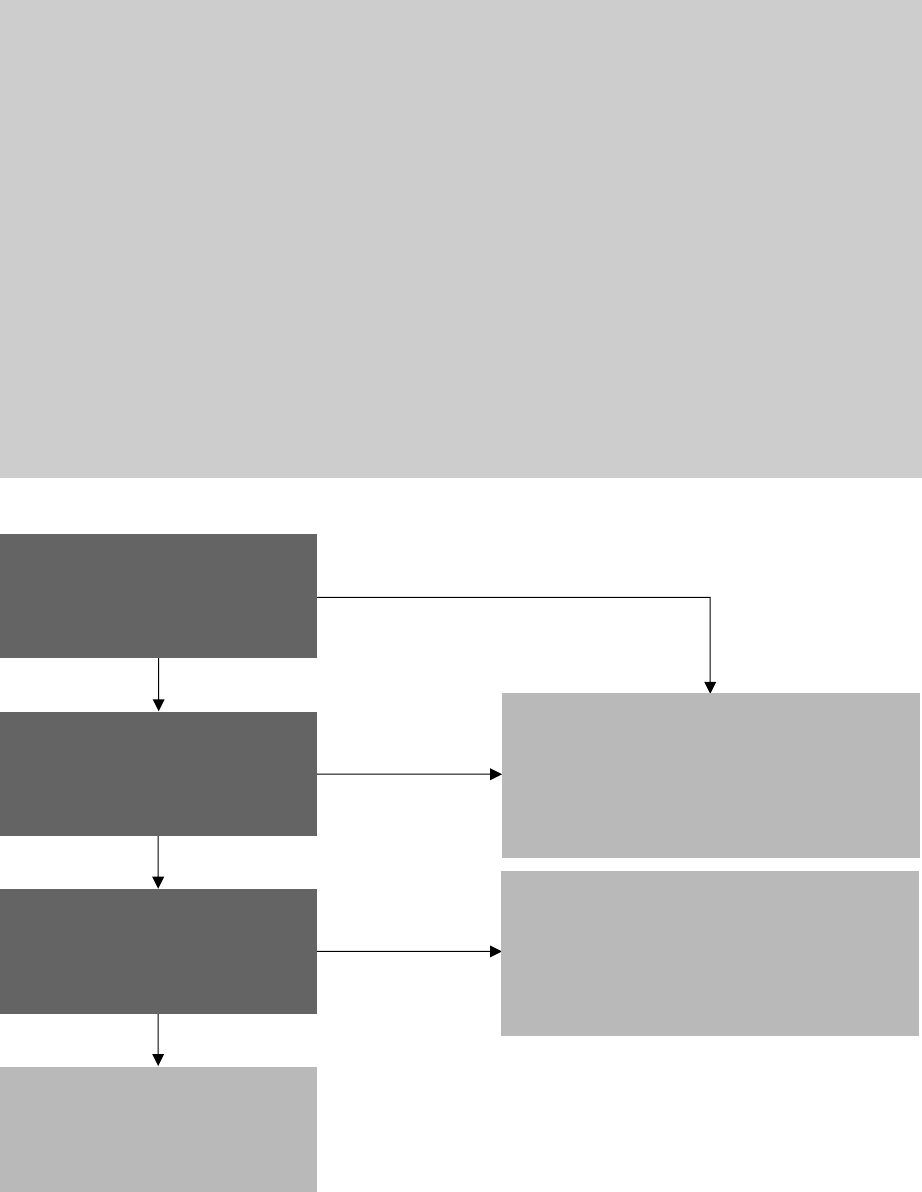
5 Determine the transaction price
Financial reporting developments Revenue from contracts with customers (ASC 606) | 200
606-10-32-26
If consideration payable to a customer is a payment for a distinct good or service from the customer,
then an entity shall account for the purchase of the good or service in the same way that it accounts
for other purchases from suppliers. If the amount of consideration payable to the customer exceeds
the fair value of the distinct good or service that the entity receives from the customer, then the entity
shall account for such an excess as a reduction of the transaction price. If the entity cannot reasonably
estimate the fair value of the good or service received from the customer, it shall account for all of the
consideration payable to the customer as a reduction of the transaction price.
606-10-32-27
Accordingly, if consideration payable to a customer is accounted for as a reduction of the transaction
price, an entity shall recognize the reduction of revenue when (or as) the later of either of the
following events occurs:
a. The entity recognizes revenue for the transfer of the related goods or services to the customer.
b. The entity pays or promises to pay the consideration (even if the payment is conditional on a
future event). That promise might be implied by the entity’s customary business practices.
The following flowchart illustrates this guidance:
Is the consideration payable to
the customer in exchange for a
distinct good or service?
Account for the consideration payable to the customer as
a reduction of the transaction price when (or as) the later
of the following occurs:
• The entity recognizes revenue for the transfer of the
related goods or services to the customer.
•
The entity pays (or promises to
pay)the consideration.
Yes
No
Can the fair value of the distinct good or
service be reasonably estimated?
No
Yes
Does the amount of consideration payable
to the customer exceed the fair value of
the distinct good or service?
For consideration paid up to the fair value of the distinct
good or service received from the customer,
account for the consideration payable to the
customer the same way that the entity accounts
for other purchases from suppliers.
The excess should be accounted for as a
reduction in the transaction price.
Yes
No
Account for the consideration payable
to the customer the same way that
the entity accounts for other
purchases from suppliers.

5 Determine the transaction price
Financial reporting developments Revenue from contracts with customers (ASC 606) | 201
The standard states that an entity should account for the consideration payable to a customer, regardless of
whether the purchaser receiving the consideration is a direct or indirect customer of the entity. This includes
consideration payable to any purchasers of the entity’s products at any point along the distribution chain.
This would include entities that make payments to the customers of resellers or distributors that purchase
directly from the entity (e.g., manufacturers of breakfast cereals offer coupons to consumers, even though
their direct customers are the grocery stores that sell to consumers). The requirements also apply to entities
that derive revenue from sales of services, as well as entities that derive revenue from sales of goods.
Question 5-29 Who is considered an entity’s customer when applying the guidance on consideration payable to a
customer? [30 March 2015 TRG meeting, agenda paper no. 28 and 13 July 2015 TRG meeting, agenda
paper no. 37; FASB staff Q&As, question 26]
TRG members generally agreed that this guidance should be applied to all payments made to entities/customers
in the distribution chain for that contract. However, they agreed there also could be situations in which the
guidance should apply to payments made to any customer of an entity’s customer outside the distribution
chain if both parties are considered the entity’s customers. For example, in an arrangement with a principal,
an agent and an end consumer, an agent may conclude that its only customer is the principal, or it may
conclude that it has two customers — the principal and the end consumer. Regardless of this assessment, an
agent’s payment to a principal’s customer that was contractually required based on an agreement between
the entity (agent) and the principal would represent consideration payable to a customer. Absent similar
contract provisions that clearly indicate when an amount is consideration payable, TRG members generally
agreed that agents will need to evaluate their facts and circumstances to determine whether payments they
make to an end consumer should be considered a reduction of revenue or a marketing expense.
Question 5-30 How should an entity that acts as an agent account for incentive payments made to end consumers
that are not the entity’s customers and are outside the distribution chain?
An entity may make incentive payments to an end consumer that is not the entity’s direct customer and is not
identified as an indirect customer (e.g., the end consumer does not purchase the entity’s goods or services at
any point along the distribution chain). Incentive payments of this nature may be common in arrangements
where an entity acts as an agent to facilitate the sale of its customer’s (i.e., the principal’s) goods or services to
an end consumer (e.g., incentive payments offered by platform entities). The entity will need to apply
significant judgment to determine (1) whether the end consumer is a customer (see Section 2.2) and (2) the
appropriate accounting treatment for incentive payments made to an end consumer that is not identified as a
customer (e.g., whether to account for the payment as a reduction of revenue or as a marketing expense).
The entity should first consider whether the payment to the end consumer is in exchange for a distinct good or
service acquired from the end consumer at fair value. If it is, the entity should account for the payment in the
same way it accounts for other purchases from suppliers. If the incentive payment is not in exchange for a
distinct good or service, the entity must apply significant judgment to determine whether the payment results
in a reduction to revenue.
A member of the SEC staff discussed this topic in a speech,
153
noting that when determining whether
incentive payments should be recorded as a reduction of revenue, it is important to consider whether the
company has a contractual or an implied obligation to provide incentives to the end consumer on the
seller’s behalf. The SEC staff member noted that this includes assessing whether a company is, in
substance, providing a price concession to the seller. For example, a company would consider whether
“the seller would have a valid expectation that the company would provide incentives to the end user.”
153
Remarks by Jonathan Wiggins, Senior Associate Chief Accountant, SEC Office of the Chief Accountant, 6 December 2021. Refer
to our publication, 2021 AICPA & CIMA Conference on Current SEC and PCAOB Developments — Compendium of significant
accounting and reporting issues.

5 Determine the transaction price
Financial reporting developments Revenue from contracts with customers (ASC 606) | 202
An entity’s customer may have a valid expectation that the payment will be made to the end consumer
based on reasonably available information about the entity’s incentive program, including written or oral
communications (e.g., advertisements, press releases, published policies, customer reporting) and any
customary business practices of the entity. Entities will need to carefully consider their facts and
circumstances to determine whether a valid expectation exists.
Similar to a contractually required obligation, an implied obligation to a customer to provide incentive
payments to an end consumer is accounted for as consideration payable to a customer and results in a
reduction to the transaction price.
In certain arrangements, an entity may make a payment to an end consumer in exchange for a distinct
good or service where the payment exceeds the fair value of that good or service. The entity will need to
apply significant judgment in these arrangements to determine whether the excess payment represents
an implied obligation to its customer. If the entity determines the excess payment is an implied obligation
to the customer, then the excess payment should result in a reduction to the transaction price.
5.7.1 Forms of consideration paid or payable to a customer
Consideration paid or payable to customers commonly takes the form of discounts and coupons, among
other things. Further, the promise to pay the consideration might be implied by the entity’s customary
business practice as stated in ASC 606-10—32-27.
Because consideration paid to a customer can take many different forms, entities have to carefully
evaluate each transaction to determine the appropriate treatment of such amounts (i.e., as payment for a
distinct good or service, a reduction of the transaction price or a combination of both as illustrated in the
flowchart in section 5.7). Some common examples of consideration paid to a customer include:
Slotting fees — Manufacturers of consumer products commonly pay retailers fees to have their goods
displayed prominently on store shelves. Generally, such fees do not provide a distinct good or service to
the manufacturer and should be treated as a reduction of the transaction price.
Cooperative advertising arrangements — In some arrangements, an entity agrees to reimburse a reseller
for a portion of costs incurred by the reseller to advertise the entity’s products. The determination of
whether the payment from the entity is in exchange for a distinct good or service at fair value will depend
on a careful analysis of the facts and circumstances of the contract.
Buy downs or margin/price protection — An entity may agree to reimburse a retailer up to a specified
amount for shortfalls in the sales price received by the retailer for the entity’s products. Normally, such
reimbursements do not provide a distinct good or service to the manufacturer and should be treated as a
reduction of the transaction price (see Question 5-9 in section 5.2.1).
Coupons and rebates — An indirect customer of an entity may receive a refund of a portion of the
purchase price of the product or service acquired by returning a form to the retailer or the entity.
Generally, such refunds do not provide a distinct good or service to the entity and should be treated as a
reduction of the transaction price.
“Pay to play” arrangements — In some arrangements, an entity pays an up-front fee to the customer
prior to or in conjunction with entering into a contract. In most cases, these payments are not associated
with any distinct good or service to be received from the customer and should be treated as a reduction of
the transaction price.

5 Determine the transaction price
Financial reporting developments Revenue from contracts with customers (ASC 606) | 203
Purchase of goods or services — Entities often enter into supplier-vendor arrangements with their
customers in which the customers provide them with a distinct good or service. For example, a software
entity may buy its office supplies from one of its software customers. In such situations, the entity has to
carefully determine whether the payment made to the customer is solely for the goods and services
received, or whether part of the payment is actually a reduction of the transaction price for the goods and
services the entity is transferring to the customer.
Equity instruments — An entity may grant shares, options or other equity instruments in conjunction
with selling goods or services to a customer. In these situations, the entity should evaluate whether (1)
the equity instruments are granted in exchange for distinct goods or services or (2) all or part of the fair
value of the equity instruments should be treated as a reduction of the transaction price for goods and
services the entity is transferring to the customer. Refer to Questions 5-32 and 5-33 in section 5.7.2 for
measurement and other considerations for equity instruments granted to customers.
Question 5-31 Which payments to a customer are in the scope of the guidance on consideration payable to a customer?
[30 March 2015 TRG meeting, agenda paper no. 28 and 13 July 2015 TRG meeting, agenda paper no. 37;
FASB staff Q&As, question 25]
TRG members generally agreed that an entity may not have to separately analyze each payment to a
customer if it is apparent that the payment is for a distinct good or service acquired in the normal course
of business at a market price. However, if the business purpose of a payment to a customer is unclear or the
goods or services are acquired in a manner that is inconsistent with market terms other entities would receive
when purchasing the customer’s good or services, the payment should be evaluated under this guidance.
In the Basis for Conclusions of ASU 2014-09,
154
the FASB noted that the amount of consideration
received from a customer for goods or services, and the amount of any consideration paid to that
customer for goods or services, could be linked even if they are separate events.
5.7.2 Classification and measurement of consideration paid or payable to a customer
(updated September 2023)
To determine the appropriate accounting treatment (and as illustrated in the flowchart in section 5.7), an
entity must first determine whether the consideration paid or payable to a customer is a payment for a
distinct good or service. If not in exchange for a distinct good or service, an entity accounts for consideration
payable to a customer as a reduction in the transaction price. This is because ASC 606-10-32-25 (see
section 5.7) states that “an entity shall account for consideration payable to a customer as a reduction of
the transaction price and, therefore, of revenue unless the payment is for a distinct good or service.” That
is, for a payment by the entity to a customer to be treated as something other than a reduction of the
transaction price, the good or service provided by the customer must be distinct (as discussed in section 4.2.1).
If in exchange for a distinct good or service at fair value, an entity accounts for consideration payable to a
customer the same way it accounts for other purchases from suppliers. However, as noted in ASC 606-10-
32-26, if the payment to the customer is in excess of the fair value of the distinct good or service
received, the entity must account for such excess as a reduction of the transaction price. If an entity
cannot reasonably estimate the fair value of the good or service received from the customer, it is
required to account for all of the consideration payable as a reduction in the transaction price.
154
Paragraph BC257 of ASU 2014-09.

5 Determine the transaction price
Financial reporting developments Revenue from contracts with customers (ASC 606) | 204
Illustration 5-6: Consideration paid to a customer in exchange for a distinct good or service
Entity A enters into a contract to sell goods to Customer B in the ordinary course of business for cash
consideration. Separately, Entity A enters into an agreement to purchase market research from
Customer B related to the launch of a new product for cash consideration. The two contracts were not
negotiated in contemplation of one another.
Entity A elects to purchase the market research rather than internally develop such knowledge because of
Customer’s B expertise in this area. Entity A could purchase similar services from a non-customer.
Based on an evaluation of the circumstances, the cash consideration paid to the customer is in return
for Customer B providing distinct services to Entity A. To reach this conclusion, Entity A considers the
guidance in ASC 606-10-25-19 through 25-22 and concludes that the market research services are
capable of being distinct, as well as separately identifiable (or distinct within the context of the
contract), from Entity A’s sale of its goods to Customer B.
Entity A determines that market research is capable of being distinct from the sale of its goods to
Customer B because the market research could be purchased from a non-customer. Therefore, Entity
A is able to demonstrate that the market research can provide benefits on its own or with other readily
available resources.
Entity A determines that the market research is distinct within the context of the contract because of
the following:
• Customer B is not providing a significant service of integrating the market research with the
purchases of Entity A’s goods because the promises to Entity A are not a combined output of
integrated goods or services.
• The market research provided by Customer B does not modify or customize the purchases of
Entity A’s goods. The market research and the purchases of goods are not being assembled
together to produce a combined output.
• The market research is not highly interrelated or interdependent with the sale of Entity A’s goods
because the market research is not needed for Customer B to purchase the goods. That is, there is
not significant two-way dependency between the promises.
Entity A accounts for the cash consideration paid to Customer B in the same way that it accounts
for other purchases from suppliers, provided that the cash consideration paid does not exceed the fair
value of the distinct services received from Customer B. If the amount of cash consideration paid by
Entity A exceeds the fair value of the distinct services, that excess amount should be characterized as
a reduction of the transaction price of the goods sold to Customer B in Entity A’s income statement.
In many cases, determining the amount of consideration payable to a customer will be straightforward
(e.g., cash amounts an entity pays to a customer). However, if the consideration paid or payable to a
customer includes a variable amount, ASC 606-10-32-25 says an entity would estimate the amount using
the variable consideration requirements in ASC 606-10-32-5 through 32-13 (see section 5.2).
The standard provides the following guidance for the measurement and classification of equity
instruments granted by an entity in conjunction with selling goods or services to a customer:

5 Determine the transaction price
Financial reporting developments Revenue from contracts with customers (ASC 606) | 205
Excerpt from Accounting Standards Codification
Revenue from Contracts with Customers — Overall
Measurement
Consideration Payable to a Customer
606-10-32-25A
Equity instruments granted by an entity in conjunction with selling goods or services shall be measured
and classified under Topic 718 on stock compensation. The equity instrument shall be measured at the
grant date in accordance with Topic 718 (for both equity-classified and liability-classified share-based
payment awards). Changes in the measurement of the equity instrument (through the application of
Topic 718) after the grant date that are due to the form of the consideration shall not be included in the
transaction price. Any changes due to the form of the consideration shall be reflected elsewhere in the
grantor’s income statement. See paragraphs 606-10-55-88A through 55-88B for implementation
guidance on equity instruments granted as consideration payable to a customer.
Implementation Guidance and Illustrations
Equity Instruments Granted as Consideration Payable to a Customer
606-10-55-88A
Paragraph 606-10-32-25A requires that equity instruments granted in conjunction with an entity
selling goods or services be measured and classified under Topic 718 on stock compensation. If the
number of equity instruments promised in a contract is variable due to a service condition or a
performance condition that affects the vesting of an award, an entity should estimate the number of
equity instruments that it will be obligated to issue to its customer and update the estimate of the
number of equity instruments until the award ultimately vests in accordance with Topic 718. When
measuring each instrument, the entity should include, in accordance with Topic 718, the effect of any
market conditions and service or performance conditions that affect factors other than vesting. Examples
of factors other than vesting are included in paragraph 718-10-30-15. Changes in the grant-date fair
value of an award due to revisions in the expected outcome of a service condition or a performance
condition (both those that affect vesting and those that affect factors other than vesting) are not
deemed to be changes due to the form of the consideration (as described in paragraph 606-10-32-23)
and, therefore, should be reflected in the transaction price.
606-10-55-88B
Paragraph 606-10-32-25A requires that equity instruments granted by an entity in conjunction with
selling goods or services be measured and classified under Topic 718 at the grant date of the instrument.
When an estimate of the fair value of an equity instrument is required before the grant date in
accordance with the guidance on variable consideration in paragraph 606-10-32-7, the estimate
should be based on the fair value of the award at the reporting dates that occur before the grant date.
An entity should change the transaction price for the cumulative effect of measuring the fair value at
each reporting period after the initial estimate until the grant date occurs. In the period in which the
grant date occurs, the entity should change the transaction price for the cumulative effect of measuring
the fair value at the grant date rather than the fair value previously used at any prior reporting date.
Question 5-32 How should an entity measure equity instruments (e.g., share-based payment awards) that are
granted to a customer in conjunction with the sale of goods and services?
In accordance with ASC 606-10-32-25A, an entity is required to measure and classify these types of
equity instruments in accordance with ASC 718. That is, an entity must measure the equity instruments
using the grant-date fair value for both equity- and liability-classified share-based payment awards.

5 Determine the transaction price
Financial reporting developments Revenue from contracts with customers (ASC 606) | 206
ASC 606-10-55-88B states that if an entity is required to estimate the fair value of an equity instrument
before the grant date in accordance with the guidance on variable consideration in ASC 606-10-32-7,
the estimate should be based on the fair value of the award at the reporting dates that occur before the
grant date. In the period in which the grant date occurs, the entity should change the transaction price
for the cumulative effect of measuring the fair value of the grant rather than the fair value previously
used at any reporting date. See our FRD, Share-based payment, for more information about the
accounting for share-based payment awards under ASC 718.
As further discussed in section 5.7.3, if an entity has historically provided or intends to provide
consideration payable to customers, the guidance on estimating variable consideration may require an
entity to reduce the transaction price for the expected consideration payable prior to the entity paying or
promising to pay the consideration to the customer.
The award is measured and classified under ASC 718 for its entire life, unless it is modified after the
award vests and the grantee is no longer a customer, in which case it is accounted for in accordance with
other US GAAP (e.g., ASC 815).
Question 5-33 How should an entity measure variability of share-based payment awards granted to customers in
conjunction with the sale of goods and services?
If the number of equity instruments promised to a customer in a contract is variable due to a service or
performance condition that affects the vesting or exercisability of an award, ASC 606-10-55-88A states
that the entity should estimate the number of equity instruments that it will be obligated to issue to the
customer until the awards ultimately vest in accordance with ASC 718. Changes in the grant date fair
value of an award resulting from revisions in the expected outcome of a service or performance condition
that affects vesting or exercisability are reflected in the transaction price (e.g., as a reduction of
revenue) because they are due to reasons other than the form of the consideration (i.e., there is
uncertainty about whether the award will vest).
However, an entity’s accounting policy election under ASC 718 related to forfeitures for nonemployee
awards with service conditions also applies to awards granted to customers in conjunction with a revenue
arrangement. In accordance with ASC 718-10-35-1D, if an entity has elected to account for forfeitures
of nonemployee awards (including awards granted to customers) as they occur, forfeitures related to
service conditions should not be estimated under ASC 606-10-55-88A.
After the grant date, ASC 718 requires an entity to measure any changes in the fair value of an award
resulting from the form of the consideration (e.g., a liability-classified award that is remeasured until
settlement). ASC 606-10-32-25A states that changes resulting from the form of the consideration are not
reflected in the transaction price. Instead, they are presented elsewhere in the grantor’s income statement.
Illustration 5-7: Equity instruments issued to a customer based on a performance condition
Entity A manufactures and sells shelving units to customers in the retail industry. On 2 January 20X3,
Entity A enters into a contract with Customer B to sell 20 shelving units for Customer B to use in its
retail store locations at a price of $1,000 per shelving unit during 20X3. The contract includes a
provision that the customer will earn 100 shares of Entity A’s stock if the customer purchases the
shelving units before 30 June 20X3. On 2 January 20X3, Entity A’s stock price is $20. Entity A
determines the grant date of the equity instruments under ASC 718 is 2 January 20X3.
The purchase requirement to earn the 100 shares is a performance condition. On 2 January 20X3,
Entity A estimates that it is probable the purchase requirement will be met and calculates the
reduction in the transaction price for the 20 shelving units to be $2,000 (100 shares × $20 per
share). This results in an estimated transaction price of $18,000 for the 20 shelving units sold
(($1,000 × 20 shelving units) – $2,000). Entity A recognizes $900 ($18,000/20 shelving units) in
revenue when control of each shelving unit transfers.

5 Determine the transaction price
Financial reporting developments Revenue from contracts with customers (ASC 606) | 207
Entity A updates the estimated number of equity instruments that it will be obligated to issue to the
customer until the awards ultimately vest in accordance with ASC 718 and adjusts the transaction
price accordingly at the end of each reporting period.
Question 5-34 How should an entity account for litigation settlements paid to or received from a customer?
Settlements may include cash paid to or received from a customer (e.g., a payment to resolve a dispute
related to the vendor-customer relationship).
An entity that makes a payment to its customer as part of a settlement should follow the guidance in
ASC 606-10-32-25 to determine the appropriate accounting for the settlement. This guidance requires
an entity to account for consideration paid or payable to a customer as (1) a payment for a distinct good
or service received from the customer, (2) a reduction of the transaction price for a revenue contract or
(3) a combination of both.
For settlements received from a customer, an entity needs to apply judgment to determine the
appropriate accounting. For example, if the entity receives a cash payment from its customer as part of a
settlement related to a prior contract, the payment may represent variable consideration to which the
entity is entitled based on its performance under the prior revenue contract, and the guidance on
estimating and constraining variable consideration in ASC 606 would apply.
See our Accounting Manual section C3.1.4.7.2, Contingencies (ASC 450), for further discussion of the
accounting for settlements.
5.7.3 Timing of recognition of consideration paid or payable to a customer
(updated September 2023)
If the consideration paid or payable to a customer is accounted for as a reduction of the transaction price,
ASC 606-10-32-27 (see section 5.7) says this reduction of the transaction price (and thus revenue) should
be recognized at the later of when (1) the entity recognizes revenue for the transfer of the related goods or
services to the customer or (2) the entity pays or promises to pay the consideration (even if the payment is
conditional on a future event). For example, if goods subject to a discount through a coupon are already
delivered to the retailers, the discount would be recognized when the coupons are issued. However, if a
coupon is issued that can be used on a new line of products that have not yet been sold to retailers, the
discount would be recognized upon sale of the product to a retailer. ASC 606-10-32-37(b) also notes that
the promise to pay the consideration might be implied by an entity’s customary business practices.
Certain sales incentives, such as mail-in rebates and certain manufacturer coupons, entitle a customer to
receive a reduction in the price of a product or service if the customer submits a form or claim for a refund
or rebate of a specified amount of the price charged to the customer at the point of sale. An entity should
recognize a liability for those sales incentives at the later of when it recognizes revenue on the good or
service or the date at which the sales incentive was offered based on the estimated amounts of discounts
or refunds that will be claimed by customers, in a manner similar to how the entity would estimate variable
consideration (see section 5.2.2).
Even if a sales incentive would result in a loss on the sale of the product or service, an entity would
recognize a liability for those sales incentives at the later of when it recognizes revenue on the good or
service or the date at which the sales incentive was offered. That is, an entity would not recognize the
loss before either date. However, an entity would also need to consider whether the offer indicates an
impairment of existing inventory under ASC 330. However, to determine the appropriate timing of
recognition of consideration payable to a customer, entities also need to consider the guidance on

5 Determine the transaction price
Financial reporting developments Revenue from contracts with customers (ASC 606) | 208
variable consideration. That is, the standard’s description of variable consideration is broad and includes
amounts such as coupons or other forms of credits that can be applied to the amounts owed to an entity
by the customer. That guidance requires that all potential variable consideration be considered and
reflected in the transaction price at inception and reassessed as the entity performs. In other words, if an
entity has a history of providing this type of consideration to its customers, the guidance on estimating
variable consideration would require that such amounts be considered at the inception of the contract,
even if the entity has not yet provided or explicitly promised this consideration to the customer.
The TRG discussed
155
the potential inconsistency between the consideration payable guidance and the
variable consideration guidance that arises because the guidance specific to “consideration payable to a
customer” states that such amounts should not be recognized as a reduction of revenue until the later of
when the related sales are recognized or the entity makes the promise to provide such consideration. A literal
reading of this guidance seems to suggest that an entity should not anticipate that it may offer these types of
programs, even if it has a history of doing so, and should only recognize the effect of these programs at the
later of when the entity transfers the promised goods or services or makes a promise to pay the customer.
Members of the TRG generally agreed
156
that if an entity has historically provided or intends to provide this
type of consideration to customers, the guidance on estimating variable consideration (i.e., ASC 606-10-32-5
through 32-7) would require the entity to consider such amounts at the contract’s inception when the
transaction price is estimated, even if the entity has not yet provided or promised to provide this
consideration to the customer. If the consideration paid or payable to a customer includes variable
consideration (e.g., in the form of a discount or refund for goods or services provided), an entity would
use either the expected value method or most likely amount method to estimate the amount to which the
entity expects to be entitled and apply the constraint to the estimate (see section 5.2 for further discussion) to
determine the effect on the transaction price of the variable consideration payable to the customer.
The standard includes the following example of consideration paid to a customer:
Excerpt from Accounting Standards Codification
Revenue from Contracts with Customers — Overall
Implementation Guidance and Illustrations
Example 32 — Consideration Payable to a Customer
606-10-55-252
An entity that manufactures consumer goods enters into a one-year contract to sell goods to a
customer that is a large global chain of retail stores. The customer commits to buy at least $15 million
of products during the year. The contract also requires the entity to make a nonrefundable payment of
$1.5 million to the customer at the inception of the contract. The $1.5 million payment will compensate
the customer for the changes it needs to make to its shelving to accommodate the entity’s products.
606-10-55-253
The entity considers the guidance in paragraphs 606-10-32-25 through 32-27 and concludes that the
payment to the customer is not in exchange for a distinct good or service that transfers to the entity.
This is because the entity does not obtain control of any rights to the customer’s shelves. Consequently,
the entity determines that, in accordance with paragraph 606-10-32-25, the $1.5 million payment is a
reduction of the transaction price.
155
13 July 2015 TRG meeting, agenda paper no. 37; FASB staff Q&As, question 29.
156
9 November 2015 TRG meeting, agenda paper no. 44; FASB staff Q&As, question 29.

5 Determine the transaction price
Financial reporting developments Revenue from contracts with customers (ASC 606) | 209
606-10-55-254
The entity applies the guidance in paragraph 606-10-32-27 and concludes that the consideration
payable is accounted for as a reduction in the transaction price when the entity recognizes revenue for
the transfer of the goods. Consequently, as the entity transfers goods to the customer, the entity
reduces the transaction price for each good by 10 percent ($1.5 million ÷ $15 million). Therefore, in
the first month in which the entity transfers goods to the customer, the entity recognizes revenue of
$1.8 million ($2.0 million invoiced amount — $0.2 million of consideration payable to the customer).
Question 5-35 How should an entity account for up-front payments to a customer or a potential customer? [7 November
2016 FASB TRG meeting, agenda paper no. 59; FASB staff Q&As, question 43]
While the guidance on consideration payable to a customer clearly applies to payments to customers
under current contracts, stakeholders have raised questions about how to account for up-front payments
to potential customers and payments that relate to both current and anticipated contracts. For example,
an entity might make an up-front payment to a potential customer in anticipation of future purchases,
and there may not yet be a contract under ASC 606.
FASB TRG members discussed two views. Under View A, an entity would recognize an asset for the up-
front payment and reduce revenue as the related goods or services (or as the expected related goods or
services) are transferred to the customer. As a result, the payment could be recognized in the income
statement over a longer period than the contract term. Entities would determine the amortization period
based on facts and circumstances and would assess the asset for recoverability using the principles in
other asset impairment models in US GAAP. Under View B, entities would reduce revenue from the
current contract by the amount of the payment. If there is no current contract, entities would recognize
a payment immediately in the income statement.
FASB TRG members generally agreed that an entity will need to use the view that best reflects the
substance and economics of the payment to the customer and won’t be able to make an accounting
policy election. Entities would evaluate the nature of the payment, the rights and obligations under the
contract and whether the payment meets the definition of an asset. FASB TRG members also said an
entity’s decision on which approach is appropriate may be a significant judgment in the determination of
the transaction price that would require disclosure under ASC 606.
A member of the SEC staff also discussed this topic in a speech,
157
noting that because there are many
reasons why an entity may make payments to its customers, the accounting conclusions will depend on
the facts and circumstances. She noted that an entity must first determine why the payment was made
to determine its nature and substance and that the SEC staff would consider the following questions
when evaluating the accounting for payments made to a customer under ASC 606:
• What are the underlying economic reasons for the transaction? Why is the payment being made?
• How did the entity communicate and describe the nature of the customer payment to its investors?
• What do the relevant contracts governing the payment stipulate? Does the payment secure an
exclusive relationship between the parties? Does the payment result in the customer committing to
make a minimum level of purchases from the entity?
• What is the accounting basis for recognizing an asset or recognizing an up-front payment
immediately through earnings?
157
Remarks by Ruth Uejio, Professional Accounting Fellow, SEC Office of the Chief Accountant, 5 December 2016.

5 Determine the transaction price
Financial reporting developments Revenue from contracts with customers (ASC 606) | 210
Once a company has determined the substance of the payment, the SEC staff member noted that an entity
should account for the payment using an accounting model that is consistent with the identified substance of
the payment and relevant accounting literature. In doing this, entities should carefully and impartially evaluate
all of the facts and circumstances and establish accounting policies that are consistently applied. In addition,
the SEC staff member said that matching the cost of the payment to the anticipated future revenue is not
a determinative factor to support asset recognition for an up-front payment made to a customer.
How we see it
Consistent with the views of the SEC staff above, we believe an entity has to carefully evaluate all
facts and circumstances of payments made to customers to determine the appropriate accounting.
However, if an entity expects to generate future revenue associated with the payment, we believe an
entity will generally apply View A (assuming any asset recorded is recoverable). If no revenue is
expected as a result of the payment, View B may be appropriate.
Further, if the up-front payment made to a customer or potential customer is in the form of vested
equity instruments, we believe the entity would perform the same analysis performed for up-front
cash payments as discussed above.
Question 5-36 How should an entity present “negative revenue” resulting from consideration paid or payable to a
customer that exceeds the amount to which the entity expects to be entitled?
In certain arrangements, consideration paid or payable to a customer could exceed the consideration to
which the entity expects to be entitled in exchange for transferring promised goods or services in a
contract with a customer. In these situations, recognition of payments to the customer as a reduction of
revenue could result in “negative revenue.” ASC 606 does not specifically address how entities should
present negative revenue.
Stakeholders had asked the TRG whether an entity should reclassify negative revenue resulting from
consideration paid or payable to a customer to expense and, if so, in what circumstances. The TRG did
not discuss this question in detail and no additional application guidance was provided.
As discussed above, ASC 606-10-32-25 states that an entity accounts for consideration payable to a
customer as a reduction of the transaction price and, therefore, of revenue, unless the payment to the
customer is in exchange for a distinct good or service that the customer transfers to the entity.
Therefore, we believe it is acceptable for an entity to present payments to a customer in excess of the
transaction price that are not in exchange for a distinct good or service within revenue.
However, we believe it may also be acceptable, in limited circumstances, to reclassify negative revenue
to expense in an entity’s income statement. For example, if an entity demonstrates that characterization
of consideration payable to a customer as a reduction of revenue results in negative revenue for a specific
customer on a cumulative basis (i.e., since the inception of the overall relationship between the entity
and the customer), then the amount of the cumulative shortfall may be recharacterized as an expense.
In determining whether cumulative negative revenue exists for a specific customer, revenues from all
transactions with that customer recognized by all entities within the consolidated group that includes the
entity paying the consideration to the customer should be considered (i.e., revenues recognized from
sales to the customer from all of the consolidated entities should be considered). Therefore, an entity
that considers reclassifying negative revenue to expense must carefully evaluate all of its historical
contractual arrangements with the customer before reclassifying any cumulative shortfall in revenue to
expense. In addition, when making this evaluation, we believe an entity should incorporate revenue from
any current or anticipated contracts with the customer to transfer goods or services in the future.

5 Determine the transaction price
Financial reporting developments Revenue from contracts with customers (ASC 606) | 211
5.8 Nonrefundable up-front fees
In certain circumstances, entities may receive payments from customers before they provide the
contracted service or deliver a good. Up-front fees generally relate to the initiation, activation or setup of
a good to be used, or a service to be provided, in the future (e.g., implementation services). Up-front fees
also may be paid to grant access to, or to provide a right to use, a facility, product or service. In many
cases, the up-front amounts paid by the customer are nonrefundable.
The standard provides the following guidance for nonrefundable up-front fees:
Excerpt from Accounting Standards Codification
Revenue from Contracts with Customers — Overall
Implementation Guidance and Illustrations
Nonrefundable Upfront Fees (and Some Related Costs)
606-10-55-50
In some contracts, an entity charges a customer a nonrefundable upfront fee at or near contract inception.
Examples include joining fees in health club membership contracts, activation fees in telecommunication
contracts, setup fees in some services contracts, and initial fees in some supply contracts.
606-10-55-51
To identify performance obligations in such contracts, an entity should assess whether the fee relates
to the transfer of a promised good or service. In many cases, even though a nonrefundable upfront fee
relates to an activity that the entity is required to undertake at or near contract inception to fulfill the
contract, that activity does not result in the transfer of a promised good or service to the customer
(see paragraph 606-10-25-17). Instead, the upfront fee is an advance payment for future goods or
services and, therefore, would be recognized as revenue when those future goods or services are
provided. The revenue recognition period would extend beyond the initial contractual period if the
entity grants the customer the option to renew the contract and that option provides the customer
with a material right as described in paragraph 606-10-55-42.
606-10-55-52
If the nonrefundable upfront fee relates to a good or service, the entity should evaluate whether to
account for the good or service as a separate performance obligation in accordance with paragraphs
606-10-25-14 through 25-22.
606-10-55-53
An entity may charge a nonrefundable fee in part as compensation for costs incurred in setting up a
contract (or other administrative tasks as described in paragraph 606-10-25-17). If those setup
activities do not satisfy a performance obligation, the entity should disregard those activities (and
related costs) when measuring progress in accordance with paragraph 606-10-55-21. That is because
the costs of setup activities do not depict the transfer of services to the customer. The entity should
assess whether costs incurred in setting up a contract have resulted in an asset that should be
recognized in accordance with paragraph 340-40-25-5.
Entities must evaluate whether a nonrefundable up-front fee relates to the transfer of a good or service.
If it does, they should evaluate whether to account for the good or service as a separate performance
obligation in accordance with ASC 606-10-25-14 through 25-22 (see section 4). In addition, Question 4-9
in section 4.2.1.2 discusses how entities should determine whether implementation services are distinct.

5 Determine the transaction price
Financial reporting developments Revenue from contracts with customers (ASC 606) | 212
However, in many situations, an up-front fee represents an advance payment for future goods or services. In
addition, the existence of a nonrefundable up-front fee may indicate that the contract includes a renewal
option for future goods and services at a reduced price (if the customer renews the agreement without the
payment of an additional up-front fee), which an entity would need to assess to determine whether the
option is a material right (i.e., another performance obligation in the contract) (see section 4.6). If the entity
concludes that the nonrefundable up-front fee does not provide a material right, the fee would be part of the
consideration allocable to the goods or services in the contract and would be recognized as the good or
service to which the consideration was allocated is transferred to the customer. If an entity concludes that
the nonrefundable up-front fee provides a material right, the amount of the fee allocated to the material
right would be recognized over the period of benefit of the fee, which may be the estimated customer life.
The following illustration depicts the allocation of a nonrefundable up-front fee determined to be a
material right:
Illustration 5-8: Nonrefundable up-front fees
A customer signs a one-year contract with a health club and is required to pay both a nonrefundable
initiation fee of $150 and an annual membership fee in monthly installments of $40. At the end of
each year, the customer can renew the contract for an additional year without paying an additional
initiation fee. The customer is then required to pay an annual membership fee in monthly installments
of $40 for each renewal period. The club’s activity of registering the customer does not transfer any
service to the customer and, therefore, is not a performance obligation. By not requiring the customer
to pay the up-front membership fee again at renewal, the club is effectively providing a discounted
renewal rate to the customer.
The club determines that the renewal option is a material right because it provides a renewal option at a
lower price than the range of prices typically charged for new customers, and therefore, it is a separate
performance obligation. Based on its experience, the club determines that its customers, on average,
renew their annual memberships twice before terminating their relationship with the club. As a result,
the club determines that the option provides the customer with the right to two annual renewals at a
discounted price. In this scenario, the club would allocate the total transaction consideration of $630
($150 up-front membership fee + $480 ($40 x 12 months)) to the identified performance obligations
(monthly services for the one-year contract and renewal option) based on the relative standalone
selling price method. In accordance with ASC 606-10-55-42, the amount allocated to the renewal
option would be recognized when or as the future goods or services are transferred (e.g., years two and
three of the service if the renewal option is fully exercised) or when the renewal option expires.
Alternatively, the club could value the option by “looking through” to the optional goods and services
using the practical alternative provided in ASC 606-10-55-45 (see section 6.1.5). In that case, the
club would determine that the total hypothetical transaction price (for purposes of allocating the
transaction price to the option) is the sum of the up-front fee plus three years of service fees
(i.e., $150 + $1,440) and would allocate that amount to all of the services expected to be delivered,
or 36 months of membership (or $44.17 per month). Therefore, the total consideration in the
contract of $630 would be allocated to the 12 months of service ($530 ($44.17 x 12 months)) with
the remaining amount being allocated to the renewal option ($100 ($630 — 530)). Assuming the
renewal is exercised for year two and year three, the amount allocated to the renewal option ($100)
would be recognized as revenue over each renewal period. One acceptable approach would be to
reduce the initial $100 deferred revenue balance for the material right by $4.17 each month ($100 /
24 months remaining), assuming the estimated renewal period of two years remains unchanged.
See sections 4.6 and 6.1.5 for a more detailed discussion of the treatment of options (including the practical
alternative allowed under ASC 606-10-55-45) and sections 6.1 and 6.2 for a discussion of estimating
standalone selling prices and allocating consideration using the relative standalone selling price method.

5 Determine the transaction price
Financial reporting developments Revenue from contracts with customers (ASC 606) | 213
Question 5-37 Over what period should an entity recognize a nonrefundable up-front fee (e.g., fees paid for
membership to a health club or buying club, activation fees for phone, cable or internet services) that
does not relate to the transfer of a good or service? [30 March 2015 TRG meeting, agenda paper no. 32;
FABS staff Q&As, question 52]
TRG members generally agreed that the period over which a nonrefundable up-front fee is recognized
depends on whether the fee provides the customer with a material right with respect to future contract
renewals (see section 4.6). For example, if an entity that charges a $50 one-time activation fee to
provide $100 of services to a customer on a month-to-month basis concludes that the activation fee
provides a material right, the fee would be recognized over the service period during which the customer
is expected to benefit from not having to pay an activation fee upon renewal of service, which may be the
estimated customer life in some situations. If the entity concludes that the activation fee does not
provide a material right, the fee would be recognized over the contract duration (i.e., one month).
Question 5-38 How is consideration that was received from a customer, but not yet recognized as revenue,
accounted for when the contract is cancelled?
See response to Question 3-10 in section 3.2.
5.9 Changes in the transaction price
Excerpt from Accounting Standards Codification
Revenue from Contracts with Customers — Overall
Measurement
Changes in the Transaction Price
606-10-32-42
After contract inception, the transaction price can change for various reasons, including the
resolution of uncertain events or other changes in circumstances that change the amount of
consideration to which an entity expects to be entitled in exchange for the promised goods or services.
Changes in the transaction price can occur for various reasons. See section 6.5 for additional guidance
on accounting for a change in transaction price.

Financial reporting developments Revenue from contracts with customers (ASC 606) | 214
6 Allocate the transaction price to the
performance obligations
Once the separate performance obligations are identified and the transaction price has been determined,
the standard generally requires an entity to allocate the transaction price to the performance obligations
in proportion to their standalone selling prices (i.e., on a relative standalone selling price basis). The Board
noted in the Basis for Conclusions of ASU 2014-09
158
that an allocation based on standalone selling prices
most often faithfully depicts the different margins that may apply to promised good or services. The standard
includes the following allocation guidance:
Excerpt from Accounting Standards Codification
Revenue from Contracts with Customers — Overall
Measurement
Allocating the Transaction Price to Performance Obligations
606-10-32-28
The objective when allocating the transaction price is for an entity to allocate the transaction price to
each performance obligation (or distinct good or service) in an amount that depicts the amount of
consideration to which the entity expects to be entitled in exchange for transferring the promised
goods or services to the customer.
606-10-32-29
To meet the allocation objective, an entity shall allocate the transaction price to each performance
obligation identified in the contract on a relative standalone selling price basis in accordance with
paragraphs 606-10-32-31 through 32-35, except as specified in paragraphs 606-10-32-36 through 32-
38 (for allocating discounts) and paragraphs 606-10-32-39 through 32-41 (for allocating consideration
that includes variable amounts).
606-10-32-30
Paragraphs 606-10-32-31 through 32-41 do not apply if a contract has only one performance
obligation. However, paragraphs 606-10-32-39 through 32-41 may apply if an entity promises to
transfer a series of distinct goods or services identified as a single performance obligation in accordance
with paragraph 606-10-25-14(b) and the promised consideration includes variable amounts.
When allocating on a relative standalone selling price basis, any discount within the contract generally is
allocated proportionately to all of the performance obligations in the contract. However, as discussed further
below, there are some exceptions. For example, an entity could allocate variable consideration to a single
performance obligation in some situations. The standard also contemplates the allocation of any discount in
a contract to only certain performance obligations, if specified criteria are met. An entity would not apply
the allocation guidance if the contract only has one performance obligation (that is not made up of a
series of distinct goods or services and includes variable consideration).
158
Paragraph BC266 of ASU 2014-09.

6 Allocate the transaction price to the performance obligations
Financial reporting developments Revenue from contracts with customers (ASC 606) | 215
6.1 Determining standalone selling prices (updated September 2023)
To allocate the transaction price on a relative standalone selling price basis, an entity must first determine
the standalone selling price of the distinct good or service underlying each performance obligation.
Under the standard, this is the price at which an entity would sell a good or service on a standalone (or
separate) basis at contract inception.
Under the model, the observable price of a good or service sold separately provides the best evidence of
standalone selling price. However, in many situations, standalone selling prices will not be readily
observable. In those cases, the entity must estimate the standalone selling price. The standard provides
the following guidance on determining standalone selling prices, which may include estimation:
Excerpt from Accounting Standards Codification
Revenue from Contracts with Customers — Overall
Measurement
Allocation Based on Standalone Selling Prices
606-10-32-31
To allocate the transaction price to each performance obligation on a relative standalone selling price
basis, an entity shall determine the standalone selling price at contract inception of the distinct good or
service underlying each performance obligation in the contract and allocate the transaction price in
proportion to those standalone selling prices.
606-10-32-32
The standalone selling price is the price at which an entity would sell a promised good or service
separately to a customer. The best evidence of a standalone selling price is the observable price of a
good or service when the entity sells that good or service separately in similar circumstances and to
similar customers. A contractually stated price or a list price for a good or service may be (but shall not
be presumed to be) the standalone selling price of that good or service.
606-10-32-33
If a standalone selling price is not directly observable, an entity shall estimate the standalone selling price
at an amount that would result in the allocation of the transaction price meeting the allocation objective
in paragraph 606-10-32-28. When estimating a standalone selling price, an entity shall consider all
information (including market conditions, entity-specific factors, and information about the customer
or class of customer) that is reasonably available to the entity. In doing so, an entity shall maximize the
use of observable inputs and apply estimation methods consistently in similar circumstances.
606-10-32-34
Suitable methods for estimating the standalone selling price of a good or service include, but are not
limited to, the following:
a. Adjusted market assessment approach — An entity could evaluate the market in which it sells
goods or services and estimate the price that a customer in that market would be willing to pay
for those goods or services. That approach also might include referring to prices from the entity’s
competitors for similar goods or services and adjusting those prices as necessary to reflect the
entity’s costs and margins.
b. Expected cost plus a margin approach — An entity could forecast its expected costs of satisfying a
performance obligation and then add an appropriate margin for that good or service.

6 Allocate the transaction price to the performance obligations
Financial reporting developments Revenue from contracts with customers (ASC 606) | 216
c. Residual approach — An entity may estimate the standalone selling price by reference to the total
transaction price less the sum of the observable standalone selling prices of other goods or
services promised in the contract. However, an entity may use a residual approach to estimate, in
accordance with paragraph 606-10-32-33, the standalone selling price of a good or service only
if one of the following criteria is met:
1. The entity sells the same good or service to different customers (at or near the same time)
for a broad range of amounts (that is, the selling price is highly variable because a
representative standalone selling price is not discernible from past transactions or other
observable evidence).
2. The entity has not yet established a price for that good or service, and the good or service
has not previously been sold on a standalone basis (that is, the selling price is uncertain).
606-10-32-35
A combination of methods may need to be used to estimate the standalone selling prices of the goods or
services promised in the contract if two or more of those goods or services have highly variable or
uncertain standalone selling prices. For example, an entity may use a residual approach to estimate the
aggregate standalone selling price for those promised goods or services with highly variable or uncertain
standalone selling prices and then use another method to estimate the standalone selling prices of the
individual goods or services relative to that estimated aggregate standalone selling price determined by
the residual approach. When an entity uses a combination of methods to estimate the standalone selling
price of each promised good or service in the contract, the entity shall evaluate whether allocating the
transaction price at those estimated standalone selling prices would be consistent with the allocation
objective in paragraph 606-10-32-28 and the guidance on estimating standalone selling prices in
paragraph 606-10-32-33.
The following flowchart illustrates how an entity might determine the standalone selling price of a good
or service, which may include estimation:
* See section 6.1.2 for further discussion of these estimation approaches, including when it might be appropriate to use a
combination of approaches.
Standalone selling prices are determined at contract inception and are not updated to reflect changes
between contract inception and when performance is complete. For example, if an entity determines the
standalone selling price for a promised good using the expected cost plus a margin approach, and before
Yes
No
Expected cost plus a
margin approach*
Other reasonable
estimation approaches
that maximize observable
inputs
Residual approach
(in limited circumstances)*
Adjusted market
assessment approach*
Is the standalone selling price
directly observable?
Use the observable price
Estimate the standalone selling
price by maximizing the use of
observable inputs. Possible
estimation approaches include:
6 Allocate the transaction price to the performance obligations
Financial reporting developments Revenue from contracts with customers (ASC 606) | 217
it can finish manufacturing and deliver that good, the underlying cost of the materials doubles, the entity
would not revise its standalone selling price for purposes of this contract. However, for future contracts
involving the same good, the entity would need to determine whether the change in circumstances (i.e., the
significant increase in the cost to produce the good) warrants a revision in the standalone selling price. If
so, the entity would use that revised price for future allocations in future contracts (see section 6.1.3).
Standalone selling prices are also not updated when a contract is modified and the modification is treated
as part of the existing contract. However, new estimates of standalone selling prices are used if the
modification creates a new or separate contract, as in the following situations:
• If the modification is treated as a termination of the existing contract and the creation of a new
contract (in accordance with ASC 606-10-25-13(a)), the entity would update its estimates of
standalone selling prices at the time of the modification.
• If the modification is treated as a separate contract (in accordance with ASC 606-10-25-12), the
accounting for the original contract would not be affected (and the standalone selling prices of the
goods and services would not be updated), but the standalone selling prices of the distinct goods or
services in the separate contract would have to be determined at the time of the modification.
Refer to section 3.4 for further details about the accounting for contract modifications.
6.1.1 Factors to consider when estimating the standalone selling price
To estimate the standalone selling price (if not readily observable), an entity may consider the stated
prices in the contract, but the standard says an entity cannot presume that a contractually stated price or
a list price for a good or service is the standalone selling price. As stated in ASC 606-10-32-33 above, an
“entity shall consider all information (including market conditions, entity-specific factors, and information
about the customer or class of customer) that is reasonably available to the entity” to estimate a
standalone selling price. An entity also needs to maximize the use of observable inputs in its estimate.
This is a very broad requirement that requires an entity to consider a variety of data sources.
The following list, which is not all inclusive, provides examples of market conditions to consider:
• Potential limits on the selling price of the product
• Competitor pricing for a similar or identical product
• Market awareness of and perception of the product
• Current market trends that will likely affect the pricing
• The entity’s market share and position (e.g., the entity’s ability to dictate pricing)
• Effects of the geographic area on pricing
• Effects of customization on pricing
• Expected life of the product, including whether significant technological advances are expected in the
market in the near future
Examples of entity-specific factors include:
• Profit objectives and internal cost structure
• Pricing practices and pricing objectives (including desired gross profit margin)
• Effects of customization on pricing
• Pricing practices used to establish pricing of bundled products
6 Allocate the transaction price to the performance obligations
Financial reporting developments Revenue from contracts with customers (ASC 606) | 218
• Effects of a proposed transaction on pricing (e.g., the size of the deal, the characteristics of the
targeted customer)
• Expected life of the product, including whether significant entity-specific technological advances are
expected in the near future
An entity should also consider its customary business practices when determining the standalone selling
price. To document its estimated standalone selling price, an entity should describe in detail what
information it considered (e.g., the factors listed above), especially if there is limited observable data or
none at all.
6.1.2 Possible estimation approaches
ASC 606-10-32-34 above discusses three estimation approaches: (1) the adjusted market assessment
approach, (2) the expected cost plus a margin approach and (3) a residual approach, all of which are
discussed further below. When applying the standard, an entity may need to use a different estimation
approach for each of the distinct goods or services underlying the performance obligations in a contract.
In addition, an entity may need to use a combination of approaches to estimate the standalone selling
prices of goods or services promised in a contract if two or more of those goods and services have highly
variable or uncertain standalone selling prices.
Further, these are not the only estimation approaches permitted. The standard allows any reasonable
estimation approach as long as it is consistent with the notion of a standalone selling price, maximizes the
use of observable inputs and is applied on a consistent basis for similar goods and services and customers.
In some cases, an entity may have sufficient observable data to determine the standalone selling price.
For example, an entity may have sufficient standalone sales of a particular good or service that give it
persuasive evidence of the standalone selling price of that particular good or service. In such situations,
no estimation would be necessary.
If an entity does not have sufficient standalone sales data to determine the standalone selling price based
solely on those sales, it must maximize the use of whatever observable inputs it has available to make its
estimate. In other words, an entity should not disregard any observable inputs when estimating the
standalone selling price of a good or service. An entity should consider all factors contemplated in
negotiating the contract with the customer and the entity’s normal pricing practices factoring in the most
objective and reliable information that is available. While many entities may have robust practices in
place regarding the pricing of goods and services, some entities may need to improve their processes to
develop estimates of standalone selling prices.
The standard includes the following estimation approaches:
Adjusted market assessment approach — This approach focuses on the amount that the entity believes the
market in which it sells goods or services is willing to pay for a good or service. For example, an entity might
refer to competitor prices for similar goods and services and adjust those prices as necessary to reflect the
entity’s costs and margins. When using the adjusted market assessment approach, an entity should consider
market conditions, such as those listed in section 6.1.1. Applying this approach will likely be easiest when
an entity has sold the good or service for a period of time (so it has data about customer demand) or a
competitor offers similar goods or services that the entity can use as a basis for its analysis. Applying this
approach may be difficult when an entity is selling an entirely new good or service because it may be
difficult to anticipate market demand. In these situations, entities may want to use the market assessment
approach, with adjustments as necessary to reflect the entity’s costs and margins, in combination with
other approaches to maximize the use of observable inputs (e.g., using competitor pricing, adjusted based
on the market assessment approach combined with an entity’s planned internal pricing strategies if the
performance obligation has never been sold separately).

6 Allocate the transaction price to the performance obligations
Financial reporting developments Revenue from contracts with customers (ASC 606) | 219
Expected cost plus margin approach — This approach focuses more on internal factors (e.g., the entity’s
cost basis) but has an external component as well. That is, the margin included in this approach must reflect
the margin the market would be willing to pay, not just the entity’s desired margin. The margin may have to
be adjusted for differences in products, geographies, customers and other factors. The expected cost plus
margin approach may be useful in many situations, especially when the performance obligation has a
determinable, direct fulfillment cost (e.g., a tangible product or an hourly service). However, this approach
may be less helpful when there are no clearly identifiable direct fulfillment costs or the amount of those
costs is unknown (e.g., a new software license or specified upgrade rights).
Residual approach — This approach allows an entity to estimate the standalone selling price of a promised
good or service as the difference between the total transaction price and the observable (i.e., not
estimated) standalone selling prices of other promised goods or services in the contract, provided one of two
criteria are met. Because the standard indicates that this approach only can be applied to contracts with
multiple promised goods or services when the selling price of one or more goods or services is unknown,
either because the historical selling price is highly variable or because the goods or services have not yet
been sold, we expect the use of this approach likely will be limited. However, allowing entities to use a
residual technique will provide relief to entities that rarely or never sell goods or services on a standalone
basis, such as entities that sell intellectual property only with physical goods or services.
The Board noted in the Basis for Conclusions of ASU 2014-09
159
that the use of the residual approach
cannot result in a standalone selling price of zero if the good or service is distinct. This is because for a
good or service to be distinct, it must have value on a standalone basis. The Board further stated that an
entity should reevaluate whether the use of the residual approach is appropriate if it results in allocating
“no, or very little, consideration” to a good or service.
An example of an appropriate use of the residual approach would be an entity that frequently sells software,
professional services and maintenance bundled together at prices that vary widely and also sells the
professional services and maintenance individually at relatively stable prices. The FASB indicated that it
may be appropriate to estimate the standalone selling price for the software as the difference between the
total transaction price and the observable selling prices of the professional services and maintenance.
See Example 34, Cases B and C, in section 6.4 for examples of when the residual approach may or may
not be appropriate.
The Board clarified in the Basis for Conclusions of ASU 2014-09
160
that an entity could also use the residual
approach if there are two or more goods or services in the contract with highly variable or uncertain
standalone selling prices, provided at least one of the other promised goods or services in the contract has
an observable standalone selling price. The Board observed that in such an instance, an entity may need
to use a combination of techniques to estimate the standalone selling prices. For example, an entity may
apply the residual approach to estimate the aggregate of the standalone selling prices for all of the promised
goods or services with highly variable or uncertain standalone selling prices, but then use another approach
(e.g., adjusted market assessment, expected cost plus margin) to estimate the standalone selling prices of
each of those promised goods or services with highly variable or uncertain standalone selling prices.
159
Paragraph BC273 of ASU 2014-09.
160
Paragraph BC272 of ASU 2014-09.

6 Allocate the transaction price to the performance obligations
Financial reporting developments Revenue from contracts with customers (ASC 606) | 220
Illustration 6-1: Estimating the standalone selling price using the residual approach
Entity X enters into a contract with a customer to sell equipment, professional services and
maintenance as a bundled package for $20,000. The professional services and maintenance have
observable prices from Entity X’s historical sales. The equipment is a new product for Entity X for
which it has limited historical sales and no established price. Entity X has not historically sold any
similar equipment, and Entity X’s cost for the equipment is $6,000.
Scenario A: Entity X frequently sells professional services and maintenance separately for observable
prices of $7,000 and $5,000, respectively.
If Entity X determines that there is no other relevant observable data to determine the standalone
selling price of the equipment, it may use the residual approach. This approach results in a standalone
selling price for the equipment of $8,000 ($20,000 - $7,000 - $5,000).
Scenario B: Entity X frequently sells professional services and maintenance separately for observable
prices of $14,000 and $5,500, respectively.
The residual approach would result in a standalone selling price for the equipment of $500 ($20,000 -
$14,000 - $5,500). It may not be appropriate to use the approach in this situation because the result
allocates very little consideration to the equipment.
How we see it
The SEC staff has asked registrants to explain how they met the criteria to apply the residual approach
to estimate the standalone selling price of a promised good or service under ASC 606. In particular,
the SEC staff has asked registrants to provide a comprehensive, quantitative analysis to support their
conclusion that their pricing for a good or service is highly variable or uncertain. An entity that is
considering using the residual approach should perform a thorough, quantitative analysis to support
its determination that the use of the residual approach is appropriate.
The standard includes the following example in which two approaches are used to estimate standalone
selling prices of two different goods in a contract:
Excerpt from Accounting Standards Codification
Revenue from Contracts with Customers — Overall
Implementation Guidance and Illustrations
Example 33 — Allocation Methodology
606-10-55-256
An entity enters into a contract with a customer to sell Products A, B, and C in exchange for $100. The
entity will satisfy the performance obligations for each of the products at different points in time. The
entity regularly sells Product A separately, and, therefore the standalone selling price is directly
observable. The standalone selling prices of Products B and C are not directly observable.

6 Allocate the transaction price to the performance obligations
Financial reporting developments Revenue from contracts with customers (ASC 606) | 221
606-10-55-257
Because the standalone selling prices for Products B and C are not directly observable, the entity must
estimate them. To estimate the standalone selling prices, the entity uses the adjusted market
assessment approach for Product B and the expected cost plus a margin approach for Product C. In
making those estimates, the entity maximizes the use of observable inputs (in accordance with
paragraph 606-10-32-33). The entity estimates the standalone selling prices as follows:
Product
Standalone
Selling Price
Method
Product A
$ 50
Directly observable (see paragraph 606-10-32-32)
Product B
25
Adjusted market assessment approach
(see paragraph 606-10-32-34(a))
Product C
75
Expected cost plus a margin approach
(see paragraph 606-10-32-34(b))
Total
$ 150
606-10-55-258
The customer receives a discount for purchasing the bundle of goods because the sum of the standalone
selling prices ($150) exceeds the promised consideration ($100). The entity considers whether it
has observable evidence about the performance obligation to which the entire discount belongs (in
accordance with paragraph 606-10-32-37) and concludes that it does not. Consequently, in accordance
with paragraphs 606-10-32-31 and 606-10-32-36, the discount is allocated proportionately across
Products A, B, and C. The discount, and therefore the transaction price, is allocated as follows:
Product
Allocated
Transaction Price
Product A
$ 33
($50 ÷ $150 × $100)
Product B
17
($25 ÷ $150 × $100)
Product C
50
($75 ÷ $150 × $100)
Total
$ 100
Given the flexibility provided by the guidance, it is both appropriate and necessary for entities to tailor
the approach(es) used to estimate standalone selling prices to their specific facts and circumstances.
However, regardless of whether an entity uses a single approach or a combination of approaches to
estimate the standalone selling prices, it should evaluate whether the resulting allocation of the transaction
price is consistent with the overall allocation objective of ASC 606-10-32-28 and the guidance on
estimating standalone selling prices discussed above.
In accordance with the standard, an entity must make a reasonable estimate of the standalone selling price
for the distinct good or service underlying each performance obligation if an observable selling price is not
readily available. We believe entities should have sufficient information to develop a reasonable estimate
even in instances in which limited information is available.
How we see it
Entities need robust processes to estimate standalone selling prices. If those estimates have limited
underlying observable data, it is important for entities to be able to demonstrate the reasonableness
of the calculations they make in estimating standalone selling prices.
6 Allocate the transaction price to the performance obligations
Financial reporting developments Revenue from contracts with customers (ASC 606) | 222
6.1.3 Updating estimated standalone selling prices (updated September 2023)
As discussed in section 6.1 above, standalone selling prices are determined at contract inception and are not
updated to reflect changes between contract inception and when performance is complete.
Standalone selling prices are also not updated when a contract is modified and the modification is treated
as part of the existing contract. However, new estimates of standalone selling prices are used if the
modification creates a new or separate contract, as in the following situations:
• If the modification is treated as a termination of the existing contract and the creation of a new contract
(in accordance with ASC 606-10-25-13(a)), the entity would update its estimates of standalone
selling prices at the time of the modification.
• If the modification is treated as a separate contract (in accordance with ASC 606-10-25-12), the
accounting for the original contract would not be affected (and the standalone selling prices of the
goods and services would not be updated), but the standalone selling prices of the distinct goods or
services in the separate contract would have to be determined at the time of the modification.
Refer to section 3.4 for further details about the accounting for contract modifications.
Further, an entity needs to update its estimates of standalone selling prices for future transactions to
reflect changes in circumstances. The standard does not directly address how frequently estimated
standalone selling prices must be updated. Instead, it indicates that an entity must make this estimate for
each distinct good or service underlying each performance obligation in a contract with a customer
(suggesting constant updating). In practice, we expect that entities will be able to consider their facts and
circumstances in order to determine how frequently they will need to update their estimates. For example, if
the information used to estimate the standalone selling price for similar transactions has not changed, an
entity may determine that it is reasonable to use the previously determined standalone selling price.
However, so that changes in circumstances are reflected in the estimate in a timely manner, we expect
that an entity would formally update the estimate on a regular basis (e.g., quarterly, semiannually). The
frequency of updates should be based on the facts and circumstances of the distinct good or service
underlying each performance obligation for which the estimate is made. An entity should use current
information each time it develops or updates its estimate, and the approach used to estimate standalone
selling price should not change (i.e., an entity must use a consistent approach) unless facts and
circumstances change.
6.1.4 Additional considerations for determining the standalone selling price
While this is not stated explicitly in the standard, we expect that a single good or service could have more
than one standalone selling price. That is, the entity may be willing to sell goods or services at different
prices to different customers. Further, an entity may use different prices in different geographies or in
markets where it uses different methods to distribute its products (e.g., it may use a distributor or reseller
rather than selling directly to the end consumer) or for other reasons (e.g., different cost structures or
strategies in different markets). Accordingly, an entity may need to stratify its analysis to determine its
standalone selling price for each class of customer, geography and/or market, as applicable.
In addition, it may be appropriate, depending on the facts and circumstances, for an entity to develop a
reasonable range for its estimated standalone selling price rather than a single estimate. See discussion in
Question 6-3 below.

6 Allocate the transaction price to the performance obligations
Financial reporting developments Revenue from contracts with customers (ASC 606) | 223
Question 6-1 When estimating the standalone selling price, does an entity have to consider historical pricing for the
sale of the good or service involved?
Yes, we believe that an entity should consider historical pricing in all circumstances, but it may not be
determinative. Historical pricing is likely an important data point that reflects both market conditions and
entity-specific factors and can provide supporting evidence about the reasonableness of management’s
estimate. For example, if management determines based on its pricing policies and competition in the
market that the standalone selling price of its good or service is X, historical transactions within a
reasonable range of X would provide supporting evidence for management’s estimate. However, if
historical pricing was only 50% of X, this may indicate that historical pricing is no longer relevant due to
changes in the market, for example, or that management’s estimate is flawed.
Depending on the facts and circumstances, an entity may conclude that other factors such as internal
pricing policies are more relevant to its determination of standalone selling price. When historical pricing
was established using the entity’s normal pricing policies and procedures, it is more likely that this
information will be relevant in the estimation.
If the entity has sold the product separately or has information on competitor pricing for a similar
product, the entity likely would find historical data relevant to its estimate of standalone selling prices,
among other factors. In addition, we believe it may be appropriate for entities to stratify standalone
selling prices based on the type or size of customer, the amount of product or services purchased, the
distribution channel, the geographic location or other factors.
Question 6-2 When using an expected cost plus margin approach to estimate standalone selling price, how should
an entity determine an appropriate margin?
When an entity uses the expected cost plus margin approach, it is important for the entity to use an
appropriate margin. Determining an appropriate margin likely requires the use of significant judgment and
involves the consideration of many market conditions and entity-specific factors discussed in section 6.1.1.
For example, it would not be appropriate to determine that the entity’s estimate of standalone selling price
is cost plus a 30% margin when a review of market conditions demonstrates that customers are only willing
to pay the equivalent of cost plus a 12% margin for a comparable product. Similarly, it would be inappropriate
to determine that cost plus a specified margin represents the standalone selling price if competitors are
selling a comparable product at twice the determined estimate. Further, the determined margin may have
to be adjusted for differences in products, geographic location, customers and other factors.
Question 6-3 When estimating the standalone selling price of a good or service, can an entity estimate a range of
prices or does it have to identify a point estimate?
We believe it is reasonable for an entity to use a range of prices to estimate the standalone selling price of a
good or service. That is, we do not believe that an entity would be required to determine a point estimate for
each estimated standalone selling price if a range is a more practical means of estimating the standalone
selling price for a good or service. While the standard doesn’t address ranges of estimates, using a range of
prices would not be inconsistent with the objective of the standard, which is to allocate the transaction price
to each performance obligation in “an amount that depicts the amount of consideration for which the entity
expects to be entitled in exchange for transferring the promised good or service to the customer.” The only
requirements in the standard are that an entity maximize its use of observable inputs and apply the
estimation approaches consistently. The use of a range would be consistent with these principles as well.
An estimate of the standalone selling price could be established when a large portion of the standalone
sales fall within a narrow range (e.g., when the entity could demonstrate that the pricing of 80% of the
standalone sales fall within a range of plus or minus 15% from the midpoint of the range), since this approach
is consistent with the standard’s principle that an entity must maximize its use of observable inputs.

6 Allocate the transaction price to the performance obligations
Financial reporting developments Revenue from contracts with customers (ASC 606) | 224
While the use of a range may be appropriate for estimating the standalone selling price, we believe that
some approaches to identifying this range do not meet the requirements of the guidance. For example, it
wouldn’t be appropriate for an entity to determine a range by estimating a single price point for the
standalone selling price and then adding an arbitrary range on either side of that point estimate or by
taking the historical prices and expanding the range around the midpoint until a significant portion of the
historical transactions fall within that band.
To illustrate, assume that an entity determines that 60% of its historical prices fall within +/-15% of $100
(i.e., $85 to $115). However, the entity determines that 80% of the historical prices fall within +/- 30% of
$100 and proposes a range for the standalone selling price estimate of $70 to $130. The wider the
range necessary to capture a high proportion of historical transactions, the less relevant the range is in
terms of providing a useful data point for estimating standalone selling prices.
Conversely, if management’s analysis of market conditions and entity-specific factors resulted in management
determining that the best estimate of the standalone selling price is $85 to $115, we believe the historical
data showing that 60% of the transactions fall within that range, while likely not determinative, could be used
as supporting evidence for management’s conclusion because it is consistent with the standard’s principle
that an entity must maximize its use of observable inputs. In this case, management should analyze the
transactions that fall outside the range to determine whether they have similar characteristics and should
be evaluated as a separate class of transactions with a different estimated selling price.
If the entity has established a reasonable range for the estimated standalone selling prices and the stated
contractual price fell within that range, it may be appropriate to use the stated contractual price as the
standalone selling price in the allocation calculation. However, if the stated contractual price for the good
or service was outside of the range, the standalone selling price would need to be adjusted to a point
within the established range in order to allocate the transaction price on a relative standalone selling
price basis. In these situations, the entity would need to determine which point in the range is most
appropriate to use (e.g., the midpoint of the range or the outer limit nearest to the stated contractual
price) when performing the allocation calculation. We believe entities should establish a policy regarding
the point in the range that will be used (e.g., low point, midpoint) and apply that policy consistently.
Illustration 6-2: Allocating transaction price when there is a range of standalone selling prices
Entity X sells a product to Customer Y, along with a distinct service. Entity X sells the product on a
standalone basis for prices that range from $7,500 to $8,500, and the service is sold on a standalone
basis for $4,000.
Scenario A — Assume the stated contract prices for the product and the service are $8,000 and
$2,000, respectively, for a total transaction price of $10,000.
The contract price for the product falls within the range Entity X determined for the standalone selling
price. Therefore, Entity X may use the stated contract price for the product as the standalone selling
price when allocating the transaction price. The total standalone selling prices of the product and
service would be $12,000 ($8,000 for the product and $4,000 for the service). This calculation is
illustrated as follows:
Standalone
selling price
Allocated
transaction price
Product
$ 8,000
($8,000 ÷ $12,000 × $10,000)
$ 6,667
Service
4,000
($4,000 ÷ $12,000 × $10,000)
3,333
Total
$12,000
$10,000

6 Allocate the transaction price to the performance obligations
Financial reporting developments Revenue from contracts with customers (ASC 606) | 225
Scenario B — Assume the stated contract prices for the product and the service are $6,500 and
$2,000, respectively, for a total transaction price of $8,500. Entity X has a policy that it will use the
outer limit nearest to the stated contractual price when performing the allocation calculation.
In this scenario, the contract price for the product is not within the range of standalone selling prices.
Therefore, Entity X would need to determine a price within the range to use as the standalone selling
price of the product. Consistent with its policy, Entity X uses the outer limit closest to the contractual
price, or $7,500. Therefore, in this scenario, the total of the standalone selling prices is $11,500
($7,500 for the product and $4,000 for the service). The calculation is illustrated as follows:
Standalone
selling price
Allocated
transaction price
Product
$ 7,500
($7,500 ÷ $11,500 × $8,500)
$ 5,543
Service
4,000
($4,000 ÷ $11,500 × $8,500)
2,957
Total
$11,500
$ 8,500
Question 6-4 How should an entity evaluate a contract where the total transaction price exceeds the sum of the
standalone selling prices?
If the total transaction price exceeds the sum of the standalone selling prices, this would indicate that the
customer is paying a premium for bundling the goods and services in the contract. This situation is likely rare
because most customers expect a discount for purchasing a bundle of goods and services. If a premium
exists after determining the standalone selling prices of each good or service, the entity should evaluate
whether it properly identified both the estimated standalone selling prices (i.e., are they too low) and the
number of performance obligations in the contract. However, if the entity determines that a premium does in
fact exist after this evaluation, we believe it should allocate the premium in a manner consistent with the
standard’s allocation objective, which would typically be on a relative standalone selling price basis.
6.1.5 Measurement of options that are separate performance obligations
An entity that determines that a customer option for additional goods or services is a separate
performance obligation (because the option provides the customer with a material right, as discussed
further in section 4.6) has to determine the standalone selling price of the option as follows:
Excerpt from Accounting Standards Codification
Revenue from Contracts with Customers — Overall
Implementation Guidance
Customer Options for Additional Goods or Services
606-10-55-44
Paragraph 606-10-32-29 requires an entity to allocate the transaction price to performance obligations
on a relative standalone selling price basis. If the standalone selling price for a customer’s option to
acquire additional goods or services is not directly observable, an entity should estimate it. That estimate
should reflect the discount that the customer would obtain when exercising the option, adjusted for both
of the following:
a. Any discount that the customer could receive without exercising the option
b. The likelihood that the option will be exercised.

6 Allocate the transaction price to the performance obligations
Financial reporting developments Revenue from contracts with customers (ASC 606) | 226
606-10-55-45
If a customer has a material right to acquire future goods or services and those goods or services are
similar to the original goods or services in the contract and are provided in accordance with the terms of
the original contract, then an entity may, as a practical alternative to estimating the standalone selling
price of the option, allocate the transaction price to the optional goods or services by reference to the
goods or services expected to be provided and the corresponding expected consideration. Typically,
those types of options are for contract renewals.
As stated in the excerpt above, if the option’s standalone selling price is not directly observable, the
entity will estimate it, taking into consideration the discount the customer would receive in a standalone
transaction and the likelihood that the customer would exercise the option. Generally, option pricing models
consider both the intrinsic value of the option (i.e., the value of the option if it were exercised today) and
its time value (e.g., the option may be more or less valuable based on the amount of time until its expiration
date and/or the volatility of the price of the underlying good or service). An entity is only required to measure
the intrinsic value of the option under ASC 606-10-55-44 when estimating the standalone selling price of
the option. In the Basis for Conclusions of ASU 2014-09,
161
the FASB noted that the benefits of requiring
entities to value the time value component of an option would not justify the cost of doing so. Example
49 in the standard (included in section 4.6) illustrates the measurement of an option determined to be a
material right under ASC 606-10-55-44. The following example also illustrates this concept:
Illustration 6-3: Estimating the standalone selling price of options that are separate
performance obligations
Publisher A sells a physical textbook for $10 and offers the customer an option to purchase the digital
version of the publication for 50% off the retail price of $8. The typical discount for digital versions is
15%. Therefore, Publisher A concludes that this discount exceeds the typical discount offered to
customers and that it provides the customer with a material right.
To estimate the standalone selling price of the option, Publisher A estimates there is a 50% likelihood
that a customer will redeem the discount option. Therefore, Publisher A’s estimated standalone selling
price of the discount option is $1.40 ($8 digital price x 35% incremental discount x 50% likelihood of
exercising the option).
Publisher A allocates $1.23 {$10 x [$1.40 / ($1.40 + $10)]} of the transaction price to the discount
option and recognizes revenue for the option when the customer exercises its right for the digital
version or when the option expires. Publisher A allocates $8.77 ($10 — $1.23) to the physical book
and recognizes revenue for the physical book when it transfers control of the book to the customer.
ASC 606-10-55-45 provides an alternative to estimating the standalone selling price of an option. This
practical alternative applies when the goods or services are both (1) similar to the original goods and services
in the contract (i.e., the entity continues to provide what it was already providing
162
) and (2) provided in
accordance with the terms of the original contract. The standard indicates that this alternative generally
applies to options for contract renewals (i.e., the renewal option approach). The Board stated in the Basis
for Conclusions of ASU 2014-09
163
that customer loyalty points and discount vouchers typically do not
meet the above criteria for the use of the practical alternative. This is because customer loyalty points and
discount vouchers are typically redeemable for different types of goods or services than those offered in
the original contract, and the terms of the original contract do not restrict the pricing of the additional
161
Paragraph BC390 of ASU 2014-09.
162
Paragraph BC394 of ASU 2014-09.
163
Paragraphs BC394 and BC395 of ASU 2014-09.

6 Allocate the transaction price to the performance obligations
Financial reporting developments Revenue from contracts with customers (ASC 606) | 227
goods or services. For example, if an airline offers flights to customers in exchange for points from its
frequent flyer program, the airline is not restricted because it can subsequently determine the number of
points that are required to be redeemed for any particular flight.
Under this alternative, a portion of the transaction price is allocated to the option (i.e., the material right
that is a performance obligation) by reference to the total goods or services expected to be provided to the
customer (including expected renewals) and the corresponding expected consideration. That is, the total
amount of consideration expected to be received from the customer (including from expected renewals) is
allocated to the total goods or services expected to be provided to the customer, including the expected
contract renewals. The amount allocated to the goods or services that the entity is required to transfer to
the customer under the contract (i.e., excluding the optional goods or services that will be transferred if
the customer exercises the renewal option(s)) is then subtracted from the total amount of consideration
received (or that will be received) for transferring those goods or services. The difference is the amount
that is allocated to the option at contract inception. An entity using this alternative would need to apply the
constraint on variable consideration (as discussed in section 5.2.3) to the estimated consideration for the
optional goods or services prior to performing the allocation. See Illustration 6-4, Scenario B below.
It is important to note that the calculation of total expected consideration (i.e., the hypothetical transaction
price), including consideration related to expected renewals, is only performed for purposes of allocating a
portion of the hypothetical transaction price to the option at contract inception. It does not change the
enforceable rights or obligations in the contract, nor does it affect the actual transaction price for the goods
or services that the entity is presently obligated to transfer to the customer (which would not include
expected renewals). Accordingly, the entity would not include any remaining hypothetical transaction price
in its disclosure of remaining performance obligations (see section 10.5.1.3). In these respects, the renewal
option approach is consistent with the conclusion in Question 4-23 (see section 4.6). That is, even if an
entity may think that a customer almost certainly will exercise an option to buy additional goods and
services, an entity should not identify the additional goods and services underlying the option as promised
goods or services (or performance obligations) unless there are substantive contractual penalties.
Subsequent to contract inception, if the actual number of contract renewals differs from an entity’s initial
expectations, the entity would update the hypothetical transaction price and allocation accordingly.
However, as discussed in section 6.1, the estimate of the standalone selling prices at contract inception
would not be updated. See Illustration 6-4, Scenario B below for an example of how an entity could update
its practical alternative calculation based on a change in expectations.
The following example illustrates the two possible approaches for measuring options included in a contract:
Illustration 6-4: Measuring an option
An aftermarket home warranty provider offers a promotion to new subscribers who pay full price for
the first year of coverage that would grant them an option to renew their services for up to two years
at a discount. The entity regularly sells warranty coverage for $750 per year. With the promotion, the
customer would be able to renew the one-year warranty at the end of the first and second years for
$600. The entity concludes that the ability to renew is a material right because the customer would
receive a discount that exceeds any discount available to other customers. The entity also determines
that no directly observable standalone selling price exists for the option to renew at a discount.
Scenario A — Estimating the standalone selling price of the option directly (ASC 606-10-55-44)
Because the entity has no directly observable evidence of the standalone selling price for the renewal
option, the entity has to estimate the standalone selling price of an option for a $150 discount on the
renewal of service in years two and three. In developing its estimate, the entity would consider factors
such as the likelihood that the option will be exercised and the price of comparable discounted offers.
For example, the entity may consider the selling price of an offer for a discounted price of similar
services found on a “deal of the day” website.

6 Allocate the transaction price to the performance obligations
Financial reporting developments Revenue from contracts with customers (ASC 606) | 228
The option would then be included in the relative standalone selling price allocation. In this example,
there would be two performance obligations, one year of warranty services and one option for
discounted renewals. The contract consideration of $750 would be allocated between those two
performance obligations based on their relative standalone selling prices.
Example 49 in the standard (included in section 4.6) illustrates the estimation of the standalone selling
price of an option determined to be a material right under ASC 606-10-55-44.
Scenario B — Practical alternative to estimating the standalone selling price of the option using the
renewal option approach (ASC 606-10-55-45)
If the entity chooses to use the renewal option approach, it would allocate the transaction price to the
option for warranty services by reference to the warranty services expected to be provided (including
expected renewals) and the corresponding expected consideration. Since there is a discount offered
on renewal of the warranty service, this calculation will result in less revenue being allocated to the
first year of the warranty service than the amount of consideration received for the first year of service
(i.e., an amount less than $750). The difference between the consideration received (or that will be
received) for the first year of warranty service (i.e., $750) and the revenue allocated for the first year
of warranty service will represent the amount allocated to the option using the renewal option approach.
Assume the entity obtained 100 new subscribers under the promotion. Based on its experience, the entity
anticipates approximately 50% attrition annually, after also giving consideration to the anticipated effect
that the $150 discount will have on attrition. The entity considers the constraint on variable consideration
and concludes that it is probable that a significant revenue reversal will not occur. Therefore, the entity
concludes that for this portfolio of contracts, it will ultimately sell 175 one-year warranty services (100
+ 50 renewals after year one + 25 renewals after year two).
The total consideration the entity expects to receive is $120,000 [(100 x $750) + (50 x $600) + (25 x
$600)] (i.e., the hypothetical transaction price). Assuming the standalone selling price for each warranty
period is the same, the entity allocates $685.71 ($120,000/175) to each warranty period.
During the first year, the entity would recognize revenue of $68,571 (100 warranties sold times the
allocated price of $685.71 per warranty). Consequently, at contract inception, the entity would
allocate $6,429 to the option to renew ($75,000 cash received less $68,571 revenue to be
recognized in the first year).
If the actual renewals in years two and three differ from its expectations, the entity would have to
update the hypothetical transaction price and allocation accordingly. However, beyond stating, as
discussed in section 6.1, that the estimate of the standalone selling prices at contract inception for the
warranty service would not be updated, the standard is not explicit about how the entity should update
the hypothetical transaction price and allocation. Below is an illustration of how an entity could update its
practical alternative calculation based on a change in expectations.
For example, assume that the entity experiences less attrition than expected (e.g., 40% attrition annually
instead of 50%). Therefore, the entity estimates that it will ultimately sell 196 one-year warranty
services (100 + 60 renewals after year one + 36 renewals after year two). Accordingly, the total
consideration the entity expects to receive is $132,600 [(100 x $750) + (60 x $600) + (36 x $600)]
(i.e., the updated hypothetical transaction price). The entity would not update its estimates of the
standalone selling prices (which were assumed to be the same for each warranty period). As such, the
entity allocates $676.53 ($132,600/196) to each warranty period. The entity would reduce the amount
of revenue it recorded in year one by $918 ($68,571 — (100 x 676.53)) because the amount allocated
to the option should have been higher at contract inception.
See section 5.8 for another example of applying the practical alternative when the contract includes a
nonrefundable up-front fee that is deemed to be a material right.

6 Allocate the transaction price to the performance obligations
Financial reporting developments Revenue from contracts with customers (ASC 606) | 229
Question 6-5 Could the form of an option (e.g., a gift card versus a coupon) affect how an option’s standalone
selling price is estimated?
We believe the form of an option should not affect how the standalone selling price is estimated. Consider,
for example, a retailer that gives customers who spend more than $100 during a specified period a $15
discount on a future purchase in the form of a coupon or a gift card that expires two weeks from the sale
date. If the retailer determines that this type of offer represents a material right (see section 4.6), it will
need to allocate a portion of the transaction price to the option on a relative standalone selling price basis.
As discussed above, the standard requires that an entity first look to any directly observable standalone
selling price, which requires the retailer to consider the nature of the underlying transaction. In this
example, while a customer can purchase a $15 gift card for face value, that transaction is not the same
in substance as a transaction in which the customer is given a $15 gift card or coupon in connection with
purchasing another good or service. As such, we believe the retailer could conclude that there is no
directly observable standalone selling price for a “free” gift card or coupon obtained in connection with
the purchase of another good or service. It would then have to estimate the standalone selling price in
accordance with ASC 606-10-55-44.
The estimated standalone selling price of an option given in the form of a gift card or a coupon would be
the same because both estimates would reflect the likelihood that the option will be exercised (see
discussion of breakage in section 7.9).
Question 6-6 Can an entity use the practical alternative when not all of the goods or services in the original
contract are subject to a renewal option?
In certain instances, it might be appropriate to apply the practical alternative even if not all of the goods or
services in the original contract are subject to renewal, provided that the renewal is of a good or service
that is similar to that included in the original contract and follows the renewal terms included in the original
contract. Consider a contract to sell hardware and a service-type warranty where the customer has the
option to renew only the warranty. The renewal option is determined to be a material right. If the terms of
any future warranty renewals are consistent with the terms provided in the original contract, we believe it is
reasonable to use the practical alternative when allocating the transaction price of the contract.
6.2 Applying the relative standalone selling price method
Once an entity has determined the standalone selling price for the distinct goods and services in a
contract, the entity allocates the transaction price to those performance obligations. The standard
requires an entity to use the relative standalone selling price method to allocate the transaction price
except in the two specific circumstances that are described in sections 6.3 and 6.4.
Under the relative standalone selling price method, the transaction price is allocated to each performance
obligation based on the proportion of the standalone selling price of each performance obligation to the
sum of the standalone selling prices of all of the performance obligations in the contract, as described in
the illustration below:
Illustration 6-5: Relative standalone selling price allocation
Manufacturing Co. enters into a contract with a customer to sell a machine for $100,000. The total
contract price includes installation of the machine and a two-year extended warranty. Assume
Manufacturing Co. determines there are three performance obligations, and the standalone selling
prices of those performance obligations are as follows: machine — $75,000, installation services —
$14,000 and extended warranty — $20,000.

6 Allocate the transaction price to the performance obligations
Financial reporting developments Revenue from contracts with customers (ASC 606) | 230
The aggregate of the standalone selling prices ($109,000) exceeds the total transaction price of
$100,000, indicating there is a discount inherent in the contract that must be allocated to each of the
performance obligations based on their relative standalone selling prices. Therefore, the $100,000
transaction price is allocated to each performance obligation as follows:
Machine — $68,800 ($100,000 x ($75,000/$109,000))
Installation — $12,850 ($100,000 x ($14,000/$109,000))
Warranty — $18,350 ($100,000 x ($20,000/$109,000))
The entity would recognize as revenue the amount allocated to each performance obligation when
(or as) each performance obligation is satisfied.
Question 6-7 How should an entity allocate the transaction price in a contract with multiple performance
obligations in which the entity acts as both a principal and an agent? [18 July 2014 TRG meeting,
agenda paper no. 1; FASB staff Q&As, question 44]
The standard does not illustrate the allocation of the transaction price for a contract with multiple
performance obligations in which the entity acts as both a principal and an agent (see section 4.4 for
further discussion of principal versus agent considerations). We illustrate two acceptable ways to
perform the allocation for this type of contract that are consistent with the standard’s objective for
allocating the transaction price. Entities should evaluate the facts and circumstances of their contracts to
make sure that the allocation involving multiple performance obligations in which an entity acts as both a
principal and an agent meets the allocation objective in ASC 606.
Illustration 6-6: Allocation when an entity is both a principal and an agent in a contract
Entity X sells two distinct products (i.e., Product A and Product B) to Customer Y, along with a distinct
service for an aggregate contract price of $800. Entity X is the principal for the sale of Product A and
Product B, but is an agent for the sale of the service.
The standalone selling price of each good and service in the contract is as follows:
Contract
Standalone
selling price
Product A
$ 500
Product B
300
Service
200
Total
$ 1,000
Entity X earns a 20% commission from the third-party service provider based on the standalone selling
price of the service. That is, Entity X earns $40 of commission (i.e., $200 x 20%) and remits the
remaining $160 to the third-party service provider.
Method A — Entity X determines that it has provided a single discount of $200 (i.e., sum of standalone
selling prices of $1,000 less the contract price of $800) on the bundle of goods and services sold to
Customer Y in the contract (i.e., Products A and B and the service provided by the third party).
Assume that the criteria for allocating the discount to one or more, but not all, performance
obligations in accordance with ASC 606-10-32-37 are not met — see section 6.4).

6 Allocate the transaction price to the performance obligations
Financial reporting developments Revenue from contracts with customers (ASC 606) | 231
In order to allocate the discount to all of the goods and services in the contract, Entity X considers the
performance obligation for the agency service as part of the contract with Customer Y for purposes of
allocating the transaction price. Entity X determines the standalone selling prices of Products A and B
and the agency service and allocates the transaction price of $640 (i.e., $800 contract price less
$160 to be remitted to the third-party service provider) for Products A and B and the service on a
relative standalone selling price basis. This method is illustrated as follows:
Contract
Standalone
selling price
Allocated
transaction price
Product A
$ 500
($500 ÷ $840 × $640)
$ 381
Product B
300
($300 ÷ $840 × $640)
229
Service
40
($40 ÷ $840 × $640)
30
Total
$ 840
$ 640
Method B — Entity X determines that it has provided a discount of $200 on Products A and B since it is
the principal for the transfer of those goods to Customer Y. Entity X believes the third-party service
provider is a separate customer for its agency services, and the commission Entity X expects to be
entitled to receive for the agency service is not part of the transaction price in the contract with
Customer Y. Entity X allocates a transaction price of $600 (i.e., $800 contract price less $200
standalone selling price of service) to Product A and B on a relative standalone selling price basis. This
method is illustrated as follows:
Contract 1
Standalone
selling price
Allocated
transaction price
Product A
$ 500
($500 ÷ $800 × $600)
$ 375
Product B
300
($300 ÷ $800 × $600)
225
Total
$ 800
$ 600
The entity would separately recognize $40 for its earned commission on the service
contract when the performance obligation for the agency service has been satisfied.
In either method, the same amount of revenue is ultimately recognized (i.e., $640). However, the
timing of revenue recognition would be different if the products and agency service are transferred to
the customer at different times.
Question 6-8 How should an entity allocate the transaction price in a contract with optional purchases using the
relative standalone selling price method? [9 November 2015 TRG meeting, agenda paper no. 48; FASB
staff Q&As, question 21]
TRG members generally agreed that if there are no contractual penalties, the entity should not identify
the additional goods and services underlying the option as performance obligations at contract inception;
therefore, the consideration that would be received for the optional goods or services should not be
included in the transaction price at contract inception (refer to Question 4-23 in section 4.6 for additional
details). The option should be assessed to determine whether it represents a material right that would be
accounted for as a performance obligation. If the entity concludes the option is a material right, a portion
of the consideration should be allocated to that option using the relative standalone selling price method.
Consider the following example from the TRG agenda paper:

6 Allocate the transaction price to the performance obligations
Financial reporting developments Revenue from contracts with customers (ASC 606) | 232
Example of allocation using the relative standalone selling price method
An entity sells equipment and consumables, both of which are determined to be distinct goods that
generate revenue that is recognized at a point in time. The standalone selling prices of the equipment
and each consumable are $10,000 and $100, respectively.
The entity enters into a contract to sell the equipment for $10,000 and gives the customer the option
to purchase each consumable for $80 (the entity concludes the 20% discount on consumables is
material). The equipment cost the entity $8,000, and each consumable costs the entity $60. The
customer is not required to purchase any consumables, however, the option to purchase consumables
represents a material right. The entity estimates that 200 consumables would be purchased, and the
standalone selling price of the material right is $4,000.
The transaction price of $10,000 for the sale of the equipment (prior to the purchase of any
consumables) is allocated to the performance obligations on a relative standalone selling price basis.
This method is illustrated as follows:
Standalone
selling price
Allocated
transaction price
Equipment
$ 10,000
($10,000 ÷ $14,000 × $10,000)
$ 7,143
Material right
4,000
($4,000 ÷ $14,000 × $10,000)
2,857
Total
$14,000
$10,000
The allocated transaction price would be recognized as each performance obligation is satisfied (refer
to section 7 below). The entity would recognize a loss on the sale of the equipment, and recognition of
some of the transaction price would be deferred until the option to purchase the consumables has
been exercised and control of the consumables is transferred.
6.3 Allocating variable consideration
The relative standalone selling price method is the default method for allocating the transaction price.
However, the FASB noted in the Basis for Conclusion of ASU 2014-09
164
that this method may not
always result in a faithful depiction of the amount of consideration to which an entity expects to be
entitled from the customer. Therefore, the standard provides two exceptions to the relative standalone
selling price method to allocate the transaction price.
The first relates to the allocation of variable consideration (see section 6.4 for the second exception on
the allocation of a discount). This exception requires variable consideration to be allocated entirely to a
specific part of a contract, such as one or more (but not all) performance obligations in the contract or
one or more (but not all) distinct goods or services promised in a series of distinct goods or services that
forms part of a single performance obligation (see section 4.2.2).
164
Paragraph BC280 of ASU 2014-09.

6 Allocate the transaction price to the performance obligations
Financial reporting developments Revenue from contracts with customers (ASC 606) | 233
Two criteria must be met to apply this exception, as follows:
Excerpt from Accounting Standards Codification
Revenue from Contracts with Customers — Overall
Measurement
Allocation of Variable Consideration
606-10-32-39
Variable consideration that is promised in a contract may be attributable to the entire contract or to a
specific part of the contract, such as either of the following:
a. One or more, but not all, performance obligations in the contract (for example, a bonus may be
contingent on an entity transferring a promised good or service within a specified period of time)
b. One or more, but not all, distinct goods or services promised in a series of distinct goods or services
that forms part of a single performance obligation in accordance with paragraph 606-10-25-14(b)
(for example, the consideration promised for the second year of a two-year cleaning service
contract will increase on the basis of movements in a specified inflation index).
606-10-32-40
An entity shall allocate a variable amount (and subsequent changes to that amount) entirely to a
performance obligation or to a distinct good or service that forms part of a single performance
obligation in accordance with paragraph 606-10-25-14(b) if both of the following criteria are met:
a. The terms of a variable payment relate specifically to the entity’s efforts to satisfy
the performance obligation or transfer the distinct good or service (or to a specific outcome from
satisfying the performance obligation or transferring the distinct good or service).
b. Allocating the variable amount of consideration entirely to the performance obligation or the
distinct good or service is consistent with the allocation objective in paragraph 606-10-32-28
when considering all of the performance obligations and payment terms in the contract.
606-10-32-41
The allocation requirements in paragraphs 606-10-32-28 through 32-38 shall be applied to allocate the
remaining amount of the transaction price that does not meet the criteria in paragraph 606-10-32-40.
While the language in ASC 606-10-32-40 implies that this exception is limited to allocating variable
consideration to a single performance obligation or a single distinct good or service within a series,
ASC 606-10-32-39 indicates that the variable consideration can be allocated to “one or more, but not
all” performance obligations or distinct goods or services within a series. We understand it was not the
FASB’s intent to limit this exception to a single performance obligation or a single distinct good or service
within a series, even though the standard uses a singular construction for the remainder of the
discussion and does not repeat “one or more, but not all.”
The FASB noted in the Basis for Conclusions of ASU 2014-09
165
that this exception is necessary because
allocating contingent amounts to all performance obligations in a contract may not reflect the economics
of a transaction in all cases. Allocating variable consideration entirely to a distinct good or service may be
appropriate when the amount allocated to that particular good or service is reasonable relative to all other
performance obligations and payment terms in the contract. Subsequent changes in variable consideration
should be allocated in a consistent manner.
165
Paragraph BC284 of ASU 2014-09.
6 Allocate the transaction price to the performance obligations
Financial reporting developments Revenue from contracts with customers (ASC 606) | 234
It is important to note that allocating variable consideration to one or more, but not all, performance
obligations or distinct goods or services in a series is a requirement, not a policy election. If the above
criteria are met, the entity must allocate the variable consideration to the related performance obligation(s)
or distinct goods or services in a series.
Entities may need to exercise significant judgment to determine whether they meet the requirements to
allocate variable consideration to specific performance obligations or distinct goods or services within a
series. Entities need to first determine whether they meet the first criterion in ASC 606-10-32-40, which
requires that the terms of a variable payment specifically relate to either an entity’s efforts to satisfy a
performance obligation or transfer a distinct good or service that is part of a series or a specific outcome
from satisfying the performance obligation or transferring the distinct good or service. In performing this
assessment, an entity needs to consider the nature of its promise and how the performance obligation has
been defined. In addition, the entity should clearly understand the variable payment terms and how those
payment terms align with the entity’s promise. This includes evaluating any clawbacks or potential
adjustments to the variable payment.
For example, an entity may conclude that the nature of its promise in a contract is to provide hotel
management services (including management of the hotel employees, accounting services, training,
procurement) that is a series of distinct services (i.e., daily hotel management). For providing this service,
the entity receives a variable fee based on a percentage of occupancy rates. The entity likely would
determine that it meets the first criterion to allocate the daily variable fee to the distinct service performed
that day because the uncertainty related to the consideration is resolved on a daily basis as the entity
satisfies its obligation to perform daily hotel management services. This is because the variable payments
specifically relate to transferring the distinct service that is part of a series of distinct goods or services
(i.e., the daily management service). The fact that the payments do not directly correlate with each of the
underlying activities performed each day does not affect this assessment. Refer to section 4 for further
discussion of identifying the nature of the goods and services promised in a contract, including whether
they meet the series criteria.
In contrast, consider an entity that has a contract to sell equipment and maintenance services for that
equipment. The maintenance services have been determined to be a series of distinct services because
the customer benefits from the entity standing ready to perform in case the equipment breaks down. The
consideration for the maintenance services is based on usage of the equipment and is therefore variable.
In this example, the payment terms do not align with the nature of the entity’s promise. This is because
the payment terms are usage-based, but the nature of the entity’s promise is to stand ready each day to
perform any needed maintenance, regardless of how much the customer uses the equipment. Because
the entity does not meet the criteria to apply the allocation exception, it must estimate the variable
consideration over the life of the contract, including consideration of the constraint. The entity then
recognizes revenue based on its selected measure of progress (see section 7.1.4).
After assessment of the first criterion, entities then need to determine whether they meet the second
criterion in ASC 606-10-32-40 and confirm that allocating the consideration in this manner is consistent
with the overall allocation objective of the standard in ASC 606-10-32-28. That is, an entity should
allocate to each performance obligation (or distinct good or service promised in a series) the portion of
the transaction price that reflects the amount of consideration the entity expects to be entitled in
exchange for transferring those goods or services to the customer.

6 Allocate the transaction price to the performance obligations
Financial reporting developments Revenue from contracts with customers (ASC 606) | 235
The TRG discussed
166
four types of contracts with different variable payment terms that may be
accounted for as series of distinct goods or services (see section 4.2.2) and for which an entity may
reasonably conclude that the allocation objective has been met (and the variable consideration could be
allocated to each distinct period of service such as day, month or year) as follows:
• Declining prices — The TRG agenda paper included an IT outsourcing contract in which the events that
trigger the variable consideration are the same throughout the contract, but the per unit price declines
over the life of the contract. The allocation objective could be met if the pricing is based on market terms
(e.g., if the contract contains a benchmarking clause) or the changes in price are substantive and linked
to changes in an entity’s cost to fulfill the obligation or value provided to the customer.
• Consistent fixed prices — The TRG agenda paper included a transaction processing contract with an
unknown quantity of transactions but a fixed contractual rate per transaction. The allocation
objective could be met if the fees are priced consistently throughout the contract and the rates
charged are consistent with the entity’s standard pricing practices with similar customers.
• Consistent variable fees, cost reimbursements and incentive fees — The TRG agenda paper included a
hotel management contract in which monthly consideration is based on a percentage of monthly
rental revenue, reimbursement of labor costs and an annual incentive payment. The allocation
objective could be met for each payment stream as follows. The base monthly fees could meet the
allocation objective if the consistent measure throughout the contract period (e.g., 1% of monthly
rental revenue) reflects the value to the customer. The cost reimbursements could meet the
allocation objective if they are commensurate with an entity’s efforts to fulfill the promise each day.
The annual incentive fee could also meet the allocation objective if it reflects the value delivered to
the customer for the annual period and is reasonable compared with incentive fees that could be
earned in other periods.
• Sales- and usage-based royalties for licenses of intellectual property — The TRG agenda paper
included a franchise agreement in which the franchisor will receive a sales-based royalty of 5% in
addition to a fixed fee. The allocation objective could be met if the consistent formula throughout the
license term reasonably reflects the value to the customer of its access to the franchisor’s
intellectual property (e.g., reflected by the sales that access has generated for the customer).
Beyond these four types of contracts discussed by the TRG, entities may also need to use judgment to
determine whether contracts with usage-based variable consideration provisions meet the variable
consideration allocation exception criteria, as follows:
Variable fee arrangements based on usage
Consideration for some service contracts is based entirely on customer usage, and an entity has a stand-
ready obligation to perform, regardless of how often the customer uses the service. Therefore, the
usage-based fees are variable consideration.
It’s important to note that while these usage-based transactions may be economically similar to licensing
arrangements that include sales- or usage-based royalties, the accounting may be different. As described
in section 8.5, sales- or usage-based royalties on licenses of intellectual property are subject to the
royalty recognition constraint and that guidance must be applied to the overall royalty stream when the
sole or predominant item to which the royalty relates is a license of intellectual property. Entities cannot
analogize to the royalty recognition constraint for other situations.
166
13 July 2015 TRG meeting, agenda paper no. 39; FASB staff Q&As, question 45.

6 Allocate the transaction price to the performance obligations
Financial reporting developments Revenue from contracts with customers (ASC 606) | 236
If the usage-based fees relate specifically to the entity’s efforts to satisfy the performance obligation to
provide services (or to a specific outcome from satisfying the performance obligation) and allocating the
variable consideration to each distinct day is consistent with the allocation objective, the variable
consideration allocation exception is met and the consideration is allocated to the period in which the
usage occurred.
If the usage-based fees do not relate to an entity’s efforts to satisfy the performance obligation (or to a
specific outcome from satisfying the performance obligation) or if the allocation of the usage-based fees
is not consistent with the allocation objective, the allocation exception is not met. For example, the
allocation exception would not be met if the fees decline over the contract term as an incentive for the
customer to achieve certain volume thresholds, if, as discussed in section 6.3, such pricing is not based
on market terms or not linked to changes in the entity’s cost to fulfill the obligation or value provided to
the customer. In this situation, variable consideration is estimated at contract inception and recognized
over the contract duration. These estimates of variable consideration must be updated at the end of each
reporting period and are subject to the constraint on variable consideration. See section 5.2 for further
discussion of estimating variable consideration.
Consider the following example of a contract with variable usage-based fees calculated daily that would
likely meet the variable consideration allocation exception:
Illustration 6-7: Variable fee service arrangement based on usage
Provider C enters into a contract for cloud storage in which a customer agrees to pay daily fees based
on the amount of storage space it uses (i.e., a fixed daily rate of $0.025 per gigabyte of storage is
multiplied by the number of gigabytes used). Provider C invoices the customer at the end of each
month. Assume that the entity has appropriately concluded that the nature of the entity’s
performance obligation is to stand ready to provide any amount of storage space the customer needs
at any time during the contract term, and the consideration in the contract is variable based on the
number of gigabytes of storage used (and, therefore, each gigabyte used is not an optional purchase —
refer to Question 4-22).
Provider C determines that the service provided to the customer in this contract meets the criteria to
be accounted for as a series of distinct goods or services (see section 4.2.2). This is because the
performance obligation to stand ready to provide any amount of storage space represents a series of
distinct services that are substantially the same and have the same pattern of transfer to the customer.
Provider C then considers whether the variable consideration allocation exception would apply to the
daily usage-based fees. Provider C determines that it meets the first criterion to allocate the daily
variable fee to the distinct service performed that day because the uncertainty related to the
consideration is resolved on a daily basis as the entity satisfies its obligation to provide cloud storage.
This is because the variable payments specifically relate to transferring the distinct service: access to
any amount of cloud storage that the customer chooses to use each day.
Provider C concludes that allocating the variable payments to each day is consistent with the
allocation objective because the fixed-rate-per-gigabyte fees reflect the value to the customer based
on the amount of storage the customer uses each day. Further, the rates charged are consistent with
Provider C’s standard pricing practices.
Therefore, Provider C determines that it needs to apply the variable consideration allocation exception
and recognizes each day’s fee for the day in which it occurs. That is, if the customer uses 250
gigabytes of storage the first day and 300 gigabytes the second, Provider C will recognize $6.25 and
$7.50 of revenue for the respective days.

6 Allocate the transaction price to the performance obligations
Financial reporting developments Revenue from contracts with customers (ASC 606) | 237
Fixed-fee arrangements with overages
Some service contracts may have fixed fees (including any minimum amounts guaranteed) but also
require customers to pay overage fees when they exceed certain thresholds based on usage. When an
entity’s performance obligation is to stand ready to perform, regardless of customer usage, the overage
fee is considered variable consideration that the entity needs to estimate at contract inception, unless
the variable consideration allocation exception is met.
Consider the following example of a contract with fixed fees and annual overages:
Illustration 6-8: Fixed-fee service arrangement with overages
Entity X enters into a three-year contract with a customer to provide access to its SaaS application,
which allows the customer to process transactions, among other functions. The customer agrees to
pay an annual fee of $100,000, plus overage fees at a rate of $0.10 per transaction for transactions
processed through the application during the year that exceed 1 million (i.e., overage fees are only
paid if the customer processes more than 1 million transactions during the year).
Assume that Entity X has determined that the nature of its performance obligation is to provide
continuous access to the SaaS application, regardless of the number of transactions processed. Entity
X determines that the $100,000 annual fee is fixed consideration, and all additional consideration
received as overage fees is variable consideration.
Also assume that Entity X has determined that the fixed component of the consideration should be
recognized ratably over the contract term because the service is provided to the customer on a
consistent basis (i.e., the performance obligation is satisfied evenly over the period). Entity X will then
need to determine whether the variable consideration allocation exception applies to the overage fees,
which are calculated based on annual usage.
Evaluating the allocation exception for distinct daily periods
We believe that for the entity to apply the variable consideration allocation exception by allocating
overage fees to a particular day, the entity would have to conclude that the overage fees relate to its
performance on that particular day. Therefore, Entity X may conclude that it can’t apply the variable
consideration allocation exception to the daily reporting periods for the overage fees because those
payments do not relate to its efforts to satisfy the performance obligation to provide continuous
access to the platform. That is, the nature of the performance obligation is a series of daily stand-
ready obligations that are satisfied evenly over time, and the overage fees are additional consideration
for satisfying that performance obligation over the course of each year.
Because the overage fees are only incurred after the annual minimum is reached, recognizing revenue
when the fees are incurred would result in more revenue recognized for the periods after the minimum
is reached (i.e., backloading the revenue recognition), which is inconsistent with the allocation
objective in ASC 606-10-32-28. Therefore, the criteria for using the variable consideration allocation
exception would not be met for each day of service, and Entity X would not recognize revenue for the
overages on the days when the fees are incurred. However, we believe that if the overages in this
example were calculated on a short period of usage (e.g., daily or monthly (instead of annually)),
Entity X may be able to demonstrate that it meets the criteria to apply the variable consideration
allocation exception. This is because of the relatively short period of time between Entity X’s
performance and when it is entitled to the variable consideration such that Entity X could reasonably
conclude that the allocation objective in ASC 606-10-32-28 has been met.

6 Allocate the transaction price to the performance obligations
Financial reporting developments Revenue from contracts with customers (ASC 606) | 238
Evaluating the allocation exception for annual periods
Because Entity X earns overage fees over a period of time that is less than the contract term (i.e., a
three-year contract where overage fees are accrued and reset on an annual basis), Entity X should
evaluate whether the overages should be allocated to the period in which the overage fees are earned
(e.g., to the annual period in which overages accrue).
To do so, Entity X evaluates whether it meets the criteria to apply the variable consideration allocation
exception to the overage fees earned in each annual period in the three-year contract. Entity X may
conclude that it should apply the variable consideration allocation exception to the overage fees
earned in annual periods, which would require the entity to allocate the annual overage fees to each
respective year (since the overages can be attributed to a single year). Therefore, Entity X will need to
estimate overage fees only for each annual period (also considering the variable consideration
constraint, as discussed in section 5.2), rather than for the full three-year period at contract inception
(which would be required if the variable consideration allocation exception was not met for any
period). This would result in recognition of revenue from the overage fees only in the annual period to
which the overages relate and not over the entire contract term.
For example, if the entity estimated that the overage fees for the first year would be $20,000, it
would recognize this amount ratably over the year (i.e., $5,000 in each quarter), in addition to the
fixed consideration that is also recognized ratably. The estimates of variable consideration must be
updated at the end of each reporting period as discussed in section 5.2.4.
Example
The standard provides the following example to illustrate when an entity may or may not be able to
allocate variable consideration to a specific part of a contract (note that the example focuses on licenses
of intellectual property, which are discussed in section 8):
Excerpt from Accounting Standards Codification
Revenue from Contracts with Customers — Overall
Implementation Guidance and Illustrations
Example 35 — Allocation of Variable Consideration
606-10-55-270
An entity enters into a contract with a customer for two intellectual property licenses (Licenses X and Y),
which the entity determines to represent two performance obligations each satisfied at a point in time.
The standalone selling prices of Licenses X and Y are $800 and $1,000, respectively.
Case A — Variable Consideration Allocated Entirely to One Performance Obligation
606-10-55-271
The price stated in the contract for License X is a fixed amount of $800, and for License Y the
consideration is 3 percent of the customer’s future sales of products that use License Y. For purposes
of allocation, the entity estimates its sales-based royalties (that is, the variable consideration) to be
$1,000, in accordance with paragraph 606-10-32-8.
606-10-55-272
To allocate the transaction price, the entity considers the criteria in paragraph 606-10-32-40 and concludes
that the variable consideration (that is, the sales-based royalties) should be allocated entirely to License Y.
The entity concludes that the criteria in paragraph 606-10-32-40 are met for the following reasons:
a. The variable payment relates specifically to an outcome from the performance obligation to
transfer License Y (that is, the customer’s subsequent sales of products that use License Y).

6 Allocate the transaction price to the performance obligations
Financial reporting developments Revenue from contracts with customers (ASC 606) | 239
b. Allocating the expected royalty amounts of $1,000 entirely to License Y is consistent with the
allocation objective in paragraph 606-10-32-28. This is because the entity’s estimate of the
amount of sales-based royalties ($1,000) approximates the standalone selling price of License Y
and the fixed amount of $800 approximates the standalone selling price of License X. The entity
allocates $800 to License X in accordance with paragraph 606-10-32-41. This is because, based
on an assessment of the facts and circumstances relating to both licenses, allocating to License Y
some of the fixed consideration in addition to all of the variable consideration would not meet the
allocation objective in paragraph 606-10-32-28.
606-10-55-273
The entity transfers License Y at inception of the contract and transfers License X one month later. Upon
the transfer of License Y, the entity does not recognize revenue because the consideration allocated to
License Y is in the form of a sales-based royalty. Therefore, in accordance with paragraph 606-10-55-65,
the entity recognizes revenue for the sales-based royalty when those subsequent sales occur.
606-10-55-274
When License X is transferred, the entity recognizes as revenue the $800 allocated to License X.
Case B — Variable Consideration Allocated on the Basis of Standalone Selling Prices
606-10-55-275
The price stated in the contract for License X is a fixed amount of $300, and for License Y the
consideration is 5 percent of the customer’s future sales of products that use License Y. The entity’s
estimate of the sales-based royalties (that is, the variable consideration) is $1,500 in accordance with
paragraph 606-10-32-8.
606-10-55-276
To allocate the transaction price, the entity applies the criteria in paragraph 606-10-32-40 to determine
whether to allocate the variable consideration (that is, the sales-based royalties) entirely to License Y. In
applying the criteria, the entity concludes that even though the variable payments relate specifically to
an outcome from the performance obligation to transfer License Y (that is, the customer’s subsequent
sales of products that use License Y), allocating the variable consideration entirely to License Y would be
inconsistent with the principle for allocating the transaction price. Allocating $300 to License X and
$1,500 to License Y does not reflect a reasonable allocation of the transaction price on the basis of the
standalone selling prices of Licenses X and Y of $800 and $1,000, respectively. Consequently, the entity
applies the general allocation requirements in paragraphs 606-10-32-31 through 32-35.
606-10-55-277
The entity allocates the transaction price of $300 to Licenses X and Y on the basis of relative
standalone selling prices of $800 and $1,000, respectively. The entity also allocates the consideration
related to the sales-based royalty on a relative standalone selling price basis. However, in accordance
with paragraph 606-10-55-65, when an entity licenses intellectual property in which the consideration is
in the form of a sales-based royalty, the entity cannot recognize revenue until the later of the following
events: the subsequent sales occur or the performance obligation is satisfied (or partially satisfied).
606-10-55-278
License Y is transferred to the customer at the inception of the contract, and License X is transferred
three months later. When License Y is transferred, the entity recognizes as revenue the $167
($1,000 ÷ $1,800 × $300) allocated to License Y. When License X is transferred, the entity
recognizes as revenue the $133 ($800 ÷ $1,800 × $300) allocated to License X.

6 Allocate the transaction price to the performance obligations
Financial reporting developments Revenue from contracts with customers (ASC 606) | 240
606-10-55-279
In the first month, the royalty due from the customer’s first month of sales is $200. Consequently,
in accordance with paragraph 606-10-55-65, the entity recognizes as revenue the $111 ($1,000 ÷
$1,800 × $200) allocated to License Y (which has been transferred to the customer and is therefore
a satisfied performance obligation). The entity recognizes a contract liability for the $89 ($800 ÷ $1,800
× $200) allocated to License X. This is because although the subsequent sale by the entity’s customer
has occurred, the performance obligation to which the royalty has been allocated has not been satisfied.
Question 6-9 In order to meet the criteria to allocate variable consideration entirely to a specific part of a contract,
must the resulting allocation be consistent with a relative standalone selling price allocation?
[13 July 2015 TRG meeting, agenda paper no. 39; FASB staff Q&As, question 45]
No. TRG members generally agreed that a relative standalone selling price allocation is not required to
meet the allocation objective when it relates to the allocation of variable consideration to a specific part
of a contract (e.g., a distinct good or service in a series). The Basis for Conclusions of ASU 2014-09
167
notes that standalone selling price is the default method for meeting the allocation objective but other
methods could be used in certain instances (e.g., in allocating variable consideration).
Stakeholders had questioned whether the variable consideration exception would have limited application
to a series of distinct goods or services (see section 4.2.2). That is, they wanted to know whether the
guidance would require that each distinct service that is substantially the same be allocated the same
amount (absolute value) of variable consideration. While the standard does not state what other allocation
methods could be used beyond the relative standalone selling price basis, TRG members generally agreed
that an entity should apply reasonable judgment to determine whether the allocation results in a reasonable
outcome (and therefore, meets the standard’s allocation objective), as discussed above in section 6.3.
6.4 Allocating a discount
The second exception to the relative standalone selling price allocation (see section 6.3 for the first
exception) relates to discounts inherent in contracts. When an entity sells a bundle of goods and services,
the selling price of the bundle is often less than the sum of the standalone selling prices of the individual
components. Under the relative standalone selling price method, this discount would be allocated
proportionately to all of the separate performance obligations.
However, the standard says that if an entity determines that a discount is not related to all of the promised
goods or services in the contract, the entity should allocate the contract’s entire discount to only those
goods or services to which it relates. An entity would make this determination when the price of certain
goods or services is largely independent of other goods or services in the contract. In these situations, an
entity would be able to effectively “carve off” an individual performance obligation, or some of the
performance obligations in the contract, and allocate the contract’s entire discount to one or more, but not
all, performance obligations. However, an entity could not use this exception to allocate only a portion of
the discount to one or more, but not all, performance obligations in the contract.
167
Paragraph BC280 of ASU 2014-09.

6 Allocate the transaction price to the performance obligations
Financial reporting developments Revenue from contracts with customers (ASC 606) | 241
The standard states the following:
Excerpt from Accounting Standards Codification
Revenue from Contracts with Customers — Overall
Measurement
Allocation of a Discount
606-10-32-36
A customer receives a discount for purchasing a bundle of goods or services if the sum of the standalone
selling prices of those promised goods or services in the contract exceeds the promised consideration in
a contract. Except when an entity has observable evidence in accordance with paragraph 606-10-32-37
that the entire discount relates to only one or more, but not all, performance obligations in a contract,
the entity shall allocate a discount proportionately to all performance obligations in the contract. The
proportionate allocation of the discount in those circumstances is a consequence of the entity allocating
the transaction price to each performance obligation on the basis of the relative standalone selling
prices of the underlying distinct goods or services.
606-10-32-37
An entity shall allocate a discount entirely to one or more, but not all, performance obligations in the
contract if all of the following criteria are met:
a. The entity regularly sells each distinct good or service (or each bundle of distinct goods or
services) in the contract on a standalone basis.
b. The entity also regularly sells on a standalone basis a bundle (or bundles) of some of those distinct
goods or services at a discount to the standalone selling prices of the goods or services in each bundle.
c. The discount attributable to each bundle of goods or services described in (b) is substantially the
same as the discount in the contract, and an analysis of the goods or services in each bundle
provides observable evidence of the performance obligation (or performance obligations) to
which the entire discount in the contract belongs.
606-10-32-38
If a discount is allocated entirely to one or more performance obligations in the contract in accordance
with paragraph 606-10-32-37, an entity shall allocate the discount before using the residual approach to
estimate the standalone selling price of a good or service in accordance with paragraph 606-10-32-34(c).
The FASB noted in the Basis for Conclusions of ASU 2014-09
168
that it believes the guidance in ASC 606-
10-32-37 generally applies to contracts that include at least three performance obligations. While the
standard contemplates that an entity can allocate the entire discount to as few as one performance
obligation, the FASB further clarified that it believes such a situation would be rare. Instead, the FASB
believes it is more likely that an entity will be able to demonstrate that a discount relates to two or more
performance obligations because the entity would likely have observable information that the standalone
selling price of a group of promised goods or services is lower than the price of those items when sold
separately. It likely would be more difficult for an entity to have sufficient evidence to demonstrate that a
discount is associated with a single performance obligation.
The standard includes the following example to illustrate this exception and when the use of the residual
estimation approach may or may not be appropriate:
168
Paragraph BC283 of ASU 2014-09.

6 Allocate the transaction price to the performance obligations
Financial reporting developments Revenue from contracts with customers (ASC 606) | 242
Excerpt from Accounting Standards Codification
Revenue from Contracts with Customers — Overall
Implementation Guidance and Illustrations
Example 34 — Allocating a Discount
606-10-55-259
An entity regularly sells Products A, B, and C individually, thereby establishing the following standalone
selling prices:
Product
Standalone
Selling Price
Product A
$ 40
Product B
55
Product C
45
Total
$ 140
606-10-55-260
In addition, the entity regularly sells Products B and C together for $60.
Case A — Allocating a Discount to One or More Performance Obligations
606-10-55-261
The entity enters into a contract with a customer to sell Products A, B, and C in exchange for $100.
The entity will satisfy the performance obligations for each of the products at different points in time.
606-10-55-262
The contract includes a discount of $40 on the overall transaction, which would be allocated
proportionately to all 3 performance obligations when allocating the transaction price using the
relative standalone selling price method (in accordance with paragraph 606-10-32-36). However,
because the entity regularly sells Products B and C together for $60 and Product A for $40, it has
evidence that the entire discount should be allocated to the promises to transfer Products B and C in
accordance with paragraph 606-10-32-37.
606-10-55-263
If the entity transfers control of Products B and C at the same point in time, then the entity could, as a
practical matter, account for the transfer of those products as a single performance obligation. That
is, the entity could allocate $60 of the transaction price to the single performance obligation and
recognize revenue of $60 when Products B and C simultaneously transfer to the customer.
606-10-55-264
If the contract requires the entity to transfer control of Products B and C at different points in time,
then the allocated amount of $60 is individually allocated to the promises to transfer Product B
(standalone selling price of $55) and Product C (standalone selling price of $45) as follows:
Product
Allocated
Transaction Price
Product B
$ 33
($55 ÷ $100 total standalone selling price x $60)
Product C
27
($45 ÷ $100 total standalone selling price x $60)
Total
$ 60

6 Allocate the transaction price to the performance obligations
Financial reporting developments Revenue from contracts with customers (ASC 606) | 243
Case B — Residual Approach Is Appropriate
606-10-55-265
The entity enters into a contract with a customer to sell Products A, B, and C as described in Case A.
The contract also includes a promise to transfer Product D. Total consideration in the contract is $130.
The standalone selling price for Product D is highly variable (see paragraph 606-10-32-34(c)(1)) because
the entity sells Product D to different customers for a broad range of amounts ($15 — $45). Consequently,
the entity decides to estimate the standalone selling price of Product D using the residual approach.
606-10-55-266
Before estimating the standalone selling price of Product D using the residual approach, the entity
determines whether any discount should be allocated to the other performance obligations in the
contract in accordance with paragraphs 606-10-32-37 through 32-38.
606-10-55-267
As in Case A, because the entity regularly sells Products B and C together for $60 and Product A for
$40, it has observable evidence that $100 should be allocated to those 3 products and a $40 discount
should be allocated to the promises to transfer Products B and C in accordance with paragraph 606-
10-32-37. Using the residual approach, the entity estimates the standalone selling price of Product D
to be $30 as follows:
Product
Standalone
Selling Price
Method
Product A
$ 40
Directly observable (see paragraph 606-10-32-32)
Product B and C
60
Directly observable with discount
(see paragraphs 606-10-32-37)
Product D
30
Residual approach
(see paragraph 606-10-32-34(c))
Total
$ 130
606-10-55-268
The entity observes that the resulting $30 allocated to Product D is within the range of its observable
selling prices ($15 — $45). Therefore, the resulting allocation (see above table) is consistent with the
allocation objective in paragraph 606-10-32-28 and the guidance in paragraph 606-10-32-33.
Case C — Residual Approach Is Inappropriate
606-10-55-269
The same facts as in Case B apply to Case C except the transaction price is $105 instead of $130.
Consequently, the application of the residual approach would result in a standalone selling price of
$5 for Product D ($105 transaction price less $100 allocated to Products A, B, and C). The entity
concludes that $5 would not faithfully depict the amount of consideration to which the entity expects to
be entitled in exchange for satisfying its performance obligation to transfer Product D because $5 does
not approximate the standalone selling price of Product D, which ranges from $15 — $45. Consequently,
the entity reviews its observable data, including sales and margin reports, to estimate the standalone
selling price of Product D using another suitable method. The entity allocates the transaction price of
$105 to Products A, B, C, and D using the relative standalone selling prices of those products in
accordance with paragraphs 606-10-32-28 through 32-35.

6 Allocate the transaction price to the performance obligations
Financial reporting developments Revenue from contracts with customers (ASC 606) | 244
How we see it
While the exception allowing allocation of a discount to certain, but not all, performance obligations will
likely be helpful in certain circumstances, the criteria that must be met to demonstrate that a discount
should be associated with only some of the performance obligations in the contract likely will limit the
number of transactions that are eligible for this exception.
Question 6-10 If a discount also meets the definition of variable consideration because it is variable and/or
contingent on a future event, which allocation exception should an entity apply? [30 March 2015 TRG
meeting, agenda paper no. 31; FASB staff Q&As, question 38]
TRG members generally agreed that an entity should first determine whether a variable discount meets
the variable consideration exception discussed in section 6.3. If it does not, the entity then considers
whether it meets the discount exception discussed in section 6.4. In reaching that conclusion, the TRG
agenda paper noted that ASC 606-10-32-41 establishes a hierarchy for allocating variable consideration
that requires an entity to first identify variable consideration and determine whether it should allocate
variable consideration to one or some, but not all, performance obligations (or distinct goods or services
that comprise a single performance obligation) based on the exception for allocating variable consideration.
The entity would consider the requirements for allocating a discount only if the discount is not variable
consideration (i.e., the dollar amount is fixed and not contingent on future events) or the entity does not
meet the criteria to allocate variable consideration to a specific part of the contract.
6.5 Changes in transaction price after contract inception (updated September 2023)
The standard requires entities to determine the transaction price at contract inception. However, there
could be changes to the transaction price after contract inception. For example, as discussed in section
5.2.4, when a contract includes variable consideration, an entity needs to update its estimate of the
transaction price at the end of each reporting period to reflect any changes in circumstances. Changes in
the transaction price can also occur due to contract modifications (see section 3.4). The standard provides
the following guidance on accounting for changes in the transaction price after contract inception:
Excerpt from Accounting Standards Codification
Revenue from Contracts with Customers — Overall
Measurement
Changes in the Transaction Price
606-10-32-42
After contract inception, the transaction price can change for various reasons, including the
resolution of uncertain events or other changes in circumstances that change the amount of
consideration to which an entity expects to be entitled in exchange for the promised goods or services.
606-10-32-43
An entity shall allocate to the performance obligations in the contract any subsequent changes in the
transaction price on the same basis as at contract inception. Consequently, an entity shall not
reallocate the transaction price to reflect changes in standalone selling prices after contract
inception. Amounts allocated to a satisfied performance obligation shall be recognized as revenue, or
as a reduction of revenue, in the period in which the transaction price changes.

6 Allocate the transaction price to the performance obligations
Financial reporting developments Revenue from contracts with customers (ASC 606) | 245
606-10-32-44
An entity shall allocate a change in the transaction price entirely to one or more, but not all, performance
obligations or distinct goods or services promised in a series that forms part of a single performance
obligation in accordance with paragraph 606-10-25-14(b) only if the criteria in paragraph 606-10-32-40
on allocating variable consideration are met.
606-10-32-45
An entity shall account for a change in the transaction price that arises as a result of a contract modification
in accordance with paragraphs 606-10-25-10 through 25-13. However, for a change in the transaction
price that occurs after a contract modification, an entity shall apply paragraphs 606-10-32-42 through
32-44 to allocate the change in the transaction price in whichever of the following ways is applicable:
a. An entity shall allocate the change in the transaction price to the performance obligations
identified in the contract before the modification if, and to the extent that, the change in the
transaction price is attributable to an amount of variable consideration promised before the
modification and the modification is accounted for in accordance with paragraph 606-10-25-13(a).
b. In all other cases in which the modification was not accounted for as a separate contract in
accordance with paragraph 606-10-25-12, an entity shall allocate the change in the transaction
price to the performance obligations in the modified contract (that is, the performance
obligations that were unsatisfied or partially unsatisfied immediately after the modification).
As stated in ASC 606-10-32-43 and 32-44 above, changes in the total transaction price generally are
allocated to the separate performance obligations on the same basis as the initial allocation, whether they
are allocated based on the relative standalone selling price (i.e., using the same proportionate share of the
total) or to individual performance obligations under the variable consideration exception discussed in
section 6.3. As discussed in section 6.1, standalone selling prices are not updated after contract inception,
unless the contract has been modified. Further, any amounts allocated to satisfied (or partially satisfied)
performance obligations should be recognized in revenue in the period in which the transaction price
changes (i.e., on a cumulative catch-up basis). This could result in either an increase or decrease in revenue
in relation to a satisfied performance obligation or in cumulative revenue recognized for a partially satisfied
over-time performance obligation (see section 7.1). The following example illustrates this concept for a
partially satisfied over-time performance obligation:
Illustration 6-9: Change in transaction price after contract inception
Entity A is a construction company that entered into a contract with a customer on 1 January 20X1 to
build three specific amenities at a community center — a swimming pool, playground and parking lot —
for $3,000,000. Entity A will earn a bonus of $250,000 if it completes the swimming pool by 1 May 20X1.
At contract inception, Entity A concludes that the swimming pool, playground and parking lot are each
distinct and, therefore, represent separate performance obligations. Entity A also concludes that the
$250,000 bonus should be allocated entirely to the swimming pool because the variable amount met
the criteria in ASC 606-10-32-40. However, Entity A does not anticipate that it will be entitled to the
$250,000 bonus related to the completion of the swimming pool by 1 May 20X1 due to factors
outside of Entity A’s control, including inclement winter weather and the swimming pool supplier’s
backlog. Therefore, Entity A uses the most likely amount method to estimate variable consideration
and does not include the bonus in the transaction price.

6 Allocate the transaction price to the performance obligations
Financial reporting developments Revenue from contracts with customers (ASC 606) | 246
As of 1 January 20X1, Entity A allocates the transaction price to the performance obligations on a
relative standalone selling price basis as follows:
Performance
obligations
Allocation of the
transaction price
Swimming pool
$ 2,000,000
Playground
750,000
Parking lot
250,000
Total
$ 3,000,000
Entity A concludes that each of the performance obligations are satisfied over time because they meet
the criteria in ASC 606-10-25-27. Refer to section 7.1 for further discussion on evaluating whether
performance obligations are satisfied over time. Due to the nature of Entity A’s business, it determines
that an input method based on costs incurred is an appropriate measure of progress.
As of 31 March 20X1, Entity A determines that it has incurred 60% of the total expected costs to
complete each of its performance obligations. Therefore, Entity A recognizes $1,800,000
($3,000,000 x 60%) as revenue.
In addition, as of 31 March 20X1, Entity A reassesses its estimate of variable consideration in the
contract and believes it will be able to complete the swimming pool by 1 May 20X1 because the
significant uncertainties related to the weather and the supplier have been resolved. Entity A updates
its transaction price to include the $250,000 bonus related to the swimming pool in accordance with
ASC 606-10-32-14. Therefore, Entity A updates the transaction price as of 31 March 20X1 as follows:
Performance
obligations
Allocation of the
transaction price
Swimming pool
$ 2,250,000
Playground
750,000
Parking lot
250,000
Total
$ 3,250,000
Due to the change in transaction price related to the swimming pool performance obligation, Entity A
recognizes $150,000 ($250,000 x 60%) as revenue on a cumulative catch-up basis as of 31 March 20X1.
If the change in the transaction price is due to a contract modification, the contract modification
guidance in ASC 606-10-25-10 through 25-13 must be followed (see section 3.4 for a discussion of
contract modifications).
However, when contracts include variable consideration, it is possible that changes in the transaction
price can arise after a modification, and such changes may or may not be related to performance
obligations that existed before the modification. For changes in the transaction price arising after a
contract modification that was not treated as a separate contract, an entity must apply one of the two
approaches included in ASC 606-10-32-45 above.
The first approach is applicable to a change in transaction price that occurs after a contract modification
that is accounted for in accordance with ASC 606-10-25-13(a) (i.e., as a termination of the existing
contract and the creation of a new contract), and the change in the transaction price is attributable to
variable consideration promised before the modification. For example, an estimate of variable consideration
in the initial contract may have changed or no longer is constrained. In this scenario, the Board decided
169
that an entity should allocate the corresponding change in the transaction price to the performance
169
Paragraph BC83 of ASU 2014-09.

6 Allocate the transaction price to the performance obligations
Financial reporting developments Revenue from contracts with customers (ASC 606) | 247
obligations identified in the contract before the modification (e.g., the original contract), including to
performance obligations that were satisfied prior to the modification. That is, it would not be appropriate
for an entity to allocate the corresponding change in the transaction price to the performance obligations
in the modified contract if the promised variable consideration and the resolution of the uncertainty
associated with it were not affected by the contract modification.
The second approach (i.e., ASC 606-10-32-45(b)) is applicable in all other cases when a modification is
not treated as a separate contract (e.g., when the change in the transaction price is not attributable to
variable consideration promised before the modification).
The FASB noted in the Basis for Conclusions of ASU 2014-09
170
that, in some cases, an estimate of
variable consideration made at the end of an accounting period could be affected by information that
arises after the end of the reporting period but before the release of the financial statements. The Board
decided not to include guidance in ASC 606 on this circumstance because an entity would follow the
accounting for subsequent events under ASC 855.
Question 6-11 How should an entity distinguish between a contract modification and a change in the estimated
transaction price due to variable consideration after contract inception?
See response to Question 3-17 in section 3.4.
Question 6-12 How should an entity account for a change in the transaction price after contract inception in an
arrangement that includes lease and non-lease components?
As stated in ASC 606-10-32-42, the transaction price can change for various reasons, including the
resolution of uncertain events or other changes in circumstances that affect the amount of consideration
to which an entity expects to be entitled in exchange for promised goods or services. When the estimated
transaction price (or the consideration in the contract) changes after contract inception in an arrangement
that contains lease and non-lease components, an entity must first consider the principles in ASC 842 to
measure and allocate the updated transaction price. Amounts allocated to the lease component(s) are
recognized as income in profit or loss in accordance with ASC 842, while amounts allocated to non-lease
component(s) are recognized in accordance with other topics (e.g., ASC 606). For additional information,
refer to section 1.4.4 in our FRD, Lease accounting: Accounting Standards Codification 842, Leases.
6.6 Allocation of transaction price to elements outside the scope of the standard
Revenue arrangements frequently contain multiple elements, including some elements that are not in
the scope of the revenue literature. As discussed further in section 2.4, the standard indicates that in
such situations, an entity must first apply the other guidance if that guidance addresses separation
and/or measurement.
For example, other guidance requires certain items, such as derivatives within the scope of ASC 815 and
guarantees within the scope of ASC 460, to be accounted for at fair value. As a result, when a revenue
arrangement includes that type of element, the fair value of that element must be separated from the
total transaction price, and the remaining transaction price should be allocated to the remaining
performance obligations.
170
Paragraph BC228 of ASU 2014-09.

6 Allocate the transaction price to the performance obligations
Financial reporting developments Revenue from contracts with customers (ASC 606) | 248
The following example illustrates this concept:
Illustration 6-10: Arrangements with elements outside the scope of the standard
Company A, an auto manufacturer, sells vehicles to Company B, a fleet customer, under contracts
that include guaranteed auction values (i.e., a guaranteed minimum resale value). Company B takes
title to each vehicle at the time of sale, and title remains with Company B until resale to a third party.
Upon resale by Company B, to the extent the resale price is below the guaranteed minimum resale
value, Company A agrees to pay Company B the difference between the resale proceeds received and
the guaranteed minimum resale value. The guaranteed minimum resale value is agreed to at the
inception of the contract and is a fixed amount. The contract does not include a repurchase agreement
(see section 7.3) under the standard (i.e., title does not revert back to the manufacturer at any time).
Company A sells a vehicle to Company B for total consideration of $50,000. The standalone selling
price of the vehicle and the fair value of the guarantee are $48,000 and $4,000, respectively.
Analysis
The contract with a guaranteed minimum resale value contains a guarantee within the scope of ASC 460
(see further discussion in section 7.3.3). In accordance with ASC 606-10-15-4, because ASC 460
provides measurement guidance (i.e., requires that guarantees in its scope be initially recorded at fair
value), Company A excludes from the transaction price the guarantee’s fair value and allocates the
remaining transaction price to the vehicle.
The allocation of the total transaction price is as follows:
Selling price and
fair value
% Allocated
discount
Allocated
discount
Arrangement
consideration
allocation
Vehicle
$ 48,000
100%
$ 2,000
$ 46,000
Guarantee
4,000
0%
—
4,000
$ 52,000
$ 2,000
$ 50,000
For elements that must be accounted for at fair value at inception, any remeasurement (i.e., the “day two”
accounting) should be pursuant to other GAAP (e.g., ASC 815 on derivatives, ASC 460 on guarantees).
That is, subsequent adjustments to the fair value of those elements have no effect on the amount of the
transaction price previously allocated to any performance obligations included in the arrangement or on
revenue recognized.

Financial reporting developments Revenue from contracts with customers (ASC 606) | 249
7 Satisfaction of performance obligations
Under the standard, an entity recognizes revenue only when it satisfies a performance obligation by
transferring a promised good or service to a customer. A good or service is considered to be transferred
when the customer obtains control. The standard defines control as an entity’s ability to direct the use of,
and obtain substantially all of the remaining benefits from, an asset. The Board noted
171
that both goods
and services are assets that a customer acquires (even if many services are not recognized as an asset
because those services are simultaneously received and consumed by the customer). The FASB explained
the key terms in the definition of control in the Basis for Conclusions of ASU 2014-09
172
as follows:
• Ability — A customer must have the present right to direct the use of, and obtain substantially all of
the remaining benefits from, an asset for an entity to recognize revenue. For example, in a contract
that requires a manufacturer to produce an asset for a customer, it might be clear that the customer
will ultimately have the right to direct the use of, and obtain substantially all of the remaining benefits
from, the asset. However, the entity should not recognize revenue until the customer has actually
obtained that right (which, depending on the contract, might occur during production or afterwards).
• Direct the use of — A customer’s ability to direct the use of an asset refers to the customer’s right to
deploy or to allow another entity to deploy that asset in its activities or to restrict another entity from
deploying that asset.
• Obtain the benefits from — The customer must have the ability to obtain substantially all of the
remaining benefits from an asset for the customer to obtain control of it. Conceptually, the benefits
from a good or service are potential cash flows (either an increase in cash inflows or a decrease in
cash outflows). A customer can obtain the benefits directly or indirectly in many ways, such as by
using, consuming, disposing of, selling, exchanging, pledging or holding an asset.
The transfer of control to the customer represents the transfer of the rights with regard to the good or
service. The customer’s ability to receive the benefit from the good or service is represented by its right
to substantially all of the cash inflows, or the reduction of cash outflows, generated by the goods or
services. Upon transfer of control, the customer has sole possession of the right to use the good or
service for the remainder of its economic life or to consume the good or service in its own operations.
The FASB explained in the Basis for Conclusions of ASU 2014-09
173
that control should be assessed
primarily from the customer’s perspective. While a seller often surrenders control at the same time the
customer obtains control, the Board required the assessment of control to be from the customer’s
perspective to minimize the risk of an entity recognizing revenue from activities that do not coincide with
the transfer of goods or services to the customer.
The standard states that an entity must determine at contract inception whether it will transfer control of
a promised good or service over time. If an entity does not satisfy a performance obligation over time,
the performance obligation is satisfied at a point in time. These concepts are explored further in the
following sections.
171
Paragraph BC118 of ASU 2014-09.
172
Paragraph BC120 of ASU 2014-09.
173
Paragraph BC121 of ASU 2014-09.

7 Satisfaction of performance obligations
Financial reporting developments Revenue from contracts with customers (ASC 606) | 250
The standard provides the following overall guidance on satisfaction of performance obligations:
Excerpt from Accounting Standards Codification
Revenue from Contracts with Customers — Overall
Recognition
Satisfaction of Performance Obligations
606-10-25-23
An entity shall recognize revenue when (or as) the entity satisfies a performance obligation by
transferring a promised good or service (that is, an asset) to a customer. An asset is transferred
when (or as) the customer obtains control of that asset.
606-10-25-24
For each performance obligation identified in accordance with paragraphs 606-10-25-14 through 25-
22, an entity shall determine at contract inception whether it satisfies the performance obligation over
time (in accordance with paragraphs 606-10-25-27 through 25-29) or satisfies the performance
obligation at a point in time (in accordance with paragraph 606-10-25-30). If an entity does not satisfy
a performance obligation over time, the performance obligation is satisfied at a point in time.
606-10-25-25
Goods and services are assets, even if only momentarily, when they are received and used (as in the
case of many services). Control of an asset refers to the ability to direct the use of, and obtain
substantially all of the remaining benefits from, the asset. Control includes the ability to prevent other
entities from directing the use of, and obtaining the benefits from, an asset. The benefits of an asset
are the potential cash flows (inflows or savings in outflows) that can be obtained directly or indirectly
in many ways, such as by:
a. Using the asset to produce goods or provide services (including public services)
b. Using the asset to enhance the value of other assets
c. Using the asset to settle liabilities or reduce expenses
d. Selling or exchanging the asset
e. Pledging the asset to secure a loan
f. Holding the asset.
7.1 Performance obligations satisfied over time (updated September 2023)
Frequently, entities transfer promised goods and services to a customer over time. While the determination
of whether goods or services are transferred over time is straightforward in some contracts (e.g., many
service contracts), this determination is more difficult in other contracts. To help entities determine whether
control transfers over time (rather than at a point in time), the FASB provided the following guidance:
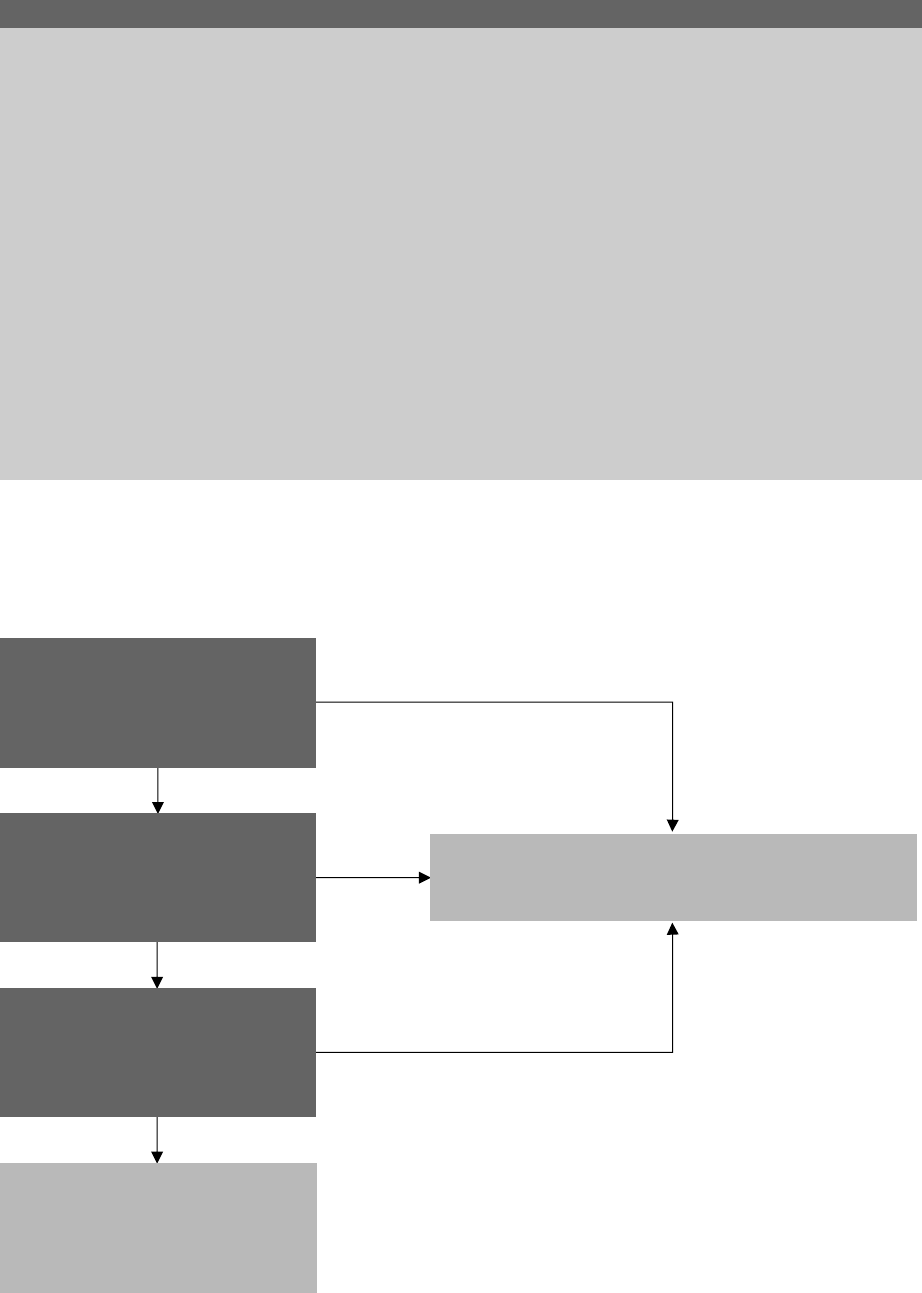
7 Satisfaction of performance obligations
Financial reporting developments Revenue from contracts with customers (ASC 606) | 251
Excerpt from Accounting Standards Codification
Revenue from Contracts with Customers — Overall
Recognition
Performance Obligations Satisfied Over Time
606-10-25-27
An entity transfers control of a good or service over time and, therefore, satisfies a performance
obligation and recognizes revenue over time, if one of the following criteria is met:
a. The customer simultaneously receives and consumes the benefits provided by the entity’s
performance as the entity performs (see paragraphs 606-10-55-5 through 55-6).
b. The entity’s performance creates or enhances an asset (for example, work in process) that the
customer controls as the asset is created or enhanced (see paragraph 606-10-55-7).
c. The entity’s performance does not create an asset with an alternative use to the entity (see
paragraph 606-10-25-28), and the entity has an enforceable right to payment for performance
completed to date (see paragraph 606-10-25-29).
Examples of each of the above criteria are included in the following sections. If an entity is unable to
demonstrate that control transfers over time, the presumption is that control transfers at a point in time
(see section 7.2).
The following flowchart illustrates how to evaluate whether control transfers over time:
Does the customer simultaneously
receive and consume the benefits
provided by the entity’s performance
as the entity performs (see section 7.1.1)?
Does the entity’s performance create
or enhance an asset that the
customer controls as the asset is
created or enhanced (see section 7.1.2)?
Does the entity’s performance create
an asset with no alternative use to the
entity AND the entity has enforceable
right to payment for performance
completed to date (see section 7.1.3)?
The entity transfers control of a
good or service at a point in time
(and recognizes revenue at a point in time).
The entity transfers control of a good or service over time
(and recognizes revenue over time).
No
No
No
Yes
Yes
Yes

7 Satisfaction of performance obligations
Financial reporting developments Revenue from contracts with customers (ASC 606) | 252
How we see it
For each performance obligation identified in the contract, an entity is required to consider at contract
inception whether it satisfies the performance obligation over time (i.e., whether it meets one of the three
criteria for over-time recognition) or at a point in time. If an entity does not satisfy a performance
obligation over time, the performance obligation is satisfied at a point in time.
In comment letter reviews, the SEC staff has asked registrants to clarify whether performance
obligations are satisfied over time or at a point in time and why the method they used to measure
progress toward satisfaction of an over-time performance obligation provides a faithful depiction of
the transfer of goods or services in a contract with a customer.
ASC 606-10-50-12(a) requires an entity to disclose when it typically satisfies its performance obligations
(e.g., upon shipment, as services are delivered). ASC 606-10-50-17(a) requires entities to disclose
significant judgments made in determining the timing of satisfaction of performance obligations, and
ASC 606-10-50-18 requires entities to disclose the method used to recognize revenue (e.g., a
description of the input or output methods used and how those methods are applied) and why the
method selected provides a faithful depiction of the transfer of goods or services. See section 10.5 for
more information on these disclosure requirements.
The SEC staff has commented when registrants have not included these disclosures or clarified which
performance obligations are satisfied at a point in time rather than over time. Registrants should review their
disclosures to verify that they not only meet the specific requirements of ASC 606-10-50-12(a), 50-17(a)
and 50-18 but also meet the overall disclosure objective in ASC 606-10-50-1.
Question 7-1 Can an entity elect to recognize revenue at a point in time under ASC 606?
No. Entities have to analyze their contracts to determine the appropriate timing and pattern of
recognition while considering the specific criteria and requirements of ASC 606. As discussed above, for
each performance obligation identified in the contract, an entity is required to consider at contract
inception whether it satisfies the performance obligation over time (i.e., whether it meets one of the three
criteria for over-time recognition in ASC 606-10-25-27) or at a point in time. If an entity does not satisfy a
performance obligation over time, the performance obligation is satisfied at a point in time. That is, there
is no exception in ASC 606 that would allow entities to elect point-in-time recognition for contracts,
including those with a short duration (e.g., a year or less).
Question 7-2 Do all contracts with a stand-ready element include a single performance obligation that is satisfied
over time? [9 November 2015 TRG meeting, agenda paper no. 48; FASB staff Q&As, question 23]
See response to Question 4-3 in section 4.1.
7.1.1 Customer simultaneously receives and consumes benefits as the entity performs
As the Board explained in the Basis for Conclusions of ASU 2014-09,
174
the entity’s performance in many
service contracts creates an asset only momentarily because that asset is simultaneously received and
consumed by the customer. In these cases, the customer obtains control of the entity’s output as it performs
and, thus, the performance obligation is satisfied over time. While this criterion most often applies to service
174
Paragraph BC125 of ASU 2014-09.

7 Satisfaction of performance obligations
Financial reporting developments Revenue from contracts with customers (ASC 606) | 253
contracts, the TRG
175
discussed instances in which commodity contracts (e.g., electricity, natural gas,
heating oil) could be recognized over time if the facts and circumstances of the contract indicate that the
customer will simultaneously receive and consume the benefits (e.g., a continuous supply contract to meet
immediate demands).
Because there may be contracts in which it is unclear whether the customer simultaneously receives and
consumes the benefit of the entity’s performance over time, the Board included the following
implementation guidance in the standard:
Excerpt from Accounting Standards Codification
Revenue from Contracts with Customers — Overall
Implementation Guidance and Illustrations
Simultaneous Receipt and Consumption of the Benefits of the Entity’s Performance
(paragraph 606-10-25-27(a))
606-10-55-5
For some types of performance obligations, the assessment of whether a customer receives the
benefits of an entity’s performance as the entity performs and simultaneously consumes those
benefits as they are received will be straightforward. Examples include routine or recurring services
(such as a cleaning service) in which the receipt and simultaneous consumption by the customer of the
benefits of the entity’s performance can be readily identified.
606-10-55-6
For other types of performance obligations, an entity may not be able to readily identify whether a
customer simultaneously receives and consumes the benefits from the entity’s performance as the
entity performs. In those circumstances, a performance obligation is satisfied over time if an entity
determines that another entity would not need to substantially reperform the work that the entity has
completed to date if that other entity were to fulfill the remaining performance obligation to the
customer. In determining whether another entity would not need to substantially reperform the work
the entity has completed to date, an entity should make both of the following assumptions:
a. Disregard potential contractual restrictions or practical limitations that otherwise would prevent
the entity from transferring the remaining performance obligation to another entity
b. Presume that another entity fulfilling the remainder of the performance obligation would not have
the benefit of any asset that is presently controlled by the entity and that would remain controlled
by the entity if the performance obligation were to transfer to another entity.
The Board added this implementation guidance because the notion of “benefit” can be subjective. In the
Basis for Conclusions of ASU 2014-09,
176
the Board provided an example of a freight logistics contract in
which the entity has agreed to transport goods from Vancouver to New York City. Some stakeholders
suggested that the customer receives no benefit from the entity’s performance until the goods are
delivered to New York City. However, the Board said the customer benefits as the entity performs because
if the goods were only delivered part way (e.g., to Chicago), another entity would not need to substantially
reperform the entity’s performance to date. The Board observed that in these cases, the assessment of
whether another entity would need to substantially reperform the entity’s performance to date is an
objective way to assess whether the customer receives benefit from the entity’s performance as it occurs.
175
13 July 2015 TRG meeting, agenda paper no. 43; FASB staff Q&As, question 50.
176
Paragraph BC126 of ASU 2014-09.

7 Satisfaction of performance obligations
Financial reporting developments Revenue from contracts with customers (ASC 606) | 254
In assessing whether a customer simultaneously receives and consumes the benefits provided by an
entity’s performance, all relevant facts and circumstances should be considered, including the inherent
characteristics of the good or service, the contract terms and information about how the good or service is
transferred or delivered. However, as noted in ASC 606-10-55-6(a), the Board decided that an entity
should disregard any contractual or practical restrictions when it assesses this criterion. In the Basis for
Conclusions of ASU 2014-09,
177
the FASB explained that the assessment of whether control of the goods
or services has transferred to the customer should be performed by making a hypothetical assessment of
what another entity would need to do if it were to take over the remaining performance. Therefore, actual
practical or contractual restrictions would have no bearing on the assessment of whether the entity had
already transferred control of the goods or services provided to date.
The standard provides the following example showing a customer simultaneously receiving and
consuming the benefits as the entity performs a series of distinct payroll processing services:
Excerpt from Accounting Standards Codification
Revenue from Contracts with Customers — Overall
Implementation Guidance and Illustrations
Example 13 — Customer Simultaneously Receives and Consumes the Benefits
606-10-55-159
An entity enters into a contract to provide monthly payroll processing services to a customer for one year.
606-10-55-160
The promised payroll processing services are accounted for as a single performance obligation in
accordance with paragraph 606-10-25-14(b). The performance obligation is satisfied over time in
accordance with paragraph 606-10-25-27(a) because the customer simultaneously receives and consumes
the benefits of the entity’s performance in processing each payroll transaction as and when each
transaction is processed. The fact that another entity would not need to reperform payroll processing
services for the service that the entity has provided to date also demonstrates that the customer
simultaneously receives and consumes the benefits of the entity’s performance as the entity performs.
(The entity disregards any practical limitations on transferring the remaining performance obligation,
including setup activities that would need to be undertaken by another entity.) The entity recognizes
revenue over time by measuring its progress toward complete satisfaction of that performance obligation
in accordance with paragraphs 606-10-25-31 through 25-37 and 606-10-55-16 through 55-21.
The FASB clarified in the Basis for Conclusions of ASU 2014-09
178
that an entity does not evaluate this
criterion to determine whether a performance obligation is satisfied over time if the entity’s performance
creates an asset the customer does not consume immediately as the asset is received. Instead, an entity
assesses that performance obligation using the criteria discussed in sections 7.1.2 and 7.1.3.
For some service contracts, an entity will not satisfy its obligation over time because the customer does
not consume the benefit of the entity’s performance until the entity’s performance is complete. Example 14
in the standard (excerpted in full in section 7.1.3) depicts an entity providing consulting services that will
take the form of a professional opinion upon the completion of the services. In this situation, an entity
cannot conclude that the services are transferred over time based on this criterion. Instead, it must consider
the other two criteria (see sections 7.1.2 and 7.1.3 and Example 14 below).
177
Paragraph BC127 of ASU 2014-09.
178
Paragraph BC128 of ASU 2014-09.

7 Satisfaction of performance obligations
Financial reporting developments Revenue from contracts with customers (ASC 606) | 255
7.1.2 Customer controls the asset as it is created or enhanced
The second criterion for determining whether control of a good or service is transferred over time
requires entities to evaluate whether the customer controls the asset as it is being created or enhanced.
This criterion is described in the standard as follows:
Excerpt from Accounting Standards Codification
Revenue from Contracts with Customers — Overall
Implementation Guidance and Illustrations
Customer Controls the Asset As It Is Created or Enhanced (paragraph 606-10-25-27(b))
606-10-55-7
In determining whether a customer controls an asset as it is created or enhanced in accordance with
paragraph 606-10-25-27(b), an entity should apply the guidance on control in paragraphs 606-10-25-23
through 25-26 and 606-10-25-30. The asset that is being created or enhanced (for example, a work in
process asset) could be either tangible or intangible.
For purposes of this determination, the definition of “control” is the same as previously discussed (i.e., the
ability to direct the use of, and obtain substantially all of the remaining benefits from, the asset). The FASB
explained in the Basis for Conclusions of ASU 2014-09
179
that this criterion addresses situations in which the
customer clearly controls any work in process arising from the entity’s performance and noted the guidance
acknowledges that, in effect, the entity has agreed to sell its rights to the asset (i.e., work in process) as the
entity performs (i.e., a continuous sale). The Board provided an example of a construction contract in which
the entity is building on the customer’s land, stating that the customer generally controls any work in process
arising from the entity’s performance. In addition, many construction contracts with the US federal
government contain clauses indicating that the government owns any work in process as the contracted item
is being built and, as a result, the performance obligation would be satisfied over time. Further, the asset
being created or enhanced can be intangible.
Question 7-3 How should an entity evaluate a customer’s right to sell (or pledge) a right to obtain an asset
when determining whether the customer controls the asset as it is created or enhanced under
ASC 606-10-25-27(b)?
We believe that an entity should assess control of the asset that the entity’s performance creates or
enhances rather than any contractual rights to obtain the completed asset in the future. For example,
180
in
a contract for the sale of real estate that the entity constructs, the asset created is the real estate itself and
not the customer’s right to obtain the completed real estate in the future. That is, an entity would evaluate
whether the customer controls the partially constructed real estate as it is being constructed to determine
whether criterion ASC 606-10-25-27(b) is met. The customer’s right to sell (or pledge) a right to obtain a
completed asset in the future is not evidence that the customer controls the asset itself as it is being
created or enhanced.
179
Paragraphs BC129 and BC130 of ASU 2014-09.
180
The IFRS IC discussed this example and reached similar conclusions. See the March 2018 IFRIC Update.

7 Satisfaction of performance obligations
Financial reporting developments Revenue from contracts with customers (ASC 606) | 256
7.1.3 Asset with no alternative use and right to payment
In some cases, it may be unclear whether the asset that an entity creates or enhances is controlled by
the customer when considering the first two criteria for evaluating whether control transfers over time.
Therefore, the Board added a third criterion, which requires revenue to be recognized over time if both
of the following requirements are met:
• The entity’s performance does not create an asset with an alternative use to the entity.
• The entity has an enforceable right to payment for performance completed to date.
Each of these concepts is discussed further below.
Alternative use
The FASB said in the Basis for Conclusions of ASU 2014-09
181
that it developed the notion of “alternative
use” to prevent over time revenue recognition when the entity’s performance does not transfer control of
the goods or services to the customer over time. When the entity’s performance creates an asset with an
alternative use to the entity (e.g., standard inventory items), the entity can readily direct the asset to
another customer. In those cases, the entity (not the customer) controls the asset as it is created because
the customer does not have the ability to direct the use of the asset or restrict the entity from directing that
asset to another customer. The standard includes the following guidance on alternative use:
Excerpt from Accounting Standards Codification
Revenue from Contracts with Customers — Overall
Recognition
Performance Obligations Satisfied Over Time
606-10-25-28
An asset created by an entity’s performance does not have an alternative use to an entity if the entity
is either restricted contractually from readily directing the asset for another use during the creation or
enhancement of that asset or limited practically from readily directing the asset in its completed state
for another use. The assessment of whether an asset has an alternative use to the entity is made at
contract inception. After contract inception, an entity shall not update the assessment of the alternative
use of an asset unless the parties to the contract approve a contract modification that substantively
changes the performance obligation. Paragraphs 606-10-55-8 through 55-10 provide guidance for
assessing whether an asset has an alternative use to an entity.
Implementation Guidance and Illustrations
Entity’s Performance Does Not Create an Asset with an Alternative Use (paragraph 606-10-25-27(c))
606-10-55-8
In assessing whether an asset has an alternative use to an entity in accordance with paragraph 606-
10-25-28, an entity should consider the effects of contractual restrictions and practical limitations on
the entity’s ability to readily direct that asset for another use, such as selling it to a different customer.
The possibility of the contract with the customer being terminated is not a relevant consideration in
assessing whether the entity would be able to readily direct the asset for another use.
181
Paragraph BC134 of ASU 2014-09.

7 Satisfaction of performance obligations
Financial reporting developments Revenue from contracts with customers (ASC 606) | 257
606-10-55-9
A contractual restriction on an entity’s ability to direct an asset for another use must be substantive
for the asset not to have an alternative use to the entity. A contractual restriction is substantive if a
customer could enforce its rights to the promised asset if the entity sought to direct the asset for
another use. In contrast, a contractual restriction is not substantive if, for example, an asset is largely
interchangeable with other assets that the entity could transfer to another customer without breaching
the contract and without incurring significant costs that otherwise would not have been incurred in
relation to that contract.
606-10-55-10
A practical limitation on an entity’s ability to direct an asset for another use exists if an entity would incur
significant economic losses to direct the asset for another use. A significant economic loss could arise
because the entity either would incur significant costs to rework the asset or would only be able to sell
the asset at a significant loss. For example, an entity may be practically limited from redirecting assets
that either have design specifications that are unique to a customer or are located in remote areas.
In making the assessment of whether a good or service has an alternative use, an entity must consider any
substantive contractual restrictions. A contractual restriction is substantive if a customer could enforce its
rights to the promised asset if the entity sought to direct the asset for another use. Contractual restrictions
that are not substantive, such as protective rights for the customer, should not be considered. The Board
explained in the Basis for Conclusions of ASU 2014-09
182
that a protective right typically gives an entity the
practical ability to physically substitute or redirect the asset without the customer’s knowledge or objection
to the change. For example, a contract that states an entity cannot transfer a good to another customer
because the customer has legal title to the good would not be substantive if the entity could physically
substitute another good and redirect the original good to another customer for little cost. In this case, the
contractual restriction is merely a protective right, and the entity concludes that control of the asset has
not transferred to the customer.
An entity also needs to consider any practical limitations on directing the asset for another use. In making
this determination, the Board clarified in the Basis for Conclusions of ASU 2014-09
183
that an entity should
consider the characteristics of the asset that ultimately will be transferred to the customer and assess
whether the asset in its completed state could be redirected without a significant cost of rework. The Board
provided an example of manufacturing contracts in which the basic design of the asset is the same across
all contracts but substantial customization is made to the asset. As a result, redirecting the finished asset
would require significant rework, and the asset would not have an alternative use because the entity would
incur significant economic losses to direct the asset for another use.
Considering the level of customization of an asset may help entities assess whether an asset has an
alternative use. The FASB noted in the Basis for Conclusions of ASU 2014-09
184
that when an entity is
creating an asset that is highly customized for a particular customer, it is less likely that the entity could
use that asset for any other purpose. That is, the entity would likely need to incur significant rework
costs to redirect the asset to another customer or sell the asset at a significantly reduced price. As a
result, the asset would not have an alternative use to the entity, and the customer could be regarded as
receiving the benefit of the entity’s performance as the entity performs (i.e., having control of the asset)
provided that the entity also has an enforceable right to payment (discussed below). However, the Board
clarified
185
that the level of customization is a factor to consider, but it should not be a determinative
182
Paragraph BC138 of ASU 2014-09.
183
Paragraph BC136 of ASU 2014-09.
184
Paragraph BC135 of ASU 2014-09.
185
Paragraph BC137 of ASU 2014-09.

7 Satisfaction of performance obligations
Financial reporting developments Revenue from contracts with customers (ASC 606) | 258
factor. For example, in some real estate contracts, the asset may be standardized (i.e., not highly
customized) but still may not have an alternative use to the entity because of substantive contractual
restrictions that preclude the entity from readily directing the asset to another customer.
The standard provides the following example to illustrate an evaluation of practical limitations on
directing an asset for another use:
Excerpt from Accounting Standards Codification
Revenue from Contracts with Customers — Overall
Implementation Guidance and Illustrations
Example 15 — Asset Has No Alternative Use to the Entity
606-10-55-165
An entity enters into a contract with a customer, a government agency, to build a specialized satellite.
The entity builds satellites for various customers, such as governments and commercial entities. The
design and construction of each satellite differ substantially, on the basis of each customer’s needs
and the type of technology that is incorporated into the satellite.
606-10-55-166
At contract inception, the entity assesses whether its performance obligation to build the satellite is a
performance obligation satisfied over time in accordance with paragraph 606-10-25-27.
606-10-55-167
As part of that assessment, the entity considers whether the satellite in its completed state will have
an alternative use to the entity. Although the contract does not preclude the entity from directing the
completed satellite to another customer, the entity would incur significant costs to rework the design
and function of the satellite to direct that asset to another customer. Consequently, the asset has no
alternative use to the entity (see paragraphs 606-10-25-27(c), 606-10-25-28, and 606-10-55-8
through 55-10) because the customer-specific design of the satellite limits the entity’s practical ability
to readily direct the satellite to another customer.
606-10-55-168
For the entity’s performance obligation to be satisfied over time when building the satellite, paragraph
606-10-25-27(c) also requires the entity to have an enforceable right to payment for performance
completed to date. This condition is not illustrated in this Example.
Requiring an entity to assess contractual restrictions when evaluating this criterion may seem to contradict
the requirements in ASC 606-10-55-6 to ignore contractual and practical restrictions when evaluating
whether another entity would need to substantially reperform the work the entity has completed to date
(see section 7.1.1). The Board explained
186
that this difference is appropriate because each criterion
provides a different method for assessing when control transfers, and the criteria were designed to apply
to different situations.
After contract inception, an entity does not update its assessment of whether an asset has an alternative
use for any subsequent changes in facts and circumstances, unless the parties approve a contract
modification that substantively changes the performance obligation. The FASB also decided
187
that an
entity’s lack of an alternative use for an asset does not, by itself, mean that the customer effectively
controls the asset. The entity would also need to determine that it has an enforceable right to payment
for performance to date, as discussed below.
186
Paragraph BC139 of ASU 2014-09.
187
Paragraph BC141 of ASU 2014-09.

7 Satisfaction of performance obligations
Financial reporting developments Revenue from contracts with customers (ASC 606) | 259
Enforceable right to payment for performance completed to date
To evaluate whether it has an enforceable right to payment for performance completed to date, the
entity is required to consider the terms of the contract and any laws or regulations that relate to it. The
standard states that the right to payment for performance completed to date need not be for a fixed
amount. However, at any time during the contract term, an entity must be entitled to an amount that at
least compensates the entity for performance completed to date (as defined in ASC 606-10-55-11 below)
if the contract is terminated by the customer (or another party) for reasons other than the entity’s failure
to perform as promised. The FASB concluded
188
that a customer’s obligation to pay for the entity’s
performance is an indicator that the customer has obtained benefit from the entity’s performance.
The standard says the following about an entity’s right to payment for performance completed to date:
Excerpt from Accounting Standards Codification
Revenue from Contracts with Customers — Overall
Recognition
Performance Obligations Satisfied Over Time
606-10-25-29
An entity shall consider the terms of the contract, as well as any laws that apply to the contract, when
evaluating whether it has an enforceable right to payment for performance completed to date in
accordance with paragraph 606-10-25-27(c). The right to payment for performance completed to
date does not need to be for a fixed amount. However, at all times throughout the duration of the
contract, the entity must be entitled to an amount that at least compensates the entity for
performance completed to date if the contract is terminated by the customer or another party for
reasons other than the entity’s failure to perform as promised. Paragraphs 606-10-55-11 through 55-
15 provide guidance for assessing the existence and enforceability of a right to payment and whether
an entity’s right to payment would entitle the entity to be paid for its performance completed to date.
Implementation Guidance and Illustrations
Right to Payment for Performance Completed to Date (paragraph 606-10-25-27(c))
606-10-55-11
In accordance with paragraph 606-10-25-29, an entity has a right to payment for performance
completed to date if the entity would be entitled to an amount that at least compensates the entity for its
performance completed to date in the event that the customer or another party terminates the contract
for reasons other than the entity’s failure to perform as promised. An amount that would compensate an
entity for performance completed to date would be an amount that approximates the selling price of the
goods or services transferred to date (for example, recovery of the costs incurred by an entity in
satisfying the performance obligation plus a reasonable profit margin) rather than compensation for
only the entity’s potential loss of profit if the contract were to be terminated. Compensation for a
reasonable profit margin need not equal the profit margin expected if the contract was fulfilled as
promised, but an entity should be entitled to compensation for either of the following amounts:
a. A proportion of the expected profit margin in the contract that reasonably reflects the extent of
the entity’s performance under the contract before termination by the customer (or another party)
b. A reasonable return on the entity’s cost of capital for similar contracts (or the entity’s typical
operating margin for similar contracts) if the contract-specific margin is higher than the return
the entity usually generates from similar contracts.
188
Paragraph BC142 of ASU 2014-09.

7 Satisfaction of performance obligations
Financial reporting developments Revenue from contracts with customers (ASC 606) | 260
606-10-55-12
An entity’s right to payment for performance completed to date need not be a present unconditional right
to payment. In many cases, an entity will have an unconditional right to payment only at an agreed-upon
milestone or upon complete satisfaction of the performance obligation. In assessing whether it has a right
to payment for performance completed to date, an entity should consider whether it would have an
enforceable right to demand or retain payment for performance completed to date if the contract were
to be terminated before completion for reasons other than the entity’s failure to perform as promised.
606-10-55-13
In some contracts, a customer may have a right to terminate the contract only at specified times during
the life of the contract or the customer might not have any right to terminate the contract. If a
customer acts to terminate a contract without having the right to terminate the contract at that time
(including when a customer fails to perform its obligations as promised), the contract (or other laws)
might entitle the entity to continue to transfer to the customer the goods or services promised in the
contract and require the customer to pay the consideration promised in exchange for those goods or
services. In those circumstances, an entity has a right to payment for performance completed to date
because the entity has a right to continue to perform its obligations in accordance with the contract and
to require the customer to perform its obligations (which include paying the promised consideration).
606-10-55-14
In assessing the existence and enforceability of a right to payment for performance completed to date,
an entity should consider the contractual terms as well as any legislation or legal precedent that could
supplement or override those contractual terms. This would include an assessment of whether:
a. Legislation, administrative practice, or legal precedent confers upon the entity a right to payment
for performance to date even though that right is not specified in the contract with the customer.
b. Relevant legal precedent indicates that similar rights to payment for performance completed to
date in similar contracts have no binding legal effect.
c. An entity’s customary business practices of choosing not to enforce a right to payment has
resulted in the right being rendered unenforceable in that legal environment. However,
notwithstanding that an entity may choose to waive its right to payment in similar contracts, an
entity would continue to have a right to payment to date if, in the contract with the customer, its
right to payment for performance to date remains enforceable.
606-10-55-15
The payment schedule specified in a contract does not necessarily indicate whether an entity has an
enforceable right to payment for performance completed to date. Although the payment schedule in a
contract specifies the timing and amount of consideration that is payable by a customer, the payment
schedule might not necessarily provide evidence of the entity’s right to payment for performance
completed to date. This is because, for example, the contract could specify that the consideration
received from the customer is refundable for reasons other than the entity failing to perform as
promised in the contract.

7 Satisfaction of performance obligations
Financial reporting developments Revenue from contracts with customers (ASC 606) | 261
The FASB described in the Basis for Conclusions of ASU 2014-09
189
how the factors of “no alternative
use” and the “right to payment” relate to the assessment of control. Because an entity is constructing an
asset with no alternative use to the entity, the entity is effectively creating an asset at the direction of the
customer. That asset would have little or no value to the entity if the customer terminated the contract.
As a result, the entity will seek economic protection from the risk of customer termination by requiring the
customer to pay for the entity’s performance to date upon customer termination. The customer’s obligation
to pay for the entity’s performance to date (or the inability to avoid paying for that performance) suggests
that the customer has obtained the benefits from the entity’s performance.
The enforceable right to payment criterion has two components that an entity must assess: (1) what
amount would the customer be required to pay and (2) what does it mean to have the enforceable right to
payment. The Board provided additional guidance on how to evaluate each of these components.
First, the Board explained in the Basis for Conclusions of ASU 2014-09
190
that the focus of the analysis
should be on the amount to which the entity would be entitled upon termination. This amount is not the
amount the entity would settle for in a negotiation, and it does not need to reflect the full contract margin
the entity would earn if the contract were completed. The Board clarified in ASC 606-10-55-11 that a
“reasonable profit margin” would either be a proportion of the entity’s expected profit margin that
reasonably reflects the entity’s performance to date or a reasonable return on the entity’s cost of capital. In
addition, the standard clarifies in ASC 606-10-55-15 that including a payment schedule in a contract does
not, by itself, indicate that the entity has the right to payment for performance completed to date. The entity
must examine information that may contradict the payment schedule and may represent the entity’s actual
right to payment for performance completed to date. As highlighted in Example 16 below, payments from a
customer must approximate the selling price of the goods or services transferred to date to be considered
a right to payment for performance to date. A fixed payment schedule may not meet this requirement.
Second, the Board added guidance in ASC 606-10-55-14 to help an entity assess the existence and
enforceability of a right to payment. In making this assessment, entities should consider any laws, legislation
or legal precedent that could supplement or override the contractual terms. Further, the standard states that
an entity can have an enforceable right to payment even when the customer does not have the right to
terminate if the contract (or other laws) entitles the entity to continue to transfer the goods or services
promised in the contract and require the customer to pay the consideration promised for those goods or
services (often referred to as specific performance). The standard also states that even when an entity
chooses to waive its right to payment in other similar contracts, an entity would continue to have a right to
payment for the contract if, in the contract, its right to payment for performance to date remains enforceable.
189
Paragraph BC142 of ASU 2014-09.
190
Paragraph BC144 of ASU 2014-09.

7 Satisfaction of performance obligations
Financial reporting developments Revenue from contracts with customers (ASC 606) | 262
The standard provides the following examples to illustrate the concepts described in section 7.1.3.
Example 14 depicts an entity providing consulting services that will take the form of a professional opinion
upon the completion of the services. In this example, the entity’s performance obligation meets the no
alternative use and right to payment criterion of ASC 606-10-25-27(c) as follows:
Excerpt from Accounting Standards Codification
Revenue from Contracts with Customers — Overall
Implementation Guidance and Illustrations
Example 14 — Assessing Alternative Use and Right to Payment
606-10-55-161
An entity enters into a contract with a customer to provide a consulting service that results in the
entity providing a professional opinion to the customer. The professional opinion relates to facts and
circumstances that are specific to the customer. If the customer were to terminate the consulting
contract for reasons other than the entity’s failure to perform as promised, the contract requires the
customer to compensate the entity for its costs incurred plus a 15 percent margin. The 15 percent
margin approximates the profit margin that the entity earns from similar contracts.
606-10-55-162
The entity considers the criterion in paragraph 606-10-25-27(a) and the guidance in paragraphs 606-
10-55-5 through 55-6 to determine whether the customer simultaneously receives and consumes the
benefits of the entity’s performance. If the entity were to be unable to satisfy its obligation and the
customer hired another consulting firm to provide the opinion, the other consulting firm would need to
substantially reperform the work that the entity had completed to date because the other consulting
firm would not have the benefit of any work in progress performed by the entity. The nature of the
professional opinion is such that the customer will receive the benefits of the entity’s performance
only when the customer receives the professional opinion. Consequently, the entity concludes that the
criterion in paragraph 606-10-25-27(a) is not met.
606-10-55-163
However, the entity’s performance obligation meets the criterion in paragraph 606-10-25-27(c) and is
a performance obligation satisfied over time because of both of the following factors:
a. In accordance with paragraphs 606-10-25-28 and 606-10-55-8 through 55-10, the development of
the professional opinion does not create an asset with alternative use to the entity because the
professional opinion relates to facts and circumstances that are specific to the customer. Therefore,
there is a practical limitation on the entity’s ability to readily direct the asset to another customer.
b. In accordance with paragraphs 606-10-25-29 and 606-10-55-11 through 55-15, the entity has an
enforceable right to payment for its performance completed to date for its costs plus a reasonable
margin, which approximates the profit margin in other contracts.
606-10-55-164
Consequently, the entity recognizes revenue over time by measuring the progress toward complete
satisfaction of the performance obligation in accordance with paragraphs 606-10-25-31 through 25-37
and 606-10-55-16 through 55-21.

7 Satisfaction of performance obligations
Financial reporting developments Revenue from contracts with customers (ASC 606) | 263
Example 16 illustrates a contract in which the fixed payment schedule is not expected to correspond, at
all times throughout the contract, to the amount that would be necessary to compensate the entity for
performance completed to date. Accordingly, the entity concludes that it does not have an enforceable
right to payment for performance completed to date as follows:
Excerpt from Accounting Standards Codification
Revenue from Contracts with Customers — Overall
Implementation Guidance and Illustrations
Example 16 — Enforceable Right to Payment for Performance Completed to Date
606-10-55-169
An entity enters into a contract with a customer to build an item of equipment. The payment schedule
in the contract specifies that the customer must make an advance payment at contract inception of
10 percent of the contract price, regular payments throughout the construction period (amounting to
50 percent of the contract price), and a final payment of 40 percent of the contract price after
construction is completed and the equipment has passed the prescribed performance tests. The
payments are nonrefundable unless the entity fails to perform as promised. If the customer terminates
the contract, the entity is entitled only to retain any progress payments received from the customer.
The entity has no further rights to compensation from the customer.
606-10-55-170
At contract inception, the entity assesses whether its performance obligation to build the equipment is
a performance obligation satisfied over time in accordance with paragraph 606-10-25-27.
606-10-55-171
As part of that assessment, the entity considers whether it has an enforceable right to payment for
performance completed to date in accordance with paragraphs 606-10-25-27(c), 606-10-25-29, and
606-10-55-11 through 55-15 if the customer were to terminate the contract for reasons other than
the entity’s failure to perform as promised. Even though the payments made by the customer are
nonrefundable, the cumulative amount of those payments is not expected, at all times throughout the
contract, to at least correspond to the amount that would be necessary to compensate the entity for
performance completed to date. This is because at various times during construction the cumulative
amount of consideration paid by the customer might be less than the selling price of the partially
completed item of equipment at that time. Consequently, the entity does not have a right to payment
for performance completed to date.
606-10-55-172
Because the entity does not have a right to payment for performance completed to date, the entity’s
performance obligation is not satisfied over time in accordance with paragraph 606-10-25-27(c).
Accordingly, the entity does not need to assess whether the equipment would have an alternative use
to the entity. The entity also concludes that it does not meet the criteria in paragraph 606-10-25-
27(a) or (b), and, thus, the entity accounts for the construction of the equipment as a performance
obligation satisfied at a point in time in accordance with paragraph 606-10-25-30.

7 Satisfaction of performance obligations
Financial reporting developments Revenue from contracts with customers (ASC 606) | 264
Example 17 contrasts similar situations and illustrates when revenue would be recognized over time (see
section 7.1) versus at a point in time (see section 7.2). Specifically, this example illustrates the
evaluation of the no alternative use and right to payment for performance to date concepts as follows:
Excerpt from Accounting Standards Codification
Revenue from Contracts with Customers — Overall
Implementation Guidance and Illustrations
Example 17 — Assessing Whether a Performance Obligation Is Satisfied at a Point in Time or Over Time
606-10-55-173
An entity is developing a multi-unit residential complex. A customer enters into a binding sales
contract with the entity for a specified unit that is under construction. Each unit has a similar floor plan
and is of a similar size, but other attributes of the units are different (for example, the location of the
unit within the complex).
Case A — Entity Does Not Have an Enforceable Right to Payment for Performance Completed to Date
606-10-55-174
The customer pays a deposit upon entering into the contract, and the deposit is refundable only if the
entity fails to complete construction of the unit in accordance with the contract. The remainder of the
contract price is payable on completion of the contract when the customer obtains physical possession
of the unit. If the customer defaults on the contract before completion of the unit, the entity only has
the right to retain the deposit.
606-10-55-175
At contract inception, the entity applies paragraph 606-10-25-27(c) to determine whether its promise
to construct and transfer the unit to the customer is a performance obligation satisfied over time. The
entity determines that it does not have an enforceable right to payment for performance completed to
date because until construction of the unit is complete, the entity only has a right to the deposit paid
by the customer. Because the entity does not have a right to payment for work completed to date, the
entity’s performance obligation is not a performance obligation satisfied over time in accordance with
paragraph 606-10-25-27(c). Instead, the entity accounts for the sale of the unit as a performance
obligation satisfied at a point in time in accordance with paragraph 606-10-25-30.
Case B — Entity Has an Enforceable Right to Payment for Performance Completed to Date
606-10-55-176
The customer pays a nonrefundable deposit upon entering into the contract and will make progress
payments during construction of the unit. The contract has substantive terms that preclude the entity
from being able to direct the unit to another customer. In addition, the customer does not have the
right to terminate the contract unless the entity fails to perform as promised. If the customer defaults
on its obligations by failing to make the promised progress payments as and when they are due, the
entity would have a right to all of the consideration promised in the contract if it completes the
construction of the unit. The courts have previously upheld similar rights that entitle developers to
require the customer to perform, subject to the entity meeting its obligations under the contract.
606-10-55-177
At contract inception, the entity applies paragraph 606-10-25-27(c) to determine whether its promise
to construct and transfer the unit to the customer is a performance obligation satisfied over time. The
entity determines that the asset (unit) created by the entity’s performance does not have an
alternative use to the entity because the contract precludes the entity from transferring the specified
unit to another customer. The entity does not consider the possibility of a contract termination in
assessing whether the entity is able to direct the asset to another customer.

7 Satisfaction of performance obligations
Financial reporting developments Revenue from contracts with customers (ASC 606) | 265
606-10-55-178
The entity also has a right to payment for performance completed to date in accordance with
paragraphs 606-10-25-29 and 606-10-55-11 through 55-15. This is because if the customer were to
default on its obligations, the entity would have an enforceable right to all of the consideration
promised under the contract if it continues to perform as promised.
606-10-55-179
Therefore, the terms of the contract and the practices in the legal jurisdiction indicate that there is a
right to payment for performance completed to date. Consequently, the criteria in paragraph 606-10-
25-27(c) are met, and the entity has a performance obligation that it satisfies over time. To recognize
revenue for that performance obligation satisfied over time, the entity measures its progress toward
complete satisfaction of its performance obligation in accordance with paragraphs 606-10-25-31
through 25-37 and 606-10-55-16 through 55-21.
606-10-55-180
In the construction of a multi-unit residential complex, the entity may have many contracts with
individual customers for the construction of individual units within the complex. The entity would
account for each contract separately. However, depending on the nature of the construction, the
entity’s performance in undertaking the initial construction works (that is, the foundation and the basic
structure), as well as the construction of common areas, may need to be reflected when measuring its
progress toward complete satisfaction of its performance obligations in each contract.
Case C — Entity Has an Enforceable Right to Payment for Performance Completed to Date
606-10-55-181
The same facts as in Case B apply to Case C, except that in the event of a default by the customer,
either the entity can require the customer to perform as required under the contract or the entity can
cancel the contract in exchange for the asset under construction and an entitlement to a penalty of a
proportion of the contract price.
606-10-55-182
Notwithstanding that the entity could cancel the contract (in which case the customer’s obligation to
the entity would be limited to transferring control of the partially completed asset to the entity and
paying the penalty prescribed), the entity has a right to payment for performance completed to date
because the entity also could choose to enforce its rights to full payment under the contract. The fact
that the entity may choose to cancel the contract in the event the customer defaults on its obligations
would not affect that assessment (see paragraph 606-10-55-13), provided that the entity’s rights to
require the customer to continue to perform as required under the contract (that is, pay the promised
consideration) are enforceable.
Question 7-4 Should an entity consider the completed asset or the work in process when assessing whether its
performance creates an asset with no alternative use under ASC 606-10-25-27(c)? [7 November 2016
FASB TRG meeting, agenda paper no. 56; FASB staff Q&As, question 55]
FASB TRG members generally agreed that when an entity evaluates whether its performance creates an asset
with no alternative use, it should consider the completed asset that will be transferred to the customer
(i.e., whether it could sell the raw materials or work in process to another customer is not relevant). This
conclusion is supported by the Board’s comment in the Basis for Conclusions of ASU 2014-09
191
“that an
entity should consider the characteristics of the asset that will ultimately be transferred to the customer.”
191
Paragraph BC136 of ASU 2014-09.

7 Satisfaction of performance obligations
Financial reporting developments Revenue from contracts with customers (ASC 606) | 266
However, as discussed above in section 7.1.3 and in accordance with ASC 606-10-25-28, if the entity is
contractually restricted or has a practical limitation on its ability to direct the asset for another use, the
asset would not have an alternative use, regardless of the characteristics of the completed asset. A
contractual restriction is substantive if a customer could enforce its rights to the promised asset if the
entity sought to direct the asset for another use. A practical limitation exists if an entity would incur a
significant economic loss to direct the asset for another use.
The TRG agenda paper included the following example:
Example of no alternative use
An entity enters into a contract with a customer to build customized equipment. The customization of
the equipment occurs when the manufacturing process is approximately 75% complete. That is, for
approximately the first 75% of the manufacturing process, the in-process asset could be redirected to
fulfill another customer’s equipment order (assuming no contractual restrictions). However, the
equipment cannot be sold in its completed state to another customer without incurring a significant
economic loss. The design specifications of the equipment are unique to the customer and the entity
would only be able to sell the completed equipment at a significant economic loss.
The entity would evaluate, at contract inception, whether there is any contractual restriction or practical
limitation on its ability to readily direct the asset in its completed state for another use. Because the entity
cannot sell the completed equipment to another customer without incurring a significant economic loss,
the entity has a practical limitation on its ability to direct the equipment in its completed state and,
therefore, the asset does not have an alternative use. However, before concluding that revenue should
be recognized over time, an entity must evaluate whether it has an enforceable right to payment.
Question 7-5 What should an entity consider in determining whether it has an enforceable right to payment under
ASC 606-10-25-27(c)? [7 November 2016 FASB TRG meeting, agenda paper no. 56; FASB staff Q&As,
question 56]
FASB TRG members generally agreed that entities need to evaluate the contractual provisions and
determine whether the right to payment compensates the entity for performance completed to date. For
example, a contract may not explicitly provide an entity with an enforceable right to payment for anything
other than finished goods. However, if the termination provisions in the contract allow for a notice period
(e.g., 60 days) that would provide sufficient time for an entity to move all work in process to the finished
goods stage, an entity would likely conclude that the contract provides for an enforceable right to payment
for performance completed to date. In addition, an entity should consider any legislation or legal
precedent that could supplement or override any contractual terms.
The FASB TRG also discussed the linkage among right to payment, measure of progress and the timing
of the customization of a good. For example, the FASB TRG noted an entity may not always have an
enforceable right to payment at contract inception, such as when an entity is producing standard goods
(i.e., inventory) that may be customized for a customer toward the end of the production process. FASB
TRG members generally agreed that an entity should consider whether it has an enforceable right to
payment related to its performance completed to date.
If the entity’s performance obligation is to customize its standard goods for a customer, FASB TRG
members generally agreed that an entity would evaluate whether it has an enforceable right to payment
starting at the point that the entity begins to satisfy the performance obligation to customize the goods
for the customer. That is, because the right to payment is for performance completed to date, that
performance should coincide with how an entity defines the nature of its performance obligation and its
measure of progress toward satisfaction of that performance obligation.

7 Satisfaction of performance obligations
Financial reporting developments Revenue from contracts with customers (ASC 606) | 267
Question 7-6 In order to have an enforceable right to payment for performance completed to date, does an entity
need to have a present unconditional right to payment? [7 November 2016 FASB TRG meeting, agenda
paper no. 56; FASB staff Q&As, question 56]
No. In the Basis for Conclusions of ASU 2014-09,
192
the Board clarified that the contractual payment
terms in a contract may not always align with an entity’s enforceable rights to payment for performance
completed to date. As a result, an entity does not need to have a present unconditional right to payment;
instead, it must have an enforceable right to demand and/or retain payment for performance completed
to date upon customer termination without cause. To illustrate this point, the Board included an example
of a consulting contract that requires an entity to provide a report at the end of the project for a fixed
amount due to the entity when it delivers the report. Assuming that the entity was performing under the
contract and the contract or the law requires the customer to compensate the entity for its performance
completed to date, the entity would have an enforceable right to payment for performance completed to
date even though an unconditional right to the fixed amount only exists at the time the report is provided
to the customer. This is because the entity has a right to demand and retain payment for performance
completed to date.
Question 7-7 Does an entity have a right to payment for performance completed to date if the entity receives a
nonrefundable up-front payment that represents the full transaction price? [7 November 2016 FASB
TRG meeting, agenda paper no. 56; FASB staff Q&As, question 56]
Yes. The Board explained in the Basis for Conclusions of ASU 2014-09
193
that, because a full up-front
payment would at least compensate an entity for work completed to date throughout the contract, such
a payment would represent an entity’s right to payment for performance completed to date provided that
the entity’s right to retain and not refund the payment is enforceable upon termination by the customer. If
the nonrefundable up-front payment does not represent the full transaction price, an entity will have to
apply judgment to determine whether the up-front payment provides the entity with a right to payment for
performance completed to date in the event of a contract termination.
Question 7-8 Can an entity conclude that an enforceable right to payment for performance completed to date does
not exist for a contract with the customer that does not specify by its written terms the entity’s right
to payment upon contract termination? [FASB staff Q&As, question 57]
Yes. We believe that when a contract’s written terms do not specify the entity’s right to payment upon
contract termination, an enforceable right to payment is presumed not to exist. This is consistent with a
published view
194
of the FASB staff that states, “In the staff’s view, a reasonable interpretation of the
guidance is that when a contract’s written terms do not specify the entity’s right to payment upon
contract termination, an enforceable right to payment is presumed not to exist.” Further, we believe the
presumption that an enforceable right to payment does not exist also applies to non-cancellable
contracts when the contract’s written terms do not specify the entity’s right to payment in the event the
customer does not fulfill its contractual obligations.
However, if the contract with the customer does not specify by its written terms the entity’s right to
payment upon contract termination and the entity asserts that it has an enforceable right to payment for
performance completed to date, we would expect an entity to:
• Support this assertion based on legislation, administrative practice or legal precedent that confers
upon the entity a right to payment for performance to date, as stated in ASC 606-10-55-14(a) —
This analysis would need to demonstrate that an enforceable right to payment (as defined by ASC 606)
192
Paragraph BC145 of ASU 2014-09.
193
Paragraph BC146 of ASU 2014-09.
194
FASB staff Private Company Council Memo, Definition of an Accounting Contract and Short Cycle Manufacturing (Right to
Payment).

7 Satisfaction of performance obligations
Financial reporting developments Revenue from contracts with customers (ASC 606) | 268
exists in the relevant jurisdiction. The fact that the entity would have a basis for making a claim
against the counterparty in a court of law would not be sufficient to support that there is an
enforceable right to payment.
• Assess whether relevant legal precedent indicates that similar rights to payment for performance
completed to date in similar contracts have no binding legal effect, as stated in ASC 606-10-55-14(b)
Question 7-9 Can an entity conclude it has an enforceable right to payment for performance completed to date
when a contract is priced at a loss?
Yes, however, the specific facts and circumstances of the contract must be considered. As discussed
above, the standard states that if a contract is terminated for reasons other than the entity’s failure to
perform as promised, the entity must be entitled to an amount that at least compensates it for its
performance to date. Further, ASC 606-10-55-11 states, “an amount that would compensate an entity
for performance completed to date would be an amount that approximates the selling price of the goods
or services transferred to date (for example, recovery of the costs incurred by an entity in satisfying the
performance obligation plus a reasonable profit margin).” Accordingly, stakeholders had asked whether
an entity could have an enforceable right to payment for performance completed to date if the contract
was priced at a loss.
We believe that the example in ASC 606-10-55-11 of cost recovery plus a reasonable profit margin does
not preclude an entity from having an enforceable right to payment even if the contract is priced at a
loss. Rather, we believe an entity should evaluate whether it has an enforceable right to receive an
amount that approximates the selling price of the goods or services for performance completed to date
in the event the customer terminates the contract.
Consider the following example from the AICPA Audit and Accounting Guide, Revenue Recognition:
195
Example of enforceable right to payment determination for a contract priced at a loss
Customer X requests bids for the design of a highly customized system. The customer expects to
award subsequent contracts for systems over the next 10 years from the entity that wins the design
contract. Contractor A is aware of the competition and knows that in order to win the design contract
it must bid the contract at a loss. That is, Contractor A is willing to bid the design contract at a loss due
to the significant value in future expected orders.
Contractor A wins the contract with a value of $100 and estimated costs to complete of $130.
Contractor A has determined the contract contains a single performance obligation and that its
performance does not create an asset with an alternative use. The contract is noncancellable,
however, the contract terms stipulate that if the customer terminates the contract, Contractor A
would be entitled to payment for work done to date. The payment amount would be equal to a
proportional amount of the price of the contract based upon the performance of work done to date.
For example, if at the termination date Contractor A was 50% complete (i.e., incurred $65 of costs), it
would be entitled to a $50 payment from the customer (i.e., 50% of $100 contract value).
In this example, we believe Contractor A has an enforceable right to payment for performance
completed to date in accordance with paragraph ASC 606-10-25-27(c) because it is entitled to an
amount that approximates the selling price of the good or service for performance completed to date
in the event the customer terminates the contract.
Refer to section 9.2 for further discussion on accounting for anticipated losses on contracts.
195
Paragraphs 3.5.18 through 3.5.23 of Chapter 3, Aerospace and Defense Entities.

7 Satisfaction of performance obligations
Financial reporting developments Revenue from contracts with customers (ASC 606) | 269
Question 7-10 Can an entity have an enforceable right to payment for performance completed to date if it is not
entitled to a reasonable profit margin on standard inventory materials that were purchased but not
yet used in completing the performance obligation?
Yes. Consider an example in which an entity agrees to construct a specialized asset for a customer that has
no alternative use to the entity. The construction of this asset requires the use of standard inventory
materials that could be used interchangeably on other projects of the entity until they are integrated into
the production of the customer’s asset. The contract with the customer entitles the entity to reimbursement
of costs incurred plus a reasonable profit margin if the contract is terminated, but specifically excludes
reimbursement of standard inventory purchases before they are integrated into the customer’s asset. As
previously discussed, the standard states that at any time during the contract, an entity must be entitled to
an amount that compensates the entity for performance completed to date if the contract is terminated for
reasons other than the entity’s failure to perform. However, in this example, the standard inventory
materials have not yet been used in fulfilling the performance obligation, so the entity does not need to
have an enforceable right to payment in relation to these materials. The entity could also repurpose these
materials for use in other contracts with customers.
The entity will still need to evaluate whether it has an enforceable right to payment for performance
completed to date once the standard inventory materials are used in fulfilling the performance obligation.
Question 7-11 Should an entity contemplate consideration it might receive from the potential resale of the asset to
determine whether an enforceable right to payment for performance completed to date exists?
No. We believe only the payment the entity is entitled to receive relating to performance under the current
customer contract is relevant in determining whether the entity has an enforceable right to payment for
performance completed to date. For example,
196
an entity should not look to potential consideration it may
receive upon resale of the asset if the original customer terminates the contract. This is because the resale
of an asset typically represents a separate contract with a different customer and, therefore, is not relevant
to determining the existence and enforceability of a right to payment with the existing customer.
7.1.4 Measuring progress (updated September 2022)
When an entity has determined that a performance obligation is satisfied over time, the standard
requires the entity to select a single revenue recognition method for the relevant performance obligation
that faithfully depicts the entity’s performance in transferring control of the goods or services. The
standard provides the following guidance to meet this objective:
Excerpt from Accounting Standards Codification
Revenue from Contracts with Customers — Overall
Recognition
Measuring Progress toward Complete Satisfaction of a Performance Obligation
606-10-25-31
For each performance obligation satisfied over time in accordance with paragraphs 606-10-25-27
through 25-29, an entity shall recognize revenue over time by measuring the progress toward
complete satisfaction of that performance obligation. The objective when measuring progress is to
depict an entity’s performance in transferring control of goods or services promised to a customer
(that is, the satisfaction of an entity’s performance obligation).
196
The IFRS IC discussed this example and reached similar conclusions. See the March 2018 IFRIC Update.

7 Satisfaction of performance obligations
Financial reporting developments Revenue from contracts with customers (ASC 606) | 270
606-10-25-32
An entity shall apply a single method of measuring progress for each performance obligation satisfied
over time, and the entity shall apply that method consistently to similar performance obligations and in
similar circumstances. At the end of each reporting period, an entity shall remeasure its progress
toward complete satisfaction of a performance obligation satisfied over time.
Methods for Measuring Progress
606-10-25-33
Appropriate methods of measuring progress include output methods and input methods. Paragraphs
606-10-55-16 through 55-21 provide guidance for using output methods and input methods to
measure an entity’s progress toward complete satisfaction of a performance obligation. In determining
the appropriate method for measuring progress, an entity shall consider the nature of the good or
service that the entity promised to transfer to the customer.
606-10-25-34
When applying a method for measuring progress, an entity shall exclude from the measure of progress
any goods or services for which the entity does not transfer control to a customer. Conversely, an
entity shall include in the measure of progress any goods or services for which the entity does transfer
control to a customer when satisfying that performance obligation.
606-10-25-35
As circumstances change over time, an entity shall update its measure of progress to reflect any
changes in the outcome of the performance obligation. Such changes to an entity’s measure of progress
shall be accounted for as a change in accounting estimate in accordance with Subtopic 250-10 on
accounting changes and error corrections.
Reasonable Measures of Progress
606-10-25-36
An entity shall recognize revenue for a performance obligation satisfied over time only if the entity can
reasonably measure its progress toward complete satisfaction of the performance obligation. An entity would
not be able to reasonably measure its progress toward complete satisfaction of a performance obligation if
it lacks reliable information that would be required to apply an appropriate method of measuring progress.
606-10-25-37
In some circumstances (for example, in the early stages of a contract), an entity may not be able to
reasonably measure the outcome of a performance obligation, but the entity expects to recover the
costs incurred in satisfying the performance obligation. In those circumstances, the entity shall
recognize revenue only to the extent of the costs incurred until such time that it can reasonably
measure the outcome of the performance obligation.
While the standard (i.e., ASC 606-10-25-32) requires an entity to remeasure its progress toward satisfaction
of an over-time performance obligation at the end of each reporting period related to the measure of
progress selected, it does not allow a change in methods. That is, a performance obligation is accounted
for under the method the entity selects (i.e., either the specific input or output method it has chosen) until
the performance obligation has been fully satisfied. It would not be appropriate for an entity to start
recognizing revenue based on an input measure, and then switch to an output measure (or to switch from
one input method to a different input method). Further, the standard requires that the selected method be

7 Satisfaction of performance obligations
Financial reporting developments Revenue from contracts with customers (ASC 606) | 271
applied to similar contracts in similar circumstances and that a single method of measuring progress be
used for each performance obligation. The Board noted
197
that applying more than one method to
measure performance would effectively override the guidance on identifying performance obligations.
When measuring progress of an over-time performance obligation, ASC 606-10-25-34 says that an entity
must exclude any goods or services for which it does not transfer control to a customer. Conversely, an
entity must include in the measure of progress any goods or services for which the entity does transfer
control to a customer when satisfying that performance obligation.
ASC 606-10-25-35 notes that changes in circumstances over time may require an entity to update its
measure of progress to reflect any changes in the outcome of the performance obligation. For example,
an entity may determine that total expected costs are greater than its original expectation. If the entity
was using an input method based on costs incurred, it would need to update its measure of progress
calculation with this new information.
Changes to an entity’s measure of progress are accounted for in accordance with the guidance on
changes in accounting estimates in ASC 250. ASC 250-10-45-17 requires a change in accounting
estimate to be accounted for in (1) the period of change if the change affects that period only or (2) the
period of change and future periods if the change affects both. Therefore, a change in accounting
estimate is not accounted for by restating or retrospectively applying the change to prior periods or by
reporting pro forma amounts for prior periods. The disclosure requirements of ASC 250 related to
changes in accounting estimates also are applicable.
If an entity does not have a reasonable basis to measure its progress, revenue should not be recognized
until progress can be measured in accordance with ASC 606-10-25-36. However, if an entity can
determine that a loss will not be incurred, the standard (i.e., ASC 606-10-25-37) requires the entity to
recognize revenue up to the amount of the costs incurred. The FASB explained
198
that an entity should
stop using this method once it is able to reasonably measure its progress toward satisfaction of the
performance obligation. A cumulative catch-up adjustment should be recognized in the period the entity is
able to reasonably measure its progress.
Finally, stakeholders had asked whether an entity’s inability to measure progress would mean that costs
also would be deferred. The Board clarified
199
that costs cannot be deferred in these situations unless they
meet the criteria for capitalization under ASC 340-40-25-5 (see section 9.3.2).
The standard provides two types of methods for recognizing revenue on contracts involving the transfer
of goods and services over time — (1) input methods and (2) output methods. The standard says the
following about those methods:
197
Paragraph BC161 of ASU 2014-09.
198
Paragraph BC180 of ASU 2014-09.
199
Paragraph BC179 of ASU 2014-09.

7 Satisfaction of performance obligations
Financial reporting developments Revenue from contracts with customers (ASC 606) | 272
Excerpt from Accounting Standards Codification
Revenue from Contracts with Customers — Overall
Implementation Guidance and Illustrations
Methods for Measuring Progress toward Complete Satisfaction of a Performance Obligation
606-10-55-16
Methods that can be used to measure an entity’s progress toward complete satisfaction of a
performance obligation satisfied over time in accordance with paragraphs 606-10-25-27 through 25-
29 include the following:
a. Output methods (see paragraphs 606-10-55-17 through 55-19)
b. Input methods (see paragraphs 606-10-55-20 through 55-21).
Output Methods
606-10-55-17
Output methods recognize revenue on the basis of direct measurements of the value to the customer
of the goods or services transferred to date relative to the remaining goods or services promised
under the contract. Output methods include methods such as surveys of performance completed to
date, appraisals of results achieved, milestones reached, time elapsed, and units produced or units
delivered. When an entity evaluates whether to apply an output method to measure its progress, the
entity should consider whether the output selected would faithfully depict the entity’s performance
toward complete satisfaction of the performance obligation. An output method would not provide a
faithful depiction of the entity’s performance if the output selected would fail to measure some of the
goods or services for which control has transferred to the customer. For example, output methods
based on units produced or units delivered would not faithfully depict an entity’s performance in
satisfying a performance obligation if, at the end of the reporting period, the entity’s performance has
produced work in process or finished goods controlled by the customer that are not included in the
measurement of the output.
606-10-55-18
As a practical expedient, if an entity has a right to consideration from a customer in an amount that
corresponds directly with the value to the customer of the entity’s performance completed to date (for
example, a service contract in which an entity bills a fixed amount for each hour of service provided),
the entity may recognize revenue in the amount to which the entity has a right to invoice.
606-10-55-19
The disadvantages of output methods are that the outputs used to measure progress may not be
directly observable and the information required to apply them may not be available to an entity
without undue cost. Therefore, an input method may be necessary.
Input Methods
606-10-55-20
Input methods recognize revenue on the basis of the entity’s efforts or inputs to the satisfaction of a
performance obligation (for example, resources consumed, labor hours expended, costs incurred,
time elapsed, or machine hours used) relative to the total expected inputs to the satisfaction of that
performance obligation. If the entity’s efforts or inputs are expended evenly throughout the
performance period, it may be appropriate for the entity to recognize revenue on a straight-line basis.

7 Satisfaction of performance obligations
Financial reporting developments Revenue from contracts with customers (ASC 606) | 273
In determining the method of measuring progress that faithfully depicts an entity’s performance, the
entity has to consider both the nature of the promised goods or services and the nature of the entity’s
performance. In other words, an entity’s selection of the method used to measure its performance needs
to be consistent with the nature of its promise to the customer and what the entity has agreed to transfer
to the customer. To illustrate this concept, the Board included an example of a contract for health club
services in the Basis for Conclusions of ASU 2014-09.
200
Regardless of when or how frequently the
customer uses the health club, the entity’s obligation to stand ready for the contracted period of time
does not change, and the customer is required to pay the fee regardless of whether the customer uses
the health club. As a result, the entity would need to select a measure of progress based on its service of
standing ready to make the health club available. Example 18 in the standard (see section 7.1.4.3)
illustrates how a health club might select this measure of progress.
How we see it
An entity is required to recognize as revenue the amount of the transaction price it allocates to each
performance obligation in a contract when or as it transfers the promised goods or services to
customers, regardless of whether the consideration is paid up-front or the entity has a conditional or
unconditional right to receive the consideration in the future. An entity that has not yet received the
consideration to which it is entitled for transferring promised goods or services recognizes a
corresponding receivable if its right to payment is unconditional or a contract asset if its right to
payment is conditional (see section 10.1 for further discussion).
This guidance, which applies to both revenue recognized over time and at a point in time, does not limit
the arrangement consideration otherwise allocable to a satisfied performance obligation to the amount
that is not contingent on future performance. See section 6 for further discussion of allocating
transaction price to a contract’s performance obligations.
7.1.4.1 Output methods
While there is no preferable measure of progress, the FASB states in the Basis for Conclusions of
ASU 2014-09
201
that conceptually, an output measure is the most faithful depiction of an entity’s
performance because it directly measures the value of the goods and services transferred to the customer.
However, the Board discussed
202
two output methods, units of delivery and units of production, that may
not be appropriate in many instances if the entity’s performance obligation is satisfied over time.
That is, units-of-delivery or units-of-production methods may not result in the best depiction of an entity’s
performance over time if there is material work in process at the reporting period end. In these cases, the
FASB observed that using a units-of-delivery or units-of-production method would distort the entity’s
performance because it would not recognize revenue for the customer-controlled assets that are created
before delivery or before construction is complete. This is because, when an entity determines control
transfers to the customer over time, it has concluded that the customer controls any resulting asset as it is
created. Therefore, the entity must recognize revenue related to those goods or services for which control
has transferred. The FASB also stated in the Basis for Conclusions of ASU 2014-09
203
that a units-of-
delivery or units-of-production method also may not be appropriate if the contract provides both design
and production services because each item produced “may not transfer an equal amount of value to the
customer.” That is, the items produced earlier likely have a higher value than the ones produced later.
200
Paragraph BC160 of ASU 2014-09.
201
Paragraph BC164 of ASU 2014-09.
202
Paragraph BC165 of ASU 2014-09.
203
Paragraph BC166 of ASU 2014-09.

7 Satisfaction of performance obligations
Financial reporting developments Revenue from contracts with customers (ASC 606) | 274
It is important to note that “value to the customer” in paragraph ASC 606-10-55-17 refers to an objective
method of measuring the entity’s performance in the contract (and is not intended to be assessed by
reference to the market prices, standalone selling prices or the value a customer perceives to be
embodied in the goods or services).
204
The FASB staff clarified in a TRG agenda paper
205
that this concept
of value is different from the concept of value an entity uses to determine whether it can use the “right to
invoice” practical expedient, as discussed below. When an entity determines whether items individually
transfer an equal amount of value to the customer (i.e., when applying ASC 606-10-55-17), the FASB
staff emphasized that the evaluation has to do with how much or what proportion of the goods or services
(i.e., quantities) have been delivered (but not the price). For example, for purposes of applying ASC 606-
10-55-17, an entity might consider the amount of goods or services transferred to date in proportion to
the total expected goods or services to be transferred when measuring progress. However, if this measure
of progress results in material work in process at the reporting period end, it would not be appropriate, as
discussed above. See the discussion below regarding the evaluation of “value to the customer” in the
context of evaluating the “right to invoice” practical expedient in ASC 606-10-55-18.
Practical expedient for measuring progress toward satisfaction of a performance obligation
The FASB provided a practical expedient in ASC 606-10-55-18 for using an output method to measure
progress toward completion of a performance obligation that is satisfied over time. If an entity demonstrates
that the invoiced amount corresponds directly with the value to the customer of the entity’s performance
completed to date, the practical expedient allows an entity to recognize revenue in the amount for which it
has the right to invoice (i.e., the “right to invoice” practical expedient). An entity might be able to use this
practical expedient for a service contract in which it bills a fixed amount for each hour of service provided.
The FASB staff noted in a TRG agenda paper
206
that ASC 606-10-55-18 is intended as an expedient to some
aspects of Steps 3, 4 and 5 in the standard. Because this practical expedient allows an entity to recognize
revenue on the basis of invoicing, revenue is recognized by multiplying the price assigned to the goods or
services delivered by the measure of progress (i.e., the quantities or units transferred). Therefore, an entity
effectively bypasses the steps of determining the transaction price, allocating that transaction price to the
performance obligations and determining when to recognize revenue. However, it does not permit an entity
to bypass the requirements to determine the performance obligations in the contract and evaluate whether
the performance obligation is satisfied over time, which is a requirement to use this expedient.
To apply the practical expedient, an entity must also be able to assert that the right to consideration from
a customer corresponds directly with the value to the customer of the entity’s performance to date. In
determining whether the amount invoiced to the customer corresponds directly with the value to the
customer of an entity’s performance completed to date, the entity could evaluate the amount invoiced in
comparison to market prices, standalone selling prices or another reasonable measure of value to the
customer. See Question 7-16 in section 7.1.4.3 for the TRG discussion on evaluating value to the
customer in contracts with changing rates.
Further, TRG members also noted in their discussion of the TRG agenda paper
207
that an entity would
have to evaluate all significant up-front payments or retroactive adjustments (e.g., accumulating
rebates) to determine whether the amount the entity has a right to invoice for each good or service
corresponds directly to the value to the customer of the entity’s performance completed to date. That is,
if an up-front payment or retroactive adjustment significantly shifts payment to the front- or back-end of
a contract, it may be difficult for an entity to conclude that the amount invoiced corresponds directly
with the value provided to the customer for goods or services.
204
Paragraph BC163 of ASU 2014-09.
205
13 July 2015 TRG meeting, agenda paper no. 40; FASB staff Q&As, question 46.
206
13 July 2015 TRG meeting, agenda paper no. 40; FASB staff Q&As, question 46.
207
13 July 2015 TRG meeting, agenda paper no. 40; FASB staff Q&As, question 46.

7 Satisfaction of performance obligations
Financial reporting developments Revenue from contracts with customers (ASC 606) | 275
The TRG agenda paper also stated that the presence of an agreed-upon customer payment schedule
does not mean that the amount an entity has the right to invoice corresponds directly with the value to
the customer of the entity’s performance completed to date. In addition, the TRG agenda paper stated
that the existence of specified contract minimums (or volume discounts) would not always preclude the
application of the practical expedient, provided that these clauses are deemed non-substantive (e.g., the
entity expects to receive amounts in excess of the specified minimums).
7.1.4.2 Input methods
Input methods recognize revenue based on an entity’s efforts or inputs toward satisfying a performance
obligation relative to the total expected efforts or inputs to satisfy the performance obligation. Examples
of input methods mentioned in the standard include costs incurred, time elapsed, resources consumed
or labor hours expended. An entity should select a single measure of progress for each performance
obligation that depicts the entity’s performance in transferring control of goods or services promised to a
customer. If an entity’s efforts or inputs are used evenly throughout the entity’s performance period, a
time-based measure that results in a straight-line recognition of revenue may be appropriate. However,
there may be a disconnect between an entity’s inputs (e.g., cost of non-distinct goods included in a single
performance obligation satisfied over time) and the depiction of an entity’s performance to date. The
standard includes specific guidance on adjustments to the measure of progress that may be necessary in
those situations. See below for additional discussion.
Regardless of which method an entity selects, it excludes from its measure of progress any goods or
services for which control has not transferred to the customer.
Adjustments to the measure of progress when based on an input method
If an entity applies an input method that uses costs incurred to measure its progress toward completion
(e.g., cost to cost), the cost incurred may not always be proportionate to the entity’s progress in satisfying
the performance obligation. To address this shortcoming of input methods, the standard provides the
following guidance:
Excerpt from Accounting Standards Codification
Revenue from Contracts with Customers — Overall
Implementation Guidance and Illustrations
Methods for Measuring Progress toward Complete Satisfaction of a Performance Obligation
Input Methods
606-10-55-21
A shortcoming of input methods is that there may not be a direct relationship between an entity’s
inputs and the transfer of control of goods or services to a customer. Therefore, an entity should
exclude from an input method the effects of any inputs that, in accordance with the objective of
measuring progress in paragraph 606-10-25-31, do not depict the entity’s performance in
transferring control of goods or services to the customer. For instance, when using a cost-based input
method, an adjustment to the measure of progress may be required in the following circumstances:
a. When a cost incurred does not contribute to an entity’s progress in satisfying the performance
obligation. For example, an entity would not recognize revenue on the basis of costs incurred that
are attributable to significant inefficiencies in the entity’s performance that were not reflected in
the price of the contract (for example, the costs of unexpected amounts of wasted materials,
labor, or other resources that were incurred to satisfy the performance obligation).
b. When a cost incurred is not proportionate to the entity’s progress in satisfying the performance
obligation. In those circumstances, the best depiction of the entity’s performance may be to
adjust the input method to recognize revenue only to the extent of that cost incurred. For

7 Satisfaction of performance obligations
Financial reporting developments Revenue from contracts with customers (ASC 606) | 276
example, a faithful depiction of an entity’s performance might be to recognize revenue at an
amount equal to the cost of a good used to satisfy a performance obligation if the entity expects
at contract inception that all of the following conditions would be met:
1. The good is not distinct.
2. The customer is expected to obtain control of the good significantly before receiving services
related to the good.
3. The cost of the transferred good is significant relative to the total expected costs to
completely satisfy the performance obligation.
4. The entity procures the good from a third party and is not significantly involved in designing
and manufacturing the good (but the entity is acting as a principal in accordance with
paragraphs 606-10-55-36 through 55-40).
In a combined performance obligation composed of non-distinct goods and services, the customer may
obtain control of some of the goods before the entity provides the services related to those goods. This
could be the case when goods are delivered to a customer site, but the entity has not yet integrated the
goods into the overall project (e.g., the materials are “uninstalled”). The FASB concluded
208
that using a
measure of progress based on costs incurred for such a transaction may be inappropriately affected by the
delivery of these goods and that a pure application of such a measure of progress would overstate revenue.
ASC 606-10-55-21 indicates that, in these situations (e.g., when control of the individual goods has
transferred to the customer but the integration service has not yet occurred), the best depiction of the
entity’s performance may be to recognize revenue at an amount equal to the cost of the goods used to
satisfy the performance obligation (i.e., a zero margin) because the cost incurred is not proportionate to an
entity’s progress in satisfying the performance obligation. It is also important to note that determining
when control of the individual goods that are part of a performance obligation has transferred to the
customer requires judgment.
The Board noted
209
that the adjustment to the cost-to-cost measure of progress for uninstalled materials is
generally intended to apply to a subset of construction-type goods that have a significant cost relative to
the contract and for which the entity is effectively providing a simple procurement service to the customer.
By applying the adjustment to recognize revenue at an amount equal to the cost of uninstalled materials, an
entity is recognizing a margin similar to the one the entity would have recognized if the customer had
supplied the materials. The FASB clarified
210
that this outcome of recognizing no margin for uninstalled
materials is necessary to adjust the cost-to-cost calculation to faithfully depict an entity’s performance.
The standard includes the following example illustrating how uninstalled materials are considered in
measuring progress toward complete satisfaction of a performance obligation:
Excerpt from Accounting Standards Codification
Revenue from Contracts with Customers — Overall
Implementation Guidance and Illustrations
Example 19 — Uninstalled Materials
606-10-55-187
In November 20X2, an entity contracts with a customer to refurbish a 3-story building and install new
elevators for total consideration of $5 million. The promised refurbishment service, including the
installation of elevators, is a single performance obligation satisfied over time. Total expected costs
208
Paragraph BC171 of ASU 2014-09.
209
Paragraph BC172 of ASU 2014-09.
210
Paragraph BC174 of ASU 2014-09.

7 Satisfaction of performance obligations
Financial reporting developments Revenue from contracts with customers (ASC 606) | 277
are $4 million, including $1.5 million for the elevators. The entity determines that it acts as a principal
in accordance with paragraphs 606-10-55-36 through 55-40 because it obtains control of the
elevators before they are transferred to the customer.
606-10-55-188
A summary of the transaction price and expected costs is as follows:
Transaction price $ 5,000,000
Expected costs:
Elevators 1,500,000
Other costs 2,500,000
Total expected costs $ 4,000,000
606-10-55-189
The entity uses an input method based on costs incurred to measure its progress toward complete
satisfaction of the performance obligation. The entity assesses whether the costs incurred to procure
the elevators are proportionate to the entity’s progress in satisfying the performance obligation in
accordance with paragraph 606-10-55-21. The customer obtains control of the elevators when they
are delivered to the site in December 20X2, although the elevators will not be installed until June 20X3.
The costs to procure the elevators ($1.5 million) are significant relative to the total expected costs to
completely satisfy the performance obligation ($4 million). The entity is not involved in designing or
manufacturing the elevators.
606-10-55-190
The entity concludes that including the costs to procure the elevators in the measure of progress would
overstate the extent of the entity’s performance. Consequently, in accordance with paragraph 606-10-
55-21, the entity adjusts its measure of progress to exclude the costs to procure the elevators from the
measure of costs incurred and from the transaction price. The entity recognizes revenue for the transfer
of the elevators in an amount equal to the costs to procure the elevators (that is, at a zero margin).
606-10-55-191
As of December 31, 20X2, the entity observes that:
a. Other costs incurred (excluding elevators) are $500,000.
b. Performance is 20% complete (that is, $500,000 ÷ $2,500,000).
606-10-55-192
Consequently, at December 31, 20X2, the entity recognizes the following:
Revenue $ 2,200,000
(a)
Cost of goods sold 2,000,000
(b)
Profit $ 200,000
(a) Revenue recognized is calculated as (20% x $3,500,000) + $1,500,000. ($3,500,000 million is $5,000,000
transaction price — $1,500,000 cost of elevator).
(b) Cost of goods sold is $500,000 of costs incurred + $1,500,000 costs of elevators
When costs for uninstalled materials are excluded from the measure of progress, and those materials are
subsequently installed, entities will need to apply significant judgment to determine whether the costs
should be included in (or excluded from) the measure of progress for the duration of the contract based
on its assessment of which treatment best depicts the entity’s performance in the contract.

7 Satisfaction of performance obligations
Financial reporting developments Revenue from contracts with customers (ASC 606) | 278
Situations may also arise in which not all of the costs incurred contribute to the entity’s progress in
completing the performance obligation. ASC 606-10-55-21(a) requires that, under an input method,
an entity would exclude these types of costs (e.g., costs related to significant inefficiencies, wasted
materials, required re-work) from the measure of progress unless such costs were reflected in the
price of the contract.
How we see it
In a speech,
211
a member of the SEC staff noted that the staff would be skeptical of the broad application
of the uninstalled materials guidance because, as discussed above and in the Basis for Conclusions of
ASU 2014-09,
212
the FASB generally intended the guidance to apply to a subset of construction-type
goods that have a significant cost relative to the contract and for which the entity is effectively providing
a simple procurement service to the customer.
7.1.4.3 Examples (updated September 2022)
The following example illustrates some of the factors an entity may consider when determining an
appropriate measure of progress:
Illustration 7-1: Choosing the measure of progress
A shipbuilding entity enters into a contract to build 15 vessels for a customer over a three-year period.
The contract includes both design and production services. The entity has not built a vessel of this type
before, and it expects that the first vessels may take longer to produce than the last vessels because, as
the entity gains experience building the vessels, it expects to be able to construct them more efficiently.
Assume that the entity has determined that the design and production services represent a single
performance obligation. In this situation, the entity would likely not choose a “units of delivery”
method as a measure of progress because that method would not accurately reflect its level of
performance. That is, such a method would not reflect the entity’s efforts during the design phase of
the contract because no revenue would be recognized until a vessel was shipped. In this situation, the
entity would likely determine that an input method, such as a percentage of completion method based on
costs incurred approach, is more appropriate.
The standard also includes the following example on selecting an appropriate measure of progress
toward satisfaction of a performance obligation:
Excerpt from Accounting Standards Codification
Revenue from Contracts with Customers — Overall
Implementation Guidance and Illustrations
Example 18 — Measuring Progress When Making Goods or Service Available
606-10-55-184
An entity, an owner and manager of health clubs, enters into a contract with a customer for one year
of access to any of its health clubs. The customer has unlimited use of the health clubs and promises to
pay $100 per month.
211
Remarks by Sylvia Alicea, Professional Accounting Fellow, SEC Office of the Chief Accountant, 8 May 2017.
212
Paragraph BC172 of ASU 2014-09.

7 Satisfaction of performance obligations
Financial reporting developments Revenue from contracts with customers (ASC 606) | 279
606-10-55-185
The entity determines that its promise to the customer is to provide a service of making the health
clubs available for the customer to use as and when the customer wishes. This is because the extent to
which the customer uses the health clubs does not affect the amount of the remaining goods and
services to which the customer is entitled. The entity concludes that the customer simultaneously
receives and consumes the benefits of the entity’s performance as it performs by making the health
clubs available. Consequently, the entity’s performance obligation is satisfied over time in accordance
with paragraph 606-10-25-27(a).
606-10-55-186
The entity also determines that the customer benefits from the entity’s service of making the health
clubs available evenly throughout the year. (That is, the customer benefits from having the health clubs
available, regardless of whether the customer uses it or not.) Consequently, the entity concludes that the
best measure of progress toward complete satisfaction of the performance obligation over time is a time-
based measure, and it recognizes revenue on a straight-line basis throughout the year at $100 per month.
Question 7-12 How should an entity measure progress toward satisfaction of a stand-ready obligation that is satisfied
over time? [26 January 2015 TRG meeting, agenda paper no. 16; FASB staff Q&As, question 49]
TRG members generally agreed that an entity should not default to a straight-line revenue attribution model.
However, they also generally agreed that if an entity expects the customer to receive and consume the
benefits of its promise throughout the contract period, a time-based measure of progress (e.g., straight line)
would be appropriate. The TRG agenda paper noted that this is generally the case for unspecified upgrade
rights, help desk support contracts and cable or satellite television contracts. In contrast, TRG members
generally agreed that ratable recognition may not be appropriate if the benefits are not spread evenly over
the contract period (e.g., an annual snow removal contract that provides most benefits in winter).
As discussed in Question 4-14 in section 4.2.2, we generally believe that a stand-ready obligation that is
satisfied over time will meet the criteria to be accounted for as a series of distinct goods and services.
Similar to the discussion above, while it is not appropriate to default to a straight-line revenue attribution
model for a series, straight-line revenue recognition may be reasonable in many cases. Management
should select the measure of progress that faithfully depicts the entity’s performance in transferring the
goods or services promised in a series.
Question 7-13 Can multiple measures of progress be used to depict an entity’s performance in transferring a
performance obligation comprised of two or more non-distinct goods and/or services (i.e., a combined
performance obligation
213
) that is satisfied over time? [13 July 2015 TRG meeting, agenda paper no. 41;
FASB staff Q&As, question 47]
TRG members agreed that when an entity has determined that a combined performance obligation is
satisfied over time, the entity has to select a single measure of progress that faithfully depicts the
entity’s performance in transferring the goods or services. For example, using different measures of
progress for different non-distinct goods or services in the combined performance obligation would be
inappropriate because doing so ignores the unit of accounting that has been identified under the
standard (i.e., the single combined performance obligation) and recognizes revenue in a way that
overrides the separation and allocation guidance in the standard. Further, the TRG agenda paper noted
that a single method of measuring progress should not be broadly interpreted to mean an entity may apply
multiple measures of progress as long as all measures used are either output or input measures.
213
Under Step 2 of the model (see section 4), a single performance obligation may contain multiple non-distinct goods or services and/or
distinct goods or services that were required to be combined with other non-distinct goods or services in order to identify a distinct
bundle. This bundled performance obligation is referred to as a “combined performance obligation” for purposes of this discussion.

7 Satisfaction of performance obligations
Financial reporting developments Revenue from contracts with customers (ASC 606) | 280
Question 7-14 How should an entity determine the appropriate single measure of progress for a combined performance
obligation that is satisfied over time? [13 July 2015 TRG meeting, agenda paper no. 41; FASB staff
Q&As, question 48]
TRG members acknowledged that it may be difficult to appropriately determine a single measure of
progress when the entity transfers goods or services that make up a combined performance obligation
over different points of time and/or the entity would otherwise use a different measure of progress
(e.g., a time-based method versus a labor-based input method) if each promise was a separate performance
obligation. Such a determination requires significant judgment, but TRG members generally agreed that
the measure of progress selected is not meant to be a “free choice,” and that entities should consider the
nature of the overall promise for the combined performance obligation in determining the measure of
progress to use. For example, entities should not default to a “final deliverable” methodology such that
all revenue would be recognized over the performance period of the last promised good or service.
Rather, an entity is required to select the single measure of progress that most faithfully depicts the
entity’s performance in satisfying its combined performance obligation.
Some TRG members observed that an entity should consider the reasons why goods or services were
bundled into a combined performance obligation in order to determine the appropriate pattern of
revenue recognition. For example, if a good or service was combined with other goods or services
because it was not capable of being distinct, that may indicate that it does not provide value or use to the
customer on its own, and the entity should not contemplate the transfer of that good or service when
determining the pattern of revenue recognition for the combined performance obligation.
TRG members also generally agreed that if an appropriately selected single measure of progress does not
faithfully depict the economics of the arrangement, the entity should challenge whether the performance
obligation was correctly combined (i.e., there might be more than one performance obligation).
Consider the following example included in the TRG paper:
Example of combined license and installation service performance obligation
An entity promises to provide a software license and installation services that will substantially
customize the software to add significant new functionality that enables the software to interface with
other customized applications used by the customer.
The entity concludes that the software license is not separately identifiable from the customized
installation service, and the criterion in ASC 606-10-25-19(b) is not met (see section 4.2.1). Therefore,
the software license and installation service are combined into a single performance obligation, and the
entity concludes that the combined performance obligation is satisfied over time. If the license was
distinct, it would be considered a right-to-use license, and revenue would be recognized at a point in time.
The entity further determines that the nature of its overall promise is to develop the customized
software over time. Accordingly, the entity determines that it should use a measure of progress that
depicts the performance of completing the customized software solution and, therefore, all of the
revenue for this contract would be recognized over the period the customization services are performed.
Question 7-15 Can control of a good or service underlying a performance obligation satisfied over time be transferred
at discrete points in time? [18 April 2016 FASB TRG meeting, agenda paper no. 53; FASB staff Q&As,
question 51]
FASB TRG members generally agreed that if a performance obligation meets the criteria for revenue to
be recognized over time (rather than at a point in time), control of the underlying good or service is not
transferred at discrete points in time. Because control transfers as an entity performs, an entity’s
performance (as reflected using an appropriate measure of progress) should not result in the creation of
a material asset on the entity’s books (e.g., work in process).

7 Satisfaction of performance obligations
Financial reporting developments Revenue from contracts with customers (ASC 606) | 281
Stakeholders had asked whether control of a good or service underlying a performance obligation that is
satisfied over time can be transferred at discrete points in time because the standard highlights several
output methods, including “milestones reached,” as potentially acceptable methods for measuring
progress toward satisfaction of an over-time performance obligation. FASB TRG members generally
agreed that an entity could use an output method only if that measure of progress correlates to the
entity’s performance to date.
Question 7-16 Can an entity use the “right to invoice” practical expedient for a contract that includes rates that
change over the contractual term? [13 July 2015 TRG meeting, agenda paper no. 40; FASB staff Q&As,
question 46]
TRG members generally agreed that determining whether an entity can apply the “right to invoice”
practical expedient requires judgment. They also generally agreed that it is possible for entities to meet
the requirements for the practical expedient in contracts with changing rates, provided that the changing
rates correspond directly to changes in value to the customer. That is, a contract does not need to have a
fixed price per unit for the duration of a contract in order to qualify for the practical expedient. Examples
of contracts that might qualify include an IT outsourcing arrangement with rates that decrease over the
contract term as the level of effort to the customer decreases or a multiyear electricity contract that
contemplates the forward market price of electricity. However, the SEC Staff Observer also noted that
entities need to have strong evidence that variable prices reflect value to the customer in order to
recognize variable amounts of revenue for similar goods or services.
Question 7-17 If an entity begins activities on a specifically anticipated contract either (1) before it agrees to the
contract with the customer or (2) before the arrangement meets the criteria to be considered a
contract under the standard, how should revenue be recognized at the date a contract exists?
[30 March 2015 TRG meeting, agenda paper no. 33; FASB staff Q&As, question 53]
TRG members generally agreed that if the goods or services that ultimately will be transferred meet the
criteria to be recognized over time, revenue should be recognized on a cumulative catch-up basis at the
“contract establishment date,” reflecting the performance obligation(s) that are partially or fully satisfied
at that time. The TRG agenda paper noted that the cumulative catch-up method is considered to be
consistent with the overall principle of the standard that revenue should be recognized when (or as) an
entity transfers control of goods or services to a customer.
When recording revenue on a cumulative catch-up basis in these circumstances, an entity should
consider the requirements in Step 5 of the model to determine the goods or services that the customer
controls and, therefore, what portion of costs incurred before the contract establishment date should be
included in any measure of progress used to calculate the cumulative catch-up adjustment. For example,
if costs incurred prior to the contract establishment date relate to uninstalled materials or any goods or
services that the customer does not control, the inclusion of those costs in determining how much
revenue to recognize might not be appropriate (see section 7.1.4.2).
Question 7-18 How should an entity measure progress for contracts with customers acquired in a business
combination that have remaining performance obligations to be satisfied over time?
FASB amendments
In October 2021, the FASB issued ASU 2021-08, which amended ASC 805 to require entities to apply
ASC 606 to recognize and measure contract assets and contract liabilities acquired in a business
combination. The amendment is effective for PBEs for fiscal years beginning after 15 December
2022, and interim periods therein. For all other entities, the amendment is effective for fiscal years
beginning after 15 December 2023, and interim periods therein. Early adoption is permitted.

7 Satisfaction of performance obligations
Financial reporting developments Revenue from contracts with customers (ASC 606) | 282
Before the adoption of ASU 2021-08
While ASC 606 does not explicitly state this, we believe that after a business combination, the acquiring
entity should measure progress toward completion solely based on its remaining effort after the
acquisition date for performance obligations that will be satisfied over time (i.e., the measure of progress
as of the acquisition date should not include effort expended by the acquired entity before the
acquisition). For example, if the acquiring entity measures progress for the performance obligation after
the business combination based on costs incurred, the acquiring entity would use as the denominator the
estimate of costs it will incur to complete the remaining work required under the contract rather than the
estimated cost of the entire project. This results in a reset of the measure of progress as of the
acquisition date, and the arrangement is effectively considered to be a new contract for the remaining
performance obligations as of the acquisition date. For additional information, see section 4.4.3.5 of our
FRD, Business combinations.
After the adoption of ASU 2021-08
While ASC 606 and ASC 805 do not explicitly state this, we believe that after a business combination, an
acquirer should measure progress toward completion as if it originated the contract. The measure of
progress as of the acquisition date should include effort expended by the target before the acquisition. For
example, an acquirer would use the actual costs the target incurred before the acquisition date plus the
estimate of costs the acquirer will incur to complete the remaining work required under the contract to
measure progress toward completion as of the acquisition date. Any difference in the measure of progress
will be reflected as an adjustment to the contract asset or liability balance under purchase accounting.
In the post-combination period, the acquirer would continue to update the measure of progress for the
acquired contract under ASC 606. We believe the acquirer would use the measure of progress
established in the business combination updated for any post-combination effort expended on that
contract and adjusted for any changes in the estimate of costs to complete under ASC 606.
The following example illustrates an entity’s considerations when acquiring a long-term construction
contract in a business combination after the adoption of ASU 2021-08.
Illustration 7-2: Acquisition of long-term construction contract
Target enters into a contract with a municipality to construct a tunnel on 1 January 20X1 for total
consideration of $1,000,000. The construction is expected to take five years to complete and is
considered a single performance obligation satisfied over time. Target determines that the contract
does not include a significant financing component, and the municipality pays for the contract as
certain milestones are achieved. Target uses an input method to determine the measure of progress
based on costs incurred compared with total estimated costs to complete construction of the tunnel.
Acquirer acquires Target, which is a business, on 1 January 20X3. Target estimates the contract to be
40% complete at the acquisition date based on the input-method measure of progress (total cost
incurred as of 1 January 20X3 by Target of $320,000 over total estimated cost to complete of
$800,000). Target recognizes $400,000 (40% x $1,000,000) in revenue and received $200,000 in
payments from the municipality as of the acquisition date.
Target recognizes a contract asset of $200,000 ($400,000 - $200,000) at the acquisition date (and
not a receivable) since all future payments to Target are conditional upon achieving a future milestone
in the project. Target determined it was appropriate to include the $200,000 estimate of variable
consideration associated with the milestone payment in the transaction price (i.e., the entity
determined that the variable consideration did not need to be constrained).

7 Satisfaction of performance obligations
Financial reporting developments Revenue from contracts with customers (ASC 606) | 283
Analysis
Acquirer determines that its estimate of the costs to complete the construction of the tunnel is
$700,000 ($320,000 of costs incurred through 1 January 20X3 and Acquirer’s estimate of $380,000
to complete the tunnel), which is lower than Target’s total estimated cost to complete. Acquirer has a
more favorable cost structure than Target due to Acquirer’s purchasing power. Acquirer estimates
that the construction of the tunnel is 46% complete as of 1 January 20X3.
Acquirer recognizes a contract asset of $260,000 (46% x $1,000,000, less $200,000 in payments
received as of the acquisition date) at the acquisition date. This is $60,000 greater than the contract asset
previously recognized by Target and will result in $60,000 less revenue in the post-combination period.
For additional information, see section 4.4.3A.5.2 of our FRD, Business combinations.
Question 7-19 If an entity applies a cost-to-cost input method to measure progress toward satisfaction of an over-time
performance obligation in a contract denominated in a foreign currency, should fluctuations in the exchange
rate between the foreign currency and the entity’s functional currency affect that measure of progress?
No. We believe that fluctuations in the exchange rate between the foreign currency and the entity’s
functional currency should not affect the measure of progress toward satisfaction of an over-time
performance obligation. The underlying premise of a cost-to-cost input method for measuring progress is
that the costs incurred are proportionate to an entity’s progress as the entity performs and fulfills its
performance obligation. Changes in the exchange rate do not affect an entity’s progress toward satisfaction
of the performance obligation.
Accordingly, when a contract is denominated in a foreign currency and a cost-to-cost input method is used
to measure progress of an over-time performance obligation, we believe that the cost measurements
should either be determined using costs denominated in the foreign currency or translated into the
entity’s functional currency using a constant exchange rate (e.g., the rate in effect at contract inception,
a projected average rate for the life of the contract). That is, the cost measurement should not be
affected by changes in currency exchange rates. The method used by an entity is a policy election that
should be applied consistently to all similar contracts.
Question 7-20 How should an entity account for fulfillment costs incurred prior to the contract establishment date
that are outside the scope of another standard (e.g., outside of the scope of the inventory guidance in
ASC 330)? [30 March 2015 TRG meeting, agenda paper no. 33; FASB staff Q&As, question 76]
See response to Question 9-15 in section 9.3.2.
7.2 Control transferred at a point in time (updated September 2022)
For all performance obligations for which control is not transferred over time, control is transferred at a
point in time. In many situations, the determination of when that point in time occurs is relatively
straightforward. However, in other circumstances, this determination is more complex.

7 Satisfaction of performance obligations
Financial reporting developments Revenue from contracts with customers (ASC 606) | 284
To help entities determine the point in time when a customer obtains control of a particular good or
service, the FASB provided the following guidance:
Excerpt from Accounting Standards Codification
Revenue from Contracts with Customers — Overall
Recognition
Performance Obligations Satisfied at a Point in Time
606-10-25-30
If a performance obligation is not satisfied over time in accordance with paragraphs 606-10-25-27
through 25-29, an entity satisfies the performance obligation at a point in time. To determine the point
in time at which a customer obtains control of a promised asset and the entity satisfies a performance
obligation, the entity shall consider the guidance on control in paragraphs 606-10-25-23 through 25-26.
In addition, an entity shall consider indicators of the transfer of control, which include, but are not
limited to, the following:
a. The entity has a present right to payment for the asset — If a customer presently is obliged to pay
for an asset, then that may indicate that the customer has obtained the ability to direct the use
of, and obtain substantially all of the remaining benefits from, the asset in exchange.
b. The customer has legal title to the asset — Legal title may indicate which party to a contract has
the ability to direct the use of, and obtain substantially all of the remaining benefits from, an asset
or to restrict the access of other entities to those benefits. Therefore, the transfer of legal title of
an asset may indicate that the customer has obtained control of the asset. If an entity retains
legal title solely as protection against the customer’s failure to pay, those rights of the entity
would not preclude the customer from obtaining control of an asset.
c. The entity has transferred physical possession of the asset — The customer’s physical possession
of an asset may indicate that the customer has the ability to direct the use of, and obtain
substantially all of the remaining benefits from, the asset or to restrict the access of other entities
to those benefits. However, physical possession may not coincide with control of an asset. For
example, in some repurchase agreements and in some consignment arrangements, a customer or
consignee may have physical possession of an asset that the entity controls. Conversely, in some
bill-and-hold arrangements, the entity may have physical possession of an asset that the customer
controls. Paragraphs 606-10-55-66 through 55-78, 606-10-55-79 through 55-80, and 606-10-
55-81 through 55-84 provide guidance on accounting for repurchase agreements, consignment
arrangements, and bill-and-hold arrangements, respectively.
d. The customer has the significant risks and rewards of ownership of the asset — The transfer of the
significant risks and rewards of ownership of an asset to the customer may indicate that the
customer has obtained the ability to direct the use of, and obtain substantially all of the remaining
benefits from, the asset. However, when evaluating the risks and rewards of ownership of a
promised asset, an entity shall exclude any risks that give rise to a separate performance
obligation in addition to the performance obligation to transfer the asset. For example, an entity
may have transferred control of an asset to a customer but not yet satisfied an additional
performance obligation to provide maintenance services related to the transferred asset.
e. The customer has accepted the asset — The customer’s acceptance of an asset may indicate that
it has obtained the ability to direct the use of, and obtain substantially all of the remaining
benefits from, the asset. To evaluate the effect of a contractual customer acceptance clause on
when control of an asset is transferred, an entity shall consider the guidance in paragraphs
606-10-55-85 through 55-88.

7 Satisfaction of performance obligations
Financial reporting developments Revenue from contracts with customers (ASC 606) | 285
None of the indicators above are meant to individually determine whether the customer has gained control
of the good or service. For example, while shipping terms may provide information about when legal title to
a good transfers to the customer, they are not determinative when evaluating the point in time at which
the customer obtains control of the promised asset. See Question 7-21 below for further discussion of
shipping terms. An entity must consider all relevant facts and circumstances to determine whether control
has transferred. The FASB also clarified
214
that the indicators are not meant to be a checklist, and not all of
them must be present for an entity to determine that the customer has gained control. Rather, the
indicators are factors that are often present when a customer has obtained control of an asset, and the list
is meant to help entities apply the principle of control.
ASC 606-10-25-30 also states that indicators of control transfer are not limited to those listed above. For
example, channel stuffing is a practice that entities sometimes use to increase sales by inducing distributors
or resellers to buy substantially more goods than can be promptly resold. To induce the distributors to
make such purchases, an entity may offer deep discounts that an entity would have to evaluate as variable
consideration in estimating the transaction price (see section 5.2). Channel stuffing also may be accompanied
by side agreements with the distributors that provide a right of return for unsold goods that is in excess of
the normal sales return privileges offered by the entity. Significant increases in, or excess levels of,
inventory in a distribution channel due to channel stuffing may affect or preclude the ability to
conclude that control of such goods have transferred. Expanded rights of returns offered to
customers in connection with channel stuffing should be carefully considered to determine whether
they prevent the entity from recognizing revenue at the time of the sales transaction.
If an entity uses channel stuffing practices, it should disclose in its financial statements whether it expects
these practices to materially affect future operating results. For example, if an entity sold excess levels into
a certain distribution channel at (or near) the end of a reporting period, it may be likely that those sales
volumes would not be sustainable in future periods. That is, sales into that channel may, in fact, slow down
in future periods as the excess inventory takes longer to entirely sell through the channel. In such a case, the
entity should disclose the effect of the channel stuffing practice on current and future earnings, if material.
We discuss the indicators in ASC 606-10-25-30 that an entity considers when determining when it
transfers control of the promised good or service to the customer in more detail below.
Present right to payment for the asset
As noted in the Basis for Conclusions of ASU 2014-09,
215
the FASB considered but rejected specifying a
right to payment as an overarching criterion for determining when revenue should be recognized.
Therefore, while the date at which the entity has a right to payment for the asset may be an indicator of
the date the customer obtained control of the asset, it does not always indicate that the customer has
obtained control of the asset. For example, in some contracts, a customer is required to make a
nonrefundable up-front payment but receives no goods or services in return at that time.
Legal title and physical possession
The term “title” is often associated with a legal definition denoting the ownership of an asset or legally
recognized rights that preclude others’ claim to the asset. Accordingly, the transfer of title often
indicates that control of an asset has been transferred. Determination of which party has title to an asset
does not always depend on which party has physical possession of the asset, but without contract language
to the contrary, title generally passes to the customer at the time of the physical transfer. For example,
in a retail store transaction, there is no clear documentation of the title transfer. However, it is understood
that product title is transferred at the time of purchase by the customer.
214
Paragraph BC155 of ASU 2014-09.
215
Paragraph BC148 of ASU 2014-09.

7 Satisfaction of performance obligations
Financial reporting developments Revenue from contracts with customers (ASC 606) | 286
While the retail store transaction is relatively straightforward, determining when title has transferred
may be more complicated in other arrangements. Transactions that involve the shipment of products
may have varying shipment terms and often involve third-party shipping agents. In such cases, a clear
understanding of the seller’s practices and the contractual terms of an arrangement is required in order
to make an assessment of when title transfers. As indicated in ASC 606-10-25-30(b), legal title and/or
physical possession may be an indicator of which party to a contract has the ability to direct the use of,
and obtain substantially all of the remaining benefits from, an asset or to restrict the access of other
entities to those benefits. See Question 7-21 below for further discussion of how shipping terms affect
when an entity has transferred control of a good to a customer.
Risks and rewards of ownership
Although the Board included the risks and rewards of ownership as one factor to consider when
evaluating whether control of an asset has transferred, it emphasized in the Basis for Conclusions of
ASU 2014-09
216
that this factor does not change the principle of determining the transfer of goods or
services on the basis of control. The concept of the risks and rewards of ownership is based on how the
seller and the customer share both the potential gain (the reward) and the potential loss (risk) associated
with owning an asset. Rewards of ownership include the following:
• Rights to all appreciation in value of the asset
• Unrestricted usage of the asset
• Ability to modify the asset
• Ability to transfer or sell the asset
• Ability to grant a security interest in the asset
Conversely, the risks of ownership include the following:
• Absorbing all of the declines in market value
• Incurring losses due to theft or damage of the asset
• Incurring losses due to changes in the business environment (e.g., obsolescence, excess inventory,
effect of retail pricing environment)
However, as noted in ASC 606-10-25-30(d), an entity should not consider risks that give rise to a
separate performance obligation when evaluating whether the entity has the risks of ownership of an
asset. For example, an entity does not consider warranty services that represent a separate
performance obligation when evaluating whether it retains the risks of ownership of the asset sold to
the customer.
Customer acceptance
See discussion of this indicator in section 7.2.1.
216
Paragraph BC154 of ASU 2014-09.

7 Satisfaction of performance obligations
Financial reporting developments Revenue from contracts with customers (ASC 606) | 287
Example
The following example illustrates application of the indicators of the transfer of control in ASC 606-10-25-30
to a performance obligation that is satisfied at a point in time:
Illustration 7-3: Applying the indicators of the transfer of control to a performance obligation
satisfied at a point in time
BCB Liquors (BCB) uses a distribution network to sell its product to end consumers. Upon receipt of
the product, a distributor receives legal title to the goods and is required to pay BCB for the product. In
this example, BCB has determined its relationship with the distributor is not a consignment agreement
(see section 7.4). Rather, the distributor is BCB’s customer.
BCB determines that its performance obligation for the sale of product to the distributor is satisfied at a point
in time. BCB considers the indicators of the transfer of control and concludes that control has transferred to
the distributor when the product is delivered to the distributor. At this point in time, BCB has a present
right to payment, and the distributor has legal title and physical possession of the product as well as the
risks and rewards of ownership. BCB concludes customer acceptance is a formality as BCB can objectively
determine that the goods meet the agreed-upon specifications before shipment to the distributor.
Alternatively, if BCB sold the product to the distributor on consignment or determined that the end
consumer was its customer, the distributor was not obligated to pay for the product until it was sold to
the end consumer and BCB had the ability to require the return of any unsold product or the distributor
had an unlimited amount of time to return any unsold products, then BCB may have concluded that
control of the product wouldn’t transfer until it is sold to the end consumer. Therefore, BCB would not
recognize revenue until the product was sold to the end consumer.
How we see it
An entity is required to recognize as revenue the amount of the transaction price it allocates to each
performance obligation in a contract when or as it transfers the promised goods or services to
customers, regardless of whether the consideration is paid up-front or the entity has a conditional or
unconditional right to receive the consideration in the future. An entity that has not yet received the
consideration to which it is entitled for transferring promised goods or services recognizes a
corresponding receivable if its right to payment is unconditional or a contract asset if its right to
payment is conditional (see section 10.1 for further discussion).
This guidance, which applies to both revenue recognized over time and at a point in time, does not limit
the arrangement consideration otherwise allocable to a satisfied performance obligation to the amount
that is not contingent on future performance. See section 6 for further discussion of allocating
transaction price to a contract’s performance obligations.
Question 7-21 How do shipping terms affect when an entity has transferred control of a good to a customer?
Under the standard, an entity recognizes revenue only when it satisfies an identified performance
obligation by transferring a promised good or service to a customer. While shipping terms may provide
information about when legal title to a good transfers to the customer, they are not determinative when
evaluating the point in time at which the customer obtains control of the promised asset. Entities must
consider all relevant facts and circumstances to determine whether control has transferred.

7 Satisfaction of performance obligations
Financial reporting developments Revenue from contracts with customers (ASC 606) | 288
For example, when the shipping terms are free onboard (FOB) shipping point, entities should carefully
consider whether the customer or the entity has the ability to control the goods during the shipment
period. Furthermore, if the entity has the legal or constructive obligation to replace goods that are lost or
damaged in transit, it should evaluate whether that obligation influences the customer’s ability to direct
the use of, and obtain substantially all of the remaining benefits from, the goods. A selling entity’s
historical practices also should be considered when evaluating whether control of a good has transferred
to a customer because the entity’s practices may override the contractual terms of the arrangement.
Contractually specified shipping terms may take the form of one of the following:
• FOB Shipping Point — FOB Shipping Point terms indicate title to the goods passes to the buyer at the
shipping point (which could mean on transfer of the products to a common carrier or other shipping
agent) and the cost of shipping the product is the customer’s responsibility.
• FOB Destination Point — FOB Destination Point terms indicate title to the goods passes to the buyer
when the goods arrive at their destination. The selling entity retains title to the shipment until it is
delivered even if a common carrier or other shipping agent insurer assumes the risk of loss in transit.
The common carrier is merely acting as an agent on behalf of the selling entity.
• INCOTERMS® — As an alternative to the above, a selling entity may utilize International Commerce
Terms (INCOTERMS®) to clarify when delivery occurs. INCOTERMS® are a series of pre-defined
commercial terms published by the International Chamber of Commerce relating to international
commercial law. For example, ‘EXW’ or ‘Ex Works’ in Incoterms® 2020 means that the selling entity
delivers when it places the goods at the disposal of the customer at the seller’s premises or at
another named place (e.g., a factory, warehouse). The selling entity does not need to load the goods
on any collecting vehicle, nor does it need to clear the goods for export (if applicable). See further
discussion of the Ex Works INCOTERM in section 7.5.
7.2.1 Customer acceptance
When determining whether the customer has obtained control of the goods or services, an entity must
consider any customer acceptance clauses that require the customer to approve the goods or services
before it is obligated to pay for them. If a customer does not accept the goods or services, the entity may
not be entitled to consideration, may be required to take remedial action or may be required to take back
the delivered good.
The standard provides the following guidance on how customer acceptance provisions should be evaluated:
Excerpt from Accounting Standards Codification
Revenue from Contracts with Customers — Overall
Implementation Guidance and Illustrations
Customer Acceptance
606-10-55-85
In accordance with paragraph 606-10-25-30(e), a customer’s acceptance of an asset may indicate
that the customer has obtained control of the asset. Customer acceptance clauses allow a customer to
cancel a contract or require an entity to take remedial action if a good or service does not meet
agreed-upon specifications. An entity should consider such clauses when evaluating when a customer
obtains control of a good or service.

7 Satisfaction of performance obligations
Financial reporting developments Revenue from contracts with customers (ASC 606) | 289
606-10-55-86
If an entity can objectively determine that control of a good or service has been transferred to the
customer in accordance with the agreed-upon specifications in the contract, then customer
acceptance is a formality that would not affect the entity’s determination of when the customer has
obtained control of the good or service. For example, if the customer acceptance clause is based on
meeting specified size and weight characteristics, an entity would be able to determine whether those
criteria have been met before receiving confirmation of the customer’s acceptance. The entity’s
experience with contracts for similar goods or services may provide evidence that a good or service
provided to the customer is in accordance with the agreed-upon specifications in the contract. If
revenue is recognized before customer acceptance, the entity still must consider whether there are
any remaining performance obligations (for example, installation of equipment) and evaluate whether
to account for them separately.
606-10-55-87
However, if an entity cannot objectively determine that the good or service provided to the customer
is in accordance with the agreed-upon specifications in the contract, then the entity would not be able
to conclude that the customer has obtained control until the entity receives the customer’s acceptance.
That is because, in that circumstance the entity cannot determine that the customer has the ability to
direct the use of, and obtain substantially all of the remaining benefits from, the good or service.
606-10-55-88
If an entity delivers products to a customer for trial or evaluation purposes and the customer is not
committed to pay any consideration until the trial period lapses, control of the product is not
transferred to the customer until either the customer accepts the product or the trial period lapses.
Some acceptance provisions may be straightforward and may give a customer the ability to accept or reject
transferred products based on objective criteria specified in the contract (e.g., the goods function at a
specified speed). Other acceptance clauses may be subjective or may appear in parts of the contract that
do not typically address acceptance matters, such as warranty provisions or indemnification clauses.
Professional judgment may be required to determine the effect of the latter types of acceptance clauses on
revenue recognition.
Acceptance criteria that an entity cannot objectively evaluate against the agreed-upon specifications in the
contract precludes an entity from concluding that a customer has obtained control of a good or service until
formal customer sign-off is obtained, or the acceptance provisions lapse. Further, the entity should
consider its experience with other contracts for similar goods or services because that experience may
provide evidence about whether the entity is able to objectively determine that a good or service
provided to the customer is in accordance with the agreed-upon specifications in the contract. We believe
one or more of the following would represent circumstances in which the entity may not be able to
objectively evaluate the acceptance criteria:
• The acceptance provisions are unusual, or “non-standard.” Indicators of non-standard acceptance
terms are:
• The duration of the acceptance period is longer than in standard contracts.
• The majority of the entity’s contracts lack similar acceptance terms.
• The contract contains explicit customer-specified requirements that must be met prior to acceptance.
7 Satisfaction of performance obligations
Financial reporting developments Revenue from contracts with customers (ASC 606) | 290
• The contract contains a requirement for explicit notification of acceptance (not just deemed
acceptance). Explicit notification requirements may indicate that the criteria the customer is assessing
are not objective. In addition, such explicit notification clauses may limit the time period the customer
has to reject transferred products and may require the customer to provide, in writing, the reasons for
the rejection of the products by the end of a specified period. When such clauses exist, acceptance can
be deemed to have occurred at the end of the specified time period if notification of rejection has not
been received from the customer, as long as the customer has not indicated it will reject the products.
In determining whether the criteria for acceptance can be objectively assessed and acceptance is only a
formality, the following criteria should be considered:
• Whether the acceptance terms are standard in arrangements entered into by the entity
• Whether the acceptance is based on the transferred product performing to standard published
specifications, and whether the entity can demonstrate that it has an established history of
objectively determining that the product functions in accordance with those specifications
As discussed above, customer acceptance should not be deemed a formality if the acceptance terms are
unusual or non-standard. If a contract contains acceptance provisions based on customer-specified criteria,
it may be difficult for the entity to objectively assess the criteria, and the entity should not recognize
revenue prior to obtaining evidence of customer acceptance. However, determining that the acceptance
criteria have been met (and thus acceptance is merely a formality) may be appropriate if the entity can
demonstrate that its product meets all of the customer’s acceptance specifications by replicating, before
shipment, those conditions under which the customer intends to use the product.
If the product’s performance, once it has been installed and is operating at the customer’s facility, may
reasonably be expected to be different from the performance as tested prior to shipment, this acceptance
provision has not been met. The entity therefore would not be able to conclude that the customer has
obtained control until customer acceptance occurs. Factors indicating that specifications cannot be tested
effectively prior to shipment include:
• The customer has unique equipment, software or environmental conditions that can reasonably be
expected to make performance in that customer’s environment different from testing performed by
the entity. If the contract includes customer acceptance criteria or specifications that cannot be
effectively tested before delivery or installation at the customer’s site, revenue recognition should be
deferred until it can be demonstrated that the criteria are met.
• The products that are transferred are highly complex.
• The entity has a limited history of testing products prior to control transferring to the customer or a
limited history of having customers accept products that it has previously tested.
Determining when a customer obtains control of an asset in a contract with customer-specified acceptance
criteria requires the use of professional judgment and depends on the weight of the evidence in the particular
circumstances. The conclusion could change based on an analysis of an individual factor such as the
complexity of the equipment, the nature of the interface with the customer’s environment, the extent of
the entity’s experience with this type of transaction or a particular clause in the agreement. An entity may need
to discuss the situation with knowledgeable project managers or engineers in making such an assessment.
In addition, each contract containing customer-specified acceptance criteria may require a separate
assessment of whether the acceptance provisions have been met prior to confirmation of the customer’s
acceptance. That is, because different customers may specify different acceptance criteria, an entity may
not be able to make one assessment that applies to all contracts because of the variations in contractual
terms and customer environments.

7 Satisfaction of performance obligations
Financial reporting developments Revenue from contracts with customers (ASC 606) | 291
Even if a contract includes a standard acceptance clause, if the clause relates to a new product, or one that has
only been sold on a limited basis previously, an entity may be required to initially defer revenue recognition for
the product until it establishes a history of successfully obtaining acceptance. ASC 606-10-55-88 states
that if an entity delivers products to a customer for trial or evaluation purposes and the customer is not
committed to pay any consideration until the trial period lapses, control of the product is not transferred
to the customer until either the customer accepts the product or the trial period lapses. See further
discussion of “free” trial periods in Question 3-2 in section 3.1, including when such arrangements may
meet the criteria to be considered a contract within the scope of the model in ASC 606.
7.3 Repurchase agreements
Some agreements include repurchase provisions, either as a component of a sales contract or as a
separate contract that relates to the goods in the original agreement or similar goods. These provisions
affect how an entity applies the guidance on control to affected transactions.
The standard clarifies the types of arrangements that qualify as repurchase agreements:
Excerpt from Accounting Standards Codification
Revenue from Contracts with Customers — Overall
Recognition
Satisfaction of Performance Obligations
606-10-25-26
When evaluating whether a customer obtains control of an asset, an entity shall consider any
agreement to repurchase the asset (see paragraphs 606-10-55-66 through 55-78).
Implementation Guidance and Illustrations
Repurchase Agreements
606-10-55-66
A repurchase agreement is a contract in which an entity sells an asset and also promises or has the
option (either in the same contract or in another contract) to repurchase the asset. The repurchased
asset may be the asset that was originally sold to the customer, an asset that is substantially the same
as that asset, or another asset of which the asset that was originally sold is a component.
606-10-55-67
Repurchase agreements generally come in three forms:
a. An entity’s obligation to repurchase the asset (a forward)
b. An entity’s right to repurchase the asset (a call option)
c. An entity’s obligation to repurchase the asset at the customer’s request (a put option).
In order for an obligation or right to purchase an asset to be accounted for as a repurchase agreement
under the standard, it should exist at contract inception either as a part of the same contract or in another
contract. The FASB clarified
217
that an entity’s subsequent decision to repurchase an asset after transferring
control of that asset to a customer without reference to any pre-existing contractual right should not be
accounted for as a repurchase agreement under the standard. That is, because the customer is not obligated
to resell that good to the entity as a result of the initial contract, any subsequent decision to repurchase the
217
Paragraph BC423 of ASU 2014-09.

7 Satisfaction of performance obligations
Financial reporting developments Revenue from contracts with customers (ASC 606) | 292
asset does not affect the customer’s ability to control the asset upon initial transfer. However, in cases in
which an entity decides to repurchase a good after transferring control of the good to a customer, the Board
observed
218
that the entity should carefully consider whether the customer obtained control in the initial
transaction and may need to consider the guidance on principal versus agent considerations (see section 4.4).
7.3.1 Forward or call option held by the entity
When an entity has the obligation or right to repurchase an asset (i.e., a forward or call option), the
standard indicates that the customer has not obtained control of the asset. Instead, the standard provides
the following guidance:
Excerpt from Accounting Standards Codification
Revenue from Contracts with Customers — Overall
Implementation Guidance and Illustrations
A Forward or a Call Option
606-10-55-68
If an entity has an obligation or a right to repurchase the asset (a forward or a call option), a customer
does not obtain control of the asset because the customer is limited in its ability to direct the use of,
and obtain substantially all of the remaining benefits from, the asset even though the customer may
have physical possession of the asset. Consequently, the entity should account for the contract as
either of the following:
a. A lease in accordance with Topic 842 on leases, if the entity can or must repurchase the asset for
an amount that is less than the original selling price of the asset unless the contract is part of a
sale-leaseback transaction. If the contract is part of a sale-leaseback transaction, the entity
should account for the contract as a financing arrangement and not as a sale-leaseback in
accordance with Subtopic 842-40.
b. A financing arrangement in accordance with paragraph 606-10-55-70, if the entity can or must
repurchase the asset for an amount that is equal to or more than the original selling price of the asset.
606-10-55-69
When comparing the repurchase price with the selling price, an entity should consider the time value
of money.
606-10-55-70
If the repurchase agreement is a financing arrangement, the entity should continue to recognize the
asset and also recognize a financial liability for any consideration received from the customer. The
entity should recognize the difference between the amount of consideration received from the
customer and the amount of consideration to be paid to the customer as interest and, if applicable, as
processing or holding costs (for example, insurance).
606-10-55-71
If the option lapses unexercised, an entity should derecognize the liability and recognize revenue.
This guidance requires that an entity account for a transaction including a forward or a call option based
on the relationship between the repurchase price and the original selling price, regardless of whether the
option will be exercised. The standard indicates that if the entity has the right or obligation to repurchase
the asset at a price less than the original sales price (taking into consideration the effects of the time
value of money), the entity would account for the transaction as a lease in accordance with ASC 842,
218
Paragraph BC423 of ASU 2014-09.

7 Satisfaction of performance obligations
Financial reporting developments Revenue from contracts with customers (ASC 606) | 293
unless the contract is part of a sale-leaseback transaction. For additional information on lease accounting, see
our FRD, Lease accounting: Accounting Standards Codification 842, Leases. If the entity has the right or
obligation to repurchase the asset at a price equal to or greater than the original sales price (considering
the effects of the time value of money) or if the contract is part of a sale-leaseback transaction, the
entity would account for the contract as a financing arrangement in accordance with ASC 606-10-55-70.
The following graphic depicts this guidance for transactions that are not sale-leasebacks:
Under the standard, a transaction in which a seller has an option to repurchase the product is treated as a
lease or a financing arrangement (i.e., not a sale) because the customer does not have control of the product
and is constrained in its ability to direct the use of, and obtain substantially all of the remaining benefits from,
the good. The Board noted in the Basis for Conclusions of ASU 2014-09
219
that entities would not need to
consider the likelihood that a call option will be exercised in determining the accounting for the repurchase
provision. However, the Board also stated that non-substantive call options should be ignored and would not
affect when a customer obtains control of an asset. See also Question 7-22 below for how an entity might
consider a conditional call option and an example of one that may qualify to be treated as a sale.
In the Basis for Conclusions,
220
the Board also discussed that, theoretically, a customer may not be
constrained in its ability to direct the use of, and obtain substantially all of the remaining benefits from,
the asset if the selling entity agrees to repurchase, at the prevailing market price, an asset from the
customer that is substantially the same and is readily available in the marketplace. That is, in such a
situation, a customer could sell the original asset (thereby exhibiting control over it) and then re-obtain a
similar asset in the marketplace prior to the asset being repurchased by the entity.
If a transaction is considered a financing arrangement under the standard, in accordance with ASC 606-10-
55-70, the selling entity continues to recognize the asset and record a financial liability for the consideration
received from the customer. The difference between the consideration received from the customer and the
consideration subsequently paid to the customer (upon repurchasing the asset) represents the interest and
holding costs, as applicable, that are recognized over the term of the financing arrangement. If the option
lapses unexercised, the entity derecognizes the liability and recognizes revenue at that time.
How we see it
Given that the FASB has embedded lease guidance in the standard, it is important for entities to
understand the interaction between the lease and revenue guidance.
219
Paragraph BC427 of ASU 2014-09.
220
Paragraph BC425 of ASU 2014-09.
Forward or call option
Repurchase price < Original selling price = Lease
Repurchase price > Original selling price = Financing

7 Satisfaction of performance obligations
Financial reporting developments Revenue from contracts with customers (ASC 606) | 294
The standard provides the following example of a call option:
Excerpt from Accounting Standards Codification
Revenue from Contracts with Customers — Overall
Implementation Guidance and Illustrations
Example 62 — Repurchase Agreements
606-10-55-401
An entity enters into a contract with a customer for the sale of a tangible asset on January 1, 20X7,
for $1 million.
Case A — Call Option: Financing
606-10-55-402
The contract includes a call option that gives the entity the right to repurchase the asset for $1.1 million
on or before December 31, 20X7.
606-10-55-403
Control of the asset does not transfer to the customer on January 1, 20X7, because the entity has a
right to repurchase the asset and therefore the customer is limited in its ability to direct the use of,
and obtain substantially all of the remaining benefits from, the asset. Consequently, in accordance
with paragraph 606-10-55-68(b), the entity accounts for the transaction as a financing arrangement
because the exercise price is more than the original selling price. In accordance with paragraph
606-10-55-70, the entity does not derecognize the asset and instead recognizes the cash received
as a financial liability. The entity also recognizes interest expense for the difference between the
exercise price ($1.1 million) and the cash received ($1 million), which increases the liability.
606-10-55-404
On January 1, 20X7, the option lapses unexercised; therefore, the entity derecognizes the liability and
recognizes revenue of $1.1 million.
Question 7-22 How can an entity evaluate a conditional call option to repurchase an asset?
The standard does not specifically address conditional call options. We believe that if the entity controls
the outcome of the condition that causes the call option to become active, then the presence of the call
option indicates that control has not transferred because the customer is limited in its ability to direct the
use of, and obtain substantially all of the remaining benefits from, the asset. That is, the entity would be
required to treat the contract as a lease or a financing arrangement as required by ASC 606-10-55-68.
We also believe that if the entity does not control the condition that causes the call option to become
active, then it would be acceptable for the entity to apply judgment to determine whether the call option
limits the customer’s ability to direct the use of, and obtain substantially all of the remaining benefits
from, the asset. For example, if neither the entity nor the customer controls the outcome of the contingency,
the entity could evaluate the nature of the contingency, together with the likelihood of the contingency
becoming active, to determine whether it limits the customer’s ability to obtain control of the asset. This
could be the case for certain types of product recalls. See also Question 9-3 in section 9.1.1 for how an
entity should account for a customer’s return of a defective item in exchange for compensation (i.e., not
for a replacement item).

7 Satisfaction of performance obligations
Financial reporting developments Revenue from contracts with customers (ASC 606) | 295
We further believe that if the customer controls the outcome of the contingency, then the conditional call
option may not prevent the customer from obtaining control of the asset if the customer can direct the use
of, and obtain substantially all the remaining benefits from, the asset. The guidance in ASC 606-10-55-72
through 55-78 (see section 7.3.2) may be helpful for an entity to consider when determining whether the
customer obtains control of the asset when the customer controls the outcome of the contingency.
In the case of perishable products, we believe that an entity’s conditional right to remove and replace
expired goods does not necessarily constrain the customer’s ability to direct the use of, and obtain
substantially all of the remaining benefits from, the products. That is, the entity is not able to remove and
replace the products until they expire, and the customer has control of the products over their entire
useful life. Consequently, it may be reasonable for an entity to conclude that control of the initial product
does transfer to the customer in this situation and to consider this right to be a form of a right of return
(see section 5.4).
7.3.2 Put option held by the customer
An entity’s obligation to repurchase an asset at the customer’s request is a put option that is held by the
customer. The standard provides the following guidance for customer-held put options:
Excerpt from Accounting Standards Codification
Revenue from Contracts with Customers — Overall
Implementation Guidance and Illustrations
A Put Option
606-10-55-72
If an entity has an obligation to repurchase the asset at the customer’s request (a put option) at a
price that is lower than the original selling price of the asset, the entity should consider at contract
inception whether the customer has a significant economic incentive to exercise that right. The
customer’s exercising of that right results in the customer effectively paying the entity consideration
for the right to use a specified asset for a period of time. Therefore, if the customer has a significant
economic incentive to exercise that right, the entity should account for the agreement as a lease in
accordance with Topic 842 on leases unless the contract is part of a sale-leaseback transaction. If the
contract is part of a sale-leaseback transaction, the entity should account for the contract as a
financing arrangement and not as a sale-leaseback in accordance with Topic 842-40.
606-10-55-73
To determine whether a customer has a significant economic incentive to exercise its right, an entity
should consider various factors, including the relationship of the repurchase price to the expected
market value of the asset at the date of the repurchase and the amount of time until the right expires.
For example, if the repurchase price is expected to significantly exceed the market value of the asset,
this may indicate that the customer has a significant economic incentive to exercise the put option.
606-10-55-74
If the customer does not have a significant economic incentive to exercise its right at a price that is
lower than the original selling price of the asset, the entity should account for the agreement as if it
were the sale of a product with a right of return as described in paragraphs 606-10-55-22 through 55-29.

7 Satisfaction of performance obligations
Financial reporting developments Revenue from contracts with customers (ASC 606) | 296
606-10-55-75
If the repurchase price of the asset is equal to or greater than the original selling price and is more
than the expected market value of the asset, the contract is in effect a financing arrangement and,
therefore, should be accounted for as described in paragraph 606-10-55-70.
606-10-55-76
If the repurchase price of the asset is equal to or greater than the original selling price and is less than
or equal to the expected market value of the asset, and the customer does not have a significant
economic incentive to exercise its right, then the entity should account for the agreement as if it were
the sale of a product with a right of return as described in paragraphs 606-10-55-22 through 55-29.
606-10-55-77
When comparing the repurchase price with the selling price, an entity should consider the time value
of money.
606-10-55-78
If the option lapses unexercised, an entity should derecognize the liability and recognize revenue.
The standard indicates that if the customer has the ability to require an entity to repurchase an asset
(i.e., a put option) at a price lower than the original selling price, the entity should consider at contract
inception whether the customer has a significant economic incentive to exercise that right. That is, this
determination influences whether the customer truly has control over the asset received and determines
whether the arrangement is treated as a lease or a sale with the right of return (see section 5.4). For
additional information on lease accounting, see our FRD, Lease accounting: Accounting Standards
Codification 842, Leases. An entity must consider many factors to determine whether a customer has a
significant economic incentive to exercise its right, including the relationship of the repurchase price to
the expected market value of the asset at the date of repurchase and the amount of time until the right
expires. The standard notes that if the repurchase price is expected to significantly exceed the market
value of the asset, the customer may have a significant economic incentive to exercise the put option.
Given that the standard provides limited guidance on determining whether a significant economic
incentive exists, judgment may be required to make this determination.
If a customer has a significant economic incentive to exercise its right and, therefore, the customer is
expected to ultimately return the asset, the entity should account for the agreement as a lease because
the customer is effectively paying the entity for the right to use the asset for a period of time. An
exception would be if the contract is part of a sale-leaseback, in which case the contract should be
accounted for as a financing arrangement in accordance with ASC 606-10-55-70. If a customer does not
have a significant economic incentive to exercise its right, the entity should account for the agreement in
a manner similar to a sale of a product with a right of return.
A repurchase price of an asset that is equal to or greater than the original selling price but less than or
equal to the expected market value of the asset should also be accounted for as a sale of a product with a
right of return, if the customer does not have a significant economic incentive to exercise its right. See
section 5.4 for a discussion of sales with a right of return.
If the customer has the ability to require an entity to repurchase the asset at a price equal to or more
than the original selling price and the repurchase price is more than the expected market value of the
asset, the contract is in effect a financing arrangement.

7 Satisfaction of performance obligations
Financial reporting developments Revenue from contracts with customers (ASC 606) | 297
The following graphic depicts this guidance:
The standard provides the following example of a put option:
Excerpt from Accounting Standards Codification
Revenue from Contracts with Customers — Overall
Implementation Guidance and Illustrations
Example 62 — Repurchase Agreements
606-10-55-401
An entity enters into a contract with a customer for the sale of a tangible asset on January 1, 20X7,
for $1 million.
Case B — Put Option: Lease
606-10-55-405
Instead of having a call option, the contract includes a put option that obliges the entity to repurchase
the asset at the customer’s request for $900,000 on or before December 31, 20X7. The market value
is expected to be $750,000 on December 31, 20X7.
606-10-55-406
At the inception of the contract, the entity assesses whether the customer has a significant economic
incentive to exercise the put option, to determine the accounting for the transfer of the asset (see
paragraphs 606-10-55-72 through 55-78). The entity concludes that the customer has a significant
economic incentive to exercise the put option because the repurchase price significantly exceeds the
expected market value of the asset at the date of repurchase. The entity determines there are no
other relevant factors to consider when assessing whether the customer has a significant economic
incentive to exercise the put option. Consequently, the entity concludes that control of the asset does
not transfer to the customer because the customer is limited in its ability to direct the use of, and
obtain substantially all of the remaining benefits from, the asset.
606-10-55-407
In accordance with paragraphs 606-10-55-72 through 55-73, the entity accounts for the transaction
as a lease in accordance with Topic 842 on leases.
Put option
Significant
economic incentive
to exercise?
Sale with a
right of return
Lease
Repurchase
price
Original
selling price
<
Repurchase
price
Original
selling price
≥
Repurchase
price
Expected
market value
of asset
>
and
=
Financing
Repurchase
price
Original
selling price
≥
Repurchase
price
Expected
market value
of asset
≤
and
and
No significant
economic
incentive to
exercise
=
Sale with
right of return

7 Satisfaction of performance obligations
Financial reporting developments Revenue from contracts with customers (ASC 606) | 298
Question 7-23 Should contracts that include a trade-in right be accounted for under ASC 460 or ASC 606?
See response to Question 2-3 in section 2.4.
7.3.3 Sales with residual value guarantees
An entity that sells equipment may guarantee that the customer will receive a minimum resale amount
when the customer resells the equipment (i.e., a residual value guarantee). The FASB explained in the
Basis for Conclusions of ASU 2014-09
221
that it considered whether such arrangements should be
accounted for as a lease under the standard. However, the FASB explained that while the economics of a
repurchase agreement and a residual value guarantee may be similar, the customer’s ability to control the
asset in each case would be different. If the customer holds a put option that it has a significant economic
incentive to exercise, the customer is effectively restricted in its ability to consume, modify or sell the asset.
In contrast, when the entity guarantees that the customer will receive a minimum amount of sales
proceeds, the customer is not constrained in its ability to direct the use of, and obtain substantially all of the
benefits from, the asset. Accordingly, the Board decided that it was not necessary to expand the guidance
on repurchase agreements to consider guaranteed amounts of resale.
Therefore, it is important for an entity to review all its contracts and make sure that the residual value
guarantee is not accomplished through a repurchase provision such as a put within the contract (e.g., the
customer has the right to require the entity to repurchase equipment two years after the date of purchase at
85% of the original purchase price). If a put option is present, the entity would have to account for such a
contract under the repurchase agreement guidance discussed in section 7.3.2 and determine whether the
existence of the put precludes the customer from obtaining control of the acquired item. In doing so, the
entity would determine whether the customer has a significant economic incentive to exercise the put. If the
entity concludes that there is no significant economic incentive, the transaction would be accounted for as a
sale with a right of return. Alternatively, if the entity concludes there is a significant economic incentive for the
customer to exercise its right, the transaction would be accounted for as a lease. See section 5.7.7 of our
FRD, Lease accounting: Accounting Standards Codification 842, Leases, for further discussion of sales of
equipment with a guaranteed minimum resale amount.
If the transaction includes a residual value guarantee in which no put option is present and the entity will make
the customer whole if, for example, the customer receives less than 85% of the initial sale price in a qualifying
future sale to a third party, the repurchase agreement guidance in the standard would not apply because the
entity is not repurchasing the asset from the customer. In those situations, the entity likely needs to account
for the residual value guarantee under the guidance in ASC 460 (see Question 7-24 below) and the remainder
of the transaction will be accounted for as a sale of the asset under the revenue guidance.
Question 7-24 Is a residual value guarantee, which is provided by an entity to a customer (that does not require the
entity to reacquire the product sold), a financial guarantee in the scope of ASC 460?
Yes, we believe a residual value guarantee is a financial guarantee within the scope of ASC 460. To account
for such arrangements, the entity should bifurcate the guarantee at fair value (and account for it under
ASC 460) and account for the remaining amount of consideration under ASC 606.
221
Paragraph BC431 of ASU 2014-09.

7 Satisfaction of performance obligations
Financial reporting developments Revenue from contracts with customers (ASC 606) | 299
Consider an auto manufacturer that sells vehicles to a fleet customer under a contract that includes a
guaranteed auction value (i.e., a guaranteed minimum resale value). The fleet customer takes title to
each vehicle at time of sale, and title remains with the fleet customer until resale. Upon resale by the
fleet customer, to the extent the resale price is below the guaranteed minimum resale value, the auto
manufacturer agrees to pay the fleet customer the difference between the resale proceeds received and
the guaranteed minimum resale value. The guaranteed minimum resale value is agreed to at the
inception of the contract and is a fixed amount.
The contract does not include a repurchase agreement as defined in ASC 606-10-55-56 because the title
does not revert back to the auto manufacturer at any time. ASC 460-10-15-4(a) notes that contracts
that contingently require a guarantor to make payments to a guaranteed party based on changes in an
underlying are within the scope of ASC 460. The guarantee from the auto manufacturer to the fleet
customer represents such a financial guarantee.
In addition, guidance in ASC 842-30-55-4 makes clear this transaction is not accounted for as a lease by
stating that “a sales incentive program in which an entity (for example, a manufacturer) contractually
guarantees that it will pay a purchaser for the deficiency, if any, between the sales proceeds received for
the equipment and the guaranteed minimum resale value should be accounted for in accordance with
Topic 460 on guarantees and Topic 606 on revenue from contracts with customers.”
7.4 Consignment arrangements
Entities frequently deliver inventory on a consignment basis to other parties (e.g., distributor, dealer). A
consignment sale is one in which physical delivery of a product to a counterparty has occurred, but the
counterparty is not required to pay until the product is either resold to an end consumer or used by the
counterparty. Under such arrangements, the seller (or consignor) retains the title to the merchandise,
and the counterparty (or consignee) acts as a selling agent. The consignee earns a commission on the
products sold and periodically remits the cash from sales, less the commission earned, to the consignor.
In addition, consigned products that are not sold or used generally can be returned to the consignor. By
shipping on a consignment basis, consignors are able to better market products by moving them closer
to the end consumer; however, they do so without selling the goods to the intermediary (consignee).
The standard provides the following guidance for determining whether an arrangement is a consignment
arrangement:
Excerpt from Accounting Standards Codification
Revenue from Contracts with Customers — Overall
Implementation Guidance and Illustrations
Consignment Arrangements
606-10-55-79
When an entity delivers a product to another party (such as a dealer or a distributor) for sale to end
customers, the entity should evaluate whether that other party has obtained control of the product at that
point in time. A product that has been delivered to another party may be held in a consignment arrangement
if that other party has not obtained control of the product. Accordingly, an entity should not recognize
revenue upon delivery of a product to another party if the delivered product is held on consignment.
606-10-55-80
Indicators that an arrangement is a consignment arrangement include, but are not limited to, the following:
a. The product is controlled by the entity until a specified event occurs, such as the sale of the
product to a customer of the dealer, or until a specified period expires.

7 Satisfaction of performance obligations
Financial reporting developments Revenue from contracts with customers (ASC 606) | 300
b. The entity is able to require the return of the product or transfer the product to a third party
(such as another dealer).
c. The dealer does not have an unconditional obligation to pay for the product (although it might be
required to pay a deposit).
Entities entering into a consignment arrangement must determine the nature of the performance
obligation (i.e., whether the obligation is to transfer the product/good to the consignee or to transfer the
product to the end consumer). This determination should be based on whether control of the product
passes to the consignee. Typically, a consignor will not relinquish control of the consigned product until
the product is sold to the end consumer or, in some cases, when a specified period expires. As discussed
above, consignees commonly do not have any obligation to pay for the product other than to pay the
consignor the agreed-upon portion of the sale price once the consignee sells the product to a third party.
As a result, revenue generally would not be recognized for consignment arrangements when the
products are delivered to the consignee because control has not transferred (i.e., the performance
obligation to deliver goods to the end consumer has not yet been satisfied).
While some transactions are clearly identified as consignment arrangements, there are other, less
transparent transactions in which the seller has retained control of the goods, despite no longer having
physical possession. Such arrangements may include the shipment of products to distributors that are not
required (either explicitly or implicitly), or do not have the wherewithal, to pay for the product until it is sold
to the end consumer. Judgment is necessary in assessing whether the substance of a transaction is a
consignment. The identification of such arrangements often requires a careful analysis of the facts and
circumstances of the transaction, as well as an understanding of the rights and obligations of the parties and
the seller’s customary business practices in such arrangements. While not required by ASC 606 or ASC 330,
we would encourage entities to separately disclose the amount of their consigned inventory, if material.
7.5 Bill-and-hold arrangements
In some sales arrangements, an entity fulfills its obligations and bills the customer for the work
performed but does not ship the goods until a later date. These arrangements, often called “bill-and-
hold,” usually are designed this way at the request of the customer for a number of reasons, including a
lack of storage capacity or an inability to use the goods until a later date. While in a consignment sale
(discussed above in section 7.4) physical delivery has occurred but control of the goods has not
transferred to the customer, the opposite may be true in a bill-and-hold transaction.
The standard provides the following guidance with respect to these arrangements:
Excerpt from Accounting Standards Codification
Revenue from Contracts with Customers — Overall
Implementation Guidance and Illustrations
Bill-and-Hold Arrangements
606-10-55-81
A bill-and-hold arrangement is a contract under which an entity bills a customer for a product but the entity
retains physical possession of the product until it is transferred to the customer at a point in time in the future.
For example, a customer may request an entity to enter into such a contract because of the customer’s lack of
available space for the product or because of delays in the customer’s production schedules.
606-10-55-82
An entity should determine when it has satisfied its performance obligation to transfer a product by
evaluating when a customer obtains control of that product (see paragraph 606-10-25-30). For some
contracts, control is transferred either when the product is delivered to the customer’s site or when the
product is shipped, depending on the terms of the contract (including delivery and shipping terms).

7 Satisfaction of performance obligations
Financial reporting developments Revenue from contracts with customers (ASC 606) | 301
However, for some contracts, a customer may obtain control of a product even though that product
remains in an entity’s physical possession. In that case, the customer has the ability to direct the use of,
and obtain substantially all of the remaining benefits from, the product even though it has decided not to
exercise its right to take physical possession of that product. Consequently, the entity does not control
the product. Instead, the entity provides custodial services to the customer over the customer’s asset.
606-10-55-83
In addition to applying the guidance in paragraph 606-10-25-30, for a customer to have obtained
control of a product in a bill-and-hold arrangement, all of the following criteria must be met:
a. The reason for the bill-and-hold arrangement must be substantive (for example, the customer has
requested the arrangement).
b. The product must be identified separately as belonging to the customer.
c. The product currently must be ready for physical transfer to the customer.
d. The entity cannot have the ability to use the product or to direct it to another customer.
606-10-55-84
If an entity recognizes revenue for the sale of a product on a bill-and-hold basis, the entity should
consider whether it has remaining performance obligations (for example, for custodial services) in
accordance with paragraphs 606-10-25-14 through 25-22 to which the entity should allocate a
portion of the transaction price in accordance with paragraphs 606-10-32-28 through 32-41.
When evaluating whether revenue recognition is appropriate for a bill-and-hold transaction, an entity
must evaluate the guidance in both ASC 606-10-25-30 (to determine whether control has been
transferred to the customer — see section 7.2) and ASC 606-10-55-83 (to determine whether all four bill-
and-hold criteria are met). The criteria that must be met are:
• The reason for the bill-and-hold arrangement must be substantive (e.g., the customer has requested
the arrangement). A bill-and-hold transaction initiated by the selling entity typically indicates that a
bill-and-hold arrangement is not substantive. We would generally expect the customer to request
such an arrangement and the selling entity would need to evaluate the reasons for the request to
determine if the customer has a substantive business purpose. Judgment is required when assessing
this criterion. For example, a customer with an established buying history that places an order in
excess of its normal volume and requests the entity to retain the product should be evaluated
carefully because the request may not appear to have a substantive business purpose.
• The product must be identified separately as belonging to the customer. Even if the entity’s inventory is
homogenous, the customer’s product must be segregated from the entity’s ongoing fulfillment operations.
• The product currently must be ready for physical transfer to the customer. In any point-in-time
revenue transactions, revenue is recognized when an entity has satisfied its performance obligation
to transfer control of the product to the customer. If an entity has remaining costs or effort to
develop, manufacture or refine the product, the entity may not have satisfied its performance
obligation. This criterion does not include the actual costs to deliver a product, which would be
normal and customary in most revenue transactions, or if the entity identifies a separate
performance obligation for custodial services as discussed below.

7 Satisfaction of performance obligations
Financial reporting developments Revenue from contracts with customers (ASC 606) | 302
• The entity cannot have the ability to use the product or to direct it to another customer. If the entity
has the ability to freely substitute goods to fill other orders, control of the goods has not passed to
the buyer. That is, the entity has retained the right to use the customer’s product in a manner that
best suits the entity.
If an entity concludes that it can recognize revenue for a bill-and-hold transaction, ASC 606-10-55-84
states that the entity should further consider whether it is also providing custodial services for the
customer that should be identified as a separate performance obligation in the contract. Entities need to
carefully evaluate their bill-and-hold arrangements and apply judgment to determine the performance
obligations in the arrangements (e.g., products, custodial services) and assess when control transfers to
the customer.
As discussed in Question 7-21 in section 7.2, certain entities may use Ex Works from Incoterms® 2020 in
contracts with customers. Under an Ex Works arrangement, the entity’s responsibility is to make ordered goods
available to the customer at the entity’s premises or another named location. The customer is responsible for
arranging and paying for shipment to its desired location and bears all risks relating to the goods once they
are made available. We believe that all Ex Works arrangements should be evaluated using the bill-and-hold
criteria discussed above to determine whether revenue recognition is appropriate prior to shipment.
The standard provides the following example to illustrate the bill-and-hold guidance:
Excerpt from Accounting Standards Codification
Revenue from Contracts with Customers — Overall
Implementation Guidance and Illustrations
Example 63 — Bill-and-Hold Arrangement
606-10-55-409
An entity enters into a contract with a customer on January 1, 20X8, for the sale of a machine and
spare parts. The manufacturing lead time for the machine and spare parts is two years.
606-10-55-410
Upon completion of manufacturing, the entity demonstrates that the machine and spare parts meet
the agreed-upon specifications in the contract. The promises to transfer the machine and spare parts
are distinct and result in two performance obligations that each will be satisfied at a point in time. On
December 31, 20X9, the customer pays for the machine and spare parts but only takes physical
possession of the machine. Although the customer inspects and accepts the spare parts, the customer
requests that the spare parts be stored at the entity’s warehouse because of its close proximity to the
customer’s factory. The customer has legal title to the spare parts, and the parts can be identified as
belonging to the customer. Furthermore, the entity stores the spare parts in a separate section of its
warehouse, and the parts are ready for immediate shipment at the customer’s request. The entity
expects to hold the spare parts for two to four years, and the entity does not have the ability to use the
spare parts or direct them to another customer.
606-10-55-411
The entity identifies the promise to provide custodial services as a performance obligation because it is
a service provided to the customer and it is distinct from the machine and spare parts. Consequently,
the entity accounts for three performance obligations in the contract (the promises to provide the
machine, the spare parts, and the custodial services). The transaction price is allocated to the three
performance obligations and revenue is recognized when (or as) control transfers to the customer.

7 Satisfaction of performance obligations
Financial reporting developments Revenue from contracts with customers (ASC 606) | 303
606-10-55-412
Control of the machine transfers to the customer on December 31, 20X9, when the customer takes
physical possession. The entity assesses the indicators in paragraph 606-10-25-30 to determine the point
in time at which control of the spare parts transfers to the customer, noting that the entity has received
payment, the customer has legal title to the spare parts, and the customer has inspected and accepted the
spare parts. In addition, the entity concludes that all of the criteria in paragraph 606-10-55-83 are met,
which is necessary for the entity to recognize revenue in a bill-and-hold arrangement. The entity
recognizes revenue for the spare parts on December 31, 20X9, when control transfers to the customer.
606-10-55-413
The performance obligation to provide custodial services is satisfied over time as the services are
provided. The entity considers whether the payment terms include a significant financing component
in accordance with paragraphs 606-10-32-15 through 32-20.
Question 7-25 How should an entity account for sales of vaccines into US federal government stockpiles?
Certain entities may participate in vaccine stockpile programs with the US federal government. The SEC
issued a release
222
(included in ASC 606-10-S25-1) that states vaccine manufacturers should “recognize
revenue and provide the disclosures required under ASC Topic 606 when vaccines are placed into
Federal Governmental stockpile programs because control of the enumerated vaccines will have been
transferred to the customer and the criteria to recognize revenue in a bill-and-hold arrangement under
ASC Topic 606 will have been met.”
The vaccines subject to the release are (1) childhood disease vaccines, (2) influenza vaccines and
(3) other vaccines and countermeasures sold to the US federal government for placement in the
Strategic National Stockpile.
The SEC release notes that, due to the uniqueness of vaccine stockpile programs, this interpretative guidance
is not applicable to transactions other than the sales of the enumerated vaccines by vaccine manufacturers.
We believe that entities will also need to carefully evaluate the bill-and-hold arrangement and apply
judgment to determine the performance obligations in the arrangements (e.g., products, custodial
services), as discussed above.
7.6 Recognizing revenue for licenses of intellectual property
The standard provides guidance for recognizing revenue from licenses of intellectual property that
differs in some respects from the guidance for other promised goods and services. We discuss licensing in
detail in section 8.
7.7 Recognizing revenue when a right of return exists
As discussed in section 4.7, a right of return does not represent a separate performance obligation.
Instead, the existence of a right of return affects the transaction price, and the entity must determine
whether the customer will return the transferred product.
222
SEC Release Nos. 33-10403, 34-81429 and IC-32785, Updates to Commission Guidance Regarding Accounting for Sales of
Vaccines and Bioterror Countermeasures to the Federal Government for Placement into the Pediatric Vaccine Stockpile or the
Strategic National Stockpile.

7 Satisfaction of performance obligations
Financial reporting developments Revenue from contracts with customers (ASC 606) | 304
Under the standard, as discussed in section 5, an entity needs to estimate the transaction price and apply
the constraint to the estimated transaction price. In doing so, it considers the products expected to be
returned to determine the amount to which the entity expects to be entitled (excluding consideration for
the products expected to be returned). The entity recognizes revenue based on the amount to which it
expects to be entitled through the end of the return period (considering expected product returns). An
entity does not recognize the portion of the revenue subject to the constraint until the amount is no
longer constrained, which could be at the end of the return period or earlier if the entity’s expectations
about the products expected to be returned change prior to the end of the return period. The entity
recognizes the amount received or receivable that is expected to be returned as a refund liability,
representing its obligation to return the customer’s consideration. An entity also updates its estimates at
each financial reporting date. See sections 4.7 and 5.4 for further discussion on rights of return.
7.8 Recognizing revenue for customer options for additional goods and services
As discussed in section 4.6, when an entity grants a customer the option to acquire additional goods or
services, that option is a separate performance obligation if it provides a material right to the customer
that the customer would not receive without entering into the contract (e.g., a discount that exceeds the
range of discounts typically given for those goods or services to that class of customer in that
geographical area or market). If the option provides a material right to the customer, the customer in
effect pays the entity in advance for future goods or services and the entity is required to allocate a
portion of the transaction price to the material right at contract inception (see section 6.1.5). The
revenue allocated to the material right is recognized when (or as) the option is exercised (and the
underlying future goods or services are transferred) or when the option expires.
In contrast, if a customer option is not deemed to be a material right and is instead a marketing offer,
there is no accounting for the option and no accounting for the underlying goods or services until those
subsequent purchases occur.
Question 7-26 How should an entity account for the exercise of a material right? That is, should it be accounted for
as a contract modification, a continuation of the existing contract or as variable consideration? [30
March 2015 TRG meeting, agenda paper no. 32; FASB staff Q&As, question 15]
See response to Question 4-29 in section 4.6.
7.9 Breakage and prepayments for future goods or services
(updated September 2023)
In certain industries, an entity will collect nonrefundable payments from its customers for goods or services
that the customer has a right to receive in the future. However, a customer may ultimately leave that right
unexercised (often referred to as breakage). For example, retailers frequently sell gift cards that may not
be redeemed or completely redeemed, and airlines sometimes sell nonrefundable tickets to passengers who
allow the tickets to expire unused.

7 Satisfaction of performance obligations
Financial reporting developments Revenue from contracts with customers (ASC 606) | 305
The standard provides the following guidance on accounting for customers’ unexercised rights:
Excerpt from Accounting Standards Codification
Revenue from Contracts with Customers — Overall
Implementation Guidance
Customers’ Unexercised Rights
606-10-55-46
In accordance with paragraph 606-10-45-2, upon receipt of a prepayment from a customer, an entity
should recognize a contract liability in the amount of the prepayment for its performance obligation to
transfer, or to stand ready to transfer, goods or services in the future. An entity should derecognize that
contract liability (and recognize revenue) when it transfers those goods or services and, therefore,
satisfies its performance obligation.
606-10-55-47
A customer’s nonrefundable prepayment to an entity gives the customer a right to receive a good or
service in the future (and obliges the entity to stand ready to transfer a good or service). However,
customers may not exercise all of their contractual rights. Those unexercised rights are often referred
to as breakage.
606-10-55-48
If an entity expects to be entitled to a breakage amount in a contract liability, the entity should recognize
the expected breakage amount as revenue in proportion to the pattern of rights exercised by the
customer. If an entity does not expect to be entitled to a breakage amount, the entity should recognize
the expected breakage amount as revenue when the likelihood of the customer exercising its remaining
rights becomes remote. To determine whether an entity expects to be entitled to a breakage amount, the
entity should consider the guidance in paragraphs 606-10-32-11 through 32-13 on constraining
estimates of variable consideration.
606-10-55-49
An entity should recognize a liability (and not revenue) for any consideration received that is attributable
to a customer’s unexercised rights for which the entity is required to remit to another party, for example,
a government entity in accordance with applicable unclaimed property laws.
Under ASC 606-10-55-46, when an entity receives consideration that is attributable to a customer’s
unexercised rights, the entity should recognize a contract liability equal to the full amount prepaid by the
customer for the performance obligation to transfer, or to stand ready to transfer, goods or services in the
future. As discussed further below, an entity derecognizes that contract liability (and recognizes revenue)
when it transfers those goods or services and, therefore, satisfies its performance obligation. The Board
noted
223
that this guidance requires the same pattern of revenue recognition as the guidance for
customer options (see section 6.1.5).
Since entities will frequently not be required by customers to fully satisfy their performance obligations,
ASC 606-10-55-48 requires that an entity that expects to be entitled to a breakage amount should
recognize breakage as revenue in proportion to the pattern of rights exercised by the customer. If an entity
does not expect to be entitled to a breakage amount, it should not recognize any breakage amounts as
revenue until the likelihood of the customer exercising its right becomes remote. In estimating any breakage
amount, an entity has to consider the constraint on variable consideration, as discussed in section 5.2.3.
That is, if it is probable that a significant revenue reversal would occur for any estimated breakage amounts,
an entity should not recognize those amounts until the breakage amounts are no longer constrained.
223
Paragraph BC398 of ASU 2014-09.

7 Satisfaction of performance obligations
Financial reporting developments Revenue from contracts with customers (ASC 606) | 306
Entities cannot recognize estimated breakage as revenue immediately upon receipt of prepayment from
the customer. The Board noted
224
that it rejected such an approach because the entity has not performed
under the contract. That is, recognizing revenue would not be a faithful depiction of the entity’s
performance and also would understate its obligation to stand ready to provide future goods or services.
This would be the case even if an entity has historical evidence to support that no further performance will
be required for some portion of the customer contracts.
Further, in accordance with ASC 606-10-55-49, regardless of whether an entity can demonstrate the
ability to reliably estimate breakage, entities should not estimate or recognize in income any amounts
attributable to a customer’s unexercised rights (e.g., an unused gift card balance) if the amounts are
required to be remitted to another party (e.g., subject to escheat or unclaimed property laws that would
require the amounts not used by customers to be remitted to a state or other taxing authority). That is,
an entity should recognize a liability (and not revenue) for any such amounts. The liability should not be
derecognized until it is extinguished pursuant to ASC 405-20. Accordingly, the liability should be relieved
only when cash is remitted to the other party.
Consider the following example to illustrate how an entity would apply the above guidance to the sale of a
gift card:
Illustration 7-4: Accounting for the sale of a gift card
Entity A sells a $500 nonrefundable gift card that can be redeemed at any of its retail locations. Any
unused balance is not subject to escheatment. When the gift card is sold, Entity A recognizes a contract
liability of $500 (i.e., the full amount prepaid by the customer). No breakage is recognized as revenue
upon sale of the gift card.
Scenario A — Entity expects to be entitled to a breakage amount
Based on historical redemption rates, Entity A expects 90% of the gift card (or $450) to be redeemed.
That is, Entity A expects breakage of 10% (or $50). Upon its first use, the customer redeems $225 of the
gift card. That is, 50% of the expected redemption has occurred (i.e., $225 redemption / $450 total
expected redemption). Upon this redemption, Entity A recognizes revenue and reduces the contract
liability by $250. This is equal to $225 for the transfer of goods or services purchased by the customer,
as well as breakage of $25 (50% redemption x $50 breakage estimate) that is recognized in proportion
to the exercise of the customer’s rights. Similar accounting would occur for future redemptions.
Scenario B — Entity does not expect to be entitled to a breakage amount
Based on historical redemption experiences that customers fully redeem similar gift cards (or possibly
the lack of historical experience due to a new gift card program that makes Entity A unable to estimate
redemption rates), Entity A does not expect to be entitled to a breakage amount. Upon first use of the
gift card, the customer redeems $225. Entity A recognizes revenue and reduces the contract liability by
the same amount as the redemption (or $225). That is, no additional amounts are recognized for
breakage. Similar accounting would occur for future redemptions.
If no further redemptions occur, Entity A recognizes the remaining gift card balance (or $275) as
revenue (and reduces the contract liability by the same amount) when the likelihood of the customer
exercising its remaining rights becomes remote.
224
Paragraph BC400 of ASU 2014-09.

7 Satisfaction of performance obligations
Financial reporting developments Revenue from contracts with customers (ASC 606) | 307
As discussed above, the guidance on breakage requires that an entity establish a contract liability for the full
amount of the prepayment and recognize breakage on that contract liability as revenue proportionate to
the pattern of rights exercised by the customer. If the prepayment element (e.g., the sale of a gift card,
loyalty points) is one of multiple performance obligations identified in a contract, an allocation of the
transaction price will need to be made between the identified performance obligations, so the amount
deferred as a contract liability may differ from the amount of prepayment received for the unsatisfied
performance obligations. The following example depicts the sale of goods with loyalty points. In this
example, the amount allocated to the points (i.e., the “prepaid” element) is less than the standalone
selling price of those points due to the allocation of the transaction price among the two performance
obligations as follows:
Excerpt from Accounting Standards Codification
Revenue from Contracts with Customers — Overall
Implementation Guidance and Illustrations
Example 52 — Customer Loyalty Program
606-10-55-353
An entity has a customer loyalty program that rewards a customer with 1 customer loyalty point for
every $10 of purchases. Each point is redeemable for a $1 discount on any future purchases of the
entity’s products. During a reporting period, customers purchase products for $100,000 and earn
10,000 points that are redeemable for future purchases. The consideration is fixed, and the standalone
selling price of the purchased products is $100,000. The entity expects 9,500 points to be redeemed.
The entity estimates a standalone selling price of $0.95 per point (totalling $9,500) on the basis of the
likelihood of redemption in accordance with paragraph 606-10-55-44.
606-10-55-354
The points provide a material right to customers that they would not receive without entering into a
contract. Consequently, the entity concludes that the promise to provide points to the customer is a
performance obligation. The entity allocates the transaction price ($100,000) to the product and the
points on a relative standalone selling price basis as follows:
Product $91,324 [$100,000 × ($100,000 standalone selling price ÷ $109,500)]
Points $8,676 [$100,000 × ($9,500 standalone selling price ÷ $109,500)]
606-10-55-355
At the end of the first reporting period, 4,500 points have been redeemed, and the entity continues to
expect 9,500 points to be redeemed in total. The entity recognizes revenue for the loyalty points of
$4,110 [(4,500 points ÷ 9,500 points) × $8,676] and recognizes a contract liability of $4,566
($8,676 — $ 4,110) for the unredeemed points at the end of the first reporting period.
606-10-55-356
At the end of the second reporting period, 8,500 points have been redeemed cumulatively. The entity
updates its estimate of the points that will be redeemed and now expects that 9,700 points will be
redeemed. The entity recognizes revenue for the loyalty points of $3,493 {[(8,500 total points redeemed
÷ 9,700 total points expected to be redeemed) × $8,676 initial allocation] — $4,110 recognized in the first
reporting period}. The contract liability balance is $1,073 ($8,676 initial allocation — $7,603 of
cumulative revenue recognized).

7 Satisfaction of performance obligations
Financial reporting developments Revenue from contracts with customers (ASC 606) | 308
As depicted in Example 52 above (i.e., ASC 606-10-55-355 through 55-356), entities should routinely
refine and evaluate estimates of breakage. An entity can elect to apply the portfolio approach practical
expedient (see section 3.3.1) to estimate breakage. Similar to the discussion in Question 5-17 in section 5.4,
an entity can consider evidence from similar contracts to develop an estimate without applying the
portfolio approach practical expedient. That is, considering historical experience does not necessarily
mean the entity is applying the portfolio approach practical expedient.
Question 7-27 Are customers’ unexercised rights (i.e., breakage) a form of variable consideration?
Although the breakage guidance in ASC 606-10-55-48 specifically refers to the constraint on variable
consideration, we do not believe breakage is a form of variable consideration (see section 5.2) because it
does not affect the transaction price. Breakage is a recognition concept (Step 5) that could affect the
timing of revenue recognition and is not a measurement concept (Step 3). For example, the transaction
price for a sale of a $20 gift card is fixed at $20 regardless of the expected breakage amount. The
expected breakage, however, could affect the timing of revenue recognition because an entity is required
under ASC 606-10-55-48 to “recognize the expected breakage amount as revenue in proportion to the
pattern of rights exercised by the customer” if it expects to be entitled to a breakage amount.
Question 7-28 How should revenue be recognized for customer options for additional goods or services that
represent a material right but do not have an expiration date (i.e., can an entity recognize breakage
for these options)?
See response to Question 4-31 in section 4.6.
Question 7-29 Are the sales of prepaid gift cards in the scope of ASC 606?
The terms of prepaid gift cards vary, and the appropriate accounting model depends on the assessment
of these terms. Entities will need to use judgment to determine whether a prepaid gift card is in the scope
of ASC 606 or another standard.
Generally, a prepaid gift card that is issued by an entity and gives a customer rights to goods and
services provided by that entity is in the scope of ASC 606. For further guidance on applying ASC 606 to
prepaid gift cards, refer to section 7.9.
However, a prepaid gift card that is redeemable for goods or services at a third party or redeemable for
cash (e.g., a prepaid bank card) generally results in the recognition of a financial liability for the card
issuer and would be out of the scope of ASC 606. See section 5.21 of our FRD, Issuer’s accounting for
debt and equity financings (before the adoption of ASU 2020-06), and section 5.21 of our FRD, Issuer’s
accounting for debt and equity financings (after the adoption of ASU 2020-06), for a discussion of how
to account for breakage of certain prepaid-stored value products that are not in the scope of ASC 606.

Financial reporting developments Revenue from contracts with customers (ASC 606) | 309
8 Licenses of intellectual property
The standard provides guidance for recognizing revenue from licenses of intellectual property that
differs in some respects from the guidance for other promised goods and services. Because licenses
include a wide array of features and economic characteristics, the Board decided that an entity needs to
evaluate the nature of its promise to grant a license of intellectual property in order to determine whether
the promise is satisfied (and revenue is recognized) over time or at a point in time. A license provides either:
• A right to access the entity’s intellectual property throughout the license period, which results in
revenue that is recognized over time
• A right to use the entity’s intellectual property as it exists at the point in time in which the license is
granted, which results in revenue that is recognized at a point in time
The standard provides the following examples of intellectual property that may be licensed to a customer:
Excerpt from Accounting Standards Codification
Revenue from Contracts with Customers — Overall
Implementation Guidance and Illustrations
Licensing
606-10-55-54
A license establishes a customer’s rights to the intellectual property of an entity. Licenses of intellectual
property may include, but are not limited to, licenses of any of the following:
a. Software (other than software subject to a hosting arrangement that does not meet the criteria in
paragraph 985-20-15-5) and technology
b. Motion pictures, music, and other forms of media and entertainment
c. Franchises
d. Patents, trademarks, and copyrights.
The FASB emphasized in the Basis for Conclusions of ASU 2016-10
225
that a contract must include a
license of intellectual property in order for an entity to apply the licensing implementation guidance. This
may be a straightforward assessment for many contracts. However, entities may have to more carefully
evaluate the nature of the rights conveyed or promises included in a contract. For example, a software
hosting contract only includes a license to intellectual property if the following criteria in ASC 985-20-15-5
are met: the customer (1) has the contractual right to take possession of the software at any time during
the hosting period without significant penalty and (2) can feasibly either run the software on its own
hardware or contract with another party unrelated to the entity to host the software.
The Board also noted
226
that entities are required to identify the promised goods and services and determine
whether those goods and services are distinct for all contracts, including those that contain a license of
intellectual property. The FASB concluded that it is not necessary to provide additional guidance on
identifying performance obligations specifically tailored to licenses of intellectual property. Instead, entities
should apply the requirements of Step 2 of the model discussed in detail in section 4 and in section 8.1.
225
Paragraph BC37 of ASU 2016-10.
226
Paragraphs BC41 and BC42 of ASU 2016-10.

8 Licenses of intellectual property
Financial reporting developments Revenue from contracts with customers (ASC 606) | 310
8.1 Identifying performance obligations in a licensing arrangement
Contracts for licenses of intellectual property frequently include explicit or implicit promises for
additional goods and services (e.g., equipment, when-and-if available upgrades, maintenance, installation).
Consistent with Step 2 of the general model (see section 4), entities need to apply the guidance on
identifying performance obligations in ASC 606-10-25-14 through 25-22 when a contract with a customer
includes a license of intellectual property and other promised goods or services in order to appropriately
determine whether the license of intellectual property and the other promises are distinct (i.e., are separate
performance obligations).
The standard provides the following guidance on identifying performance obligations in a licensing
arrangement:
Excerpt from Accounting Standards Codification
Revenue from Contracts with Customers — Overall
Implementation Guidance and Illustrations
Licensing
606-10-55-55
In addition to a promise to grant a license (or licenses) to a customer, an entity may also promise to
transfer other goods or services to the customer. Those promises may be explicitly stated in the contract
or implied by an entity’s customary business practices, published policies, or specific statements (see
paragraph 606-10-25-16). As with other types of contracts, when a contract with a customer includes a
promise to grant a license (or licenses) in addition to other promised goods or services, an entity applies
paragraphs 606-10-25-14 through 25-22 to identify each of the performance obligations in the contract.
As discussed in section 4.2, the standard outlines a two-step process for determining whether a promised
good or service (including a license of intellectual property) is distinct and, therefore, is a performance
obligation: (1) consideration of the individual good or service (i.e., whether the good or service is capable
of being distinct) and (2) consideration of whether the good or service is separately identifiable from other
promises in the contract (i.e., whether the promise to transfer the good or service is distinct in the context
of the contract).
To conclude that a good or service is distinct, an entity must determine that the good or service is both
capable of being distinct and distinct in the context of the contract. These requirements must similarly be
applied to determine whether a promise to grant a license of intellectual property is distinct from other
promised goods or services in the contract. Therefore, entities are required to assess whether the customer
can benefit from a license of intellectual property on its own or together with readily available resources
(i.e., whether it is capable of being distinct) and whether the entity’s promise to transfer a license of
intellectual property is separately identifiable from other promises in the contract (i.e., whether it is distinct
in the context of the contract).The assessment of whether a license of intellectual property is distinct needs
to be based on the facts and circumstances of each contract.
8.1.1 Licenses of intellectual property that are distinct
Licenses frequently are capable of being distinct (i.e., the first criteria of a distinct good or service) as a
customer often can obtain at least some benefit from the license of intellectual property on its own or with
other readily available resources. Consider Example 11, Case A, from the standard (excerpted in full in
section 4.2.3), which includes a contract for a software license that is transferred along with installation
services, technical support and software updates. The installation service is routinely performed by other
entities and does not significantly modify the software. The software license is delivered before the other
goods and services and remains functional without the updates and technical support. The entity concludes

8 Licenses of intellectual property
Financial reporting developments Revenue from contracts with customers (ASC 606) | 311
that the customer can benefit from each of the goods and services either on their own or together with
other goods or services that are readily available. That is, each good or service, including the software
license, is capable of being distinct under ASC 606-10-25-19(a).
If an entity determines that a license of intellectual property and other promised goods or services are
capable of being distinct, the second step of the distinct evaluation is to determine whether they are distinct
in the context of the contract. As part of this evaluation, an entity should consider the indicators for
whether the goods or services are not separately identifiable including whether: (1) the entity provides a
significant service of integrating the license and other goods or services into a combined output, (2) the
license and other goods or services significantly modify or customize each other or (3) the license and other
goods or services are highly interdependent or highly interrelated such that the entity would not be able to
fulfill its promise to transfer the license independently of fulfilling its promise to transfer the other goods or
services to the customer.
As part of their evaluation of the separately identifiable principle, entities also may need to consider the
utility of the license of intellectual property and other promised goods or services in a contract (i.e., the
ability of each good or service to provide benefit or value). As discussed in the Basis for Conclusions of
ASU 2016-10,
227
an entity may be able to fulfill its promise to transfer each good or service in a contract
independently of the other goods or services, but if each good or service significantly affects the other’s
utility to the customer, the promises would not be distinct in the context of the contract. This notion of utility
is further discussed in section 4.2.1.2 and in our discussion below on Example 10, Case C, in section 8.1.2.
Continuing with Example 11, Case A, discussed above, the entity considers the separately identifiable
principle and factors in ASC 606-10-25-21 and determines that the promise to transfer each good and
service, including the software license, is separately identifiable. In reaching this determination, the
entity considers that the installation services are routine and can be obtained from other providers. In
addition, the software updates aren’t necessary for the software to maintain a high level of utility to the
customer during the license period. Therefore, neither the installation services nor the software updates
significantly affect the customer’s ability to use and benefit from the software license. The entity further
observes that none of the promised goods or services significantly modify or customize one another and
the entity is not providing a significant service of integrating the software and services into one
combined output. Lastly, the software and the services are not deemed to be highly interdependent or
highly interrelated because the entity would be able to fulfill its promise to transfer the initial software
license independent from its promise to subsequently provide the installation service, software updates
and the technical support.
The following example from the standard also illustrates a contract for which a license of intellectual
property is determined to be distinct from other promised goods or services:
Excerpt from Accounting Standards Codification
Revenue from Contracts with Customers — Overall
Implementation Guidance and Illustrations
Example 56 — Identifying a Distinct License
606-10-55-367
An entity, a pharmaceutical company, licenses to a customer its patent rights to an approved drug
compound for 10 years and also promises to manufacture the drug for the customer for 5 years, while
the customer develops its own manufacturing capability. The drug is a mature product; therefore,
there is no expectation that the entity will undertake activities to change the drug (for example, to
alter its chemical composition). There are no other promised goods or services in the contract.
227
Paragraph BC33(b) of ASU 2016-10.

8 Licenses of intellectual property
Financial reporting developments Revenue from contracts with customers (ASC 606) | 312
Case B — License Is Distinct
606-10-55-371
In this case, the manufacturing process used to produce the drug is not unique or specialized, and
several other entities also can manufacture the drug for the customer.
606-10-55-372
The entity assesses the goods and services promised to the customer to determine which goods and
services are distinct, and it concludes that the criteria in paragraph 606-10-25-19 are met for each of
the license and the manufacturing service. The entity concludes that the criterion in paragraph 606-
10-25-19(a) is met because the customer can benefit from the license together with readily available
resources other than the entity’s manufacturing service (that is, because there are other entities that
can provide the manufacturing service) and can benefit from the manufacturing service together with
the license transferred to the customer at the start of the contract.
606-10-55-372A
The entity also concludes that its promises to grant the license and to provide the manufacturing
service are separately identifiable (that is, the criterion in paragraph 606-10-25-19(b) is met). The
entity concludes that the license and the manufacturing service are not inputs to a combined item in
this contract on the basis of the principle and the factors in paragraph 606-10-25-21. In reaching this
conclusion, the entity considers that the customer could separately purchase the license without
significantly affecting its ability to benefit from the license. Neither the license nor the manufacturing
service is significantly modified or customized by the other, and the entity is not providing a significant
service of integrating those items into a combined output. The entity further considers that the license
and the manufacturing service are not highly interdependent or highly interrelated because the entity
would be able to fulfill its promise to transfer the license independent of fulfilling its promise to
subsequently manufacture the drug for the customer. Similarly, the entity would be able to
manufacture the drug for the customer even if the customer had previously obtained the license and
initially utilized a different manufacturer. Thus, although the manufacturing service necessarily depends
on the license in this contract (that is, the entity would not contract for the manufacturing service
without the customer having obtained the license), the license and the manufacturing service do not
significantly affect each other. Consequently, the entity concludes that its promises to grant the license
and to provide the manufacturing service are distinct and that there are two performance obligations:
a. License of patent rights
b. Manufacturing service.
606-10-55-373
The entity assesses the nature of its promise to grant the license. The entity concludes that the
patented drug formula is functional intellectual property (that is, it has significant standalone
functionality in the form of its ability to treat a disease or condition). There is no expectation that the
entity will undertake activities to change the functionality of the drug formula during the license
period. Because the intellectual property has significant standalone functionality, any other activities
the entity might undertake (for example, promotional activities like advertising or activities to develop
other drug products) would not significantly affect the utility of the licensed intellectual property.
Consequently, the nature of the entity’s promise in transferring the license is to provide a right to use
the entity’s functional intellectual property, and it accounts for the license as a performance obligation
satisfied at a point in time. The entity recognizes revenue for the license performance obligation in
accordance with paragraphs 606-10-55-58B through 55-58C.

8 Licenses of intellectual property
Financial reporting developments Revenue from contracts with customers (ASC 606) | 313
606-10-55-374
In its assessment of the nature of the license, the entity does not consider the manufacturing service
because it is an additional promised service in the contract. The entity applies paragraphs 606-10-25-
23 through 25-30 to determine whether the manufacturing service is a performance obligation
satisfied at a point in time or over time.
8.1.2 Licenses of intellectual property that are not distinct
The licenses of intellectual property included in the examples above were determined to be distinct
because they met the two criteria of ASC 606-10-25-19. In other situations, a license of intellectual
property may not be distinct from other promised goods or services in a contract, either because it is not
capable of being distinct and/or it is not separately identifiable.
ASC 606-10-55-56 requires that a license that is not distinct from other promised goods or services in a
contract be combined into a single performance obligation. It also identifies two examples of licenses of
intellectual property that are not distinct from other goods or services as follows:
Excerpt from Accounting Standards Codification
Revenue from Contracts with Customers — Overall
Implementation Guidance and Illustrations
Licensing
606-10-55-56
If the promise to grant a license is not distinct from other promised goods or services in the contract in
accordance with paragraphs 606-10-25-18 through 25-22, an entity should account for the promise
to grant a license and those other promised goods or services together as a single performance
obligation. Examples of licenses that are not distinct from other goods or services promised in the
contract include the following:
a. A license that forms a component of a tangible good and that is integral to the functionality of
the good
b. A license that the customer can benefit from only in conjunction with a related service (such as
an online service provided by the entity that enables, by granting a license, the customer to
access content).
In both examples, a customer only benefits from the combined output of the license of intellectual
property and the related good or service and, therefore, the license is not distinct and would be
combined with those other promised goods or services.
The standard includes other examples of non-distinct licenses of intellectual property that are combined with
other promised goods or services because the customer can only benefit from the license in conjunction with
a related service (as described in ASC 606-10-55-56(b)). For example, in Example 10, Case C (excerpted in
full in section 4.2.3), an entity grants a customer a license to antivirus software and promises to provide the
customer with when-and-if available updates to that software during the three-year license period. The entity
concludes that the license of intellectual property is capable of being distinct because the customer can
obtain some limited benefit from the license without the updates. However, when evaluating whether the
license is distinct in the context of the contract, the entity concludes that its promises to transfer the license
and to provide the when-and-if available updates are not separately identifiable. This is because the license
and the updates are effectively inputs to a combined item (i.e., antivirus protection) promised to the
customer in the contract. The entity notes as part of its evaluation that the updates significantly modify the
functionality of the software in that they permit the software to protect the customer from a significant
number of additional viruses that the software did not protect against previously and are integral to

8 Licenses of intellectual property
Financial reporting developments Revenue from contracts with customers (ASC 606) | 314
maintaining the utility of the software license to the customer. That is, without the updates, the customer’s
ability to benefit from the software would decline significantly over the license period. Accordingly, the entity
accounts for the software license and the when-and-if available updates as a single performance obligation.
This example from the standard (Example 10, Case C) illustrates how the notion of “utility” (discussed
above) can affect the determination of whether a license is distinct from other promised goods or services
in a contract. Example 55 and Example 56, Case A, from the standard also illustrate contracts that
include licenses of intellectual property that are not distinct from other goods or services promised to the
customer. Example 56, Case A, is excerpted below in section 8.2.4.
To the extent that an entity is required to bundle a license of intellectual property with other promised
goods and services in a contract, it needs to consider the licenses guidance to help determine the nature
of its promise to the customer. See section 8.2.4 for further discussion.
8.1.3 Contractual restrictions
The standard requires entities to distinguish between contractual provisions that define the attributes of
a single promised license of intellectual property (e.g., restrictions of time, geography or use) and other
provisions in the contract that require them to transfer additional promised goods or services to the
customer (e.g., additional rights to use or access intellectual property). Contractual provisions that are
attributes of a promised license define the scope of a customer’s rights to intellectual property and do
not affect whether a performance obligation is satisfied at a point in time or over time or affect the
number of performance obligations in the contract.
The following excerpt from the standard describes the requirement to evaluate restrictions on a license
of intellectual property:
Excerpt from Accounting Standards Codification
Revenue from Contracts with Customers — Overall
Implementation Guidance and Illustrations
Licensing
606-10-55-64
Contractual provisions that explicitly or implicitly require an entity to transfer control of additional
goods or services to a customer (for example, by requiring the entity to transfer control of additional
rights to use or rights to access intellectual property that the customer does not already control)
should be distinguished from contractual provisions that explicitly or implicitly define the attributes of
a single promised license (for example, restrictions of time, geographical region, or use). Attributes of
a promised license define the scope of a customer’s right to use or right to access the entity’s
intellectual property and, therefore, do not define whether the entity satisfies its performance
obligation at a point in time or over time and do not create an obligation for the entity to transfer any
additional rights to use or access its intellectual property.
The Board noted in the Basis for Conclusions of ASU 2016-10
228
that judgment often is required to
distinguish a single promised license with multiple attributes from a license that contains multiple promises
to the customer. If an entity determines that a license contains multiple promises to a customer, it needs to
evaluate whether the multiple promises represent multiple performance obligations. The guidance on
contractual restrictions in ASC 606-10-55-64 does not replace the requirement to appropriately identify
the goods or services promised to the customer in accordance with Step 2 of the model (see section 4).
228
Paragraph BC46 of ASU 2016-10.

8 Licenses of intellectual property
Financial reporting developments Revenue from contracts with customers (ASC 606) | 315
When analyzing contractual restrictions, an entity should consider whether a restriction requires it to
grant additional rights to the customer at a future date in order to fulfill its promises under the contract.
The presence of a requirement to grant additional rights to the customer indicates that there may be
multiple promises that need to be accounted for under Step 2 of the model.
The standard includes several examples that illustrate the application of the guidance on contractual
restrictions, including Example 59 (included in section 8.4 below) and Example 61B below:
Excerpt from Accounting Standards Codification
Revenue from Contracts with Customers — Overall
Implementation Guidance and Illustrations
Example 61B — Distinguishing Multiple Licenses from Attributes of a Single License
606-10-55-399K
On December 15, 20X0, an entity enters into a contract with a customer that permits the customer to
embed the entity’s functional intellectual property in two classes of the customer’s consumer products
(Class 1 and Class 2) for five years beginning on January 1, 20X1. During the first year of the license
period, the customer is permitted to embed the entity’s intellectual property only in Class 1. Beginning
in Year 2 (that is, beginning on January 1, 20X2), the customer is permitted to embed the entity’s
intellectual property in Class 2. There is no expectation that the entity will undertake activities to change
the functionality of the intellectual property during the license period. There are no other promised
goods or services in the contract. The entity provides (or otherwise makes available—for example,
makes available for download) a copy of the intellectual property to the customer on December 20, 20X0.
606-10-55-399L
In identifying the goods and services promised to the customer in the contract (in accordance with
guidance in paragraphs 606-10-25-14 through 25-18), the entity considers whether the contract
grants the customer a single promise, for which an attribute of the promised license is that during Year
1 of the contract the customer is restricted from embedding the intellectual property in the Class 2
consumer products), or two promises (that is, a license for a right to embed the entity’s intellectual
property in Class 1 for a five-year period beginning on January 1, 20X1, and a right to embed the
entity’s intellectual property in Class 2 for a four-year period beginning on January 1, 20X2).
606-10-55-399M
In making this assessment, the entity determines that the provision in the contract stipulating that the
right for the customer to embed the entity’s intellectual property in Class 2 only commences one year
after the right for the customer to embed the entity’s intellectual property in Class 1 means that after
the customer can begin to use and benefit from its right to embed the entity’s intellectual property in
Class 1 on January 1, 20X1, the entity must still fulfill a second promise to transfer an additional right
to use the licensed intellectual property (that is, the entity must still fulfill its promise to grant the
customer the right to embed the entity’s intellectual property in Class 2). The entity does not transfer
control of the right to embed the entity’s intellectual property in Class 2 before the customer can begin
to use and benefit from that right on January 1, 20X2.
606-10-55-399N
The entity then concludes that the first promise (the right to embed the entity’s intellectual property in
Class 1) and the second promise (the right to embed the entity’s intellectual property in Class 2) are
distinct from each other. The customer can benefit from each right on its own and independently of the
other. Therefore, each right is capable of being distinct in accordance with paragraph 606-10-25-19(a)).
In addition, the entity concludes that the promise to transfer each license is separately identifiable
(that is, each right meets the criterion in paragraph 606-10-25-19(b)) on the basis of an evaluation of
the principle and the factors in paragraph 606-10-25-21. The entity concludes that it is not providing

8 Licenses of intellectual property
Financial reporting developments Revenue from contracts with customers (ASC 606) | 316
any integration service with respect to the two rights (that is, the two rights are not inputs to a
combined output with functionality that is different from the functionality provided by the licenses
independently), neither right significantly modifies or customizes the other, and the entity can fulfill its
promise to transfer each right to the customer independently of the other (that is, the entity could
transfer either right to the customer without transferring the other). In addition, neither the Class 1
license nor the Class 2 license is integral to the customer’s ability to use or benefit from the other.
606-10-55-399O
Because each right is distinct, they constitute separate performance obligations. On the basis of the
nature of the licensed intellectual property and the fact that there is no expectation that the entity will
undertake activities to change the functionality of the intellectual property during the license period,
each promise to transfer one of the two licenses in this contract provides the customer with a right to
use the entity’s intellectual property and the entity’s promise to transfer each license is, therefore,
satisfied at a point in time. The entity determines at what point in time to recognize the revenue allocable
to each performance obligation in accordance with paragraphs 606-10-55-58B through 55- 58C.
Because a customer does not control a license until it can begin to use and benefit from the rights
conveyed, the entity recognizes revenue allocated to the Class 1 license no earlier than January 1, 20X1,
and the revenue on the Class 2 license no earlier than January 1, 20X2.
In the Basis for Conclusions of ASU 2016-10,
229
the FASB noted that the license to the symphony
recording in Example 59 (included in section 8.4 below) includes multiple restrictions of time, geography
and use (i.e., the license gives the customer the right to use the recording for two years, only in Country
A and only in commercials). Those restrictions are attributes of a single promised license because once
the customer controls the rights transferred by that license, there is no additional promise for the entity
to fulfill (e.g., no promise to transfer control of additional rights to use the intellectual property).
In contrast, the contract in Example 61B above provides the customer with the right to embed the licensed
intellectual property in its Class 1 products during the first year of the contract but prohibits the customer
from embedding the licensed intellectual property in its Class 2 products until the second year. That is, the
entity must grant an additional right to the customer in year two to allow the licensed intellectual property to
be embedded in the Class 2 products. Accordingly, the entity in this example determined that this provision
is not solely an attribute of a single license. Rather, the provision demonstrates that the entity has a
remaining promise to fulfill after transferring the initial right to embed the licensed intellectual property in
the Class 1 consumer products. That is, because the customer does not control a license until it can begin to
use and benefit from the rights transferred, the entity must still fulfill a second promise to transfer control of
the right to embed the licensed intellectual property in the Class 2 consumer products (and would wait to
recognize revenue for the right to embed the intellectual property in the Class 2 products until that point).
The FASB noted in the Basis for Conclusions of ASU 2016-10
230
that it evaluated a number of
contractual provisions besides those included in the standard, including a common contractual provision
in the media and entertainment industry called “broken windows.” This provision provides for substantial
breaks between time periods or windows in a licensing contract during which a customer is able to use (or
access) intellectual property. Media and entertainment entities had questioned whether the windows in
such an arrangement represent separate licenses, even if the rights in each time period are the same. The
Board explained that, while it didn’t include a broken windows example in the standard, its view is that a
substantive break between the time periods for which a customer has the right to use intellectual property
might suggest that the customer’s rights have been revoked for that period of time and that the entity has
made an additional promise to transfer rights to use that same intellectual property again at a later date.
229
Paragraph BC44 of ASU 2016-10.
230
Paragraph BC45 of ASU 2016-10.

8 Licenses of intellectual property
Financial reporting developments Revenue from contracts with customers (ASC 606) | 317
In many contracts, multiple, distinct rights may be transferred to a customer at the same point in time
(e.g., licenses for multiple rights to use intellectual property) or over the same period of time
(e.g., licenses for multiple rights to access intellectual property). The Board noted
231
that an entity is not
required to separately identify each set of distinct rights if those rights are transferred concurrently. For
example, the licensor in Example 61B would not be precluded from accounting for the two sets of distinct
rights as a single performance obligation if the facts were modified such that the customer was able to
use and benefit from both sets of rights (i.e., Class 1 and Class 2) at the same time during the first year
of the contract (rather than Class 1 starting in year one and Class 2 starting only in year two).
How we see it
We believe a critical part of the evaluation of contractual restrictions is whether a restriction requires
an entity to grant additional rights to the customer at a future date in order to fulfill its promises under
the contract. The presence of a requirement to grant additional rights to the customer indicates that
there may be multiple performance obligations that need to be accounted for under Step 2 of the model.
An entity may need to apply significant judgment to distinguish between a single promised license with
multiple attributes and a license that contains multiple promises to the customer that may be separate
performance obligations.
8.1.4 Guarantees to defend or maintain a patent
The standard states that a guarantee to defend or maintain a patent does not represent a promised good
or service in a licensing contract. This type of guarantee also does not affect whether a license provides a
right to access (i.e., symbolic intellectual property and functional intellectual property that meets the
criteria in ASC 606-10-55-62(a) and (b)) or a right to use (i.e., functional intellectual property that doesn’t
meet the criteria in ASC 606-10-55-62(a) and (b)) an entity’s intellectual property. See sections 8.2.1
and 8.2.2 for discussion on functional and symbolic licenses of intellectual property.
The guidance on the accounting for guarantees to defend or maintain a patent is included in the following
excerpt from the standard:
Excerpt from Accounting Standards Codification
Revenue from Contracts with Customers — Overall
Implementation Guidance and Illustrations
Licensing
606-10-55-64A
Guarantees provided by the entity that it has a valid patent to intellectual property and that it will
defend that patent from unauthorized use do not affect whether a license provides a right to access
the entity’s intellectual property or a right to use the entity’s intellectual property. Similarly, a promise
to defend a patent right is not a promised good or service because it provides assurance to the
customer that the license transferred meets the specifications of the license promised in the contract.
It is not unusual for intellectual property arrangements to include a clause that requires a licensor to
defend and maintain related patents. While patent defense and maintenance is a continuing obligation,
it is an obligation to ensure the licensee can continue to use the intellectual property as intended and, as
discussed above, is not a promised good or service under ASC 606 that should be evaluated under Step 2.
231
Paragraph BC47 of ASU 2016-10.

8 Licenses of intellectual property
Financial reporting developments Revenue from contracts with customers (ASC 606) | 318
However, if there are questions regarding the validity of a patent at the time a license arrangement is
entered into, licensors should consider whether that component of the arrangement meets the attributes
to be considered a contract within the scope of the model (see section 3.1).
Also, as discussed above, because such a provision is to ensure the licensee can continue to use the
intellectual property as intended, it is similar to an assurance-type warranty discussed in section 9.1
(i.e., a warranty that promises the customer that the delivered product is as specified in the contract).
Assurance-type warranties are not within the scope of ASC 606 and, as stated in ASC 606-10-55-32,
should be accounted for under the guidance on product warranties in ASC 460.
If an entity receives cash from, or must pay cash to, a customer as a result of a patent infringement
settlement, see Question 5-34 in section 5.7.2 for further discussion.
Question 8-1 How should entities account for modifications and other changes to licenses of intellectual property?
A license provides a customer with rights to use or access the intellectual property of an entity. The
terms of each license of intellectual property are defined by the contract, which establishes the
customer’s rights (e.g., period of time, area of use). Parties to a licensing arrangement may agree to
renew (or extend) the terms and conditions of an existing license. The standard provides guidance on the
accounting for a renewal of a license of intellectual property under the same terms and conditions as an
existing license (refer to section 8.4 for further discussion of the accounting for license renewals).
However, parties to a licensing arrangement may agree to extend the license term, but the extension is
not solely a renewal of the terms and conditions of a license (i.e., the parties may add goods or services,
change the pricing or both). The standard does not explicitly address the accounting for these types of
license changes.
The following are two interpretations
232
of the standard that entities have applied in practice that we believe
would be acceptable. The interpretations described below assume a functional license. Interpretation A is
based on the use and benefit requirement in ASC 606-10-55-58C (discussed in section 8.3.3 below) and
Interpretation B is based on the contract modification guidance in ASC 606-10-25-10 through 25-13
(discussed in section 3.4):
Interpretation A
New rights granted in a licensing arrangement (i.e., an extension for existing rights and the granting of
additional rights) do not constitute a contract modification but instead create a new contract. Under this
interpretation, because the performance related to the existing license was completed as of the
beginning of the original license period (when the customer was able to use and benefit from the license),
any changes to the terms or pricing (or both) of the license cannot modify or revoke the existing license.
Instead, the new rights granted in the licensing arrangement would be accounted for using the licensing
guidance (i.e., the use and benefit requirement in ASC 606-10-55-58C that is discussed in section 8.3.3).
As a result, revenue related to the renewal of the existing license would be recognized at the beginning of
the renewal period, while revenue related to any additional licenses would be recognized when the
customer can use and benefit from the licenses. Applying this interpretation may result in revenue
recognition later than when the extension was approved.
232
These interpretations are consistent with the alternatives described in the FASB staff’s memo, Issue Summary No. 1, when the
EITF was considering the accounting for contract modifications of licenses of intellectual property. For further details about these
alternatives, refer to Issue 1: Accounting for contract modifications under which the contract term for existing rights is extended,
while also adding rights in the staff’s memo. The FASB will consider this issue as part of the PIR process of ASC 606.

8 Licenses of intellectual property
Financial reporting developments Revenue from contracts with customers (ASC 606) | 319
Interpretation B
The contract modification guidance in ASC 606-10-25-10 through 25-13 (discussed in section 3.4) is
applied to the license extension. Under this interpretation, the accounting for the renewed license follows
the form of the contract modification. We believe that when a contract that only includes a license of
intellectual property is modified, the additional and/or modified license of intellectual property is distinct
from the existing license because the new and/or modified rights will always differ from those conveyed
by the existing license.
The standard’s contract modification guidance requires that a modification in which the additional
promised goods or services are distinct be accounted for on a prospective basis as follows:
• The modification is accounted for as a separate contract if the additional consideration from the
modification reflects the new license’s standalone selling price in accordance with ASC 606-10-25-12(b).
• If the additional consideration does not reflect the standalone selling price of the new license, the
modification is accounted for in accordance with ASC 606-10-25-13(a).
If the modification is determined to be a separate contract in accordance with ASC 606-10-25-12(b), the
existing contract is not considered terminated. As a result, revenue related to the renewal of the existing
license would be recognized at the beginning of the renewal period, while revenue related to any additional
licenses would be recognized when the customer can use and benefit from the licenses (consistent with
Interpretation A above).
If the modification is determined to be a termination of the existing contract and the creation of a new
contract in accordance with ASC 606-10-25-13(a), any revenue recognized to date under the original
contract would not be adjusted. At the modification date, the remaining unrecognized transaction price
from the existing contract (if any) plus the additional transaction price from the new contract is allocated
to the remaining performance obligation(s) in the new contract. That is, revenue for both the renewal of
the existing license and for any additional licenses is recognized on the modification date (when the
customer can use and benefit from the licenses) because the original contract (including the original
license) would be considered terminated.
While we believe both interpretations are acceptable, an entity should make a policy election to select
one interpretation and apply it consistently to similar transactions. We believe other interpretations may
also be acceptable, depending on the facts and circumstances.
The following example illustrates the application of each of the interpretations discussed above:
Illustration 8-1: Additional rights to functional intellectual property granted to a licensee
Entity A enters into a contract on 1 January 20X0 with Customer B to transfer a functional license of
software. The license provides 100 seats (i.e., a right-to-use license for 100 users to access the
software) of Product C for a two-year term for $200,000. The consideration is paid annually in two equal
installments (i.e., $100,000 is due 30 January 20X0 and the remaining $100,000 is due on 30 January
20X1). The price reflects the standalone selling price of Product C.
On 1 January 20X1, Entity A and Customer B agree to add more seats to the license. The existing license
is terminated, and the customer is granted a new license to 150 seats for a two-year term for $276,000,
which represents the second $100,000 payment from the original contract plus an additional $176,000.
That is, Customer B receives an 8% discount per seat from the original price because of the added volume.
Entity A determines that the additional seats are distinct from the original seats, and the additional seats
are not priced at standalone selling price because the price has decreased by 8%.

8 Licenses of intellectual property
Financial reporting developments Revenue from contracts with customers (ASC 606) | 320
Under ASC 606, Entity A needs to evaluate when Customer B can use and benefit from the new software
license because that determines when Entity A should recognize revenue related to the new software
license. Entity A also needs to evaluate ongoing services, such as post-contract customer support, which
could change the allocation of consideration to the performance obligations and, therefore, the timing of
revenue recognition.
To illustrate the different interpretations that may be acceptable, the analysis below focuses only on the
creation of the new license itself:
Interpretation A
Entity A determines that the new license is (1) the addition of 50 new seats for a two-year term (from 1
January 20X1 through 31 December 20X2), (2) a one-year renewal of the original 100 seats (from 1
January 20X2 through 31 December 20X2) and (3) an 8% reduction from the original price for each of
the 100 original seats for the second year (from 1 January 20X1 through 31 December 20X1).
Entity A allocates the $176,000 of additional consideration between the 50 new seats and the renewal
of the original 100 seats. The consideration allocated to the new seats is recognized on 1 January 20X1,
which is the date when Customer B can use and benefit from the new seats, while the consideration allocated
to the renewal is deferred and will be recognized on 1 January 20X2, which is the beginning of the license
renewal period and the date when Customer B is able to use and benefit from the renewed license.
Interpretation B
Entity A determines that a contract modification has occurred in accordance with ASC 606-10-25-13(a)
whereby a new license for 150 seats for a two-year term has been granted and the original license has
been terminated as of 1 January 20X1, when the additional, distinct seats were added to the contract.
Entity A concludes that Customer B can use the software and benefit from the modified license
immediately because the customer is not renewing a license with the same terms and conditions as the
original contract due to the addition of 50 new seats and change in pricing. As a result, Entity A
recognizes the entire $176,000 on 1 January 20X1.
Question 8-2 How should entities account for an option to revoke licensing rights?
Certain licensing arrangements may include, either at inception or as a result of a modification, an option
that allows the customer to revoke licensing rights in the future. For example, a contract for an on-
premise software license may include an option that allows the customer to migrate the on-premise
software to a SaaS arrangement (i.e., the on-premise license is revoked).
The standard does not provide guidance on how an entity should account for an option that allows a
customer to revoke rights to a license of intellectual property. We believe there are two alternatives
233
that entities may apply to account for the option.
If an explicit or implicit conversion option (e.g., an option to convert on-premise software to a SaaS
arrangement) is not determined to be a material right, we believe it may be acceptable for an entity to
account for the option as a right of return (refer to section 4.7 for further details about the accounting for
rights of return). If the explicit or implicit conversion option is determined to be a material right, refer to
section 4.6 for further details about the accounting for material rights. We believe it also may be acceptable
for an entity to account for the conversion prospectively when it occurs following the contract modification
guidance (refer to section 3.4 for further details about the accounting for contract modifications).
We believe entities should select one of these alternatives and apply it consistently to similar transactions.
233
These alternatives are consistent with the alternatives described in the FASB staff’s memo, Issue Summary No. 1, when the EITF
was considering the issue. For further details about these alternatives, refer to Issue 2: Accounting for the revocation of licensing
rights (including conversion of term software licenses to SaaS arrangements) in the staff’s memo. The FASB will consider the
issue as part of the PIR process of ASC 606.

8 Licenses of intellectual property
Financial reporting developments Revenue from contracts with customers (ASC 606) | 321
8.2 Determining the nature of the entity’s promise in granting a license
Entities need to evaluate the nature of a promise to grant a license of intellectual property in order to
determine whether the promise is satisfied (and revenue is recognized) over time or at a point in time.
Because this evaluation can be difficult, the standard includes the following requirement for entities to
classify intellectual property in one of two categories — functional or symbolic:
Excerpt from Accounting Standards Codification
Revenue from Contracts with Customers — Overall
Implementation Guidance and Illustrations
Licensing
Determining the Nature of the Entity’s Promise
606-10-55-59
To determine whether the entity’s promise to provide a right to access its intellectual property or a
right to use its intellectual property, the entity should consider the nature of the intellectual property
to which the customer will have rights. Intellectual property is either:
a. Functional intellectual property. Intellectual property that has significant standalone functionality
(for example, the ability to process a transaction, perform a function or task, or be played or
aired). Functional intellectual property derives a substantial portion of its utility (that is, its ability
to provide benefit or value) from its significant standalone functionality.
b. Symbolic intellectual property. Intellectual property that is not functional intellectual property
(that is, intellectual property that does not have significant standalone functionality). Because
symbolic intellectual property does not have significant standalone functionality, substantially all
of the utility of symbolic intellectual property is derived from its association with the entity’s past
or ongoing activities, including its ordinary business activities.
As explained in the Basis for Conclusion of ASU 2016-10,
234
the licenses guidance is premised on the
view that an entity’s promise (explicit or implicit) to support or maintain intellectual property is inseparable
from the entity’s promise to grant the license when the activities to support or maintain the intellectual
property significantly affect the “utility” of the intellectual property (i.e., its ability to provide benefit or
value). Supporting or maintaining intellectual property generally includes undertaking activities (that do
not transfer a good or service to the customer) that significantly affect the utility of the intellectual
property. It could also include not undertaking activities or otherwise taking actions that would significantly
degrade the utility of the intellectual property.
The FASB noted
235
that whether an entity’s promise to a customer includes supporting or maintaining
intellectual property largely depends on whether the intellectual property has significant standalone
functionality. Intellectual property that has significant standalone functionality is considered functional
intellectual property. In contrast, intellectual property that does not have significant standalone
functionality is considered symbolic intellectual property because it derives substantially all of its utility
from the entity’s past or ongoing activities (that do not transfer a good or service to the customer).
8.2.1 Functional intellectual property
Functional intellectual property has significant standalone functionality (e.g., the ability to process a
transaction, perform a function or task, be played or aired). This type of intellectual property does not
require the licensor to continue to support or maintain the intellectual property as part of the promise to
234
Paragraphs BC52 and BC55 of ASU 2016-10.
235
Paragraph BC56 of ASU 2016-10.

8 Licenses of intellectual property
Financial reporting developments Revenue from contracts with customers (ASC 606) | 322
the customer. The Basis for Conclusions of ASU 2016-10
236
provides examples of functional intellectual
property including software, biological compounds, drug formulas, completed media content (e.g., films,
television shows, music) and patents underlying highly functional items (e.g., a patent to a specialized
manufacturing process).
Licenses of functional intellectual property grant a right to use the entity’s intellectual property, and
revenue generally is recognized at the point in time when the intellectual property is made available for
the customer’s use and benefit (refer to section 8.3 for further discussion on the timing of revenue
recognition for licenses of intellectual property). This is the case if the functionality is not expected to
change substantively as a result of the licensor’s ongoing activities that do not transfer another good or
service to the customer. As noted in the Basis for Conclusions of ASU 2016-10,
237
an entity’s ongoing
activities that do not substantively change the standalone functionality of functional intellectual property
may affect the utility of the intellectual property but do not significantly affect its utility, so continuing to
support or maintain the intellectual property is not part of the promise to a customer in transferring a
license to functional intellectual property.
If the functionality of intellectual property is expected to substantively change as a result of activities that do
not transfer a good or service to the customer, and the customer would be required or compelled to use the
latest version of the intellectual property, the license would grant a right to access the entity’s functional
intellectual property, and revenue would be recognized over time. However, as discussed below, we expect
licenses of functional intellectual property to meet the criteria to be recognized over time infrequently, if at all.
The standard includes the following guidance for determining whether a customer is provided with a right
to use or right to access functional intellectual property:
Excerpt from Accounting Standards Codification
Revenue from Contracts with Customers — Overall
Implementation Guidance and Illustrations
Licensing
Determining the Nature of the Entity’s Promise
606-10-55-62
A license to functional intellectual property grants a right to use the entity’s intellectual property as it
exists at the point in time at which the license is granted unless both of the following criteria are met:
a. The functionality of the intellectual property to which the customer has rights is expected to
substantively change during the license period as a result of activities of the entity that do not
transfer a promised good or service to the customer (see paragraphs 606-10-25-16 through 25-18).
Additional promised goods or services (for example, intellectual property upgrade rights or rights to
use or access additional intellectual property) are not considered in assessing this criterion.
b. The customer is contractually or practically required to use the updated intellectual property
resulting from the activities in criterion (a).
If both of those criteria are met, then the license grants a right to access the entity’s intellectual property.
606-10-55-63
Because functional intellectual property has significant standalone functionality, an entity’s activities
that do not substantively change that functionality do not significantly affect the utility of the
intellectual property to which the customer has rights. Therefore, the entity’s promise to the customer
236
Paragraph BC56 of ASU 2016-10.
237
Paragraph BC56 of ASU 2016-10.

8 Licenses of intellectual property
Financial reporting developments Revenue from contracts with customers (ASC 606) | 323
in granting a license to functional intellectual property does not include supporting or maintaining the
intellectual property. Consequently, if a license to functional intellectual property is a separate
performance obligation (see paragraph 606-10-55-55) and does not meet the criteria in paragraph
606-10-55-62, it is satisfied at a point in time (see paragraphs 606-10-55-58B through 55-58C).
The following example from the standard illustrates an assessment of the nature of a license that is
determined to represent functional intellectual property that is recognized at a point in time (i.e., a right-
to-use license):
Excerpt from Accounting Standards Codification
Revenue from Contracts with Customers — Overall
Implementation Guidance and Illustrations
Example 54 — Right to Use Intellectual Property
606-10-55-362
Using the same facts as in Case A in Example 11 (see paragraphs 606-10-55-141 through 55-145),
the entity identifies four performance obligations in a contract:
a. The software license
b. Installation services
c. Software updates
d. Technical support.
606-10-55-363
The entity assesses the nature of its promise to transfer the software license. The entity first
concludes that the software to which the customer obtains rights as a result of the license is functional
intellectual property. This is because the software has significant standalone functionality from which
the customer can derive substantial benefit regardless of the entity’s ongoing business activities.
606-10-55-363A
The entity further concludes that while the functionality of the underlying software is expected to
change during the license period as a result of the entity’s continued development efforts, the
functionality of the software to which the customer has rights (that is, the customer’s instance of the
software) will change only as a result of the entity’s promise to provide when-and-if available software
updates. Because the entity’s promise to provide software updates represents an additional promised
service in the contract, the entity’s activities to fulfill that promised service are not considered in
evaluating the criteria in paragraph 606-10-55-62. The entity further notes that the customer has the
right to install, or not install, software updates when they are provided such that the criterion in 606-
10-55-62(b) would not be met even if the entity’s activities to develop and provide software updates
had met the criterion in paragraph 606-10-55-62(a).
606-10-55-363B
Therefore, the entity concludes that it has provided the customer with a right to use its software as it exists
at the point in time the license is granted and the entity accounts for the software license performance
obligation as a performance obligation satisfied at a point in time. The entity recognizes revenue on the
software license performance obligation in accordance with paragraphs 606-10-55-58B through 55-58C.

8 Licenses of intellectual property
Financial reporting developments Revenue from contracts with customers (ASC 606) | 324
Generally, revenue for distinct licenses of functional intellectual property is recognized at a point in time.
However, if an entity meets the criteria in ASC 606-10-55-62, revenue for a license of functional intellectual
property is recognized over time because that license grants rights to access the entity’s functional
intellectual property. The Board explained in the Basis for Conclusions of ASU 2016-10
238
that it included the
guidance in ASC 606-10-55-62 because it would be inconsistent with the principles of the licenses guidance to
conclude that an entity’s ongoing activities would not significantly affect the utility of functional intellectual
property licensed to a customer if those ongoing activities: (1) substantively change the functionality of the
intellectual property without transferring an additional good or service to the customer and (2) directly affect
the customer because the customer is subject to those changes in functionality. In this situation, the
Board decided that an entity is only granting the customer the right to access its intellectual property in its
present form, and the entity is required to continue to perform throughout the license period by making
the changed intellectual property (e.g., changed code, content, or design) available to the customer.
Although the FASB included the guidance in ASC 606-10-55-62 for its conceptual merits, it noted
239
that it
expects entities to meet the criteria to recognize licenses of functional intellectual property over time
“infrequently, if at all.” This is because when an entity performs activities to support or update functional
intellectual property, the provision of those activities is typically an additional promised service to the customer
and therefore do not meet the criteria in ASC 606-10-55-62(a). This is depicted in Example 54 above, in which
the entity’s activities to develop or provide software updates do not meet the criterion in ASC 606-10-55-62(a)
because the updates are determined to be an additional promised service to the customer.
That said, a license to functional intellectual property may end up being recognized over time because it is
required to be combined with another good or service in Step 2 of the model, and the appropriate pattern of
recognition for the combined performance obligation is over time. In this situation, if an entity determines
the combined performance obligation should be recognized over time, that conclusion is based on the
characteristics of the license of intellectual property and other goods/services underlying the combined
performance obligation, not because the functional intellectual property underlying the license meets the
criteria to be recognized over time under the licenses guidance. This concept of assessing a combined
performance obligation that includes a license of intellectual property to determine the appropriate
pattern of revenue recognition is discussed below in section 8.2.4.
How we see it
It is important for entities that provide licenses of functional intellectual property to their customers to
appropriately identify the promised goods or services in their contracts as part of Step 2 of the model
because those conclusions may directly affect their evaluation of the criterion in ASC 606-10-55-62(a).
Because functional intellectual property, by definition, has standalone functionality (e.g., the ability to
process a transaction, perform a function or task, be played or aired), we expect an entity that upon
initial evaluation believes it meets the criteria in ASC 606-10-55-62 to reaffirm that it has appropriately
identified the promised goods or services in its Step 2 analysis. Like the FASB, we expect distinct
licenses of functional intellectual property to be recognized over time infrequently, if at all.
238
Paragraph BC58 of ASU 2016-10.
239
Paragraph BC58 of ASU 2016-10.

8 Licenses of intellectual property
Financial reporting developments Revenue from contracts with customers (ASC 606) | 325
8.2.2 Symbolic intellectual property
Symbolic intellectual property is any intellectual property that is not functional intellectual property. In
other words, symbolic intellectual property does not have significant standalone functionality. The utility
of symbolic intellectual property is largely derived from a licensor’s ongoing or past support that does not
transfer a promised good or service to a customer (e.g., activities that support the value of character
images licensed from an animated film). The Basis for Conclusions of ASU 2016-10
240
provides examples
of symbolic intellectual property including brands, team or trade names, logos and franchise rights.
Licenses of symbolic intellectual property grant a right to access an entity’s intellectual property for
which revenue is recognized over time as the performance obligation is satisfied (e.g., over the license
period). This is described in the standard as follows:
Excerpt from Accounting Standards Codification
Revenue from Contracts with Customers — Overall
Implementation Guidance and Illustrations
Determining the Nature of the Entity’s Promise
606-10-55-60
A customer’s ability to derive benefit from a license to symbolic intellectual property depends on the entity
continuing to support or maintain the intellectual property. Therefore, a license to symbolic intellectual
property grants the customer a right to access the entity’s intellectual property, which is satisfied over
time (see paragraphs 606-10-55-58A and 606-10-55-58C) as the entity fulfills its promise to both:
a. Grant the customer rights to use and benefit from the entity’s intellectual property
b. Support or maintain the intellectual property. An entity generally supports or maintains symbolic
intellectual property by continuing to undertake those activities from which the utility of the
intellectual property is derived and/or refraining from activities or other actions that would
significantly degrade the utility of the intellectual property.
The Basis for Conclusions of ASU 2016-10
241
explains that the absence of significant standalone
functionality for symbolic intellectual property means that the utility of the intellectual property depends on
the entity supporting or maintaining it. For example, a license to a sports team’s name and logo typically
has limited residual value if the team stops playing games. Therefore, in granting a license of symbolic
intellectual property, the entity’s promise to a customer is both to: (1) grant the customer rights to use and
benefit from the intellectual property, which includes making a copy of the underlying intellectual property
available for the customer’s use and (2) support or maintain the intellectual property for a period of time.
When determining the period of time over which a performance obligation to grant a license of symbolic
intellectual property is satisfied, the entity’s obligation to support or maintain the intellectual property
exists for the duration of the license period, unless the license period is longer than the remaining
economic life of the intellectual property. The FASB noted
242
that it is reasonable to assume that an entity
does not support or maintain intellectual property past the end of the intellectual property’s economic life.
Therefore, if an entity provides a customer with a perpetual license (i.e., a license with no defined license
period) to symbolic intellectual property, the entity will need to estimate the remaining economic life of
the intellectual property to determine the appropriate period over which to recognize revenue.
240
Paragraph BC57 of ASU 2016-10.
241
Paragraph BC57 of ASU 2016-10.
242
Paragraph BC57 of ASU 2016-10.

8 Licenses of intellectual property
Financial reporting developments Revenue from contracts with customers (ASC 606) | 326
The standard includes the following example to illustrate an assessment of the nature of a license that is
determined to represent symbolic intellectual property:
Excerpt from Accounting Standards Codification
Revenue from Contracts with Customers — Overall
Implementation Guidance and Illustrations
Example 58 — Access to Intellectual Property
606-10-55-383
An entity, a creator of comic strips, licenses the use of the images and names of its comic strip
characters in three of its comic strips to a customer for a four-year term. There are main characters
involved in each of the comic strips. However, newly created characters appear and disappear regularly
and the images of the characters evolve over time. The customer, an operator of cruise ships, can use
the entity’s characters in various ways, such as in shows or parades, within reasonable guidelines.
606-10-55-384
In exchange for granting the license, the entity receives a fixed payment of $1 million in each year of
the 4-year term.
606-10-55-385
The entity concludes that it has made no other promises to the customer other than the promise to
grant a license. That is, the additional activities associated with the license do not directly transfer a
good or service to the customer. Therefore, the entity concludes that its only performance obligation
is to transfer the license.
606-10-55-386
The entity assesses the nature of its promise to transfer the license and concludes that the nature of
its promise is to grant the customer the right to access the entity’s symbolic intellectual property. The
entity determines that the licensed intellectual property (that is, the character names and images) is
symbolic because it has no standalone functionality (the names and images cannot process a
transaction, perform a function or task, or be played or aired separate from significant additional
production that would, for example, use the images to create a movie or a show) and the utility of
those names and images is derived from the entity’s past and ongoing activities such as producing the
weekly comic strip that includes the characters.
606-10-55-387
Because the nature of the entity’s promise in granting the license is to provide the customer with a
right to access the entity’s intellectual property, in accordance with paragraph 606-10-55-58A, the
entity accounts for the promised license as a performance obligation satisfied over time.
606-10-55-388
The entity recognizes the fixed consideration allocable to the license performance obligation in
accordance with paragraphs 606-10-55-58A and 606-10-55-58C. The entity considers paragraphs
606-10-25-31 through 25-37 in identifying the method that best depicts its performance in the
license. Because the contract provides the customer with unlimited use of the licensed characters for a
fixed term, the entity determines that a time-based method would be the most appropriate measure of
progress toward complete satisfaction of the performance obligation.

8 Licenses of intellectual property
Financial reporting developments Revenue from contracts with customers (ASC 606) | 327
Question 8-3 Can revenue for a license of symbolic intellectual property be recognized at a point in time if the licensor
does not expect to perform or provide any activities to support or maintain the intellectual property?
No. Licenses for symbolic intellectual property always represent a right to access an entity’s intellectual
property and, therefore, revenue for these types of licenses is recognized over time.
As noted in the Basis for Conclusions of ASU 2016-10,
243
the FASB discussed but decided not to include
an override to the guidance that all licenses of symbolic intellectual property are satisfied over time. In making
this decision, the Board noted that (1) the number of licensing arrangements for which symbolic intellectual
property would have been recognized at a point in time is small because most licensors continue to be involved
with their symbolic intellectual property throughout its economic life and (2) requiring over-time recognition
of revenue for licenses of symbolic intellectual property improves the operability and understandability of
the licenses guidance. Further, the Board concluded that the clarity and simplicity of this requirement
outweighed the conceptual rationale for an override for licenses of symbolic intellectual property.
8.2.3 Evaluating functional versus symbolic intellectual property
The standard includes a flowchart to assist an entity with determining the nature of its promise in
granting a license of intellectual property:
Excerpt from Accounting Standards Codification
Revenue from Contracts with Customers — Overall
Implementation Guidance and Illustrations
Determining the Nature of the Entity’s Promise
606-10-55-63A
The following flowchart depicts the decision process for evaluating whether the nature of an entity’s
promise in granting a license is to provide the customer with a right to access the entity’s intellectual
property or a right to use the entity’s intellectual property. The flowchart does not include all of the
guidance on determining the nature of an entity’s promise in granting a license of intellectual property
in this Subtopic and is not intended as a substitute for the guidance in this Subtopic.
243
Paragraphs BC63 and BC65 of ASU 2016-10.
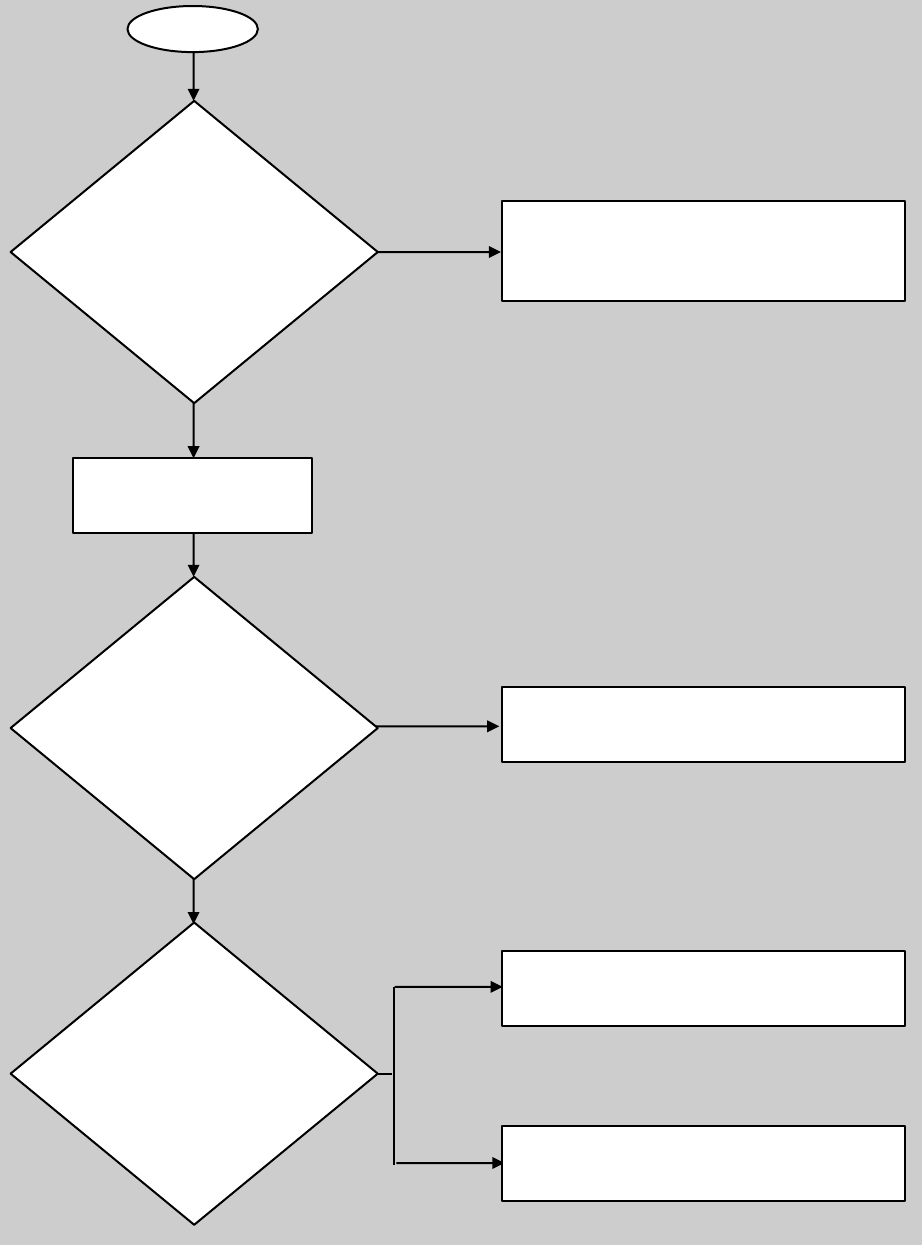
8 Licenses of intellectual property
Financial reporting developments Revenue from contracts with customers (ASC 606) | 328
The nature of the entity’s promise is to provide
the customer with a right to access the entity’s
intellectual property. (paragraph 606-10-55-62)
The nature of the entity’s promise is to provide
the customer with a right to use the entity’s
intellectual property. (paragraph 606-10-55-62)
The nature of the entity’s promise is to provide
the customer with a right to use the entity’s
intellectual property. (paragraph 606-10-55-62)
The intellectual property to which the customer has
rights is symbolic. The nature of the entity’s promise is
to provide the customer with a right to access the entity’s
intellectual property. (paragraph 606-10-55-60)
No
No
No
Yes
Start
Is the functionality of
the intellectual property
expected to substantively change
during the license period as a result of
activities of the entity that do not transfer
a good of service to the customer?
(paragraph 606-10-55-62(a))
Does the intellectual
property to which the customer
has rights have significant
standalone functionality?
(paragraph 606-10-55-59)
Is the customer contractually
or practically required to use the
updated intellectual property?
(paragraph 606-10-55-62(b))
The intellectual property to
which the customer has rights
is functional.
Yes
Yes

8 Licenses of intellectual property
Financial reporting developments Revenue from contracts with customers (ASC 606) | 329
8.2.4 Applying the licenses guidance to a bundled performance obligation that
includes a license of intellectual property
If an entity is required to bundle a license of intellectual property with other promised goods and services
in a contract, it needs to consider the licenses guidance to determine the nature of its promise to the
customer as follows:
Excerpt from Accounting Standards Codification
Revenue from Contracts with Customers — Overall
Implementation Guidance and Illustrations
Licensing
606-10-55-57
When a single performance obligation includes a license (or licenses) of intellectual property and one
or more other goods or services, the entity considers the nature of the combined good or service for
which the customer has contracted (including whether the license that is part of the single performance
obligation provides the customer with a right to use or a right to access intellectual property in
accordance with paragraphs 606-10-55-59 through 55-60 and 606-10-55-62 through 55-64A) in
determining whether that combined good or service is satisfied over time or at a point in time in
accordance with paragraphs 606-10-25-23 through 25-30 and, if over time, in selecting an appropriate
method for measuring progress in accordance with paragraphs 606-10-25-31 through 25-37.
As stated above in the standard, entities need to consider the licenses guidance when (1) determining
whether the overall promise is satisfied over time or at a point in time and (2) selecting an appropriate
method for measuring progress of that performance obligation if it is satisfied over time. Considering the
nature of an entity’s promise in granting a license that is part of a combined performance obligation is
not a separate step or evaluation in the revenue model. Rather, it is part of the overall requirement in
Step 5 to determine the nature of a combined performance obligation in order to determine whether that
performance obligation is satisfied over time or at a point in time and measure progress toward the
satisfaction of the combined performance obligation if it is satisfied over time.
The Board explained in the Basis for Conclusions of ASU 2016-10
244
that, in some instances, not
considering the nature of the entity’s promise in granting a license that is bundled with other promised
goods or services in the contract would result in accounting that does not best reflect the entity’s
performance. For example, it would be inappropriate for an entity that grants a 10-year license to access
the entity’s intellectual property that is not distinct from a promise to provide a one-year service to
conclude that the bundled performance obligation is satisfied over the one-year service period. This is
because the promise to grant the license would have been satisfied over the 10-year license term if it had
been a separate performance obligation.
The standard includes a number of examples that illustrate how an entity applies the licenses guidance to
help determine the nature of a combined performance obligation that includes a license of intellectual
property and other promised goods or services.
In Example 56, Case A (excerpted below), an entity licenses the patent rights for an approved drug
compound to its customer and also promises to manufacture the drug for the customer. The entity
considers that no other entity can perform the manufacturing service because of the highly specialized
nature of the manufacturing process. Therefore, the license cannot be purchased separately from the
manufacturing service, and the customer cannot benefit from the license on its own or with other readily
244
Paragraph BC66 of ASU 2016-10.

8 Licenses of intellectual property
Financial reporting developments Revenue from contracts with customers (ASC 606) | 330
available resources (i.e., the license and the manufacturing service are not capable of being distinct).
Accordingly, the entity’s promises to grant the license and to manufacture the drug are accounted for as
a single performance obligation satisfied over time as follows:
Excerpt from Accounting Standards Codification
Revenue from Contracts with Customers — Overall
Implementation Guidance and Illustrations
Example 56 — Identifying a Distinct License
606-10-55-367
An entity, a pharmaceutical company, licenses to a customer its patent rights to an approved drug
compound for 10 years and also promises to manufacture the drug for the customer for 5 years, while
the customer develops its own manufacturing capability. The drug is a mature product; therefore,
there is no expectation that the entity will undertake activities to change the drug (for example, to
alter its chemical composition). There are no other promised goods or services in the contract.
Case A — License is Not Distinct
606-10-55-368
In this case, no other entity can manufacture this drug while the customer learns the manufacturing
process and builds its own manufacturing capability because of the highly specialized nature of the
manufacturing process. As a result, the license cannot be purchased separately from the
manufacturing service.
606-10-55-369
The entity assesses the goods and services promised to the customer to determine which goods and
services are distinct in accordance with paragraph 606-10-25-19. The entity determines that the
customer cannot benefit from the license without the manufacturing service; therefore, the criterion in
paragraph 606-10-25-19(a) is not met. Consequently, the license and the manufacturing service are
not distinct, and the entity accounts for the license and the manufacturing service as a single
performance obligation.
606-10-55-370
The nature of the combined good or service for which the customer contracted is a sole sourced
supply of the drug for the first five years; the customer benefits from the license only as a result of
having access to a supply of the drug. After the first five years, the customer retains solely the right to
use the entity’s functional intellectual property (see Case B, paragraph 606-10-55-373), and no
further performance is required of the entity during Years 6–10. The entity applies paragraphs 606-
10-25-23 through 25-30 to determine whether the single performance obligation (that is, the bundle
of the license and the manufacturing service) is a performance obligation satisfied at a point in time or
over time. Regardless of the determination reached in accordance with paragraphs 606-10-25-23
through 25-30, the entity’s performance under the contract will be complete at the end of Year 5.
This example (Example 56, Case A) illustrates the importance of applying the licenses guidance when
determining the nature of an entity’s promise in granting a license that is combined into a single
performance obligation with other promised goods or services. That is because the conclusion of whether
a non-distinct license provides the customer with a right to use intellectual property or a right to access
intellectual property may have a significant effect on the timing of revenue recognition for a combined
performance obligation. The FASB explained in the Basis for Conclusions of ASU 2016-10
245
that in this
245
Paragraph BC68(b) of ASU 2016-10.

8 Licenses of intellectual property
Financial reporting developments Revenue from contracts with customers (ASC 606) | 331
example, the entity needs to determine the nature of its promise in granting the license within the single
license/manufacturing service performance obligation to appropriately apply the general principle of
recognizing revenue when (or as) it satisfies its performance obligation to the customer. Because the
license in this example provides a right to use the entity’s intellectual property (i.e., the drug patent is
functional intellectual property) that on its own would be recognized at the point in time in which control
of the license is transferred to the customer, the combined performance obligation is fully satisfied at the
end of the fifth year when the manufacturing service is complete. In contrast, if the license provided a
right to access the entity’s intellectual property, the combined performance obligation would not be fully
satisfied until the end of the 10-year license period, which would likely extend the period of revenue
recognition beyond the date when the manufacturing service is complete.
8.3 Transfer of control of licensed intellectual property
When determining whether a license of intellectual property transfers to a customer (and revenue is
recognized) over time or at a point in time, the standard states that an entity provides a customer with either:
• A right to access the entity’s intellectual property throughout the license period (i.e., symbolic
intellectual property and functional intellectual property that meets the criteria in ASC 606-10-55-
62(a) and (b)) for which revenue is recognized over the license period
• A right to use the entity’s intellectual property as it exists at the point in time the license is granted
(i.e., functional intellectual property that doesn’t meet the criteria in ASC 606-10-55-62(a) and (b))
for which revenue is recognized at the point in time the customer can first use and benefit from the
licensed intellectual property
The standard provides the following guidance on the timing of revenue recognition for right-to-access
and right-to-use licenses:
Excerpt from Accounting Standards Codification
Revenue from Contracts with Customers — Overall
Implementation Guidance and Illustrations
Licensing
606-10-55-58
In evaluating whether a license transfers to a customer at a point in time or over time, an entity should
consider whether the nature of the entity’s promise in granting the license to a customer is to provide
the customer with either:
a. A right to access the entity’s intellectual property throughout the license period (or its remaining
economic life, if shorter)
b. A right to use the entity’s intellectual property as it exists at the point in time at which the license
is granted.
606-10-55-58A
An entity should account for a promise to provide a customer with a right to access the entity’s
intellectual property as a performance obligation satisfied over time because the customer will
simultaneously receive and consume the benefit from the entity’s performance of providing access to
its intellectual property as the performance occurs (see paragraph 606-10-25-27(a)). An entity should
apply paragraphs 606-10-25-31 through 25-37 to select an appropriate method to measure its progress
toward complete satisfaction of that performance obligation to provide access to its intellectual property.

8 Licenses of intellectual property
Financial reporting developments Revenue from contracts with customers (ASC 606) | 332
606-10-55-58B
An entity’s promise to provide a customer with the right to use its intellectual property is satisfied at a
point in time. The entity should apply paragraph 606-10-25-30 to determine the point in time at which
the license transfers to the customer.
606-10-55-58C
Notwithstanding paragraphs 606-10-55-58A through 55-58B, revenue cannot be recognized from a
license of intellectual property before both:
a. An entity provides (or otherwise makes available) a copy of the intellectual property to the customer.
b. The beginning of the period during which the customer is able to use and benefit from its right to
access or its right to use the intellectual property. That is, an entity would not recognize revenue
before the beginning of the license period even if the entity provides (or otherwise makes
available) a copy of the intellectual property before the start of the license period or the customer
has a copy of the intellectual property from another transaction. For example, an entity would
recognize revenue from a license renewal no earlier than the beginning of the renewal period.
8.3.1 Right to access
The Board concluded that a license that provides an entity with the right to access intellectual property is
satisfied over time because the customer simultaneously receives and consumes the benefit from the entity’s
performance of providing access and the related activities undertaken by the entity. This conclusion is based
on the determination that when a license of intellectual property is subject to change, and the customer
is exposed to the positive or negative effects of that change, the customer is not able to fully gain control
over the license of intellectual property at any given point in time and instead gains control over the
license period. Symbolic intellectual property and functional intellectual property that meet the criteria in
ASC 606-10-55-62(a) and (b) both provide a customer with a right-to-access license that is satisfied over
time. Entities need to apply the general Step 5 guidance in ASC 606-10-25-31 through 25-37 to determine
the appropriate method to measure progress (see section 7.1.4) in addition to ASC 606-10—55-58C
(i.e., the use and benefit requirement, which is discussed below in section 8.3.3). While an entity should
not default to a straight-line revenue attribution model when performing this analysis, the customer may
often receive and consume the benefits of a right-to-access license evenly over the contract period, and,
therefore, a time-based measure of progress that results in a straight-line recognition of revenue would
be appropriate.
Question 8-4 Is a license that provides a right to access intellectual property a series of distinct goods or services
that should be accounted for as a single performance obligation?
The FASB noted in the Basis for Conclusions of ASU 2016-10
246
that many licenses that provide a right
to access intellectual property may be a series of distinct goods or services that are substantially the
same and have the same pattern of transfer to the customer (e.g., a series of distinct periods of access
to intellectual property such as monthly access or quarterly access). Step 2 of the model requires an
entity to identify the performance obligations in a contract. This includes determining whether multiple
distinct goods or services should be accounted for as a single performance obligation under the series
provision (see section 4.2.2).
246
Paragraph BC72 of ASU 2016-10.

8 Licenses of intellectual property
Financial reporting developments Revenue from contracts with customers (ASC 606) | 333
A TRG agenda paper
247
included an example of a license that provides a right to access intellectual property
that is accounted for as a series of distinct goods or services. In the example, a franchisor grants a license
of intellectual property to a franchisee, allowing the franchisee to use its trade name and sell its product for
a period of 10 years. As discussed in Question 4-12 in section 4.2.2, if the nature of an entity’s promise is
to provide a single service for a period of time, the evaluation of whether goods or services are distinct and
substantially the same should consider whether each time increment of access to the intellectual property
(e.g., hour, day) is distinct and substantially the same. In this example, the nature of the franchisor’s
promise is to provide a right to access the intellectual property throughout the license period. Each time
increment is distinct because the customer benefits from the right to access each day on its own (i.e., each
time increment is capable of being distinct), and each day of access is separately identifiable because there
is no integration service provided between the days of access provided, no day modifies or customizes
another, and the days of access are not highly interdependent or highly interrelated (i.e., each time
increment is distinct in the context of the contract). In addition, each distinct daily service is substantially
the same because the customer receives access to the intellectual property each day.
If a license meets the criteria to be accounted for as a series of distinct goods or services, an entity needs
to consider whether any variable consideration in the contract (e.g., royalties, milestone payments)
should be allocated to the distinct periods of access if certain allocation criteria are met. See section 6.3
for a discussion of the variable consideration allocation criteria and section 8.5 for a discussion of the
accounting for sales- or usage-based royalties.
8.3.2 Right to use
The Board concluded that for a license that represents a right to use the intellectual property as it exists
at a specific point in time, the customer gains control over that intellectual property at the beginning of
the period for which it has the right to use the intellectual property. Functional intellectual property that
doesn’t meet the criteria in ASC 606-10-55-62(a) and (b) provides a customer with a right-to-use license
that is satisfied at a point in time. Entities should apply the general Step 5 guidance in ASC 606-10-25-30 to
determine the point in time that control of the license transfers to the customer (see section 7.2) in addition
to ASC 606-10-55-58C (i.e., the use and benefit requirement, which is discussed below in section 8.3.3).
8.3.3 Use and benefit requirement
ASC 606-10-55-58C states that revenue from a license of intellectual property may not be recognized before
the customer has (1) access to the intellectual property and (2) the right to use and benefit from the
intellectual property. The FASB explained in the Basis for Conclusions of ASU 2014-09
248
that control of a
license cannot transfer before the beginning of the period that the customer can use and benefit from the
licensed property. As explained in ASC 606-10-55-58C(b), an entity would not recognize revenue before
the beginning of the license period, even if it previously provides (or otherwise makes available) a copy of
the intellectual property or the customer has a copy of the intellectual property from another transaction.
Therefore, if an entity executes a contract and makes the intellectual property available to a customer prior to
the start of the license period, it would have to wait to recognize revenue until it completes performance by
granting to the customer the right to use and benefit from the license on the start date of the license period.
Consider an example where an entity provides a customer with a right to use intellectual property but
indicates that the right to use does not start until 30 days after the agreement is finalized. In this
example, the entity likely would conclude that control of the license does not transfer until 30 days after
the agreement is finalized because that is when the customer has both access and the right to use and
benefit from the intellectual property.
247
13 July 2015 FASB TRG meeting, agenda paper no. 39; FASB staff Q&As, question 18.
248
Paragraph BC414 of ASU 2014-09.

8 Licenses of intellectual property
Financial reporting developments Revenue from contracts with customers (ASC 606) | 334
8.4 License renewals
In accordance with ASC 606-10-55-58C, revenue related to the renewal of a license of intellectual property
may not be recognized prior to the beginning of the renewal period. The FASB explained in the Basis for
Conclusions of ASU 2016-10
249
that when two parties enter into a contract to renew (or extend the term of)
a license, the renewal contract should not be combined with the original license contract unless the criteria in
ASC 606-10-25-9 for combining contracts are met (see section 3.3). Therefore, the additional right granted
by a renewal (e.g., the right to use the intellectual property for three additional years) should be evaluated in
the same manner as any other additional rights that are granted to the customer after the initial contract.
That is, the Board determined that a renewal license is subject to the same revenue recognition requirements
as any other license that grants rights to the customer, and an entity should not recognize revenue from the
transfer of a license before the customer can begin to use and benefit from it. A customer typically can begin
to use and benefit from a renewed license only at the beginning of the license renewal period. This is true even
if the entity provides a copy of the intellectual property in advance of the renewal period or the customer has
a copy of the intellectual property from another transaction.
Example 59 in the standard illustrates when to recognize revenue for a right-to-use license of functional
intellectual property and a subsequent renewal of the license:
Excerpt from Accounting Standards Codification
Revenue from Contracts with Customers — Overall
Implementation Guidance and Illustrations
Example 59 — Right to Use Intellectual Property
Case A — Initial License
606-10-55-389
An entity, a music record label, licenses to a customer a recording of a classical symphony by a noted
orchestra. The customer, a consumer products company, has the right to use the recorded symphony
in all commercials, including television, radio, and online advertisements for two years in Country A
starting on January 1, 20X1. In exchange for providing the license, the entity receives fixed
consideration of $10,000 per month. The contract does not include any other goods or services to be
provided by the entity. The contract is noncancellable.
606-10-55-390
The entity assesses the goods and services promised to the customer to determine which goods and
services are distinct in accordance with paragraph 606-10-25-19. The entity concludes that its only
performance obligation is to grant the license. The term of the license (two years), the geographical
scope of the license (that is, the customer’s right to use the symphony only in Country A), and the
defined permitted uses for the recording (that is, use in commercials) are all attributes of the promised
license in this contract.
606-10-55-391
In determining that the promised license provides the customer with a right to use its intellectual
property as it exists at the point in time at which the license is granted, the entity considers the following:
a. The classical symphony recording has significant standalone functionality because the recording
can be played in its present, completed form without the entity’s further involvement. The
customer can derive substantial benefit from that functionality regardless of the entity’s further
activities or actions. Therefore, the nature of the licensed intellectual property is functional.
b. The contract does not require, and the customer does not reasonably expect, that the entity will
undertake activities to change the licensed recording.
249
Paragraph BC50(a) of ASU 2016-10.

8 Licenses of intellectual property
Financial reporting developments Revenue from contracts with customers (ASC 606) | 335
Therefore, the criteria in paragraph 606-10-55-62 are not met.
606-10-55-392
In accordance with paragraph 606-10-55-58B, the promised license, which provides the customer
with a right to use the entity’s intellectual property, is a performance obligation satisfied at a point in
time. The entity recognizes revenue from the satisfaction of that performance obligation in
accordance with paragraphs 606-10-55-58B through 55-58C. Additionally, because of the length of
time between the entity’s performance (at the beginning of the period) and the customer’s monthly
payments over two years (which are noncancellable), the entity considers the guidance in paragraphs
606-10-32-15 through 32-20 to determine whether a significant financing component exists.
Case B — Renewal of the License
606-10-55-392A
At the end of the first year of the license period, on December 31, 20X1, the entity and the customer
agree to renew the license to the recorded symphony for two additional years, subject to the same
terms and conditions as the original license. The entity will continue to receive fixed consideration of
$10,000 per month during the 2-year renewal period.
606-10-55-392B
The entity considers the contract combination guidance in paragraph 606-10-25-9 and assesses that
the renewal was not entered into at or near the same time as the original license and, therefore, is not
combined with the initial contract. The entity evaluates whether the renewal should be treated as a
new license or the modification of an existing license. Assume that in this scenario, the renewal is
distinct. If the price for the renewal reflects its standalone selling price, the entity will, in accordance
with paragraph 606-10-25-12, account for the renewal as a separate contract with the customer.
Alternatively, if the price for the renewal does not reflect the standalone selling price of the renewal,
the entity will account for the renewal as a modification of the original license contract.
606-10-55-392C
In determining when to recognize revenue attributable to the license renewal, the entity considers the
guidance in paragraph 606-10-55-58C and determines that the customer cannot use and benefit from
the license before the beginning of the two-year renewal period on January 1, 20X3. Therefore,
revenue for the renewal cannot be recognized before that date.
606-10-55-392D
Consistent with Case A, because the customer’s additional monthly payments for the modification to
the license will be made over two years from the date the customer obtains control of the second
license, the entity considers the guidance in paragraphs 606-10-32-15 through 32-20 to determine
whether a significant financing component exists.
Question 8-5 How should entities account for modifications and other changes to licenses of intellectual property?
See response to Question 8-1 in section 8.1.4.
Question 8-6 How should entities account for an option to revoke licensing rights?
See response to Question 8-2 in section 8.1.4.

8 Licenses of intellectual property
Financial reporting developments Revenue from contracts with customers (ASC 606) | 336
8.5 Sales- or usage-based royalties on licenses of intellectual property (updated
September 2023)
The standard provides the following guidance on the recognition of revenue for sales- or usage-based
royalties on licenses of intellectual property that differs from the guidance that applies to other revenue
from licenses:
Excerpt from Accounting Standards Codification
Revenue from Contracts with Customers — Overall
Implementation Guidance and Illustrations
Licensing
Sales-Based or Usage-Based Royalties
606-10-55-65
Notwithstanding the guidance in paragraphs 606-10-32-11 through 32-14, an entity should recognize
revenue for a sales-based or usage-based royalty promised in exchange for a license of intellectual
property only when (or as) the later of the following events occurs:
a. The subsequent sale or usage occurs.
b. The performance obligation to which some or all of the sales-based or usage-based royalty has
been allocated has been satisfied (or partially satisfied).
606-10-55-65A
The guidance for a sales-based or usage-based royalty in paragraph 606-10-55-65 applies when the
royalty relates only to a license of intellectual property or when a license of intellectual property is the
predominant item to which the royalty relates (for example, the license of intellectual property may be
the predominant item to which the royalty relates when the entity has a reasonable expectation that
the customer would ascribe significantly more value to the license than to the other goods or services
to which the royalty relates).
606-10-55-65B
When the guidance in paragraph 606-10-55-65A is met, revenue from a sales-based or usage-based
royalty should be recognized wholly in accordance with the guidance in paragraph 606-10-55-65.
When the guidance in paragraph 606-10-55-65A is not met, the guidance on variable consideration in
paragraphs 606-10-32-5 through 32-14 applies to the sales-based or usage-based royalty.
ASC 606-10-55-65 says that royalties received in exchange for licenses of intellectual property are
recognized at the later of when (1) the subsequent sale or usage occurs or (2) the performance obligation
to which some or all of the sales- or usage-based royalty has been allocated is satisfied (in whole or in
part). That is, an entity recognizes the royalties as revenue when (or as) the customer’s subsequent sales
or usage occurs, unless that recognition pattern accelerates revenue recognition ahead of the entity’s
satisfaction of the performance obligation to which the royalty solely or partially relates based on an
appropriate measure of progress (see section 7.1.4).
The Board explained in the Basis for Conclusions of ASU 2016-10
250
that for a license of intellectual
property for which the consideration is based on the customer’s subsequent sales or usage, an entity
should not recognize any revenue for the variable amounts until the uncertainty is resolved (i.e., when a
customer’s subsequent sales or usage occurs).
250
Paragraph BC70 of ASU 2016-10.

8 Licenses of intellectual property
Financial reporting developments Revenue from contracts with customers (ASC 606) | 337
The FASB also explained in the Basis for Conclusions of ASU 2016-10
251
that the guidance in ASC 606-
10-55-65 through 55-65B addresses the recognition of sales-based or usage-based royalties received in
exchange for a license of intellectual property, rather than when such amounts are included in the
transaction price of the contract. As a result, this exception is a recognition constraint, and the
constraint on variable consideration (see section 5.2.3) does not apply.
The Board said
252
it added the royalty recognition constraint because both users and preparers of
financial statements indicated that it would not be useful for entities to recognize a constrained amount
of revenue for sales- or usage-based royalties received in exchange for licenses of intellectual property
(following the guidance in the general model on estimating the transaction price). This is because those
revenue amounts would be subject to frequent adjustments throughout the life of the contract as a result
of changes in circumstances that are not related to the entity’s performance. The Board observed that
this would not result in relevant information, especially for contracts in which the sales- or usage-based
royalties are paid over a long period of time.
In some contracts, a sales- or usage-based royalty may be related to both a license of intellectual
property and another good or service that may or may not be distinct. ASC 606-10-55-65A requires that
the royalty recognition constraint be applied to the overall royalty stream when the sole or predominant
item to which the royalty relates is a license of intellectual property (including when no single license of
intellectual property is the predominant item to which the royalty relates, but the royalty predominantly
relates to two or more licenses of intellectual property in the contract
253
). The standard does not provide
a bright line for determining the “predominant” item in a contract that includes a license of intellectual
property. The Board acknowledged in the Basis for Conclusions of ASU 2016-10
254
that significant
judgment may be required to determine when a license is the predominant item to which a royalty
relates. However, it said that applying the general variable consideration guidance to such contracts
would likely be more complex and require more judgment than determining whether a license is the
predominant item. Refer to Question 8-16 below for additional considerations.
It is important to note that the guidance in ASC 606-10-55-65 through 55-65B applies only to licenses of
intellectual property for which some or all of the consideration is in the form of a sales- or usage-based
royalty. The Board said in the Basis for Conclusions of ASU 2014-09
255
that because the royalty
recognition constraint was structured to apply only to a particular type of transaction (i.e., a license of
intellectual property), other transactions that may be economically similar would be accounted for
differently. That is, entities cannot analogize to the royalty recognition constraint for other situations.
For example, it cannot be applied if consideration in a contract is in the form of a sales- or usage-based
royalty but there is no license of intellectual property or if a license of intellectual property to which the
sales- or usage-based royalty relates is not the predominant item in the contract (e.g., the sale of a
tangible good that includes a significant amount of intellectual property). If the royalty recognition
constraint cannot be applied, an entity would follow the guidance in the general model on estimating
variable consideration and applying the constraint on variable consideration (see section 5.2).
251
Paragraph BC71 of ASU 2016-10.
252
Paragraph BC73 of ASU 2016-10.
253
Paragraph BC75(b) of ASU 2016-10.
254
Paragraph BC77 of ASU 2016-10.
255
Paragraph BC416 of ASU 2014-09.
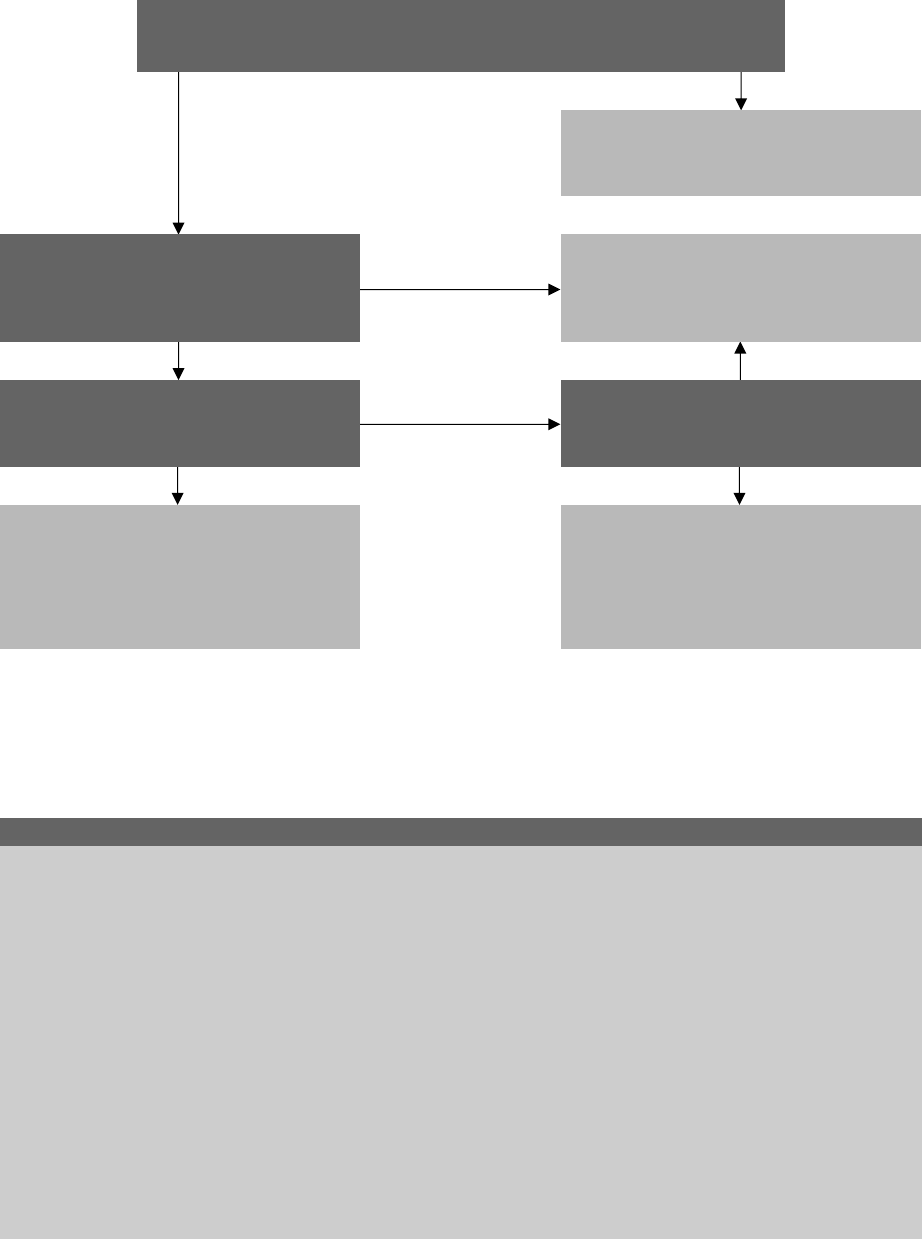
8 Licenses of intellectual property
Financial reporting developments Revenue from contracts with customers (ASC 606) | 338
The following flowchart summarizes the evaluation to determine whether the royalty recognition
constraint should be applied to a royalty stream:
* This includes situations in which no single license is the predominant item to which the sales- or usage-based royalty relates, but
the sales- or usage-based royalty predominantly relates to two or more licenses in the contract.
The standard provides the following example of a contract that includes two performance obligations,
including a license of symbolic intellectual property, and consideration in the form of sales-based royalties.
In the example, the license is determined to be the predominant item to which the royalty relates:
Excerpt from Accounting Standards Codification
Revenue from Contracts with Customers — Overall
Implementation Guidance and Illustrations
Example 60 — Sales-Based Royalty Promised in Exchange for a License of Intellectual Property and
Other Goods and Services
606-10-55-393
An entity, a movie distribution company, licenses Movie XYZ to a customer. The customer, an
operator of cinemas, has the right to show the movie in its cinemas for six weeks. Additionally, the
entity has agreed to provide memorabilia from the filming to the customer for display at the
customer’s cinemas before the beginning of the six-week airing period and to sponsor radio
advertisements for Movie XYZ on popular radio stations in the customer’s geographical area
throughout the six-week airing period. In exchange for providing the license and the additional
promotional goods and services, the entity will receive a portion of the operator’s ticket sales for
Movie XYZ (that is, variable consideration in the form of a sales-based royalty).
No
Yes
No
Yes
No
Yes
No
Yes
Royalty recognition constraint
guidance does not apply.
Royalty recognition constraint guidance does
not apply. The variable consideration guidance
in ASC 606-10-32-5 through 32-14 must
be applied (see section 5.2).
Is the sales- or usage-based royalty promised in
exchange for a license of intellectual property?
Is the license of intellectual property
the predominant item to which the sales- or
usage-based royalty relates?*
Is the license of intellectual property
the only item to which the sales- or
usage-based royalty relates?
Royalty recognition constraint guidance applies.
Royalty recognition constraint guidance applies.
Does the consideration in the contract include a sales- or usage-based royalty?

8 Licenses of intellectual property
Financial reporting developments Revenue from contracts with customers (ASC 606) | 339
606-10-55-394
The entity concludes that the license to show Movie XYZ is the predominant item to which the sales-
based royalty relates because the entity has a reasonable expectation that the customer would ascribe
significantly more value to the license than to the related promotional goods or services. The entity
will recognize revenue from the sales-based royalty, the only fees to which the entity is entitled under
the contract, wholly in accordance with paragraph 606-10-55-65. If the license, the memorabilia, and
the advertising activities were separate performance obligations, the entity would allocate the sales-
based royalties to each performance obligation.
As illustrated in this example, ASC 606-10-55-65B states that when the criteria for applying the royalty
recognition constraint are met, the royalty stream should be accounted for entirely under the royalty
recognition constraint guidance. That is, an entity should not split a single royalty and apply the royalty
recognition constraint to a portion of it and the general variable consideration constraint (see section 5.2.3)
to the other portion. The Board concluded in the Basis for Conclusions of ASU 2016-10
256
that accounting
for a single royalty in accordance with two different constraint models (i.e., splitting a royalty) would
have been more complex for preparers while not providing more useful information for financial statement
users. This is because using an approach that accounts for a single royalty using two different constraint
models would result in amounts being recognized at contract inception that do not reflect the amount to
which the entity expects to be entitled to for its performance or amounts that the entity has become legally
entitled to during the period.
As discussed in the Basis for Conclusions of ASU 2016-10,
257
regardless of whether an entity applies the
royalty recognition constraint or the general constraint on variable consideration, it is still required to
allocate sales- or usage-based royalties to separate performance obligations in a contract (as noted in
Example 60 above). To perform such an allocation, an entity may need to include expected royalties in its
estimate of the standalone selling price of one or more of the performance obligations. The following
example from the standard also illustrates the allocation of the transaction price (including sales- or
usage-based royalties) to the performance obligations in the contract:
Excerpt from Accounting Standards Codification
Revenue from Contracts with Customers — Overall
Implementation Guidance and Illustrations
Example 35 — Allocation of Variable Consideration
606-10-55-270
An entity enters into a contract with a customer for two intellectual property licenses (Licenses X and Y),
which the entity determines to represent two performance obligations each satisfied at a point in time.
The standalone selling prices of Licenses X and Y are $800 and $1,000, respectively.
Case A — Variable Consideration Allocated Entirely to One Performance Obligation
606-10-55-271
The price stated in the contract for License X is a fixed amount of $800, and for License Y the
consideration is 3 percent of the customer’s future sales of products that use License Y. For purposes
of allocation, the entity estimates its sales-based royalties (that is, the variable consideration) to be
$1,000, in accordance with paragraph 606-10-32-8.
256
Paragraph BC76 of ASU 2016-10.
257
Paragraph BC75(a) of ASU 2016-10.

8 Licenses of intellectual property
Financial reporting developments Revenue from contracts with customers (ASC 606) | 340
606-10-55-272
To allocate the transaction price, the entity considers the criteria in paragraph 606-10-32-40 and
concludes that the variable consideration (that is, the sales-based royalties) should be allocated
entirely to License Y. The entity concludes that the criteria in paragraph 606-10-32-40 are met for the
following reasons:
a. The variable payment relates specifically to an outcome from the performance obligation to
transfer License Y (that is, the customer’s subsequent sales of products that use License Y).
b. Allocating the expected royalty amounts of $1,000 entirely to License Y is consistent with the
allocation objective in paragraph 606-10-32-28. This is because the entity’s estimate of the
amount of sales-based royalties ($1,000) approximates the standalone selling price of License Y
and the fixed amount of $800 approximates the standalone selling price of License X. The entity
allocates $800 to License X in accordance with paragraph 606-10-32-41. This is because, based
on an assessment of the facts and circumstances relating to both licenses, allocating to License Y
some of the fixed consideration in addition to all of the variable consideration would not meet the
allocation objective in paragraph 606-10-32-28.
606-10-55-273
The entity transfers License Y at inception of the contract and transfers License X one month later. Upon
the transfer of License Y, the entity does not recognize revenue because the consideration allocated to
License Y is in the form of a sales-based royalty. Therefore, in accordance with paragraph 606-10-55-65,
the entity recognizes revenue for the sales-based royalty when those subsequent sales occur.
606-10-55-274
When License X is transferred, the entity recognizes as revenue the $800 allocated to License X.
Case B — Variable Consideration Allocated on the Basis of Standalone Selling Prices
606-10-55-275
The price stated in the contract for License X is a fixed amount of $300, and for License Y the
consideration is 5 percent of the customer’s future sales of products that use License Y. The entity’s
estimate of the sales-based royalties (that is, the variable consideration) is $1,500 in accordance with
paragraph 606-10-32-8.
606-10-55-276
To allocate the transaction price, the entity applies the criteria in paragraph 606-10-32-40 to determine
whether to allocate the variable consideration (that is, the sales-based royalties) entirely to License Y. In
applying the criteria, the entity concludes that even though the variable payments relate specifically to
an outcome from the performance obligation to transfer License Y (that is, the customer’s subsequent
sales of products that use License Y), allocating the variable consideration entirely to License Y would be
inconsistent with the principle for allocating the transaction price. Allocating $300 to License X and
$1,500 to License Y does not reflect a reasonable allocation of the transaction price on the basis of the
standalone selling prices of Licenses X and Y of $800 and $1,000, respectively. Consequently, the entity
applies the general allocation requirements in paragraphs 606-10-32-31 through 32-35.
606-10-55-277
The entity allocates the transaction price of $300 to Licenses X and Y on the basis of relative
standalone selling prices of $800 and $1,000, respectively. The entity also allocates the consideration
related to the sales-based royalty on a relative standalone selling price basis. However, in accordance
with paragraph 606-10-55-65, when an entity licenses intellectual property in which the consideration is
in the form of a sales-based royalty, the entity cannot recognize revenue until the later of the following
events: the subsequent sales occur or the performance obligation is satisfied (or partially satisfied).

8 Licenses of intellectual property
Financial reporting developments Revenue from contracts with customers (ASC 606) | 341
606-10-55-278
License Y is transferred to the customer at the inception of the contract, and License X is transferred
three months later. When License Y is transferred, the entity recognizes as revenue the $167
($1,000 ÷ $1,800 × $300) allocated to License Y. When License X is transferred, the entity
recognizes as revenue the $133 ($800 ÷ $1,800 × $300) allocated to License X.
606-10-55-279
In the first month, the royalty due from the customer’s first month of sales is $200. Consequently, in
accordance with paragraph 606-10-55-65, the entity recognizes as revenue the $111 ($1,000 ÷ $1,800
× $200) allocated to License Y (which has been transferred to the customer and is therefore a satisfied
performance obligation). The entity recognizes a contract liability for the $89 ($800 ÷ $1,800 × $200)
allocated to License X. This is because although the subsequent sale by the entity’s customer has occurred,
the performance obligation to which the royalty has been allocated has not been satisfied.
Recognition of royalties for a license that provides a right to access intellectual property
The FASB explained in the Basis for Conclusions of ASU 2016-10
258
that the royalty recognition constraint
is intended to align the recognition of the royalties with the standard’s key principle that revenue should
be recognized only when (or as) an entity satisfies a performance obligation. As discussed above,
ASC 606-10-55-65 says that sales- or usage-based royalties received in exchange for licenses of intellectual
property are recognized at the later of when (1) the subsequent sale or usage occurs or (2) the performance
obligation to which some or all of the sales- or usage-based royalty has been allocated is satisfied (in whole
or in part). That is, an entity recognizes the royalties as revenue when (or as) the customer’s subsequent
sales or usage occurs, unless that recognition pattern accelerates revenue recognition ahead of the entity’s
satisfaction of the performance obligation to which the royalty solely or partially relates based on an
appropriate measure of progress (see section 7.1.4).
The Board provided the following example
259
of when revenue recognition may be inappropriately
accelerated ahead of an entity’s performance if revenue was recognized under ASC 606-10-55-65(a) for
a right-to-access license:
Example of a licensing contract with a declining royalty rate
A contract provides a customer with the right to access an entity’s intellectual property, and the entity
receives royalties of 8% on total sales up to $1 million, 4% on the next $3 million in sales and 2% on all
sales above $4 million. The declining royalty rate does not reflect changing value to the customer.
In this example, the FASB noted that recognizing royalties as they are due (i.e., according to the
contractual formula) would not be aligned with the principle of recognizing revenue only when (or as)
an entity satisfies a performance obligation because the right to access the intellectual property is
provided evenly over the license term while the declining royalty rate does not reflect the value to the
customer. However, the FASB stated that the existence of a declining royalty rate in a contract does
not always mean that recognizing revenue for sales- or usage-based royalties as the customer’s
underlying sales or usage occurs is inappropriate. In fact, it would be appropriate if the declining
royalty rate reflects the changing value to the customer.
258
Paragraph BC71 of ASU 2016-10.
259
Paragraph BC71 of ASU 2016-10.

8 Licenses of intellectual property
Financial reporting developments Revenue from contracts with customers (ASC 606) | 342
The above example notwithstanding, for many contracts with licenses that provide a right to access an
entity’s intellectual property, applying the royalty recognition constraint guidance results in an entity
recognizing revenue from sales- or usage-based royalties as the customer’s underlying sales or usage occurs
in accordance with ASC 606-10-55-65(a). As described in the Basis for Conclusions of ASU 2016-10,
260
this is because an output-based measure of progress that is the same as, or similar to, the application of
the practical expedient in ASC 606-10-55-18 (i.e., when the right to consideration corresponds directly
with the value to the customer of the entity’s performance to date) is appropriate because the entity’s
right to consideration (i.e., the sales- or usage-based royalties earned) often corresponds directly with
the value to the customer of the entity’s performance completed to date. The practical expedient in
ASC 606-10-55-18 is discussed further in section 7.1.4.
An example of a contract for which an entity may be able to apply the practical expedient in ASC 606-10-
55-18 is one in which it earns $1 in royalties for each $10 in revenue that the customer generates from
using the licensed intellectual property.
In addition, the Board explained
261
that an output-based measure could also be appropriate for a license
that provides a right to access intellectual property in which the consideration is in the form of a fixed fee
and royalties. The following example from the standard illustrates this:
Excerpt from Accounting Standards Codification
Revenue from Contracts with Customers — Overall
Implementation Guidance and Illustrations
Example 61 — Access to Intellectual Property
606-10-55-395
An entity, a well-known sports team, licenses the use of its name and logo to a customer. The customer,
an apparel designer, has the right to use the sports team’s name and logo on items including t-shirts,
caps, mugs, and towels for one year. In exchange for providing the license, the entity will receive fixed
consideration of $2 million and a royalty of 5 percent of the sales price of any items using the team name
or logo. The customer expects that the entity will continue to play games and provide a competitive team.
606-10-55-396
The entity assesses the goods and services promised to the customer to determine which goods and
services are distinct in accordance with paragraph 606-10-25-19. The entity concludes that the only
good or service promised to the customer in the contract is the license. The additional activities
associated with the license (that is, continuing to play games and provide a competitive team) do not
directly transfer a good or service to the customer. Therefore, there is one performance obligation in
the contract.
606-10-55-397
To determine whether the entity’s promise in granting the license provides the customer with a right to
access the entity’s intellectual property or a right to use the entity’s intellectual property, the entity
assesses the nature of the intellectual property to which the customer obtains rights. The entity
concludes that the intellectual property to which the customer obtains rights is symbolic intellectual
property. The utility of the team name and logo to the customer is derived from the entity’s past and
ongoing activities of playing games and providing a competitive team (that is, those activities effectively
give value to the intellectual property). Absent those activities, the team name and logo would have
little or no utility to the customer because they have no standalone functionality (that is, no ability to
perform or fulfill a task separate from their role as symbols of the entity’s past and ongoing activities).
260
Paragraph BC72 of ASU 2016-10.
261
Paragraph BC72 of ASU 2016-10.

8 Licenses of intellectual property
Financial reporting developments Revenue from contracts with customers (ASC 606) | 343
606-10-55-398
Consequently, the entity’s promise in granting the license provides the customer with the right to
access the entity’s intellectual property throughout the license period and, in accordance with
paragraph 606-10-55-58A, the entity accounts for the promised license as a performance obligation
satisfied over time.
606-10-55-399
The entity recognizes the fixed consideration allocable to the license performance obligation in accordance
with paragraphs 606-10-55-58A and 606-10-55-58C. This includes applying paragraphs 606-10-25-31
through 25-37 to identify the method that best depicts the entity’s performance in satisfying the license.
For the consideration that is in the form of a sales-based royalty, paragraph 606-10-55-65 applies because
the sales-based royalty relates solely to the license that is the only performance obligation in the contract.
The entity concludes that recognizing revenue from the sales-based royalty when the customer’s
subsequent sales of items using the team name or logo occur is consistent with the guidance in paragraph
606-10-55-65(b). That is, the entity concludes that ratable recognition of the fixed consideration of
$2 million plus recognition of the royalty fees as the customer’s subsequent sales occur reasonably
depict the entity’s progress toward complete satisfaction of the license performance obligation.
In Example 61 above, the fixed consideration of $2 million is an explicit term in the contract with the
customer. In some contracts, fixed consideration may be implied, such as when a guaranteed minimum
amount of royalties is part of the transaction price.
In addition, as discussed in Question 8-4 in section 8.3.1, the FASB noted
262
that many licenses that provide a
right to access intellectual property may constitute a series of distinct goods or services that are substantially
the same and have the same pattern of transfer to the customer (e.g., a series of distinct periods of access
to intellectual property such as monthly access or quarterly access). In cases where the criteria for a
performance obligation to be accounted for as a series of distinct goods or services have been met, an
entity needs to consider whether any variable consideration in the contract (e.g., sales- or usage-based
royalties) should be allocated directly to the distinct periods of access if certain allocation criteria are met.
The FASB also noted that the allocation of sales- or usage-based royalties in this manner generally results
in the recognition of royalties as revenue when (or as) the customer’s underlying sales or usage occurs.
An entity may need to apply significant judgment to determine the appropriate pattern of revenue
recognition for royalties received for a license that provides a right to access intellectual property.
Question 8-7 Can the recognition constraint for sales- or usage-based royalties be applied to royalties that are paid
in consideration for sales of intellectual property (rather than just licenses of intellectual property)?
No. As noted in the Basis for Conclusions of ASU 2016-10,
263
the Board discussed but decided not to
expand the scope of the royalty recognition constraint to include sales of intellectual property.
The Board also concluded that entities should not attempt to determine whether a license of intellectual
property is “in-substance” a sale of intellectual property (i.e., a promise that is in the form of a license
but in substance has the characteristics of a sale) when determining whether the royalty recognition
constraint applies. The Board noted that there can be legal differences between a contract for a license
and a sale of intellectual property that may not be appropriate or feasible to ignore or attempt to
override from an accounting perspective. Therefore, entities should follow the legal form of a license of
intellectual property for purposes of applying the royalty recognition constraint.
262
Paragraph BC72 of ASU 2016-10.
263
Paragraph BC78(b) of ASU 2016-10.

8 Licenses of intellectual property
Financial reporting developments Revenue from contracts with customers (ASC 606) | 344
Question 8-8 If a contract for a license of intellectual property includes payments with fixed dollar amounts
(e.g., milestone payments) that are determined by reference to sales- or usage-based thresholds,
should the royalty recognition constraint be applied?
Yes, we generally believe the royalty recognition constraint should be applied to fixed dollar amounts of
variable consideration (i.e., fixed amounts of consideration that are contingent on the occurrence of a
future event), such as milestone payments, provided the amounts are determined by reference to sales-
or usage-based thresholds. This is the case even if those payments are not referred to as “royalties”
under the terms of the contract. However, entities need to apply judgment and carefully evaluate the
facts and circumstances of their contracts for licenses of intellectual property to determine whether
these types of payments should be accounted for using the royalty recognition constraint.
Consider the following example:
Illustration 8-2: Application of the royalty recognition constraint to a milestone payment
An entity enters into a contract to license functional intellectual property to a customer. The contract
contains payment terms that include a $10 million milestone payment that is payable to the entity once
the customer has reached $100 million of sales.
The entity determines that the milestone payment is based on the customer’s subsequent sales and
represents variable consideration because it is contingent on the customer’s sales reaching $100 million.
It accounts for the $10 million milestone payment in accordance with the royalty recognition constraint
and only recognizes revenue for the milestone payment once the customer’s sales reach $100 million.
Question 8-9 If a contract for a license of intellectual property includes a milestone payment based on the first
commercial sale, should the royalty recognition constraint be applied?
Yes, we generally believe it would be acceptable for an entity to apply the royalty recognition constraint
to a milestone payment that is contingent on the customer’s first commercial sale of a product using the
entity’s intellectual property. This is because the milestone payment is linked to a sales- or usage-based
threshold (i.e., the milestone payment is based on the customer’s sales).
Consider the following example:
Illustration 8-3: Application of the royalty recognition constraint to a milestone payment
based on the first commercial sale
An entity enters into a contract to license functional intellectual property to a customer. The contract
contains payment terms that include a $10 million milestone payment that is payable to the entity upon
the customer’s first commercial sale of a product that uses the entity’s intellectual property.
The entity determines that the milestone payment is based on the customer’s subsequent sales and
represents variable consideration because it is contingent on the customer’s first commercial sale. It
accounts for the $10 million milestone payment in accordance with the royalty recognition constraint
and only recognizes revenue for the milestone payment upon the customer’s first commercial sale.
In contrast, if a milestone payment is contingent on metrics that are not determined by reference to sales- or
usage-based thresholds and that are substantive (e.g., regulatory approval), the royalty recognition constraint
should not be applied because it is not linked to a sales-or usage-based threshold (i.e., the milestone payment
is not based on the customer’s sales). Rather, the general variable consideration guidance should be applied.
As discussed in Question 5-14, we expect entities to conclude in many instances that milestone payments
contingent on regulatory approval (e.g., FDA approval of a new drug) are constrained, preventing them
from recognizing these payments until the uncertainty associated with the payments is resolved.

8 Licenses of intellectual property
Financial reporting developments Revenue from contracts with customers (ASC 606) | 345
Question 8-10 Can an entity recognize revenue for sales- or usage-based royalties for licenses of intellectual
property on a lag if actual sales or usage data is not available at the end of a reporting period?
No. The standard states that sales- or usage-based royalties promised in exchange for licenses of
intellectual property should be recognized as revenue at the later of when the (1) subsequent sales or
usage occurs or (2) the performance obligation to which the sales- or usage-based royalties relates has
been satisfied (or partially satisfied). Therefore, after the conditions in the royalty recognition constraint
guidance have been met (i.e., the underlying sales or usage has occurred and the performance obligation
to which the royalties relate has been satisfied (or partially satisfied)), we believe that licensors without
actual sales or usage data from the licensee need to make an estimate of royalties earned in the current
reporting period.
The SEC’s former Chief Accountant noted in a speech
264
that because the FASB did not provide “a lagged
reporting exception” in ASC 606, the reporting of sales- and usage-based royalties may require
estimation in some circumstances.
Question 8-11 How does a minimum guarantee affect the recognition of sales- or usage-based royalties promised in
exchange for a license of functional intellectual property? [7 November 2016 FASB TRG meeting,
agenda paper no. 58; FASB staff Q&As, question 60]
FASB TRG members generally agreed that a minimum guaranteed amount of sales- or usage-based royalties
promised in exchange for a license of functional intellectual property should be recognized as revenue at
the point in time that the entity transfers control of the license to the customer (see section 8.2.1). Any
royalties above the fixed minimum would be recognized in accordance with the royalty recognition constraint
(i.e., at the later of when the sale or usage occurs or when the entity satisfies the performance obligation
to which some or all of the royalty has been allocated).
Question 8-12 How does a minimum guarantee affect the recognition of sales- or usage-based royalties promised in
exchange for a license of symbolic intellectual property? [7 November 2016 FASB TRG meeting,
agenda paper no. 58; FASB staff Q&As, question 59]
FASB TRG members generally agreed that various recognition approaches could be acceptable for minimum
guarantees promised in exchange for licenses of symbolic intellectual property, which require revenue to be
recognized over time (see section 8.2.2). This is because, as the FASB staff noted in the TRG agenda paper,
this question is asking what an appropriate measure of progress for such contracts is, and the standard
permits reasonable judgment when selecting a measure of progress. Because the standard does not prescribe
a single approach that must be applied in all circumstances in which a sales- or usage-based royalty is
promised in exchange for a license of intellectual property and the contract includes a minimum guaranteed
amount, an entity should consider the nature of its arrangements and make sure that the measure of progress
it selects does not override the core principle of the standard that “an entity shall recognize revenue to depict
the transfer of promised goods or services to customers in an amount that reflects the consideration to
which the entity expects to be entitled in exchange for those goods or services.” An entity should disclose
the accounting policy it selects because this would likely affect the timing of revenue recognized.
The TRG agenda paper described two approaches. Under one, an entity would estimate the total
consideration (i.e., the fixed minimum and the variable consideration from future royalties) and apply an
appropriate measure of progress to recognize revenue as the entity satisfies the performance obligation,
subject to the royalty recognition constraint. Alternatively, an entity could apply a measure of progress
to the fixed consideration and begin recognizing the variable component when the fixed amount is
exceeded on a cumulative basis.
264
Remarks by Wesley R. Bricker, SEC Office of the Chief Accountant, 9 June 2016.

8 Licenses of intellectual property
Financial reporting developments Revenue from contracts with customers (ASC 606) | 346
The first approach can be applied in two different ways, as follows:
View A: If an entity expects cumulative royalties to exceed the minimum guarantee, the entity may
determine that an output-based measure is an appropriate measure of progress and apply the right to
invoice practical expedient (i.e., ASC 606-10-55-18, see section 7.1.4.1) because the royalties due for
each period correlate directly with the value to the customer of the entity’s performance each period.
Because it applies the practical expedient for recognizing revenue, the entity would not need to
estimate the expected royalties beyond determining whether it expects the royalties to exceed the
minimum guarantee at contract inception. However, the entity would be required to update that
assessment at the end of each reporting period. It is important to note that this view is likely
appropriate if the entity expects cumulative royalties to exceed the minimum guarantee.
View B: An entity estimates the transaction price for the performance obligation (including fixed and
variable consideration) and recognizes revenue using an appropriate measure of progress, subject to
the royalty recognition constraint. If an entity does not expect cumulative royalties to exceed the
minimum guarantee, then the measure of progress is applied to the minimum guarantee since the
transaction price will at least equal the fixed amount.
The second approach can be summarized, as follows:
View C: An entity recognizes the minimum guarantee (fixed consideration) using an appropriate measure
of progress and recognizes royalties only when cumulative royalties exceed the minimum guarantee.
The FASB staff noted in the TRG agenda paper that in order for an entity to apply View C, the symbolic
license would have to be considered a series of distinct goods or services (i.e., a series of distinct time
periods), and the variable consideration (i.e., the royalties in excess of the minimum guarantee) would
have to be allocated to the distinct time periods to which they relate.
To illustrate the application of these views, the TRG agenda paper included the following example:
Example of accounting for a license of symbolic intellectual property in exchange for a minimum
guarantee and sales-based royalty
An entity enters into a five-year arrangement to license a trademark. The trademark is determined to
be symbolic intellectual property. The license requires the customer to pay a sales-based royalty of 5%
of its gross sales associated with the trademark; however, the contract includes a guarantee that the
entity will receive a minimum of $5 million for the entire five-year period.
The customer’s actual gross sales associated with the trademark and the related royalties each year
are as follows (this information is not known at the beginning of the contract):
Year 1 — $15 million (royalties equal $750,000)
Year 2 — $30 million (royalties equal $1.5 million)
Year 3 — $40 million (royalties equal $2 million)
Year 4 — $20 million (royalties equal $1 million)
Year 5 — $60 million (royalties equal $3 million)
Total royalties equal $8.25 million.
View A: The entity expects total royalties to exceed the minimum guarantee. The entity determines
that an output-based measure is an appropriate measure of progress and applies the right to invoice
practical expedient because the royalties due for each period correlate directly with the value to the
customer of the entity’s performance each period. The entity recognizes revenue from the sales-based
royalty when the customer’s subsequent sales occur.

8 Licenses of intellectual property
Financial reporting developments Revenue from contracts with customers (ASC 606) | 347
(in 000s)
Year 1
Year 2
Year 3
Year 4
Year 5
Royalties received
750
1,500
2,000
1,000
3,000
Annual revenue
750
1,500
2,000
1,000
3,000
Cumulative revenue
750
2,250
4,250
5,250
8,250
View B: The entity estimates the transaction price (including fixed and variable consideration) for the
contract. The entity determines that time elapsed is an appropriate measure of progress and
recognizes revenue ratably over the five-year term of the contract, subject to the royalty recognition
constraint (i.e., cumulative revenue recognized cannot exceed the cumulative royalties received once
the minimum guarantee has been met).
(in 000s)
Year 1
Year 2
Year 3
Year 4
Year 5
Royalties received
750
1,500
2,000
1,000
3,000
Royalties (cumulative)
750
2,250
4,250
5,250
8,250
Fixed + Variable (ratable)*
1,650
1,650
1,650
1,650
1,650
Annual revenue
1,650
1,650
1,650
300
3,000
Cumulative revenue
1,650
3,300
4,950
5,250**
8,250
* Assuming the entity’s estimated transaction price (fixed and variable consideration) is $8.25 million, the annual revenue
that could be recognized is $1.65 million ($8.25 million divided by five years (contract term)).
** In Year 4, the cumulative revenue using a time-elapsed measure of progress of $6.6 million ($4.95 million plus $1.65
million) exceeds the cumulative royalties received ($5.25 million). As such, the total cumulative revenue recognized through
Year 4 is constrained to the total cumulative royalties received, or $5.25 million.
View C: The entity recognizes the minimum guarantee (fixed consideration) using an appropriate
measure of progress and recognizes royalties only when cumulative royalties exceed the minimum
guarantee. The entity determines that time elapsed is an appropriate measure of progress.
The entity applies the royalty recognition constraint to the sales-based royalties in excess of the
minimum guarantee (i.e., recognize the royalties as revenue when the minimum guarantee is
exceeded on a cumulative basis). The variable consideration (royalties in excess of the minimum
guarantee) is allocated to the distinct periods using the variable consideration allocation exception
(i.e., ASC 606-10-32-40, see section 6.3).
As previously discussed, the FASB staff noted in the TRG agenda paper that in order for an entity to
apply View C, the symbolic license would have to be considered a series of distinct goods or services
(i.e., a series of distinct time periods) and the variable consideration (i.e., the royalties in excess of the
minimum guarantee) would have to be allocated to the distinct time periods to which they relate.
(in 000s)
Year 1
Year 2
Year 3
Year 4
Year 5
Royalties received
750
1,500
2,000
1,000
3,000
Royalties (cumulative)
750
2,250
4,250
5,250
8,250
Fixed (ratable)*
1,000
1,000
1,000
1,000
1,000
Annual revenue
1,000
1,000
1,000
1,250**
4,000***
Cumulative revenue
1,000
2,000
3,000
4,250
8,250
* Because the minimum guarantee is $5 million over the contract term, the annual revenue (excluding royalties in excess of
the minimum guarantee) is $1 million ($5 million divided by five years (contract term)).
** In Year 4, the cumulative royalties received ($5.25 million) exceed the total minimum guarantee ($5 million) by $250,000.
As such, the annual revenue recognized in Year 4 is $1.25 million ($1 million annual revenue, plus $250,000 of royalties in
excess of the minimum guarantee).
*** In Year 5, the annual revenue recognized ($4 million) is calculated as the $1 million annual revenue plus the royalties for
that year ($3 million) since the royalties exceeded the minimum guarantee in Year 4.

8 Licenses of intellectual property
Financial reporting developments Revenue from contracts with customers (ASC 606) | 348
The FASB staff noted in the TRG agenda paper that other measures of progress in addition to those above
could be acceptable because the standard permits entities to use judgment in selecting an appropriate
measure of progress and that judgment is not limited to the views in the TRG agenda paper. However, the
staff emphasized that it would not be acceptable for entities to apply any measure of progress in any
circumstance. For example, the FASB staff noted it would not be acceptable to apply multiple measures of
progress to a single performance obligation, such as one measure for fixed consideration and a different
one for variable consideration. The staff also thinks it would not be appropriate for an entity to apply the
breakage model in ASC 606-10-55-48 (see section 7.9) because a customer likely would not have an
unexercised right in a license arrangement if the entity is providing the customer with access to its
intellectual property over the entire term of the arrangement. Another approach that would not be
appropriate according to the FASB staff is one that ignores the royalty recognition constraint guidance in
ASC 606-10-55-65 that requires revenue to be recognized at the later of when (1) the subsequent sale
or usage occurs or (2) the performance obligation to which some or all of the sales- or usage-based
royalty has been allocated is satisfied (in whole or in part) (discussed above in section 8.5).
Question 8-13 Can entities apply the royalty recognition constraint for sales- or usage-based royalties if they do not
own the intellectual property or control the intellectual property as a principal in the arrangement?
Yes. We generally believe entities can apply the royalty recognition constraint in situations when their
revenue is based on a sales- or usage-based royalty from a license of intellectual property and they do
not own or control the intellectual property as a principal in the arrangement.
Consider the following example:
Illustration 8-4: Application of the royalty recognition constraint as an agent
University U has intellectual property for its logo. Company Z, acting as an agent for University U,
identifies an apparel company looking to license University U’s logo to put it on merchandise.
University U is paid a royalty based on sales and usage of its intellectual property (the logo) by the
licensee (the apparel company). Company Z receives a portion of the royalty earned by University U.
Company Z does not control the intellectual property at any point during the arrangement and its
ability to receive consideration from University U depends on the licensing of University U’s intellectual
property. We believe that application of the royalty recognition constraint may be appropriate in this
example because the royalties earned by University U and, in effect the amount Company Z expects to
be entitled to receive, are directly tied to the usage of the intellectual property.
It is important to note that this interpretation applies only to licenses of intellectual property for which
some or all of the consideration received by both the licensor and the agent is in the form of a sales- or
usage-based royalty. Entities should not analogize to this interpretation for other situations. Entities
should disclose their use of the royalty recognition constraint because it likely has an effect on the
amount and timing of revenue recognized.
Question 8-14 Can entities recognize sales- or usage-based royalties before the sales or usage of the intellectual
property occurs if they have historical information that is highly predictive of future royalty amounts?
No. In accordance with ASC 606-10-55-65 through 55-65B, revenue from a sales- or usage-based
royalty promised in exchange for a license of intellectual property should be recognized at the later of
when (1) the subsequent sale or usage occurs or (2) the performance obligation to which some or all of
the sales- or usage-based royalty has been allocated has been satisfied (in whole or in part). Revenue
recognition cannot be accelerated even if an entity has historical information that is highly predictive of
future royalty amounts. That is, the use of the royalty recognition constraint is not optional.

8 Licenses of intellectual property
Financial reporting developments Revenue from contracts with customers (ASC 606) | 349
Question 8-15 Should an entity apply the royalty recognition constraint when the royalty is calculated on a financial
metric that is not solely based on sales or usage?
In certain circumstances, we believe the royalty recognition constraint can be applied when the royalty is
calculated on a financial metric that is not solely based on sales or usage. For example, a licensor may be
entitled to a fee based on a fixed percentage of gross profit generated by the licensee for the entire term
of the contract. We believe that a metric such as gross profit, commonly defined as sales less cost of
goods sold, is largely attributable to sales. Therefore, if the royalty is calculated using gross profit, the
royalty recognition constraint may be applied. Judgment will be required to determine whether the
royalty recognition constraint can be applied if the royalty is based on a different financial metric not
solely based on sales or usage.
Question 8-16 Does the royalty recognition constraint apply if the license of intellectual property is not distinct from
other goods or services in the contract?
Yes, but only if the license is the predominant item to which the royalty relates. As discussed above,
ASC 606-10-55-65A requires that the royalty recognition constraint be applied to the overall royalty
stream when the sole or predominant item to which the royalty relates is a license of intellectual
property. For example, the license of intellectual property may be the predominant item to which the
royalty relates when the entity has a reasonable expectation that the customer would ascribe
significantly more value to the license than to the other goods or services to which the royalty relates.
The royalty recognition constraint would also apply when no single license of intellectual property is the
predominant item to which the royalty relates, but the royalty predominantly relates to two or more
licenses of intellectual property in the contract.
265
The Board noted in the Basis for Conclusions of ASU 2016-10
266
that applying the royalty recognition
constraint only when the royalty solely relates to a license that is a separate performance obligation
would have excessively restricted its application. It further noted that applying the royalty recognition
constraint to those royalty arrangements in which the license is the predominant feature to which the
royalty relates provides more useful information to users that are likely to view those arrangements as
licensing arrangements.
The standard does not provide a bright line for determining the “predominant” item in a contract that
includes a license of intellectual property. The Board acknowledged in the Basis for Conclusions of
ASU 2016-10
267
that significant judgment may be required to determine when a license is the
predominant item to which a royalty relates. However, it said that applying the general variable
consideration guidance to such contracts would likely be more complex and require more judgment than
determining whether a license is the predominant item.
Question 8-17 Can an entity recognize revenue at an expected average rate when a license of intellectual property
has royalty rates that increase over time?
No. As discussed above, ASC 606-10-55-65 says that sales- or usage-based royalties received in
exchange for licenses of intellectual property are recognized at the later of when (1) the subsequent sale
or usage occurs or (2) the performance obligation to which some or all of the sales- or usage-based
royalty has been allocated is satisfied (in whole or in part). That is, an entity recognizes the royalties as
revenue when (or as) the customer’s subsequent sales or usage occurs, unless that recognition pattern
accelerates revenue recognition ahead of the entity’s satisfaction of the performance obligation to which
the royalty solely or partially relates based on an appropriate measure of progress.
265
Paragraph BC75(b) of ASU 2016-10.
266
Paragraph BC77 of ASU 2016-10.
267
Paragraph BC77 of ASU 2016-10.

8 Licenses of intellectual property
Financial reporting developments Revenue from contracts with customers (ASC 606) | 350
In contrast to the declining royalty rate scenario discussed by the Board in the Basis for Conclusions of
ASU 2016-10
268
and discussed above in section 8.5, we do not expect an increasing royalty rate to
cause revenue to be recognized ahead of an entity’s performance if an entity recognizes revenue as the
related sales or usage occurs at the contractual rate in place at the time. However, if an entity were to
use an output measure based on an average expected royalty rate over the full contract term, it would be
accelerating revenue recognition ahead of the related sales or usage, which would be counter to the
requirement of the royalty recognition constraint. In this case, it would be inappropriate to recognize
revenue using an output measure based on an average expected royalty rate over the full contract term.
Question 8-18 How should an entity distinguish between a contract that contains an option to purchase additional
licenses and a contract in which additional license usage may be subject to the royalty recognition
constraint? [9 November 2015 FASB TRG meeting, agenda paper no. 45; FASB staff Q&As, question 58]
A technology entity may, for example, provide the customer with the option to purchase or use
additional copies of software in exchange for additional consideration, and the customer may have the
ability to replicate the software or download additional copies without further assistance from the
technology entity. Questions have been raised about whether this type of option is an option to acquire
additional software rights (i.e., an option for additional goods as discussed in section 4.6) or whether the
extra copies represent additional usage of the software license and, therefore, whether the additional
usage gives rise to a sales- or usage-based royalty that likely is subject to the royalty recognition constraint.
The TRG generally agreed that the entity has to exercise judgment to determine whether the contract is
for a single license or for multiple licenses. In doing so, the entity considers whether the additional copies
are distinct goods or services. Additional licenses are typically distinct because the customer can benefit
from the additional license on its own, and providing it does not modify, customize or have an
interdependency with existing licenses. TRG members also generally agreed that while the customer may
be able to replicate the software or download additional copies without the assistance of the technology
entity, the entity may still be required to grant additional rights to the customer for the use of the
additional copies of software.
An entity has provided a customer with an option if the customer can decide to purchase additional
distinct copies of the software, and the entity is required to transfer those additional rights to the
customer. See section 4.6 for further discussion of the accounting for customer options for additional
goods and services, including how to evaluate whether the option represents a material right.
Conversely, if the contract requires the customer to pay usage-based fees to compensate the vendor for
the rights to use the software that have already been transferred, these fees are treated as variable
consideration (see section 5.2). This conclusion is consistent with the discussion in Question 4-22 in
section 4.6. However, when the software license is the sole or predominant item to which the usage-
based fees relate, in accordance with ASC 606-10-55-65A, the fees are accounted for as sales- and
usage-based royalties (as discussed in section 8.5) rather than general variable consideration.
268
Paragraph BC71 of ASU 2016-10.

Financial reporting developments Revenue from contracts with customers (ASC 606) | 351
9 Other measurement and recognition topics
9.1 Warranties
Warranties are commonly included in arrangements to sell goods or services. They may be explicitly included
in the contractual arrangement with a customer or may be required by law or regulation (e.g., ”lemon” laws
relating to the sales of new automobiles in many states). In addition, an entity may have established an
implicit policy of providing warranty services to maintain a desired level of satisfaction among its customers.
Whether explicit or implicit, warranties extend an entity’s obligations beyond the transfer of control of the
good or service to the customer, requiring it to stand ready to perform under the warranty over the life of
the warranty obligation. The standard includes the following guidance on warranties:
Excerpt from Accounting Standards Codification
Revenue from Contracts with Customers — Overall
Implementation Guidance and Illustrations
Warranties
606-10-55-30
It is common for an entity to provide (in accordance with the contract, the law, or the entity’s
customary business practices) a warranty in connection with the sale of a product (whether a good or
service). The nature of a warranty can vary significantly across industries and contracts. Some
warranties provide a customer with assurance that the related product will function as the parties
intended because it complies with agreed-upon specifications. Other warranties provide the customer
with a service in addition to the assurance that the product complies with agreed-upon specifications.
The price of a warranty may be included in the overall purchase price or listed separately as an optional
product. The standard identifies two types of warranties:
• Warranties that promise the customer that the delivered product is as specified in the contract
(called “assurance-type warranties”)
• Warranties that provide a service to the customer in addition to assurance that the delivered product
is as specified in the contract (called “service-type warranties”)
9.1.1 Determining whether a warranty is a service- or assurance-type warranty
The standard provides the following guidance on determining whether a warranty is a service- or
assurance-type warranty:
Excerpt from Accounting Standards Codification
Revenue from Contracts with Customers — Overall
Implementation Guidance and Illustrations
Warranties
606-10-55-31
If a customer has the option to purchase a warranty separately (for example, because the warranty is
priced or negotiated separately), the warranty is a distinct service because the entity promises to provide
the service to the customer in addition to the product that has the functionality described in the contract.
In those circumstances, an entity should account for the promised warranty as a performance obligation
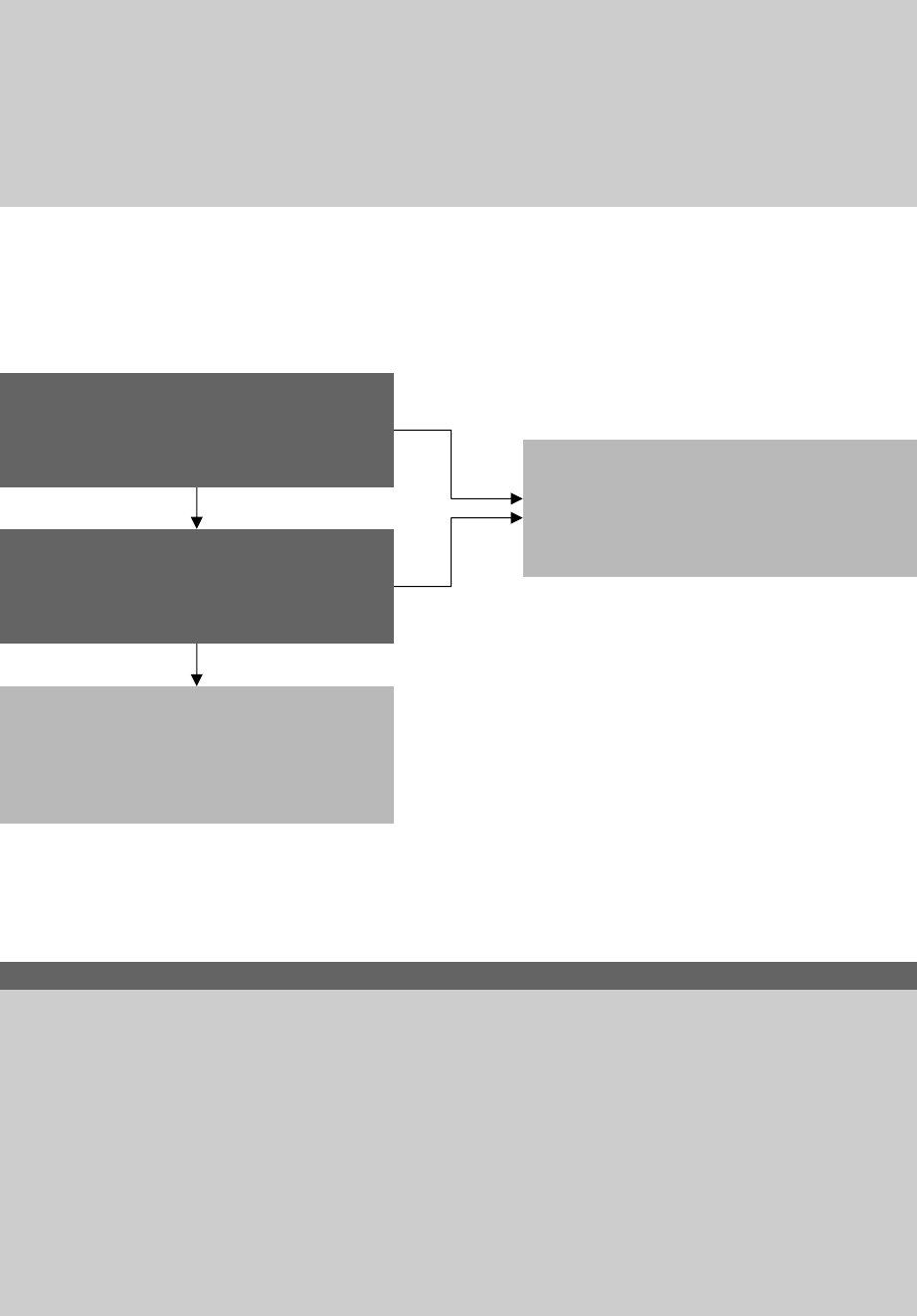
9 Other measurement and recognition topics
Financial reporting developments Revenue from contracts with customers (ASC 606) | 352
in accordance with paragraphs 606-10-25-14 through 25-22 and allocate a portion of the transaction
price to that performance obligation in accordance with paragraphs 606-10-32-28 through 32-41.
606-10-55-32
If a customer does not have the option to purchase a warranty separately, an entity should account for
the warranty in accordance with the guidance on product warranties in Subtopic 460-10 on guarantees,
unless the promised warranty, or a part of the promised warranty, provides the customer with a
service in addition to the assurance that the product complies with agreed-upon specifications.
If the customer has the option to purchase the warranty separately or if the warranty provides a service
to the customer beyond fixing defects that existed at the time of sale, the entity is providing a service-
type warranty. Otherwise, it is an assurance-type warranty, which provides the customer with assurance
that the product complies with agreed-upon specifications.
The following flowchart illustrates this guidance:
* Some contracts may include both assurance-type and service-type warranties. See section 9.1.4 for further discussion.
In some cases, it may be difficult to determine whether a warranty provides a customer with a service in
addition to the assurance that the delivered product is as specified in the contract. To help entities make
that assessment, the standard provides the following guidance:
Excerpt from Accounting Standards Codification
Revenue from Contracts with Customers — Overall
Implementation Guidance and Illustrations
Warranties
606-10-55-33
In assessing whether a warranty provides a customer with a service in addition to the assurance that
the product complies with agreed-upon specifications, an entity should consider factors such as:
a. Whether the warranty is required by law — If the entity is required by law to provide a warranty, the
existence of that law indicates that the promised warranty is not a performance obligation because
such requirements typically exist to protect customers from the risk of purchasing defective products.
b. The length of the warranty coverage period — The longer the coverage period, the more likely it is
No
No
Yes
Yes
Service-type warranty — The warranty (or part of the
warranty)* provides an additional, distinct service to
the customer and is accounted for as a separate
performance obligation. See section 9.1.2.
Does the customer have the option to
purchase the warranty separately?
Does the warranty provide a service to
the customer beyond fixing defects that
existed at the time of sale?
Assurance-type warranty — The warranty (or part
of the warranty)* does not provide an additional,
distinct service to the customer (i.e., it is not a separate
performance obligation). The customer is effectively
receiving a guarantee of quality and the warranty is
accounted for under ASC 460-10. See section 9.1.3.

9 Other measurement and recognition topics
Financial reporting developments Revenue from contracts with customers (ASC 606) | 353
that the promised warranty is a performance obligation because it is more likely to provide a
service in addition to the assurance that the product complies with agreed-upon specifications.
c. The nature of the tasks that the entity promises to perform — If it is necessary for an entity to
perform specified tasks to provide the assurance that a product complies with agreed-upon
specifications (for example, a return shipping service for a defective product), then those tasks
likely do not give rise to a performance obligation.
606-10-55-35
A law that requires an entity to pay compensation if its products cause harm or damage does not give
rise to a performance obligation. For example, a manufacturer might sell products in a jurisdiction in
which the law holds the manufacturer liable for any damages (for example, to personal property) that
might be caused by a consumer using a product for its intended purpose. Similarly, an entity’s promise
to indemnify the customer for liabilities and damages arising from claims of patent, copyright,
trademark, or other infringement by the entity’s products does not give rise to a performance
obligation. The entity should account for such obligations in accordance with the guidance on loss
contingencies in Subtopic 450-20 on contingencies.
How we see it
Entities may need to exercise significant judgment when determining whether a warranty is an
assurance-type or service-type warranty. An entity’s evaluation may be affected by several factors,
including common warranty practices within its industry and the entity’s business practices related to
warranties. For example, consider an automotive manufacturer that provides a five-year warranty on
a luxury vehicle and a three-year warranty on a standard vehicle. The manufacturer may conclude that
the longer warranty period is not an additional service because it believes the materials used to
construct the luxury vehicle are of a higher quality, and latent defects would take longer to appear. In
contrast, the manufacturer might consider the length of the warranty period and the nature of the
services provided under the warranty and conclude that the five-year warranty period, or some
portion of it, is an additional service that should be accounted for as a service-type warranty.
As a reminder (and as discussed in section 2.4), elements of a contract with a customer may be in the
scope of other guidance and not in the scope of ASC 606. Certain entities, particularly those that act
as an agent in a revenue transaction and provide quality assurance or similar promises to a customer’s
customer, will need to consider whether such promises are in the scope of other guidance
(e.g., ASC 460, ASC 815) before applying the warranty guidance in ASC 606.
Question 9-1 How should an entity evaluate whether a product warranty is a service-type warranty (i.e., a performance
obligation) when it is not separately priced? [30 March 2015 TRG meeting, agenda paper no. 29; FASB
staff Q&As, question 17]
TRG members generally agreed that the evaluation of whether a warranty provides a service in addition
to the assurance that the product complies with agreed-upon specifications requires judgment and
depends on the facts and circumstances. There is no bright line in the standard on what constitutes a
service-type warranty beyond it being separately priced. That is, entities will need to evaluate each type
of warranty offered to determine the appropriate accounting.

9 Other measurement and recognition topics
Financial reporting developments Revenue from contracts with customers (ASC 606) | 354
However, ASC 606-10-55-33 includes three factors that should be considered in each evaluation
(i.e., whether the warranty is required by law, the length of the warranty coverage and the nature of the
tasks that the entity promises to perform).
Consider the following example from the TRG agenda paper that illustrates the factors an entity should
consider in assessing whether a product warranty is a service-type warranty:
Example of consideration of service-type warranty factors
A luggage company provides a lifetime warranty to repair broken or damaged baggage free of charge.
The luggage company evaluates the three factors in ASC 606-10-55-33 and determines that the
warranty is a performance obligation in addition to the assurance that the product complies with
agreed-upon specifications because (1) there is no law that requires the luggage company to make a
promise for the lifetime of the product, (2) the length of the warranty is for the life of the baggage and
(3) the tasks include both repairs to baggage that does not meet the promised specifications and
repairs for broken or damaged baggage.
Question 9-2 How should an entity account for a customary business practice of providing repairs outside the
stated contractual warranty period?
An entity must consider all facts and circumstances, including the factors in ASC 606-10-55-33 (e.g., the
nature of the services provided, the length of the implied warranty period), to determine whether a
customary business practice of providing repairs outside the stated contractual warranty period should be
accounted for as an implied assurance- or service-type warranty. For example, an equipment manufacturer
gives its customers a standard product warranty that provides assurance that the product complies with
agreed-upon specifications for one year from the date of purchase. However, the entity provides an
implied warranty by frequently repairing products for free after the one-year standard warranty period
has ended. See section 4.1 for a discussion of implied promises in a contract with a customer.
If the entity determines that the repairs made during the implied warranty period generally involve
defects that existed when the product was sold and the repairs occur shortly after the assurance
warranty period, the entity may conclude that the repairs are covered by an assurance-type warranty.
That is, the term of the assurance-type warranty may be longer than that stated in the contract.
If the entity determines that the repairs made during the implied warranty period are covered by a
service-type warranty because the entity is providing a service to the customer beyond fixing defects
that existed at the time of sale, it should also consider whether the term of the service-type warranty is
longer than that stated in the contract.
Question 9-3 Should an entity account for a customer’s return of a defective item in exchange for compensation
(i.e., not for a replacement item) as a right of return or an assurance-type warranty?
We believe that an entity that is the principal in the transaction should account for a customer’s right to
return a defective item for cash (instead of a replacement item) under the right of return guidance in
ASC 606-10-55-22 through 55-29, rather than as an assurance-type warranty. The Basis for Conclusions
of ASU 2014-09
269
states that “… the Boards decided that an entity should recognize an assurance-type
warranty as a separate liability to replace or repair a defective product.” This description of an assurance-
type warranty does not include defective products that are returned for a refund; it only contemplates
defective products that are replaced or repaired. See section 5.4 for a discussion of rights of return.
269
Paragraph BC376 of ASU 2014-09.

9 Other measurement and recognition topics
Financial reporting developments Revenue from contracts with customers (ASC 606) | 355
However, there may be limited circumstances in which cash paid to a customer for a defective item should
be accounted for in accordance with the warranty guidance instead of the variable consideration guidance.
For example, an entity may pay cash to a customer as reimbursement for third-party costs incurred to
repair a defective item. In this case, the cash payment to the customer was incurred to fulfill the entity’s
warranty obligation. This assessment requires judgment and depend on the facts and circumstances.
Similarly, entities will need to apply judgment to determine the appropriate accounting treatment for
product recalls (also see Question 7-22 in section 7.3.1).
Question 9-4 Should liquidated damages, penalties or compensation from other similar clauses be accounted for as
variable consideration or warranty provisions under the standard?
See response to Question 5-6 in section 5.2.1.
9.1.2 Service-type warranties
The Board determined
270
that a service-type warranty represents a distinct service and is a separate
performance obligation. Therefore, an entity allocates a portion of the transaction price to the service-
type warranty based on the relative standalone selling price of the service-type warranty. The entity then
recognizes revenue allocated to the service-type warranty over the period the warranty service is
provided because the customer likely receives and consumes the benefits of the warranty as the entity
performs (i.e., the warranty performance obligation is likely satisfied over time in accordance with
ASC 606-10-25-27(a), see section 7.1.1).
Judgment may be required to determine the appropriate pattern of revenue recognition associated with
service-type warranties. For example, an entity may determine that it provides the warranty service
continuously over the warranty period (i.e., the performance obligation is an obligation to “stand ready to
perform” during the stated warranty period). An entity that makes this determination likely recognizes
revenue ratably over the warranty period. An entity also may conclude that a different pattern of recognition
is appropriate based on data it has collected about when it provides services. For example, an entity might
recognize little or no revenue in the first year of a three-year service-type warranty if its historical data
indicates that it provides warranty services only in the second and third years of the warranty period.
The AICPA Audit and Accounting Guide, Revenue Recognition,
271
provides guidance on how to determine
the appropriate pattern of recognition for service-type warranties. The guidance says if an entity
determines that it is standing ready to provide protection against damage, loss or malfunction of a product
caused by various risks for the specified coverage period (i.e., provides assurance of use for the covered
product for the coverage period that would include some level of involvement with the repair or
replacement), it should recognize revenue over the coverage period.
If an entity determines that it has promised to fix, arrange to fix or replace the product, it should recognize
revenue over the period in which it is expected to replace or repair the product. The period could extend
beyond the coverage period if services to repair or replace the product are expected to be provided after
the coverage period ends.
For example, a claim may be filed at the end of a one-year period, but it is fulfilled after the coverage period
ends. While the activities in both instances may be similar, the nature of the promise to the customer
determines the period of recognition. Section 7.1.4 describes considerations for determining the
appropriate pattern of revenue recognition, including for stand-ready obligations. If payment for the
service-type warranty is received up front, an entity should also evaluate whether a significant financing
component exists (see section 5.5).
270
Paragraph BC371 of ASU 2014-09.
271
Paragraphs 1.63 through 1.75 of Chapter 1, General Accounting Considerations.

9 Other measurement and recognition topics
Financial reporting developments Revenue from contracts with customers (ASC 606) | 356
In some instances, entities that sell service-type warranties buy insurance to protect themselves against
the potential costs of performing under the warranties. Although the anticipated insurance proceeds may
offset any costs that the entity may incur, immediate revenue recognition for the price of the service-
type warranty is not appropriate. The entity has not been relieved of its obligation to perform under the
terms of the warranty contract and, therefore, a liability still exists. Accordingly, the warranty obligation
and any proceeds related to the insurance coverage should be accounted for separately (unless the carrier
has legally assumed the warranty obligation and the customer has acknowledged that fact).
As discussed in section 6.1, standalone selling prices are determined at contract inception and are not
updated to reflect changes between contract inception and when performance is complete. Accordingly, an
entity would not change the amount of transaction price it originally allocated to the service-type
warranty at contract inception. This would be the case, even if, for example, an entity may discover two
months after a product is shipped that the cost of a part acquired from a third-party manufacturer has
tripled and that it will cost the entity significantly more to replace that part if a warranty claim is made.
However, for future contracts involving the same warranty, the entity would need to determine whether to
revise the standalone selling price because of the significant increase in the costs to satisfy the warranty
and, if so, use that revised price for future allocations (see section 6.1.3).
While service-type warranties are accounted for under ASC 606, and ASC 606-10-50-12(e) requires an
entity to disclose information about types of warranties and related obligations (see section 10.5.1),
certain product warranty disclosures required by ASC 460-10-50-8 may also apply to service-type
warranties. ASC 606 amended certain of the product warranty disclosure requirements in ASC 460-10-
50-8, which raised questions about whether the warranty disclosures in ASC 460 are required for
service-type warranties in addition to the disclosures required by ASC 606. We believe that there is
diversity in views; therefore, companies should consider whether the disclosures required by ASC 460-
10-50-8 provide additional relevant information regarding service-type warranties.
An entity may also need to consider whether to recognize a loss on a service-type warranty by applying
the guidance in ASC 605-20. That guidance requires that a loss should be recognized on a separately
priced extended warranty and product maintenance contract if the sum of the expected costs of providing
services under such a contract and any incremental costs of obtaining the contract that are recognized
as an asset under ASC 340-40 (see section 9.3.1) exceeds the related unearned revenue.
272
We also
note that service-type warranties are not always separately priced. Accordingly, an entity would not
apply the loss recognition guidance in ASC 605-20 to a service-type warranty that is not separately
priced. Further, assurance-type warranties are not separately priced, so the guidance in ASC 605-20
would not apply to them.
9.1.3 Assurance-type warranties
The Board concluded
273
that assurance-type warranties do not provide an additional good or service to
the customer (i.e., they are not separate performance obligations). By providing this type of warranty,
the selling entity has effectively provided a guarantee of quality. Under the standard, these types of
warranties are accounted for as warranty obligations, and the estimated cost of satisfying them is accrued
in accordance with the guidance for warranty obligations incurred in connection with the sale of goods or
services in ASC 460-10-25-5 through 25-7. This guidance says that losses from warranty obligations are
accrued when the conditions in ASC 450-20-25-2 are met (i.e., it is probable that an asset has been
impaired or a liability incurred and the amount of loss can be reasonably estimated).
272
See our Accounting Manual section L3.3, Losses on separately priced extended warranty and product maintenance contracts, for
further discussion of ASC 605-20.
273
Paragraph BC376 of ASU 2014-09.

9 Other measurement and recognition topics
Financial reporting developments Revenue from contracts with customers (ASC 606) | 357
Revenue may be recognized for sales of goods or services, including assurance-type warranties when (or
as) control of the goods or services is transferred to the customer, assuming the arrangement has met
the criteria to be considered a contract under ASC 606 (see section 3.1) and the entity’s costs of
honoring its warranty obligations are reasonably estimable. In such cases, we believe the estimated costs
of honoring the warranty obligations should be accrued as additional costs of sales when (or as) revenue
for the good or service is recognized. Once recorded, the warranty liability is assessed on an ongoing
basis, also in accordance with ASC 450-20, as changes in estimates occur (with the offset recorded as an
adjustment to costs of sales).
ASC 460-10-25-6 indicates that if the costs of satisfying future warranty obligations cannot be
reasonably estimated at the transaction date, a reserve for warranty obligations cannot be accrued, and
if the range of possible loss is wide, a question may be raised about whether revenue should be recorded
until a reasonable estimate can be made or the warranty period expires.
Because assurance-type warranties are accounted for outside of the scope of ASC 606, the costs of satisfying
an assurance-type warranty would be excluded if an entity elects to use a costs incurred measure of progress
for over-time revenue recognition (i.e., excluded from both the numerator and the denominator in the costs
incurred measure of progress calculation; see section 7.1.4 for further discussion on measuring progress).
9.1.4 Contracts that contain both assurance- and service-type warranties
Some contracts may include both an assurance-type warranty and a service-type warranty. The standard
provides the following guidance for these situations:
Excerpt from Accounting Standards Codification
Revenue from Contracts with Customers — Overall
Implementation Guidance and Illustrations
Warranties
606-10-55-34
If a warranty, or a part of a warranty, provides a customer with a service in addition to the assurance
that the product complies with agreed-upon specifications, the promised service is a performance
obligation. Therefore, an entity should allocate the transaction price to the product and the service. If
an entity promises both an assurance-type warranty and a service-type warranty but cannot reasonably
account for them separately, the entity should account for both of the warranties together as a single
performance obligation.
Some contracts include both an assurance–type warranty and a service–type warranty. However, if an
entity provides both an assurance–type and service–type warranty within a contract and the entity
cannot reasonably account for them separately, the warranties are accounted for as a single
performance obligation (i.e., revenue would be allocated to the combined warranty and recognized over
the period the warranty services are provided).
When an assurance-type warranty and a service-type warranty are both present in a contract with a
customer and can be reasonably accounted for separately, an entity is required to accrue for the
expected costs associated with the assurance-type warranty and defer the revenue for the service-type
warranty as illustrated below:
Illustration 9-1: Service-type and assurance-type warranties
An entity manufactures and sells computers that include an assurance-type warranty for the first 90
days. The entity offers an optional “extended coverage” plan under which it will repair or replace any
defective part for three years from the expiration of the assurance-type warranty. Because the optional

9 Other measurement and recognition topics
Financial reporting developments Revenue from contracts with customers (ASC 606) | 358
“extended coverage” plan is sold separately, the entity determines that the three years of extended
coverage represent a separate performance obligation (i.e., a service-type warranty).
The total transaction price for the sale of a computer and the extended warranty is $3,600. The entity
determines that the standalone selling prices of the computer and the extended warranty are $3,200
and $400, respectively. The inventory value of the computer is $1,440. Further, the entity estimates
that, based on its experience, it will incur $200 in costs to repair defects that arise within the 90-day
coverage period for the assurance-type warranty. As a result, the entity will record the following entries:
Cash/receivables
3,600
Warranty expense
200
Accrued warranty costs (assurance-type warranty)
200
Contract liability (service-type warranty)
400
Revenue
3,200
To record revenue and liabilities related to warranties.
Cost of sales
1,440
Inventory
1,440
To relieve inventory and recognize cost of sales.
The entity derecognizes the accrued warranty liability associated with the assurance-type warranty as
actual warranty costs are incurred during the first 90 days after the customer receives the computer.
The entity recognizes the contract liability associated with the service-type warranty as revenue
during the contract warranty period and recognizes the costs associated with providing the service-
type warranty as they are incurred. The entity would need to be able to determine whether repair
costs incurred should be applied against the warranty reserve it already established for claims that
occur during the first 90 days or recognized as an expense in the period incurred.
Accounting for both assurance-type warranties and service-type warranties in the same transaction may
be complex. Entities may need to develop processes to match individual warranty claims with the specific
warranty plans so claims can be analyzed for appropriate accounting treatment. This individual
assessment of warranty claims is necessary because the assurance-type warranty costs will have been
accrued previously, while the service-type warranty costs are expenses that need to be recognized in the
period in which they are incurred as illustrated below:
Illustration 9-2: Service-type and assurance-type warranty costs
Assume the same facts as in Illustration 9-1, but assume the entity sold 500 computers during the year. In
January of the following year, $10,000 of warranty claims are submitted by customers. The entity analyzes
each claim and identifies the specific computer sale to which the claim is related. The entity needs to do this
in order to determine eligibility and the appropriate accounting treatment under the warranty plans.
The entity determines that a portion of the claims, totaling $2,500 for repair and replacement parts, are
covered by the assurance-type warranty plan. As shown above in Illustration 9-1, the expected cost of
each assurance-type warranty was accrued at the time of the sale. The entity records the following entry
to derecognize a portion of the warranty liability:
Accrued warranty costs (assurance-type warranty)
2,500
Cash
2,500
To derecognize the assurance-type warranty liability as the costs are incurred.

9 Other measurement and recognition topics
Financial reporting developments Revenue from contracts with customers (ASC 606) | 359
The entity also determines that a portion of the claims, totaling $7,000 for repair and replacement
parts, are eligible under the “extended coverage” plan (i.e., the service-type warranty). The entity
records the following entry to recognize the costs associated with the service-type warranty:
Warranty expense
7,000
Cash
7,000
To record the costs of the service-type warranty as the costs are incurred.
The entity also determines that $500 of the claims are not eligible under either warranty plan because
the claims relate to incidents that occurred after the 90-day coverage period for the assurance-type
warranty, and the customers in those transactions did not purchase the extended warranty coverage
(i.e., the service-type warranty). The entity rejects these customer claims.
9.2 Loss contracts
While guidance exists for some industries or for certain types of transactions, there is no general
authoritative guidance on when to recognize losses on onerous contracts and, if a loss is to be
recognized, how to measure the loss. Accordingly, diversity in practice exists when such contracts are not
within the scope of specific authoritative literature.
Absent contrary authoritative guidance, we generally believe a liability should not be recognized for expected
losses on contracts before those losses are incurred. Authoritative guidance that requires accrual of
expected losses on contracts includes, but is not limited to, the following:
• A firm purchase commitment for goods or inventory subject to ASC 440-10-25-4
• Separately priced extended warranty and product maintenance contracts subject to ASC 605-20
• Contracts within the scope of ASC 605-35
• Certain derivative contracts within the scope of ASC 815
• Certain other executory contracts subject to ASC 420
• Certain loss contingencies in the scope of ASC 450-20
• Certain federal government contracts within the scope of ASC 912-20
• An insurance contract with a premium deficiency subject to ASC 944
• Continuing care retirement community contracts subject to ASC 954-440
• Losses on prepaid health care services subject to ASC 954-450
• Certain long-term power sales contracts within the scope of ASC 980-350
• Losses on arrangements accounted for pursuant to ASC 985-605
Entities are required to follow applicable authoritative guidance for onerous contracts.
274
Question 9-5 If a contract includes one or more performance obligation(s) in the scope of ASC 605-35 and one or more
performance obligation(s) outside of that scope, should entities include performance obligations outside
that scope for purposes of determining a loss provision?
ASC 605-35 generally applies to contracts between buyers and sellers in which the seller agrees to
274
Paragraph BC296 of ASU 2014-09.

9 Other measurement and recognition topics
Financial reporting developments Revenue from contracts with customers (ASC 606) | 360
perform a service related to construction, development or production of tangible assets to the buyer’s
specifications.
275
It does not cover service contracts unrelated to the construction, development or
production of tangible assets or software. For example, an entity may perform construction services
that would fall in the scope of ASC 605-35 and maintenance services that would not.
Because ASC 605-35 provides an accounting policy election permitting losses to be determined at either the
contract level or the performance obligation level, we believe that the determination of a loss provision could
be made at the contract level and include all performance obligations in the ASC 606 contract, even if some
performance obligations are not in the scope of ASC 605-35.
Alternatively, if an entity elects to determine losses at the performance obligation level, we believe that a
loss provision should only be recorded for performance obligations that are in the scope of ASC 605-35.
The following example illustrates the two acceptable ways to determine a loss provision under ASC 605-35:
Illustration 9-3: Loss contract
Company B is a contractor that builds and maintains power plants as one of its service lines. Company
B entered into a contract with Customer D to provide construction-type services to build a power plant
and provide maintenance services on the power plant once it is operational for total consideration of
$1,000,000. The contract with Customer D is in the scope of ASC 606. Company B determined that the
construction-type services and the maintenance services are separate performance obligations. The
construction-type services are also in the scope of ASC 605-35, but the maintenance services are not.
Company B determines the revenue, estimated cost, and estimated profit or loss for each
performance obligation noting the following:
Construction service
Maintenance service
Total services
Revenue
$ 700,000
$ 300,000
$ 1,000,000
Estimated costs
$ 900,000
$ 200,000
$ 1,100,000
Estimated (loss)/profit
($ 200,000)
$ 100,000
($ 100,000)
Company B expects to incur a total net loss of $100,000 for the entire contract.
Method A (contract level) — The determination of whether a loss exists and the amount of the loss
provision, if any, would be made at the contract level and include all performance obligations in the
ASC 606 contract. This method would result in a $100,000 loss because the total contract has an
estimated loss of $100,000.
Method B (performance obligation level) — The determination of whether a loss exists and the amount of
the loss provision, if any, would be made at the performance obligation level and only include performance
obligations that are in the scope of ASC 605-35. This method would result in a $200,000 loss being recorded
for the construction-type services because this is the only performance obligation that is in the scope of
ASC 605-35 and is anticipated to incur a loss (this loss is not offset by the profit on the maintenance service).
9.3 Contract costs
ASU 2014-09 added ASC 340-40 to codify the guidance on other assets and deferred costs relating to
contracts with customers within the scope of ASC 606. This guidance specifies the accounting for costs an
275
ASC 605-35-15-1 through 15-3 and ASC 605-35-15-6. See our Accounting Manual section L3.4, Losses on construction-type
and production-type contracts, for further discussion of ASC 605-35.

9 Other measurement and recognition topics
Financial reporting developments Revenue from contracts with customers (ASC 606) | 361
entity incurs to obtain and fulfill a contract to provide goods and services to customers as described below:
Excerpt from Accounting Standards Codification
Revenue from Contracts with Customers — Overall
Scope
Transactions
606-10-15-5
Subtopic 340-40 on other assets and deferred costs from contracts with customers includes guidance
on accounting for the incremental costs of obtaining a contract with a customer and for the costs
incurred to fulfill a contract with a customer if those costs are not within the scope of another Topic
(see Subtopic 340-40). An entity shall apply that guidance only to the costs incurred that relate to a
contract with a customer (or part of that contract) that is within the scope of the guidance in this Topic.
When an entity records capitalized contract costs under ASC 340-40, the guidance requires that any
such assets be presented separately from contract assets and contract liabilities under ASC 606 (see
section 10.1) in the statement of financial position or disclosed separately in the notes to the financial
statements (assuming they are material). Further, entities with a classified balance sheet should consider
the guidance in ASC 210-10 on classification of current assets when determining whether their contract
cost assets should be presented as current or noncurrent.
Question 9-6 Can entities apply the portfolio approach practical expedient for the evaluation of and/or accounting
for contract costs under ASC 340-40?
ASC 606 includes a practical expedient, as described in ASC 606-10-10-4, which allows for the use of a
portfolio approach if the entity reasonably expects that the effects on the financial statements would not
materially differ from applying the revenue guidance to individual contracts (see section 3.3.1). While a
similar practical expedient was not codified in ASC 340-40, we believe the portfolio approach can be
applied to the evaluation of contract costs accounted for in accordance with the guidance in ASC 340-40
(e.g., for amortizing costs to obtain or fulfill a contract with a customer).
This view was expressed in a TRG agenda paper
276
that stated, “per paragraph 606-10-10-4 … , an entity
might take advantage of the practical expedient to account for the incremental costs of obtaining a
contract at a portfolio level (for example, in determining an amortization period). An entity’s specific
facts and circumstances dictate whether it can apply the guidance at a portfolio level.”
9.3.1 Costs to obtain a contract (updated September 2022)
Under ASC 340-40, the incremental costs of obtaining a contract with a customer are recognized as an
asset if the entity expects to recover them as follows:
Excerpt from Accounting Standards Codification
Other Assets and Deferred Costs — Contracts with Customers
Scope and Scope Exceptions
Incremental Costs of Obtaining a Contract with a Customer
340-40-15-2
The guidance in this Subtopic applies to the incremental costs of obtaining a contract with a customer
276
26 January 2015 TRG meeting, agenda paper no. 23.

9 Other measurement and recognition topics
Financial reporting developments Revenue from contracts with customers (ASC 606) | 362
within the scope of Topic 606 on revenue from contracts with customers (excluding any consideration
payable to a customer, see paragraphs 606-10-32-25 through 32-27).
Recognition
Incremental Costs of Obtaining a Contract
340-40-25-1
An entity shall recognize as an asset the incremental costs of obtaining a contract with a customer
if the entity expects to recover those costs.
340-40-25-2
The incremental costs of obtaining a contract are those costs that an entity incurs to obtain a contract
with a customer that it would not have incurred if the contract had not been obtained (for example, a
sales commission).
340-40-25-3
Costs to obtain a contract that would have been incurred regardless of whether the contract was
obtained shall be recognized as an expense when incurred, unless those costs are explicitly chargeable to
the customer regardless of whether the contract is obtained.
340-40-25-4
As a practical expedient, an entity may recognize the incremental costs of obtaining a contract as an
expense when incurred if the amortization period of the asset that the entity otherwise would have
recognized is one year or less.
The following flowchart illustrates this guidance:
No
Would the amortization period of any asset
recognized be one year or less?
Yes
No
No
Yes
Would the entity incur the costs only if the contract is
obtained (i.e., are the costs incremental)?
Expense the costs as incurred.
Are those costs explicitly chargeable to the customer
regardless of whether the contract is obtained?
Yes
No
Yes
The entity may either expense as incurred or
recognize as an asset in accordance with the
practical expedient in ASC 340-40-25-4.
Does the entity expect to recover those costs?
Recognize the costs of obtaining a
contract as an asset.

9 Other measurement and recognition topics
Financial reporting developments Revenue from contracts with customers (ASC 606) | 363
Before applying the cost guidance, entities need to consider the scoping provisions of the guidance.
Specifically, an entity needs to first consider whether the guidance on consideration payable to a
customer under ASC 606 (see section 5.7 for a discussion on accounting for consideration paid or
payable to a customer) applies to the costs.
To qualify for capitalization, contract acquisition costs must be incremental, and the entity must expect
to recover them. An entity can expect to recover contract acquisition costs through direct recovery
(i.e., reimbursement under the contract) or indirect recovery (i.e., through the margin inherent in the contract).
Incremental costs are those that an entity would not have incurred if the contract had not been obtained.
In a TRG agenda paper,
277
the FASB staff suggested that, to determine whether a cost is incremental, an
entity should consider whether it would incur the cost if the customer (or the entity) decides, just as the
parties are about to sign the contract, that it will not enter into the contract. If the costs would have been
incurred even if the contract is not executed, the costs are not incremental to obtaining that contract.
The FASB staff also noted that the objective of this guidance is not to allocate costs that are associated in
some manner with an entity’s marketing and sales activity but only to identify those costs that an entity
would not have incurred if the contract had not been obtained. For example, salaries and benefits of
sales employees that are incurred regardless of whether a contract is obtained are not incremental costs.
Consider the following example from the TRG agenda paper:
Example of fixed employee salaries
An entity pays an employee an annual salary of $100,000. The employee’s salary is based on the number
of prior-year contracts he/she signed, as well as the employee’s projected signed contracts for the
current year. The employee’s current year salary will not change if actual signed contracts are different
from the projection; however, any difference would affect the employee’s salary the following year.
The FASB TRG generally agreed that no portion of the employee’s salary should be capitalized because
it is not an incremental cost of obtaining a contract. The employee’s salary would have been incurred
regardless of the employee’s actual signed contracts in the current year.
ASC 340-40 cites sales commissions as a type of an incremental cost that may require capitalization. For
example, commissions that are related to sales from contracts signed during the period may represent
incremental costs that would require capitalization. ASC 340-40 does not explicitly address considerations
for different types of commission programs, so entities have to exercise judgment to determine whether
sales commissions are incremental costs and, if so, the point in time when the costs should be capitalized.
However, the FASB TRG generally agreed
278
that an employee’s title or level in the organization, or how
directly involved the employee is in the sales process, are not factors in assessing whether a sales
commission is incremental. Consider the following example from the TRG paper:
Example of commissions paid to different levels of employees
An entity’s salesperson receives a 10% sales commission on each contract that he or she obtains. In
addition, the following employees of the entity receive sales commissions on each signed contract
negotiated by the salesperson: 5% to the manager and 3% to the regional manager.
The FASB TRG generally agreed that all of the commissions are incremental because the commissions
would not have been incurred if the contract had not been obtained. ASC 340-40 does not distinguish
between commissions paid to employees based on the function or the title of the employee that
receives a commission. It is the entity that decides which employee(s) are entitled to a commission as
a result of obtaining a contract.
277
7 November 2016 FASB TRG meeting, agenda paper no. 57; FASB staff Q&As, question 78.
278
7 November 2016 FASB TRG meeting, agenda paper no. 57; FASB staff Q&As, question 78.

9 Other measurement and recognition topics
Financial reporting developments Revenue from contracts with customers (ASC 606) | 364
Additionally, we believe that commissions paid to a third party related to sales from contracts signed
during the period may also represent incremental costs that would require capitalization. That is,
commissions paid to third parties should be evaluated in the same manner as commissions paid to
employees to determine whether they are required to be capitalized.
In addition, entities should carefully evaluate all compensation plans, not just sales commission plans, to
determine whether any plans contain incremental costs that should be capitalized. For example, payments
under a compensation “bonus” plan may be solely tied to contracts that are obtained. Such costs would
be capitalized if they are incremental costs of obtaining a contract, irrespective of the title of the plan.
Illustration 9-4: Commissions paid to a pool of funds
Assume that an entity has a compensation plan for support personnel in its sales department. As a
group, the employees are entitled to a pool of funds calculated based on 2% of all new contracts signed
during the monthly period. Once the amount of the pool is known, the amount paid to each individual
employee is determined based on each employee’s rating.
While the amount paid to each employee is discretionary based on each employee’s rating, the total
amount of the pool is considered an incremental cost to obtain a contract because the entity owes that
amount to the employees (as a group) simply because a contract was signed.
How we see it
Since ASC 340-40 does not require the capitalized costs to obtain a contract to be direct, entities need
to evaluate all sales commissions paid to employees and capitalize any costs that are incremental,
regardless of how directly involved the employee was in the sales process or the level or title of the
employee. Further, any costs to obtain a contract that are not incremental would not be eligible for
capitalization under ASC 340-40 unless they are explicitly chargeable to the customer regardless of
whether the contract is obtained.
TRG members discussed
279
the underlying principle for capitalizing costs under the guidance and
generally agreed that neither ASC 340-40 nor ASC 606 amended US GAAP liability guidance. Therefore,
entities should first refer to the applicable liability standard to determine when they are required to
accrue for certain costs. Entities would then use the guidance in ASC 340-40 to determine whether the
related costs need to be capitalized. TRG members acknowledged that certain aspects of the cost
guidance require entities to apply significant judgment to analyze the facts and circumstances and to
determine the appropriate accounting.
In addition, the FASB staff observed in a TRG agenda paper
280
that incremental costs of obtaining a
contract are not limited to initial incremental costs. Commissions recognized subsequent to contract
inception (e.g., commissions paid on modifications, commissions subject to contingent events or
clawback) because they did not meet the liability recognition criteria at contract inception should still be
considered for capitalization as costs to obtain the contract when the liability is recognized. This would
include costs related to contract renewals because, as mentioned in the TRG agenda paper, a renewal
contract is a contract, and there isn’t anything in the guidance on costs to obtain a contract to suggest
a different treatment for contracts that are renewals of existing contracts. That is, the only difference
between the two costs would be the timing of recognition based on when a liability has been incurred. See
Question 9-9 below for additional discussion of capitalizing commissions paid on contract modifications.
279
26 January 2015 TRG meeting, agenda paper no. 25; FASB staff Q&As, question 78.
280
26 January 2015 TRG meeting, agenda paper no. 23; FASB staff Q&As, question 73.

9 Other measurement and recognition topics
Financial reporting developments Revenue from contracts with customers (ASC 606) | 365
Unlike many commissions, some incentive payments such as bonuses and other compensation that are
based on quantitative or qualitative metrics not related to contracts obtained (e.g., profitability, EPS,
performance evaluations) likely do not meet the criteria for capitalization because they are not incremental
costs of obtaining a contract. However, a legal contingency cost may be an incremental cost of obtaining
a contract if, for example, a lawyer is entitled to receive payment only upon the successful completion of
a negotiation. Determining which costs must be capitalized under ASC 340-40 may require judgment,
and it is possible that some contract acquisition costs will be determined to be incremental and others will
not. Consider the following example from a TRG agenda paper:
281
Example of incremental and non-incremental costs for same contract
An entity pays a 5% sales commission to its employees when they obtain contracts with customers. An
employee begins negotiating a contract with a prospective customer, and the entity incurs $5,000 of
legal and travel costs in the process of trying to obtain the contract. The customer ultimately enters
into a $500,000 contract and, as a result, the employee receives a $25,000 sales commission.
The FASB TRG generally agreed that the entity should only capitalize the $25,000 commission paid to the
employee. This cost is the only cost that is incremental to obtaining the contract. While the entity incurs
other costs that are necessary to facilitate a sale (e.g., legal, travel), those costs would have been incurred
even if the contract was not obtained.
ASC 340-40 provides the following example regarding incremental costs of obtaining a contract:
Excerpt from Accounting Standards Codification
Other Assets and Deferred Costs — Contracts with Customers
Implementation Guidance and Illustrations
Example 1 — Incremental Costs of Obtaining a Contract
340-40-55-2
An entity, a provider of consulting services, wins a competitive bid to provide consulting services to a
new customer. The entity incurred the following costs to obtain the contract:
External legal fees for due diligence
$ 15,000
Travel costs to deliver proposal
25,000
Commissions to sales employees
10,000
Total costs incurred
$ 50,000
340-40-55-3
In accordance with paragraph 340-40-25-1, the entity recognizes an asset for the $10,000 incremental
costs of obtaining the contract arising from the commissions to sales employees because the entity
expects to recover those costs through future fees for the consulting services. The entity also pays
discretionary annual bonuses to sales supervisors based on annual sales targets, overall profitability of
the entity, and individual performance evaluations. In accordance with paragraph 340-40-25-1, the
entity does not recognize an asset for the bonuses paid to sales supervisors because the bonuses are
not incremental to obtaining a contract. The amounts are discretionary and are based on other
factors, including the profitability of the entity and the individuals’ performance. The bonuses are not
directly attributable to identifiable contracts.
281
7 November 2016 FASB TRG meeting, agenda paper no. 57; FASB staff Q&As, question 78.

9 Other measurement and recognition topics
Financial reporting developments Revenue from contracts with customers (ASC 606) | 366
340-40-55-4
The entity observes that the external legal fees and travel costs would have been incurred regardless
of whether the contract was obtained. Therefore, in accordance with paragraph 340-40-25-3, those
costs are recognized as expenses when incurred, unless they are within the scope of another Topic, in
which case, the guidance in that Topic applies.
As a practical expedient, ASC 340-40 permits an entity to immediately expense contract acquisition costs
when the asset that would have resulted from capitalizing these costs would have been amortized in one
year or less. It is important to note that the amortization period for incremental costs may not always be
the initial contract term. See section 9.3.3 for discussion of the amortization of capitalized contract costs.
Question 9-7 Does the timing of commission payments affect whether they are incremental costs? [7 November 2016
TRG meeting, agenda paper no. 57; FASB staff Q&As, questions 67 and 78]
It depends. FASB TRG members generally agreed that the timing of commission payments does not
affect whether the costs would have been incurred if the contract had not been obtained. However, there
could be additional factors or contingencies that need to be considered in different commission plans
that could affect the determination of whether all (or a portion) of a cost is incremental. Consider the
following example from the TRG agenda paper:
Example of timing of commission payments
An entity pays an employee a 4% sales commission on a $50,000 signed contract with a customer. For
cash flow management purposes, the entity pays the employee half of the commission (i.e., 2% of the
total contract value) upon completion of the sale and the remaining half of the commission in six months.
The employee is entitled to the unpaid commission even if the employee is no longer employed by the
entity when payment is due.
FASB TRG members generally agreed that the entity should capitalize the entire commission in this
example (the timing of which would coincide with the recognition of the related liability). That is, the
entity would not just capitalize the portion it paid immediately and expense the rest.
In this fact pattern, only the passage of time is required for the entity to pay the second half of the
commission. In some commission plans, the employee only will be entitled to the second half of the
commission payment if the employee is still employed by the entity when the commission is due. For
plans such as these, an entity needs to carefully evaluate whether the requirement to remain employed in
order to receive the commission (i.e., the service vesting condition) is substantive. We believe the second
half of the commission payment would not be incremental if the service condition is substantive because
other conditions are necessary, beyond just obtaining the contract, for the entity to incur the cost.
If the entity’s payment of a commission is only “contingent” on a customer paying the amount due in the
obtained contract, we do not believe this would influence the determination of whether the commission is
an incremental cost, provided the contract meets the Step 1 criteria to be accounted for a contract under
the model. However, if there is an extended payment term (i.e., there is a significant amount of time
between contract signing and the date in which the contract consideration is due), the entity should
consider whether there is a service condition or other contingency as discussed above.

9 Other measurement and recognition topics
Financial reporting developments Revenue from contracts with customers (ASC 606) | 367
Question 9-8 Should commission payments subject to a threshold be considered incremental costs? [7 November
2016 TRG meeting, agenda paper no. 57; FASB staff Q&As, question 78]
Yes. FASB TRG members generally agreed that basing a commission on a pool of contracts rather than
paying a set percentage for each contract would not affect the determination of whether the
commissions would have been incurred if the entity did not obtain the contracts with those customers.
Consider the following example in the TRG agenda paper:
Example of commission payments subject to a threshold
An entity has a commission program that increases the amount of commission a salesperson receives
based on how many contracts the salesperson has obtained during an annual period as follows:
0-9 contracts 0% commission
10-19 contracts 2% of value of contracts 1-19
20+ contracts 5% of value of contracts 1-20+
FASB TRG members generally agreed that these costs are incremental costs of obtaining a contract
with a customer and, therefore, the costs should be capitalized when the entity incurs a liability to pay
these commissions. The costs are incremental because the entity will pay the commission under the
program terms as a result of entering into the contracts. See Question 9-23 in section 9.3.3 for
discussion of over what period an entity should amortize a sales commission that is subject to a
threshold and is considered an incremental cost of obtaining a contract.
Question 9-9 Should an entity capitalize commissions paid on contract modifications? [26 January 2015 TRG
meeting, agenda paper no. 23; FASB staff Q&As, question 73]
Yes, if they are incremental (i.e., they would not have been incurred if there hadn’t been a modification)
and recoverable. Contract modifications are accounted for in one of three ways: (1) as a separate
contract, (2) as a termination of the existing contract and the creation of a new contract or (3) as part of
the existing contract (see section 3.4 for further guidance on contract modifications). In all three cases,
commissions paid on contract modifications are incremental costs of obtaining a contract and should be
capitalized if they are recoverable. In the first two cases, a new contract is created so the costs of
obtaining that contract would be incremental. The TRG agenda paper said that commissions paid on the
modification of a contract that is accounted for as part of the existing contract are incremental costs
even though they are not initial incremental costs.
Question 9-10 Should fringe benefits (e.g., employer portion of payroll taxes, pension/401-K matches) on commission
payments be included in the capitalized amounts? [26 January 2015 TRG meeting, agenda paper no. 23;
FASB staff Q&As, question 74]
Fringe benefits should be capitalized as part of the incremental cost of obtaining a contract if the
additional costs are based on the amount of commissions paid and the commissions qualify as costs to
obtain a contract. However, if the costs of fringe benefits would have been incurred regardless of
whether the contract had been obtained (e.g., health insurance premiums), the fringe benefits should not
be capitalized. That is, an entity cannot allocate to the commission and therefore capitalize a portion of
the costs of benefits it would provide regardless of whether the commission was paid.

9 Other measurement and recognition topics
Financial reporting developments Revenue from contracts with customers (ASC 606) | 368
Question 9-11 Must an entity apply the practical expedient to expense contract acquisition costs to all of its
qualifying contracts across the entity or can it apply the practical expedient to individual contracts?
We believe the practical expedient to expense contract acquisition costs that would be amortized over a
period of one year or less should be applied consistently to contracts with similar characteristics and in
similar circumstances. Therefore, we believe an entity generally should apply the practical expedient to
expense contract acquisition costs to all of its qualifying contracts at the entity-wide level.
Question 9-12 How should an entity account for capitalized commissions upon a modification of the contract that is
treated as the termination of an existing contract and the creation of a new contract?
We believe an asset recognized for incremental costs to obtain a contract that exists when the related
contract is modified should be carried forward into the new contract if the modification is treated as the
termination of an existing contract and the creation of a new contract and the goods and services to which
the original contract cost asset relates are part of the new contract. That is because the contract cost asset
relates to goods and services that have not been transferred and the accounting for the modification is
prospective. This conclusion is similar to the one reached by FASB TRG members in relation to the
accounting for contract assets upon a contract modification, as discussed in Question 10-5 in section 10.1.
The contract cost asset that remains on the entity’s balance sheet at the date of modification would
continue to be evaluated for impairment in accordance with ASC 340-40 (see section 9.3.4). In addition, an
entity should determine an appropriate amortization period for the contract cost asset (see section 9.3.3).
9.3.2 Costs to fulfill a contract (updated September 2022)
ASC 340-40 divides contract fulfillment costs into two categories: (1) those that give rise to an asset and
(2) those that are expensed as incurred. When determining the appropriate accounting treatment for
these costs, the guidance states that any other applicable literature should be considered first as follows:
Excerpt from Accounting Standards Codification
Other Assets and Deferred Costs — Contracts with Customers
Scope and Scope Exceptions
Costs Incurred in Fulfilling a Contract with a Customer
340-40-15-3
The guidance in this Subtopic applies to the costs incurred in fulfilling a contract with a customer
within the scope of Topic 606 on revenue from contracts with customers, unless the costs are within
the scope of another Topic or Subtopic, including, but not limited to, any of the following:
a. Topic 330 on inventory
b. Paragraphs 340-10-25-1 through 25-4 on preproduction costs related to long-term supply
arrangements
c. Subtopic 350-40 on internal-use software
d. Topic 360 on property, plant, and equipment
e. Subtopic 985-20 on costs of software to be sold, leased, or otherwise marketed.
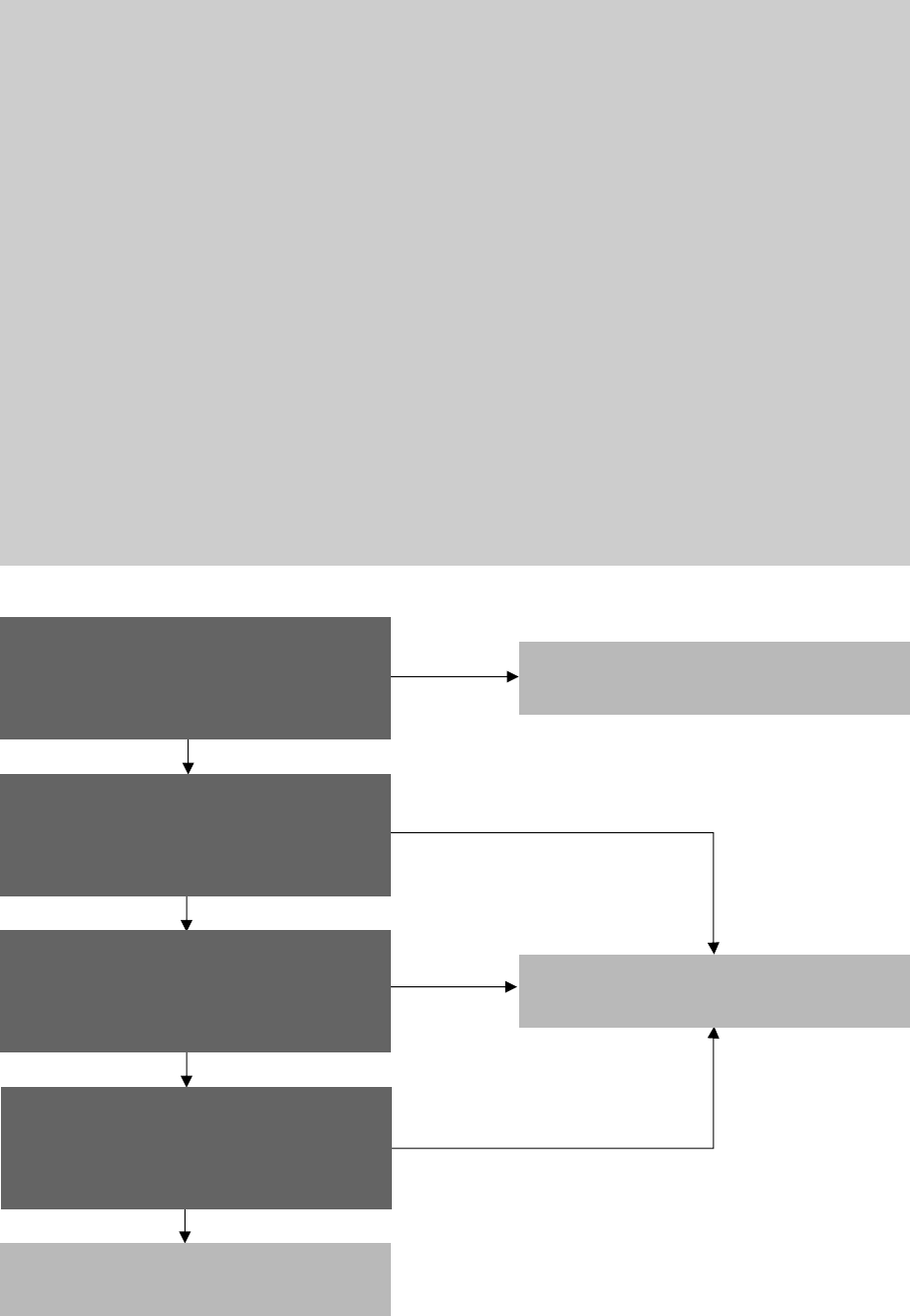
9 Other measurement and recognition topics
Financial reporting developments Revenue from contracts with customers (ASC 606) | 369
Recognition
Costs to Fulfill a Contract
340-40-25-5
An entity shall recognize an asset from the costs incurred to fulfill a contract only if those costs
meet all of the following criteria:
a. The costs relate directly to a contract or to an anticipated contract that the entity can
specifically identify (for example, costs relating to services to be provided under renewal of an
existing contract or costs of designing an asset to be transferred under a specific contract that
has not yet been approved).
b. The costs generate or enhance resources of the entity that will be used in satisfying (or in
continuing to satisfy) performance obligations in the future.
c. The costs are expected to be recovered.
340-40-25-6
For costs incurred in fulfilling a contract with a customer that are within the scope of another Topic
(for example, Topic 330 on inventory; paragraphs 340-10-25-1 through 25-4 on preproduction costs
related to long-term supply arrangements; Subtopic 350-40 on internal-use software; Topic 360 on
property, plant, and equipment; or Subtopic 985-20 on costs of software to be sold, leased, or otherwise
marketed), an entity shall account for those costs in accordance with those other Topics or Subtopics.
The following flowchart illustrates this guidance:
Yes
Yes
No
No
No
No
Yes
Yes
Are the costs incurred to fulfill the contract
in the scope of other Topics?
Apply the guidance in the other Topics.
Do the costs relate directly to a contract or
specifically anticipated contract?
Do the costs generate or enhance resources of the
entity that will be used in satisfying performance
obligations in the future?
Are the costs expected to be recovered?
Expense the costs as incurred.
Recognize the fulfillment costs as an asset.

9 Other measurement and recognition topics
Financial reporting developments Revenue from contracts with customers (ASC 606) | 370
ASC 340-40 provides guidance on other assets and deferred costs relating to contracts with customers
within the scope of ASC 606. However, it does not provide comprehensive cost guidance and should only
be applied if the costs are not within the scope of other accounting guidance. That is, if other accounting
guidance precludes the recognition of an asset for a particular cost, an asset cannot be recognized under
ASC 340-40.
Other GAAP that is applicable to accounting for costs includes, but is not limited to, the following:
• Credit card-related costs subject to ASC 310
• Inventory costs within the scope of ASC 330
• Pre-production costs related to long-term supply arrangements subject to ASC 340-10
• Intangible assets, including internal-use software development costs and website development costs,
within the scope of ASC 350
• Costs of PP&E within the scope of ASC 360
• Startup costs subject to ASC 720-15
• Film costs subject to ASC 926-20
• Insurance acquisition costs within the scope of ASC 944
• Real estate project costs within the scope of ASC 970
• External-use software development costs subject to ASC 985-20
Example 2 in ASC 340-40 (included below) illustrates some costs that are accounted for under other US GAAP.
When determining whether costs meet the criteria for capitalization under ASC 340-40-25-5, an entity must
consider its specific facts and circumstances. ASC 340-40 says that costs can be capitalized even if the
revenue contract with the customer is not finalized. However, rather than allowing costs to be related to any
potential future contract, ASC 340-40 requires that the costs relate directly to a specific anticipated contract.
ASC 340-40 discusses and provides examples of costs that may meet the first criterion for capitalization
listed above (i.e., costs that relate directly to the contract or a specifically anticipated contract) as follows:
Excerpt from Accounting Standards Codification
Other Assets and Deferred Costs — Contracts with Customers
Recognition
Costs to Fulfill a Contract
340-40-25-7
Costs that relate directly to a contract (or a specific anticipated contract) include any of the following:
a. Direct labor (for example, salaries and wages of employees who provide the promised services
directly to the customer)
b. Direct materials (for example, supplies used in providing the promised services to a customer)
c. Allocations of costs that relate directly to the contract or to contract activities (for example, costs
of contract management and supervision, insurance, and depreciation of tools and equipment
used in fulfilling the contract)
d. Costs that are explicitly chargeable to the customer under the contract
e. Other costs that are incurred only because an entity entered into the contract (for example,
payments to subcontractors).

9 Other measurement and recognition topics
Financial reporting developments Revenue from contracts with customers (ASC 606) | 371
Significant judgment may be required to determine whether costs generate or enhance resources of the entity
that will be used in satisfying performance obligations in the future as required by ASC 340-40-25-5(b).
In the Basis for Conclusions of ASU 2014-09,
282
the FASB explained that ASC 340-40 results in the
capitalization of only costs that meet the definition of an asset and precludes an entity from deferring
costs merely to normalize profit margins throughout a contract by allocating revenue and costs evenly
over the contract term.
For costs to meet the “expected to be recovered” criterion (i.e., ASC 340-40-25-5(c)), the costs need to
be either explicitly reimbursable under the contract or reflected through the pricing on the contract and
recoverable through margin. Determining whether the costs are expected to be recovered may be challenging
and require significant judgment if some, or all, of the transaction price is contingent (e.g., success-based fees).
How we see it
As discussed above, entities must first determine whether costs incurred to fulfill a contract with a
customer are in the scope of other US GAAP before determining whether capitalization is required
under ASC 340-40. As an example, an entity may determine that fulfillment costs related to a service
contract are not in the scope of other guidance, such as ASC 330, so it evaluates ASC 340-40 to
determine whether the fulfillment costs are required to be capitalized or expensed. The types of costs
that may be capitalizable under ASC 340-40 for the service contract are similar to the types of costs
that may be capitalized under ASC 330 for a contract to sell goods. That is, ASC 340-40 provides
inventory-like guidance for ASC 606 contract fulfillment costs that aren’t in the scope of other guidance.
As noted in ASC 340-40-25-7, costs that are evaluated for capitalization include direct costs and
allocable overhead-type costs. However, an entity will also need to consider the types of costs that
should be expensed as incurred in accordance with ASC 340-40-25-8, as discussed further below.
If the costs incurred in fulfilling a contract do not give rise to an asset based on the criteria in ASC 340-
40-25-5 above, the guidance requires them to be expensed as incurred. ASC 340-40 provides some
common examples of costs that should be expensed as incurred as follows:
Excerpt from Accounting Standards Codification
Other Assets and Deferred Costs — Contracts with Customers
Recognition
Costs to Fulfill a Contract
340-40-25-8
An entity shall recognize the following costs as expenses when incurred:
a. General and administrative costs (unless those costs are explicitly chargeable to the customer
under the contract, in which case an entity shall evaluate those costs in accordance with
paragraph 340-40-25-7)
b. Costs of wasted materials, labor, or other resources to fulfill the contract that were not reflected
in the price of the contract
c. Costs that relate to satisfied performance obligations (or partially satisfied performance
obligations) in the contract (that is, costs that relate to past performance)
d. Costs for which an entity cannot distinguish whether the costs relate to unsatisfied performance
obligations or to satisfied performance obligations (or partially satisfied performance obligations).
282
Paragraph BC308 of ASU 2014-09.

9 Other measurement and recognition topics
Financial reporting developments Revenue from contracts with customers (ASC 606) | 372
ASC 340-40-25-8(c) states that if a performance obligation (or a portion of a performance obligation that is
satisfied over time) has been satisfied, fulfillment costs related to that performance obligation (or portion
thereof) can no longer be capitalized. This is true even if the associated revenue has not yet been recognized
(e.g., the contract consideration is variable and has been fully or partially constrained). Once an entity has
begun satisfying a performance obligation that is satisfied over time, it should only capitalize costs that
relate to future performance. Accordingly, it may be challenging for an entity to capitalize costs related to a
performance obligation that an entity has already started to satisfy. Under ASC 340-40-25-8(d), if an entity
is unable to determine whether certain costs relate to past or future performance, and the costs are not
eligible for capitalization under other US GAAP guidance, the costs are expensed as incurred.
Consider the following example:
283
Example of costs to fulfill a contract related to past performance
An entity enters into a contract with a customer to construct a building. It identifies a single performance
obligation, being the promise to transfer the building to the customer, which it expects will take three
years to complete. The entity satisfies this performance obligation (and recognizes revenue) over time in
accordance with ASC 606-10-25-27(c) because its performance does not create an asset with
alternative use, and it has an enforceable right to payment (see section 7.1.3).
As of the end of the reporting period, the entity has begun constructing the building and has incurred
costs related to laying the foundation of the building.
We believe that the foundation costs relate to construction work done on the partly constructed building,
which has been transferred to the customer. Therefore, the costs relate to the entity’s past performance in
partially satisfying its performance obligation and, in accordance with ASC 340-40-25-8, should be expensed
as incurred. That is, the costs do not meet the criteria to be recognized as an asset under ASC 340-40.
ASC 340-40 provides the following example that illustrates costs that are capitalized under other US GAAP,
costs that meet the capitalization criteria and costs that don’t:
Excerpt from Accounting Standards Codification
Other Assets and Deferred Costs — Contracts with Customers
Implementation Guidance and Illustrations
Example 2 — Costs that Give Rise to an Asset
340-40-55-5
An entity enters into a service contract to manage a customer’s information technology data center
for five years. The contract is renewable for subsequent one-year periods. The average customer term
is seven years. The entity pays an employee a $10,000 sales commission upon the customer signing
the contract. Before providing the services, the entity designs and builds a technology platform for the
entity’s internal use that interfaces with the customer’s systems. That platform is not transferred to
the customer but will be used to deliver services to the customer.
Incremental Costs of Obtaining a Contract
340-40-55-6
In accordance with paragraph 340-40-25-1, the entity recognizes an asset for the $10,000 incremental
costs of obtaining the contract for the sales commission because the entity expects to recover those
costs through future fees for the services to be provided. The entity amortizes the asset over seven
283
The IFRS IC discussed this example and reached similar conclusions. See the June 2019 IFRIC Update.

9 Other measurement and recognition topics
Financial reporting developments Revenue from contracts with customers (ASC 606) | 373
years in accordance with paragraph 340-40-35-1 because the asset relates to the services transferred
to the customer during the contract term of five years and the entity anticipates that the contract will
be renewed for two subsequent one-year periods.
Costs to Fulfill a Contract
340-40-55-7
The initial costs incurred to set up the technology platform are as follows:
Design services $ 40,000
Hardware 120,000
Software 90,000
Migration and testing of data center 100,000
Total costs $ 350,000
340-40-55-8
The initial setup costs relate primarily to activities to fulfill the contract but do not transfer goods or
services to the customer. The entity accounts for the initial setup costs as follows:
a. Hardware costs — accounted for in accordance with Topic 360 on property, plant, and equipment
b. Software costs — accounted for in accordance with Subtopic 350-40 on internal-use software
c. Costs of the design, migration, and testing of the data center — assessed in accordance with
paragraph 340-40-25-5 to determine whether an asset can be recognized for the costs to fulfill
the contract. Any resulting asset would be amortized on a systematic basis over the seven-year
period (that is, the five-year contract term and two anticipated one-year renewal periods) that the
entity expects to provide services related to the data center.
340-40-55-9
In addition to the initial costs to set up the technology platform, the entity also assigns two employees
who are primarily responsible for providing the service to the customer. Although the costs for these
two employees are incurred as part of providing the service to the customer, the entity concludes that
the costs do not generate or enhance resources of the entity (see paragraph 340-40-25-5(b)).
Therefore, the costs do not meet the criteria in paragraph 340-40-25-5 and cannot be recognized as
an asset using this Topic. In accordance with paragraph 340-40-25-8, the entity recognizes the payroll
expense for these two employees when incurred.
Question 9-13 How should an entity account for pre-production costs? [9 November 2015 TRG meeting, agenda
paper no. 46; FASB staff Q&As, question 66]
Manufacturing and production companies in various industries raised questions about how they should
account for activities and costs incurred before the production of goods, given the guidance in ASC 340-
40 that they adopted along with ASC 606. The questions arose because some arrangements require an
entity to incur up-front costs, such as nonrecurring engineering and design costs or costs related to
setup activities, to create new technology or adapt existing technology to the needs of the customer.
These pre-production activities are often a prerequisite to delivering any units under a production contract.
9 Other measurement and recognition topics
Financial reporting developments Revenue from contracts with customers (ASC 606) | 374
For example, a manufacturer may incur costs to perform certain services related to the design and
development of products it will sell under long-term supply arrangements and may incur costs to design
and develop molds, dies and other tools that will be used to produce those products. A contract may call
for the customer to reimburse the manufacturer for these costs, or reimbursement may be implicitly
guaranteed as part of the price of the product or by other means.
We believe that an entity should perform a thorough analysis of the facts and circumstances to assess
whether the costs are in the scope of the guidance in ASC 340-10, which provides guidance on
capitalizing certain pre-production costs. If the pre-production costs are not in the scope of ASC 340-10,
an entity should consider other guidance that may be applicable (e.g., ASC 340-40 on costs to fulfill a
contract with a customer).
As previously discussed, for an arrangement to be in the scope of ASC 340-40, it must first be within the
scope of ASC 606 (Question 2-9 in section 2.4 addresses whether pre-production activities are in the
scope of ASC 606).
Question 9-14 Can an entity defer costs of a transferred good or service that would otherwise generate an up-front
loss because variable consideration is fully or partially constrained?
An entity should not defer the costs of a transferred good or service when the application of the
constraint on variable consideration results in an up-front loss even if the entity ultimately expects to
recognize a profit on that good or service, unless other specific guidance requires a deferral of those
costs. The criteria in ASC 340-40 must be met to capitalize costs to fulfill a contract, including the
criterion that the costs must generate or enhance resources of the entity that will be used in satisfying
performance obligations in the future. An entity recognizes costs of sales when control of a good or
service transfers to the customer, so the cost of those sales would not generate or enhance resources of
the entity used to satisfy future performance obligations. Consider the following example:
An entity sells goods with a cost of $500,000 for consideration of $600,000. The goods have a high risk of
obsolescence, which may require the entity to provide price concessions in the future, resulting in variable
consideration (see section 5.2.1.1). The entity constrains the transaction price and concludes that it is probable
that $470,000 will not result in a significant revenue reversal even though the entity reasonably expects the
contract to be ultimately profitable. When control transfers, the entity recognizes revenue of $470,000
and costs of $500,000 and would not capitalize the loss of $30,000 because the loss does not generate or
enhance resources of the entity that will be used in satisfying performance obligations in the future.
Question 9-15 How should an entity account for fulfillment costs incurred prior to the contract establishment date
that are outside the scope of another standard (e.g., outside the scope of the inventory guidance in
ASC 330)? [30 March 2015 TRG meeting, agenda paper no. 33; FASB staff Q&As, question 76]
Entities may begin activities on a specific anticipated contract before the contract establishment date
(e.g., before agreeing to the contract with the customer, before the contract satisfies the criteria to be
accounted for under ASC 606) that are not within the scope of another standard (e.g., ASC 330). TRG
members generally agreed that costs relating to pre-contract establishment date activities that relate to
a good or service that transfers to the customer at or after the contract establishment date may be
capitalized as costs to fulfill a specific anticipated contract. However, TRG members noted such costs
would still need to meet the criteria in ASC 340-40-25-5 to be capitalized (e.g., they are expected to be
recovered under the anticipated contract). Certain costs, such as general and administrative costs that
are not explicitly chargeable to the customer under the contract, would not satisfy these criteria and
would need to be expensed as incurred.
Capitalized contract costs that relate to goods or services that are transferred to the customer at the
contract establishment date should be expensed immediately. Any remaining capitalized contract costs
would be amortized over the period that the related goods or services are transferred to the customer.

9 Other measurement and recognition topics
Financial reporting developments Revenue from contracts with customers (ASC 606) | 375
For guidance on recognizing revenue for a performance obligation satisfied over time when activities are
completed before the contract establishment date, see Question 7-17 in section 7.1.4.3.
Question 9-16 How are the effects of learning curve costs addressed in ASC 606 and ASC 340-40?
As discussed in the Basis for Conclusions of ASU 2014-09,
284
a learning curve is the effect of efficiencies
realized over time when an entity’s costs of performing a task (or producing a unit) decline in relation to
how many times the entity performs that task (or produces that unit). Learning curve costs usually
consist of materials, labor, overhead, rework or other costs that must be incurred to complete the
contract (but do not include research and development costs). These types of efficiencies generally can
be predicted at the inception of an arrangement and are often considered in the pricing of a contract
between an entity and a customer.
The FASB noted
285
that in situations where learning curve costs are incurred in relation to a contract with
a customer accounted for as a single performance obligation that is satisfied over time to deliver a
specified number of units, ASC 606 requires an entity to select a method of progress that depicts the
transfer over time of the good or service to the customer (see section 7.1.4). The FASB further noted
that an entity likely would select a method, such as a costs incurred measure of progress, for these types
of contracts, which would result in the entity recognizing more revenue and expense at the beginning of
the contract relative to the end. The Board clarified that this would be appropriate since an entity would
charge a higher price to a customer only purchasing one unit (rather than multiple units) to recover its
learning curve costs.
Conversely, when learning curve costs are incurred for a performance obligation satisfied at a point in
time (rather than over time), an entity should assess whether those costs are within the scope of another
standard. The FASB noted
286
that in situations in which an entity incurs cost to fulfill a contract without also
satisfying a performance obligation over time, the entity probably is creating an asset included within the
scope of another standard (e.g., ASC 330). In such an example, the costs of producing the components
would likely accumulate as inventory, and the entity would select an appropriate method of measuring that
inventory and recognizing it as revenue when control of the inventory transfers to the customer.
If the learning curve costs are not in the scope of another standard, we believe they generally will not
be eligible for capitalization under ASC 340-40 (e.g., because the costs relate to past (and not future)
performance).
Question 9-17 How should an entity account for pre-contract or setup costs, including mobilization activities?
Pre-contract costs are often incurred in anticipation of a contract and will result in no future benefit
unless the contract is obtained. Examples include (1) engineering, design or other activities performed on
the basis of commitments, or other indications of interest, by a customer; (2) costs for production
equipment and materials relating to specific anticipated contracts (e.g., costs for the purchase of
production equipment, materials or supplies); and (3) costs incurred to acquire or produce goods in
excess of contractual requirements in anticipation of subsequent orders for the same item.
Mobilization activities often include costs to move personnel, equipment and supplies to the project site,
calibrate tools and machinery and construct temporary facilities that will be used to satisfy a
performance obligation.
284
Paragraph BC312 of ASU 2014-09.
285
Paragraph BC313 of ASU 2014-09.
286
Paragraph BC315 of ASU 2014-09.

9 Other measurement and recognition topics
Financial reporting developments Revenue from contracts with customers (ASC 606) | 376
Pre-contract costs and mobilization activities that are incurred in anticipation of a specific contract should
first be evaluated for capitalization under other authoritative literature (e.g., ASC 330, ASC 360, ASC 985).
For example, pre-contract costs incurred to acquire or produce goods in excess of contractual requirements
for an existing contract in anticipation of subsequent orders for the same item would likely be evaluated
under ASC 330. As another example, costs incurred to move newly acquired equipment to its intended
location could be required to be capitalized under ASC 360. Pre-contract and mobilization costs incurred
in anticipation of a specific contract that are not addressed under other authoritative literature will be
capitalized under ASC 340-40 only if they meet all of the criteria of a cost incurred to fulfill a contract.
Further, it may be challenging for an entity to capitalize mobilization costs related to a performance
obligation that it has already started to satisfy. This is because, as discussed in section 9.3.2, once an
entity begins to satisfy a performance obligation satisfied over time, it can only capitalize costs that
relate to future performance. Pre-contract and mobilization costs that do not meet the criteria under
ASC 340-40 should be charged to expense as incurred.
Question 9-18 Can an entity defer losses incurred on a contract by capitalizing related fulfillment costs when it is
expected to generate future profits on the sale of optional goods and services (i.e., loss leader)?
No. Certain contracts may be executed as part of a loss leader strategy in which a good is sold at a loss
with an expectation that future sales contracts will result in higher sales and/or profits. In determining
whether these anticipated contracts should be part of the accounting for the existing loss leader
contract, entities should refer to the definition of a contract in ASC 606 that is based on enforceable
rights and obligations in the existing contract (see section 3.1). While it may be likely that the customer
will enter into a future contract or the customer may even be compelled economically or by regulation to
do so, it would not be appropriate to account for an anticipated contract when there is an absence of
enforceable rights and obligations. This view is consistent with that of the SEC staff.
287
In addition, if the fulfillment costs incurred during satisfying the initial contract are within the scope of
other accounting guidance (e.g., ASC 330), the entity must account for those costs under that relevant
guidance. Even if the costs are not identified to be within other accounting guidance, the costs would
relate to a satisfied or partially satisfied performance obligation (i.e., the original contract priced at a
loss) and therefore must be expensed as incurred. Neither ASC 606 nor ASC 340-40 permit an entity to
defer fulfillment costs or losses incurred based on the expectation of profits in a future contract.
Question 9-19 How should an entity account for costs associated with installation or implementation services?
Entities that provide installation or implementation services to customers incur costs to fulfill the
services. To determine the appropriate accounting for these costs, entities first need to determine whether
the costs are within the scope of other US GAAP (e.g., PP&E, intangibles).
If they are not, entities need to determine whether the installation or implementation service is a separate
performance obligation (see section 4.2) that is satisfied over time (see section 7.1). If it is, the entity
generally expenses the costs associated with that performance obligation as incurred because, as discussed
in section 9.3.2, it may be challenging to conclude that the costs relate only to the entity’s satisfaction of
performance obligations in the future, which is required for capitalization by ASC 340-40-25-5(b).
If the installation or implementation service is not a separate performance obligation, an entity needs to
evaluate whether it is required to capitalize the costs to fulfill the contract under the ASC 340-40
guidance mentioned above. That is, costs incurred to fulfill a contract are required to be capitalized only
if they meet all of the criteria for capitalization in ASC 340-40-25-5.
287
Remarks by Sylvia E. Alicea, Professional Accounting Fellow, SEC Office of the Chief Accountant, 5 December 2016.

9 Other measurement and recognition topics
Financial reporting developments Revenue from contracts with customers (ASC 606) | 377
The illustrations below contrast an example of implementation services that are determined to be a
separate performance obligation (and, therefore, are not capitalized as costs to fulfill a contract) with an
example of implementation services that meet the criteria for capitalization as costs to fulfill a contract
under ASC 340-40.
Illustration 9-5: Implementation services are not capitalized costs to fulfill a contract
Technology entity M enters into a three-year, $4,000,000 SaaS contract with a customer for a
subscription to an inventory management application beginning 1 June 20X3. The contract includes
implementation services that will be performed at the beginning of the contract, starting on 1 June 20X3.
The implementation services include data migration, creation of objects for the customer’s products that
will be inventoried, and customization of the application’s layout with the customer’s logo and color
scheme. Several third-party service providers also sell implementation services for Technology entity M’s
application. Assume that the implementation services do not represent a significant integration service
(i.e., the implementation services do not significantly modify or customize the SaaS) and the SaaS is fully
functional without the implementation service. Under the contract, the customer receives access to the
SaaS on 1 June 20X3.
Technology entity M determines that the costs incurred related to the implementation services are not
within the scope of other US GAAP (e.g., PP&E, intangibles).
Technology entity M then considers the implementation services and SaaS and determines that they
are separate performance obligations that will be satisfied over time. This is because the implementation
services and SaaS can be purchased separately. Technology entity M determines it is able to fulfill its
promise to transfer the SaaS separately from the implementation services, indicating that the two are
not highly interdependent or interrelated. Therefore, Technology entity M determines that the costs
incurred related to implementation services do not meet the criteria for capitalization because they do not
relate to the entity’s satisfaction of performance obligations in the future (i.e., the costs are incurred as the
performance obligation for implementation services is satisfied).
Illustration 9-6: Implementation services are capitalized costs to fulfill a contract
Technology entity N enters into a $2,000,000 contract with a customer for a one-year SaaS subscription
to an enterprise software application beginning when the customer obtains access to the SaaS. The
contract includes implementation services that will be performed at the beginning of the contract,
starting on 1 January 20X5. The implementation services, which will take approximately two months to
complete, must be performed in order for the customer to access the SaaS because the services involve
the creation of customer-specific interfaces. Technology entity N does not sell the SaaS without these
implementation services, and no other vendors are able to perform the implementation services because
they require the creation of code that will reside on Technology entity N’s servers.
Technology entity N determines that the costs incurred related to the implementation services are not
within the scope of other US GAAP (e.g., PP&E, intangibles).
Technology entity N then determines that the implementation services are not capable of being distinct.
This is because they cannot be purchased separately or provided by a third party and because the
services do not provide benefit on their own or with other readily available resources (since the SaaS has
not yet been provided and also cannot be sold separately). Therefore, the implementation services and
SaaS subscription are a combined performance obligation.
Technology entity N also concludes that the combined performance obligation meets the requirements
for recognition over time. It determines that revenue will be recognized over the contract term,
beginning when the customer obtains access to the SaaS.

9 Other measurement and recognition topics
Financial reporting developments Revenue from contracts with customers (ASC 606) | 378
Therefore, Technology entity N considers whether the costs incurred related to the implementation
services that will be provided at the outset of the contract (i.e., before the customer obtains access to
the SaaS) meet the criteria to be capitalized as a cost to fulfill the contract as follows:
• The costs relate specifically to the SaaS contract with this customer.
• The costs generate a resource (i.e., the interfaces) that will be used in future performance (i.e.,
providing the SaaS to the customer).
• The costs are expected to be recovered based on the margin included in the contract.
As such, Technology entity N determines that the costs should be capitalized as a cost to fulfill as the
implementation services are performed. The costs will then be amortized over the estimated period of
benefit beginning when the customer gains access to the SaaS.
9.3.3 Amortization of capitalized contract costs
Any capitalized contract costs are amortized, with the expense recognized as an entity transfers the
related goods or services to the customer as follows:
Excerpt from Accounting Standards Codification
Other Assets and Deferred Costs — Contracts with Customers
Subsequent Measurement
Amortization and Impairment
340-40-35-1
An asset recognized in accordance with paragraph 340-40-25-1 or 340-40-25-5 shall be amortized on
a systematic basis that is consistent with the transfer to the customer of the goods or services to
which the asset relates. The asset may relate to goods or services to be transferred under a specific
anticipated contract (as described in paragraph 340-40-25-5(a)).
340-40-35-2
An entity shall update the amortization to reflect a significant change in the entity’s expected timing of
transfer to the customer of the goods or services to which the asset relates. Such a change shall be
accounted for as a change in accounting estimate in accordance with Subtopic 250-10 on accounting
changes and error corrections.
ASC 340-40-35-1 states that capitalized contract costs should be amortized on a systematic basis that is
consistent with the transfer to the customer of the goods or services to which the asset relates. When the
timing of revenue recognition (e.g., at a point in time, over time) aligns with the transfer of the goods or
services to the customer, the amortization of the capitalized contract costs in a reporting period will correspond
with the revenue recognition in that reporting period. However, the timing of revenue recognition may not
always align with the transfer of the goods and services to the customer (e.g., when variable consideration is
constrained at the time the related performance obligation is satisfied). When this occurs, the amortization
of the capitalized contract costs will not correspond with the revenue recognition in a reporting period.
For example, consider an entity that enters into a contract with a customer to provide two performance
obligations, a right-to-use license of intellectual property and a related service for three years, with
payment from the customer based on the customer’s usage of the intellectual property (i.e., a usage-
based royalty). Revenue related to the license of intellectual property would be recognized at a point in
time (see section 8.3.2) and revenue related to the service would be recognized over time. The transaction

9 Other measurement and recognition topics
Financial reporting developments Revenue from contracts with customers (ASC 606) | 379
price allocated to the performance obligation for the license of intellectual property cannot be recognized
at a point in time when control of the license transfers to the customer due to the royalty recognition
constraint (see section 8.5). Accordingly, any capitalized contract costs that relate to the license should
be fully amortized upon the transfer of control of that license (i.e., at a point in time) regardless of when
the related revenue will be recognized. Any capitalized contract costs that relate to the service should be
amortized over the period of time consistent with the transfer of control of the service.
It is important to note that certain capitalized contract costs relate to multiple goods and services (e.g., design
costs to manufacture multiple distinct goods when design services are not a separate performance obligation) in
a single contract, so the amortization period could be the entire contract term. See Question 9-22 below for a
discussion on how an entity might determine the appropriate amortization period when capitalized contract
costs relate to multiple performance obligations. The amortization period could also extend beyond a single
contract if the capitalized contract costs relate to goods or services being transferred under multiple
contracts or to a specific anticipated contract (e.g., certain contract renewals). In these situations, the
capitalized contract costs should be amortized over a period that is consistent with the transfer to the
customer of the goods or services to which the asset relates. This can also be thought of as the expected
period of benefit of the asset capitalized. The expected period of benefit may be the expected customer
relationship period, but that is not always the case. To determine the appropriate amortization period, an entity
needs to evaluate the type of capitalized contract costs, what the costs relate to and the specific facts and
circumstances of the arrangement. Further, before including estimated renewals in the period of benefit, an
entity should evaluate its history with renewals to conclude that such an estimate is supportable.
The following graphic lists some factors that should be considered in the evaluation of the period of benefit:
Nature of company’s services
•
Product/service offerings and differences
in the related customer lives
•
Variations in contract terms and product
sales structure
Customer life
•
Historical customer turnover
•
Length of contracts and renewal patterns
•
Other factors that may affect customers’
lives in the future
Period of benefit
Assess the customer life,
product and competitive
environment data points
to select a period of
benefit for each
customer and/or product
category evaluated
Product and competitive environment
•
Historical product turnover
•
Products/services road map and other
future changes to products/service
offerings
• Competitive landscape

9 Other measurement and recognition topics
Financial reporting developments Revenue from contracts with customers (ASC 606) | 380
An entity should update the amortization period when there is a significant change in the entity’s
expected timing of transfer to the customer of the goods or services to which the asset relates, as
illustrated in the following example:
Illustration 9-7: Amortization period
Entity A enters into a three-year contract with a new customer for transaction processing services.
To fulfill the contract, Entity A incurred setup costs of $60,000, which it capitalized in accordance with
ASC 340-40-25-5 through 25-8 and will amortize over the term of the contract.
At the beginning of the third year, the customer renews the contract for an additional two years. Because
Entity A will benefit from the setup costs during the additional two-year period, it would change the remaining
amortization period from one to three years and adjust the amortization expense in the period of the change
and future periods in accordance with the guidance in ASC 250 on changes in accounting estimates.
The disclosure requirements of ASC 250 related to changes in accounting estimates also are applicable.
However, under ASC 340-40, if Entity A had been in the position to anticipate the contract renewal at
contract inception, Entity A would have amortized the setup costs over the anticipated term of the
contract, including the expected renewal (i.e., five years).
Determining the amortization period for incremental costs of obtaining a contract with a customer can be
complicated, especially when contract renewals are expected and the commission rates are not constant
throughout the entire life of the contract. When evaluating whether the amortization period for an initial
sales commission extends beyond the original contract period, an entity should evaluate whether an
additional commission is paid for subsequent renewals and, if so, whether the renewal commission is
considered “commensurate” with the original commission. See Question 9-20 below for further
discussion on whether a commission is commensurate.
In the Basis for Conclusions of ASU 2014-09,
288
the FASB explained that amortizing the asset over a
longer period than the initial contract would not be appropriate if an entity pays a commission on a contract
renewal that is commensurate with the commission paid on the initial contract. In that case, the costs of
obtaining the initial contract do not relate to the subsequent contract. An entity would also need to
evaluate the appropriate amortization period for any renewal commissions that are required to be
capitalized under ASC 340-40 in a similar manner. See Question 9-21 below for FASB TRG discussion of
how an entity should determine the amortization period of an asset recognized for the incremental costs
of obtaining a contract with a customer.
How we see it
Under ASC 340-40, entities are required to evaluate whether the period of benefit is longer than the
term of the initial contract. As discussed above, an entity would likely be required to amortize the
capitalized sales commission cost over a period longer than the initial contract if a renewal commission
is not paid or a renewal commission is paid that is not commensurate with the original commission.
In comment letters, the SEC staff has asked registrants to explain how they determined the
amortization period for contract costs capitalized under ASC 340-40. In particular, the SEC staff has
requested more information about costs to obtain a contract with a customer, including how renewal
sales commissions (if any) are considered in the amortization period determination.
It is important for entities to document the judgments they made when determining the appropriate
amortization period and disclose the same in their financial statements. ASC 340-40 disclosure
requirements (see section 10.5.3) include judgments made in determining the amounts of costs that
are capitalized, the amortization method chosen and other quantitative disclosures.
288
Paragraph BC309 of ASU 2014-09.

9 Other measurement and recognition topics
Financial reporting developments Revenue from contracts with customers (ASC 606) | 381
Question 9-20 How should an entity determine whether a commission on a renewal contract is commensurate with
the commission on the initial contract? [7 November 2016 TRG meeting, agenda paper no. 57; FASB
staff Q&As, question 72]
FASB TRG members generally agreed that the commissions would have to be reasonably proportional to the
contract values (e.g., 5% of both the initial and renewal contract values) to be considered commensurate.
In addition, FASB TRG members also generally agreed that it would not be appropriate for an entity to
use a “level of effort” analysis to determine whether a commission is commensurate. For example, a 6%
commission on an initial contract and a 2% commission on a renewal would not be commensurate even if
the declining commission rate corresponds to the level of effort required to obtain the contracts.
As discussed above in section 9.3.3, if the renewal commission is considered to be commensurate with
the commission on the initial contract, it would not be appropriate to amortize any asset for the initial
commission over a longer period than the initial contract. In contrast, it likely would be appropriate to
amortize the asset over a longer period than the initial contract if the commissions are not considered to
be commensurate (such as in the example above). See Question 9-21 below for discussion of how an
entity determines this longer amortization period.
Although the TRG did not discuss this, entities would also need to evaluate whether any expected
subsequent renewal commissions are commensurate with prior renewal commissions to determine the
appropriate amortization period for any renewal commissions that are required to be capitalized under
ASC 340-40. Continuing the above example, assume the original contract (for which a 6% commission is
paid) and each subsequent renewal contract (for which a 2% renewal is paid) is for a one-year term. If the
entity expects to renew the contract in years two through four and continue to pay a constant 2%
commission upon each renewal, each renewal commission would be considered commensurate, and the
appropriate amortization period for each renewal required to be capitalized would likely be one year. See
Question 9-24 below for discussion of when an entity would begin to amortize an asset recognized for
the incremental cost of obtaining a renewal contract.
Question 9-21 How should an entity determine the amortization period of an asset recognized for the incremental
costs of obtaining a contract with a customer? [7 November 2016 TRG meeting; agenda paper no. 57
and 26 January 2015 TRG meeting, agenda paper no. 23; FASB staff Q&As, questions 71 and 79]
FASB TRG members generally agreed that, as discussed above, when an entity determines an amortization
period that is consistent with the transfer to the customer of the goods or services to which the asset
relates, it must determine whether the capitalized contract costs relate only to goods or services that will
be transferred under the initial contract or whether the costs also relate to goods or services that will be
transferred under a specific anticipated contract. For example, if an entity pays a commission based only
on the initial contract and doesn’t expect a renewal (e.g., based on its past experience or other relevant
information), amortizing the asset over the initial term would be appropriate.
However, if the entity’s past experience indicates that a renewal is likely, the amortization period would
be longer than the initial term if the renewal commission is not “commensurate” with the initial commission.
See Question 9-20 above for a discussion of commensurate.

9 Other measurement and recognition topics
Financial reporting developments Revenue from contracts with customers (ASC 606) | 382
FASB TRG members generally agreed that an entity needs to evaluate its facts and circumstances and
apply judgment to determine an appropriate amortization period if it determines that the period should
extend beyond the initial contract term because the commission on the renewal contract is not
commensurate with the commission on the initial contract. While an entity might reasonably conclude
that its average customer life is the best estimate of the amortization period that is consistent with the
transfer of the goods or services to which the asset relates (e.g., if the good or service does not change
over time, such as a health club membership), FASB TRG members generally agreed that this approach is
not required and that entities should not default to it. FASB TRG members said entities would use similar
judgment to that which they use when estimating the amortization period for intangible assets (e.g., a
customer relationship intangible acquired in a business combination) and could consider factors such as
customer “stickiness” and how quickly their products and services change.
Consider a technology entity that capitalizes a commission earned on the sale of software, which the
entity estimates it will maintain and support for only the next five years, and the estimated customer life
is seven years. In evaluating the period of benefit, the entity may reasonably conclude the capitalized
commission should be amortized over the five-year life of the software to which the commission relates.
However, in a TRG agenda paper
289
the FASB staff discussed two acceptable methods for amortizing
capitalized contract costs related both to the original contract and to renewals in cases in which the
renewal commission is not commensurate with the initial commission:
• The initial capitalized amount is amortized over the period of benefit that includes expected
renewals, while amounts capitalized related to renewals are amortized over the renewal period.
• The portion of the initial capitalized amount that is commensurate is amortized over the original
contract term and the additional amount that is not commensurate is amortized over the period of
benefit that includes expected renewals. Capitalized amounts related to renewals are amortized over
the renewal period.
While both methods are acceptable because they each meet the objective of amortizing the costs on a
systematic basis that is consistent with the transfer to the customer of the goods or services to which the
asset relates, an entity should make a policy election to select one method and apply it consistently for
similar circumstances. Other amortization methods may also be acceptable if they are consistent with
the pattern of transfer to the customer of the goods or services to which the asset relates.
The following illustration demonstrates the two methods described in the TRG agenda paper:
Illustration 9-8: Methods for amortizing capitalized contract costs
An entity has a commission plan that pays a 6% commission to a sales representative each time that
sales representative obtains a new contract with a customer and a 2% commission each time that
customer renews. Based on the entity’s assessment of the guidance in ASC 340-40, it has concluded
that the commissions earned as part of this commission plan are incremental costs to obtain a
contract that are required to be capitalized. Further, the entity has determined that the 2% commission
paid for renewals is not commensurate with the 6% commission paid for initial contracts and,
therefore, the period of benefit for capitalized commissions extends beyond the initial contract term.
The entity performs an assessment of average customer life, technology turnover and competitive
factors and concludes that the period of benefit for capitalized commissions is five years.
289
26 January 2015 TRG meeting, agenda paper no. 23; FASB staff Q&As, question 71.

9 Other measurement and recognition topics
Financial reporting developments Revenue from contracts with customers (ASC 606) | 383
The entity executes a three-year service contract with a customer for $600,000 and pays a 6%
commission to the sales representative. At the end of the three-year term, the customer renews the
contract for two years for $400,000, and the entity pays a 2% commission to the sales representative.
The following are two acceptable methods for amortizing the capitalized contract costs related to the
$36,000 commission paid on the initial contract and the $8,000 commission paid on the renewal:
Method 1
The $36,000 commission on the initial contract that was capitalized is amortized over the five-year period
of benefit. When the contract is renewed, the $8,000 commission related to the renewal that was
capitalized is amortized over the two-year renewal period. The commission would be amortized as follows:
Year 1
Year 2
Year 3
Year 4
Year 5
Initial commission
$ 7,200
$ 7,200
$ 7,200
$ 7,200
$ 7,200
Renewal commission
—
—
—
4,000
4,000
Total amortization expense
$ 7,200
$ 7,200
$ 7,200
$ 11,200
$ 11,200
Method 2
The $36,000 commission on the initial contract that was capitalized is separated into two components:
$12,000 that is commensurate with the commission paid on renewal (i.e., the amount of commission
that the $600,000 initial contract earns at the commensurate rate of 2%) and $24,000 that is not
commensurate. The entity amortizes the $12,000 component over the three-year initial contract term
and the $24,000 component over the five-year period of benefit. When the contract is renewed, the
$8,000 commission on the renewal that was capitalized is amortized over the two-year renewal
period. The commission would be amortized as follows:
Year 1
Year 2
Year 3
Year 4
Year 5
Initial commission
(not commensurate)
$ 4,800
$ 4,800
$ 4,800
$ 4,800
$ 4,800
Initial commission
(commensurate)
4,000
4,000
4,000
—
—
Renewal commission
—
—
—
4,000
4,000
Total amortization expense
$ 8,800
$ 8,800
$ 8,800
$ 8,800
$ 8,800
Question 9-22 Can an entity attribute the capitalized contract costs to the individual performance obligations in the
contract to determine the appropriate amortization period? [26 January 2015 TRG meeting, agenda
paper no. 23; FASB staff Q&As, question 75]
Yes. We believe an entity can attribute the capitalized contract costs to the individual performance
obligations in the contract to determine the appropriate amortization period, but it is not required to do
so. ASC 340-40-35-1 states that the asset recognized should be amortized on a systematic basis “that is
consistent with the transfer to the customer of the goods or services to which the asset relates.” The
TRG agenda paper noted that an entity may meet this objective by allocating the capitalized contract
costs to performance obligations on a relative basis (i.e., in proportion to the transaction price allocated
to each performance obligation) to determine the period of amortization.

9 Other measurement and recognition topics
Financial reporting developments Revenue from contracts with customers (ASC 606) | 384
Illustration 9-9: Allocation of capitalized contract costs
For example, a technology entity executes a contract for $600,000 for a perpetual software license
and one year of PCS. Based on the standalone selling prices, the entity allocates $500,000 (83%) of the
total transaction price to the license and $100,000 (17%) to the PCS. The entity pays a 4% commission
to the sales representative and has determined that the commission is required to be capitalized under
ASC 340-40 because it is an incremental cost of obtaining the contract. The entity concludes that the
$24,000 sales commission should be allocated between the license and the PCS and amortized over
the expected period of benefit associated with each of those performance obligations. The entity allocates
$20,000 (83%) to the license and $4,000 (17%) to the PCS, consistent with the relative value of the
performance obligations to the transaction price.
Other methods for allocating capitalized contract costs may be appropriate. For example, we believe an
entity may also meet the objective by allocating specific capitalized contracts costs to individual
performance obligations when the costs relate specifically to certain goods or services. An entity should
have objective evidence to support a conclusion that a specified amount of the costs relates to a specific
performance obligation and should consistently apply any methods used for allocating capitalized
contract costs to performance obligations.
In addition, as discussed above in Question 9-21, an entity that attributes capitalized contract costs to
individual performance obligations needs to consider whether the amortization period for some or all of
the performance obligations should extend beyond the original contract.
The TRG agenda paper also discussed another potentially acceptable amortization pattern for capitalized
contract costs that relate to multiple performance obligations that are satisfied over different periods
that would not require allocation of the asset to individual performance obligations in the contract. That
is, an entity may amortize a single capitalized contract cost using one measure of performance considering
all of the performance obligations in the contract. The TRG paper noted that an entity that uses this method
should select a measure that best reflects the “use” of the asset as the goods and services are transferred
to the customer. That is, the pattern of amortization must meet the objective of ASC 340-40-35-1 so it is
consistent with the transfer to the customer of the goods or services to which the asset relates.
Question 9-23 Over what period should an entity amortize a sales commission that is paid only once a threshold is met
that is determined to be an incremental cost to obtain a contract? [26 January 2015 TRG meeting,
agenda paper no. 23; FASB staff Q&As, question 69]
The TRG agenda paper said two of the alternatives discussed would meet the objective of amortizing the
costs on a systematic basis that is consistent with the transfer to the customer of the goods or services
to which the asset relates, but either alternative should be applied consistently to similar circumstances.
In one alternative, an entity allocated the capitalized costs to all of the contracts that cumulatively resulted in
the threshold being met and amortized the costs over the expected customer relationship period of each of
those contracts. In the other alternative, an entity allocated the capitalized costs to the contract that resulted
in the threshold being met and amortized the costs over the expected customer relationship period of that
contract. The TRG agenda paper noted that the second alternative may result in a counterintuitive answer if
the commission paid upon obtaining the contract that resulted in the threshold being met was large in relation
to the transaction price for only that contract. While the first alternative may be easier to apply and result in
a more intuitive answer than the second alternative in some situations, the TRG agenda paper noted that
either approach is acceptable. The TRG agenda paper did not contemplate all possible alternatives.

9 Other measurement and recognition topics
Financial reporting developments Revenue from contracts with customers (ASC 606) | 385
Consider the following example in the TRG agenda paper:
Example of amortization of capitalized commission payments subject to a threshold
An entity has a commission program that increases the amount of commission a salesperson receives
based on how many contracts the salesperson has obtained during an annual period. In this example,
the first commission is paid when the first contract is signed and subsequently, once a cumulative
threshold number of contracts is reached, a commission is paid on that threshold contract as a fixed
escalating amount, taking into account any commission already paid, as follows:
1 contract $3,000 commission
10 contracts $5,000 cumulative commission (including $3,000 already paid)
15 contracts $10,000 cumulative commission (including $5,000 already paid)
Assume 11 new contracts are signed by a specific employee in that period.
As discussed in Question 9-8 in section 9.3.1, FASB TRG members generally agreed that commission
payments subject to a threshold are incremental costs of obtaining a contract with a customer and,
therefore, the costs should be capitalized when the entity incurs a liability to pay these commissions.
In one acceptable alternative, an entity estimates the total amount of commission that is expected to
be paid for the period and capitalizes an equal amount as each contract is signed. In this example,
because the entity estimates that the employee will sign 11 new contracts during the period, it expects
the total amount of commission to be paid will be $5,000. The entity would capitalize $455 when each
contract is signed (i.e., $5,000 cumulative commission divided by the 11 contracts). The capitalized
amount would be amortized over the expected customer relationship period of each of those
contracts. That is, the $455 capitalized for the first contract would be amortized over the expected
customer relationship period of the first contract and the $455 capitalized for the second contract
would be amortized over the expected customer relationship period of the second contract.
In the other acceptable alternative, an entity capitalizes $3,000 in commission costs upon signing the first
contract. This amount would be amortized over the expected customer relationship period of that contract
(i.e., the first contract). The entity would not capitalize any additional costs upon signing the second
contract through the ninth contract because the next commission “tier” has not been met. Once the 10
th
contract is signed, the entity capitalizes an additional $2,000 in commission costs. This amount would be
amortized over the expected customer relationship period of that contract (i.e., the 10
th
contract).
Question 9-24 When should an entity begin to amortize an asset recognized for the incremental cost of obtaining a
renewal contract?
As discussed in Question 9-21 above, assets recognized for commensurate renewal commissions paid
should be amortized over the term of the contract renewal with the expense recognized as the entity
transfers the related goods or services to the customer.
We believe that the amortization of the renewal commission should begin no earlier than the beginning of
the renewal period. Consider the following illustration:
Illustration 9-10: Amortization of a capitalized contract costs
On 1 January 20X8, an entity enters into a three-year service contract with a customer that ends on
31 December 20Y0. Upon the customer signing the contract, the entity pays a sales employee a
$50,000 sales commission for obtaining the contract. On 30 September 20Y0, the entity negotiates a
three-year renewal term that will begin on 1 January 20Y1 and pays the sales employee a renewal
commission that is commensurate with the initial sales commission paid. Because the entity does not
begin to transfer services under the contract renewal until 1 January 20Y1, the entity would not begin
amortizing the asset related to the renewal commission until 1 January 20Y1.

9 Other measurement and recognition topics
Financial reporting developments Revenue from contracts with customers (ASC 606) | 386
Question 9-25 How should the amortization of capitalized contract costs under ASC 340-40 be presented on the
income statement?
ASC 340-40 does not address the presentation of amortization in the income statement. However, we
believe that the determination of whether a cost is capitalized or expensed under ASC 340-40 generally
should not change its classification on the income statement since the nature of the costs remain the
same. That is, if similar types of costs are expensed as incurred and included in cost of sales, the
amortization of the capitalized asset also would generally be included in cost of sales.
Notwithstanding the above, Rule 5-03 of Regulation S-X requires registrants to separately present
expenses from costs of sales and SG&A in the income statement. Because costs to obtain a contract are
related to the acquisition of a contract, we believe that the amortization of these costs will generally be
classified as SG&A. Further, we believe that costs to fulfill a contract directly affect the entity’s
performance under the contract and will generally be classified as cost of sales.
Question 9-26 How should capitalized contract costs under ASC 340-40 be presented on the statement of cash flows?
ASC 340-40 does not address the presentation of capitalized contract costs in the statement of cash
flows. However, we believe these costs should generally be capitalized as operating cash flows because
they are similar in nature to certain operating cash outflows described in ASC 230-10-45-17, including:
• Cash payments to acquire materials for manufacture or goods for resale
• Cash payments to other suppliers and employees for other goods or services
• All other cash payments that do not stem from transactions defined as investing or financing activities,
such as payments to settle lawsuits, cash contributions to charities and cash refunds to customers
ASC 340-40 refers to sales commissions as a type of an incremental cost to obtain a contract that are
often paid to employees. Payroll expenses are generally considered operating expenses incurred in the
ordinary course of business and, therefore, these types of costs should be presented as operating cash
flows in the statement of cash flows. The fact that ASC 340-40 requires capitalization of certain selling
costs that meet certain criteria does not change the nature of the cash flow. Similarly, costs incurred to
fulfill a contract with a customer are generally incurred in the ordinary course of business and should also
be presented as operating cash flows.
9.3.4 Impairment of capitalized contract costs
Because costs that give rise to an asset must continue to be recoverable throughout the contract period
(or period of benefit, if longer) to meet the criteria for capitalization, any asset recorded by the entity is
subject to an impairment assessment as follows:
Excerpt from Accounting Standards Codification
Other Assets and Deferred Costs — Contracts with Customers
Subsequent Measurement
Amortization and Impairment
340-40-35-3
An entity shall recognize an impairment loss in profit or loss to the extent that the carrying amount of
an asset recognized in accordance with paragraph 340-40-25-1 or 340-40-25-5 exceeds:
a. The amount of consideration that the entity expects to receive in the future and that the entity
has received but has not recognized as revenue, in exchange for the goods or services to which
the asset relates (“the consideration”), less

9 Other measurement and recognition topics
Financial reporting developments Revenue from contracts with customers (ASC 606) | 387
b. The costs that relate directly to providing those goods or services and that have not been
recognized as expenses (see paragraphs 340-40-25-2 and 340-40-25-7).
340-40-35-4
For the purposes of applying paragraph 340-40-35-3 to determine the consideration, an entity shall
use the principles for determining the transaction price (except for the guidance in paragraphs 606-
10-32-11 through 32-13 on constraining estimates of variable consideration) and adjust that amount
to reflect the effects of the customer’s credit risk. When determining the consideration for the
purposes of paragraph 340-40-35-3, an entity also shall consider expected contract renewals and
extensions (with the same customer).
340-40-35-5
Before an entity recognizes an impairment loss for an asset recognized in accordance with paragraph
340-40-25-1 or 340-40-25-5, the entity shall recognize any impairment loss for assets related to the
contract that are recognized in accordance with another Topic other than Topic 340 on other assets
and deferred costs, Topic 350 on goodwill and other intangible assets, or Topic 360 on property,
plant, and equipment (for example, Topic 330 on inventory and Subtopic 985-20 on costs of software
to be sold, leased, or otherwise marketed). After applying the impairment test in paragraph 340-40-
35-3, an entity shall include the resulting carrying amount of the asset recognized in accordance with
paragraph 340-40-25-1 or 340-40-25-5 in the carrying amount of the asset group or reporting unit to
which it belongs for the purpose of applying the guidance in Topics 360 and 350.
340-40-35-6
An entity shall not recognize a reversal of an impairment loss previously recognized.
An impairment exists if the carrying amount of any asset(s) exceeds the amount of consideration the
entity has received that has not been recognized as revenue and consideration it expects to receive in
exchange for providing those goods and services, less the remaining costs that relate directly to providing
those goods and services.
An entity should include future cash flows associated with contract renewal or extension periods when it
determines the amount it expects to receive for purposes of the impairment test if the period of benefit
of the costs under assessment is expected to extend beyond the present contract. In other words, an
entity should consider the total period over which it expects to receive economic benefits relating to the
asset both for purposes of determining the amortization period (see section 9.3.3) and estimating cash
flows for impairment purposes.
In addition, as noted in the Basis for Conclusions of ASU 2016-20,
290
if an entity includes anticipated
revenue due to contract renewals under ASC 340-40-35-3(a), the Board would expect that the entity
also would include renewal costs (e.g., commissions) in the amount calculated under ASC 340-40-35-3(b).
Note that when an entity determines the amount it expects to receive, the guidance on constraining
estimates of variable consideration is also not considered. That is, if an entity were required to reduce the
estimated transaction price because of the constraint on variable consideration, it would use the
unconstrained transaction price for the impairment test. While unconstrained, this amount must be
reduced to reflect the customer’s credit risk before it is used in the impairment test.
However, before recognizing an impairment loss on capitalized contract costs incurred to obtain or fulfill
a contract, the entity needs to consider impairment losses recognized in accordance with other topics
(e.g., ASC 330, ASC 985-20). After applying the impairment test to the capitalized contract costs in the
290
Paragraph BC9 of ASU 2016-20.

9 Other measurement and recognition topics
Financial reporting developments Revenue from contracts with customers (ASC 606) | 388
scope of other topics and those in the scope of ASC 340-40, an entity includes the resulting carrying
amounts in the carrying amount of the asset group or reporting unit for purposes of applying the
guidance in ASC 360 or ASC 350.
Consistent with impairment guidance in other standards (e.g., ASC 360), entities following US GAAP are
not permitted to reverse impairment losses previously recognized.
Question 9-27 How often should an entity assess its capitalized contract costs for impairment under 340-40?
ASC 340-40 does not address how often an entity should assess its capitalized contract costs for
impairment. We believe an entity should assess its capitalized contract costs for impairment whenever
events or changes in circumstances indicate that their carrying amounts may not be recoverable, similar
to how an entity assesses impairment of long-lived assets under ASC 360-10-35-21. ASC 606-10-25-5
also requires an entity to reassess the criteria for an arrangement to be a contract under the standard
when “there is an indication of a significant change in facts and circumstances.”

Financial reporting developments Revenue from contracts with customers (ASC 606) | 389
10 Presentation and disclosure
(updated September 2022)
The standard provides guidance on presentation and disclosure for both public and nonpublic entities and
provides relief from certain disclosure requirements for nonpublic entities.
A public entity is defined for purposes of ASC 606 and ASC 340-40 more broadly than just entities that have
publicly traded equity or debt. Under the standards, all of the following types of entities are public entities:
• A PBE
• An NFP entity that has issued, or is a conduit bond obligor for, securities that are traded, listed or
quoted on an exchange or an over-the-counter market
• An employee benefit plan that files or furnishes financial statements with the SEC
The term PBE is defined in the Codification as a business entity (which would not include an NFP entity or
an employee benefit plan) that meets any of the following criteria:
• “(a) It is required by the U.S. Securities and Exchange Commission (SEC) to file or furnish financial
statements, or does file or furnish financial statements (including voluntary filers), with the SEC
(including other entities whose financial statements or financial information are required to be or are
included in a filing).
• (b) It is required by the Securities Exchange Act of 1934 (the Act), as amended, or rules or regulations
promulgated under the Act, to file or furnish financial statements with a regulatory agency other than
the SEC.
• (c) It is required to file or furnish financial statements with a foreign or domestic regulatory agency in
preparation for the sale of or for purposes of issuing securities that are not subject to contractual
restrictions on transfer.
• (d) It has issued, or is a conduit bond obligor for, securities that are traded, listed, or quoted on an
exchange or an over-the-counter market.
• (e) It has one or more securities that are not subject to contractual restrictions on transfer, and it is
required by law, contract, or regulation to prepare U.S. GAAP financial statements (including footnotes)
and make them publicly available on a periodic basis (for example, interim or annual periods). An
entity must meet both of these conditions to meet this criterion.
An entity may meet the definition of a PBE solely because its financial statements or financial information
is included in another entity’s filing with the SEC. In that case, the entity is only a PBE for purposes of
financial statements that are filed or furnished with the SEC.”
An entity that does not meet any of the criteria above is considered a nonpublic entity for purposes of
ASC 606 and ASC 340-40. The presentation and disclosure requirements for nonpublic entities are
discussed separately in section 10.6.

10 Presentation and disclosure (updated September 2022)
Financial reporting developments Revenue from contracts with customers (ASC 606) | 390
10.1 Presentation requirements for contract assets and contract liabilities
(updated September 2022)
The revenue model is based on the notion that a contract asset or contract liability is generated when
either party to a contract performs, depending on the relationship between the entity’s performance and
the customer’s payment. The guidance requires that an entity present these contract assets or contract
liabilities in the statement of financial position (balance sheet) and is excerpted below:
Excerpt from Accounting Standards Codification
Revenue from Contracts with Customers — Overall
Other Presentation Matters
606-10-45-1
When either party to a contract has performed, an entity shall present the contract in the
statement of financial position as a contract asset or a contract liability, depending on the
relationship between the entity’s performance and the customer’s payment. An entity shall present
any unconditional rights to consideration separately as a receivable.
606-10-45-2
If a customer pays consideration, or an entity has a right to an amount of consideration that is
unconditional (that is, a receivable), before the entity transfers a good or service to the customer, the
entity shall present the contract as a contract liability when the payment is made or the payment is
due (whichever is earlier). A contract liability is an entity’s obligation to transfer goods or services to a
customer for which the entity has received consideration (or an amount of consideration is due) from
the customer.
606-10-45-3
If an entity performs by transferring goods or services to a customer before the customer pays
consideration or before payment is due, the entity shall present the contract as a contract asset,
excluding any amounts presented as a receivable. A contract asset is an entity’s right to consideration in
exchange for goods or services that the entity has transferred to a customer. An entity shall assess a
contract asset for impairment in accordance with Topic 310 on receivables. An impairment of a
contract asset shall be measured, presented, and disclosed in accordance with Topic 310 (see also
paragraph 606-10-50-4(b)).
Pending content:
Transition Date: (P) December 16, 2019; (N) December 16, 2022 | Transition Guidance: 326-10-65-1
606-10-45-3
If an entity performs by transferring goods or services to a customer before the customer pays
consideration or before payment is due, the entity shall present the contract as a contract asset,
excluding any amounts presented as a receivable. A contract asset is an entity’s right to
consideration in exchange for goods or services that the entity has transferred to a customer. An
entity shall assess a contract asset for credit losses in accordance with Subtopic 326-20 on financial
instruments measured at amortized cost. A credit loss of a contract asset shall be measured,
presented, and disclosed in accordance with Subtopic 326-20 (see also paragraph 606-10-50-4(b)).
606-10-45-4
A receivable is an entity’s right to consideration that is unconditional. A right to consideration is
unconditional if only the passage of time is required before payment of that consideration is due. For
example, an entity would recognize a receivable if it has a present right to payment even though that
amount may be subject to refund in the future. An entity shall account for a receivable in accordance
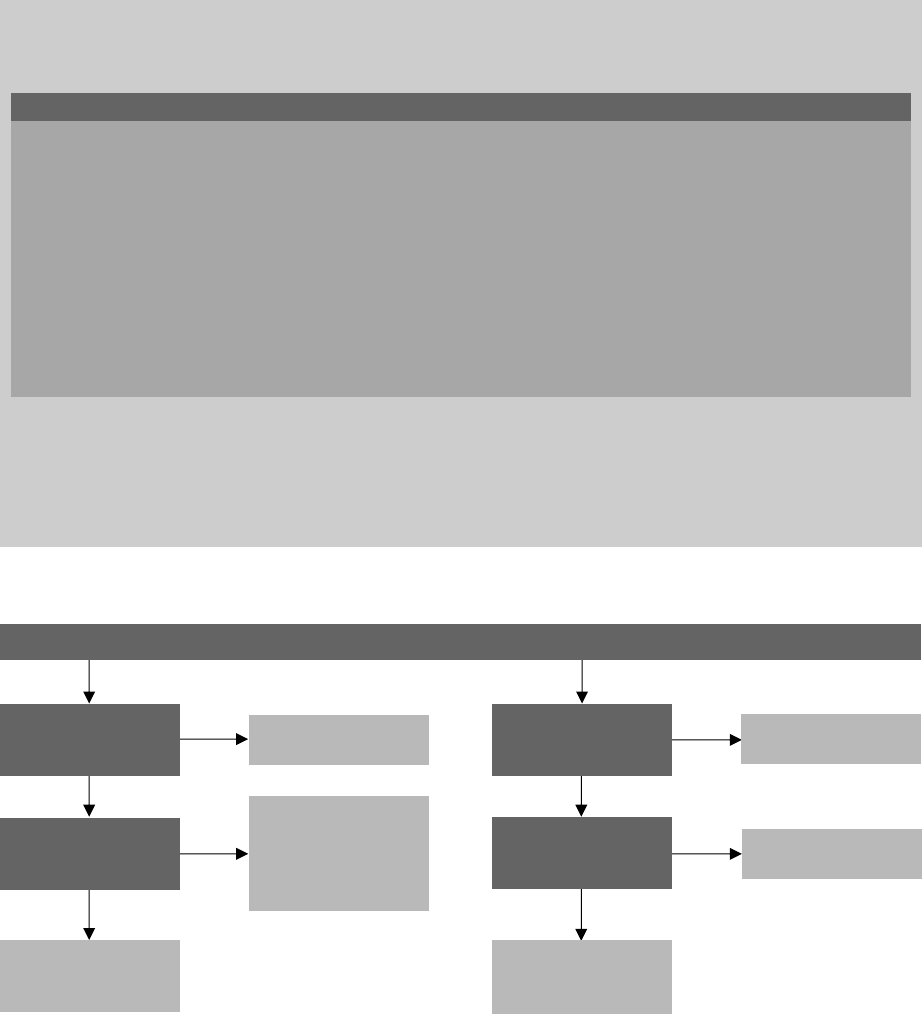
10 Presentation and disclosure (updated September 2022)
Financial reporting developments Revenue from contracts with customers (ASC 606) | 391
with Topic 310. Upon initial recognition of a receivable from a contract with a customer, any difference
between the measurement of the receivable in accordance with Topic 310 and the corresponding
amount of revenue recognized shall be presented as an expense (for example, as an impairment loss).
Pending content:
Transition Date: (P) December 16, 2019; (N) December 16, 2022 | Transition Guidance: 326-10-65-1
606-10-45-4
A receivable is an entity’s right to consideration that is unconditional. A right to consideration is
unconditional if only the passage of time is required before payment of that consideration is due. For
example, an entity would recognize a receivable if it has a present right to payment even though that
amount may be subject to refund in the future. An entity shall account for a receivable in accordance with
Topic 310 and Subtopic 326-20. Upon initial recognition of a receivable from a contract with a customer,
any difference between the measurement of the receivable in accordance with Subtopic 326-20 and
the corresponding amount of revenue recognized shall be presented as a credit loss expense.
606-10-45-5
This guidance uses the terms contract asset and contract liability but does not prohibit an entity from
using alternative descriptions in the statement of financial position for those items. If an entity uses an
alternative description for a contract asset, the entity shall provide sufficient information for a user of
the financial statements to distinguish between receivables and contract assets.
The following flowchart illustrates how an entity determines whether to recognize a receivable, a contract
asset or a contract liability on the balance sheet:
* If the customer can cancel the contract and receive a refund of the advance payment, an entity should consider recognizing a
refund liability (separate from contract liabilities — see Question 10-4 below).
** This assumes the consideration received is equal to the amount that the entity is entitled to for the good or service already
transferred. If the consideration received is less than this amount, an entity may need to recognize a contract asset or a
receivable for the difference. If the consideration received is more than this amount, an entity may need to recognize a contract
liability or a refund liability.
When an entity satisfies a performance obligation by transferring a promised good or service, the entity has
earned a right to consideration from the customer and, therefore, has a contract asset. When the customer
performs first (e.g., by prepaying its promised consideration), the entity has a contract liability.
Contract assets may represent conditional or unconditional rights to consideration. The right is conditional,
for example, when an entity first must satisfy another performance obligation in the contract before it is
entitled to payment from the customer. If an entity has an unconditional right to receive consideration
No
Has the entity transferred a good or service?
Does the entity have
an unconditional right
to consideration?
Recognize a receivable
Has the entity received
consideration?
Does the entity have
an unconditional right
to consideration?
Recognize a
contract asset
Recognize a
contract liability*
Consider recognizing a
receivable and a
contract liability
(refer to Question 10-6
for factors to consider)
No recognition
necessary
Has the entity received
consideration?
No recognition
necessary**
No
No
Yes
No
No
Yes
Yes
Yes
Yes

10 Presentation and disclosure (updated September 2022)
Financial reporting developments Revenue from contracts with customers (ASC 606) | 392
from the customer, the contract asset is accounted for as a receivable and presented separately from
other contract assets.
291
A right is unconditional if nothing other than the passage of time is required
before payment of that consideration is due.
In the Basis for Conclusions of ASU 2014-09,
292
the Board explains that in many cases an unconditional
right to consideration (i.e., a receivable) arises when an entity satisfies a performance obligation, which
could be before it invoices the customer (e.g., an unbilled receivable) if only the passage of time is required
before payment of that consideration is due. It is also possible for an entity to have an unconditional right
to consideration before it satisfies a performance obligation. In some industries, it is common for an
entity to invoice its customers in advance of performance (and satisfaction of the performance obligation).
For example, an entity that enters into a noncancellable contract requiring payment a month before the
entity provides the goods or services would record a receivable and a contract liability on the date the
entity has an unconditional right to the consideration (see Question 10-6 below for factors to consider
when assessing whether an entity’s right to consideration is considered unconditional). In this situation,
revenue is not recognized until goods or services are transferred to the customer.
In the Basis for Conclusions of ASU 2014-09,
293
the Board noted that making the distinction between a
contract asset and a receivable is important because doing so provides users of financial statements with
relevant information about the risks associated with the entity’s rights in a contract. Although both are
subject to credit risk, a contract asset also is subject to other risks (e.g., performance risk). Further, in
the Basis for Conclusions of ASU 2016-10,
294
the Board observed that the guidance in ASC 606-10-45-4
should be sufficient to enable entities to assess whether an asset should be presented as a receivable.
Under the standard, entities are not required to use the terms “contract asset” or “contract liability,” but
they must disclose sufficient information so that users of the financial statements can clearly distinguish
between unconditional rights to consideration (receivables) and conditional rights to receive consideration
(contract assets). Additionally, entities with a classified balance sheet should consider the guidance in
ASC 210-10 on classification of current assets and liabilities when determining whether their contract
assets and contract liabilities should be presented as current or noncurrent.
The standard provides the following example of presentation of contract balances:
Excerpt from Accounting Standards Codification
Revenue from Contracts with Customers — Overall
Implementation Guidance and Illustrations
Example 38 — Contract Liability and Receivable
Case A — Cancellable Contract
606-10-55-284
On January 1, 20X9, an entity enters into a cancellable contract to transfer a product to a customer on
March 31, 20X9. The contract requires the customer to pay consideration of $1,000 in advance on
January 31, 20X9. The customer pays the consideration on March 1, 20X9. The entity transfers the
product on March 31, 20X9. The following journal entries illustrate how the entity accounts for the contract:
a. The entity receives cash of $1,000 on March 1, 20X9 (cash is received in advance of performance).
Cash $ 1,000
Contract liability $ 1,000
291
Paragraphs BC323 and BC324 of ASU 2014-09.
292
Paragraph BC325 of ASU 2014-09.
293
Paragraph BC323 of ASU 2014-09.
294
Paragraph BC36 of ASU 2016-20.

10 Presentation and disclosure (updated September 2022)
Financial reporting developments Revenue from contracts with customers (ASC 606) | 393
b. The entity satisfies the performance obligation on March 31, 20X9.
Contract liability $ 1,000
Revenue $ 1,000
Case B — Noncancellable Contract
606-10-55-285
The same facts as in Case A apply to Case B except that the contract becomes noncancellable on
January 31, 20X9. The following journal entries illustrate how the entity accounts for the contract:
a. January 31, 20X9 is the date at which the entity recognizes a receivable because it has an
unconditional right to consideration.
Receivable $ 1,000
Contract liability $ 1,000
b. The entity receives the cash on March 1, 20X9.
Cash $ 1,000
Receivable $ 1,000
c. The entity satisfies the performance obligation on March 31, 20X9.
Contract liability $ 1,000
Revenue $ 1,000
606-10-55-286
If the entity issued the invoice before January 31, 20X9, the entity would not recognize the receivable
and the contract liability in the statement of financial position because the entity does not yet have a
right to consideration that is unconditional (the contract is cancellable before January 31, 20X9).
The standard includes another example of presentation of contract balances that illustrates when an
entity has satisfied a performance obligation but does not have an unconditional right to payment and
therefore recognizes a contract asset:
Excerpt from Accounting Standards Codification
Revenue from Contracts with Customers — Overall
Implementation Guidance and Illustrations
Example 39 — Contract Asset Recognized for the Entity’s Performance
606-10-55-287
On January 1, 20X8, an entity enters into a contract to transfer Products A and B to a customer in
exchange for $1,000. The contract requires Product A to be delivered first and states that payment
for the delivery of Product A is conditional on the delivery of Product B. In other words, the
consideration of $1,000 is due only after the entity has transferred both Products A and B to the
customer. Consequently, the entity does not have a right to consideration that is unconditional (a
receivable) until both Products A and B are transferred to the customer.
606-10-55-288
The entity identifies the promises to transfer Products A and B as performance obligations and allocates
$400 to the performance obligation to transfer Product A and $600 to the performance obligation to
transfer Product B on the basis of their relative standalone selling prices. The entity recognizes revenue
for each respective performance obligation when control of the product transfers to the customer.

10 Presentation and disclosure (updated September 2022)
Financial reporting developments Revenue from contracts with customers (ASC 606) | 394
606-10-55-289
The entity satisfies the performance obligation to transfer Product A.
Contract asset $ 400
Revenue $ 400
606-10-55-290
The entity satisfies the performance obligation to transfer Product B and to recognize the
unconditional right to consideration.
Receivable $ 1,000
Contract asset $ 400
Revenue $ 600
Also consider the following example, which illustrates an unbilled receivable (rather than a contract asset):
Illustration 10-1: Unbilled receivable
On 14 September 20X0, Entity L enters into a contract to sell 100 widgets to Customer F at $10 per
widget. All of the widgets are delivered to Customer F on 29 September 20X0. Entity L invoices
Customer F on 12 October 20X0.
Entity L determines that revenue is recognized when control of the widgets transfers to Customer F on
29 September 20X0. Entity L records a corresponding receivable because only the passage of time is
required before payment of that consideration is due. That is, Entity L has an unconditional right to
consideration as of 29 September 20X0, even though Entity L has not yet issued an invoice. That is,
even though the amount is “unbilled,” it is still considered a receivable, rather than a contract asset.
After initial recognition, receivables and contract assets are subject to impairment assessments in accordance
with ASC 310. When entities adopt the new credit impairment standard (i.e., ASC 326), they will need to
estimate full lifetime expected credit losses for their accounts receivable and contract assets. Refer to our
FRD, Credit impairment under ASC 326, for more information. In addition, if there is a difference between
the initial measurement of the receivable under ASC 310 (or ASC 326) and the corresponding amount of
revenue, that difference should be presented as an expense (i.e., as an impairment loss under ASC 310 or a
credit loss under ASC 326). This is the case when the difference is attributable to customer credit risk rather
than an implied price concession. Implied price concessions are deducted from the contract price to derive
the transaction price, which is the amount recognized as revenue. Distinguishing between implied price
concessions and expense due to customer credit risk requires judgment (see section 5.2.1.1). Impairment
losses resulting from contracts with customers are presented separately from losses on other contracts in
accordance with ASC 606-10-50-4(b) (see section 10.2 for further discussion).
An entity could also have recorded other assets related to contracts with a customer (e.g., the incremental
costs of obtaining the contract, other costs incurred that meet the criteria for capitalization). The guidance
requires that any such assets be presented separately from contract assets and contract liabilities in the
statement of financial position or disclosed separately in the notes to the financial statements (assuming
they are material). These amounts are also assessed for impairment separately.

10 Presentation and disclosure (updated September 2022)
Financial reporting developments Revenue from contracts with customers (ASC 606) | 395
Update: As also discussed in Question 7-18 in section 7.1.4.3, the FASB issued ASU 2021-08 to amend
ASC 805 and require entities to apply ASC 606 to recognize and measure contract assets and contract
liabilities from contracts with customers acquired in a business combination. At the acquisition date, entities
will assess how the acquiree applied ASC 606 to determine the amounts to recognize. This generally will
result in entities recognizing contract assets and contract liabilities at amounts consistent with those
recorded by the acquiree. Requiring entities to apply ASC 606 creates an exception to the guidance in
ASC 805 that generally requires assets and liabilities acquired in a business combination to be accounted
for at fair value. For additional information, refer to section 4.4.3A of our FRD, Business combinations.
Question 10-1 How should an entity determine the presentation of contract assets and liabilities for contracts that
contain multiple performance obligations? [31 October 2014 TRG meeting, agenda paper no. 7; FASB
staff Q&As, question 61]
Members of the TRG generally agreed that contract assets and liabilities should be determined at the
contract level and not at the performance obligation level. That is, an entity does not separately
recognize an asset or liability for each performance obligation within a contract but aggregates them into
a single contract asset or liability.
This question arose in part because, under the standard, the amount and timing of revenue recognition is
determined based on progress toward complete satisfaction of each performance obligation. Therefore,
some constituents questioned whether an entity could have a contract asset and a contract liability for a
single contract when, for example, the entity has satisfied (or partially satisfied) one performance
obligation in a contract for which consideration is not yet due but has received a prepayment for another
unsatisfied performance obligation in the contract. Members of the TRG generally agreed that the
discussion in the Basis for Conclusions of ASU 2014-09
295
was clear that contract asset or contract
liability positions are determined for each contract on a net basis. This is because the rights and obligations
in a contract with a customer are interdependent — the right to receive consideration from a customer
depends on the entity’s performance and similarly, the entity performs only as long as the customer
continues to pay. The Board decided that those interdependencies are best reflected by accounting and
presenting contract assets or liabilities on a net basis.
Consider the following example:
Illustration 10-2: Presentation of contract assets and liabilities
Entity A has a contract with Customer B to transfer on 1 January 20X0 a license for the right to use
Entity A’s intellectual property in exchange for a $200,000 milestone payment that is contingent upon
Customer B achieving a specific outcome. The contract also includes a one-year service to be provided
by Entity A for fixed consideration of $100,000 that is paid up front by Customer B at contract inception.
Assume Entity A concludes there are two performance obligations: one for the functional license of
intellectual property that will be satisfied when the license is delivered and one for the service that will
be recognized over time using a time-elapsed measure of progress. On 1 January 20X0, the license is
delivered, and the service commences.
295
Paragraph BC317 of ASU 2014-09.

10 Presentation and disclosure (updated September 2022)
Financial reporting developments Revenue from contracts with customers (ASC 606) | 396
Entity A determines that the milestone payment is variable consideration. Because of the binary nature
of the outcome (i.e., the entity will either receive the milestone payment or not), Entity A determines
that the most likely amount method (discussed in section 5.2.2) is the better predictor of the amount to
which it expects to be entitled. Entity A believes it is 90% probable that it will receive the $200,000
milestone payment and, therefore, using the most likely amount method, estimates it will receive the
full $200,000. Entity A then allocates the total transaction price of $300,000 (variable consideration
of $200,000 plus the fixed consideration of $100,000) to the license and the service based on their
relative standalone selling prices (assume this arrangement does not meet the variable consideration
allocation exception). Further, assume that $200,000 is allocated to the license and $100,000 is
allocated to the service (i.e., the components were priced at their standalone selling price).
On 1 January 20X0, when Entity A satisfies the performance obligation related to the license, it
recognizes revenue and a contract asset of $200,000. A contract asset is recorded (rather than a
receivable) because Entity A’s right to the consideration is contingent upon something other than the
passage of time (i.e., Customer B achieving a specific outcome). The performance obligation associated
with the service results in the recognition of a contract liability of $100,000 as of 1 January 20X0
because Entity A paid up front for the service.
On 31 March 20X0, related to the contract with Customer B, Entity A has a contract asset of $200,000
(because the condition to receive consideration for the license has still not been met) and a contract
liability of $75,000 (because $25,000 of revenue has been recognized for one quarter of service). For
presentation purposes at 31 March 20X0, Entity A nets the contract asset of $200,000 and the
contract liability of $75,000 and presents a net contract asset of $125,000.
After determining the net contract asset or contract liability position for a contract, entities with a
classified balance sheet should consider the guidance in ASC 210-10 on classification of current assets
and liabilities when determining whether their contract assets and contract liabilities should be presented
as current or noncurrent.
Question 10-2 How should an entity determine the presentation of two or more contracts that have been required to
be combined under the standard? [31 October 2014 TRG meeting, agenda paper no. 7; FASB staff
Q&As, question 62]
TRG members generally agreed that the contract asset or liability would be combined (i.e., presented
net) for different contracts with the same customer (or a related party of the customer) if an entity is
otherwise required to combine those contracts under the standard (see section 3.3 for discussion of the
criteria for combining contracts). When two or more contracts are required to be combined under the
standard, the rights and obligations in the individual contracts are interdependent. Therefore, as
discussed in Question 10-1, this interdependency is best reflected by combining the individual contracts
as if they were a single contract. TRG members acknowledged that this analysis may be operationally
difficult for some entities because their systems may capture data at the performance obligation level to
comply with the recognition and measurement aspects of the standard.
Question 10-3 When should an entity offset contract assets and liabilities against other balance sheet items? [31
October 2014 TRG meeting, agenda paper no. 7; FASB staff Q&As, question 63]
TRG members generally agreed that because the standard does not provide offsetting guidance, entities
need to look to other guidance outside the revenue standard to determine whether offsetting is appropriate
(e.g., the balance sheet offsetting guidance in ASC 210-20). For example, if an entity has recorded a
contract asset (or a receivable) and a contract liability (or refund liability) from separate contracts with the
same customer (that are not required to be combined under the standard), the entity needs to look to other
guidance outside the revenue standard to determine whether offsetting is appropriate.

10 Presentation and disclosure (updated September 2022)
Financial reporting developments Revenue from contracts with customers (ASC 606) | 397
Question 10-4 Is a refund liability a contract liability (and thus subject to the presentation and disclosure
requirements of a contract liability)?
As discussed in the Basis for Conclusions of ASU 2016-20,
296
an entity should determine whether a refund
liability should be characterized as a contract liability based on the specific facts and circumstances of
the arrangement. We believe that a refund liability does not typically meet the definition of a contract
liability. When an entity concludes that a refund liability is not a contract liability, it should present the
refund liability separate from any contract liability (or asset), and the refund liability is not subject to the
disclosure requirements of ASC 606-10-50-8 and 50-10 discussed in section 10.5.1.2 below.
When a customer pays consideration (or consideration is unconditionally due) and the entity has an
obligation to transfer goods or services to the customer, the entity records a contract liability. When the
entity expects to refund some or all of the consideration received (or receivable) from the customer, it
records a refund liability. A refund liability generally does not represent an obligation to transfer goods
or services in the future. Similar to receivables (which are considered a subset of contract assets), refund
liabilities could be considered a subset of contract liabilities. We believe refund liabilities are also similar
to receivables in that they should be extracted from the net contract position and presented separately
(if material). This conclusion is consistent with the standard’s specific requirement in ASC 606-10-55-27
to present the corresponding asset for expected returns separately (see section 5.4).
If an entity concludes, based on its specific facts and circumstances, that a refund liability represents an
obligation to transfer goods or services in the future, the refund liability would be a contract liability
subject to the disclosure requirements in ASC 606-10-50-8 and 50-10. Additionally, in that situation, the
entity should present a single net contract liability or asset (i.e., including the refund liability) determined
at the contract level as discussed in Question 10-1 above.
Question 10-5 How should an entity account for a contract asset that exists when a contract is modified if the
modification is treated as the termination of an existing contract and the creation of a new contract?
[18 April 2016 FASB TRG meeting, agenda paper no. 51; FASB staff Q&As, question 81]
FASB TRG members generally agreed that a contract asset that exists when a contract is modified should
be carried forward into the new contract if the modification is treated as the termination of an existing
contract and the creation of a new contract (see section 3.4.1).
Some stakeholders questioned the appropriate accounting for contract assets when this type of
modification occurs because the termination of the old contract could indicate that any remaining
balances associated with the old contract should be written off.
FASB TRG members generally agreed that it is appropriate to carry forward the related contract asset in
such modifications because the asset relates to a right to consideration for goods and services that have
already been transferred and are distinct from those to be transferred in the future. As such, the revenue
recognized to date should not be reversed and the contract asset should continue to be realized as
amounts become due from the customer and are presented as a receivable. The contract asset that
remains on the entity’s balance sheet at the date of modification continues to be subject to evaluation for
impairment in accordance with ASC 310 or ASC 326 (if adopted).
296
Paragraph BC37 of ASU 2016-20.

10 Presentation and disclosure (updated September 2022)
Financial reporting developments Revenue from contracts with customers (ASC 606) | 398
Consider the following example included in the TRG agenda paper:
Example of accounting for an existing contract asset when the contract is modified
Vendor A enters into a contract to provide a good and one year of service. The transaction price is
$4,200. The good and service are separate performance obligations, and the service is considered a
series of distinct goods or services (see section 4.2.2). The standalone selling price for the good is
$3,000, and the standalone selling price for the services is $100 per month ($1,200 for one year).
Therefore, Vendor A allocates $3,000 to the good and $1,200 to the services. Customer B will pay 12
equal installments of $350. Vendor A will invoice Customer B at the end of each month.
At the beginning of the first month, the good is transferred to Customer B, and the revenue allocated
to that performance obligation ($3,000) is recognized. Vendor A also recognizes a contract asset for
$3,000 because payment of that $3,000 is conditional upon Vendor A’s performance of future services.
At the end of the first month, Vendor A recognizes revenue of $100 for progress toward complete
satisfaction of the performance obligation related to the services (assuming the entity is using a time-
based measure of progress). Vendor A also recognizes accounts receivable of $350 because that
amount is not conditional. The contract asset, which had a balance of $3,000 at the beginning of the
month, would have a balance of $2,750 at the end of the first month.
Vendor A continues to make similar entries for the first nine months of the contract. After nine months,
$3,900 of revenue has been recognized for the contract ($900 of revenue for the services and $3,000
for the good). Vendor A has a receivable for $350 (assuming Customer B already paid the first eight
installments). In addition, Vendor A has a contract asset for $750 ($3,000 – (9 x ($350 – $100))).
At the end of nine months, the contract is modified to include one additional year of service. The fee
for the last three months of the initial one-year contract is unchanged, but the agreed-upon fee for the
additional one year of services is $50 per month, which is significantly below the standalone selling
price of the services.
In addition, because the remaining services are a series of distinct services, Vendor A determines that
the remaining services are distinct from the goods or services transferred prior to the modification.
Therefore, the modification would be accounted for under ASC 606-10-25-13(a) (i.e., as a termination
of the existing contract and the creation of a new contract, as discussed in section 3.4).
At the modification date, Vendor A retains the existing contract asset of $750 that relates to revenue
previously recognized but that has not been paid by the customer (and that is not presented as a
receivable). Vendor A also determines the total consideration to be allocated to the remaining
performance obligations. The consideration promised by Customer B that was included in the transaction
price, but not yet recognized as revenue under the original contract, is $300 (equal to $4,200
transaction price – $3,900 already recognized as revenue). The additional consideration promised as
part of the contract modification is $600 (equal to 12 additional months × $50 per month). Thus, the
total amount of consideration allocated to the remaining distinct services is $900 ($300 + $600).
Vendor A would allocate the $900 to the remaining performance obligations and recognize revenue over
the remaining modified contract duration. Subsequent to the contract modification, the contract asset
would be evaluated and accounted for in the same manner as any other contract asset.
While the FASB TRG members did not discuss this point, we believe a similar conclusion is appropriate when
accounting for an asset created under ASC 340-40, such as capitalized commissions, which exists
immediately before a contract modification that is treated as if it were a termination of the existing contract
and creation of a new contract. Refer to Question 9-12 in section 9.3.1 for further discussion.

10 Presentation and disclosure (updated September 2022)
Financial reporting developments Revenue from contracts with customers (ASC 606) | 399
Question 10-6 When should an entity record a receivable if it has not transferred a good or service but has an
unconditional right to payment?
ASC 606-10-45-4 states that a receivable is an entity’s right to consideration that is unconditional. We
believe it may be difficult to assert that the entity has an unconditional right to payment when it has not
transferred a good or service.
An entity may enter into noncancellable contracts that provide unconditional rights to payment from the
customer for services that the entity has not yet completed providing or services it will provide in the
near future (e.g., advance billings related to a service or maintenance arrangement). When determining
whether it is acceptable (or required) for an entity to record accounts receivable and contract liability,
the contract terms and specific facts and circumstances supporting the existence of an unconditional
right to payment should be evaluated. Factors to consider include:
• Does the entity have a contractual (or legal) right to bill and receive payment from the customer for
services being provided currently (and not yet completed) or being provided in the near future
(e.g., advance billings related to a service or maintenance arrangement)?
• Is the advance billing consistent with the entity’s normal billing terms?
• Will the entity commence performance within a relatively short timeframe of the invoice date?
• Is there more than one year between the advance billing and performance?
10.2 Presentation requirements for revenue from contracts with customers
(updated September 2022)
The Board decided
297
to require entities to separately present or disclose the amount of revenue related
to contracts with customers as follows:
Excerpt from Accounting Standards Codification
Revenue from Contracts with Customers — Overall
Disclosure
Contracts with Customers
606-10-50-4
An entity shall disclose all of the following amounts for the reporting period unless those amounts are
presented separately in the statement of comprehensive income (statement of activities) in
accordance with other Topics:
a. Revenue recognized from contracts with customers, which the entity shall disclose separately
from its other sources of revenue
b. Any impairment losses recognized (in accordance with Topic 310 on receivables) on any
receivables or contract assets arising from an entity’s contracts with customers, which the entity
shall disclose separately from impairment losses from other contracts.
297
Paragraph BC332 of ASU 2014-09.

10 Presentation and disclosure (updated September 2022)
Financial reporting developments Revenue from contracts with customers (ASC 606) | 400
Pending content:
Transition Date: (P) December 16, 2019; (N) December 16, 2022 | Transition Guidance: 326-10-65-1
606-10-50-4
An entity shall disclose all of the following amounts for the reporting period unless those amounts
are presented separately in the statement of comprehensive income (statement of activities) in
accordance with other Topics:
a. Revenue recognized from contracts with customers, which the entity shall disclose separately
from its other sources of revenue
b. Credit losses recorded (in accordance with Subtopic 326-20 on financial instruments measured
at amortized cost) on any receivables or contract assets arising from an entity’s contracts with
customers, which the entity shall disclose separately from credit losses from other contracts.
ASC 606-10-50-4(a) requires an entity to disclose (or present in the statement of comprehensive
income) the amount of revenue recognized from contracts with customers under ASC 606 separately
from other sources of revenue. For example, a large equipment manufacturer that both sells and leases
its equipment should present (or disclose) amounts from these transactions separately.
ASC 606-10-50-4(b) also requires an entity to disclose impairment (under ASC 310) or credit (under
ASC 326) losses for receivables and contract assets arising from contracts with customers separately
from other impairment or credit losses if they are not presented separately in the statement of
comprehensive income. As noted in the Basis for Conclusions of ASU 2014-09,
298
the Board felt that
separately disclosing the impairment losses on contracts with customers provides the most relevant
information to users of financial statements.
Question 10-7 Can income outside the scope of ASC 606 be presented as revenue on the income statement?
It depends. Entities should consider ASC 606’s definition of revenue, which is “inflows or other
enhancements of assets of an entity or settlement of its liabilities (or a combination of both) from
delivering or producing goods, rendering services, or other activities that constitute the entity’s ongoing
major or central operations.”
While “ongoing major or central operations” is not defined, if the transaction involves the sale of an
asset, the nature of the asset and the purpose for which it was held by the entity may be informative. For
example, inventory accounted for under ASC 330 is, by definition, held for sale in the ordinary course of
business. Therefore, the sale of finished goods inventory is typically part of an entity’s ongoing major or
central operations. Conversely, PP&E accounted for under ASC 360 typically comprises long-lived
tangible assets used to create and distribute an entity’s products and services (as noted in ASC 360-10-
05-3). Therefore, the disposal of these assets is not typically part of an entity’s ongoing major or central
operations, and the difference between the net disposal proceeds and the carrying amount of the asset is
recognized as a gain or loss on disposal in accordance with ASC 610-20, not as revenue.
If an entity receives consideration as part of its ongoing major or central operations that is outside the
scope of ASC 606 (e.g., income from leasing activities in the scope of ASC 842), it may present the
income as revenue on the income statement. This view is consistent with the Basis for Conclusions of
ASU 2014-09,
299
which says that an entity may present interest income as revenue only when interest
income represents income from an entity’s ordinary activities (also discussed in section 5.5.2). However,
298
Paragraph BC334 of ASU 2014-09.
299
Paragraph BC247 of ASU 2014-09.

10 Presentation and disclosure (updated September 2022)
Financial reporting developments Revenue from contracts with customers (ASC 606) | 401
any revenue recognized that is outside the scope of ASC 606 should either be presented separately from
revenue from contracts with customers on the income statement or separately disclosed in the
footnotes. This is because ASC 606-10-50-4(a) (excerpted above) requires an entity to disclose (or
present in the statement of comprehensive income) the amount of revenue recognized from contracts
with customers under ASC 606 separately from other sources of revenue.
Question 10-8 Can an entity present components of revenue from a single performance obligation as separate
revenue line items on the income statement?
We believe entities should generally present revenue from contracts with customers at the contract or
performance obligation level and not at the individual promise level. This is because ASC 606-10-25-22
requires a promised good or service that does not meet the criteria to be considered distinct to be combined
with other promised goods or services until a distinct bundle of goods or services exists (see section 4.3).
However, Rule 5-03(b)(1) of Regulation S-X requires registrants to separately present revenue from the
sale of tangible products and revenue from the provision of services in the income statement (see section
10.3.1). Therefore, a registrant may present revenue from the sale of goods and services that are
combined into a single performance obligation separately on the income statement when that
presentation is required by Rule 5-03(b).
The SEC staff has encouraged registrants to submit fact patterns where applying Rule 5-03(b) could
result in an income statement presentation of revenue that is inconsistent with ASC 606.
300
10.3 Other presentation considerations
The standard also prescribes the presentation requirements for products expected to be returned and for
contracts that contain a significant financing component. Refer to sections 5.4 and 5.5.2 for presentation
considerations related to rights of return and significant financing components, respectively. Also refer to
section 9.3 for considerations related to the presentation of capitalized contract costs under ASC 340-40.
Question 10-9 How should entities classify shipping and handling costs in the income statement?
See response to Question 4-7 in section 4.1.2.
Question 10-10 How should the amortization of capitalized contract costs under ASC 340-40 be presented on the
income statement?
See response to Question 9-25 in section 9.3.3.
Question 10-11 How should capitalized contract costs under ASC 340-40 be presented on the statement of cash flows?
See response to Question 9-26 in section 9.3.3.
Question 10-12 How should entities determine the presentation of amounts billed to customers (e.g., shipping and
handling, expense or cost reimbursements, taxes or other assessments) under the standard (i.e., as
revenue or as a reduction of costs)? [18 July 2014 TRG meeting, agenda paper no. 2; FASB staff Q&As,
questions 27 and 64]
See response to Question 4-17 in section 4.4.4.
300
SEC Regulations Committee Highlights, 13 March 2018.

10 Presentation and disclosure (updated September 2022)
Financial reporting developments Revenue from contracts with customers (ASC 606) | 402
10.3.1 Regulation S-X presentation requirements
Many entities derive revenues from the sale of different product categories, or the sale of products and
services. In such cases, presentation of revenues by category may provide meaningful information to the
users of the financial statements, particularly if the gross margins of the various categories of
transactions are disparate. In addition to the disaggregated revenue disclosure requirements included in
ASC 606 that are discussed in section 10.5.1.1, Rule 5-03(b)(1) of Regulation S-X requires that
registrants separately state the following items on the face of the income statement:
• Net sales of tangible products (gross sales less discounts, returns and allowances)
• Operating revenue of public utilities or others
• Rental income
• Revenue from services
• Other revenues
If income is derived from more than one of the categories above, each item that does not exceed 10% of
the total of those items may be aggregated. Although not required, private companies should consider
the need for similar presentation of their revenues. Because commissions and fees earned from activities
reported net (i.e., when the entity is acting as an agent, see section 4.4) generally are considered service
revenues, this may require separate presentation of revenues from gross-reported transactions
(e.g., product revenues) and net-reported transactions (e.g., agency services revenues).
Additionally, also under Rule 5-03(b)(1) of Regulation S-X, if the amount of revenue reported by a
registrant includes excise taxes that are equal to or greater than 1% of the amount reported, the amount
of such excise taxes must be shown on the face of the statement parenthetically or otherwise.
Rule 5-03(b)(2) of Regulation S-X requires that costs and expenses applicable to sales and revenues be
presented on the face of the income statement in categories similar to the revenue categories listed
above. However, if revenues for items that represent less than 10% of total revenues have been
aggregated, the related costs and expenses should be combined in the same manner.
Although the classification of the provision for doubtful accounts in the income statement is not
prescribed by authoritative accounting literature, Rule 5-03(b)(5) of Regulation S-X requires registrants
to present such amounts as an expense and not as a reduction of revenue. In practice, such amounts are
generally presented as a component of SG&A.
10.4 Annual disclosure requirements
ASC 606 requires a comprehensive and coherent set of revenue recognition disclosures. The FASB
described the overall objective of the disclosures, as it has done in other recent standards, as follows:
Excerpt from Accounting Standards Codification
Revenue from Contracts with Customers — Overall
Disclosure
606-10-50-1
The objective of the disclosure requirements in this Topic is for an entity to disclose sufficient
information to enable users of financial statements to understand the nature, amount, timing, and
uncertainty of revenue and cash flows arising from contracts with customers. To achieve that
objective, an entity shall disclose qualitative and quantitative information about all of the following:
a. Its contracts with customers (see paragraphs 606-10-50-4 through 50-16)

10 Presentation and disclosure (updated September 2022)
Financial reporting developments Revenue from contracts with customers (ASC 606) | 403
b. The significant judgments, and changes in the judgments, made in applying the guidance in this
Topic to those contracts (see paragraphs 606-10-50-17 through 50-21)
c. Any assets recognized from the costs to obtain or fulfill a contract with a customer in accordance
with paragraph 340-40-25-1 or 340-40-25-5 (see paragraphs 340-40-50-1 through 50-6).
606-10-50-2
An entity shall consider the level of detail necessary to satisfy the disclosure objective and how much
emphasis to place on each of the various requirements. An entity shall aggregate or disaggregate
disclosures so that useful information is not obscured by either the inclusion of a large amount of
insignificant detail or the aggregation of items that have substantially different characteristics.
Each of the disclosure topics in the above excerpt is discussed further below. Because the disclosure
requirements differ for public and nonpublic entities, these topics are discussed in section 10.5 for public entities
and section 10.6 for nonpublic entities.
As explained in the Basis for Conclusions of ASU 2014-09,
301
many preparers raised concerns when the
Board was developing the standard that they would need to provide voluminous disclosures at a cost that
might outweigh any potential benefits. In the final standard, the FASB clarified its disclosure objective and
said the disclosures described in the guidance are not meant to be a checklist of minimum requirements.
That is, entities do not have to include disclosures that are not relevant or not material to them. In addition,
the FASB decided to require qualitative disclosures instead of tabular reconciliations for certain information.
How we see it
Entities should review their disclosures to determine whether they have met the standard’s objective
to enable users to understand the nature, amount, timing and uncertainty of revenue and cash flows
arising from contracts with customers. For example, some entities may make large payments to
customers that do not represent payment for a distinct good or service and therefore reduce the
transaction price and affect the amount and timing of revenue recognized. Although there are no
specific requirements in the standard to disclose balances related to consideration paid to a customer,
an entity may need to disclose qualitative and/or quantitative information about those arrangements
to meet the objective of the disclosure requirements in the standard if the amounts are material.
Question 10-13 Are the disclosure requirements in ASC 606 required for discontinued operations?
No. Entities with discontinued operations should follow the disclosure requirements in ASC 205-20 for
the discontinued operations. There are no requirements for entities to provide the disclosures under
ASC 606 for discontinued operations.
10.5 Disclosures for public entities
Under the standard, amounts disclosed are required for and as of each reporting period for which a
statement of comprehensive income and a statement of financial position are presented as follows:
301
Paragraphs BC327 and BC331 of ASU 2014-09.

10 Presentation and disclosure (updated September 2022)
Financial reporting developments Revenue from contracts with customers (ASC 606) | 404
Excerpt from Accounting Standards Codification
Revenue from Contracts with Customers — Overall
Disclosure
606-10-50-3
Amounts disclosed are for each reporting period for which a statement of comprehensive income
(statement of activities) is presented and as of each reporting period for which a statement of financial
position is presented. An entity need not disclose information in accordance with the guidance in this
Topic if it has provided the information in accordance with another Topic.
The following illustration depicts the disclosure requirements for public entities that are discussed further
below by category:
Public entity annual disclosure requirements
Category
Subcategory/type
Required annual disclosure*
Contracts
with
customers
Contracts with
customers
(see 10.2)
Quantitative
If not presented separately in the statement of comprehensive income:
• The amount of revenue recognized from contracts with customers
(i.e., ASC 606) separately from other sources of revenue
• Any impairment/credit losses from contract with customers
separately from other impairment losses
Disaggregation
of revenue
(see 10.5.1.1)
Quantitative and
qualitative
• Disaggregation of revenue from contracts with customers into categories
that depict how the nature, amount, timing and uncertainty of revenue
and cash flows are affected by economic factors
• Sufficient information to enable users of financial statements to
understand the relationship between the disclosure of disaggregated
revenue and revenue information that is disclosed for each reportable
segment, if the entity applies ASC 280 on segment reporting
Contract balances
(see 10.5.1.2)
Quantitative and
qualitative
• Opening and closing balances of receivables, contract assets and
contract liabilities
• Revenue recognized in the reporting period that was included in the
contract liability balance at the beginning of the period
• Explanation of how the timing of satisfaction of performance
obligations relates to the typical timing of payment and the effect
thereof on contract assets and liabilities
• Explanation of the significant changes in the contract asset and
contract liability balances during the reporting period
Performance
obligations
(see 10.5.1.3)
Quantitative and
qualitative
• Descriptive information about an entity’s performance obligations
(i.e., when typically satisfied, significant payment terms, nature of
goods and services, obligations for returns, refunds, and other similar
obligations, and types of warranties and related obligations)
• Revenue recognized in the reporting period from performance
obligations satisfied (or partially satisfied) in previous periods
• Aggregate amount of the transaction price allocated to performance
obligations that are unsatisfied (or partially satisfied) as of the end of
the reporting period and explanation of when the related revenue is
expected to be recognized (subject to certain optional exemptions)

10 Presentation and disclosure (updated September 2022)
Financial reporting developments Revenue from contracts with customers (ASC 606) | 405
Category
Subcategory/type
Required annual disclosure*
Significant
judgments
(see 10.5.2)
Qualitative
• Judgments (and changes in judgments) made in determining the
timing of satisfaction of performance obligations, the transaction
price and amounts allocated to performance obligations, including:
• For performance obligations satisfied over time, the method used
to recognize revenue and why the method faithfully depicts the
transfer of goods and services
• For performance obligations satisfied at a point in time, significant
judgments made in evaluating when control transfers to a customer
• Methods, inputs and assumptions used to estimate variable
consideration, adjust consideration for the effects of time value of
money, measure noncash consideration and apply the constraint
• Methods, inputs and assumptions used to estimate standalone
selling prices and the use of any allocation exceptions
• Methods, inputs and assumptions used to measure obligations for
returns, refunds and other similar obligations
Costs to
obtain or
fulfill a
contract
(see 10.5.3)
Quantitative and
qualitative
• Judgments made in determining the amount of costs to obtain or
fulfill a contract
• Method used to determine amortization for each reporting period
• Closing balances of capitalized contract costs
• Amount of amortization and any impairment losses recognized in
the period
Practical
expedients
(see 10.5.4)
Qualitative
Use of the following practical expedients, accounting policy elections
and optional exemptions:
• Practical expedient on the existence of a significant financing component
• Practical expedient on expensing incremental costs of obtaining
a contract
• Election for shipping and handling activities
• Election for presentation of sales (and other similar) taxes
• Optional exemptions related to the transaction price allocated to
remaining performance obligations
* As discussed in section 10.4, the FASB decided to include annual disclosure guidance in ASC 606 to help an entity meet the
standard’s disclosure objective. However, those disclosures should not be viewed as a checklist of minimum requirements.
Refer to section 10.7 for information on interim disclosure requirements.
10.5.1 Contracts with customers
The majority of the standard’s disclosure requirements relate to an entity’s contracts with customers. These
disclosures include disaggregation of revenue, information about contract asset and liability balances, and
information about an entity’s performance obligations.
10.5.1.1 Disaggregation of revenue
Entities are required to disclose disaggregated revenue information to illustrate how the nature, amount,
timing and uncertainty of revenue and cash flows are affected by economic factors. Entities are not
required to disaggregate losses for uncollectible amounts. While the standard does not specify how
revenue should be disaggregated, the implementation guidance suggests categories for entities to consider.
The implementation guidance indicates that the most appropriate categories for a particular entity
depends on its facts and circumstances, but an entity should consider how it disaggregates revenue in
other communications (e.g., press releases, information regularly reviewed by the chief operating decision
maker) when determining which categories are most relevant and useful.

10 Presentation and disclosure (updated September 2022)
Financial reporting developments Revenue from contracts with customers (ASC 606) | 406
The standard includes the following guidance on the required disaggregation of revenue disclosures:
Excerpt from Accounting Standards Codification
Revenue from Contracts with Customers — Overall
Disclosure
Disaggregation of Revenue
606-10-50-5
An entity shall disaggregate revenue recognized from contracts with customers into categories that
depict how the nature, amount, timing, and uncertainty of revenue and cash flows are affected by
economic factors. An entity shall apply the guidance in paragraphs 606-10-55-89 through 55-91
when selecting the categories to use to disaggregate revenue.
606-10-50-6
In addition, an entity shall disclose sufficient information to enable users of financial statements to
understand the relationship between the disclosure of disaggregated revenue (in accordance with
paragraph 606-10-50-5) and revenue information that is disclosed for each reportable segment, if the
entity applies Topic 280 on segment reporting.
Implementation Guidance and Illustrations
Disclosure of Disaggregated Revenue
606-10-55-89
Paragraph 606-10-50-5 requires an entity to disaggregate revenue from contracts with customers
into categories that depict how the nature, amount, timing, and uncertainty of revenue and cash flows
are affected by economic factors. Consequently, the extent to which an entity’s revenue is
disaggregated for the purposes of this disclosure depends on the facts and circumstances that pertain
to the entity’s contracts with customers. Some entities may need to use more than one type of
category to meet the objective in paragraph 606-10-50-5 for disaggregating revenue. Other entities
may meet the objective by using only one type of category to disaggregate revenue.
606-10-55-90
When selecting the type of category (or categories) to use to disaggregate revenue, an entity should
consider how information about the entity’s revenue has been presented for other purposes, including
all of the following:
a. Disclosures presented outside the financial statements (for example, in earnings releases, annual
reports, or investor presentations)
b. Information regularly reviewed by the chief operating decision maker for evaluating the financial
performance of operating segments
c. Other information that is similar to the types of information identified in (a) and (b) and that is
used by the entity or users of the entity’s financial statements to evaluate the entity’s financial
performance or make resource allocation decisions.
606-10-55-91
Examples of categories that might be appropriate include, but are not limited to, all of the following:
a. Type of good or service (for example, major product lines)
b. Geographical region (for example, country or region)
c. Market or type of customer (for example, government and nongovernment customers)

10 Presentation and disclosure (updated September 2022)
Financial reporting developments Revenue from contracts with customers (ASC 606) | 407
d. Type of contract (for example, fixed-price and time-and-materials contracts)
e. Contract duration (for example, short-term and long-term contracts)
f. Timing of transfer of goods or services (for example, revenue from goods or services transferred
to customers at a point in time and revenue from goods or services transferred over time)
g. Sales channels (for example, goods sold directly to consumers and goods sold through
intermediaries).
As noted in the Basis for Conclusions of ASU 2014-09,
302
the Board decided not to prescribe a specific
characteristic of revenue as the basis for disaggregation because it intended for entities to make this
determination based on entity- and/or industry-specific factors that are the most meaningful for their
businesses. The Board acknowledged that an entity may need to use more than one type of category to
disaggregate its revenue.
We believe that when determining categories for disaggregation of revenue, entities should analyze specific
risk factors for each of their revenue streams to determine the proper level of revenue disaggregation
that will be beneficial to users of the financial statements. If certain risk factors could lead to changes in
the nature, amount, timing and uncertainty of revenue recognition and cash flows, those factors should be
considered as part of the evaluation.
ASC 606-10-50-3 clarifies that an entity does not have to duplicate disclosures required by another
standard. For example, an entity that provides disaggregated revenue disclosures as part of its segment
disclosures does not have to separately provide disaggregated revenue disclosures if the segment-
related disclosures are sufficient to illustrate how the nature, amount, timing and uncertainty of revenue
and cash flows from contracts with customers are affected by economic factors and are presented on a
basis consistent with US GAAP.
However, segment-related disclosures may not be sufficiently disaggregated to achieve the disclosure
objectives of the revenue standard. The Board noted in the Basis for Conclusions of ASU 2014-09
303
that
segment revenue disclosures may not always provide users of financial statements with enough information
to help them understand the composition of revenue recognized in the period. Under ASC 606-10-50-6,
an entity is required to explain the relationship between the disclosure of disaggregated revenue and
revenue information that is disclosed for each reportable segment. Users of the financial statements said
this information is critical to their ability to understand not only the composition of revenue but also how
revenue relates to other information provided in the segment disclosures. Entities can provide this
information in a tabular or a narrative form.
How we see it
The SEC staff continues to ask about registrants’ disaggregated revenue disclosures and request that
registrants explain how they considered the implementation guidance in ASC 606-10-55-89 through
55-91 when selecting the appropriate categories to disaggregate revenue. Specifically, the SEC staff
would like to understand how the registrant’s disclosures meet the objective of depicting how the
nature, amount, timing and uncertainty of revenue and cash flows are affected by economic factors.
302
Paragraph BC336 of ASU 2014-09.
303
Paragraph BC340 of ASU 2014-09.

10 Presentation and disclosure (updated September 2022)
Financial reporting developments Revenue from contracts with customers (ASC 606) | 408
Similar to its review of segment disclosures under ASC 280, the SEC staff may review all publicly
provided information (e.g., investor presentations, earnings calls) to evaluate whether an entity has
met the objectives of this disclosure requirement. The SEC staff has commented when registrants
have not disaggregated revenue in a manner similar to how they have disclosed information in other
communications. In accordance with ASC 606-10-55-90, an entity should consider how information
about its revenue has been presented for other purposes, including disclosures presented outside the
financial statements, information regularly reviewed by the chief operating decision maker and other
similar information used by the entity or users of the financial statements to evaluate the entity’s
financial performance or to make resource allocation decisions.
It is important to note that ASC 606 and ASC 280 have different objectives. The objective of the segment
reporting requirements in ASC 280 is to provide information about the different types of business
activities in which a public entity engages and the different economic environments in which it operates
to help users understand the entity’s performance and assess its prospects for future net cash flows.
These disclosure requirements are largely based on how a company evaluates its business from a margin
perspective and also permits aggregation in certain situations. On the other hand, ASC 606 disclosure
requirements focus on how the revenues and cash flows from contracts with customers are affected by
economic factors and do not have similar aggregation criteria. If an entity concludes it is necessary to
provide additional disaggregated revenue disclosures along with the segment disclosures required under
ASC 280, the entity is required under ASC 606 to explain the relationship between the disclosures.
The Board provided an example of disaggregation of revenue disclosures as follows:
Excerpt from Accounting Standards Codification
Revenue from Contracts with Customers — Overall
Implementation Guidance and Illustrations
Example 41 — Disaggregation of Revenue — Quantitative Disclosure
606-10-55-296
An entity reports the following segments: consumer products, transportation, and energy, in
accordance with Topic 280 on segment reporting. When the entity prepares its investor presentations,
it disaggregates revenue into primary geographical markets, major product lines, and timing of
revenue recognition (that is, goods transferred at a point in time or services transferred over time).
606-10-55-297
The entity determines that the categories used in the investor presentations can be used to meet
the objective of the disaggregation disclosure requirement in paragraph 606-10-50-5, which is to
disaggregate revenue from contracts with customers into categories that depict how the nature, amount,
timing, and uncertainty of revenue and cash flows are affected by economic factors. The following table
illustrates the disaggregation disclosure by primary geographical market, major product line, and timing
of revenue recognition, including a reconciliation of how the disaggregated revenue ties in with the
consumer products, transportation, and energy segments in accordance with paragraphs 606-10-50-6.
Consumer
Segments Products Transportation Energy Total
Primary Geographical Markets
North America $ 990 $ 2,250 $ 5,250 $ 8,490
Europe 300 750 1,000 2,050
Asia 700 260 – 960
$ 1,990 $ 3,260 $ 6,250 $ 11,500

10 Presentation and disclosure (updated September 2022)
Financial reporting developments Revenue from contracts with customers (ASC 606) | 409
Major Goods/Service Lines
Office Supplies $ 600 – – 600
Appliances 990 – – 990
Clothing 400 – – 400
Motorcycles – 500 – 500
Automobiles – 2,760 – 2,760
Solar panels – – 1,000 1,000
Power plant – – 5,250 5,250
$ 1,990 $ 3,260 $ 6,250 $ 11,500
Timing of Revenue Recognition
Goods transferred at
a point in time $ 1,990 $ 3,260 $ 1,000 $ 6,250
Services transferred over time – – 5,250 5,250
$ 1,990 $ 3,260 $ 6,250 $ 11,500
10.5.1.2 Contract balances
The Board noted in the Basis for Conclusions of ASU 2014-09
304
that users of the financial statements
need to understand the relationship between the revenue recognized and changes in the overall balances
of an entity’s total contract assets and liabilities during a particular reporting period. As a result, the
Board included the following disclosure requirements for an entity’s contract balances and changes in
the balances:
Excerpt from Accounting Standards Codification
Revenue from Contracts with Customers — Overall
Disclosure
Contract Balances
606-10-50-8
An entity shall disclose all of the following:
a. The opening and closing balances of receivables, contract assets, and contract liabilities from
contracts with customers, if not otherwise separately presented or disclosed
b. Revenue recognized in the reporting period that was included in the contract liability balance at
the beginning of the period
606-10-50-9
An entity shall explain how the timing of satisfaction of its performance obligations (see paragraph
606-10-50-12(a)) relates to the typical timing of payment (see paragraph 606-10-50-12(b)) and the
effect that those factors have on the contract asset and the contract liability balances. The explanation
provided may use qualitative information.
304
Paragraph BC341 of ASU 2014-09.

10 Presentation and disclosure (updated September 2022)
Financial reporting developments Revenue from contracts with customers (ASC 606) | 410
606-10-50-10
An entity shall provide an explanation of the significant changes in the contract asset and the contract
liability balances during the reporting period. The explanation shall include qualitative and quantitative
information. Examples of changes in the entity’s balances of contract assets and contract liabilities
include any of the following:
a. Changes due to business combinations
b. Cumulative catch-up adjustments to revenue that affect the corresponding contract asset or
contract liability, including adjustments arising from a change in the measure of progress, a
change in an estimate of the transaction price (including any changes in the assessment of
whether an estimate of variable consideration is constrained), or a contract modification
c. Impairment of a contract asset
d. A change in the time frame for a right to consideration to become unconditional (that is, for a
contract asset to be reclassified to a receivable)
e. A change in the time frame for a performance obligation to be satisfied (that is, for the
recognition of revenue arising from a contract liability).
Entities are permitted to disclose information about contract balances and changes therein as they deem to
be most appropriate, which could include a combination of tabular and narrative information. The FASB
explained in the Basis for Conclusions of ASU 2014-09
305
that these disclosures are intended to provide
financial statement users with requested information on when contract assets are typically transferred to
accounts receivable or collected as cash and when contract liabilities are recognized as revenue.
The illustration below is an example of how an entity may fulfill these requirements:
Illustration 10-3: Contract asset and liability disclosures
Company A discloses receivables from contracts with customers separately in the statement of
financial position. To comply with the other disclosure requirements for contract assets and liabilities,
Company A includes the following information in the notes to the financial statements:
20X9
20X8
20X7
Contract asset
$ 1,500
$ 2,250
$ 1,800
Contract liability
(200)
(850)
(500)
Revenue recognized in the period from:
Amounts included in contract liability
at the beginning of the period
$ 650
$ 200
$ 100
We receive payments from customers based on a billing schedule as established in our contracts. Contract
asset relates to our conditional right to consideration for our completed performance under the contract.
Accounts receivable are recorded when the right to consideration becomes unconditional. Contract liability
relates to payments received in advance of performance under the contract. Contract liabilities are recognized
as revenue as (or when) we perform under the contract. In addition, contract asset decreased in 20X9 due
to a contract asset impairment of $400 relating to the early cancellation of a contract with a customer.
305
Paragraph BC346 of ASU 2014-09.

10 Presentation and disclosure (updated September 2022)
Financial reporting developments Revenue from contracts with customers (ASC 606) | 411
How we see it
Because ASC 606-10-50-8(a) requires entities to separately disclose contract balances from contracts
with customers, it is necessary for entities that have material receivables from non-ASC 606 contracts
to separate these balances for disclosure purposes. For example, an entity may have accounts
receivable relating to leasing contracts that need to be disclosed separately from accounts receivable
related to contracts with customers. Entities need to make sure they have appropriate systems,
policies and procedures and internal controls in place to collect and disclose the required information.
10.5.1.3 Performance obligations
To help users of financial statements analyze the nature, amount, timing and uncertainty of revenue and
cash flows arising from contracts with customers, the Board decided to require disclosures about an
entity’s performance obligations. As noted in the Basis for Conclusions of ASU 2014-09,
306
while
ASC 235 requires entities to disclose their accounting policies for recognizing revenue, users of financial
statements told the Board that many entities provided a “boilerplate” description that didn’t explain how
the policy related to the contracts they entered into with customers. To address this criticism, ASC 606
requires an entity to provide more descriptive information about its performance obligations.
Both quantitative and qualitative information are required as follows:
Excerpt from Accounting Standards Codification
Revenue from Contracts with Customers — Overall
Disclosure
Performance Obligations
606-10-50-12
An entity shall disclose information about its performance obligations in contracts with customers,
including a description of all of the following:
a. When the entity typically satisfies its performance obligations (for example, upon shipment, upon
delivery, as services are rendered, or upon completion of service) including when performance
obligations are satisfied in a bill-and-hold arrangement
b. The significant payment terms (for example, when payment typically is due, whether the contract
has a significant financing component, whether the consideration amount is variable, and
whether the estimate of variable consideration is typically constrained in accordance with
paragraphs 606-10-32-11 through 32-13)
c. The nature of the goods or services that the entity has promised to transfer, highlighting any
performance obligations to arrange for another party to transfer goods or services (that is, if the
entity is acting as an agent)
d. Obligations for returns, refunds, and other similar obligations
e. Types of warranties and related obligations.
606-10-50-12A
An entity shall disclose revenue recognized in the reporting period from performance obligations
satisfied (or partially satisfied) in previous periods (for example, changes in transaction price).
306
Paragraph BC354 of ASU 2014-09.

10 Presentation and disclosure (updated September 2022)
Financial reporting developments Revenue from contracts with customers (ASC 606) | 412
The standard requires entities to disclose the amount of revenue recognized in the period that relates to
amounts allocated to performance obligations that were satisfied (or partially satisfied) in previous
periods (e.g., due to a change in transaction price or in estimates related to the constraint on revenue
recognized). Entities need to make sure they have appropriate systems, policies and procedures, and
internal controls in place to collect and disclose the required information. This disclosure requirement
applies to sales- and usage-based royalties received from a customer in exchange for a license of
intellectual property recognized as revenue in a reporting period related to performance obligations
satisfied (or partially satisfied) in previous periods (e.g., sales-based royalties recognized in the current
period related to functional intellectual property previously transferred to a customer). In the Basis for
Conclusions of ASU 2014-09,
307
the Board said this information is not required elsewhere in the financial
statements and provides relevant information about the timing of revenue recognized that was not a
result of performance in the current period.
Transaction price allocated to remaining performance obligations
A public entity is also required to disclose information about remaining performance obligations and the
amount of the transaction price allocated to such obligations, including an explanation of when it expects
to recognize the amount(s) in its interim and annual financial statements, subject to certain optional
exemptions, as follows:
Excerpt from Accounting Standards Codification
Revenue from Contracts with Customers — Overall
Disclosure
Transaction Price Allocated to the Remaining Performance Obligations
606-10-50-13
An entity shall disclose the following information about its remaining performance obligations:
a. The aggregate amount of the transaction price allocated to the performance obligations that are
unsatisfied (or partially unsatisfied) as of the end of the reporting period
b. An explanation of when the entity expects to recognize as revenue the amount disclosed in
accordance with paragraph 606-10-50-13(a), which the entity shall disclose in either of the
following ways:
1. On a quantitative basis using the time bands that would be most appropriate for the duration
of the remaining performance obligations
2. By using qualitative information.
606-10-50-14
An entity need not disclose the information in paragraph 606-10-50-13 for a performance obligation if
either of the following conditions is met:
a. The performance obligation is part of a contract that has an original expected duration of one
year or less.
b. The entity recognizes revenue from the satisfaction of the performance obligation in accordance
with paragraph 606-10-55-18.
307
Paragraph BC347 of ASU 2014-09.

10 Presentation and disclosure (updated September 2022)
Financial reporting developments Revenue from contracts with customers (ASC 606) | 413
606-10-50-14A
An entity need not disclose the information in paragraph 606-10-50-13 for variable consideration for
which either of the following conditions is met:
a. The variable consideration is a sales-based or usage-based royalty promised in exchange for a
license of intellectual property accounted for in accordance with paragraphs 606-10-55-65
through 55-65B.
b. The variable consideration is allocated entirely to a wholly unsatisfied performance obligation or
to a wholly unsatisfied promise to transfer a distinct good or service that forms part of a single
performance obligation in accordance with paragraph 606-10-25-14(b), for which the criteria in
paragraph 606-10-32-40 have been met.
606-10-50-14B
The optional exemptions in paragraphs 606-10-50-14(b) and 606-10-50-14A shall not be applied to fixed
consideration.
606-10-50-15
An entity shall disclose which optional exemptions in paragraphs 606-10-50-14 through 50-14A it is
applying. In addition, an entity applying the optional exemptions in paragraphs 606-10-50-14 through
50-14A shall disclose the nature of the performance obligations, the remaining duration (see paragraph
606-10-25-3), and a description of the variable consideration (for example, the nature of the variability
and how that variability will be resolved) that has been excluded from the information disclosed in
accordance with paragraph 606-10-50-13. This information shall include sufficient detail to enable users
of financial statements to understand the remaining performance obligations that the entity excluded
from the information disclosed in accordance with paragraph 606-10-50-13. In addition, an entity shall
explain whether any consideration from contracts with customers is not included in the transaction price
and, therefore, not included in the information disclosed in accordance with paragraph 606-10-50-13.
For example, an estimate of the transaction price would not include any estimated amounts of variable
consideration that are constrained (see paragraphs 606-10-32-11 through 32-13).
In the Basis for Conclusions of ASU 2014-09,
308
the Board noted that many financial statement users
commented that information about the amount and timing of revenue that an entity expects to recognize
from its existing contracts would be useful in their analyses of revenue, especially for long-term
contracts with significant unrecognized revenue. The Board also observed that a number of entities often
voluntarily disclose “backlog” information. However, this information typically is presented outside the
financial statements and may not be comparable with what other entities disclose because there is no
common definition of backlog.
As summarized in the Basis for Conclusions of ASU 2014-09,
309
the Board’s goal in including the
disclosure requirements in ASC 606-10-50-13 is to provide users of an entity’s financial statements with
additional information about the following:
• The amount and expected timing of revenue to be recognized from the remaining performance
obligations in existing contracts
• Trends relating to the amount and expected timing of revenue to be recognized from the remaining
performance obligations in existing contracts
308
Paragraphs BC348 and BC349 of ASU 2014-09.
309
Paragraph BC350 of ASU 2014-09.

10 Presentation and disclosure (updated September 2022)
Financial reporting developments Revenue from contracts with customers (ASC 606) | 414
• Risks associated with expected future revenue (e.g., some observe that revenue is more uncertain if
an entity does not expect to satisfy a performance obligation until a much later date)
• The effect of changes in judgments or circumstances on an entity’s revenue
This disclosure can be provided on either a quantitative basis (e.g., amounts to be recognized in given
time bands, such as between one and two years and between two and three years) or by disclosing a mix
of quantitative and qualitative information. In addition, this disclosure should only include amounts
related to performance obligations in the current contract. For example, expected contract renewals that
have not been executed and do not represent material rights are not performance obligations, so entities
should not disclose amounts related to these renewals. However, if an entity concludes that expected
contract renewals represent a material right to acquire goods or services in the future (and therefore
is a separate performance obligation — see section 4.6), the entity should include in its disclosure the
consideration attributable to the material right for the options that have not yet been exercised (i.e., the
unsatisfied performance obligation(s)).
Also consider the following illustration:
Illustration 10-4: Transaction price allocated to remaining performance obligations in an MSA
with a minimum purchase requirement
An entity sells equipment and consumables under a two-year MSA. Both the equipment and the
consumables are determined to be distinct performance obligations that are recognized at a point in
time. The standalone selling price of the equipment and each consumable is $10,000 and $100,
respectively. The equipment costs $8,000, and each consumable costs $60. The entity sells the
equipment for $6,000 (40% discount from the standalone selling price) with a customer option to
purchase each consumable for $100 (equal to its standalone selling price). The customer will incur a
penalty if it does not purchase at least 200 consumables over the next two years. The entity concludes
that the penalty is substantive and it creates a minimum purchase commitment. The option to
purchase the consumables does not represent a material right because it is priced at the standalone
selling price for the consumable.
As of the entity’s reporting date, the customer has purchased 80 consumables during the first six
months of the two-year contract. While the entity expects to sell quantities in excess of the remaining
120 units subject to the minimum purchase commitment, it only includes the transaction price for the
remaining 120 committed consumables in the disclosure of the transaction price allocated to
remaining performance obligations. This is because the MSA only commits the parties to the purchase
and sale of these minimum units. The entity should not include the transaction price for any expected
units in excess of the required minimum because the additional optional purchases are not within the
enforceable rights and obligations of the current contract with the customer.
The disclosure of the transaction price allocated to the remaining performance obligations does not
include consideration that has been excluded from the transaction price. However, the standard requires
entities to disclose qualitatively whether any consideration is not included in the transaction price and
therefore not included in the disclosure of the remaining performance obligations (e.g., amounts of
variable consideration that are constrained and excluded from the transaction price).
Optional exemptions
However, the FASB provided several optional exemptions related to the disclosure of the transaction
price allocated to the remaining performance obligations. Under the ASC 606-10-50-14(a) optional
exemption, an entity can decide to not disclose the amount of transaction price allocated to remaining
performance obligations for contracts with an original expected duration of less than one year. Optional
exemptions from this disclosure requirement are also available for entities in certain situations in which

10 Presentation and disclosure (updated September 2022)
Financial reporting developments Revenue from contracts with customers (ASC 606) | 415
they would not otherwise have had to estimate the total transaction price in order to recognize revenue.
That is, these exemptions are intended to eliminate the need for entities to estimate the total transaction
price solely for disclosure purposes. These situations include when:
• An entity applies the “right to invoice” practical expedient in ASC 606-10-55-18 (see ASC 606-10-50-14(b))
• Variable consideration in the contract is due to a sales- or usage-based royalty promised in exchange
for a license of intellectual property accounted for under ASC 606-10-55-65 through 65B (see
ASC 606-10-50-14A(a))
• Variable consideration is allocated entirely to a wholly unsatisfied performance obligation or to a wholly
unsatisfied promise to transfer a distinct good or service that forms part of a single performance
obligation (i.e., a series) when the criteria in ASC 606-10-32-40 are met (see ASC 606-10-50-14A(b))
As explained in section 7.1.4, the right to invoice practical expedient permits an entity that is recognizing
revenue over time to recognize revenue as invoiced if the entity’s right to payment is in an amount that
corresponds directly with the value to the customer of the entity’s performance to date. For example, an
entity may not be required to make the disclosure for a three-year service contract under which it has a
right to invoice the customer a fixed amount for each hour of service provided, provided that fixed
amount reflects the value to the customer.
As explained in section 8.5, when the consideration promised in exchange for a license of intellectual
property is based on a customer’s subsequent sale or usage, an entity should not recognize revenue for
the variable amounts until the uncertainty is resolved (i.e., the royalty recognition constraint). That is,
the amount of expected royalties to be received is not required to be estimated at contract inception.
Further, as discussed in section 6.3, variable consideration related to certain performance obligations
that are a series of distinct goods or services should be allocated specifically to one or more goods or
services within that performance obligation (provided certain criteria are met) but does not need to be
estimated for purposes of recognizing revenue.
However, it is important to note that the ASC 606-10-50-14A(b) optional exemption is available only for
wholly unsatisfied performance obligations or wholly unsatisfied promises to transfer distinct goods or
services in a series, for which the criteria in ASC 606-10-32-40 have been met. The Board explained in
the Basis for Conclusions of ASU 2016-20
310
that this exemption would not apply to partially satisfied
performance obligations or partially satisfied promises to transfer a distinct good or service in a series
because an entity would need to estimate the variable consideration for revenue recognition purposes
and would therefore be required to disclose the remaining amounts to be recognized.
None of the optional exemptions provided to save entities from estimating variable consideration solely
for disclosure purposes (i.e., ASC 606-10-50-14(b) and 606-10-50-14A) apply to fixed consideration.
That is, as explained in the Basis for Conclusions of ASU 2016-20,
311
these exemptions only apply to the
portion of the transaction price that is variable consideration and that meets the conditions of the
optional exemptions. If a contract includes both fixed consideration and variable consideration and the
variable consideration meets one of the conditions to apply the optional exemptions, an entity would still
be required to disclose the remaining fixed consideration. For example, an entity that elects the optional
exemption in ASC 606-10-50-14A(a) does need not to disclose variable consideration that results from a
sales- or usage-based royalty. However, it still needs to disclose any fixed consideration in the contract,
such as any guaranteed minimums. That is, it would disclose the remaining amount to be recognized of a
guaranteed minimum included in a sales- or usage-based royalty, because the guaranteed minimum is
considered fixed consideration.
310
Paragraph BC24 of ASU 2016-20.
311
Paragraph BC24 of ASU 2016-20.

10 Presentation and disclosure (updated September 2022)
Financial reporting developments Revenue from contracts with customers (ASC 606) | 416
Entities that elect to use any of the standard’s optional exemptions allowing them not to disclose the
aggregate transaction price allocated to the remaining performance obligations must disclose which
exemption(s) they are applying, the nature of the performance obligations, the remaining duration of the
contract and a description of the variable consideration (e.g., the nature of the variability, how that
variability will be resolved) that has been excluded from the information disclosed. As described in the
Basis for Conclusions of ASU 2016-20,
312
the FASB’s objective in the disclosures required by ASC 606-
10-50-15 is to enable financial statement users to understand the transaction price allocated to
remaining performance obligations that an entity has excluded from its other disclosures. The FASB also
noted
313
that it did not prescribe a specific way an entity would comply with these disclosures and, as
such, an entity does have discretion. However, the FASB suggested
314
possible ways that an entity could
comply with these disclosure requirements, as follows:
• Disclose the proportion of the entity’s current-period revenue that is variable consideration and that
meets the exemption criteria
• Disclose the remaining contract duration for each significant customer (as defined in ASC 280)
• Disclose a range of contract maturities and/or an estimated weighted average
The standard provides the following examples of these required disclosures:
Excerpt from Accounting Standards Codification
Revenue from Contracts with Customers — Overall
Implementation Guidance and Illustrations
Example 42 — Disclosure of the Transaction Price Allocated to the Remaining Performance Obligations
606-10-55-298
On June 30, 20X7, an entity enters into three contracts (Contracts A, B, and C) with separate
customers to provide services. Each contract has a two-year noncancellable term. The entity considers
the guidance in paragraphs 606-10-50-13 through 50-15 in determining the information in each
contract to be included in the disclosure of the transaction price allocated to the remaining performance
obligations at December 31, 20X7.
Contract A
606-10-55-299
Cleaning services are to be provided over the next two years typically at least once per month. For
services provided, the customer pays an hourly rate of $25.
606-10-55-300
Because the entity bills a fixed amount for each hour of service provided, the entity has a right to invoice
the customer in the amount that corresponds directly with the value of the entity’s performance
completed to date in accordance with paragraph 606-10-55-18. Consequently, the entity could elect
to apply the optional exemption in paragraph 606-10-50-14(b). If the entity elects not to disclose the
transaction price allocated to remaining performance obligations for Contract A, the entity would
disclose that it has applied the optional exemption in paragraph 606-10-50-14(b). The entity also
would disclose the nature of the performance obligation, the remaining duration, and a description
of the variable consideration that has been excluded from the disclosure of remaining performance
obligations in accordance with paragraph 606-10-50-15.
312
Paragraph BC28 of ASU 2016-20.
313
Paragraph BC29 of ASU 2016-20.
314
Paragraphs BC28 and BC29 of ASU 2016-20.

10 Presentation and disclosure (updated September 2022)
Financial reporting developments Revenue from contracts with customers (ASC 606) | 417
Contract B
606-10-55-301
Cleaning services and lawn maintenance services are to be provided as and when needed with a
maximum of four visits per month over the next two years. The customer pays a fixed price of $400
per month for both services. The entity measures its progress toward complete satisfaction of the
performance obligation using a time-based measure.
606-10-55-302
The entity discloses the amount of the transaction price that has not yet been recognized as revenue
in a table with quantitative time bands that illustrates when the entity expects to recognize the amount
as revenue. The information for Contract B included in the overall disclosure is as follows.
20X8 20X9 Total
Revenue expected to be recognized
on this contract as of December 31, 20X7 $4,800
(a)
$2,400
(b)
$7,200
(a)
$4,800 = $400 x 12 months
(b)
$2,400 = $400 x 6 months
Contract C
606-10-55-303
Cleaning services are to be provided as and when needed over the next two years. The customer pays
fixed consideration of $100 per month plus a one-time variable consideration payment ranging from $0 —
$1,000 corresponding to a one-time regulatory review and certification of the customer’s facility (that is,
a performance bonus). The entity estimates that it will be entitled to $750 of the variable consideration.
On the basis of the entity’s assessment of the factors in paragraph 606-10-32-12, the entity includes its
estimate of $750 of variable consideration in the transaction price because it is probable that a significant
reversal in the amount of cumulative revenue recognized will not occur. The entity measures its
progress toward complete satisfaction of the performance obligation using a time-based measure.
606-10-55-304
The entity discloses the amount of the transaction price that has not yet been recognized as revenue in a
table with quantitative time bands that illustrates when the entity expects to recognize the amount as
revenue. The entity also includes a qualitative discussion about any significant variable consideration that is
not included in the disclosure. The information for Contract C included in the overall disclosure is as follows.
20X8 20X9 Total
Revenue expected to be recognized
on this contract as of December 31, 20X7 $1,575
(a)
$788
(b)
$2,363
(a)
Transaction price = $3,150 ($100 x 24 months + $750 variable consideration) recognized evenly over 24 months at $1,575
per year
(b)
$1,575 2 = $788 (that is, for 6 months of the year)
606-10-55-305
In addition, in accordance with paragraph 606-10-50-15, the entity discloses qualitatively that part of
the performance bonus has been excluded from the disclosure because it was not included in the
transaction price. That part of the performance bonus was excluded from the transaction price in
accordance with the guidance on constraining estimates of variable consideration.
606-10-55-305A
The entity does not meet the criteria to apply the optional exemption in paragraph 606-10-50-14A
because the monthly consideration is fixed and the variable consideration does not meet the condition
in paragraph 606-10-50-14A(b).

10 Presentation and disclosure (updated September 2022)
Financial reporting developments Revenue from contracts with customers (ASC 606) | 418
The standard also provides an example of how an entity could make the disclosure required by ASC 606-
10-50-13(b) using qualitative information (as opposed to quantitatively using time bands) as follows:
Excerpt from Accounting Standards Codification
Revenue from Contracts with Customers — Overall
Implementation Guidance and Illustrations
Example 43 — Disclosure of the Transaction Price Allocated to the Remaining Performance
Obligations — Qualitative Disclosure
606-10-55-306
On January 1, 20X2, an entity enters into a contract with a customer to construct a commercial
building for fixed consideration of $10 million. The construction of the building is a single performance
obligation that the entity satisfies over time. As of December 31, 20X2, the entity has recognized
$3.2 million of revenue. The entity estimates that construction will be completed in 20X3 but it is
possible that the project will be completed in the first half of 20X4.
606-10-55-307
At December 31, 20X2, the entity discloses the amount of the transaction price that has not yet been
recognized as revenue in its disclosure of the transaction price allocated to the remaining performance
obligations. The entity also discloses an explanation of when the entity expects to recognize that
amount as revenue. The explanation can be disclosed either on a quantitative basis using time bands
that are most appropriate for the duration of the remaining performance obligation or by providing a
qualitative explanation. Because the entity is uncertain about the timing of revenue recognition, the
entity discloses this information qualitatively as follows:
As of December 31, 20X2, the aggregate amount of the transaction price allocated to the remaining
performance obligation is $6.8 million, and the entity will recognize this revenue as the building is
completed, which is expected to occur over the next 12-18 months.
10.5.2 Significant judgments
The guidance requires disclosure of significant accounting estimates and judgments made in determining
the transaction price, allocating the transaction price to performance obligations and determining when
performance obligations are satisfied, as follows:
Excerpt from Accounting Standards Codification
Revenue from Contracts with Customers — Overall
Disclosure
Significant Judgments in the Application of the Guidance in this Topic
606-10-50-17
An entity shall disclose the judgments, and changes in the judgments, made in applying the guidance
in this Topic that significantly affect the determination of the amount and timing of revenue from
contracts with customers. In particular, an entity shall explain the judgments, and changes in the
judgments, used in determining both of the following:
a. The timing of satisfaction of performance obligations (see paragraphs 606-10-50-18 through 50-19)
b. The transaction price and the amounts allocated to performance obligations (see paragraph
606-10-50-20).

10 Presentation and disclosure (updated September 2022)
Financial reporting developments Revenue from contracts with customers (ASC 606) | 419
US GAAP has general guidance requiring disclosures about significant accounting estimates and
judgments made by an entity. Because of the importance placed on revenue by users of financial
statements, as noted in the Basis for Conclusions of ASU 2014-09,
315
the Board decided to require specific
disclosures about the estimates used and the judgments made in determining the amount and timing of
revenue recognition. These requirements exceed the requirements in US GAAP on significant accounting
estimates and are discussed in more detail below.
10.5.2.1 Determining the timing of satisfaction of performance obligations
The guidance requires entities to provide disclosures about the significant judgments made in determining
the timing of satisfaction of performance obligations. The disclosure requirements for performance
obligations that are satisfied over time differ from those satisfied at a point in time, but the objective is
similar — to disclose the judgments made in determining the timing of revenue recognition. Public entities
must disclose the following information:
Excerpt from Accounting Standards Codification
Revenue from Contracts with Customers — Overall
Disclosure
Determining the Timing of Satisfaction of Performance Obligations
606-10-50-18
For performance obligations that an entity satisfies over time, an entity shall disclose both of the
following:
a. The methods used to recognize revenue (for example, a description of the output methods or
input methods used and how those methods are applied)
b. An explanation of why the methods used provide a faithful depiction of the transfer of goods or services.
606-10-50-19
For performance obligations satisfied at a point in time, an entity shall disclose the significant judgments
made in evaluating when a customer obtains control of promised goods or services.
When an entity has determined that a performance obligation is satisfied over time, the standard requires the
entity to select a single revenue recognition method for each performance obligation that depicts the entity’s
performance in transferring the goods or services. Entities must disclose the method used to recognize revenue.
For example, assume an entity enters into a contract to refurbish a multilevel building for a customer,
and the work is expected to take two years. The entity has concluded the promised refurbishment service
is a single performance obligation satisfied over time, and it decides to measure progress based on costs it
incurs. The entity discloses the method used, how it is applied to the contract and why the method selected
provides a faithful depiction of the transfer of goods or services.
When an entity has determined that a performance obligation is satisfied at a point in time, the standard
requires the entity to disclose the significant judgments made in evaluating when the customer obtains
control of the promised goods or services. For example, an entity considers the indicators of the transfer
of control included in ASC 606-10-25-30 to determine when control transfers and discloses significant
judgments made in reaching that conclusion.
315
Paragraph BC355 of ASU 2014-09.

10 Presentation and disclosure (updated September 2022)
Financial reporting developments Revenue from contracts with customers (ASC 606) | 420
10.5.2.2 Determining the transaction price and the amounts allocated to performance obligations
Entities often exercise significant judgment when estimating the transaction prices of their contracts,
especially when those estimates involve variable consideration.
Further, significant judgment may be required when allocating the transaction price, including estimating
standalone selling prices. For example, FASB TRG members generally agreed
316
that entities have to
exercise significant judgment to determine whether a customer option gives rise to a material right (see
section 4.6) and in estimating the standalone selling price for those material rights. Because of the
importance placed on revenue by financial statement users, the Board concluded
317
that it was important
to require public entities to disclose qualitative information in their annual financial statements about the
methods, inputs and assumptions used in making these judgments, as follows:
Excerpt from Accounting Standards Codification
Revenue from Contracts with Customers — Overall
Disclosure
Determining the Transaction Price and the Amounts Allocated to Performance Obligations
606-10-50-20
An entity shall disclose information about the methods, inputs, and assumptions used for all of the following:
a. Determining the transaction price, which includes, but is not limited to, estimating variable
consideration, adjusting the consideration for the effects of the time value of money, and
measuring noncash consideration
b. Assessing whether an estimate of variable consideration is constrained
c. Allocating the transaction price, including estimating standalone selling prices of promised goods
or services and allocating discounts and variable consideration to a specific part of the contract
(if applicable)
d. Measuring obligations for returns, refunds, and other similar obligations.
10.5.3 Assets recognized for the costs to obtain or fulfill a contract
ASC 340-40, as discussed in section 9.3, specifies the accounting for costs an entity incurs to obtain and
fulfill a contract to provide goods or services to customers. The guidance requires entities to disclose
information about the assets recognized to help users understand the types of costs recognized as assets
and how those assets are subsequently amortized or impaired. These disclosures are:
Excerpt from Accounting Standards Codification
Other Assets and Deferred Costs — Contracts with Customers
Disclosure
Assets Recognized from the Costs to Obtain or Fulfill a Contract with a Customer
340-40-50-1
Consistent with the overall disclosure objective in paragraph 606-10-50-1 and the guidance in
paragraphs 606-10-50-2 through 50-3, an entity shall provide the following disclosures of assets
recognized from the costs to obtain or fulfill a contract with a customer in accordance with
paragraphs 340-40-25-1 or 340-40-25-5.
316
18 April 2016 FASB TRG meeting, agenda paper no. 54; FASB staff Q&As, question 14.
317
Paragraph BC355 of ASU 2014-09.

10 Presentation and disclosure (updated September 2022)
Financial reporting developments Revenue from contracts with customers (ASC 606) | 421
340-40-50-2
An entity shall describe both of the following:
a. The judgments made in determining the amount of the costs incurred to obtain or fulfill a contract
with a customer (in accordance with paragraph 340-40-25-1 or 340-40-25-5)
b. The method it uses to determine the amortization for each reporting period.
340-40-50-3
An entity shall disclose all of the following:
a. The closing balances of assets recognized from the costs incurred to obtain or fulfill a contract
with a customer (in accordance with paragraph 340-40-25-1 or 340-40-25-5), by main category
of asset (for example, costs to obtain contracts with customers, precontract costs, and setup costs)
b. The amount of amortization and any impairment losses recognized in the reporting period.
Entities are required to disclose the judgments made in determining the amount of costs that were
incurred to obtain or fulfill contracts with customers that meet the criteria for capitalization as well as
the method the entity uses to amortize the assets recognized. For example, for costs to obtain a contract,
an entity that capitalizes commission costs upon the signing of each contract needs to describe the
judgments used to determine the commission costs that qualified as costs incurred to obtain a contract
with a customer as well as the determination of the amortization period.
In addition, entities are required to disclose closing balances of assets recognized for costs to obtain or
fulfill contracts with customers, as well as any amortization or impairment losses recognized during the
reporting period.
10.5.4 Practical expedients
The standard allows entities to use several practical expedients. The standard requires public entities to
disclose their use of two practical expedients — the practical expedient associated with the determination
of whether a significant financing component exists (see section 5.5) and the expedient for recording
an immediate expense for certain incremental costs of obtaining a contract with a customer (see
section 9.3.1) — as follows:
Excerpt from Accounting Standards Codification
Revenue from Contracts with Customers — Overall
Disclosure
Practical Expedients
606-10-50-22
If an entity elects to use the practical expedient in either paragraph 606-10-32-18 (about the existence
of a significant financing component) or paragraph 340-40-25-4 (about the incremental costs of
obtaining a contract), the entity shall disclose that fact.
Other Assets and Deferred Costs — Contracts with Customers
Disclosure
Assets Recognized from the Costs to Obtain or Fulfill a Contract with a Customer
340-40-50-5
If an entity elects to use the practical expedient in paragraph 340-40-25-4 on the incremental costs of
obtaining a contract, the entity shall disclose that fact.

10 Presentation and disclosure (updated September 2022)
Financial reporting developments Revenue from contracts with customers (ASC 606) | 422
In addition to the use of the two practical expedients required to be disclosed in accordance with the
excerpted paragraphs above, the standard also requires public entities to disclose the use of several
other optional exemptions and accounting policy elections.
For example, entities are required to disclose their accounting policy elections for shipping and handling
activities (see section 4.1.2) and the presentation of sales taxes (see section 5.1). Entities are also
required to disclose the use of the optional exemptions provided in paragraphs 606-10-50-14 through
606-10-50-14A (see section 10.5.1.3). Entities should carefully consider the disclosure requirements for
other accounting policy elections made in accordance with ASC 606.
10.6 Disclosures for nonpublic entities
Under the standard, nonpublic entities can choose to provide all of the disclosures required for public entities
or to provide reduced disclosures. As noted in the Basis for Conclusions of ASU 2014-09,
318
the FASB decided
that some of the disclosure requirements should differ for nonpublic entities, primarily because the costs of
providing them outweigh the benefits. The FASB also noted that users of nonpublic entity financial statements
often have access to supplemental revenue information directly from management. The following is a
discussion highlighting the reduced disclosure requirements for nonpublic entities that select this option.
The following illustration depicts the minimum disclosure requirements for nonpublic entities that are
discussed further below by category:
Nonpublic entity annual disclosure considerations
Category
Subcategory/type
Required annual disclosure*
Contracts
with
customers
Contracts with
customers
(see 10.2)
Quantitative
If not presented separately in the statement of comprehensive income:
• The amount of revenue recognized from contracts with customers
(i.e., ASC 606) separately from other sources of revenue
• Any impairment losses from contract with customers separately from other
impairment losses
Disaggregation
of revenue
(see 10.6.1.1)
Quantitative and
qualitative
• Revenue disaggregated according to the timing of transfer of goods or
services (e.g., at a point in time, over time)
• Qualitative information about how economic factors affect the nature,
amount, timing and uncertainty of revenues and cash flows
Contract balances
(see 10.6.1.2)
Quantitative
• Opening and closing balances of receivables, contract assets and
contract liabilities
Performance
obligations
(see 10.6.1.3)
Quantitative and
qualitative
• Descriptive information about an entity’s performance obligations, including:
• When typically satisfied (e.g., upon shipment or delivery, as services
are rendered)
• Significant payment terms
• Nature of goods and services that the entity promised to transfer
• Obligations for returns, refunds or other similar obligations
• Types of warranties and related obligations
Significant
judgments
(see 10.6.2)
N/A
Qualitative
• Judgments (and changes in judgments) made in determining the timing of
satisfaction of performance obligations, the transaction price and amounts
allocated to performance obligations, including:
• For performance obligations satisfied over time, the method used to
recognize revenue
• Methods, inputs and assumptions used to assess whether an estimate of
variable consideration is constrained
* Nonpublic entities can choose to provide either all of the disclosures required for public entities (see section 10.5) or reduced
disclosures. This illustration depicts the minimum annual disclosure requirements for nonpublic entities.
318
Paragraph BC506 of ASU 2014-09.

10 Presentation and disclosure (updated September 2022)
Financial reporting developments Revenue from contracts with customers (ASC 606) | 423
10.6.1 Contracts with customers
Disclosures related to an entity’s contracts with customers make up a significant portion of the required
disclosures under the standard. These disclosures include disaggregation of revenue, contract asset and
liability balances, and information about an entity’s performance obligations. To provide context for the
disclosures, the Board decided
319
to require entities to disclose the following amounts related to
contracts with customers:
Excerpt from Accounting Standards Codification
Revenue from Contracts with Customers — Overall
Disclosure
Contracts with Customers
606-10-50-4
An entity shall disclose all of the following amounts for the reporting period unless those amounts are
presented separately in the statement of comprehensive income (statement of activities) in accordance
with other Topics:
a. Revenue recognized from contracts with customers, which the entity shall disclose separately
from its other sources of revenue
b. Any impairment losses recognized (in accordance with Topic 310 on receivables) on any
receivables or contract assets arising from an entity’s contracts with customers, which the entity
shall disclose separately from impairment losses from other contracts.
Pending content:
Transition Date: (P) December 16, 2019; (N) December 16, 2022 | Transition Guidance: 326-10-65-1
606-10-50-4
An entity shall disclose all of the following amounts for the reporting period unless those amounts
are presented separately in the statement of comprehensive income (statement of activities) in
accordance with other Topics:
a. Revenue recognized from contracts with customers, which the entity shall disclose separately
from its other sources of revenue
b. Credit losses recorded (in accordance with Subtopic 326-20 on financial instruments measured
at amortized cost) on any receivables or contract assets arising from an entity’s contracts with
customers, which the entity shall disclose separately from credit losses from other contracts.
10.6.1.1 Disaggregation of revenue
Nonpublic entities are required to provide, at a minimum, quantitative disclosures about revenue,
disaggregated based on the timing of transfer of goods or services (e.g., revenue recognized at a point in
time and revenue recognized over time) in their interim and annual financial statements, as applicable.
Nonpublic entities may include the additional information described in ASC 606-10-50-5 through 50-6,
but this information is not required. However, if a nonpublic entity decides not to provide that information,
the FASB decided the entity should at a minimum disclose qualitative information to address how
economic factors (e.g., type of customer, geographical location of customers, type of contract) affect
revenue and cash flows as specified in ASC 606-10-50-7 below:
319
Paragraph BC332 of ASU 2014-09.

10 Presentation and disclosure (updated September 2022)
Financial reporting developments Revenue from contracts with customers (ASC 606) | 424
Excerpt from Accounting Standards Codification
Revenue from Contracts with Customers — Overall
Disclosure
Disaggregation of Revenue
606-10-50-5
An entity shall disaggregate revenue recognized from contracts with customers into categories that
depict how the nature, amount, timing, and uncertainty of revenue and cash flows are affected by
economic factors. An entity shall apply the guidance in paragraphs 606-10-55-89 through 55-91
when selecting the categories to use to disaggregate revenue.
606-10-50-6
In addition, an entity shall disclose sufficient information to enable users of financial statements to
understand the relationship between the disclosure of disaggregated revenue (in accordance with
paragraph 606-10-50-5) and revenue information that is disclosed for each reportable segment, if the
entity applies Topic 280 on segment reporting.
606-10-50-7
An entity, except for a public business entity, a not-for-profit entity that has issued, or is a conduit
bond obligor for, securities that are traded, listed, or quoted on an exchange or an over-the-counter
market, or an employee benefit plan that files or furnishes financial statements with or to the
Securities and Exchange Commission (SEC), may elect not to apply the quantitative disaggregation
disclosure guidance in paragraphs 606-10-50-5 through 50-6 and 606-10-55-89 through 55-91. If an
entity elects not to provide those disclosures, the entity shall disclose, at a minimum, revenue
disaggregated according to the timing of transfer of goods or services (for example, revenue from
goods or services transferred to customers at a point in time and revenue from goods or services
transferred to customers over time) and qualitative information about how economic factors (such as
type of customer, geographical location of customers, and type of contract) affect the nature, amount,
timing, and uncertainty of revenue and cash flows.
Implementation Guidance and Illustrations
Disclosure of Disaggregated Revenue
606-10-55-89
Paragraph 606-10-50-5 requires an entity to disaggregate revenue from contracts with customers
into categories that depict how the nature, amount, timing, and uncertainty of revenue and cash flows
are affected by economic factors. Consequently, the extent to which an entity’s revenue is
disaggregated for the purposes of this disclosure depends on the facts and circumstances that pertain
to the entity’s contracts with customers. Some entities may need to use more than one type of
category to meet the objective in paragraph 606-10-50-5 for disaggregating revenue. Other entities
may meet the objective by using only one type of category to disaggregate revenue.
606-10-55-90
When selecting the type of category (or categories) to use to disaggregate revenue, an entity should
consider how information about the entity’s revenue has been presented for other purposes, including
all of the following:
a. Disclosures presented outside the financial statements (for example, in earnings releases, annual
reports, or investor presentations)
b. Information regularly reviewed by the chief operating decision maker for evaluating the financial
performance of operating segments

10 Presentation and disclosure (updated September 2022)
Financial reporting developments Revenue from contracts with customers (ASC 606) | 425
c. Other information that is similar to the types of information identified in (a) and (b) and that is
used by the entity or users of the entity’s financial statements to evaluate the entity’s financial
performance or make resource allocation decisions.
606-10-55-91
Examples of categories that might be appropriate include, but are not limited to, all of the following:
a. Type of good or service (for example, major product lines)
b. Geographical region (for example, country or region)
c. Market or type of customer (for example, government and nongovernment customers)
d. Type of contract (for example, fixed-price and time-and-materials contracts)
e. Contract duration (for example, short-term and long-term contracts)
f. Timing of transfer of goods or services (for example, revenue from goods or services transferred
to customers at a point in time and revenue from goods or services transferred over time)
g. Sales channels (for example, goods sold directly to consumers and goods sold through intermediaries).
10.6.1.2 Contract balances
The FASB noted in the Basis for Conclusions of ASU 2014-09
320
that it believes users of the financial
statements need to understand the relationship between revenue recognized and changes in the overall
balances of an entity’s total contract assets and liabilities during a particular reporting period. The FASB also
noted
321
that nonpublic entities could make these disclosures without incurring significant costs because they
would have to calculate those balances to apply the revenue guidance. As a result, the standard requires
nonpublic entities to disclose the opening and closing balances of contract assets, contract liabilities and
receivables from contracts with customers (ASC 606-10-50-8(a)) if not otherwise separately presented
or disclosed. This requirement likely will result in new disclosures for most nonpublic entities. The other
contract balance disclosures described below are permitted but not required for nonpublic entities:
Excerpt from Accounting Standards Codification
Revenue from Contracts with Customers — Overall
Disclosure
Contract Balances
606-10-50-8
An entity shall disclose all of the following:
a. The opening and closing balances of receivables, contract assets, and contract liabilities from
contracts with customers, if not otherwise separately presented or disclosed
b. Revenue recognized in the reporting period that was included in the contract liability balance at
the beginning of the period
606-10-50-9
An entity shall explain how the timing of satisfaction of its performance obligations (see paragraph
606-10-50-12(a)) relates to the typical timing of payment (see paragraph 606-10-50-12(b)) and the
effect that those factors have on the contract asset and the contract liability balances. The explanation
provided may use qualitative information.
320
Paragraph BC341 of ASU 2014-09.
321
Paragraph BC512 of ASU 2014-09.

10 Presentation and disclosure (updated September 2022)
Financial reporting developments Revenue from contracts with customers (ASC 606) | 426
606-10-50-10
An entity shall provide an explanation of the significant changes in the contract asset and the contract
liability balances during the reporting period. The explanation shall include qualitative and quantitative
information. Examples of changes in the entity’s balances of contract assets and contract liabilities
include any of the following:
a. Changes due to business combinations
b. Cumulative catch-up adjustments to revenue that affect the corresponding contract asset or
contract liability, including adjustments arising from a change in the measure of progress, a
change in an estimate of the transaction price (including any changes in the assessment of
whether an estimate of variable consideration is constrained), or a contract modification
c. Impairment of a contract asset
d. A change in the time frame for a right to consideration to become unconditional (that is, for a
contract asset to be reclassified to a receivable)
e. A change in the time frame for a performance obligation to be satisfied (that is, for the
recognition of revenue arising from a contract liability).
606-10-50-11
An entity, except for a public business entity, a not-for-profit entity that has issued, or is a conduit
bond obligor for, securities that are traded, listed, or quoted on an exchange or an over-the-counter
market, or an employee benefit plan that files or furnishes financial statements with or to the SEC, may
elect not to provide any or all of the disclosures in paragraphs 606-10-50-8 through 50-10 and 606-10-
50-12A. However, if an entity elects not to provide the disclosures in paragraphs 606-10-50-8 through
50-10 and 606-10-50-12A, the entity shall provide the disclosure in paragraph 606-10-50-8(a), which
requires the disclosure of the opening and closing balances of receivables, contract assets, and contract
liabilities from contracts with customers, if not otherwise separately presented or disclosed.
10.6.1.3 Performance obligations
To help users of financial statements analyze the nature, amount, timing and uncertainty of revenue and
cash flows arising from contracts with customers, the Board decided to require disclosures about an
entity’s performance obligations. Nonpublic entities are required to disclose when they typically satisfy
their performance obligations, the significant payment terms, the nature of the goods or services the
entity has promised to transfer, any obligations for returns, refunds and any warranty provisions, as
detailed in ASC 606-10-50-12. Nonpublic entities may decide to provide the disclosures detailed below in
ASC 606-10-50-12A through 50-15, but these disclosures are not required:
Excerpt from Accounting Standards Codification
Revenue from Contracts with Customers — Overall
Disclosure
Performance Obligations
606-10-50-12
An entity shall disclose information about its performance obligations in contracts with customers,
including a description of all of the following:
a. When the entity typically satisfies its performance obligations (for example, upon shipment, upon
delivery, as services are rendered, or upon completion of service) including when performance
obligations are satisfied in a bill-and-hold arrangement

10 Presentation and disclosure (updated September 2022)
Financial reporting developments Revenue from contracts with customers (ASC 606) | 427
b. The significant payment terms (for example, when payment typically is due, whether the contract
has a significant financing component, whether the consideration amount is variable, and
whether the estimate of variable consideration is typically constrained in accordance with
paragraphs 606-10-32-11 through 32-13)
c. The nature of the goods or services that the entity has promised to transfer, highlighting any
performance obligations to arrange for another party to transfer goods or services (that is, if the
entity is acting as an agent)
d. Obligations for returns, refunds, and other similar obligations
e. Types of warranties and related obligations.
606-10-50-12A
An entity shall disclose revenue recognized in the reporting period from performance obligations
satisfied (or partially satisfied) in previous periods (for example, changes in transaction price).
Transaction Price Allocated to the Remaining Performance Obligations
606-10-50-13
An entity shall disclose the following information about its remaining performance obligations:
a. The aggregate amount of the transaction price allocated to the performance obligations that are
unsatisfied (or partially unsatisfied) as of the end of the reporting period
b. An explanation of when the entity expects to recognize as revenue the amount disclosed in accordance
with paragraph 606-10-50-13(a), which the entity shall disclose in either of the following ways:
1. On a quantitative basis using the time bands that would be most appropriate for the duration
of the remaining performance obligations
2. By using qualitative information.
606-10-50-14
An entity need not disclose the information in paragraph 606-10-50-13 for a performance obligation if
either of the following conditions is met:
a. The performance obligation is part of a contract that has an original expected duration of one
year or less.
b. The entity recognizes revenue from the satisfaction of the performance obligation in accordance
with paragraph 606-10-55-18.
606-10-50-14A
An entity need not disclose the information in paragraph 606-10-50-13 for variable consideration for
which either of the following conditions is met:
a. The variable consideration is a sales-based or usage-based royalty promised in exchange for a license
of intellectual property accounted for in accordance with paragraphs 606-10-55-65 through 55-65B.
b. The variable consideration is allocated entirely to a wholly unsatisfied performance obligation or
to a wholly unsatisfied promise to transfer a distinct good or service that forms part of a single
performance obligation in accordance with paragraph 606-10-25-14(b), for which the criteria in
paragraph 606-10-32-40 have been met.

10 Presentation and disclosure (updated September 2022)
Financial reporting developments Revenue from contracts with customers (ASC 606) | 428
606-10-50-14B
The optional exemptions in paragraphs 606-10-50-14(b) and 606-10-50-14A shall not be applied to fixed
consideration.
606-10-50-15
An entity shall disclose which optional exemptions in paragraphs 606-10-50-14 through 50-14A it is
applying. In addition, an entity applying the optional exemptions in paragraphs 606-10-50-14 through
50-14A shall disclose the nature of the performance obligations, the remaining duration (see
paragraph 606-10-25-3), and a description of the variable consideration (for example, the nature of
the variability and how that variability will be resolved) that has been excluded from the information
disclosed in accordance with paragraph 606-10-50-13. This information shall include sufficient detail
to enable users of financial statements to understand the remaining performance obligations that the
entity excluded from the information disclosed in accordance with paragraph 606-10-50-13. In addition,
an entity shall explain whether any consideration from contracts with customers is not included in the
transaction price and, therefore, not included in the information disclosed in accordance with paragraph
606-10-50-13. For example, an estimate of the transaction price would not include any estimated
amounts of variable consideration that are constrained (see paragraphs 606-10-32-11 through 32-13).
606-10-50-16
An entity, except for a public business entity, a not-for-profit entity that has issued, or is a conduit
bond obligor for, securities that are traded, listed, or quoted on an exchange or an over-the-counter
market, or an employee benefit plan that files or furnishes financial statements with or to the SEC,
may elect not to provide the disclosures in paragraphs 606-10-50-13 through 50-15.
10.6.2 Significant judgments
The guidance also requires the disclosure of significant accounting estimates and judgments made in
determining the transaction price, allocating the transaction price to performance obligations and
determining the timing of satisfaction of performance obligations. These disclosure requirements exceed
the requirements in the general guidance on significant accounting estimates required elsewhere under
US GAAP and are as follows:
Excerpt from Accounting Standards Codification
Revenue from Contracts with Customers — Overall
Disclosure
Significant Judgments in the Application of the Guidance in this Topic
606-10-50-17
An entity shall disclose the judgments, and changes in the judgments, made in applying the guidance
in this Topic that significantly affect the determination of the amount and timing of revenue from
contracts with customers. In particular, an entity shall explain the judgments, and changes in the
judgments, used in determining both of the following:
a. The timing of satisfaction of performance obligations (see paragraphs 606-10-50-18 through 50-19)
b. The transaction price and the amounts allocated to performance obligations (see paragraph
606-10-50-20).

10 Presentation and disclosure (updated September 2022)
Financial reporting developments Revenue from contracts with customers (ASC 606) | 429
10.6.2.1 Determining the timing of satisfaction of performance obligations
The guidance requires nonpublic entities to provide disclosures about the significant judgments made in
determining the timing of satisfaction of performance obligations. For performance obligations that are
satisfied over time, nonpublic entities must disclose the methods used to recognize revenue (e.g., a description
of the output method, a description of the input method, how those methods are applied (ASC 606-10-50-18(a))).
A nonpublic entity may also provide an explanation of why the method used to recognize revenue over time
provides a faithful depiction of the transfer of goods or services and the significant judgments made in
evaluating when control transfers at a point in time, but those disclosures, as follow, are not required:
Excerpt from Accounting Standards Codification
Revenue from Contracts with Customers — Overall
Disclosure
Determining the Timing of Satisfaction of Performance Obligations
606-10-50-18
For performance obligations that an entity satisfies over time, an entity shall disclose both of the following:
a. The methods used to recognize revenue (for example, a description of the output methods or
input methods used and how those methods are applied)
b. An explanation of why the methods used provide a faithful depiction of the transfer of goods or services.
606-10-50-19
For performance obligations satisfied at a point in time, an entity shall disclose the significant
judgments made in evaluating when a customer obtains control of promised goods or services.
10.6.2.2 Determining the transaction price and the amounts allocated to performance obligations
The standard requires nonpublic entities to disclose qualitative information about the methods, inputs
and assumptions used for assessing whether an estimate of variable consideration is constrained
(ASC 606-10-50-20(b)).
In addition to the required disclosures, nonpublic entities may provide any or all of the following disclosures
about determining the transaction price and the amounts allocated to performance obligations:
Excerpt from Accounting Standards Codification
Revenue from Contracts with Customers — Overall
Disclosure
Determining the Transaction Price and the Amounts Allocated to Performance Obligations
606-10-50-20
An entity shall disclose information about the methods, inputs, and assumptions used for all of the following:
a. Determining the transaction price, which includes, but is not limited to, estimating variable
consideration, adjusting the consideration for the effects of the time value of money, and
measuring noncash consideration
b. Assessing whether an estimate of variable consideration is constrained
c. Allocating the transaction price, including estimating standalone selling prices of promised goods
or services and allocating discounts and variable consideration to a specific part of the contract
(if applicable)
d. Measuring obligations for returns, refunds, and other similar obligations.

10 Presentation and disclosure (updated September 2022)
Financial reporting developments Revenue from contracts with customers (ASC 606) | 430
606-10-50-21
An entity except for a public business entity, a not-for-profit entity that has issued, or is a conduit bond
obligor for, securities that are traded, listed, or quoted on an exchange or an over-the-counter market, or
an employee benefit plan that files or furnishes financial statements with or to the SEC, may elect not to
provide any or all of the following disclosures:
a. Paragraph 606-10-50-18(b), which states that an entity shall disclose, for performance obligations
satisfied over time, an explanation of why the methods used to recognize revenue provide a faithful
depiction of the transfer of goods or services to a customer
b. Paragraph 606-10-50-19, which states that an entity shall disclose, for performance obligations
satisfied at a point in time, the significant judgments made in evaluating when a customer obtains
control of promised goods or services
c. Paragraph 606-10-50-20, which states that an entity shall disclose the methods, inputs, and
assumptions used to determine the transaction price and to allocate the transaction price. However,
if an entity elects not to provide the disclosures in paragraph 606-10-50-20, the entity shall provide
the disclosure in paragraph 606-10-50-20(b), which states that an entity shall disclose the methods,
inputs, and assumptions used to assess whether an estimate of variable consideration is constrained.
10.6.3 Assets recognized for the costs to obtain or fulfill a contract
Nonpublic entities may disclose information about assets recognized for the costs to obtain or fulfill a
contract, but this information is not required. The information is intended to help users understand the
types of costs recognized as assets and how those assets are subsequently amortized or impaired. Refer
to section 10.5.3 above for a discussion of the requirements for public entities. The exception for
nonpublic entities is detailed below:
Excerpt from Accounting Standards Codification
Other Assets and Deferred Costs — Contracts with Customers
Disclosure
Assets Recognized from the Costs to Obtain or Fulfill a Contract with a Customer
340-40-50-2
An entity shall describe both of the following:
a. The judgments made in determining the amount of the costs incurred to obtain or fulfill a contract
with a customer (in accordance with paragraph 340-40-25-1 or 340-40-25-5)
b. The method it uses to determine the amortization for each reporting period.
340-40-50-3
An entity shall disclose all of the following:
a. The closing balances of assets recognized from the costs incurred to obtain or fulfill a contract
with a customer (in accordance with paragraph 340-40-25-1 or 340-40-25-5), by main category
of asset (for example, costs to obtain contracts with customers, precontract costs, and setup costs)
b. The amount of amortization and any impairment losses recognized in the reporting period.

10 Presentation and disclosure (updated September 2022)
Financial reporting developments Revenue from contracts with customers (ASC 606) | 431
340-40-50-4
An entity, except for a public business entity, a not-for-profit entity that has issued, or is a conduit bond
obligor for, securities that are traded, listed, or quoted on an exchange or an over-the-counter market,
or an employee benefit plan that files or furnishes financial statements with or to the Securities and
Exchange Commission, may elect not to provide the disclosures in paragraphs 340-40-50-2 through 50-3.
10.6.4 Practical expedients
The standard allows entities to use several practical expedients and specifically requires disclosure of a
public entity’s use of two of those expedients (see section 10.5.4). However, a nonpublic entity is not
required to do so, as follows:
Excerpt from Accounting Standards Codification
Revenue from Contracts with Customers — Overall
Disclosure
Practical Expedients
606-10-50-22
If an entity elects to use the practical expedient in either paragraph 606-10-32-18 (about the
existence of a significant financing component) or paragraph 340-40-25-4 (about the incremental
costs of obtaining a contract), the entity shall disclose that fact.
606-10-50-23
An entity, except for a public business entity, a not-for-profit entity that has issued, or is a conduit
bond obligor for, securities that are traded, listed, or quoted on an exchange or an over-the-counter
market, or an employee benefit plan that files or furnishes financial statements with or to the SEC,
may elect not to provide the disclosures in paragraph 606-10-50-22.
Other Assets and Deferred Costs — Contracts with Customers
Disclosure
Practical Expedients
340-40-50-6
An entity, except for a public business entity, a not-for-profit entity that has issued, or is a conduit
bond obligor for, securities that are traded, listed, or quoted on an exchange or an over-the-counter
market, or an employee benefit plan that files or furnishes financial statements with or to the Securities
and Exchange Commission, may elect not to provide the disclosure in paragraph 340-40-50-5.
As noted in the Basis for Conclusions of ASU 2014-09,
322
the FASB decided that a nonpublic entity may
decide not to disclose that it is using these practical expedients in part because the public entity
disclosure requirements are generally consistent with the requirements under ASC 235 (e.g., an entity
should disclose its selections from acceptable accounting alternatives), which a nonpublic entity must
follow and determine if the information should be disclosed.
322
Paragraph BC516 of ASU 2014-09.

10 Presentation and disclosure (updated September 2022)
Financial reporting developments Revenue from contracts with customers (ASC 606) | 432
10.7 Interim disclosure requirements (updated September 2022)
Proposed FASB amendments
The FASB has proposed amendments to ASC 270 that would require entities to make disclosures at interim
periods when a significant event or transaction that has a material effect on an entity has occurred since the
prior year end. The proposal would also clarify (1) the form and content of interim financial statement and
notes in accordance with US GAAP and (2) when comparative disclosures are required. The FASB did not
propose any changes to the required interim revenue disclosures beyond changing the paragraph numbers.
Status: Comments on the exposure draft were due by 31 January 2022, and the FASB is redeliberating.
Readers should monitor developments.
ASC 270 requires the following revenue disclosures for interim financial statements:
Excerpt from Accounting Standards Codification
Interim Reporting
Disclosure
Disclosure of Summarized Interim Financial Data by Publicly Traded Companies
270-10-50-1A
Consistent with paragraph 270-10-50-1, a public business entity, a not-for-profit entity that has
issued, or is a conduit bond obligor for, securities that are traded, listed, or quoted on an exchange or
an over-the-counter market, or an employee benefit plan that files or furnishes financial statements
with or to the Securities and Exchange Commission, shall disclose all of the following information
about revenue from contracts with customers consistent with the guidance in Topic 606:
a. A disaggregation of revenue for the period, see paragraphs 606-10-50-5 through 50-6 and
paragraphs 606-10-55-89 through 55-91.
b. The opening and closing balances of receivables, contract assets, and contract liabilities from
contracts with customers (if not otherwise separately presented or disclosed), see paragraph
606-10-50-8(a).
c. Revenue recognized in the reporting period that was included in the contract liability balance at
the beginning of the period, see paragraph 606-10-50-8(b).
d. Revenue recognized in the reporting period from performance obligations satisfied (or partially
satisfied) in previous periods (for example, changes in transaction price), see paragraph
606-10-50-12A.
e. Information about the entity’s remaining performance obligations as of the end of the reporting
period, see paragraphs 606-10-50-13 through 50-15.

10 Presentation and disclosure (updated September 2022)
Financial reporting developments Revenue from contracts with customers (ASC 606) | 433
ASC 270 requires the same quantitative disclosures about revenue in interim financial statements as in the
annual financial statements. While ASC 270 requires entities to disclose information about changes in
financial position and performance since the last annual reporting period, the FASB decided to specify
the revenue-related disclosures required in entities’ interim financial statements to reduce the risk that
entities might reach different conclusions about what represents a significant change and how
information about that change should be presented in interim financial statements. In reaching this
conclusion, the FASB indicated in the Basis for Conclusions of ASU 2014-09
323
that an entity has much
of the information required for the interim disclosures readily available.
Question 10-14 Are there ASC 606 and ASC 340-40 disclosures that are not included in ASC 270 but that entities are
required to make in interim periods (e.g., ASC 606-10-50-4, ASC 606-10-50-10, ASC 340-40-50-3)?
Only the disclosures specifically required by ASC 270 are required in interim periods. However, if an
entity has significant changes during the period (e.g., a significant impairment of a capitalized contract
cost), ASC 270 requires disclosure of those significant changes.
Question 10-15 Are public entities required to make disclosures of both quarter-to-date and year-to-date information
on contract balances in accordance with ASC 606 and ASC 270 in interim financial statements?
Under ASC 606-10-50-8(a) and ASC 270-10-50-1A(b), entities are required to disclose the opening and
closing balances of receivables, contract assets and contract liabilities from contracts with customers.
For public entities, this information should be disclosed for the year-to-date period (e.g., for the six-
month period as of 30 June 20X8). Under ASC 606-10-50-8(b) and ASC 270-10-50-1A(c), entities are
required to disclose the revenue recognized in the reporting period from amounts included in contract
liability at the beginning of the period (see section 10.5.1.2). For public entities, this information should
be disclosed for both the interim reporting period and the year-to-date periods (e.g., for the three- and
six-month periods as of 30 June 20X8).
323
Paragraph BC361 of ASU 2014-09.

Financial reporting developments Revenue from contracts with customers (ASC 606) | A-1
A Summary of important changes
September 2023 edition
The list below summarizes the significant changes we made in our September 2023 edition. We also
removed discussions of amendments made by accounting standards that have been adopted by all
entities (e.g., ASC 840, ASU 2018-18, ASU 2020-10).
Section 2 Scope
• Section 2.1 was updated to clarify scope considerations when an arrangement contains a lease.
Section 3 Identify the contract with the customer
• Section 3.2 was updated to add Question 3-12 to address how fiscal funding clauses in an
arrangement with a US federal governmental entity may affect (1) whether the arrangement is in the
scope of the model in the standard and (2) the contract duration.
• Section 3.4 was updated to include discussion in Question 3-16, by type of contract modification, of
when an entity would reassess (1) whether a modified contract still meets the standard’s Step 1
criteria and/or (2) standalone selling prices.
• Section 3.4 was updated to add Question 3-22 to address the accounting for a modification when
part of the contract is in the scope of ASC 842.
Section 4 Identify the performance obligations in the contract
• Section 4.1.2 was updated to remove a discussion about the classification of shipping and handling
costs upon the adoption of ASC 606 in Question 4-7 and further clarify that after the adoption of
ASC 606, a change in an entity’s accounting policy is subject to the guidance in ASC 250.
Section 5 Determine the transaction price
• Section 5.7.2 was updated to add Illustration 5-7 in Question 5-33 on estimating the transaction price
when equity instruments are granted to a customer that vest based on a performance condition.
• Section 5.7.2 was updated to add Question 5-34 to address the accounting for litigation settlements
paid to or received from a customer.
• Section 5.7.3 was updated to clarify our view in Question 5-35 on up-front payments made to a
customer or potential customer in the form of vested equity instruments.
Section 6 Allocate the transaction price to the performance obligations
• Sections 6.1 and 6.1.3 were updated to include discussion of whether estimates of standalone selling
prices are revised when a contract is modified.
• Section 6.5 was updated to add Question 6-12 to address the accounting for a change in the transaction
price after contract inception in an arrangement that includes lease and non-lease components.
Section 7 Satisfaction of performance obligations
• Section 7.1 was updated to include discussion in Question 7-1 that an entity cannot elect to recognize
revenue at a point in time under ASC 606 and to remove references to legacy accounting guidance.
• Section 7.9 was updated to add Question 7-29 to discuss whether prepaid gift cards are in the scope
of ASC 606.
A Summary of important changes
Financial reporting developments Revenue from contracts with customers (ASC 606) | A-2
Section 8 Licenses of intellectual property
• Section 8.5 was updated to add Question 8-16 to address whether the sales- or usage-based royalty
recognition constraint applies if the license of intellectual property is not distinct from other goods or
services in the contract.
• Section 8.5 was updated to add Question 8-17 to address whether an entity can recognize revenue
using an expected average rate when a license of intellectual property has royalty rates that increase
over time.
• Section 8-5 was updated to add Question 8-18 to discuss how an entity should distinguish between a
contract that contains an option to purchase additional licenses and a contract in which additional
license usage may be subject to the royalty recognition constraint.
* * * * *
September 2022 edition
The list below summarizes the significant changes we made in our September 2022 edition. We also
removed Appendices D and E (i.e., the public and nonpublic disclosure checklists, respectively), which
appeared in previous editions. This content was duplicative of the GAAP disclosure checklists that we use
in our audits and make available to audit clients.
Section 1 Overview
• Sections 1.1.2 and 1.1.3 were added to provide an executive summary of the standard, using
content that appeared in Appendix F in the September 2021 edition.
• Sections 1.2 and 1.3 in the September 2021 edition on the standard’s effective date and transition
guidance, respectively, were removed.
Section 2 Scope
• Section 2.4 was updated to remove references to legacy accounting from Question 2-9 on pre-
production activities.
Section 3 Identify the contract with the customer
• Section 3.2 was updated to emphasize that certain economic factors (e.g., economic compulsion)
would not be considered when determining the contract duration.
Section 4 Identify the performance obligations in the contract
• Section 4.1 was updated to add a flowchart to illustrate the guidance an entity uses to assess its
activities under Step 2.
• Section 4.1 was updated to remove references to legacy accounting from Question 4-1 on pre-
production activities.
• Section 4.1 was updated to add discussion of whether certain arrangements contain stand-ready
obligations to Question 4-2.
• Section 4.1 was updated to add Question 4-5 to address whether a guarantee to defend or maintain
a patent is a promised good or service.
• Section 4.4 was updated to add Question 4-15 to state that an entity cannot make an accounting
policy election to report revenue on a gross or net basis.
• Section 4.4.1 was updated to add additional discussion of how to determine the specified good or
service (i.e., the unit of account in the principal-agent analysis).
A Summary of important changes
Financial reporting developments Revenue from contracts with customers (ASC 606) | A-3
• Section 4.4.2 was updated to discuss an SEC staff speech on how significant integration services
may impact the principal-agent analysis.
• Section 4.4.2.1 was updated to discuss an SEC staff speech on pricing discretion (i.e., a control
indicator in the principal-agent analysis).
• Section 4.4.4 was updated to include Examples 45 and 46 from the standard.
• Section 4.4.4 was updated to discuss an SEC staff speech related to obtaining momentary title of
digital advertising space in Question 4-16.
Section 5 Determine the transaction price
• Section 5.1 was updated to clarify our view on the presentation of sales and other similar taxes.
• Section 5.7 was updated to add Question 5-30 to address the accounting for payments made to an
end consumer that is not the entity’s customer.
• Section 5.7.3 was updated to clarify our view in Question 5-35 regarding when it may be acceptable
for an entity to reclassify negative revenue to expense in the entity’s income statement.
Section 7 Satisfaction of performance obligations
• Sections 7.1.4 and 7.2 were updated to emphasize that an entity is required to recognize as revenue
the amount of the transaction price it allocates to each performance obligation when/as it transfers
the promised goods or services to customers. Legacy guidance that limited the arrangement
consideration otherwise allocable to a delivered good or service that is a separate unit of account to
the amount that was not contingent on future performance no longer applies.
• Section 7.1.4.3 was updated to add our view in Question 7-18 and add Illustration 7-2 on measuring
progress for contracts with customers acquired in a business combination after the adoption of
ASU 2021-08.
Section 9 Other measurement and recognition topics
• Section 9.3.1 was updated to remove a question on transition (Question 9-7 in the September 2021
edition).
• Section 9.3.2 was updated to remove references to legacy accounting from Question 9-13 on
pre-production costs.
Section 10 Presentation and disclosures
• Section 10 was updated to include ASC 606’s definition of a public entity, which was included in
section 1.2.1 of the September 2021 edition.
• Section 10.1 was updated to reflect the issuance of ASU 2021-08.
• Section 10.2 was updated to remove references in Question 10-7 to CON 6, which was superseded
by CON 8.
• Section 10.7 was updated to discuss FASB standard-setting activity related to ASC 270 on interim
reporting and to remove a question on interim transition disclosures (Question 10-16 in the
September 2021 edition).
• Section 10.8 and Question 10-17 in the September 2021 edition on transition disclosures were removed.

Financial reporting developments Revenue from contracts with customers (ASC 606) | B-1
B Index of ASC references used in this
publication
ASC Reference
Section
270-10-50-1A
10.7
Interim disclosure requirements
340-40-15-2
9.3.1
Costs to obtain a contract
340-40-15-3
9.3.2
Costs to fulfill a contract
340-40-25-1 through 25-4
9.3.1
Costs to obtain a contract
340-40-25-5 through 25-8
9.3.2
Costs to fulfill a contract
340-40-35-1 through 35-2
9.3.3
Amortization of capitalized contract costs
340-40-35-3 through 35-6
9.3.4
Impairment of capitalized contract costs
340-40-50-1 through 50-3
10.5.3
Disclosures for public entities — Assets recognized for the
costs to obtain or fulfill a contract
340-40-50-2 through 50-4
10.6.3
Disclosures for nonpublic entities — Assets recognized for the
costs to obtain or fulfill a contract
340-40-50-5
10.5.4
Disclosures for public entities — Practical expedients
340-40-50-6
10.6.4
Disclosures for nonpublic entities — Practical expedients
606-10-10-1 through 10-3
1.1.1
Core principle of the standard
606-10-10-4
3.3.1
Portfolio approach practical expedient
606-10-15-1 through 15-3
2
Scope
606-10-15-4
2.4
Interaction with other guidance
606-10-15-5
9.3
Contract costs
606-10-25-1
3.1
Attributes of a contract
606-10-25-2
3
Identify the contract with the customer
606-10-25-3 through 25-4
3.2
Contract enforceability and termination clauses
606-10-25-5
3.1
Attributes of a contract
606-10-25-6 through 25-8
3.5
Arrangements that do not meet the definition of a contract
under the standard
606-10-25-9
3.3
Combining contracts
606-10-25-10 through 25-13
3.4
Contract modifications
606-10-25-14 through 25-15
4
Identifying the performance obligations in the contract
606-10-25-16 through 25-18
4.1
Identifying the promised goods and services in the contract
606-10-25-18A through 25-18B
4.1.2
Shipping and handling activities
606-10-25-19
4.2.1
Determination of distinct
606-10-25-20
4.2.1.1
Capable of being distinct
606-10-25-21
4.2.1.2
Distinct within the context of the contract
606-10-25-22
4.3
Promised goods and services that are not distinct
606-10-25-23 through 25-25
7
Satisfaction of performance obligations
606-10-25-25
4.4.2
Control of the specified good or service

B Index of ASC references used in this publication
Financial reporting developments Revenue from contracts with customers (ASC 606) | B-2
ASC Reference
Section
606-10-25-26
7.3
Repurchase agreements
606-10-25-27
7.1
Performance obligations satisfied over time
606-10-25-28 through 25-29
7.1.3
Asset with no alternative use and right to payment
606-10-25-30
7.2
Control transferred at a point in time
606-10-25-31 through 25-37
7.1.4
Measuring progress
606-10-32-1 through 32-4
5
Determine the transaction price
606-10-32-5 through 32-7
5.2
Variable consideration
606-10-32-8 through 32-9
5.2.2
Estimating variable consideration
606-10-32-10
5.3
Refund liabilities
606-10-32-11 through 32-13
5.2.3
Constraining estimates of variable consideration
606-10-32-14
5.2.4
Reassessment of variable consideration
606-10-32-15 through 32-19
5.5
Significant financing component
606-10-32-20
5.5.2
Financial statement presentation of financing component
606-10-32-21 through 32-24
5.6
Noncash consideration
606-10-32-25
5.7
Consideration paid or payable to a customer
606-10-32-25A
5.7.2
Classification and measurement of consideration paid or
payable to a customer
606-10-32-26 through 32-27
5.7
Consideration paid or payable to a customer
606-10-32-28 through 32-30
6
Allocate the transaction price to the performance
obligations
606-10-32-31 through 32-35
6.1
Determining standalone selling prices
606-10-32-36 through 32-38
6.4
Allocating a discount
606-10-32-39 through 32-41
6.3
Allocating variable consideration
606-10-32-42
5.9
Changes in the transaction price
606-10-32-42 through 32-45
6.5
Changes in transaction price after contract inception
606-10-45-1 through 45-5
10.1
Presentation requirements for contract assets and contract
liabilities
606-10-50-1 through 50-2
10.4
Annual disclosure requirements
606-10-50-3
10.5
Disclosures for public entities
606-10-50-4
10.2
Presentation requirements for revenue from contracts with
customers
606-10-50-4
10.6.1
Disclosures for nonpublic entities — Contracts with
customers
606-10-50-5 through 50-6
10.5.1.1
Disclosures for public entities — Contracts with customers —
Disaggregation of revenue
606-10-50-5 through 50-7
10.6.1.1
Disclosures for nonpublic entities — Contracts with
customers — Disaggregation of revenue
606-10-50-8 through 50-10
10.5.1.2
Disclosures for public entities — Contracts with customers —
Contract balances
606-10-50-8 through 50-11
10.6.1.2
Disclosures for nonpublic entities — Contracts with
customers — Contract balances
606-10-50-12 through 50-15
10.5.1.3
Disclosures for public entities — Contracts with customers —
Performance obligations

B Index of ASC references used in this publication
Financial reporting developments Revenue from contracts with customers (ASC 606) | B-3
ASC Reference
Section
606-10-50-12 through 50-16
10.6.1.3
Disclosures for nonpublic entities — Contracts with
customers — Performance obligations
606-10-50-17 through 50-20
10.5.2
Disclosures for public entities — Significant judgments
606-10-50-17 through 50-21
10.6.2
Disclosures for nonpublic entities — Significant judgments
606-10-50-22
10.5.4
Disclosures for public entities — Practical expedients
606-10-50-22 through 50-23
10.6.4
Disclosures for nonpublic entities — Practical expedients
606-10-55-3A through 55-3C
3.1.5
Collectibility
606-10-55-5 through 55-6
7.1.1
Customer simultaneously receives and consumes benefits
as the entity performs
606-10-55-7
7.1.2
Customer controls asset as it is created or enhanced
606-10-55-8 through 55-15
7.1.3
Asset with no alternative use and right to payment
606-10-55-16 through 55-20
7.1.4
Measuring progress
606-10-55-21
7.1.4.2
Input methods
606-10-55-22 through 55-29
5.4
Rights of return
606-10-55-30
9.1
Warranties
606-10-55-31 through 55-33
9.1.1
Determining whether a warranty is a service- or assurance-
type warranty
606-10-55-34
9.1.4
Contracts that contain both assurance- and service-type
warranties
606-10-55-35
9.1.1
Determining whether a warranty is a service- or assurance-
type warranty
606-10-55-36 through 55-37
4.4
Principal versus agent considerations
606-10-55-37A
4.4.2
Control of the specified good or service
606-10-55-37B through 55-38
4.4.3
Recognizing revenue as a principal or agent
606-10-55-39 through 55-39A
4.4.2.1
Principal indicators
606-10-55-40
4.4.3
Recognizing revenue as a principal or agent
606-10-55-41 through 55-43
4.6
Customer options for additional goods or services
606-10-55-44 through 55-45
6.1.5
Measurement of options that are separate performance
obligations
606-10-55-46 through 55-49
7.9
Breakage and prepayments for future goods or services
606-10-55-50 through 55-53
5.8
Nonrefundable up-front fees
606-10-55-54
8
Licenses of intellectual property
606-10-55-55
8.1
Identifying performance obligations in a licensing
arrangement
606-10-55-56
8.1.2
Licenses of intellectual property that are not distinct
606-10-55-57
8.2.4
Applying the licenses guidance to a bundled performance
obligation that includes a license of intellectual property
606-10-55-58 through 55-58C
8.3
Transfer of control of licensed intellectual property
606-10-55-59
8.2
Determining the nature of the entity’s promise in granting a
license
606-10-55-60
8.2.2
Symbolic intellectual property
606-10-55-62 through 55-63
8.2.1
Functional intellectual property
606-10-55-63A
8.2.3
Evaluating functional versus symbolic intellectual property

B Index of ASC references used in this publication
Financial reporting developments Revenue from contracts with customers (ASC 606) | B-4
ASC Reference
Section
606-10-55-64
8.1.3
Contractual restrictions
606-10-55-64A
8.1.4
Guarantees to defend or maintain a patent
606-10-55-65 through 55-65B
8.5
Sales- or usage-based royalties on licenses of intellectual
property
606-10-55-66 through 55-67
7.3
Repurchase agreements
606-10-55-68 through 55-71
7.3.1
Forward or call option held by the entity
606-10-55-72 through 55-78
7.3.2
Put option held by the customer
606-10-55-79 through 55-80
7.4
Consignment arrangements
606-10-55-81 through 55-84
7.5
Bill-and-hold arrangements
606-10-55-85 through 55-88
7.2.1
Customer acceptance
606-10-55-88A through 55-88B
5.7.2
Classification and measurement of consideration paid or
payable to a customer
606-10-55-89 through 55-91
10.5.1.1
Disclosures for public entities — Contracts with customers —
Disaggregation of revenue
606-10-55-89 through 55-91
10.6.1.1
Disclosures for nonpublic entities — Contracts with
customers — Disaggregation of revenue

Financial reporting developments Revenue from contracts with customers (ASC 606) | C-1
C Guidance abbreviations used in this
publication
Abbreviation
Full title of guidance reference
ASC 205-20
FASB ASC Topic 205-20, Presentation of Financial Statements — Discontinued
Operations
ASC 210-10
FASB ASC Topic 210-10, Balance Sheet — Overall
ASC 210-20
FASB ASC Topic 210-20, Balance Sheet — Offsetting
ASC 230
FASB ASC Topic 230, Statement of Cash Flows
ASC 235
FASB ASC Topic 235, Notes to Financial Statements
ASC 250
FASB ASC Topic 250, Accounting Changes and Error Corrections
ASC 270
FASB ASC Topic 270, Interim Reporting
ASC 280
FASB ASC Topic 280, Segment Reporting
ASC 310
FASB ASC Topic 310, Receivables
ASC 320
FASB ASC Topic 320, Investments — Debt Securities
ASC 326
FASB ASC Topic 326, Financial Instruments — Credit Losses
ASC 330
FASB ASC Topic 330, Inventory
ASC 340-10
FASB ASC Topic 340-10, Other Assets and Deferred Costs — Overall
ASC 340-40
FASB ASC Topic 340, Other Assets and Deferred Costs — Contracts with Customers
ASC 350
FASB ASC Topic 350, Intangibles — Goodwill and Other
ASC 360
FASB ASC Topic 360, Property, Plant, and Equipment
ASC 405
FASB ASC Topic 405, Liabilities
ASC 405-20
FASB ASC Topic 405-20, Liabilities — Extinguishments of Liabilities
ASC 420
FASB ASC Topic 420, Exit or Disposal Cost Obligations
ASC 440
FASB ASC Topic 440, Commitments
ASC 450-20
FASB ASC Topic 450-20, Contingencies — Loss Contingencies
ASC 450-30
FASB ASC Topic 450-30, Contingencies — Gain Contingencies
ASC 460
FASB ASC Topic 460, Guarantees
ASC 470-10
FASB ASC Topic 470-10, Debt — Overall
ASC 605
FASB ASC Topic 605, Revenue Recognition
ASC 605-20
FASB ASC Topic 605-20, Revenue Recognition — Services
ASC 605-35
FASB ASC Topic 605-35, Revenue Recognition — Provision for Losses on
Construction-Type and Production-Type Contracts
ASC 606
FASB ASC Topic 606, Revenue from Contracts with Customers
ASC 610-20
FASB ASC Topic 610-20, Other Income — Gains and Losses from the
Derecognition of Nonfinancial Assets
ASC 718
FASB ASC Topic 718, Compensation — Stock Compensation
ASC 720-15
FASB ASC Topic 720-15, Other Expenses — Start-Up Costs
ASC 730
FASB ASC Topic 730, Research and Development
ASC 805
FASB ASC Topic 805, Business Combinations
ASC 808
FASB ASC Topic 808, Collaborative Arrangements
ASC 815
FASB ASC Topic 815, Derivatives and Hedging

C Guidance abbreviations used in this publication
Financial reporting developments Revenue from contracts with customers (ASC 606) | C-2
Abbreviation
Full title of guidance reference
ASC 820
FASB ASC Topic 820, Fair Value Measurement
ASC 830-20
FASB ASC Topic 830-20, Foreign Currency Matters — Foreign Currency Transactions
ASC 835
FASB ASC Topic 835, Interest
ASC 835-30
FASB ASC Topic 835-30, Interest — Imputation of Interest
ASC 840
FASB ASC Topic 840, Leases
ASC 842
FASB ASC Topic 842, Leases
ASC 842-40
FASB ASC Topic 842-40, Leases — Sale and Leaseback Transactions
ASC 845
FASB ASC Topic 845, Nonmonetary Transactions
ASC 850
FASB ASC Topic 850, Related Party Disclosures
ASC 855
FASB ASC Topic 855, Subsequent Events
ASC 860
FASB ASC Topic 860, Transfers and Servicing
ASC 912-20
FASB ASC Topic 912-20, Contractors — Federal Government — Contract Costs
ASC 924
FASB ASC Topic 924, Entertainment — Casinos
ASC 926-20
FASB ASC Topic 926-20, Entertainment — Films — Other Assets — Film Costs
ASC 944
FASB ASC Topic 944, Financial Services — Insurance
ASC 954-440
FASB ASC Topic 954-440, Health Care Entities — Commitments
ASC 954-450
FASB ASC Topic 954-450, Health Care Entities — Contingencies
ASC 958-605
FASB ASC Topic 958-605, Not-for-Profit Entities — Revenue Recognition
ASC 970
FASB ASC Topic 970, Real Estate — General
ASC 970-340
FASB ASC Topic 970, Real Estate — General — Other Assets and Deferred Costs
ASC 980-350
FASB ASC Topic 980-350, Regulated Operations — Intangibles — Goodwill and Other
ASC 985
FASB ASC Topic 985, Software
ASC 985-20
FASB ASC Topic 985-20, Software — Costs of Software to Be Sold, Leased, or
Marketed
ASC 985-605
FASB ASC Topic 985-605, Software — Revenue Recognition
ASU 2014-09
Accounting Standards Update No. 2014-09, Revenue from Contracts with
Customers (Topic 606)
ASU 2016-08
Accounting Standards Update No. 2016-08, Revenue from Contracts with
Customers (Topic 606): Principal versus Agent Considerations (Reporting
Revenue Gross versus Net)
ASU 2016-10
Accounting Standards Update No. 2016-10, Revenue from Contracts with
Customers (Topic 606): Identifying Performance Obligations and Licensing
ASU 2016-12
Accounting Standards Update No. 2016-12, Revenue from Contracts with
Customers (Topic 606): Narrow-Scope Improvements and Practical Expedients
ASU 2016-20
Accounting Standards Update No. 2016-20, Technical Corrections and
Improvements to Topic 606, Revenue from Contracts with Customers
ASU 2018-08
Accounting Standards Update No. 2018-08, Not-for-Profit Entities (Topic 958):
Clarifying the Scope and the Accounting Guidance for Contributions Received and
Contributions Made
ASU 2018-18
Accounting Standards Update No. 2018-18, Collaborative Arrangements
(Topic 808): Clarifying the Interaction between Topic 808 and Topic 606
ASU 2020-06
Accounting Standards Update No. 2020-06, Debt — Debt with Conversion and
Other Options (Subtopic 470-20) and Derivatives and Hedging — Contracts in
Entity’s Own Equity (Subtopic 815-40): Simplified Convertible Instrument
Framework
ASU 2020-10
Accounting Standards Update No. 2020-10, Codification Improvements

C Guidance abbreviations used in this publication
Financial reporting developments Revenue from contracts with customers (ASC 606) | C-3
Abbreviation
Full title of guidance reference
ASU 2021-08
Accounting Standards Update No. 2021-08, Business Combinations (Topic 805):
Accounting for Contract Assets and Contract Liabilities from Contracts with
Customers
ASU 2022-06
Accounting Standards Update No. 2022-06, Reference Rate Reform
CON 6
FASB Statement of Financial Accounting Concepts No. 6, Elements of Financial
Statements
CON 8
FASB Statement of Financial Accounting Concepts No. 8, Conceptual Framework
for Financial Reporting
IAS 32
International Accounting Standard 32 Financial Instrument: Presentation
IFRS 2
International Financial Reporting Standard 2 Share-based Payment
IFRS 15
International Financial Reporting Standard 15 Revenue from Contracts with
Customers
SAB Topic 1.M
Codified SEC Staff Accounting Bulletin, Topic 1.M, Materiality
Rule 5-03
SEC Regulation S-X Rule 5-03, Statements of Comprehensive Income

Financial reporting developments Revenue from contracts with customers (ASC 606) | D-1
D List of examples included in ASC 606
and ASC 340-40, and references in
this publication
ASC 606 — Revenue from Contracts with Customers
Identifying the Contract
Example 1
Collectibility of the Consideration
Case A — Collectibility Is Not Probable
Not included
Case B — Credit Risk Is Mitigated
Section 3.1.5
Case C — Credit Risk Is Not Mitigated
Section 3.1.5
Case D — Advance Payment
Not included
Example 2
Consideration Is Not the Stated Price — Implicit Price Concession
Section 5.2.1.1
Example 3
Implicit Price Concession
Not included
Example 4
Reassessing the Criteria for Identifying a Contract
Section 3.1
Contract Modifications
Example 5
Modification of a Contract for Goods
Case A — Additional Products for a Price That Reflects the Standalone Selling Price
Section 3.4.1
Case B — Additional Products for a Price That Does Not Reflect the Standalone
Selling Price
Section 3.4.2
Example 6
Change in the Transaction Price after a Contract Modification
Not included
Example 7
Modification of a Services Contract
Section 3.4.2
Example 8
Modification Resulting in a Cumulative Catch-Up Adjustment to Revenue
Section 3.4.2
Example 9
Unapproved Change in Scope and Price
Section 3.4
Identifying Performance Obligations
Example 10
Goods and Services Are Not Distinct
Case A — Significant Integration Service
Section 4.2.3
Case B — Significant Integration Service
Section 4.2.3
Case C — Combined Item
Section 4.2.3
Example 11
Determining Whether Goods or Services Are Distinct
Case A — Distinct Goods or Services
Section 4.2.3
Case B — Significant Customization
Section 4.2.3
Case C — Promises Are Separately Identifiable (Installation)
Section 4.2.3
Case D — Promises Are Separately Identifiable (Contractual Restrictions)
Section 4.2.3
Case E — Promises Are Separately Identifiable (Consumables)
Section 4.2.3
Example 12
Explicit and Implicit Promises in a Contract
Case A — Explicit Promise of Service
Section 4.1
Case B — Implicit Promise of Service
Section 4.1
Case C — Services are Not a Promised Service
Section 4.1
Example 12A
Series of Distinct Goods or Services
Section 4.2.3

D List of examples included in ASC 606 and ASC 340-40, and references in this publication
Financial reporting developments Revenue from contracts with customers (ASC 606) | D-2
Performance Obligations Satisfied Over Time
Example 13
Customer Simultaneously Receives and Consumes the Benefits
Section 7.1.1
Example 14
Assessing Alternative Use and Right to Payment
Section 7.1.3
Example 15
Asset Has No Alternative Use to the Entity
Section 7.1.3
Example 16
Enforceable Right to Payment for Performance Completed to Date
Section 7.1.3
Example 17
Assessing Whether a Performance Obligation Is Satisfied at a Point in Time or Over Time
Case A — Entity Does Not Have an Enforceable Right to Payment for Performance
Completed to Date
Section 7.1.3
Case B — Entity Has an Enforceable Right to Payment for Performance Completed to Date
Section 7.1.3
Case C — Entity Has an Enforceable Right to Payment for Performance Completed to Date
Section 7.1.3
Measuring Progress toward Complete Satisfaction of a Performance Obligation
Example 18
Measuring Progress When Making Goods or Services Available
Section 7.1.4.3
Example 19
Uninstalled Materials
Section 7.1.4.2
Variable Consideration
Example 20
Penalty Gives Rise to Variable Consideration
Section 5.2.1
Example 21
Estimating Variable Consideration
Section 5.2.2
Constraining Estimates of Variable Consideration
Example 22
Right of Return
Section 5.4
Example 23
Price Concessions
Case A — Estimate of Variable Consideration Is Not Constrained
Section 5.2.3
Case B — Estimate of Variable Consideration Is Constrained
Section 5.2.3
Example 24
Volume Discount Incentive
Section 5.2.1
Example 25
Management Fees Subject to the Constraint
Section 5.2.3
The Existence of a Significant Financing Component in the Contract
Example 26
Significant Financing Component and Right of Return
Section 5.5.1
Example 27
Withheld Payments on a Long-Term Contract
Section 5.5.1
Example 28
Determining the Discount Rate
Case A — Contractual Discount Rate Reflects the Rate in a Separate Financing Transaction
Section 5.5.1
Case B — Contractual Discount Rate Does Not Reflect the Rate in a Separate Financing
Transaction
Section 5.5.1
Example 29
Advance Payment and Assessment of Discount Rate
Section 5.5.1
Example 30
Advance Payment
Section 5.5.1
Noncash Consideration
Example 31
Entitlement to Noncash Consideration
Section 5.6
Consideration Payable to a Customer
Example 32
Consideration Payable to a Customer
Section 5.7.3
Allocating the Transaction Price to Performance Obligations
Example 33
Allocation Methodology
Section 6.1.2
Example 34
Allocating a Discount
Case A — Allocating a Discount to One or More Performance Obligations
Section 6.4
Case B — Residual Approach Is Appropriate
Section 6.4
Case C — Residual Approach Is Inappropriate
Section 6.4
Example 35
Allocation of Variable Consideration
Case A — Variable Consideration Allocated Entirely to One Performance Obligation
Sections 6.3 & 8.5
Case B — Variable Consideration Allocated on the Basis of Standalone Selling Prices
Sections 6.3 & 8.5

D List of examples included in ASC 606 and ASC 340-40, and references in this publication
Financial reporting developments Revenue from contracts with customers (ASC 606) | D-3
Contract Costs
Example 36
Incremental Costs of Obtaining a Contract (refers to ASC 340-40 Example 1)
Section 9.3.1
Example 37
Costs That Give Rise to an Asset (refers to ASC 340-40 Example 2)
Section 9.3.2
Presentation
Example 38
Contract Liability and Receivable
Case A — Cancellable Contract
Section 10.1
Case B — Noncancellable Contract
Section 10.1
Example 39
Contract Asset Recognized for the Entity’s Performance
Section 10.1
Example 40
Receivable Recognized for the Entity’s Performance
Not included
Disclosure
Example 41
Disaggregation of Revenue — Quantitative Disclosure
Section 10.5.1.1
Example 42
Disclosure of the Transaction Price Allocated to the Remaining Performance Obligations
Section 10.5.1.3
Example 43
Disclosure of the Transaction Price Allocated to the Remaining Performance
Obligations — Qualitative Disclosure
Section 10.5.1.3
Warranties
Example 44
Warranties
Not included
Principal versus Agent Considerations
Example 45
Arranging for the Provision of Goods or Services (Entity is an Agent)
Section 4.4.4
Example 46
Promise to Provide Goods or Services (Entity is a Principal)
Section 4.4.4
Example 46A
Promise to Provide Goods or Services (Entity Is a Principal)
Section 4.4.4
Example 47
Promise to Provide Goods or Services (Entity is a Principal)
Section 4.4.4
Example 48
Arranging for the Provision of Goods or Services (Entity is an Agent)
Section 4.4.4
Example 48A
Entity Is a Principal and an Agent in the Same Contract
Section 4.4.4
Customer Options for Additional Goods or Services
Example 49
Option That Provides the Customer with a Material Right (Discount Voucher)
Section 4.6
Example 50
Option That Does Not Provide the Customer with a Material Right (Additional Goods
or Services)
Not included
Example 51
Option that Provides the Customer with a Material Right (Renewal Option)
Section 4.6
Example 52
Customer Loyalty Program
Section 7.9
Nonrefundable Upfront Fees
Example 53
Nonrefundable Upfront Fee
Not included
Licensing
Example 54
Right to Use Intellectual Property
Section 8.2.1
Example 55
License of Intellectual Property
Not included
Example 56
Identifying a Distinct License
Case A — License is Not Distinct
Section 8.2.4
Case B — License is Distinct
Section 8.1.1
Example 57
Franchise Rights
Not included
Example 58
Access to Intellectual Property
Section 8.2.2
Example 59
Right to Use Intellectual Property
Case A — Initial License
Section 8.4
Case B — Renewal of the License
Section 8.4
Example 60
Sales-based Royalty Promised in Exchange for a License of Intellectual Property and
Other Goods and Services
Section 8.5
Example 61
Access to Intellectual Property
Section 8.5

D List of examples included in ASC 606 and ASC 340-40, and references in this publication
Financial reporting developments Revenue from contracts with customers (ASC 606) | D-4
Example 61A
Right to Use Intellectual Property
Case A — License Is the Only Promise in the Contract
Not included
Case B — Contract Includes Two Promises
Not included
Example 61B
Distinguishing Multiple Licenses from Attributes of a Single License
Section 8.1.3
Repurchase Arrangements
Example 62
Repurchase Agreements
Case A — Call Option: Financing
Section 7.3.1
Case B — Put Option: Lease
Section 7.3.2
Bill-and-Hold Arrangements
Example 63
Bill-and-Hold Arrangement
Section 7.5
ASC 340-40 — Other Assets and Deferred Costs — Contracts with Customers
Contract Costs
Example 1
Incremental Costs of Obtaining a Contract
Section 9.3.1
Example 2
Costs That Give Rise to an Asset
Section 9.3.2

Financial reporting developments Revenue from contracts with customers (ASC 606) | E-1
E TRG discussions and references in this
publication
Date of TRG
Meeting
Agenda
Paper No.
Topic Discussed
FRD Section
18 July 2014
1
Gross versus Net Revenue
TRG discussions led to amended FASB
guidance discussed in section 4.4, section 6.2
2
Gross versus Net Revenue: Amounts Billed
to Customers
Section 4.4.4
3
Sales-Based and Usage-Based Royalties in
Contracts with Licenses and Goods or
Services Other than Licenses
TRG discussions led to amended FASB
guidance discussed in section 8.5
4
Impairment Testing of Capitalized Contract
Costs
TRG discussions led to proposed FASB
technical correction discussed in section 9.3.4
31 October 2014
5
July 2014 Meeting — Summary of Issues
Discussed and Next Steps
Not applicable
6
Customer Options for Additional Goods and
Services and Nonrefundable Upfront Fees
Section 4.6
7
Presentation of a Contract as a Contract
Asset or a Contract Liability
Section 10.1
8
Determining the Nature of a License of
Intellectual Property
TRG discussions led to amended FASB
guidance discussed in section 8
9
Distinct in the Context of the Contract
TRG discussions led to amended FASB
guidance discussed in section 4.2.1.2
10
Contract Enforceability and Termination
Clauses
Section 3.2
26 January 2015
11
October 2014 Meeting — Summary of Issues
Discussed and Next Steps
Not applicable
12
Identifying Promised Goods or Services
TRG discussions led to amended FASB
guidance discussed in section 4.1
13
Collectibility
Sections 3.1.5 & 5.2.1.1
14
Variable Consideration
Section 5.2.3
15
Noncash Consideration
TRG discussions led to amended FASB
guidance discussed in section 5.6
16
Stand-Ready Obligations
Sections 4.1 & 7.1.4.3
17
Islamic Finance Transactions
Not included
18
Material Right
Questions in this paper were brought forward
to agenda paper no. 32 for TRG discussion

E TRG discussions and references in this publication
Financial reporting developments Revenue from contracts with customers (ASC 606) | E-2
Date of TRG
Meeting
Agenda
Paper No.
Topic Discussed
FRD Section
19
Consideration Payable to a Customer
Questions in this paper were brought forward
to agenda paper no. 28 for TRG discussion
20
Significant Financing Component
Questions in this paper were brought forward
to agenda paper no. 30 for TRG discussion
21
Licenses Research Update
No TRG discussion — update only
22
Performance Obligations Research Update
No TRG discussion — update only
23
Costs to Obtain a Contract
Sections 9.3 & 9.3.1 & 9.3.3
24
Contract Modifications Prior to the Date of
Initial Application
Not included
30 March 2015
25
January 2015 Meeting — Summary of Issues
Discussed and Next Steps
Not applicable
26
Contributions
Section 2.4
27
Series of Distinct Goods or Services
Section 4.2.2
28
Consideration Payable to a Customer
Sections 5.7 & 5.7.1
29
Warranties
Section 9.1.1
30
Significant Financing Component
Section 5.5.1
31
Variable Discounts
Section 6.4
32
Exercise of Material Right
Sections 4.6 & 5.8
33
Partially Satisfied Performance Obligations
Sections 3.5 & 7.1.4.3 & 9.3.2
13 July 2015
34
March 2015 Meeting — Summary of Issues
Discussed and Next Steps
Not applicable
35
Accounting for Restocking Fees and Related
Costs
Section 5.4
36
Credit Cards
Section 2.4
37
Consideration Payable to a Customer
Sections 5.7 & 5.7.1 & 5.7.3
38
Portfolio Practical Expedient and
Application of Variable Consideration
Constraint
Sections 5.2.2 & 5.2.3 & 5.4
39
Application of the Series Provision and
Allocation of Variable Consideration
Sections 4.2.2 & 5.2.1 & 6.3 & 8.3.1
40
Practical Expedient for Measuring Progress
toward Complete Satisfaction of a
Performance Obligation
Sections 7.1.4.1 & 7.1.4.3
41
Measuring Progress when Multiple Goods or
Services are Included in a Single
Performance Obligation
Section 7.1.4.3
42
Completed Contracts at Transition
Not included
43
Determining When Control of a Commodity
Transfers
Section 7.1.1

E TRG discussions and references in this publication
Financial reporting developments Revenue from contracts with customers (ASC 606) | E-3
Date of TRG
Meeting
Agenda
Paper No.
Topic Discussed
FRD Section
9 November 2015
44
July 2015 Meeting — Summary of Issues
Discussed and Next Steps
Section 5.7.3
45
Licenses — Specific Application Issues About
Restrictions and Renewals
Section 8.5; TRG discussions also led to
amended FASB guidance discussed in
sections 8.1.3 & 8.4
46
Pre-Production Activities
Sections 4.1 & 9.3.2
47
Whether Fixed Odds Wagering Contracts are
Included or Excluded from the Scope of
Topic 606
Not included
48
Customer Options for Additional Goods
and Services
Sections 3.2 & 4.1 & 4.6 & 6.2
18 April 2016
49
November 2015 Meeting — Summary of
Issues Discussed and Next Steps
Not applicable
50
Scoping Considerations for Incentive-based
Capital Allocations
Not included
51
Contract Asset Treatment in Contract
Modifications
Section 10.1
52
Scoping Considerations for Financial
Institutions
Section 2.4
53
Evaluating How Control Transfers Over Time
Section 7.1.4.3
54
Class of Customer
Sections 4.6 & 10.5.2
7 November 2016
55
April 2016 Meeting — Summary of Issues
Discussed and Next Steps
Not applicable
56
Over Time Revenue Recognition
Section 7.1.3
57
Capitalization and Amortization of
Incremental Costs of Obtaining a Contract
Sections 9.3.1 & 9.3.3
58
Sales-Based or Usage-Based Royalty with
Minimum Guarantee
Section 8.5
59
Payments to Customers
Section 5.7.3
60
November 2016 Meeting — Summary of
Issues Discussed and Next Steps
Not applicable

Financial reporting developments Revenue from contracts with customers (ASC 606) | F-1
F Industry publications
We also have issued the following industry-specific publications that highlight key aspects of applying
the standard:
• Airlines — Technical Line, How the revenue standard affects airlines
• Asset management — Technical Line, How the revenue standard affects asset managers
• Automotive — Technical Line, How the revenue recognition standard affects automotive entities
• Banking — Technical Line, How the revenue standard affects banks
• Brokers and dealers — Technical Line, How the revenue standard affects brokers and dealers in
securities
• Engineering and construction — Technical Line, How the revenue standard affects engineering and
construction entities
• Health care — Technical Line, How the revenue standard affects health care entities
• Homebuilders — Technical Line, How the revenue recognition standard will affect homebuilders and
land developers
• Insurance — Technical Line, How the revenue standard affects the insurance industry
• Life sciences — Technical Line, How the revenue standard affects life sciences entities
• Media and entertainment — Technical Line, How the revenue standard affects media and
entertainment entities
• Oil and gas — Technical Line, How the revenue recognition standard affects downstream oil and
gas entities
• Oil and gas — Technical Line, How the revenue recognition standard affects midstream oil and
gas entities
• Oil and gas — Technical Line, How the revenue recognition standard affects upstream oil and gas entities
• Real estate — Technical Line, How the revenue standard affects operating real estate entities
• Retail and consumer products — Technical Line, How the revenue standard affects retail and consumer
products entities
• Technology — Technical Line, How the revenue standard affects technology entities
• Telecommunications — Technical Line, How the revenue standard affects telecommunications entities

Financial reporting developments Revenue from contracts with customers (ASC 606) | G-1
G Glossary
Excerpt from Accounting Standards Codification
Revenue from Contracts with Customers — Overall
Glossary
606-10-20
Award
The collective noun for multiple instruments with the same terms and conditions granted at the same
time either to a single grantee or to a group of grantees. An award may specify multiple vesting dates,
referred to as graded vesting, and different parts of an award may have different expected terms.
References to an award also apply to a portion of an award.
Contract
An agreement between two or more parties that creates enforceable rights and obligations.
Contract Asset
An entity’s right to consideration in exchange for goods or services that the entity has transferred to a
customer when that right is conditioned on something other than the passage of time (for example,
the entity’s future performance).
Contract Liability
An entity’s obligation to transfer goods or services to a customer for which the entity has received
consideration (or the amount is due) from the customer.
Customer
A party that has contracted with an entity to obtain goods or services that are an output of the entity’s
ordinary activities in exchange for consideration.
Grant Date
The date at which a grantor and a grantee reach a mutual understanding of the key terms and conditions
of a share-based payment award. The grantor becomes contingently obligated on the grant date to issue
equity instruments or transfer assets to a grantee who delivers goods or renders services or purchases
goods or services as a customer. Awards made under an arrangement that is subject to shareholder
approval are not deemed to be granted until that approval is obtained unless approval is essentially a
formality (or perfunctory), for example, if management and the members of the board of directors control
enough votes to approve the arrangement. Similarly, individual awards that are subject to approval by the
board of directors, management, or both are not deemed to be granted until all such approvals are
obtained. The grant date for an award of equity instruments is the date that a grantee begins to benefit
from, or be adversely affected by, subsequent changes in the price of the grantor’s equity shares.
Paragraph 718-10-25-5 provides guidance on determining the grant date. See Service Inception Date.
Lease
A contract, or part of a contract, that conveys the right to control the use of identified property, plant,
or equipment (an identified asset) for a period of time in exchange for consideration.

G Glossary
Financial reporting developments Revenue from contracts with customers (ASC 606) | G-2
Not-for-Profit Entity
An entity that possesses the following characteristics, in varying degrees, that distinguish it from a
business entity:
a. Contributions of significant amounts of resources from resource providers who do not expect
commensurate or proportionate pecuniary return
b. Operating purposes other than to provide goods or services at a profit
c. Absence of ownership interests like those of business entities.
Entities that clearly fall outside this definition include the following:
a. All investor-owned entities
b. Entities that provide dividends, lower costs, or other economic benefits directly and
proportionately to their owners, members, or participants, such as mutual insurance entities,
credit unions, farm and rural electric cooperatives, and employee benefit plans.
Performance Condition
A condition affecting the vesting, exercisability, exercise price, or other pertinent factors used in
determining the fair value of an award that relates to both of the following:
a. Rendering service or delivering goods for a specified (either explicitly or implicitly) period of time
b. Achieving a specified performance target that is defined solely by reference to the grantor’s own
operations (or activities) or by reference to the grantee’s performance related to the grantor’s
own operations (or activities).
Attaining a specified growth rate in return on assets, obtaining regulatory approval to market a
specified product, selling shares in an initial public offering or other financing event, and a change in
control are examples of performance conditions. A performance target also may be defined by
reference to the same performance measure of another entity or group of entities. For example,
attaining a growth rate in earnings per share (EPS) that exceeds the average growth rate in EPS of
other entities in the same industry is a performance condition. A performance target might pertain to
the performance of the entity as a whole or to some part of the entity, such as a division, or to the
performance of the grantee if such performance is in accordance with the terms of the award and
solely relates to the grantor’s own operations (or activities).
Performance Obligation
A promise in a contract with a customer to transfer to the customer either:
a. A good or service (or a bundle of goods or services) that is distinct
b. A series of distinct goods or services that are substantially the same and that have the same
pattern of transfer to the customer.
Probable
The future event or events are likely to occur.
Public Business Entity
A public business entity is a business entity meeting any one of the criteria below. Neither a not-for-
profit entity nor an employee benefit plan is a business entity.
a. It is required by the U.S. Securities and Exchange Commission (SEC) to file or furnish financial
statements, or does file or furnish financial statements (including voluntary filers), with the SEC
(including other entities whose financial statements or financial information are required to be or
are included in a filing).

G Glossary
Financial reporting developments Revenue from contracts with customers (ASC 606) | G-3
b. It is required by the Securities Exchange Act of 1934 (the Act), as amended, or rules or
regulations promulgated under the Act, to file or furnish financial statements with a regulatory
agency other than the SEC.
c. It is required to file or furnish financial statements with a foreign or domestic regulatory agency in
preparation for the sale of or for purposes of issuing securities that are not subject to contractual
restrictions on transfer.
d. It has issued, or is a conduit bond obligor for, securities that are traded, listed, or quoted on an
exchange or an over-the-counter market.
e. It has one or more securities that are not subject to contractual restrictions on transfer, and it is
required by law, contract, or regulation to prepare U.S. GAAP financial statements (including
notes) and make them publicly available on a periodic basis (for example, interim or annual
periods). An entity must meet both of these conditions to meet this criterion.
An entity may meet the definition of a public business entity solely because its financial statements or
financial information is included in another entity’s filing with the SEC. In that case, the entity is only a
public business entity for purposes of financial statements that are filed or furnished with the SEC.
Revenue
Inflows or other enhancements of assets of an entity or settlements of its liabilities (or a combination
of both) from delivering or producing goods, rendering services, or other activities that constitute the
entity’s ongoing major or central operations.
Security
A share, participation, or other interest in property or in an entity of the issuer or an obligation of the
issuer that has all of the following characteristics:
a. It is either represented by an instrument issued in bearer or registered form or, if not represented
by an instrument, is registered in books maintained to record transfers by or on behalf of the issuer.
b. It is of a type commonly dealt in on securities exchanges or markets or, when represented by an
instrument, is commonly recognized in any area in which it is issued or dealt in as a medium for
investment.
c. It either is one of a class or series or by its terms is divisible into a class or series of shares,
participations, interests, or obligations.
Service Condition
A condition affecting the vesting, exercisability, exercise price, or other pertinent factors used in
determining the fair value of an award that depends solely on an employee rendering service to the
employer for the requisite service period or a nonemployee delivering goods or rendering services to
the grantor over a vesting period. A condition that results in the acceleration of vesting in the event of
a grantee’s death, disability, or termination without cause is a service condition.
Service Inception Date
The date at which the employee’s requisite service period or the nonemployee’s vesting period begins.
The service inception date usually is the grant date, but the service inception date may differ from the
grant date (see Example 6 [see paragraph 718-10-55-107] for an illustration of the application of this
term to an employee award).
Standalone Selling Price
The price at which an entity would sell a promised good or service separately to a customer.
Transaction Price
The amount of consideration to which an entity expects to be entitled in exchange for transferring
promised goods or services to a customer, excluding amounts collected on behalf of third parties.

Financial reporting developments Revenue from contracts with customers (ASC 606) | H-1
H Summary of differences from IFRS
Below are significant differences between ASC 606 and IFRS 15 for which US GAAP and IFRS preparers
may reach different accounting conclusions. This list is not all-inclusive.
US GAAP
IFRS
Collectibility threshold
(section 3.1.5)
An entity must assess whether it is
probable that the entity will collect
substantially all of the consideration to
which it will be entitled in exchange for
the goods or services that will be
transferred to the customer.
For purposes of this analysis, the term
“probable” is defined as “the future
event or events are likely to occur,”
consistent with its definition elsewhere
in US GAAP.
An entity must assess whether it is
probable that the entity will collect the
consideration to which it will be entitled in
exchange for the goods or services that will
be transferred to the customer.
For purposes of this analysis, the term
“probable” is defined as “more likely than
not,” consistent with its definition
elsewhere in IFRS.
Arrangements that do not
meet the definition of a
contract (section 3.5)
In cases in which an arrangement does
not meet the criteria to be a contract
under the five-step model in ASC 606
(and continues to not meet them), the
entity should recognize nonrefundable
consideration received as revenue only
when one of the following three events
has occurred:
• The entity has fully performed and
substantially all of the consideration
has been received.
• The contract has been terminated.
• The entity has transferred control of
the goods or services and has
stopped transferring (and has no
obligation under the contract to
transfer) additional goods or
services to the customer, if
applicable.
Until one of these events happens, any
consideration received from the
customer is initially accounted for as a
liability (not revenue), and the liability
is measured at the amount of
consideration received from the
customer.
In cases in which an arrangement does not
meet the criteria to be a contract under the
five-step model in IFRS 15 (and continues
to not meet them), the entity should
recognize nonrefundable consideration
received as revenue only when one of the
following two events has occurred:
• The entity has fully performed and
substantially all of the consideration has
been received.
• The contract has been terminated.
Until one of these events happens, any
consideration received from the customer
is initially accounted for as a liability (not
revenue), and the liability is measured at
the amount of consideration received from
the customer.
Shipping and handling
activities (section 4.1.2)
An entity can elect to account for
shipping and handling activities
performed after the control of a good
has been transferred to the customer
as a fulfillment cost (i.e., not as a
promised good or service).
IFRS 15 does not include a similar policy
election.

H Summary of differences from IFRS
Financial reporting developments Revenue from contracts with customers (ASC 606) | H-2
US GAAP
IFRS
Estimation of gross
transaction price by a
principal (section 4.4.4)
An entity that is a principal cannot
estimate its gross transaction price
when it does not know (or expects not
to know) the price charged to its
customer for its goods and services by
an intermediary.
An entity that is a principal can apply
judgment and determine the consideration
to which it is entitled using all information
available to it.
Presentation of sales
(and other similar) taxes
(section 5.1)
An entity can elect to exclude sales
(and other similar) taxes from the
measurement of the transaction price.
IFRS 15 does not include a similar policy
election.
Noncash consideration —
measurement date
(section 5.6)
An entity is required to measure the
estimated fair value of noncash
consideration at contract inception.
IFRS 15 does not specify the measurement
date for noncash consideration.
Noncash consideration —
types of variability
(section 5.6)
When the variability of noncash
consideration is due to both the form
(e.g., changes in share price) of the
consideration and for other reasons
(e.g., a change in the exercise price of
a share option because of the entity’s
performance), the constraint on
variable consideration applies only
to the variability for reasons other
than its form.
IFRS 15 does not address how the
constraint is applied when the noncash
consideration is variable due to both its
form and other reasons. The IASB noted
that, in practice, it might be difficult to
distinguish between variability in the fair
value due to the form of the consideration
and other reasons, in which case applying
the variable consideration constraint to the
whole estimate of the noncash consideration
might be more practical.
Consideration paid or
payable to a customer —
equity instruments
(section 5.7)
Equity instruments granted to a
customer in conjunction with selling
goods or services are a form of
consideration paid or payable to a
customer.
Entities are required to measure such
equity awards in accordance with
ASC 718. That is, an entity must
measure the equity instrument using
the grant-date fair value for both
equity- and liability-classified share-
based payment awards. ASC 606 also
includes guidance on how to measure
variability of share-based payment
awards granted to a customer in
conjunction with selling goods or
services.
IFRS 15 does not specify whether equity
instruments issued by an entity to a
customer are a type of consideration paid
or payable to a customer nor does the
standard address the accounting for the
initial and subsequent measurement of
equity instruments granted to customers in
a revenue arrangement. IFRS 2 also does
not specifically address such transactions.
Depending on the facts and circumstances,
several standards (or a combination of
standards) may be applicable (e.g., IFRS 2,
IFRS 15, IAS 32).
Licenses of intellectual
property — contractual
restrictions (section 8.1.3)
ASC 606 requires an entity to
distinguish between contractual
restrictions that define the attributes
of a license of IP (e.g., restrictions of
time, geography or use) and other
provisions in the contract that
represent additional promised goods or
services to the customer. Contractual
provisions that are attributes of a
promised license define the scope of a
customer’s rights to IP and do not
affect whether a performance
obligation is satisfied at a point in time
or affect the number of performance
obligations in the contract.
IFRS 15 includes language on contractual
restrictions that differs from the US GAAP
language. It does explicitly state that
restrictions of time, geography or use do
not affect the licensor’s determination of
whether the promise to transfer a license is
satisfied over time or at a point in time.
IFRS 15 is less specific than US GAAP about
whether particular types of contractual
restrictions would affect the identification
of promised goods or services in the
contract.

H Summary of differences from IFRS
Financial reporting developments Revenue from contracts with customers (ASC 606) | H-3
US GAAP
IFRS
Licenses of intellectual
property — determining the
nature of an entity’s promise
(section 8.2)
An entity must classify the intellectual
property underlying all licenses as
either functional or symbolic to
determine whether to recognize the
revenue related to the license at a
point in time or over time, respectively.
IFRS 15 does not require an entity to
classify licenses as either functional or
symbolic. IFRS 15 requires three criteria to
be met to recognize the revenue related to
the license over time. If the license does not
meet those criteria, the related revenue is
recorded at a point in time.
Licenses of intellectual
property — applying the
guidance to bundled
performance obligations
(section 8.2.4)
If an entity is required to bundle a
license of intellectual property with
other promised goods or services in a
contract, it is required to consider the
licenses guidance to determine the
nature of its promise to the customer.
IFRS 15 does not explicitly state that an
entity needs to consider the licenses
guidance to help determine the nature of its
promise to the customer when a license is
bundled with other goods or services.
However, the IASB clarified in the Basis for
Conclusions that an entity should consider
the nature of its promise in granting the
license if the license is the primary or
dominant component (i.e., the predominant
item) of a single performance obligation.
Licenses of intellectual
property — renewals
(section 8.4)
Revenue related to the renewal of a
license of intellectual property may not
be recognized before the beginning of
a renewal period.
IFRS 15 does not include similar
requirements as US GAAP for renewals.
When an entity and a customer enter into a
contract to renew (or extend the period of)
an existing license, the entity needs to
evaluate whether the renewal or extension
should be treated as a new contract or as a
modification of the existing contract.
Reversal of impairment
losses (section 9.3.4)
Reversal of impairment losses is
prohibited for all costs to obtain and/or
fulfill a contract.
IFRS 15 permits the reversal of some or all
of previous impairment losses when
impairment conditions no longer exist or
have improved. However, the increased
carrying value of the asset must not exceed
the amount that would have been determined
(net of amortization) if no impairment had
been recognized previously.
Disclosure of the transaction
price related to remaining
performance obligations
(section 10.5.1.3)
Among other optional exemptions to
this disclosure requirement, an entity
can decide to not disclose the amount of
transaction price allocated to remaining
performance obligations when variable
consideration in the contract is:
• Due to a sales- or usage-based
royalty promised in exchange for a
license of intellectual property
• Allocated entirely to a wholly
unsatisfied performance obligation
or a wholly unsatisfied promise to
transfer a distinct good or service
that forms part of a series
An entity that elects to use any of the
optional exemptions to this disclosure
requirement must disclose, among other
things, the nature of the performance
obligations, the remaining duration of
the contract and a description of the
variable consideration (e.g., the nature
of the variability, how that variability will
be resolved) that has been excluded
from the information disclosed.
IFRS 15 does have some optional
exemptions to this disclosure requirement
that are consistent with ASC 606 (not
discussed herein) but does not include
these two optional exemptions.
IFRS 15 does not require the disclosures
noted under ASC 606 if an entity elects to
use any of the optional exemptions.

EY | Building a better working world
EY exists to build a better working world, helping to
create long-term value for clients, people and society
and build trust in the capital markets.
Enabled by data and technology, diverse EY teams in
over 150 countries provide trust through assurance
and help clients grow, transform and operate.
Working across assurance, consulting, law, strategy,
tax and transactions, EY teams ask better questions to
find new answers for the complex issues facing our
world today.
EY refers to the global organization, and may refer to one or more,
of the member firms of Ernst & Young Global Limited, each of which is
a separate legal entity. Ernst & Young Global Limited, a UK company
limited by guarantee, does not provide services to clients. Information
about how EY collects and uses personal data and a description of the
rights individuals have under data protection legislation are available
via ey.com/privacy. EY member firms do not practice law where
prohibited by local laws. For more information about our organization,
please visit ey.com.
Ernst & Young LLP is a client-serving member firm of Ernst & Young
Global Limited operating in the US.
© 2023 Ernst & Young LLP.
All Rights Reserved.
SCORE no. BB3043
(Revised September 2023)
This and many of the publications produced by our US Professional
Practice Group, are available free on AccountingLink at
ey.com/en_us/assurance/accountinglink.
This material has been prepared for general informational purposes only and is not
intended to be relied upon as accounting, tax or other professional advice. Please refer to
your advisors for specific advice.
